The word denarius is derived from the Latin dēnī "containing ten", as its value was 10 asses, although in the middle of the 2nd century BC it was recalibrated so that it was now worth sixteen asses or four sestertii.
It is the origin of several modern words such as the currency name dinar; it is also the origin for the common noun for money in Italian ('denaro'), in Slovene ('denar'), in Portuguese ('dinheiro'), and in Spanish ('dinero').
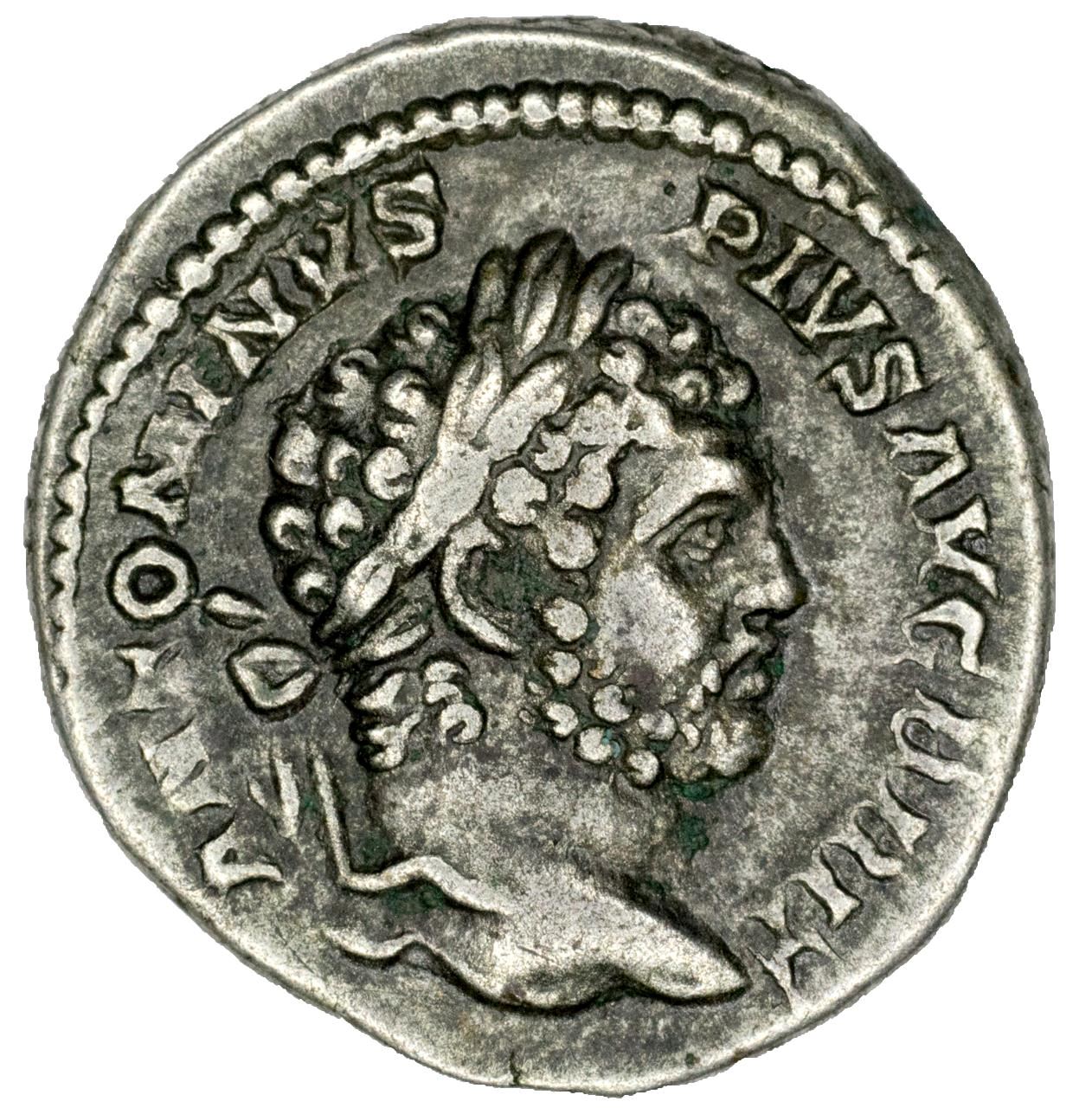

Reverse: Togate figure standing left, raising hand, between aquila and fasces. A – POST•A•F – •S•N – ALBIN across fields and in exergue.
Die Orientation: 10 H
Weight: 4.13 g
Provenance: CNG 106 (13 September 2017), lot 651. Ex Deyo Collection (Classical Numismatic Group 90, 23 May 2012), lot 1334. Stack’s (9 December 1992), lot 3177.
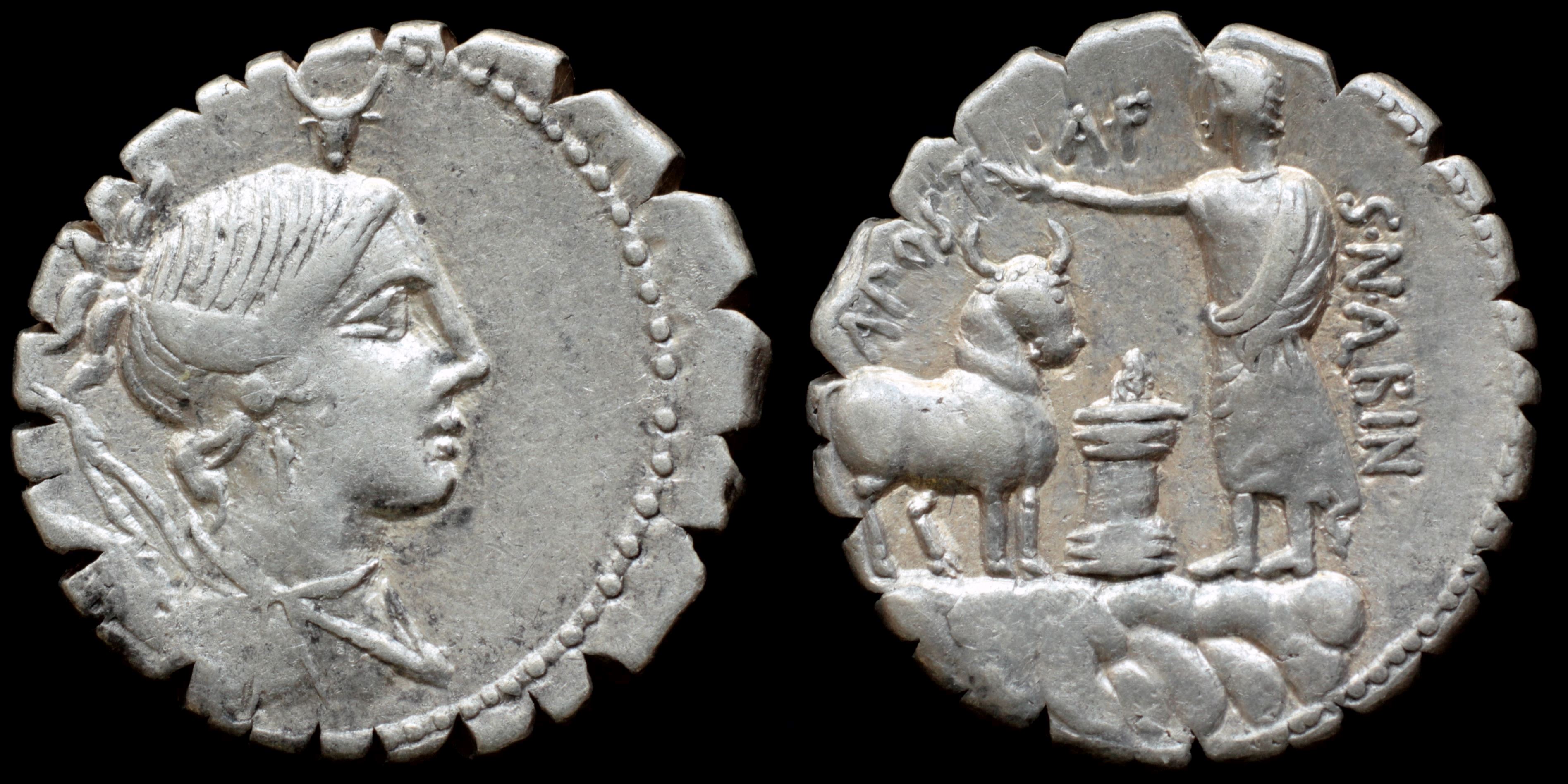
Reverse: togate figure standing left before flaming altar, holding sprinkler over sacrificial bull, all on stone platform, A·POST ·A·F S·N·(AL)BIN
Die Orientation: -
Weight: 3.7 g
According story described by Livy: in Sabina a cattle of admirable size and beauty was born. Animal was sacrificed and his skull (bucranium) was placed in temple of Diana where it commemorate this wonder. The event was considered to be a prophetic sign that town whose citizen sacrifice the animal will rule. Before battle at Regillius Lake Roman citizen (Postumius' ancestor) took the cattle and sacrificed it in the temple of Diana on Aventine.
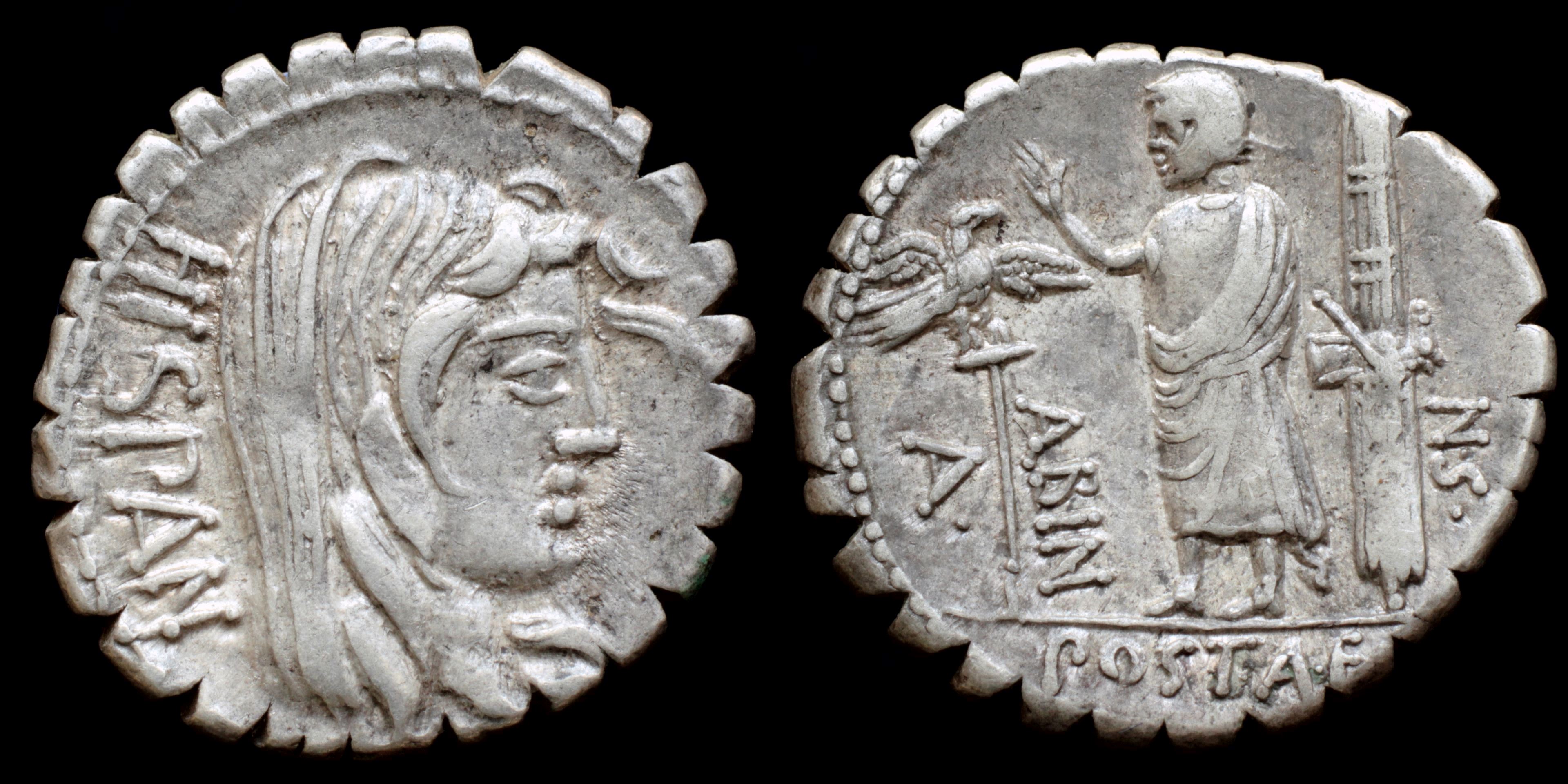
Reverse: togate figure standing left, extending hand toward legionary eagle right; fasces with axe right A· / (AL)BIN / N·S· / POST·A·F
Die Orientation: -
Weight: 3.8 g
Refers to the praetorship of L. Postumius Albinus over Spain and his successful expeditions against the Vaccaei and Lusitani, and the levying of troops for this campaign.
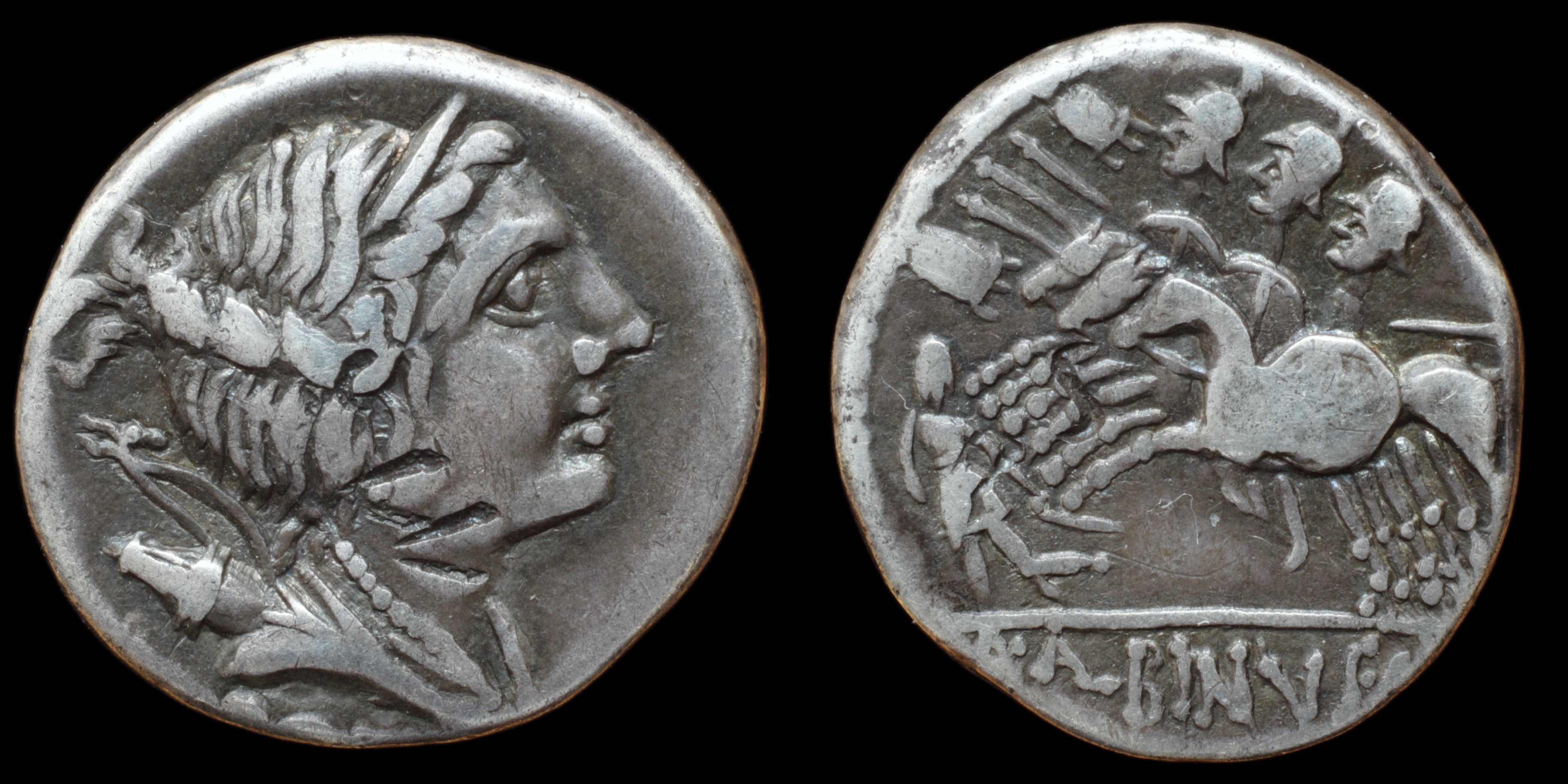
Reverse: 3 horsmen galloping left (A. Postumius Albus Regillensis); fallen enemy and two standards in front of them; A·(AL)BINVS·S·F
Die Orientation: -
Weight: 3.9 g
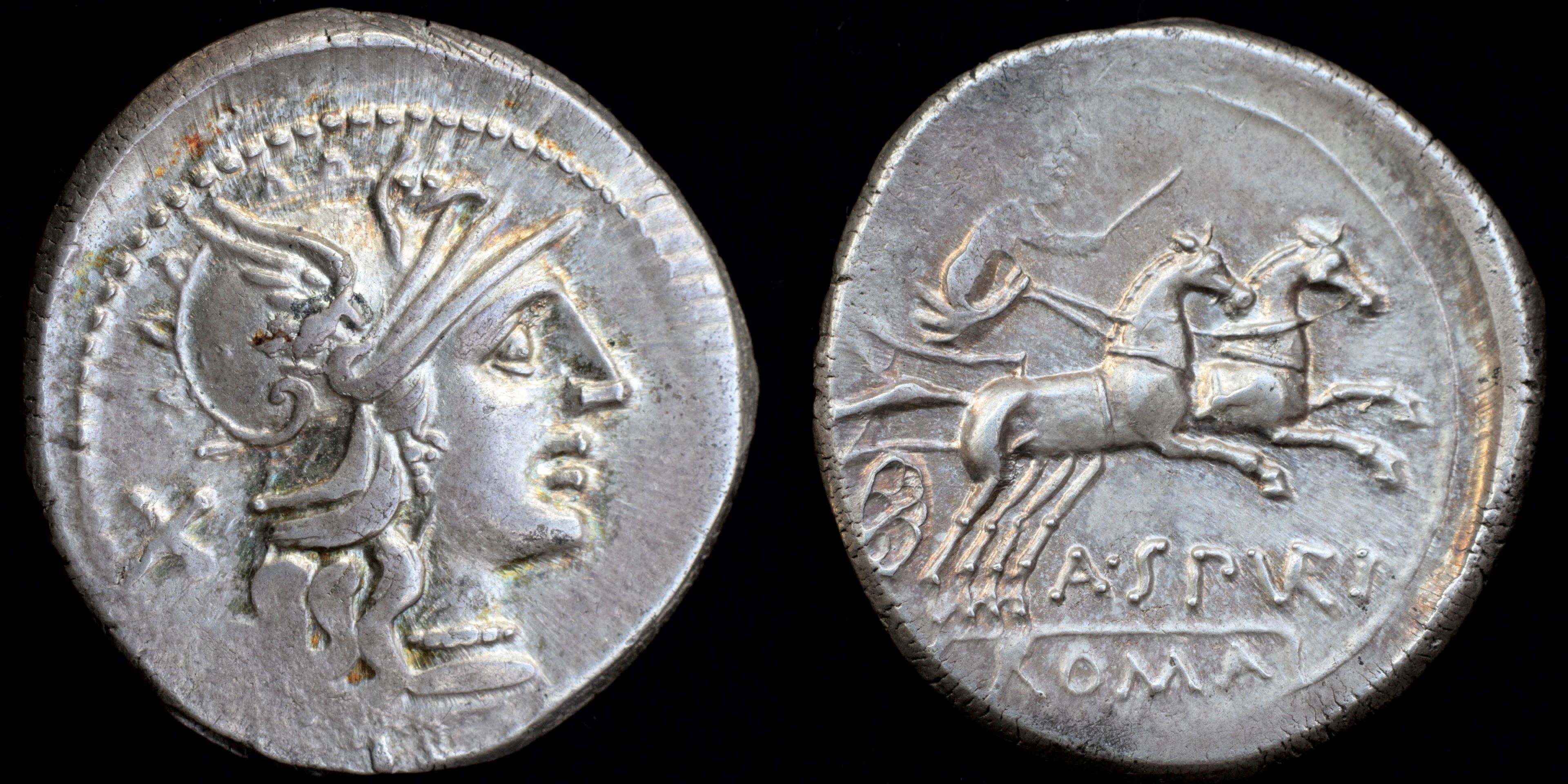
Reverse: Luna in biga right holding goad and reins A·SP(VR)I ROMA
Die Orientation: -
Weight: 3.4 g
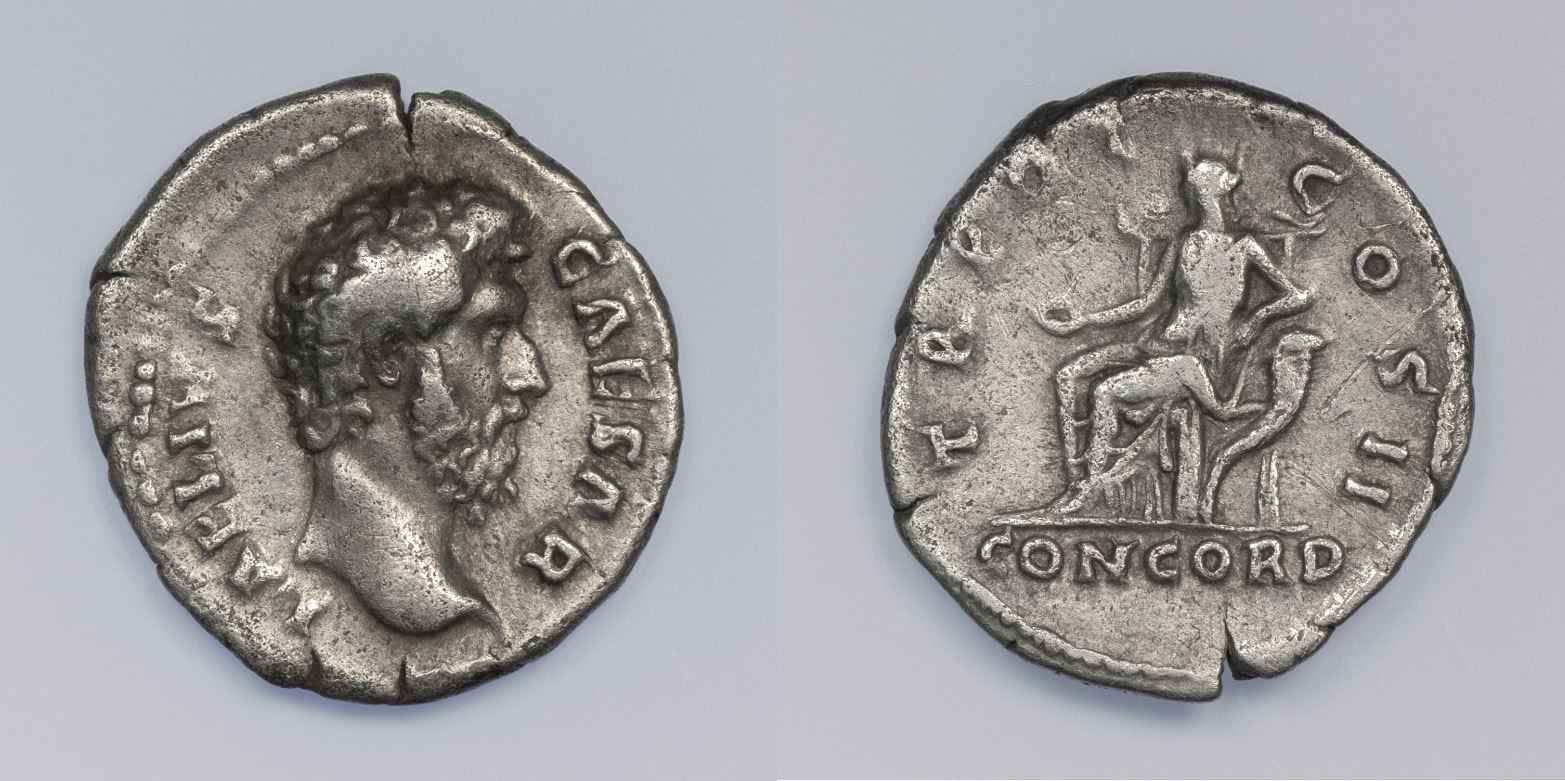
Reverse: TR POT COS II, Concordia seated facing left, holding patera and resting arm on cornucopia; CONCORD in exergue
Die Orientation: 6 H
Weight: 2.86 g
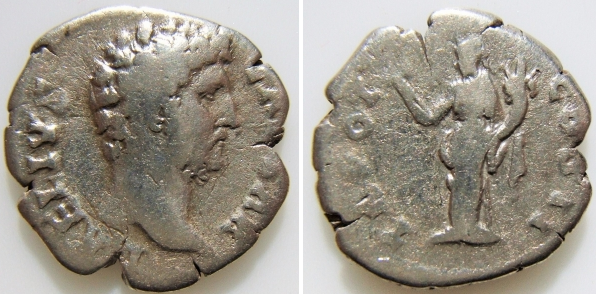
Reverse: TR POT COS II - Felicitas standing left, holding caduceus and cornucopiae.
Die Orientation: 6 H
Weight: 2.63 g
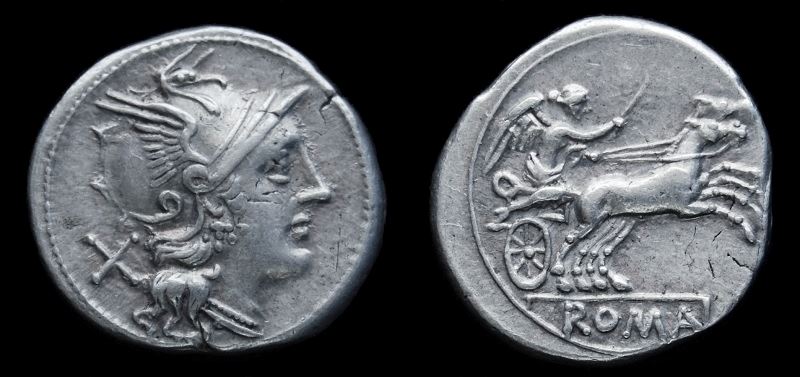
Reverse: Victory, holding goad, driving biga right; ROMA in exergue.
Die Orientation: 7 H
Weight: 3.75 g

Reverse: The Dioscuri, each holding spear, on horseback right; two stars above; ROMA in exergue.
Die Orientation: 3 H
Weight: 3.86 g
“This variety is believed to be one of the earliest issues of 53/2 based on its consistent presence (though in small numbers) in early hoards where contents included 53/2 examples. It is nearly always found with a loop under the visor, believed to be an attribute of Sicilian origin. There are no symboled siblings for this group.”
Obverse: There is usually a small loop under the visor in front of the forehead. The loop is often discretely represented as a small lump, other times it is clearly a loop.Tufts at the back of the helmet are very small and close together.
Reverse: More so than any other variety in this issue, the horses appear to be rearing up, rather than galloping forward, particularly the far horse, with forelegs farther above the exergue than on other varieties. The legend ROMA is in a trapezoidal frame. Cape style is Flag-like or Waving. There is nearly always a pointed horse's tail visible between the legs. The horses and riders appear rather small and distant, compared to other varieties.
Exceptions: There are rare examples that are clearly of this style but with horses that are galloping broadly forward rather than rearing up."
Provenance: CNG Electronic auction 408 (25 October 2017), lot 368, from the Andrew McCabe Collection. Ex Vecchi 13 (4 September 1998), lot 631.
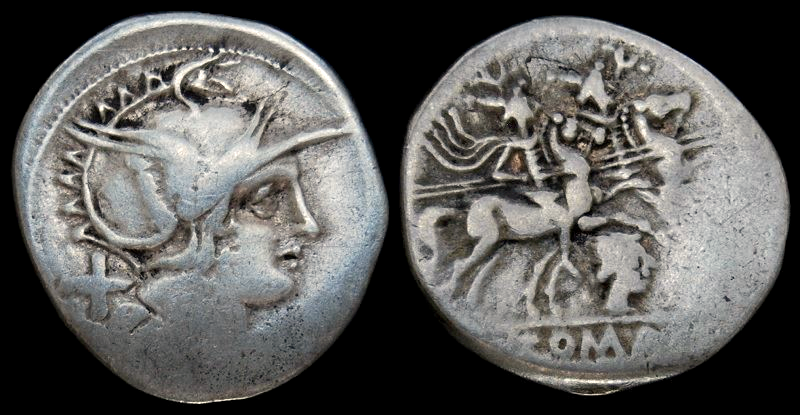
Reverse: The Dioscuri, each holding spear, on horseback right; below horses, female head right; ROMA in exergue.
Die Orientation: -
Weight: 3.76 g
Provenance: Naville Numismatics, Auction 42 (22 July 2018), lot 392.
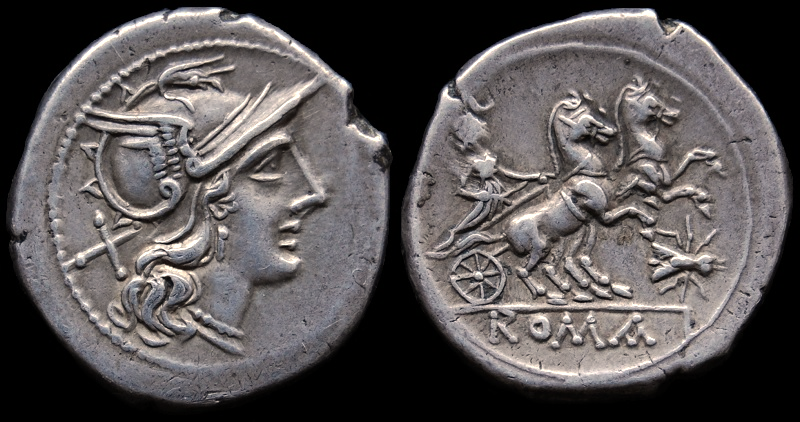
Reverse: Luna in prancing biga right; below, fly and ROMA in exergue.
Die Orientation: -
Weight: 3.85 g

Reverse: The Dioscuri, each holding spear, on horseback right; two stars above; ROMA in exergue.
Die Orientation: -
Weight: 4.65 g

Reverse: The Dioscuri, each holding spear, on horseback right; two stars above; ROMA in exergue.
Die Orientation: -
Weight: 3.42 g

Reverse: The Dioscuri, each holding spear, on horseback right; two stars above; ROMA in exergue.
Die Orientation: -
Weight: 4.36 g
Sibling to the "Spearhead series", RRC 88/2.
.png)
Reverse: The Dioscuri, each holding spear, on horseback right; two stars above; ROMA in exergue.
Die Orientation: 9 H
Weight: 3.98 g
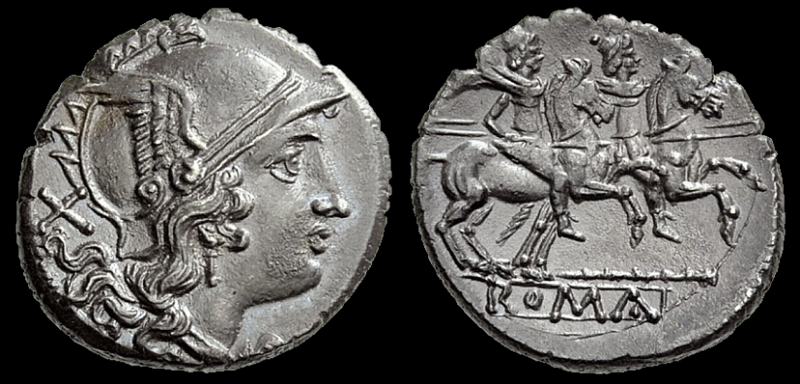
Reverse: The Dioscuri, each holding spear, on horseback right; two stars above; staff below horses; ROMA in exergue.
Die Orientation: -
Weight: 3.28 g
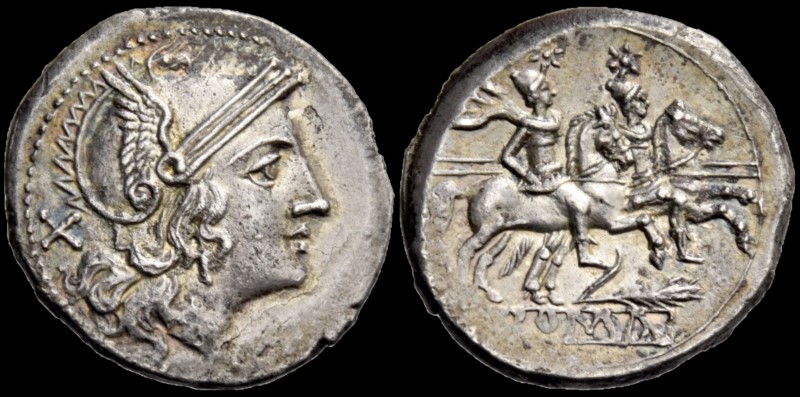
Reverse: The Dioscuri, each holding spear, on horseback right; two stars above; corn ear below horses; ROMA in exergue.
Die Orientation: -
Weight: 4.1 g
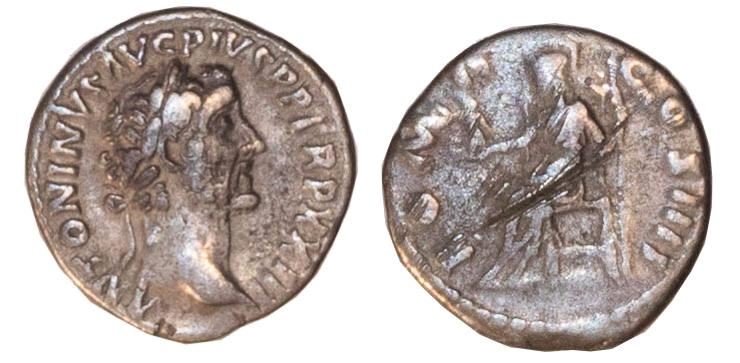
Reverse: ROMA COS IIII, Roma, helmeted, draped, seated left, on throne, holding Victory and vertical spear
Die Orientation: 0 H
Weight: 2.9 g
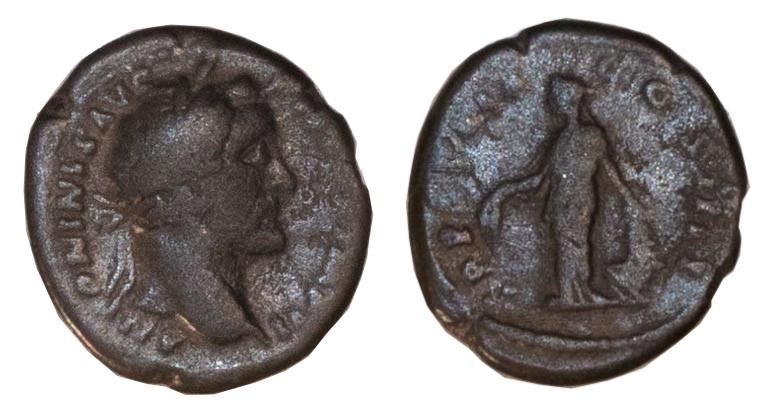
Reverse: TR POT [XIX?] COS IIII, Annona standing left, holding grain ears and resting hand on modius set on prow to right
Die Orientation: 0 H
Weight: 2.3 g
(32).jpg)
Reverse: FELIC SAEC COS IIII, Felicitas standing left, holding caduceus and resting on column
Die Orientation: 6 H
Weight: 3.09 g
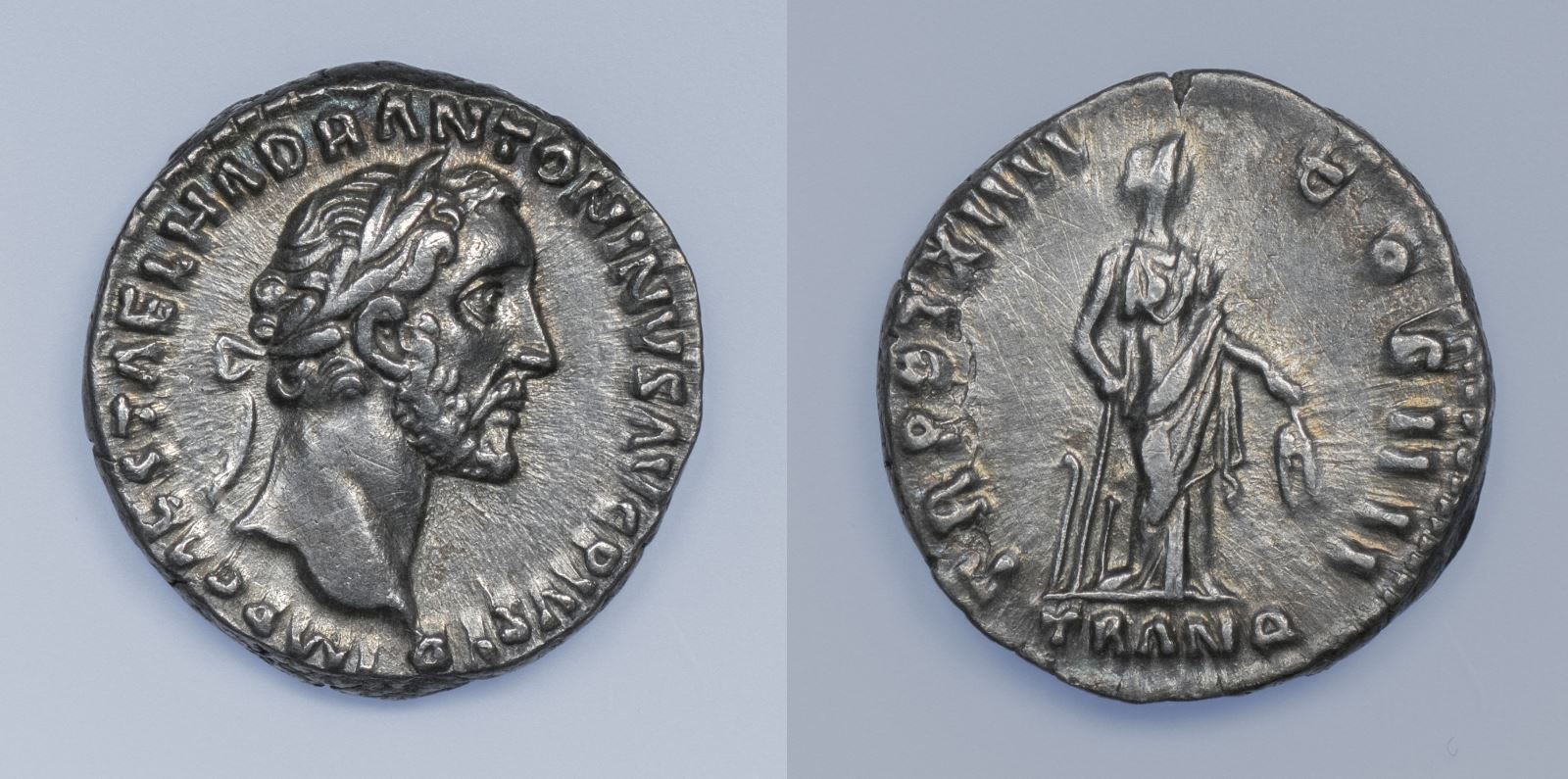
Reverse: TR POT XIIII COS IIII, Tranquilitas standing facing right, holding ship's rudder and corn ears; TRANQ in exergue
Die Orientation: 6 H
Weight: 3.65 g
Obverse: Commander-in-Chief Caesar Titus Aelius Hadrianus Antoninus Augustus the Pious, Father of the Fatherland
Reverse: Holding the power of the Tribune of the Plebs for the 14th time, Consul for the 4th time, TRANQ is just short for Tranquilitas
.jpg)
Reverse: CONSECRATIO / Eagle standing right, head left, on altar
Die Orientation: 0 H
Weight: 2.8 g
Posthumous. Struck under Marcus Aurelius
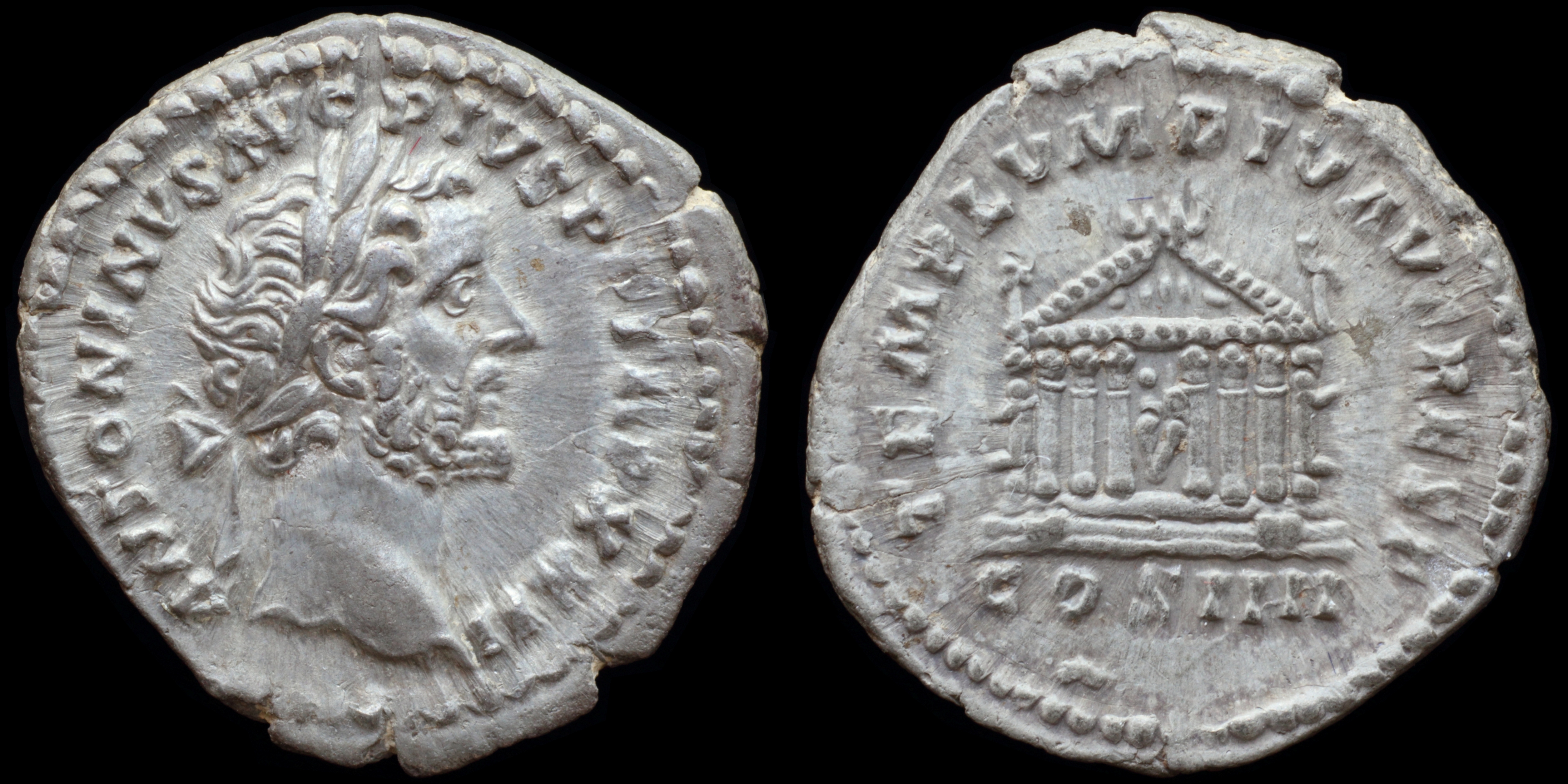
Reverse: Temple of Augustus and Livia; TEMPLVM DIV AVG REST / COS IIII
Die Orientation: -
Weight: 2.68 g
This issue comemorates reconstruction of the temple of Augustus and Livia by Antoninus.
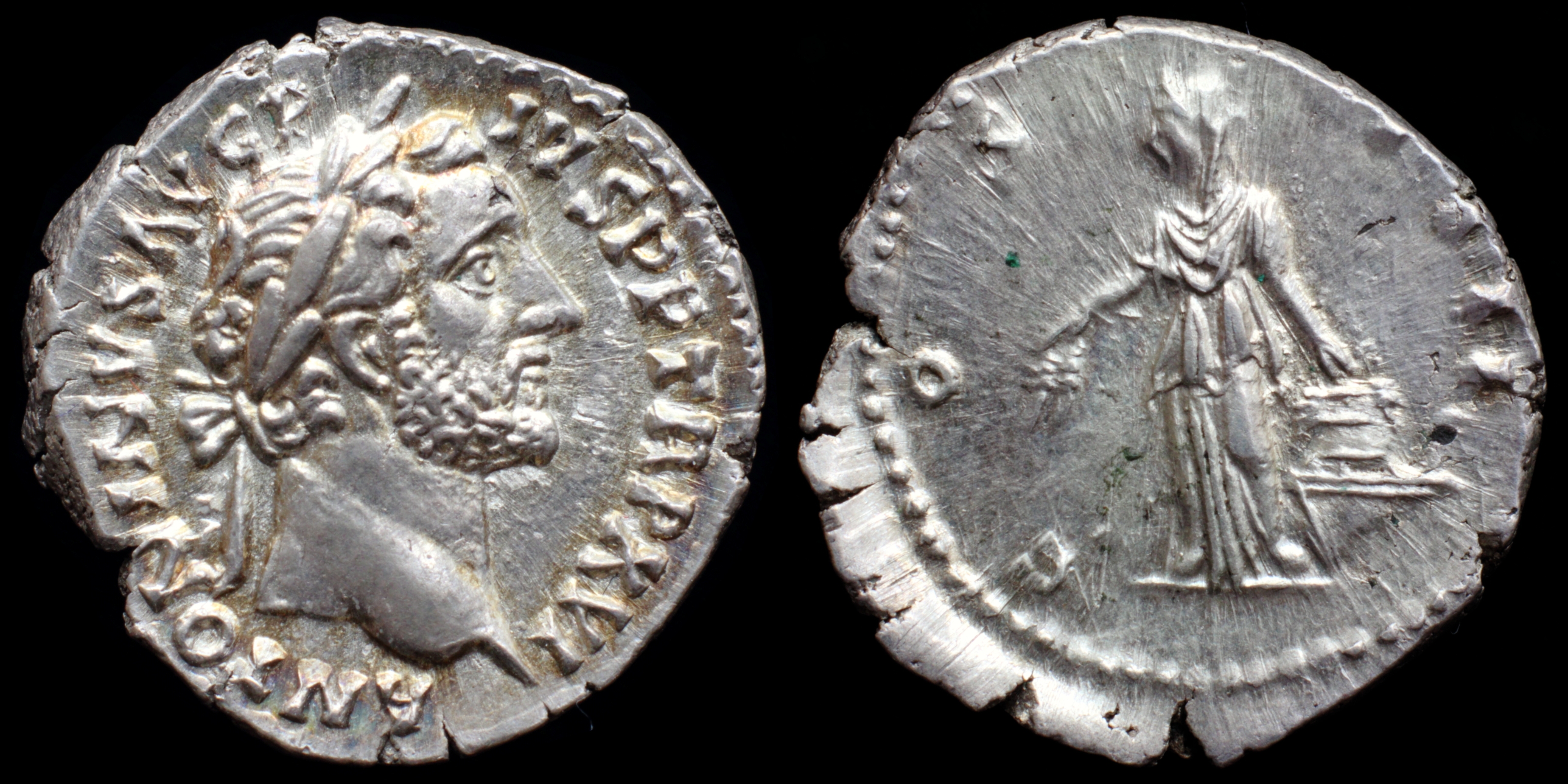
Reverse: Annona standing left, hand on modius, holding grain ears, modius situated on prow; COS__IIII
Die Orientation: -
Weight: 3.4 g
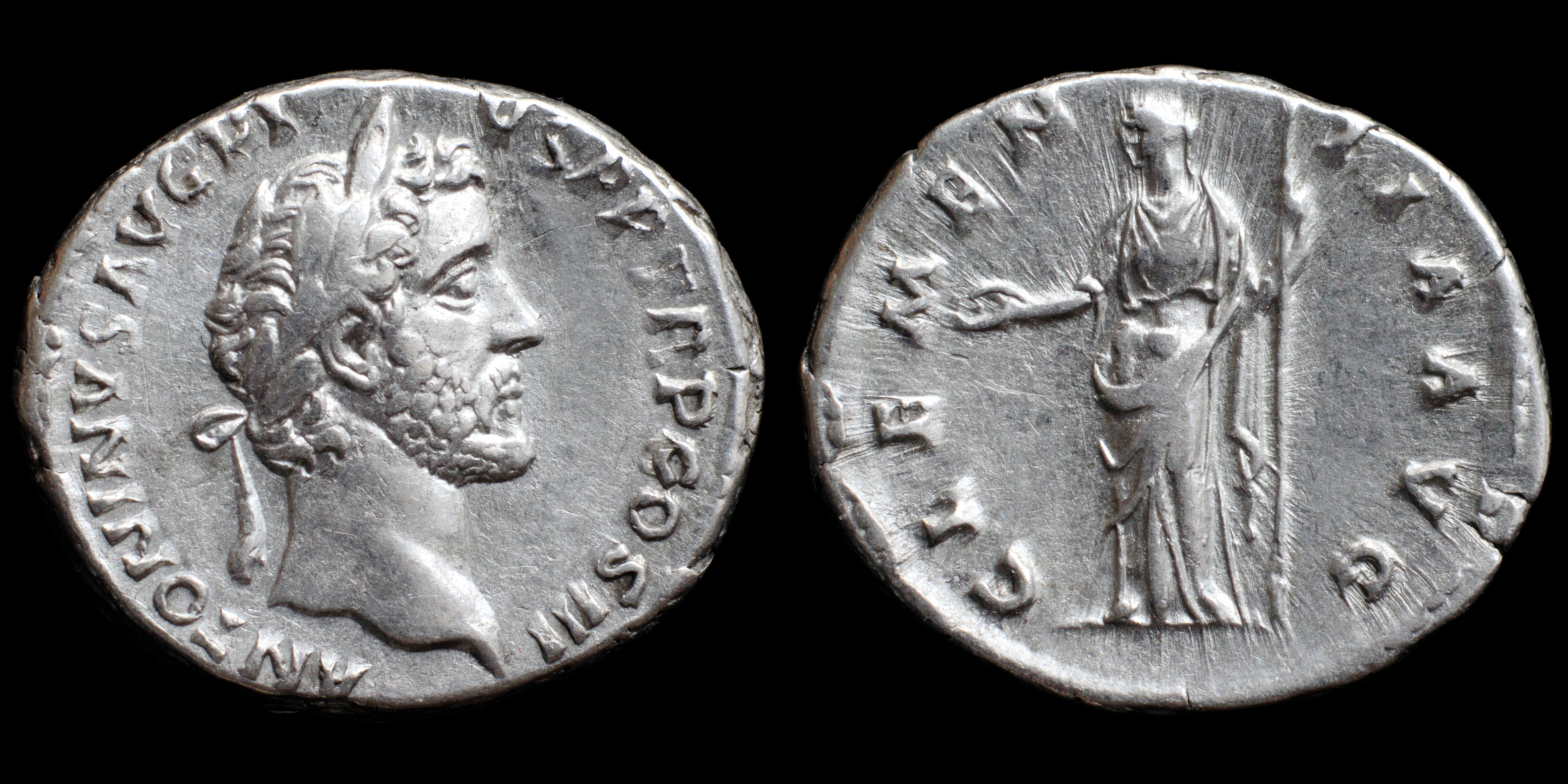
Reverse: Clementia standing left, holding patera and scepter; CLEMEN_TIA AVG
Die Orientation: -
Weight: 3.6 g
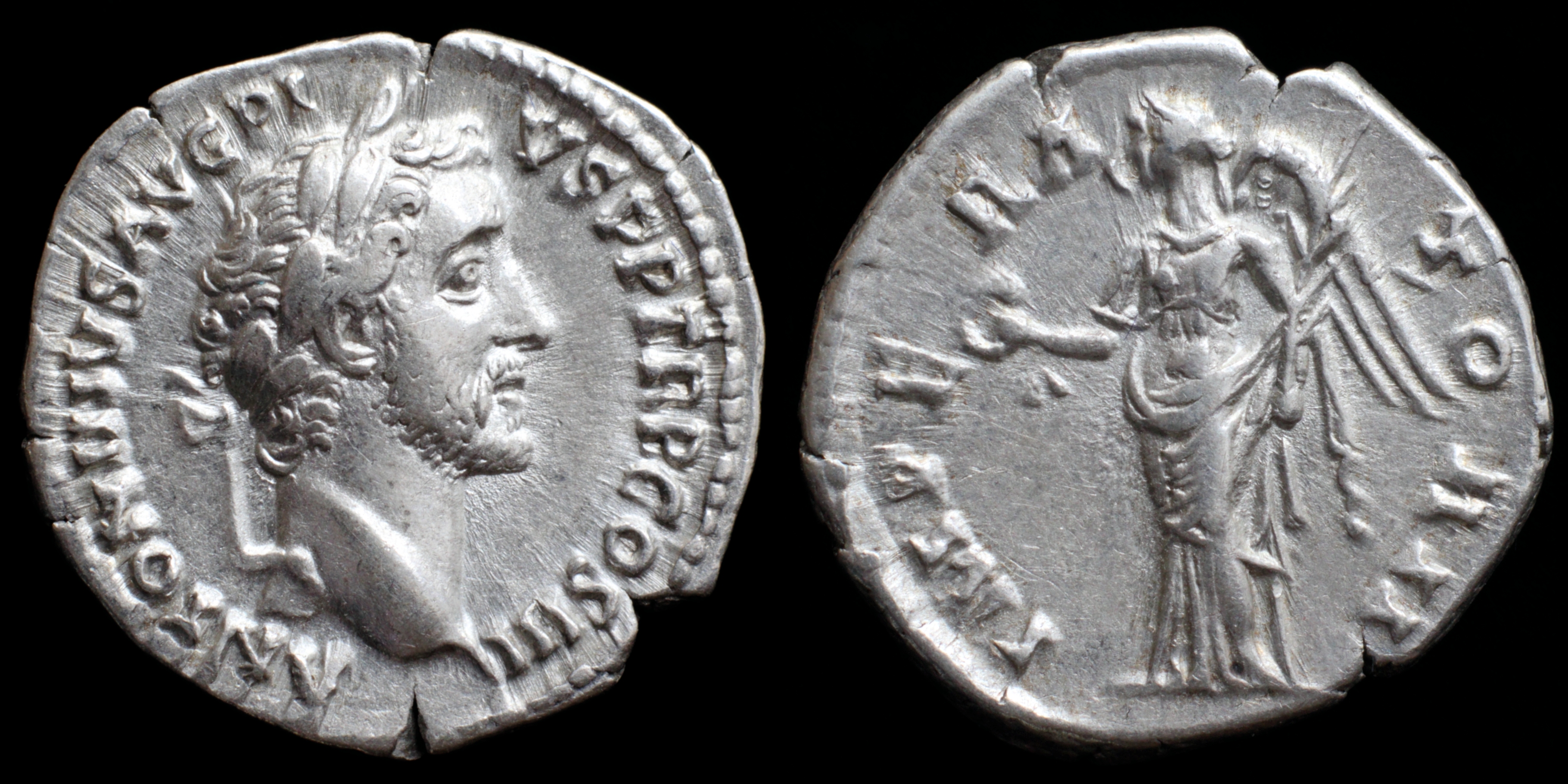
Reverse: Victory standing left, holding wreath and palm; IMPE_RA_TO_R II
Die Orientation: -
Weight: 3.2 g
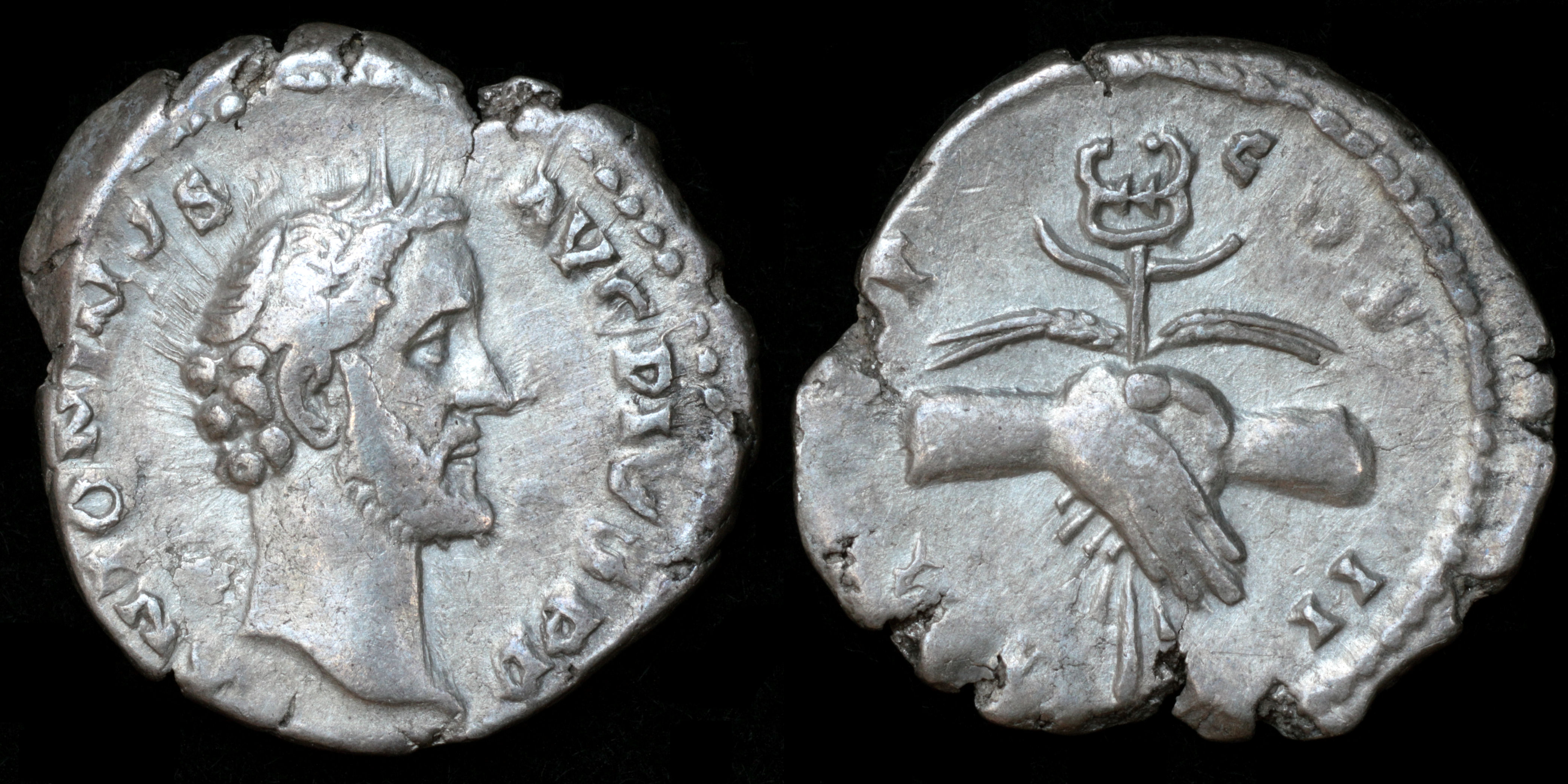
Reverse: hands in handshake grasping winged caduceus and grain ears; TR__P__COS__II
Die Orientation: -
Weight: 3.46 g
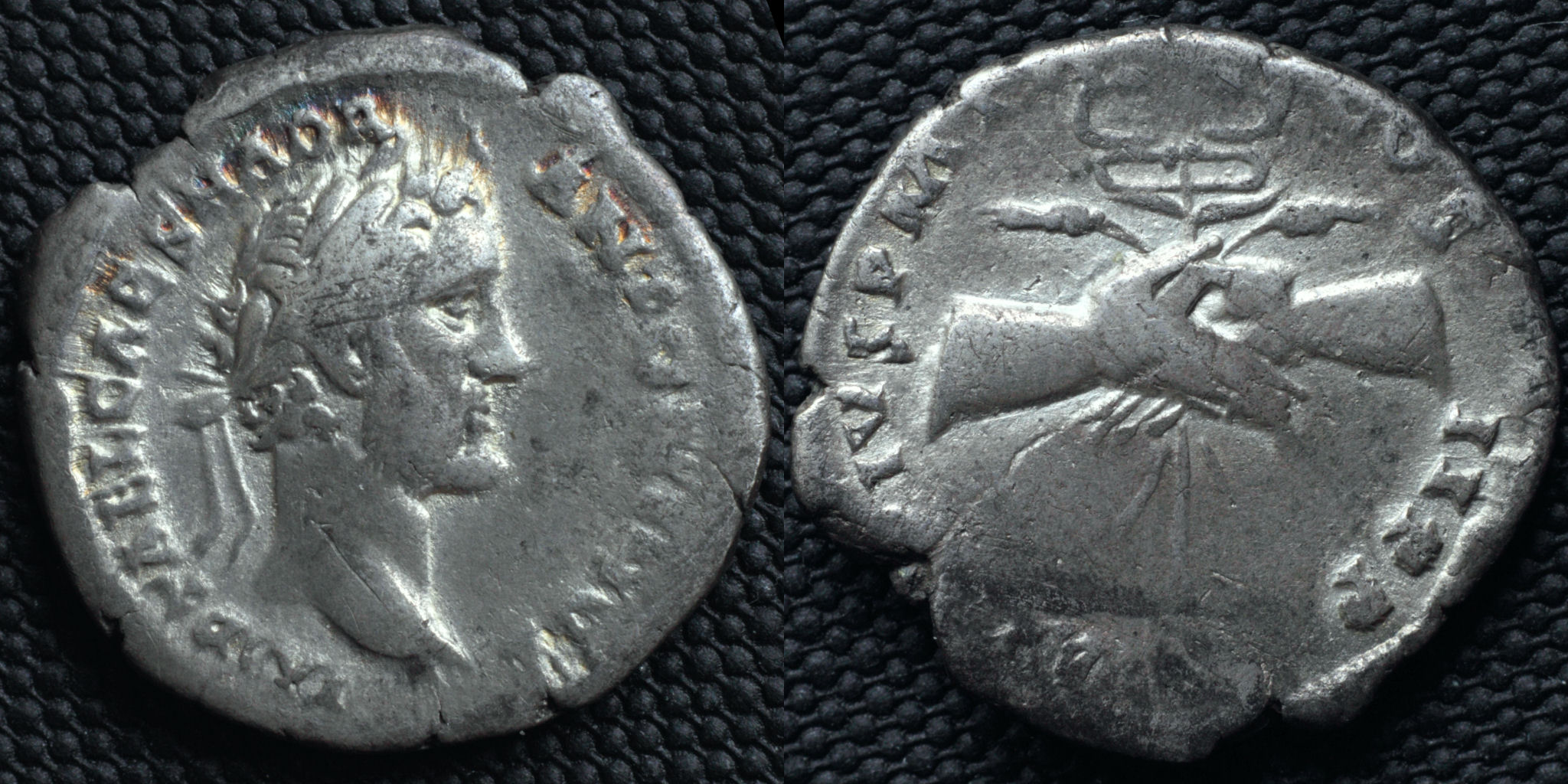
Reverse: hands, in handshake, grasping winged caduceus and grain ears; AVG PIVS P M TR P__COS__II P P
Die Orientation: -
Weight: 2.83 g
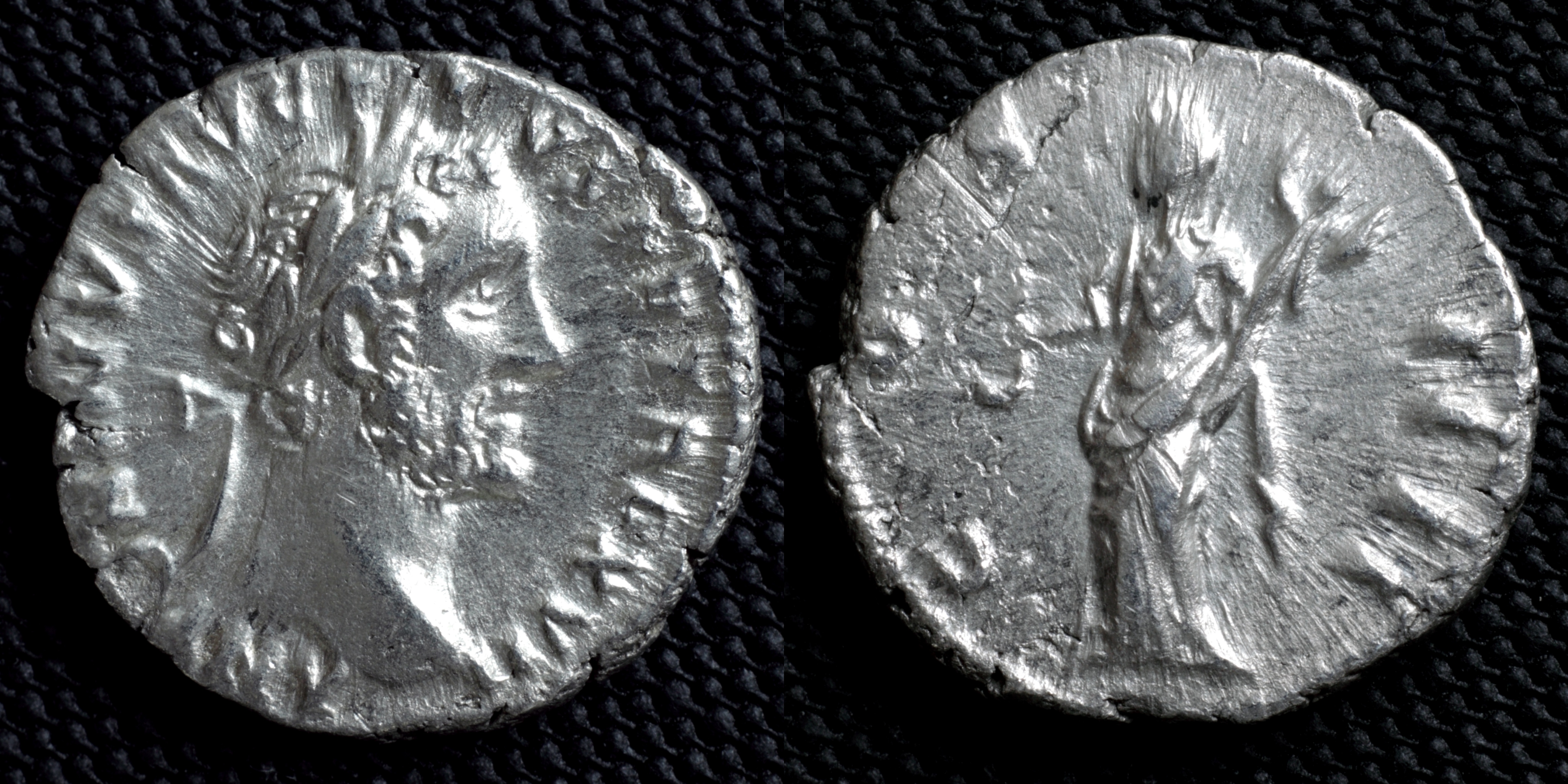
Reverse: Vesta standing left, holding simpulum and Palladium; COS__IIII
Die Orientation: -
Weight: 3.11 g
.jpg)
Reverse: COS IIII / Fortuna, draped, standing right, holding rudder, vertical on globe, in right hand and cornucopiae, with tip turned from body, in left
Die Orientation: -
Weight: 2.95 g
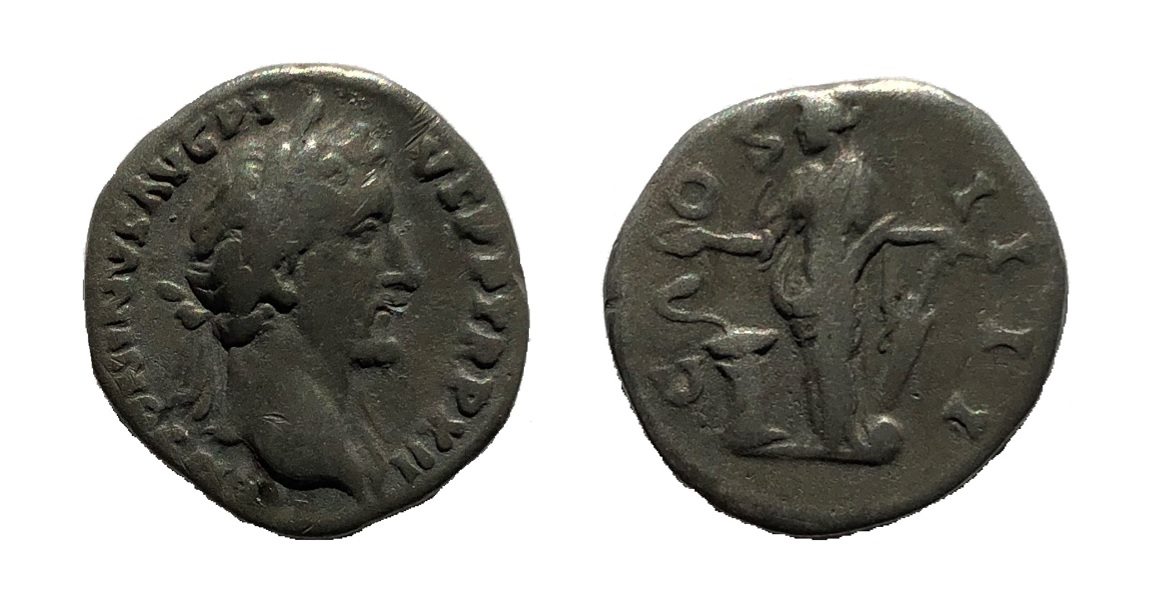
Reverse: Salus standing front, head to the left, feeding serpent out of patera with right hand, holding rudder atop globe with left hand, serpent rising from altar, text (COS•IIII)
Die Orientation: -
Weight: -
(1).jpg)
Reverse: CONSECRATIO, eagle standing right, head left, upon altar
Die Orientation: 12 H
Weight: 3.05 g
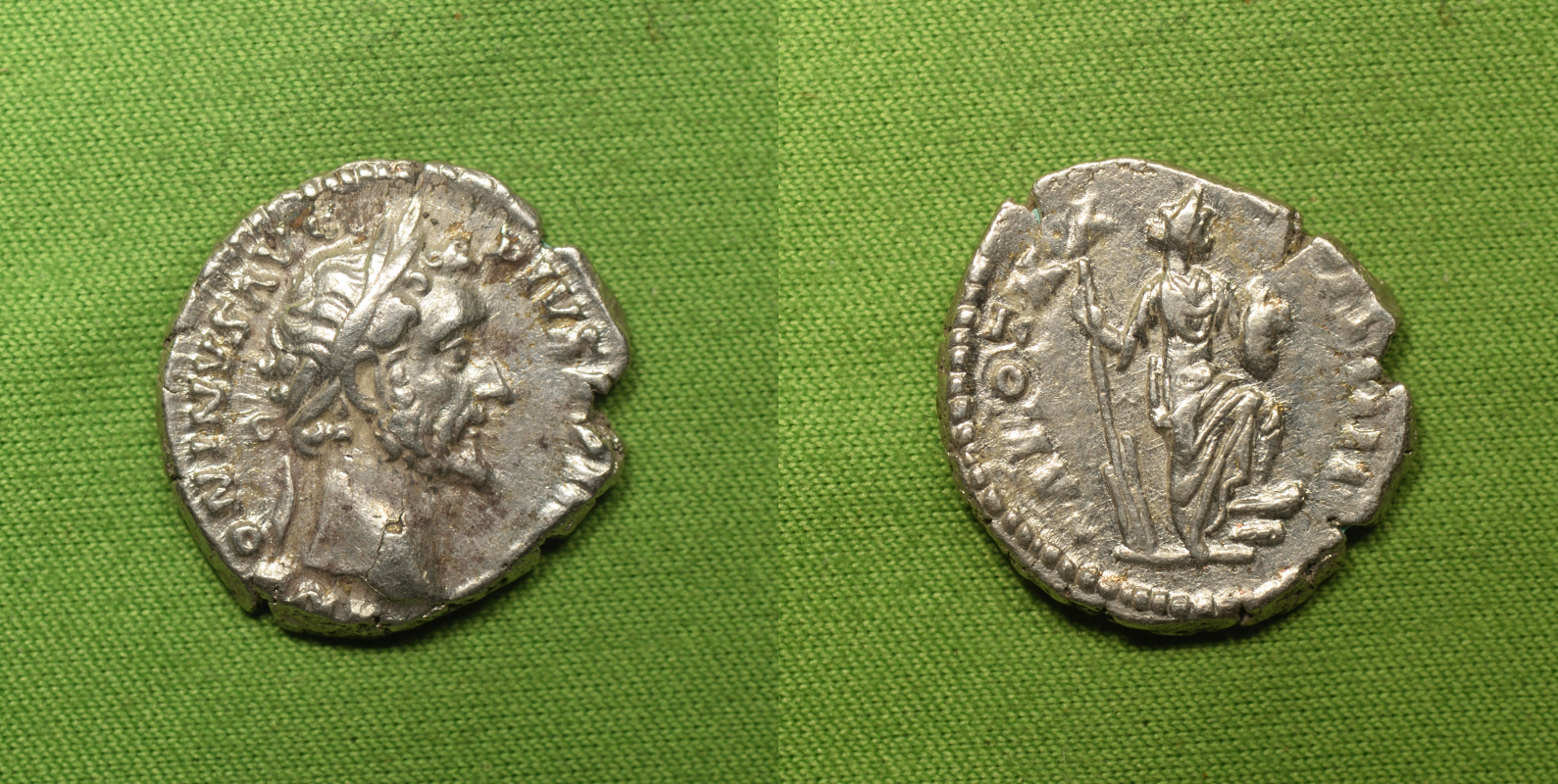
Reverse: TR POT XX COS IIII - Annona, draped, standing right, left foot on prow, holding rudder in right hand and modius in left
Die Orientation: 6 H
Weight: 2.74 g
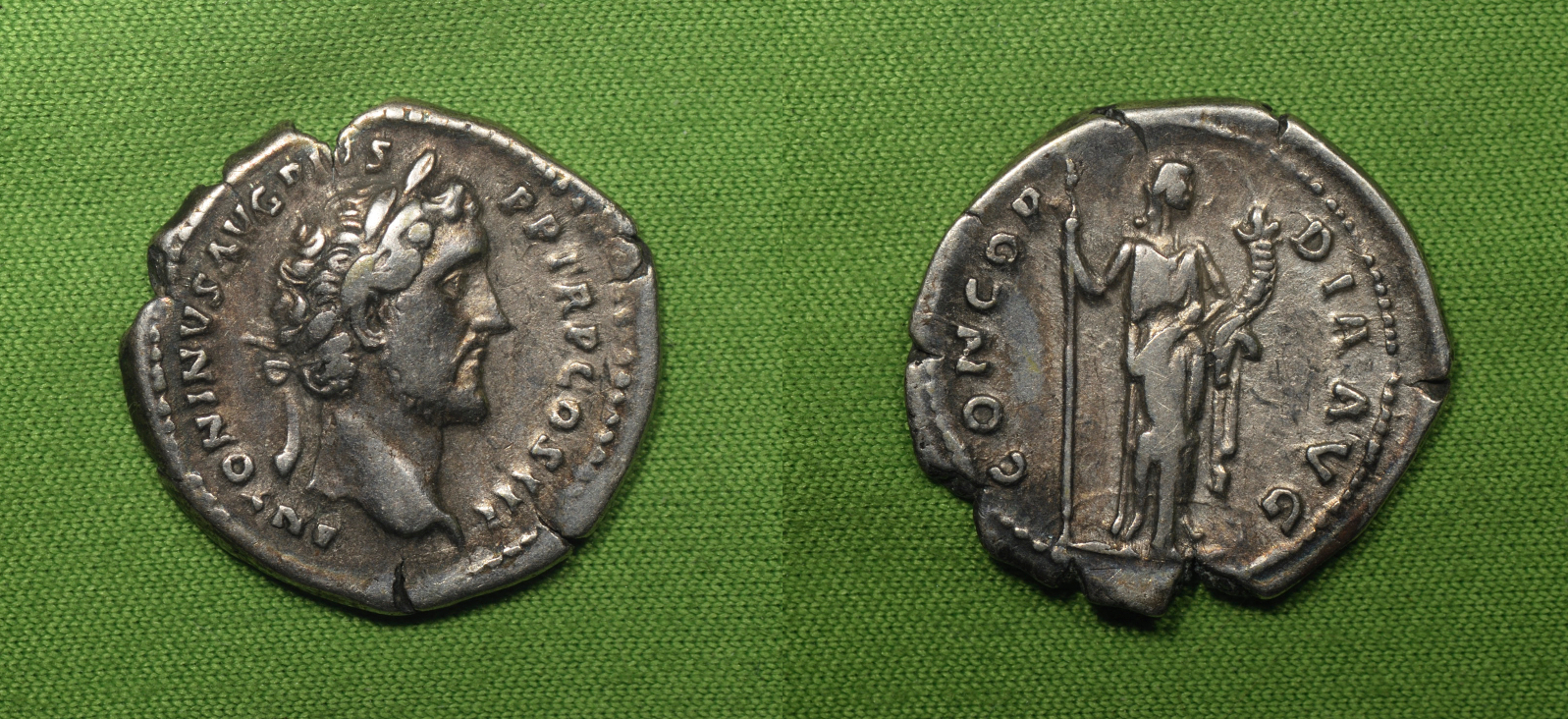
Reverse: CONCORDIA AVG, Concordia, draped, standing right, holding scepter in right hand and cornucopia in left
Die Orientation: 7 H
Weight: 3.29 g
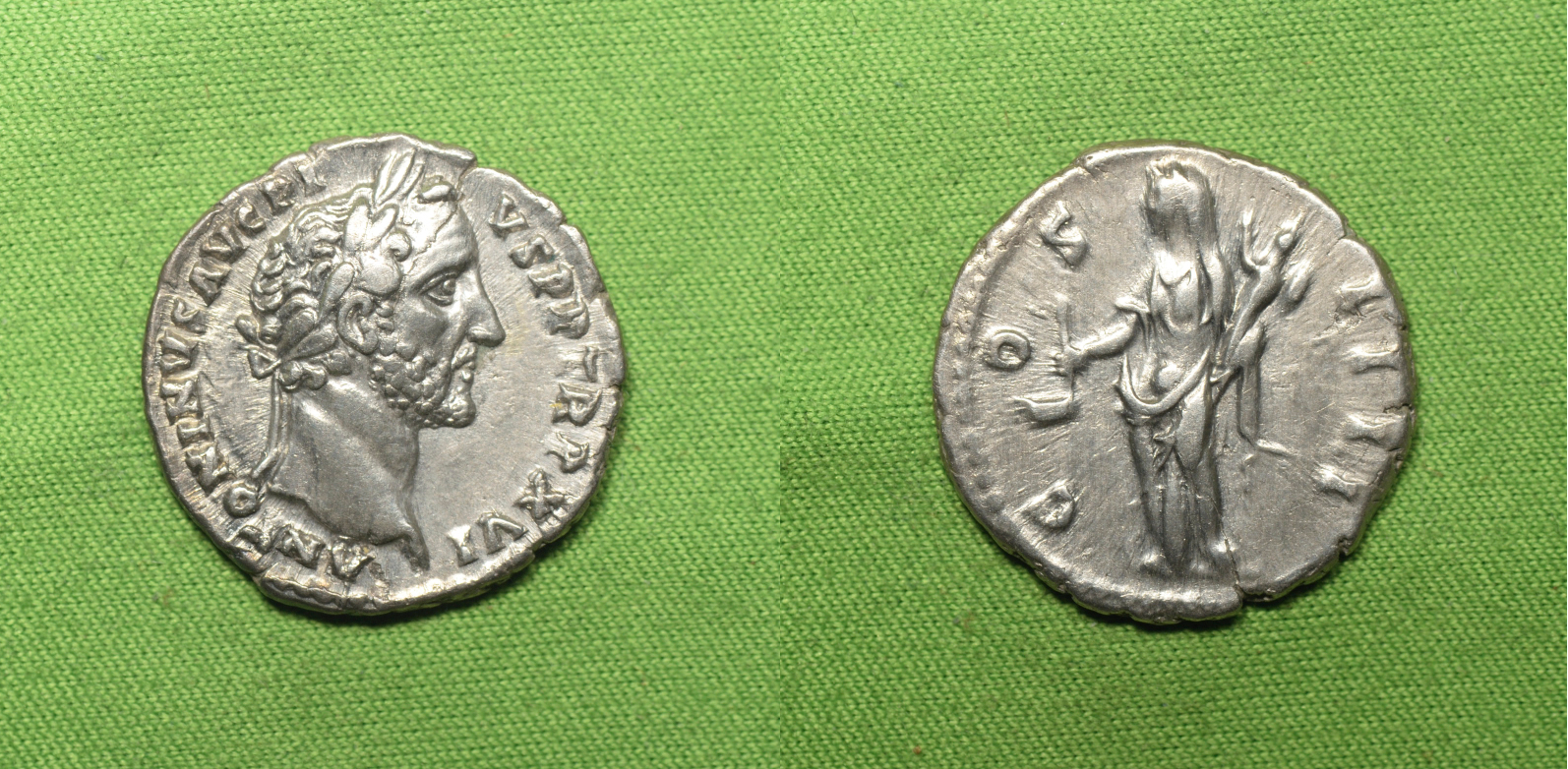
Reverse: COS IIII, Vesta, veiled, draped, standing facing, head left, holding simpulum in extended right hand and palladium in left
Die Orientation: 6 H
Weight: 3.18 g
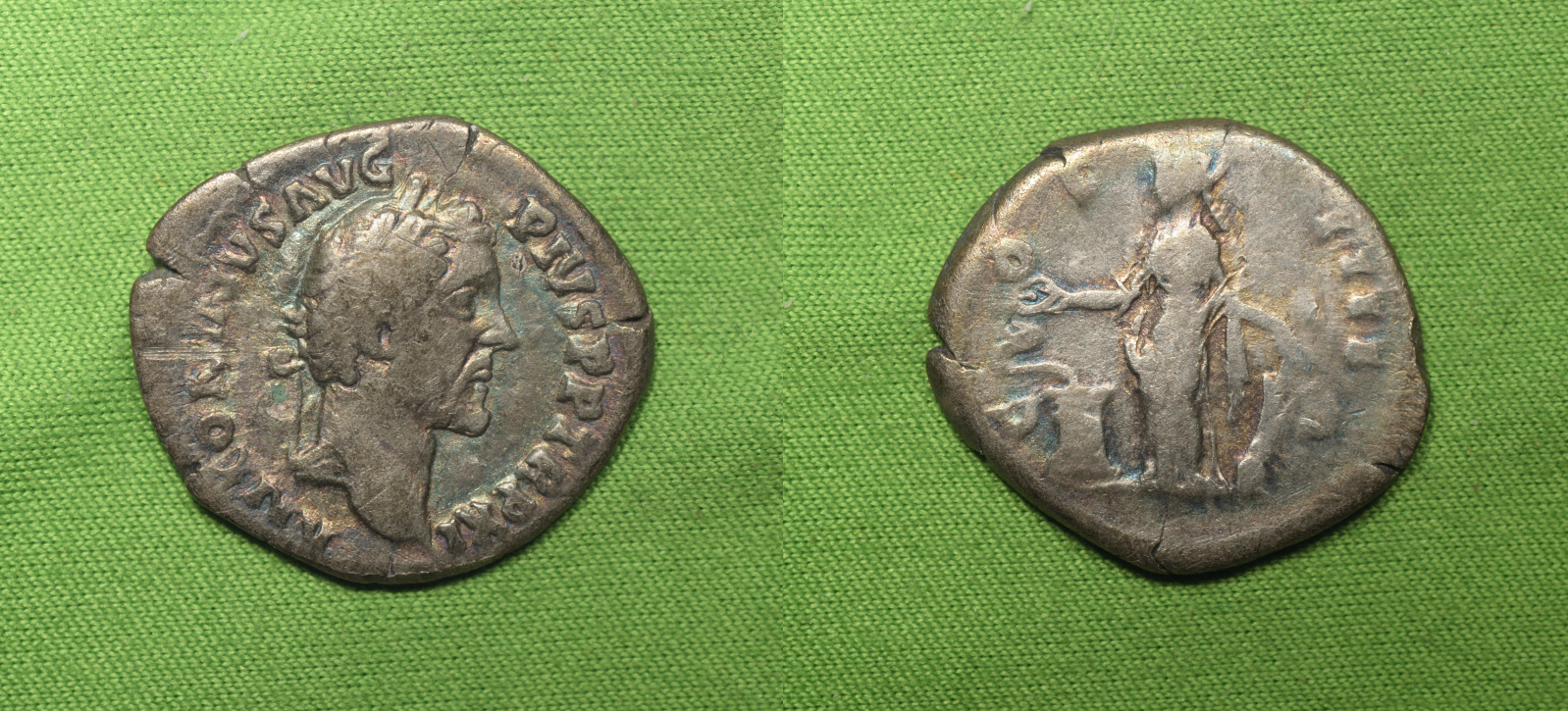
Reverse: COS IIII, Salus, draped, standing left, holding patera in right hand feeding snake coiled around altar; she holds rudder set on globe in left hand
Die Orientation: 6 H
Weight: 3.09 g
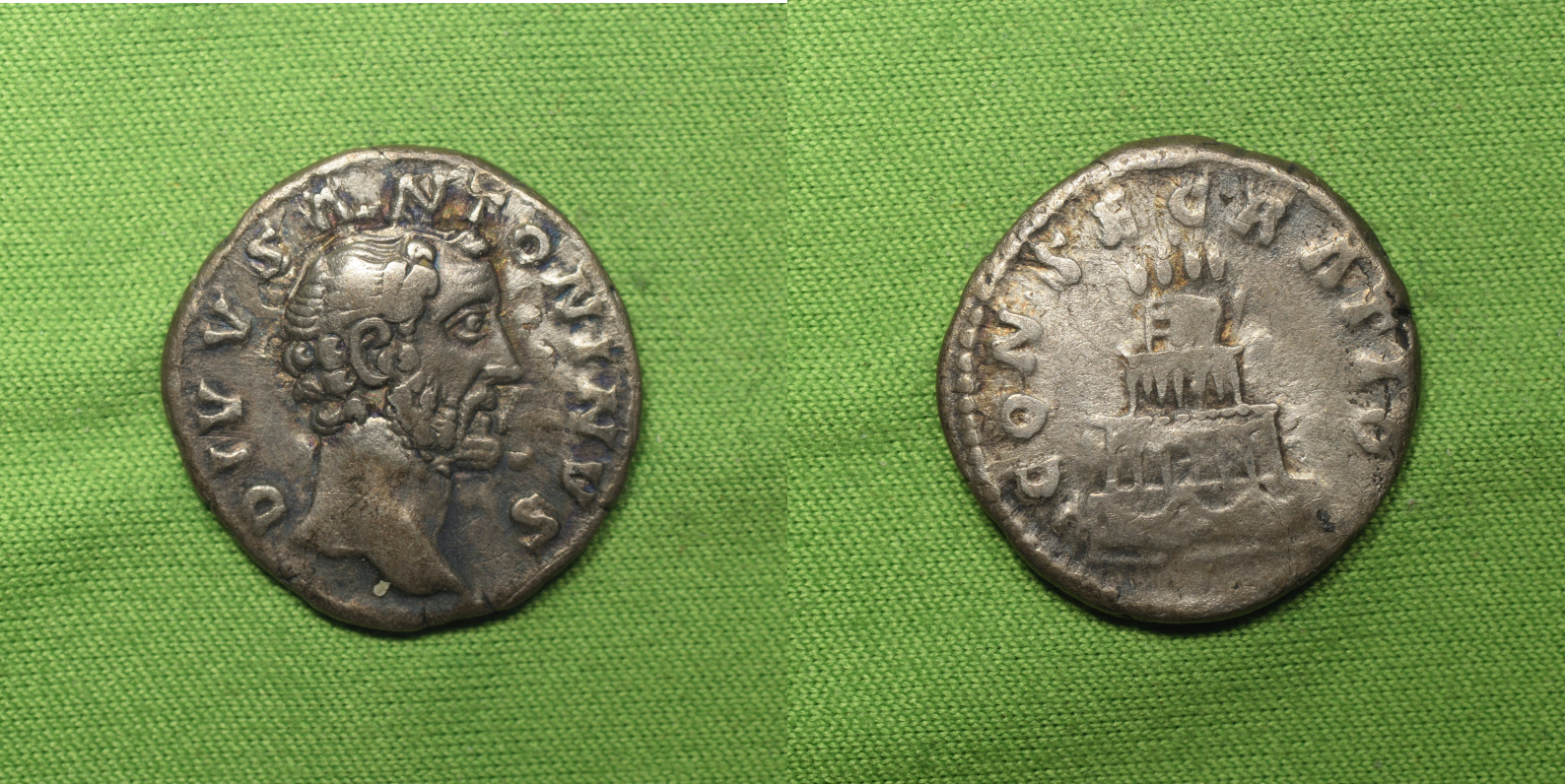
Reverse: CONSECRATIO, Pyre of four tiers, decorated with hangings and garlands, surmounted by quadriga
Die Orientation: 6 H
Weight: 3.17 g
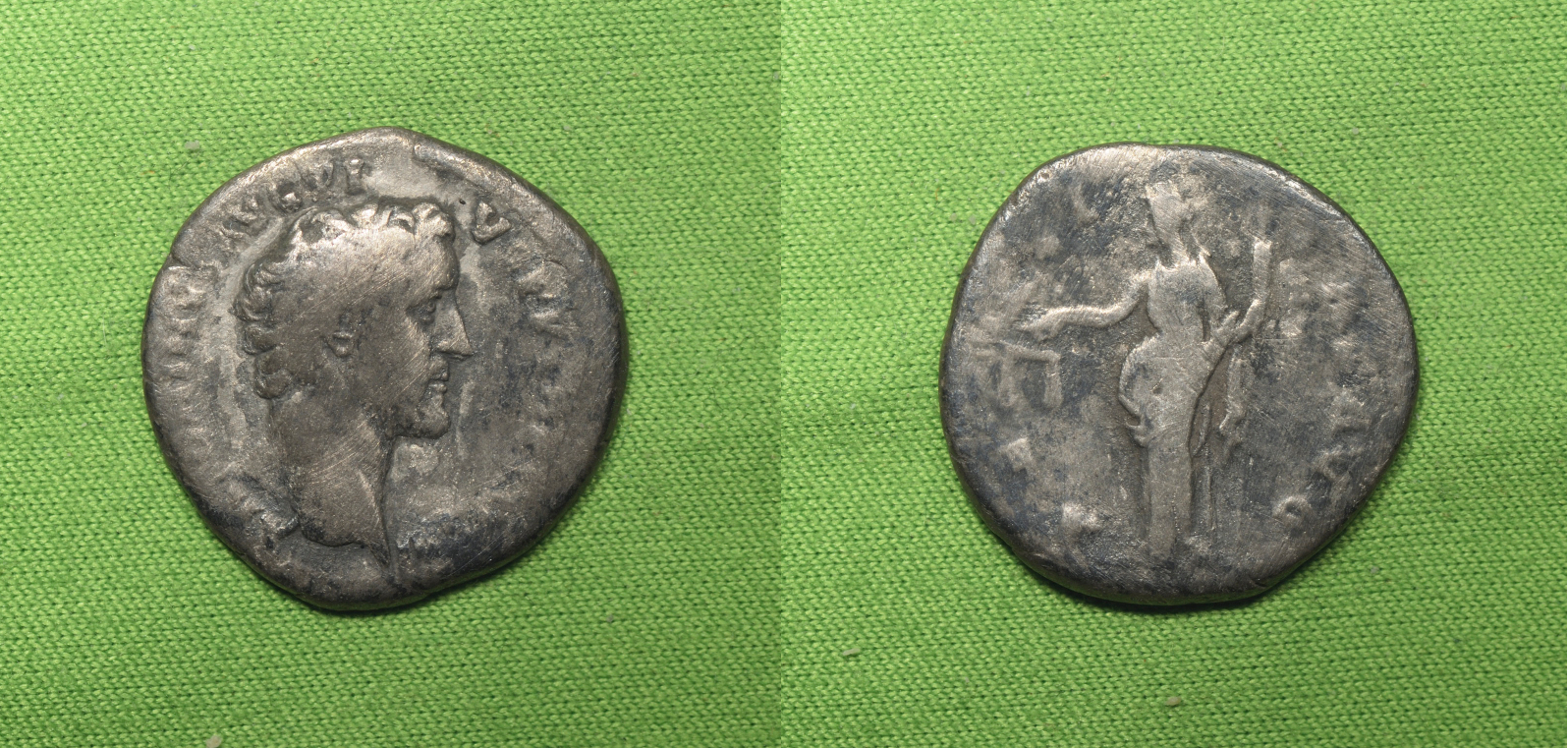
Reverse: AEQVITAS AVG, Aequitas, draped, standing left, holding scales in lowered right hand and vertical scepter in left
Die Orientation: 6 H
Weight: 2.64 g
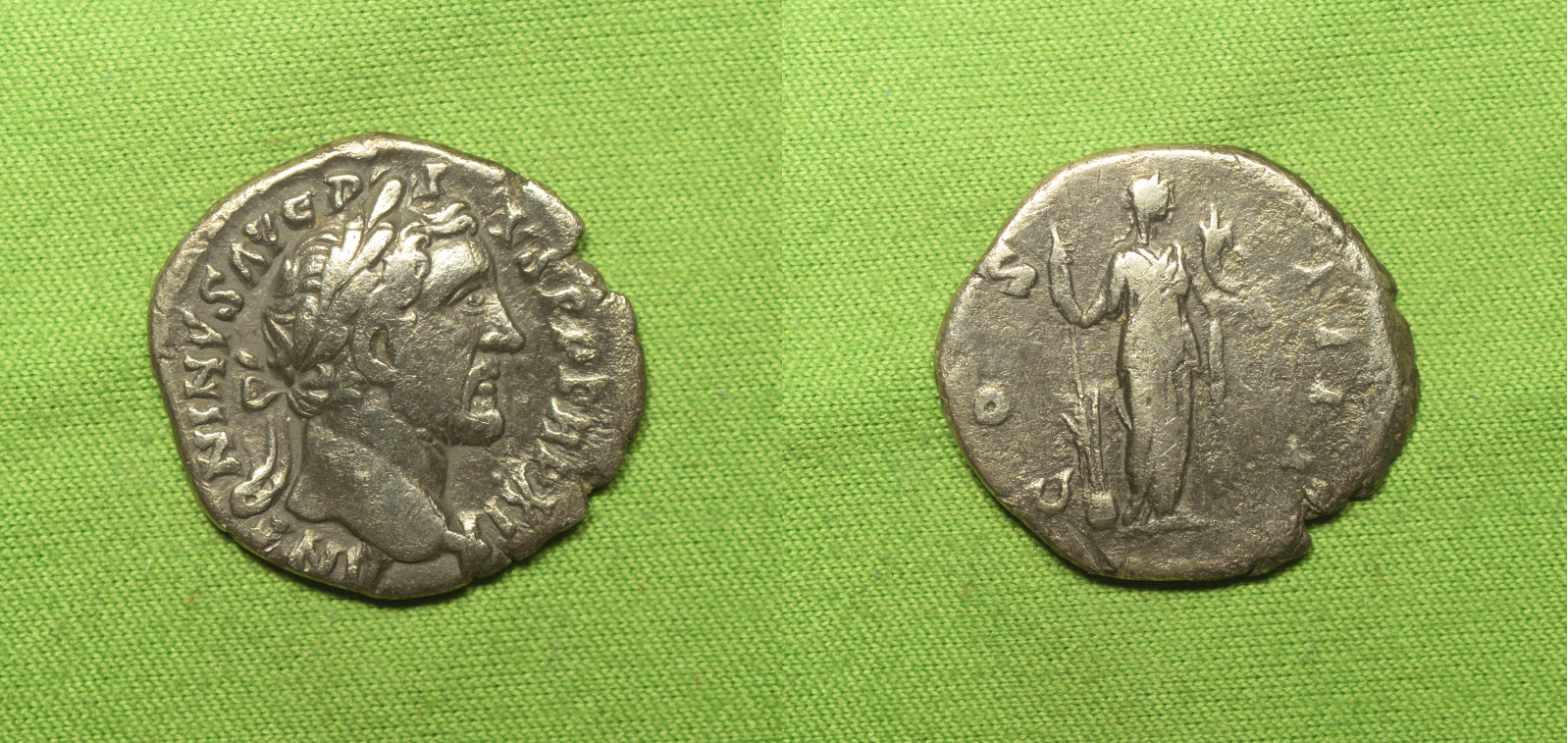
Reverse: COS IIII, Fortuna, draped, standing facing, head right, holding rudder on globe in right hand and cornucopia in left
Die Orientation: 5 H
Weight: 2.68 g
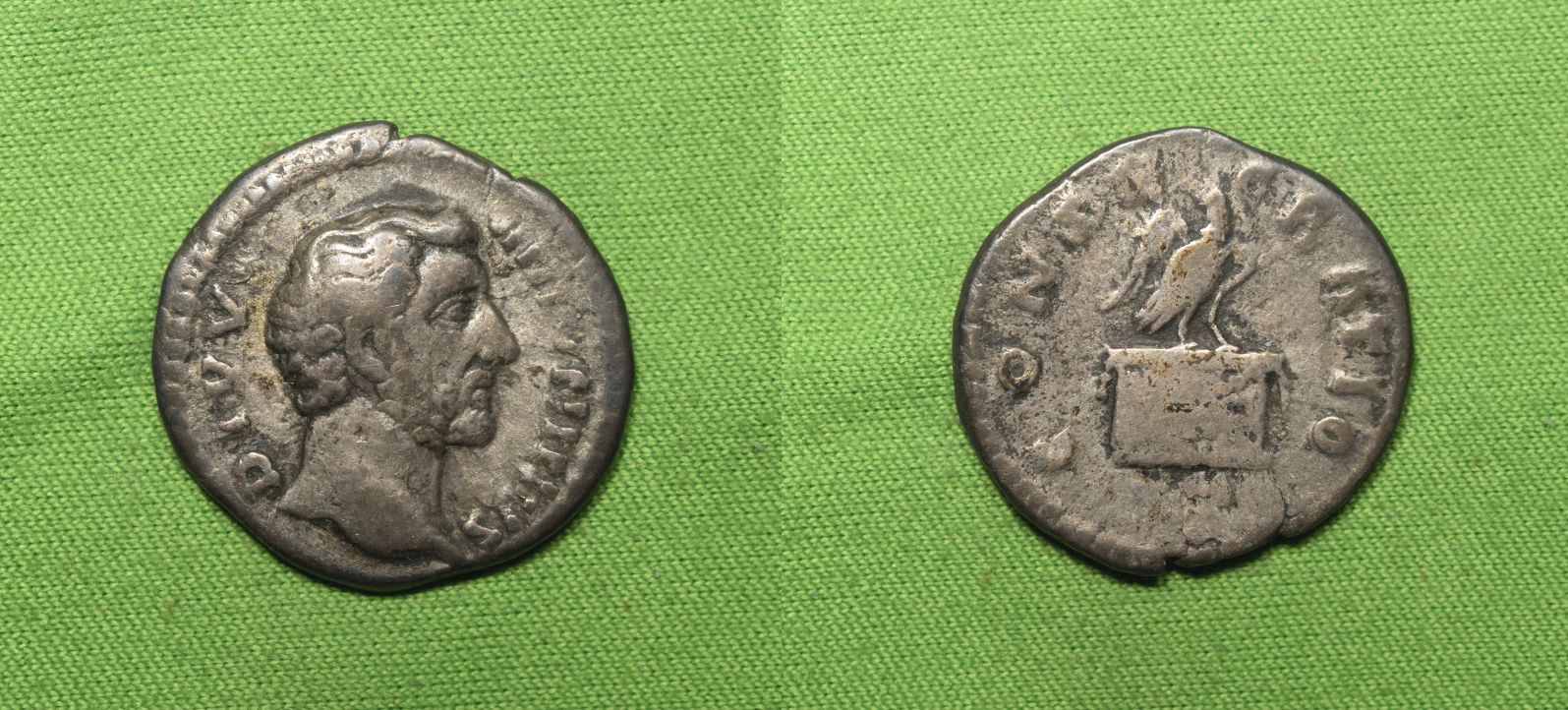
Reverse: CONSECRATIO, Eagle standing facing right, head left, on altar, decorated with garlands
Die Orientation: 6 H
Weight: 3.02 g
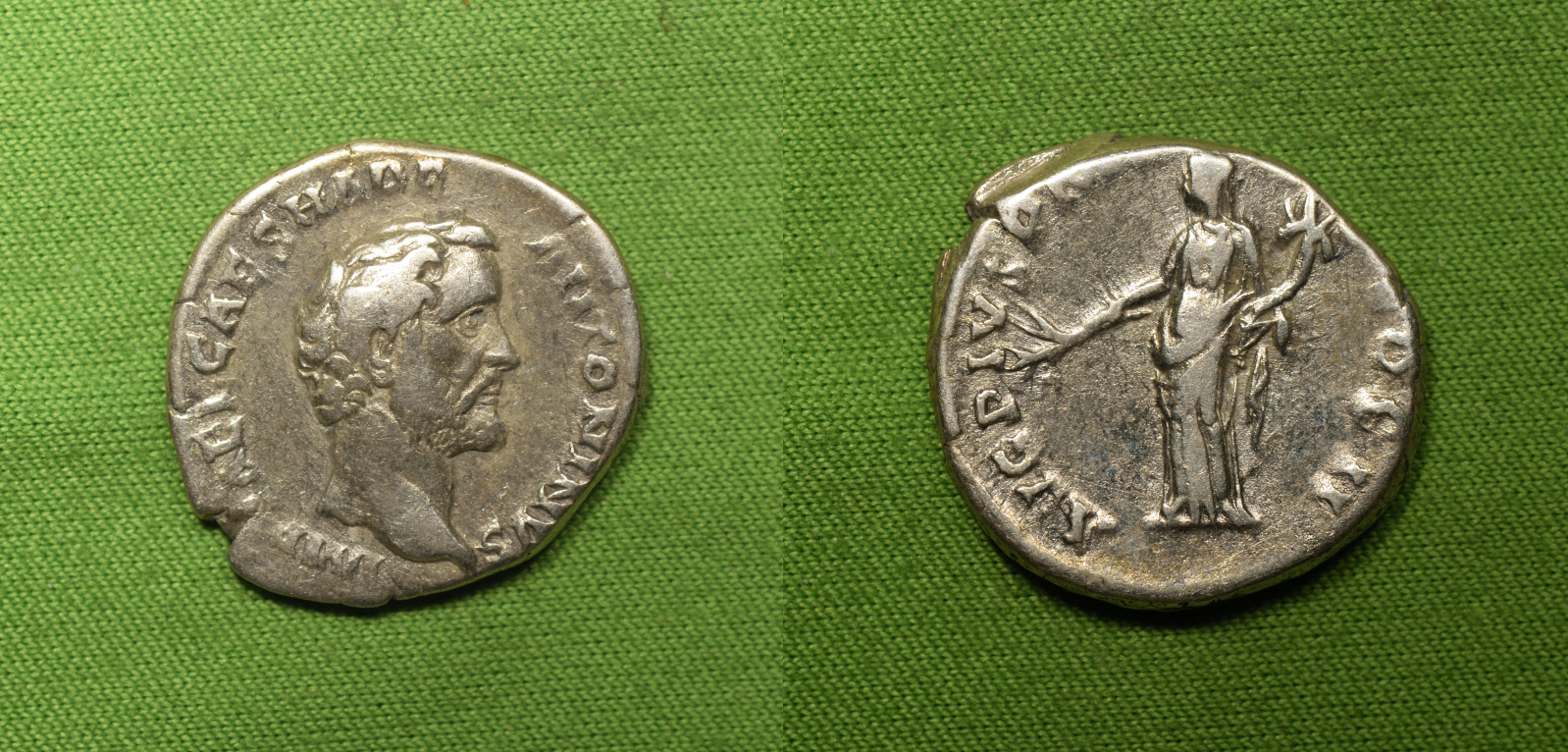
Reverse: AVG PIVS P M TR P COS II, Pax standing left, holding branch in extended right hand, and cornucopia in left
Die Orientation: 6 H
Weight: 3.14 g
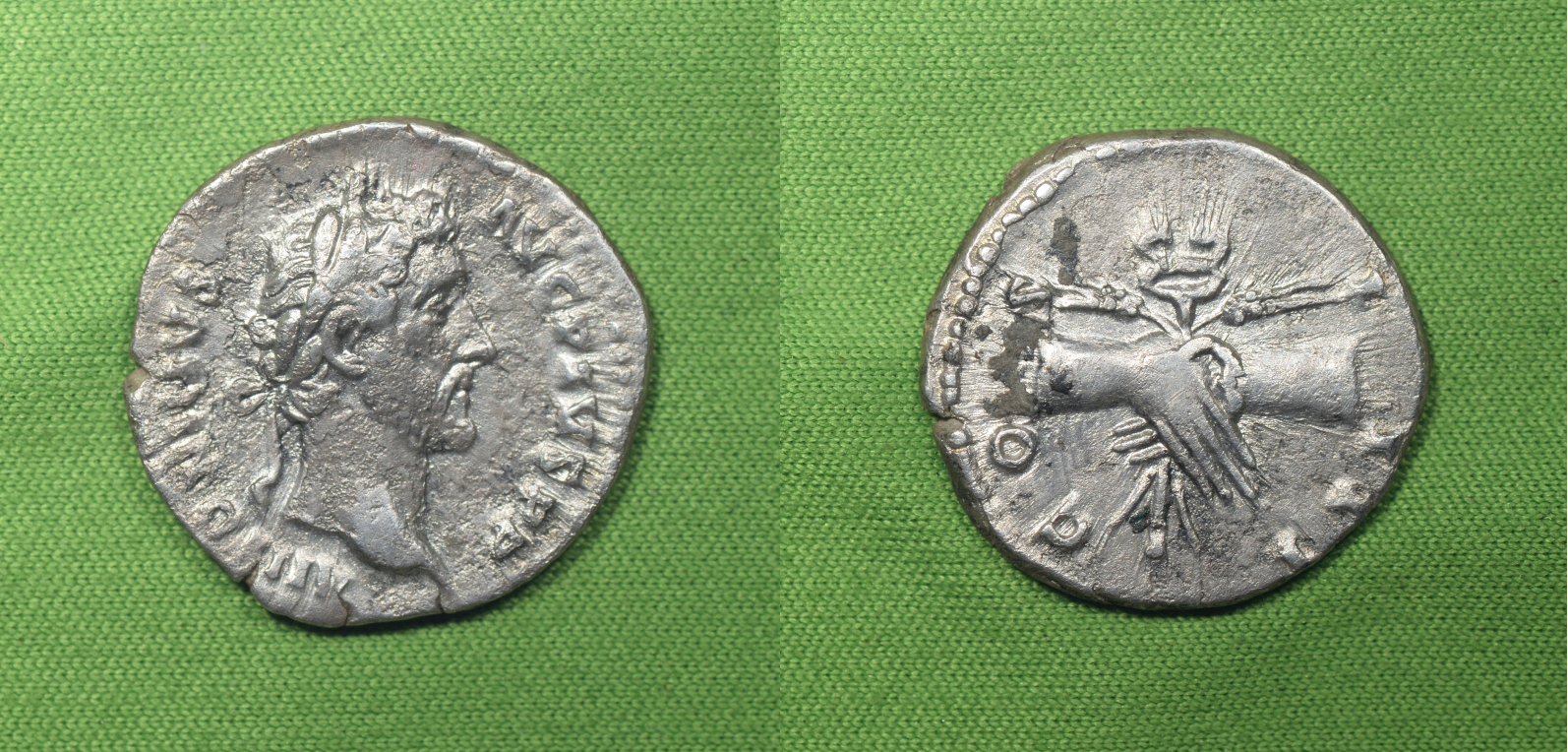
Reverse: COS IIII, Clasped hands holding caduceus between two corn-ears
Die Orientation: 6 H
Weight: 3.06 g
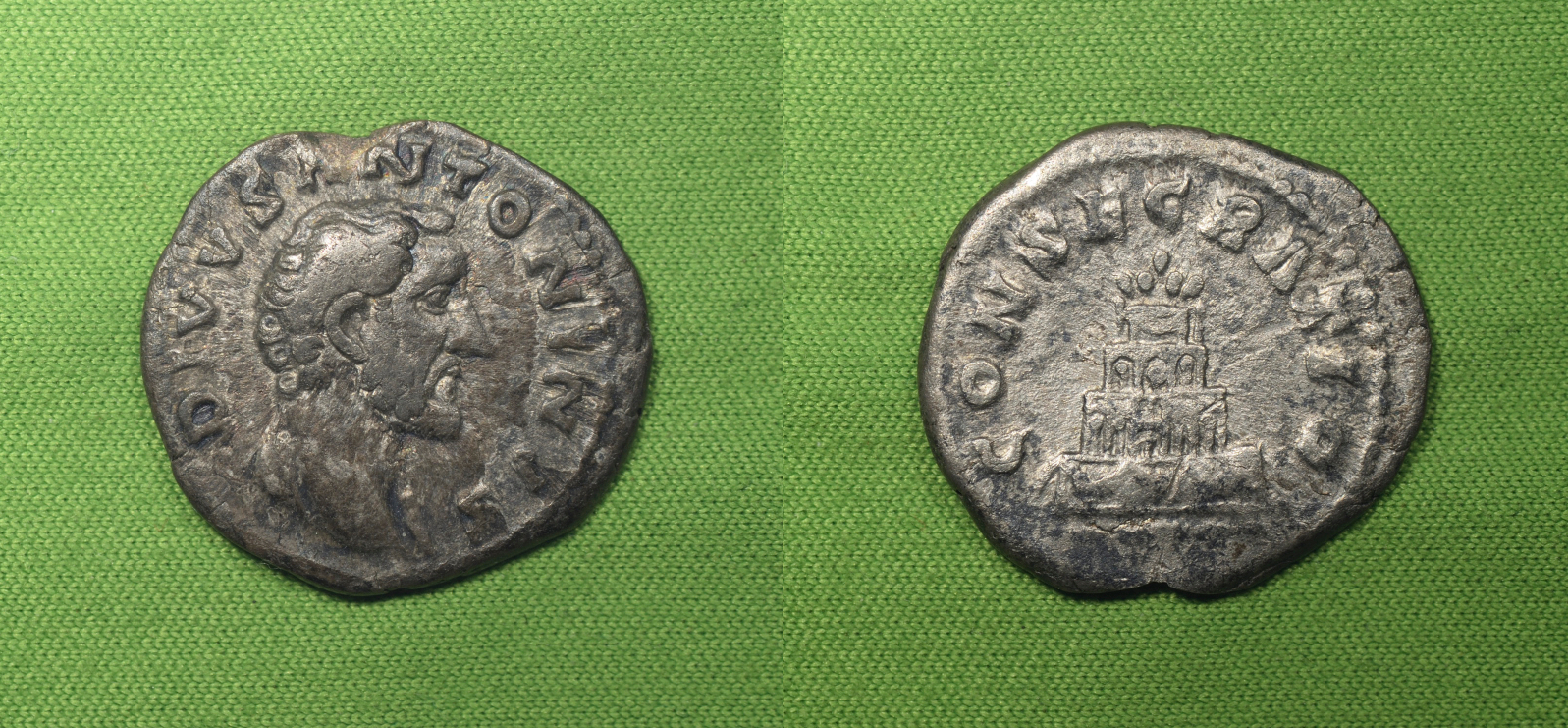
Reverse: CONSECRATIO, Pyre of four tiers, decorated with hangings and garlands, surmounted by quadriga
Die Orientation: 6 H
Weight: 2.57 g
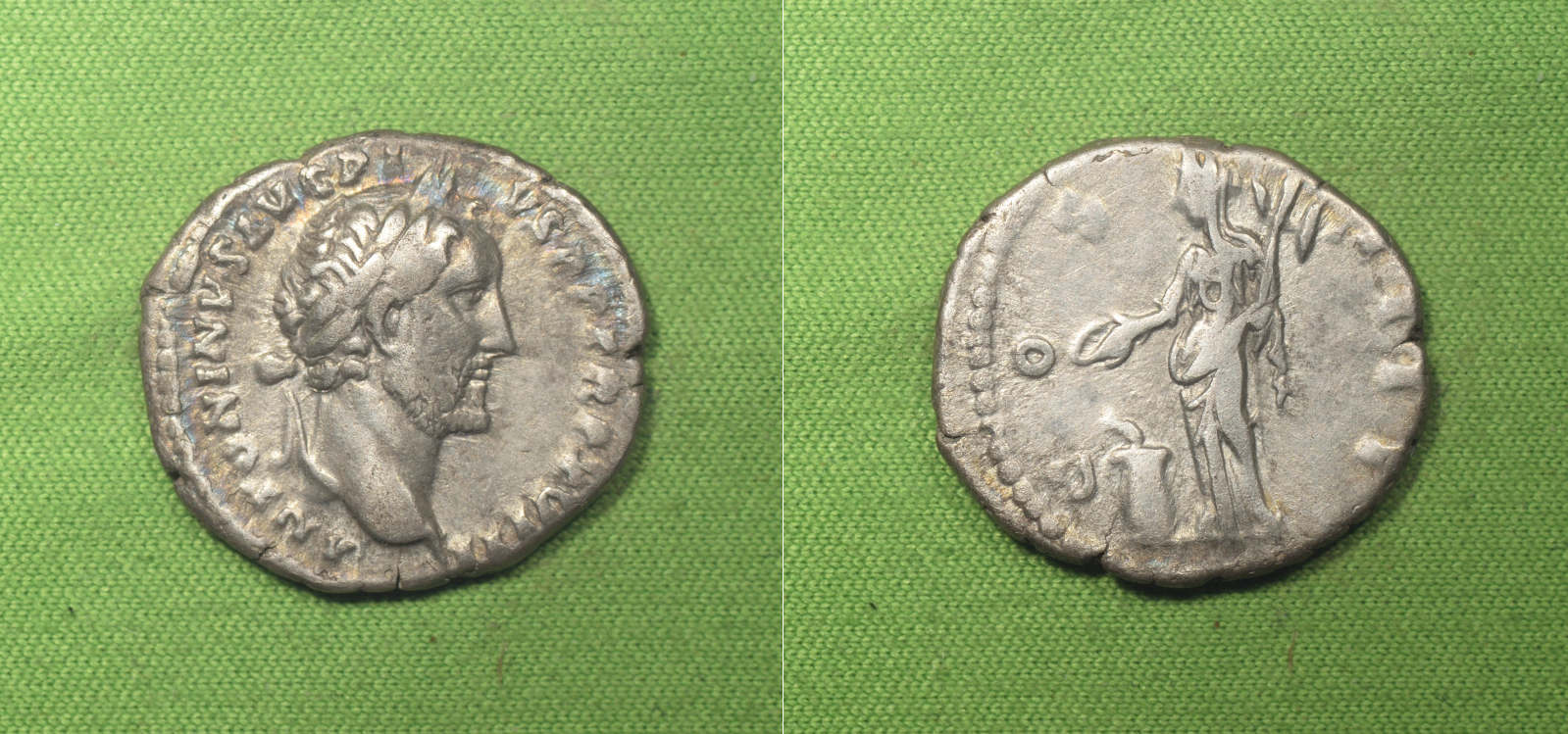
Reverse: COS IIII, Vesta, veiled, draped, standing left, sacrificing out of patera in right hand over lighted altar and holding palladium at shoulder in left
Die Orientation: 6 H
Weight: 3.25 g
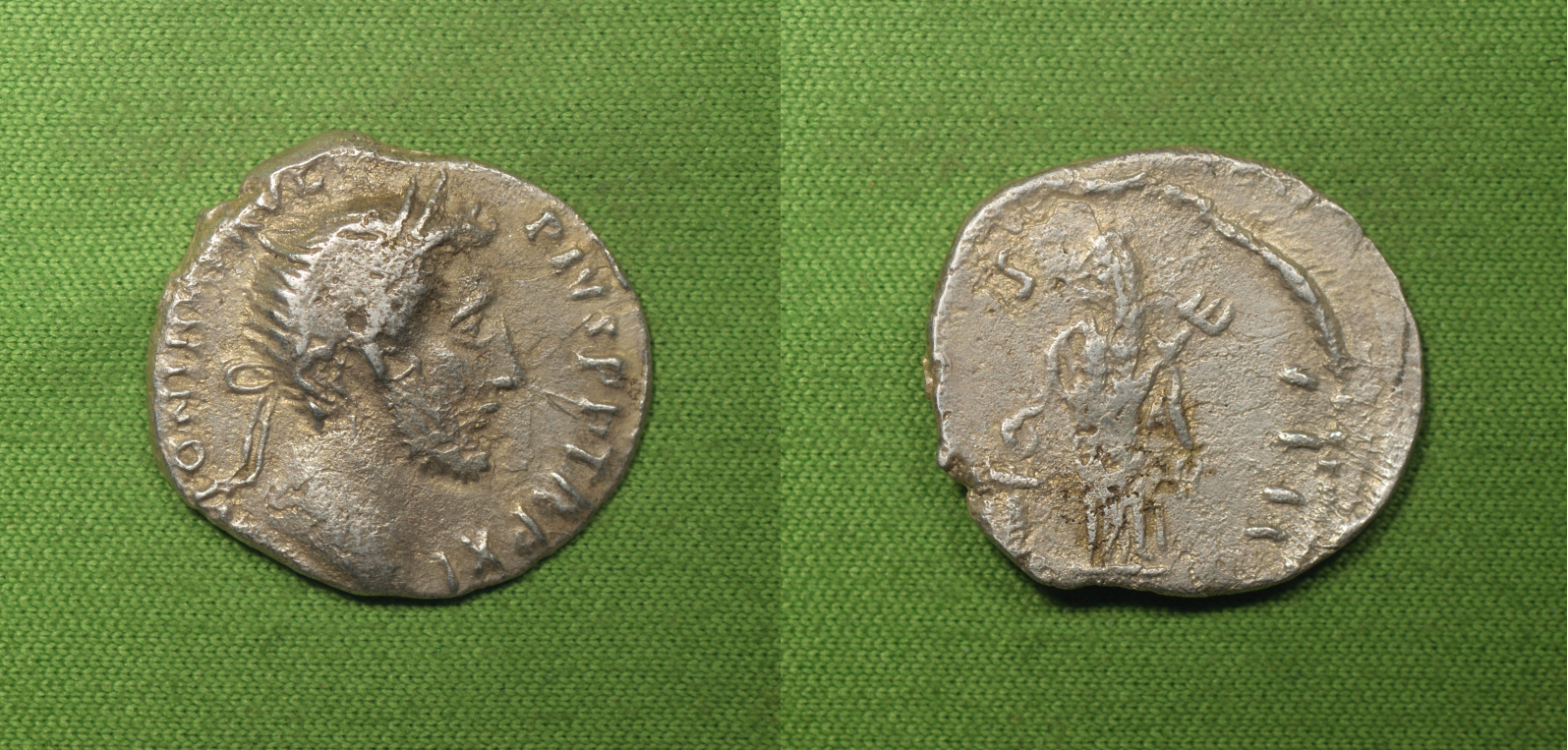
Reverse: COS IIII, Vesta, standing left, sacrificing with patera in right hand near altar and holding palladium in left
Die Orientation: 6 H
Weight: 2.46 g
.jpg)
Reverse: COS IIII, Salus, draped, standing left, holding patera in right hand feeding snake coiled around altar; she holds rudder set on globe in left hand
Die Orientation: 12 H
Weight: 3.24 g
dating from CNG
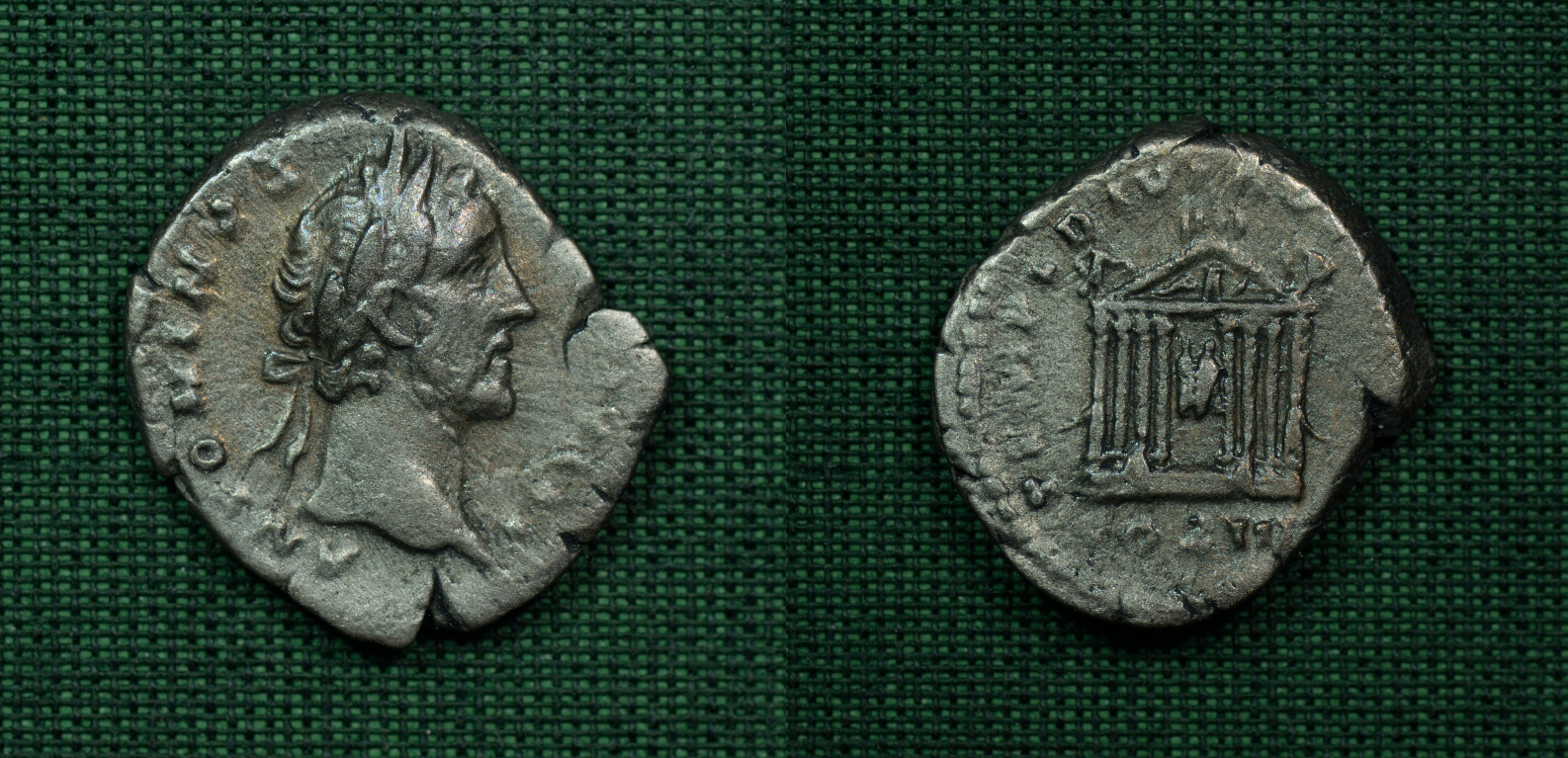
Reverse: TEMPLVM DIVI AVG REST, Front view of octastyle temple, containing statues of Divus Augustus and Livia; COS IIII in exergue
Die Orientation: 6 H
Weight: 3.21 g
"The temple of Divus Augustus and Livia, started under Tiberius and consecrated by Caligula, stood on the Capitol in Rome. It was probably renovated under Antoninus Pius." Ex. Roma E-Sale 69 Lot 981 March 16, 2020
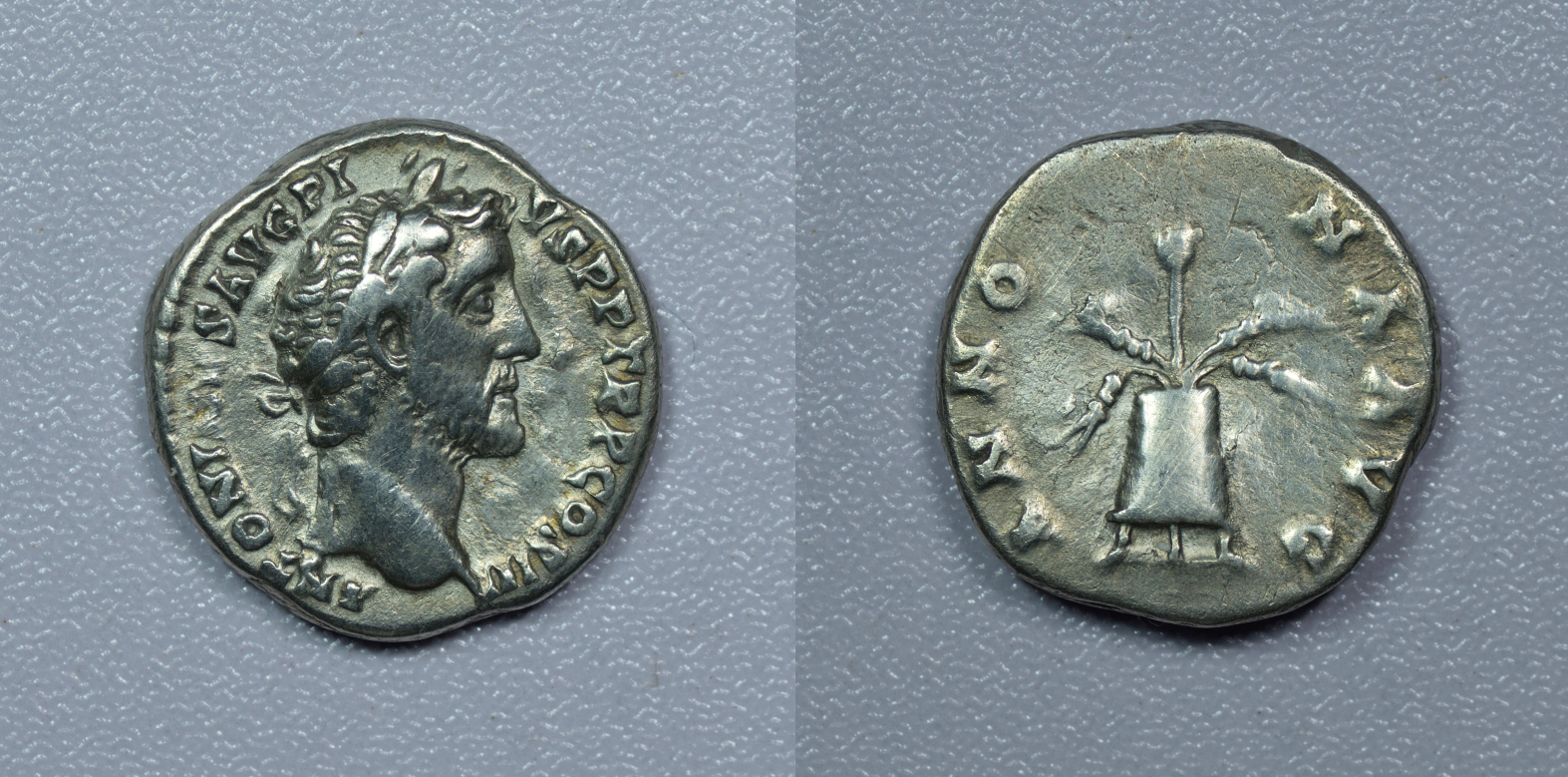
Reverse: ANNONA AVG, Modius with corn-ears and poppy
Die Orientation: 6 H
Weight: 3.22 g
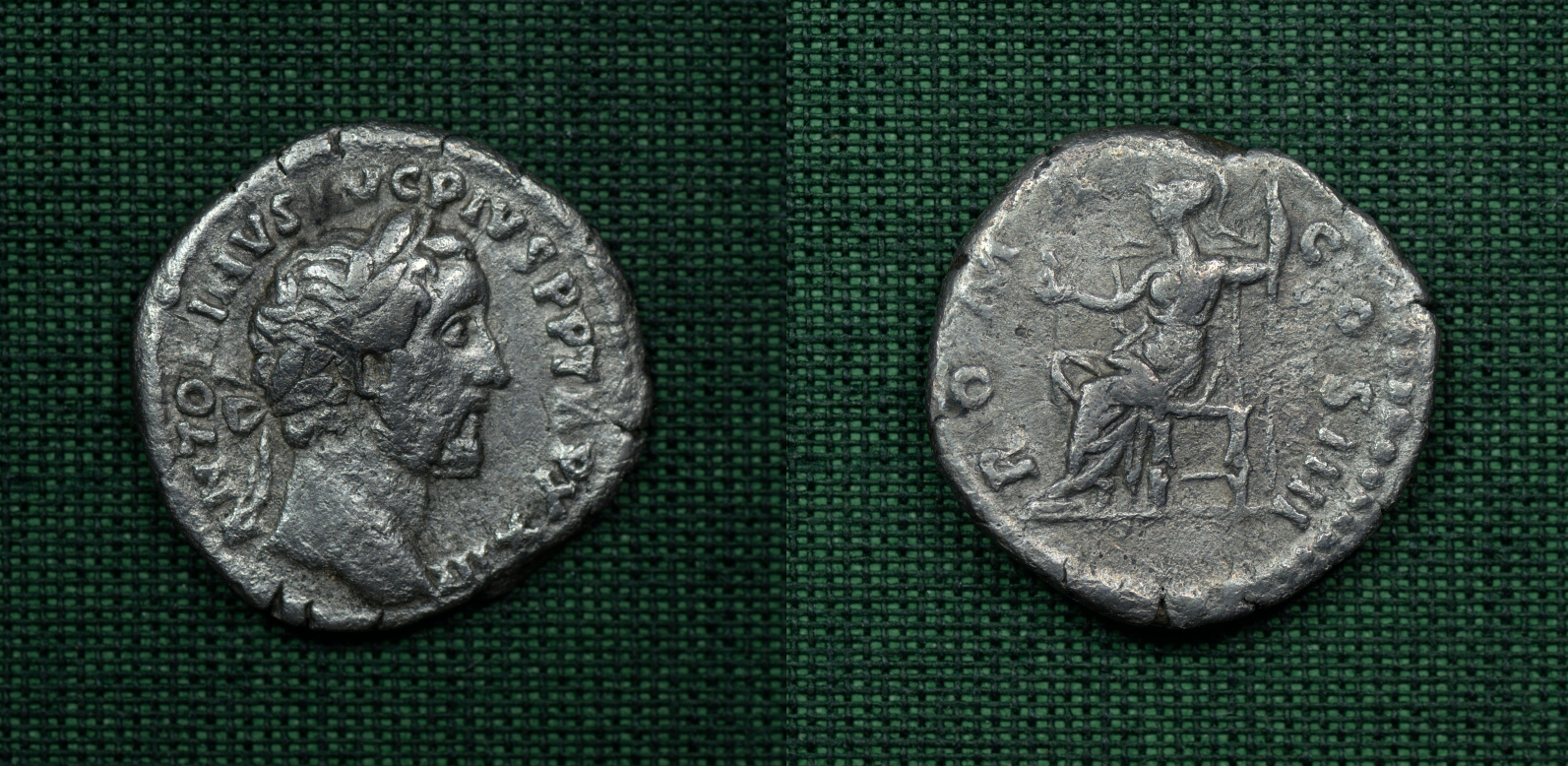
Reverse: ROMA COS IIII: Roma, helmeted, draped, seated left, on throne, holding Victory on right hand and vertical spear in left
Die Orientation: 6 H
Weight: 2.83 g
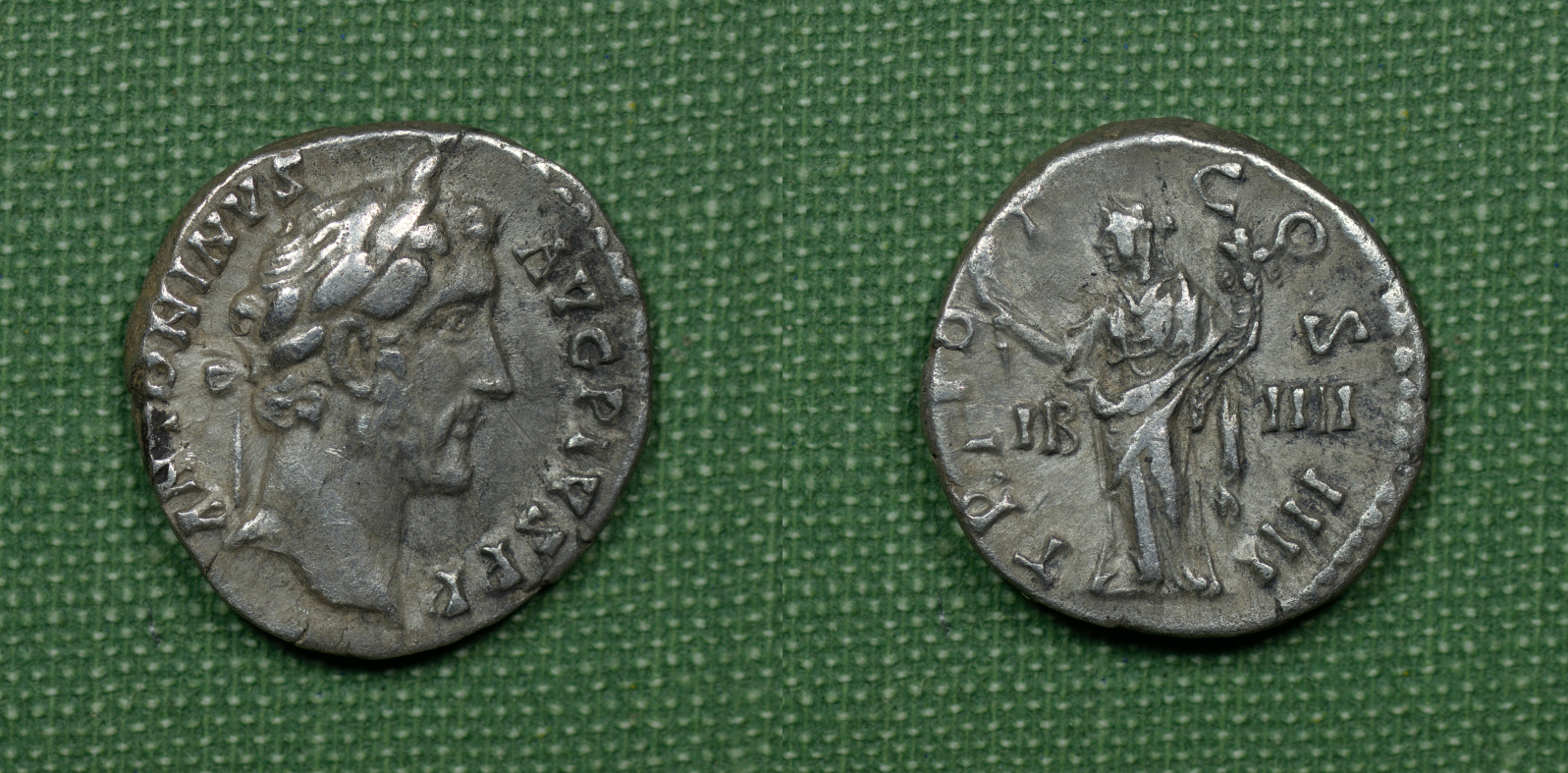
Reverse: Legend: TR POT COS IIII LIB IIII Type: Liberalitas, draped, standing, left, holding coin counter in right hand and cornucopiae in left
Die Orientation: 6 H
Weight: 3.11 g
"The occasion of this fourth largesse is recorded by the Ostian fasti for 145 AD: "Annia Faustina was married to Marcus Aurelius. Antoninus Augustus distributed a largesse of 90 denarii per man".. MS" - Harlan J. Berk Ltd. "Liberality is personified by the image of a woman, holding in one hand a tessera, or square tablet, furnished with a handle on which are cut a certain number of holes. These boards were used to quickly count the proper number of coins or other items for distribution to each person. It appears they would be dipped into a container, covered with coins and the excess swept away back into the container. The proper number of coins would fill the holes and then would be dumped out to the recipient. On coins this symbol indicated the prince had given to the people money, corn, and other articles of consumption. In the other hand she holds a cornucopia, to indicate the abundance of wheat contained in the public graineries. Liberalitas is represented as presiding at all congiaria. The liberalities of the Augusti, by which the distribution of their bounties to the people is signified, were of two kinds, ordinary and extraordinary." - Numiswiki
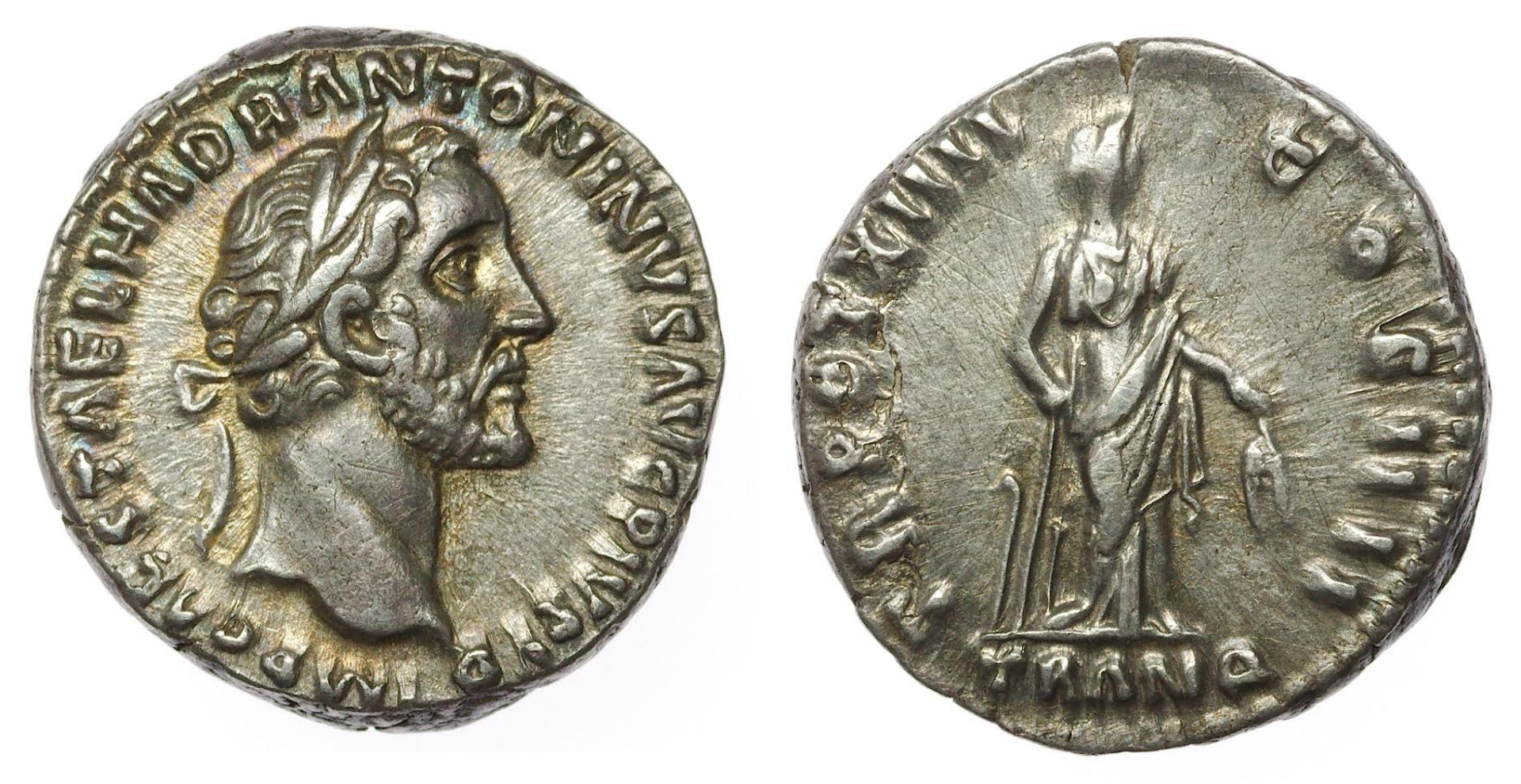
Reverse: TRANQ in exergue, Tranquillitas standing right, holding rudder and grain ears
Die Orientation: 0 H
Weight: 3.65 g
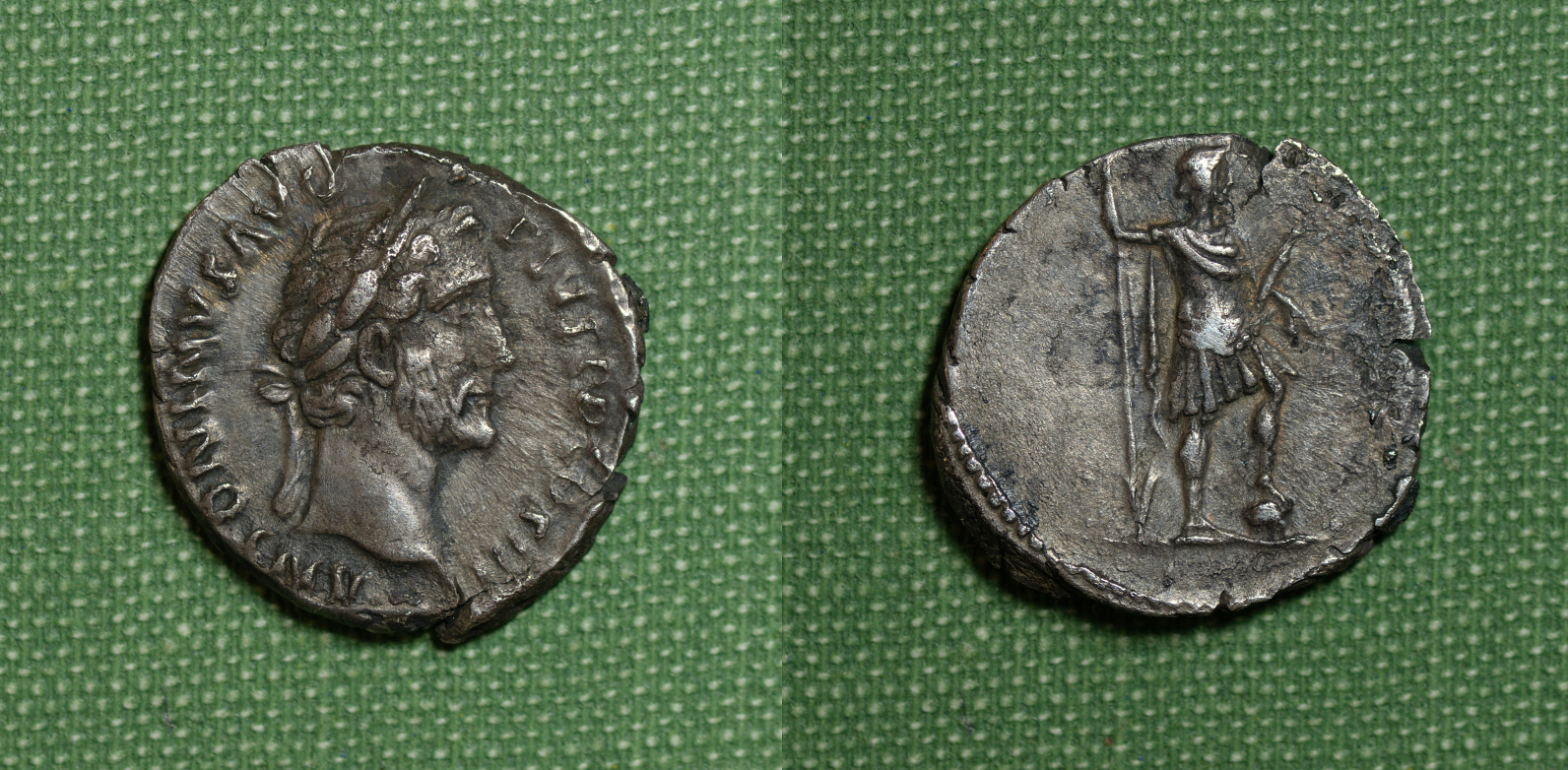
Reverse: Type: Antoninus Pius, bareheaded,in military dress, standing right, left foot set on globe, holding vertical spear reversed in right hand and parazonium upright at shoulder in left
Die Orientation: 6 H
Weight: 2.52 g
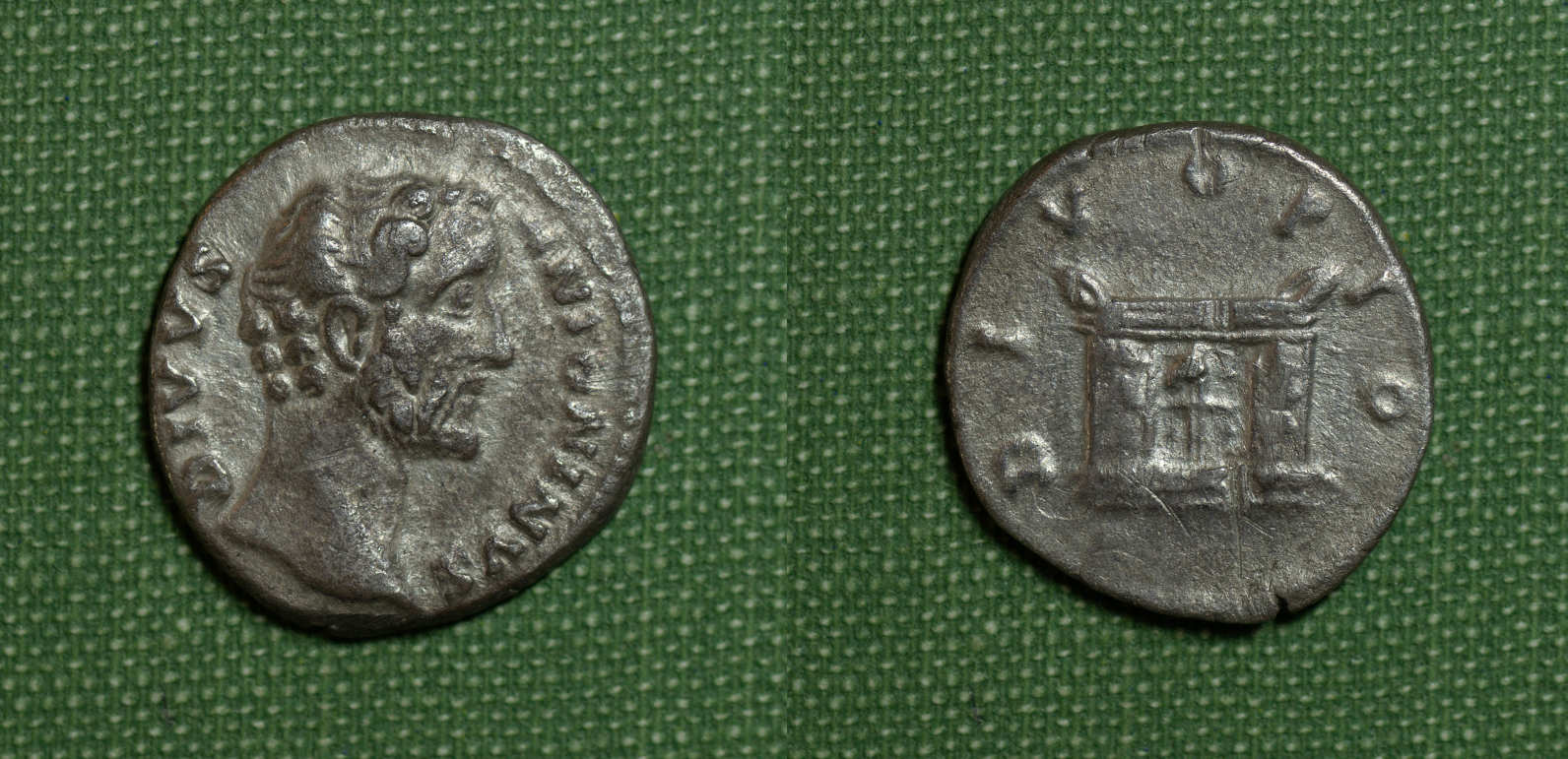
Reverse: Legend: DIVO PIO Type: Square altar
Die Orientation: 12 H
Weight: 3.21 g
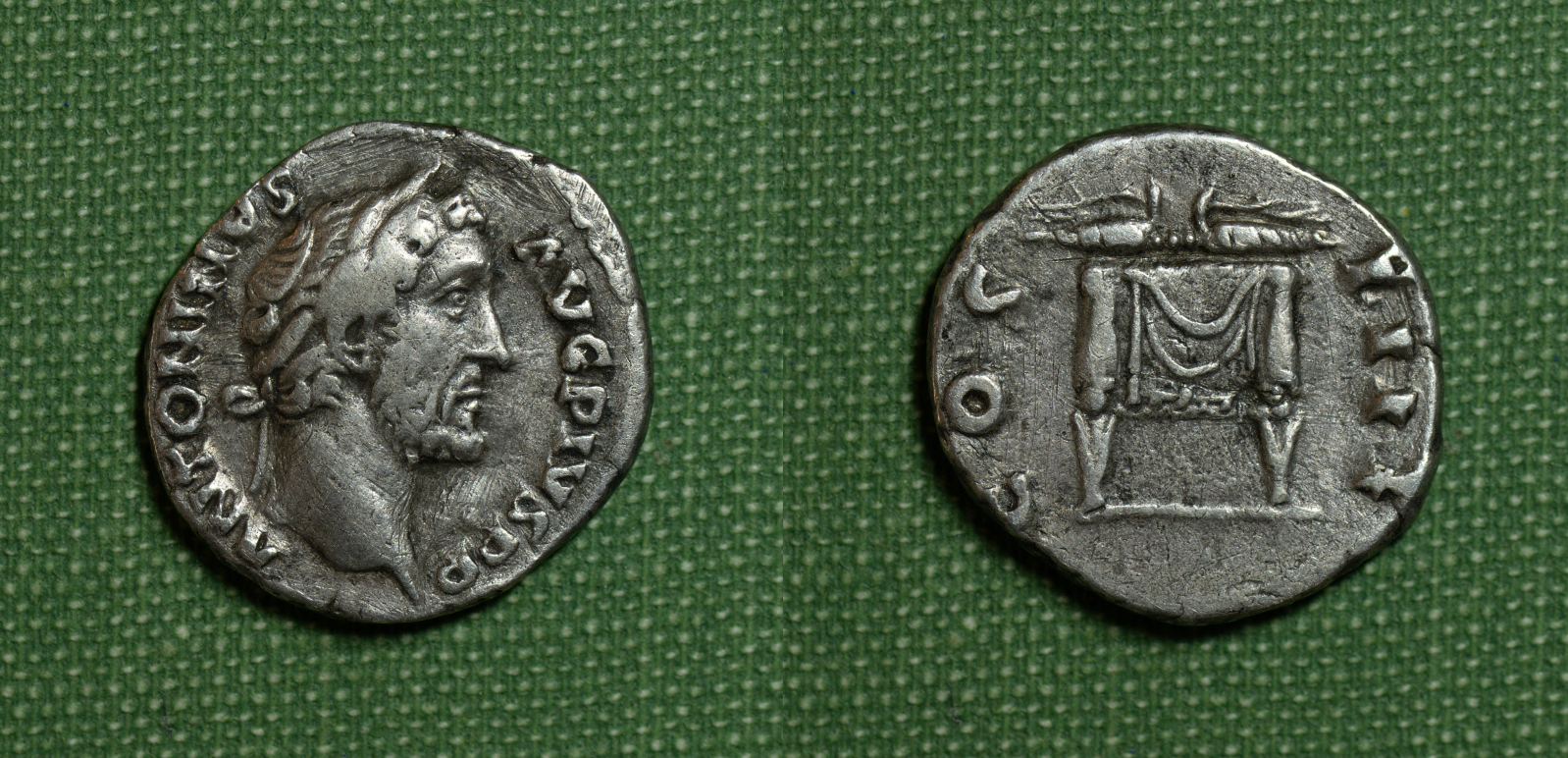
Reverse: Legend: COS IIII Type: Winged thunderbolt lying horizontal on draped throne
Die Orientation: 6 H
Weight: 3.21 g
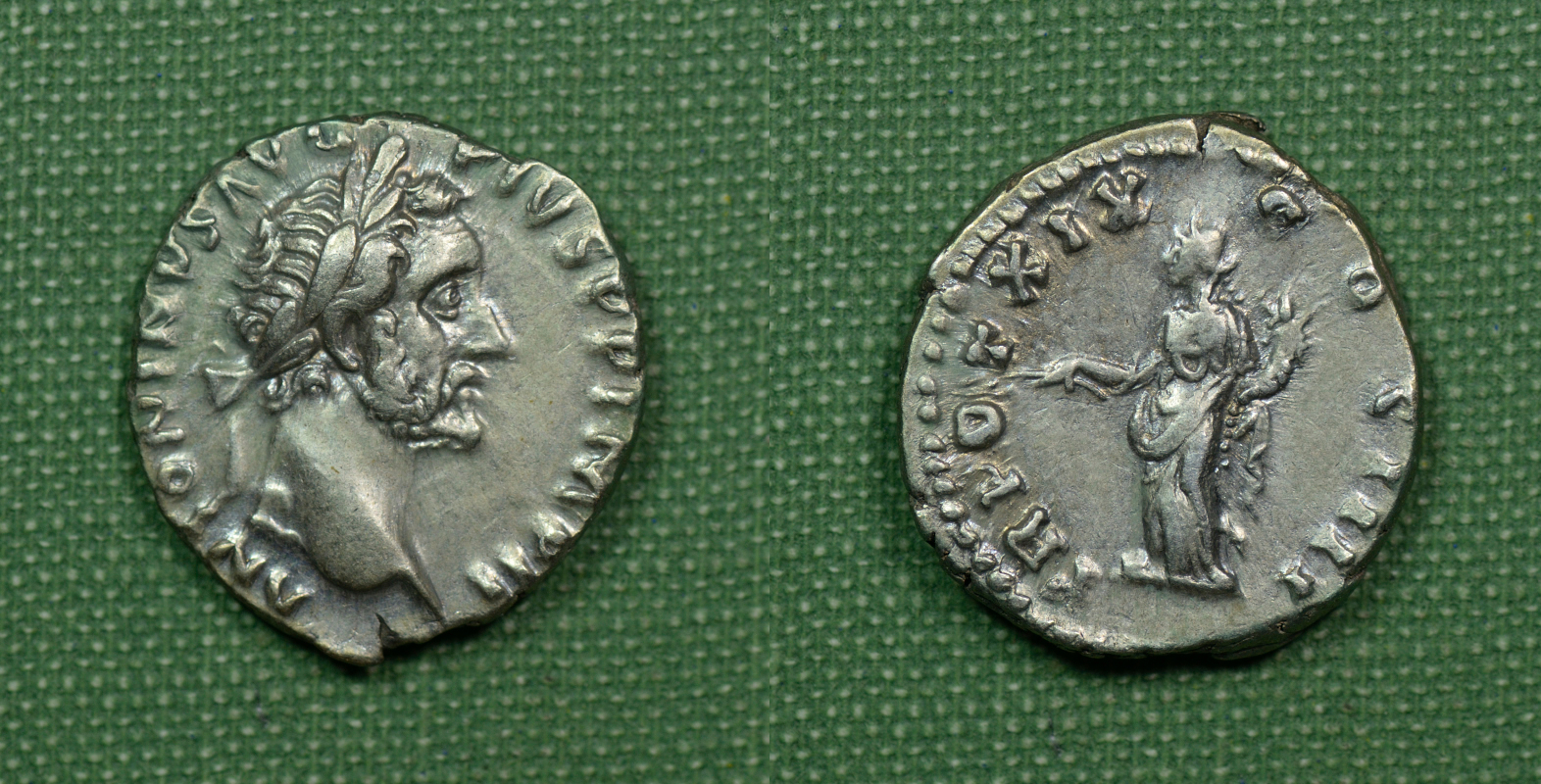
Reverse: TR POT XIX COS IIII, Pax, draped, standing left, holding branch in extended right hand and cornucopiae in left
Die Orientation: 6 H
Weight: 3.55 g
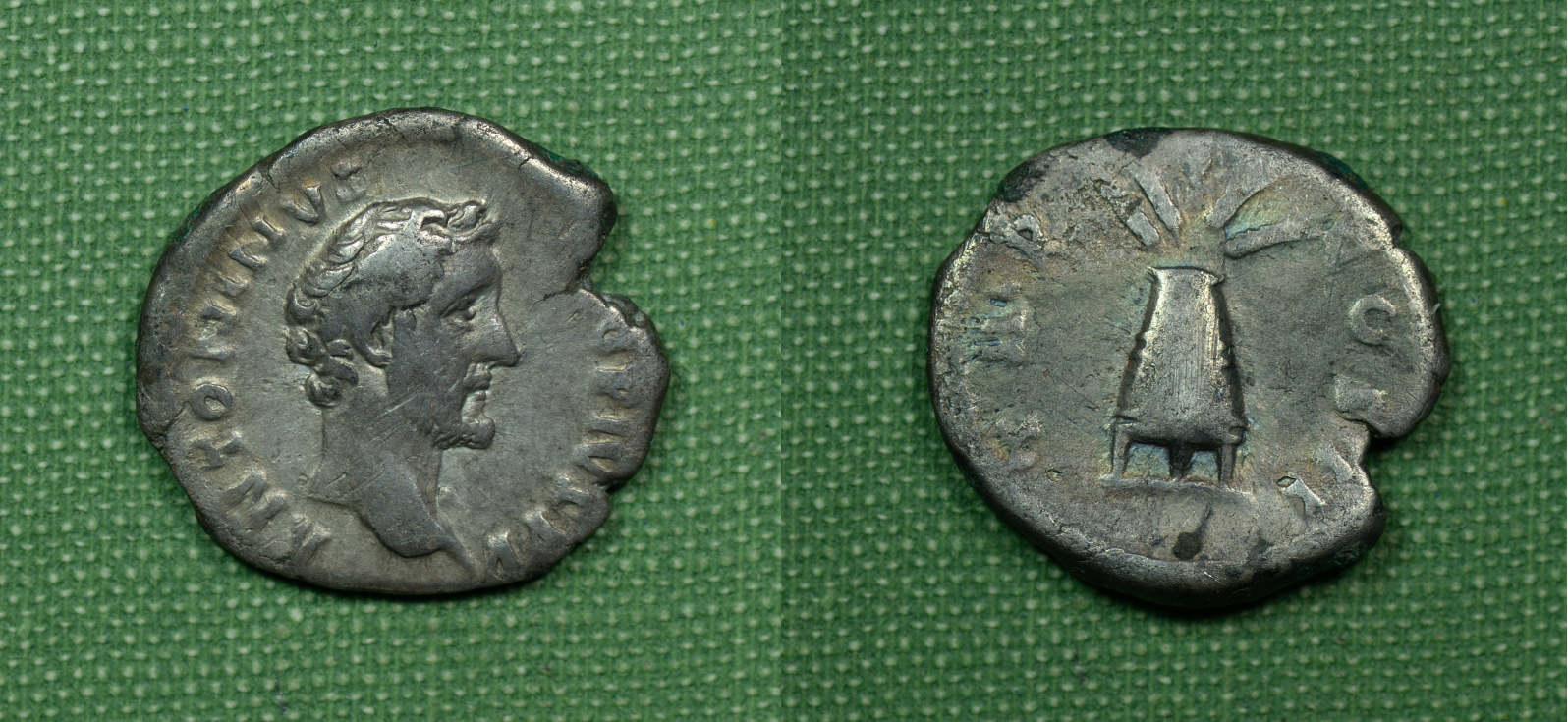
Reverse: TR P COS II (Tribunitia Potestas [Tribune of the Plebs], Consul for the 2nd time), Modius with corn-ears and poppy
Die Orientation: 6 H
Weight: 3.16 g
.jpg)
Reverse: COS IIII, Antoninus Pius, veiled, draped, standing left, with patera in right hand sacrificing over lighted tripod- altar and holding roll in left
Die Orientation: 6 H
Weight: 3.36 g
Ex. HJB Sale 204; Lot 207 (7/18/2018)
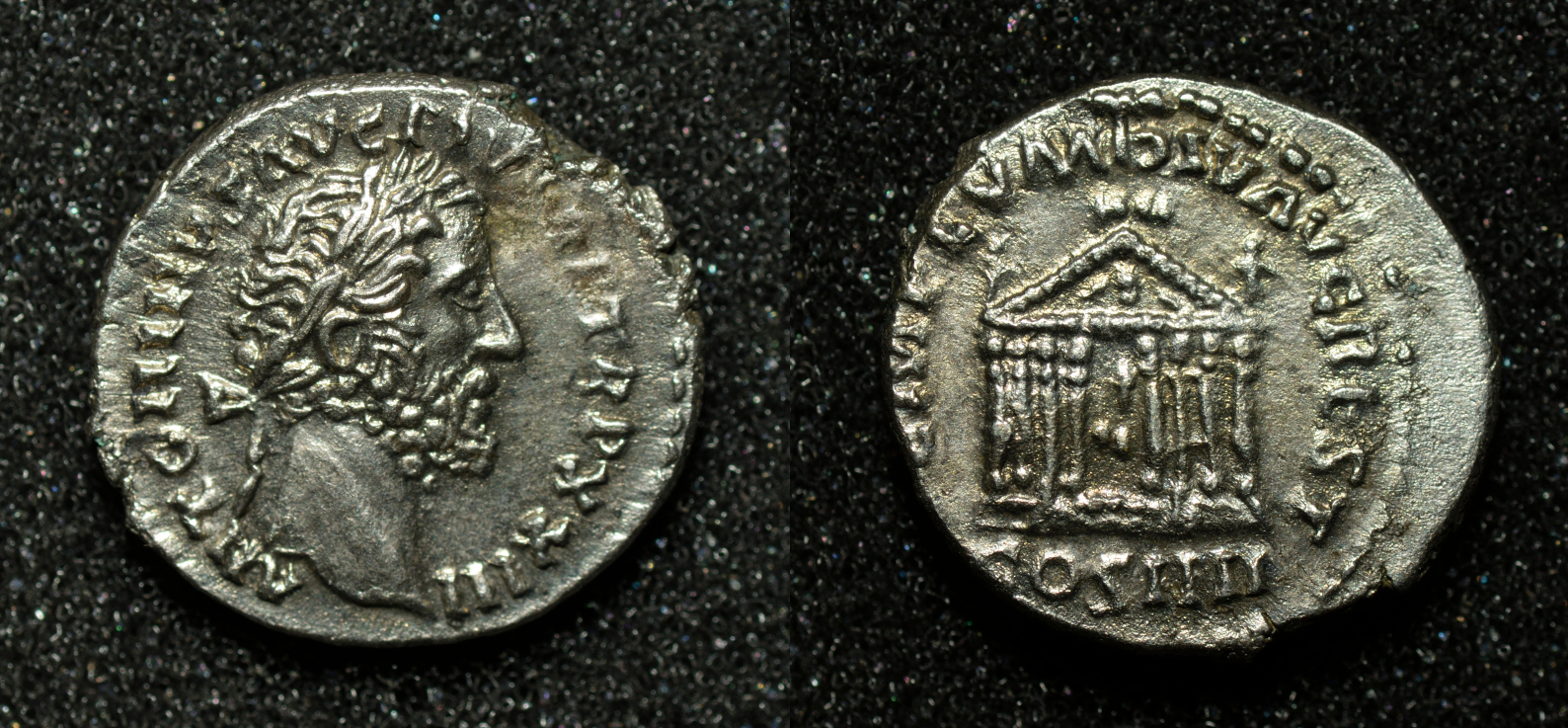
Reverse: TEMPLVM DIV AVG REST COS IIII, Octastyle temple, in which are seated statues of Divus Augustus and Livia
Die Orientation: 0 H
Weight: 0 g
The style of the portrait makes it seem to be an imitative. [The temple] "It was restored again in the late 150s by Antonius Pius,[1] who was perhaps motivated by a desire to be publicly associated with the first emperor.[9] The exact date of the restoration is not known, but the restored temple is shown on coins of 158 onwards,[10] which depict it with an octastyle design with Corinthian capitals and two statues – presumably of Augustus and Livia – in the cella. The pediment displayed a relief featuring Augustus and was topped by a quadriga. Two figures stood on the eaves of the roof, that on the left representing Romulus and the one on the right depicting Aeneas leading his family out of Troy, alluding to Rome's origin-myth. The steps of the temple were flanked by two statues of Victory.[11]"
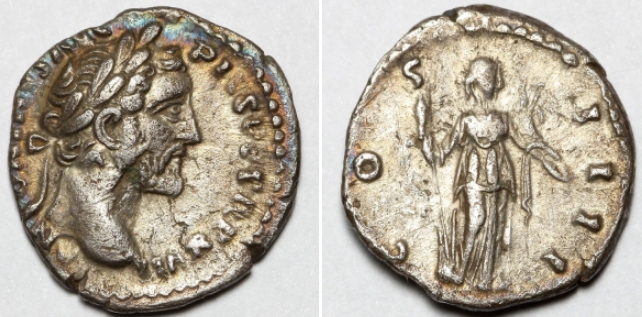
Reverse: COS IIII - Fortuna standing right, holding rudder on globe and cornucopiae.
Die Orientation: 6 H
Weight: 2.66 g
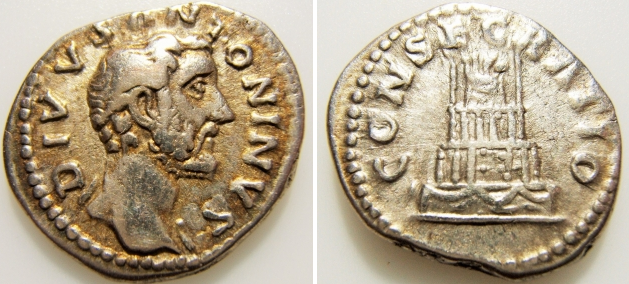
Reverse: CONSECRATIO - Four tiered funeral pyre surmounted by quadriga.
Die Orientation: 6 H
Weight: 3.39 g
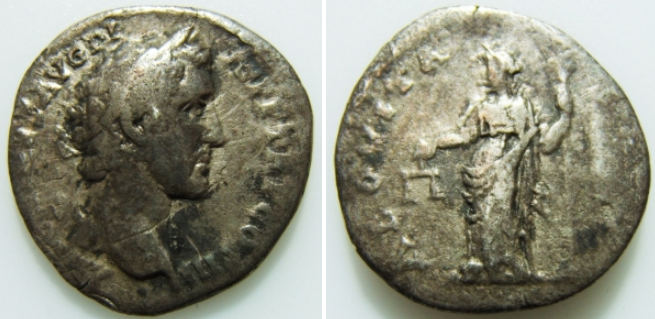
Reverse: AEQVITAS AVG - Aequitas standing left, holding scales and sceptre.
Die Orientation: 6 H
Weight: 2.65 g
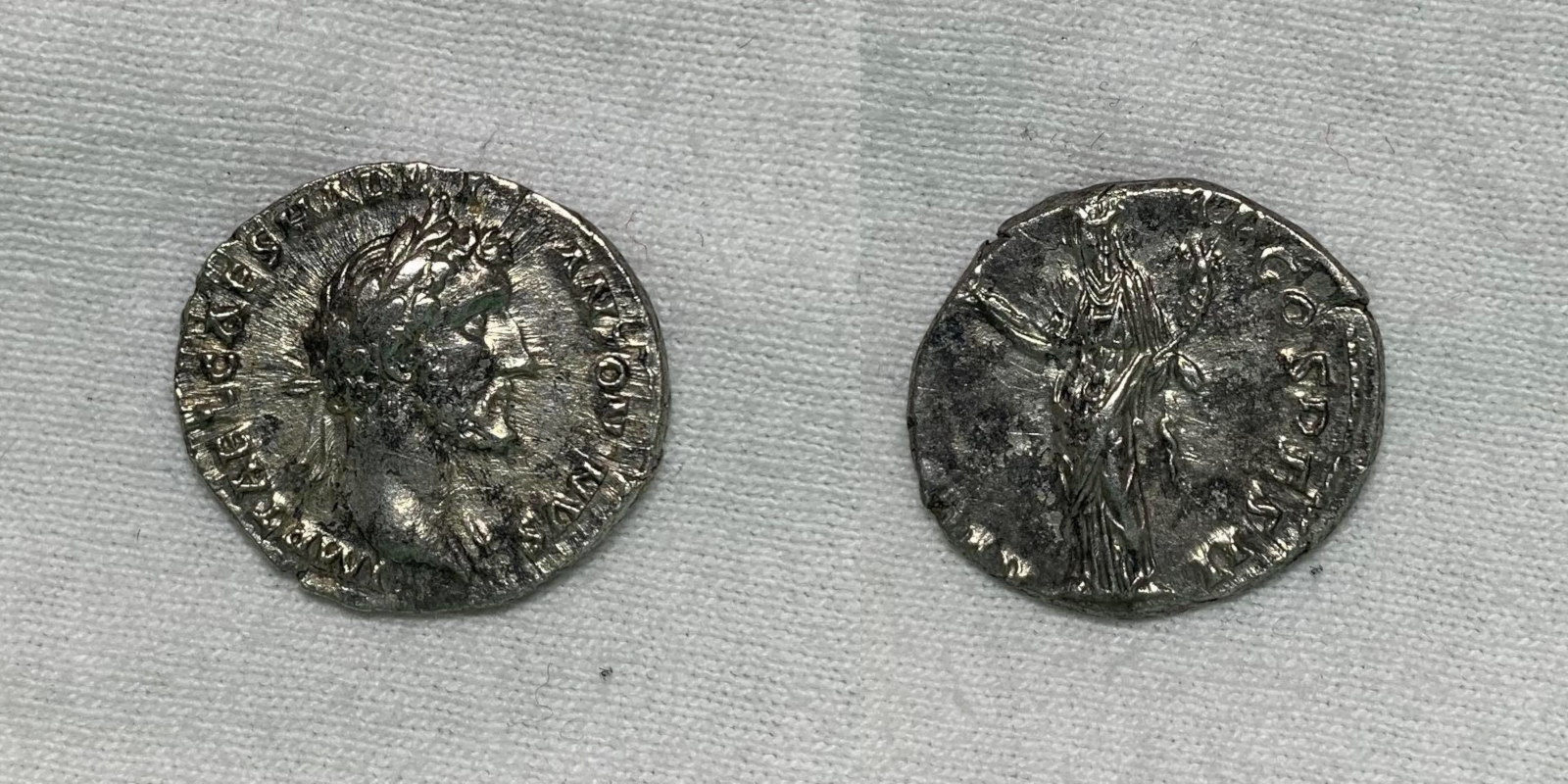
Reverse: AVG PIVS P M TR P COS DES II, Felicitas, draped, standing left, holding up caduceus in right hand and cornucopia in left
Die Orientation: 6 H
Weight: 3.24 g
.jpg)
Reverse: COS IIII: Vesta, veiled, draped, standing left, holding simpulum lowered in right hand and palladium at shoulder in left
Die Orientation: 6 H
Weight: 3.05 g
.jpg)
Reverse: TR POT XXI COS IIII: Aequitas, standing left, holding scales in right hand and cornucopiae in left
Die Orientation: 11 H
Weight: 3.59 g
.jpg)
Reverse: COS IIII: Vesta, veiled, draped, standing left, sacrificing out of patera in right hand over lighted altar and holding palladium at shoulder in left
Die Orientation: 6 H
Weight: 2.64 g
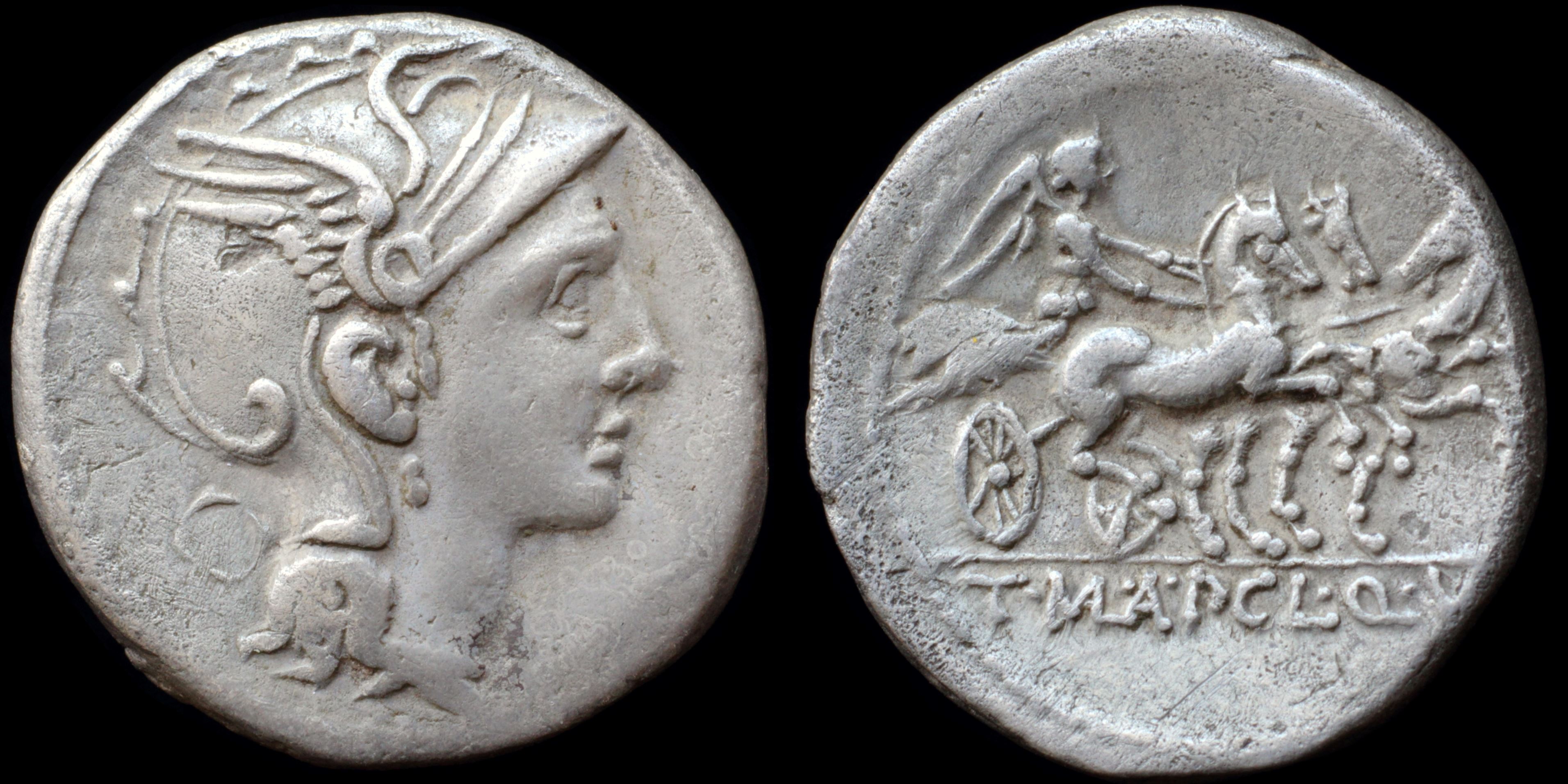
Reverse: victory in triga right holding reins T·(MAL)·A·P CL·Q·(VR)
Die Orientation: -
Weight: 3.8 g
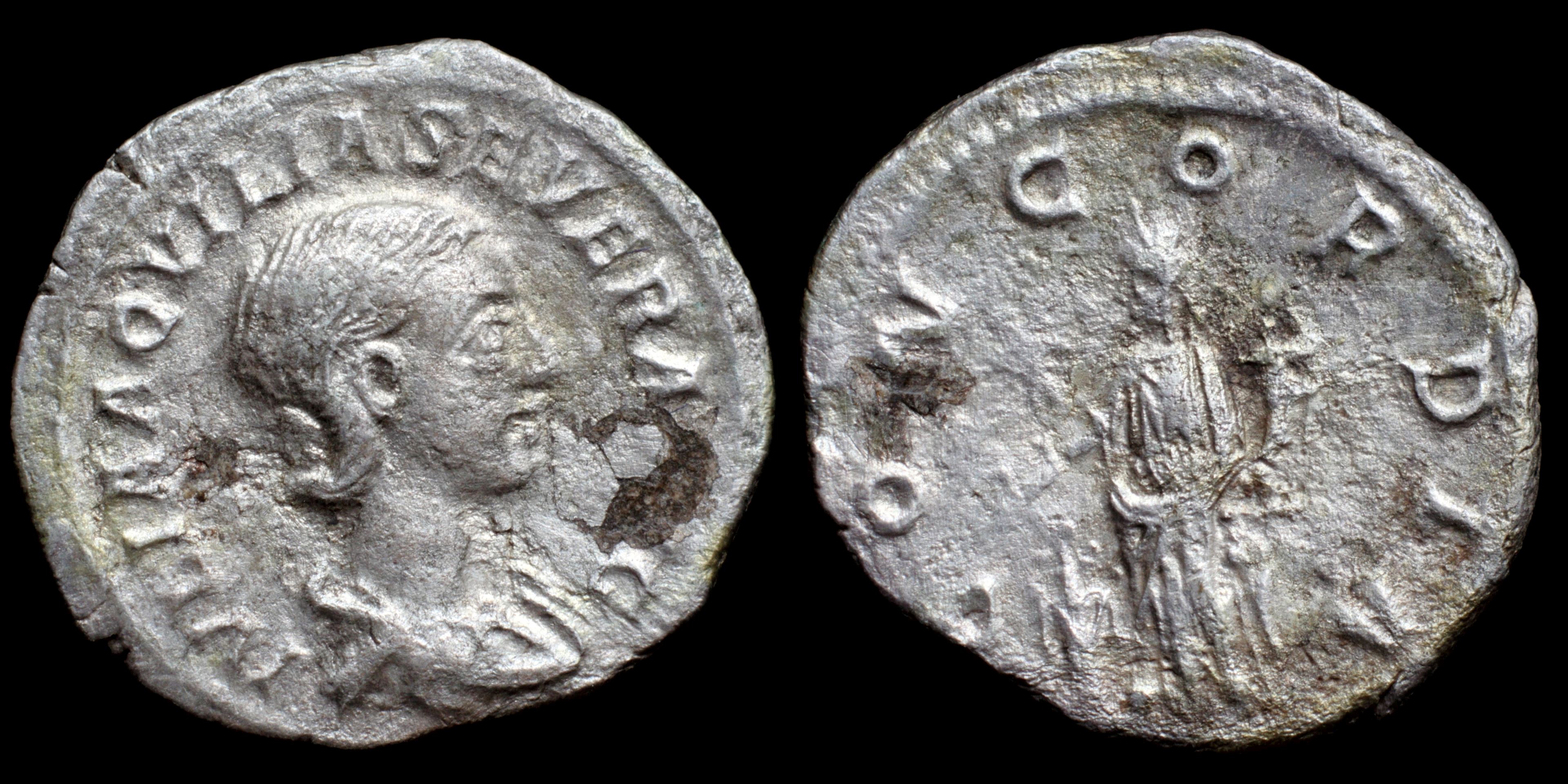
Reverse: Concordia standing left, sacrificing out of patera over lighted altar, holding double cornucopiae, * left; CONCORDIA
Die Orientation: -
Weight: 1.66 g
.jpg)
Reverse: Apollo Citharoedus of Actium standing facing, head to left, holding plectrum in his right hand and lyre in his left; IMP X in fields; ACT in exergue
Die Orientation: 2 H
Weight: 3.31 g
The obverse translates to "Augustus, son of the Divine (referring to Julius Caesar)"
IMP X translates to "Commander-in-Chief for the 10th time", and ACT is short for Actium.
.jpg)
Reverse: Bull butting to the right; IMP•X in exergue
Die Orientation: 12 H
Weight: 2.18 g
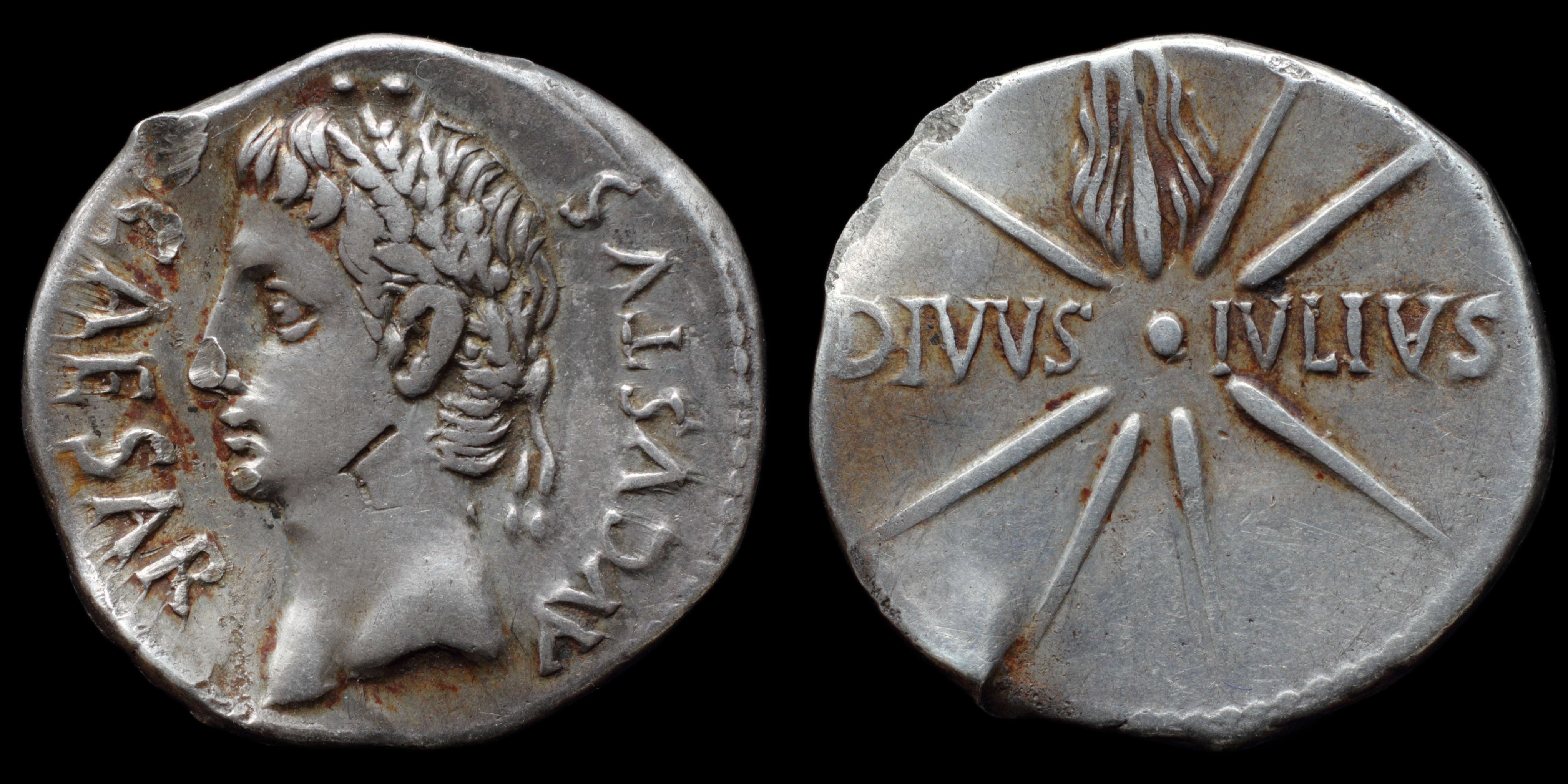
Reverse: comet - The Julian Star; DIVVS - IVLIVS
Die Orientation: -
Weight: 3.8 g
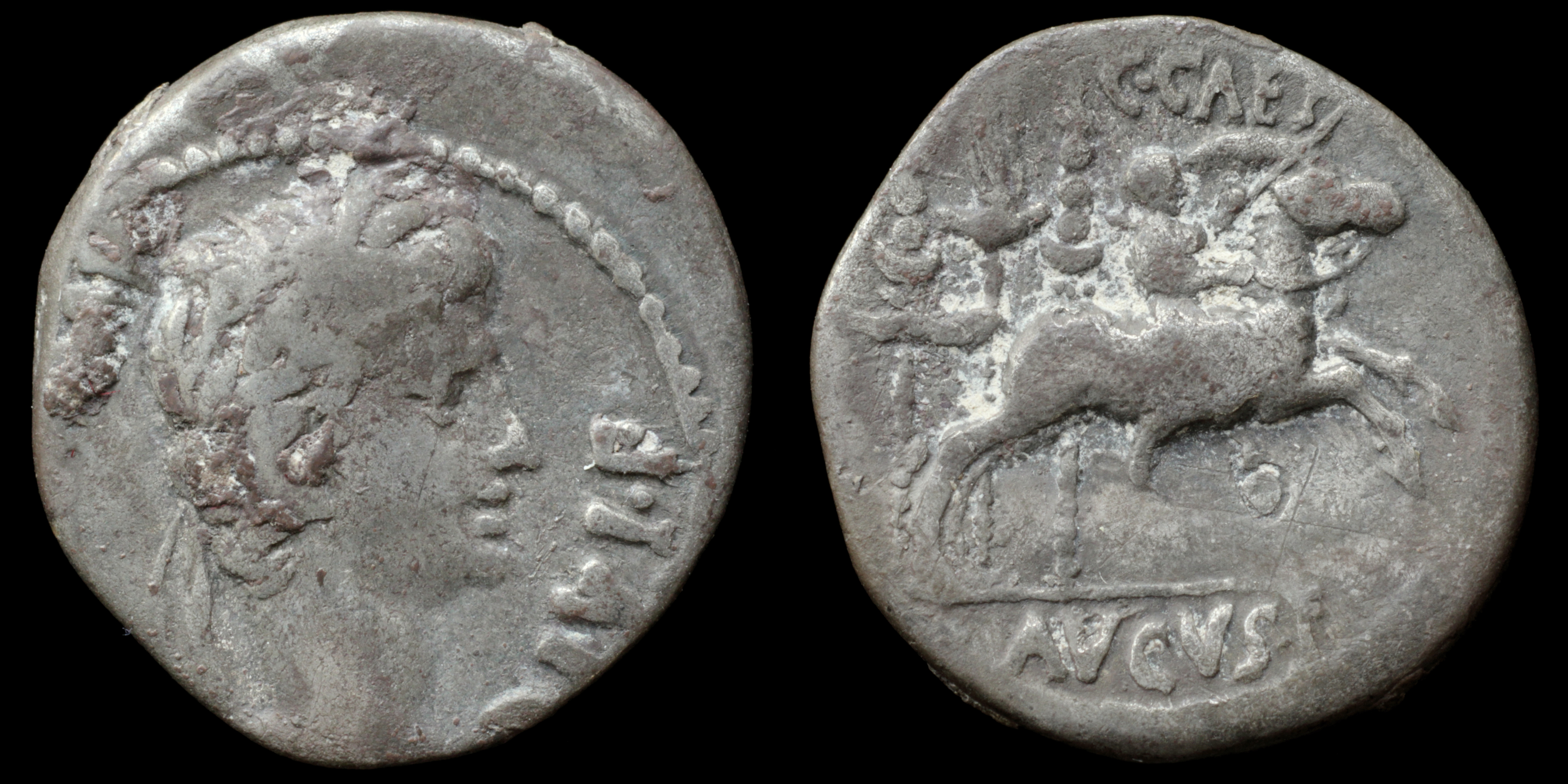
Reverse: Caius Caesar on horseback riding right, holding sword and reins; to left, aquila right between two signa; C•CAESAR / AVGVS•F
Die Orientation: -
Weight: 3.4 g
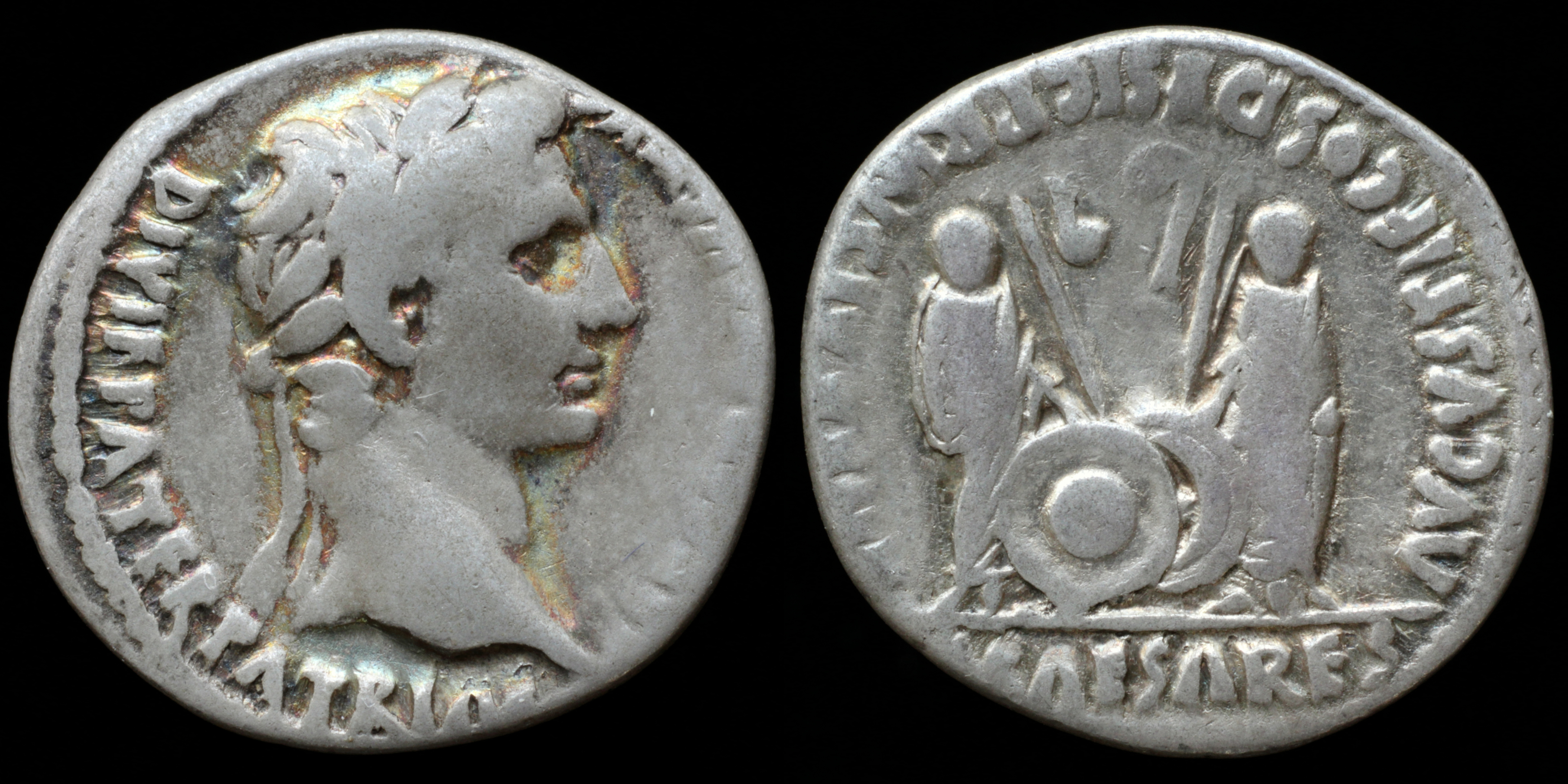
Reverse: Lucius Caesar and Caius Caesar facing, wearing toga, holding shield on the ground and spear, simpulum and lituus (b9) above; AVGVSTI F COS DESIG PRINC IVVENT / C L CAESARES
Die Orientation: -
Weight: 3.61 g
.jpg)
Reverse: C L CAESARES AVGVSTI F COS DESIG PRINC IVVENT, Gaius and Lucius Caesar standing, each, wearing togas, resting hand on shield and spear, simpulum, right, and lituus, left, flanking, left and right respectively
Die Orientation: 4 H
Weight: 3.8 g
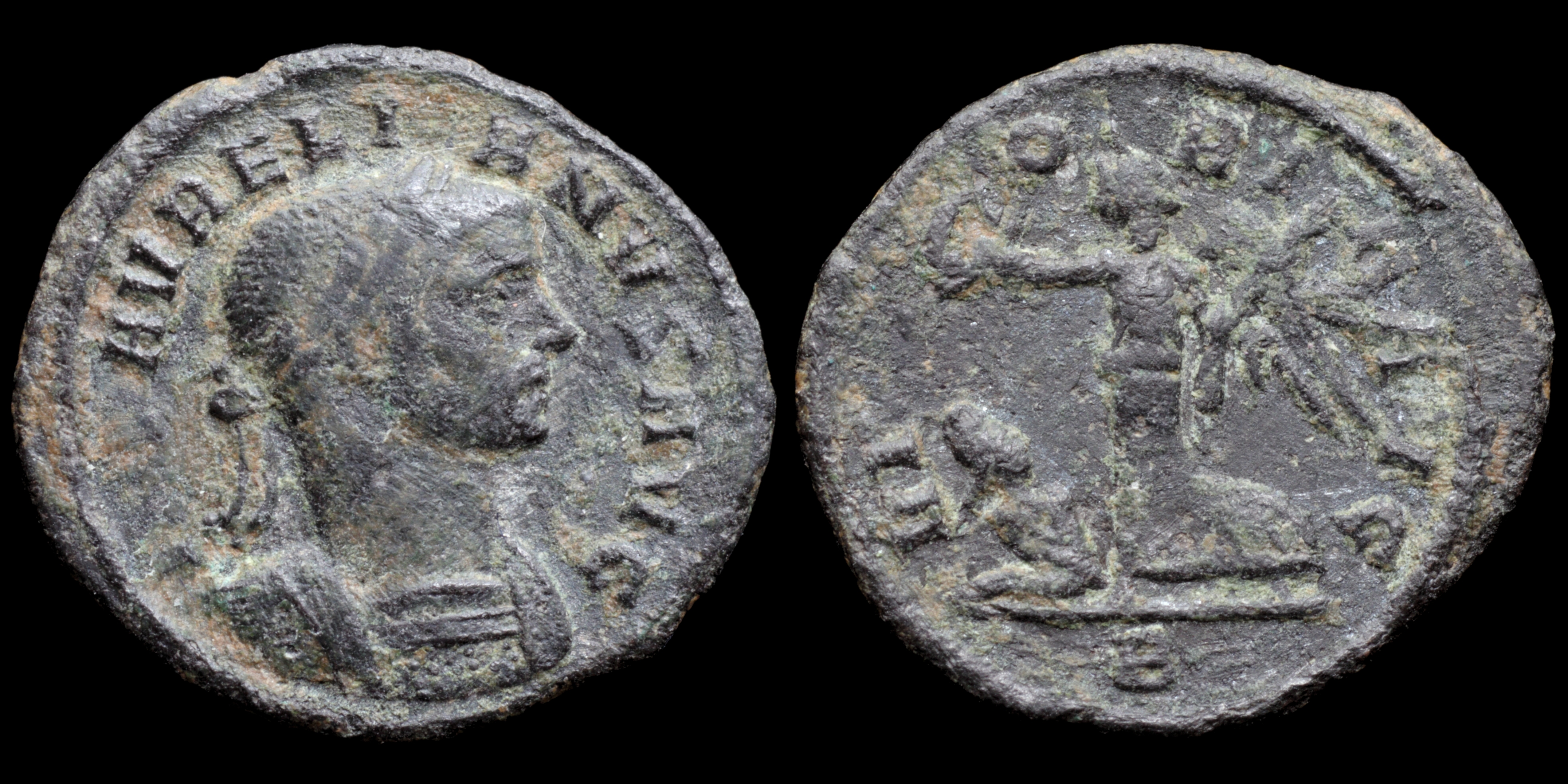
Reverse: Victory walking left, holding wreath and palm; captive to the left; VICT_O_RI_A AVG / B
Die Orientation: -
Weight: 1.9 g
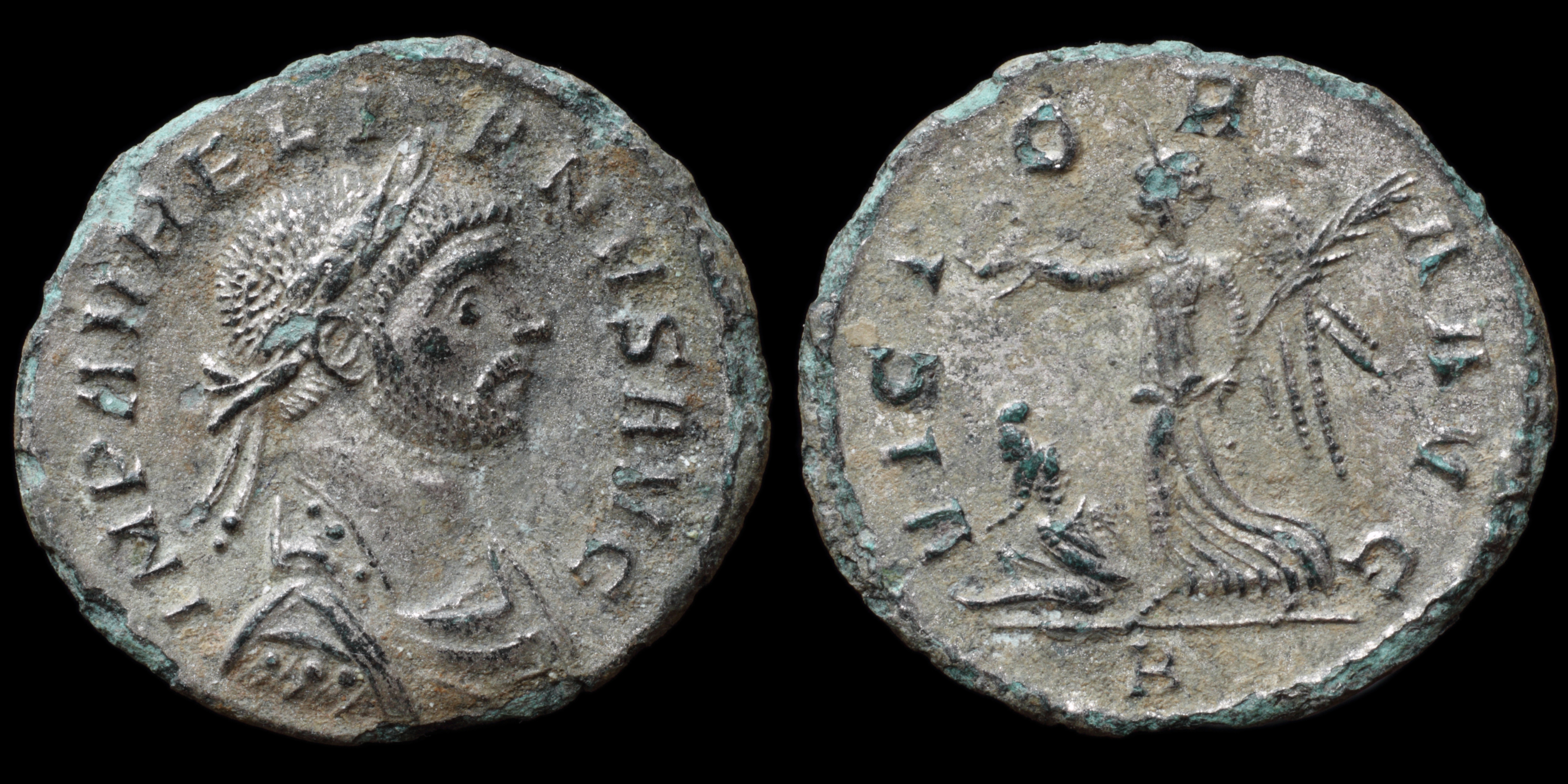
Reverse: Victory advancing left, holding wreath and palm; bounded captive left, head right; VICT_O_RI_A AVG / R
Die Orientation: -
Weight: 2 g
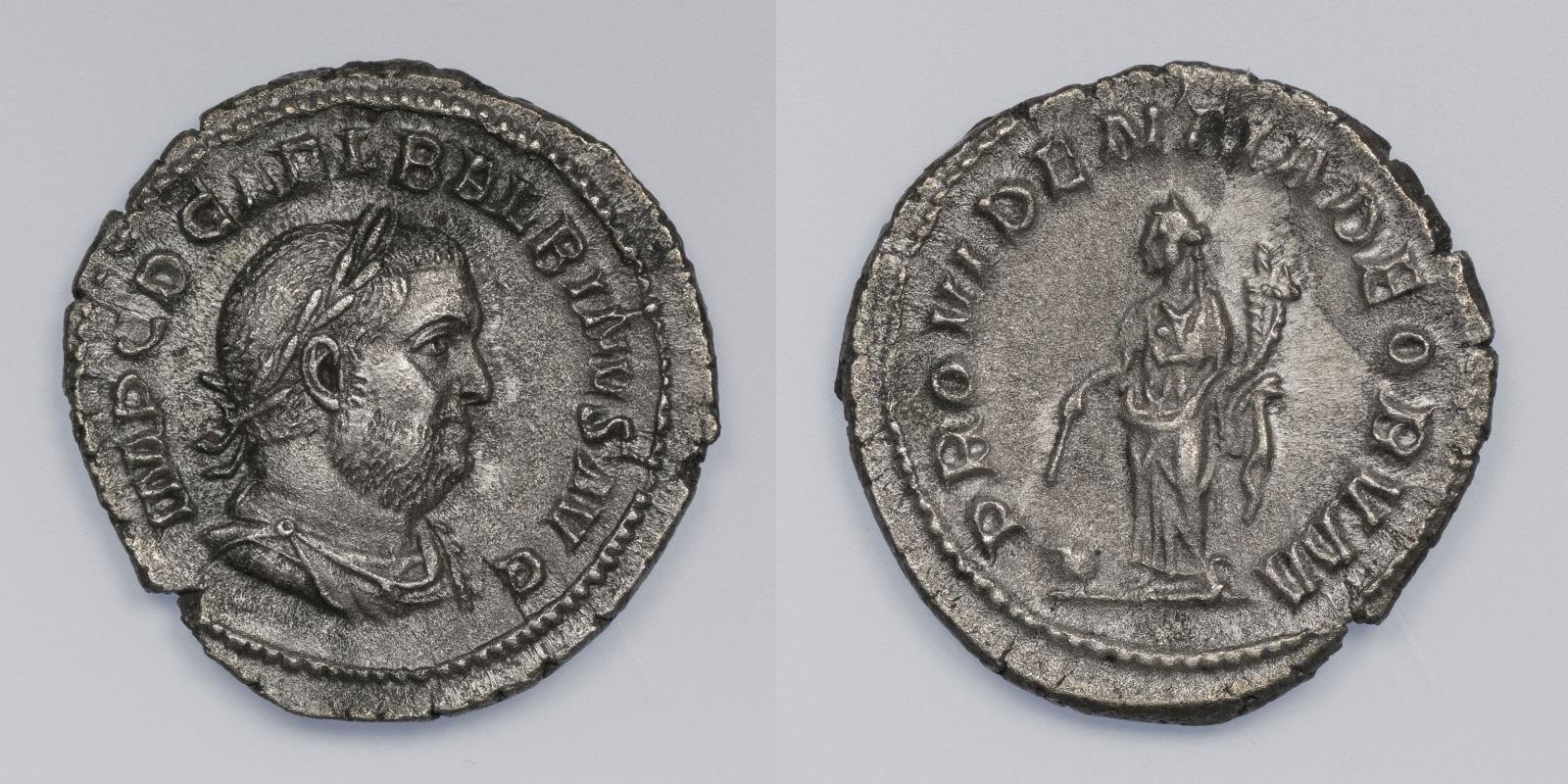
Reverse: PROVIDENTIA DEORVM, Providentia standing facing, head left, holding wand over globe and cornucopia
Die Orientation: 12 H
Weight: 2.44 g
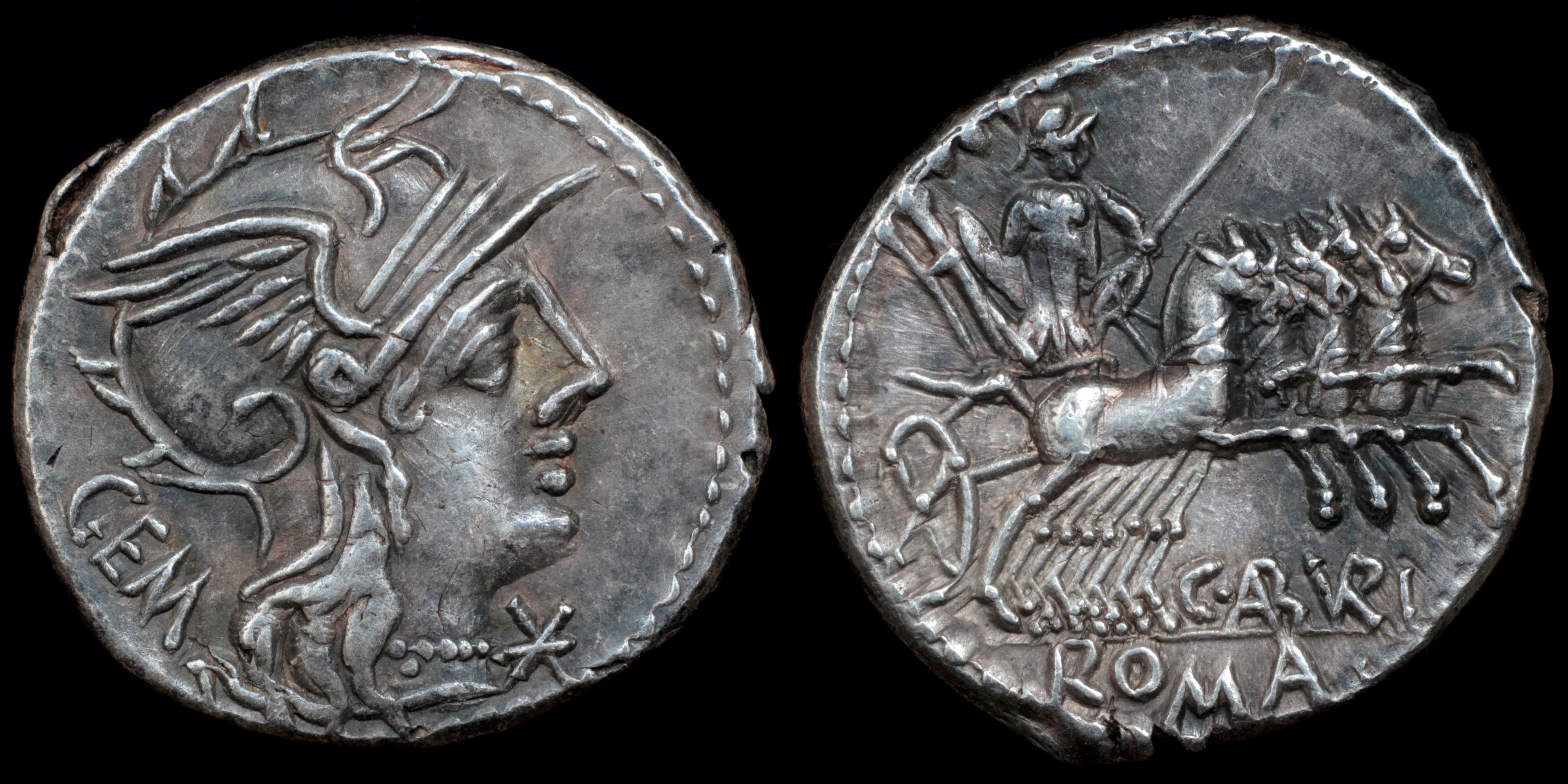
Reverse: Mars in quadriga right holding trophy and reins, shield, spear C·(AB)(VR)I ROMA
Die Orientation: -
Weight: 3.92 g
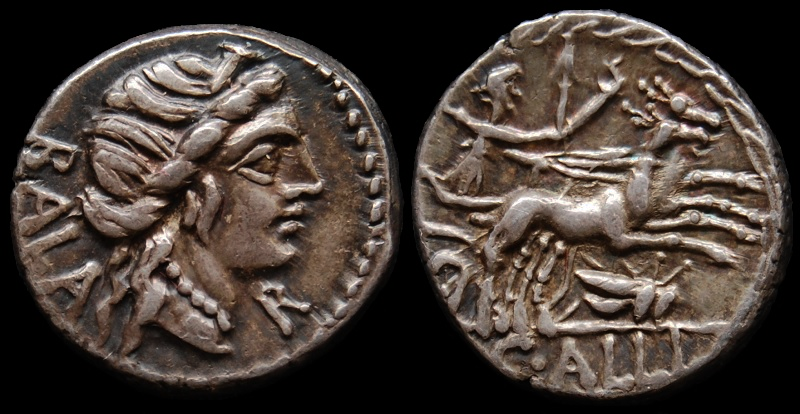
Reverse: Diana in a biga of stags to right; with quiver over shoulder and holding sceptre and reins in left hand and torch in right; grasshopper below stags, C•ALLI in exergue; all within laurel wreath.
Die Orientation: -
Weight: 3.88 g
"In Roman mythology, Diana was the goddess of the hunt, the moon and childbirth, associated with wild animals and woodland, and having the power to talk to and control animals. Oak groves were especially sacred to her. She was equated with the Greek goddess Artemis, though she had an independent origin in Italy. In myth, Diana was born with her twin brother Apollo on the island of Delos, daughter of Jupiter and Latona. Diana was known to be the virgin goddess of childbirth and women. She was one of the three maiden goddesses, along with Minerva and Vesta, who swore never to marry."
Provenance: e-Bay sale (November 2017).
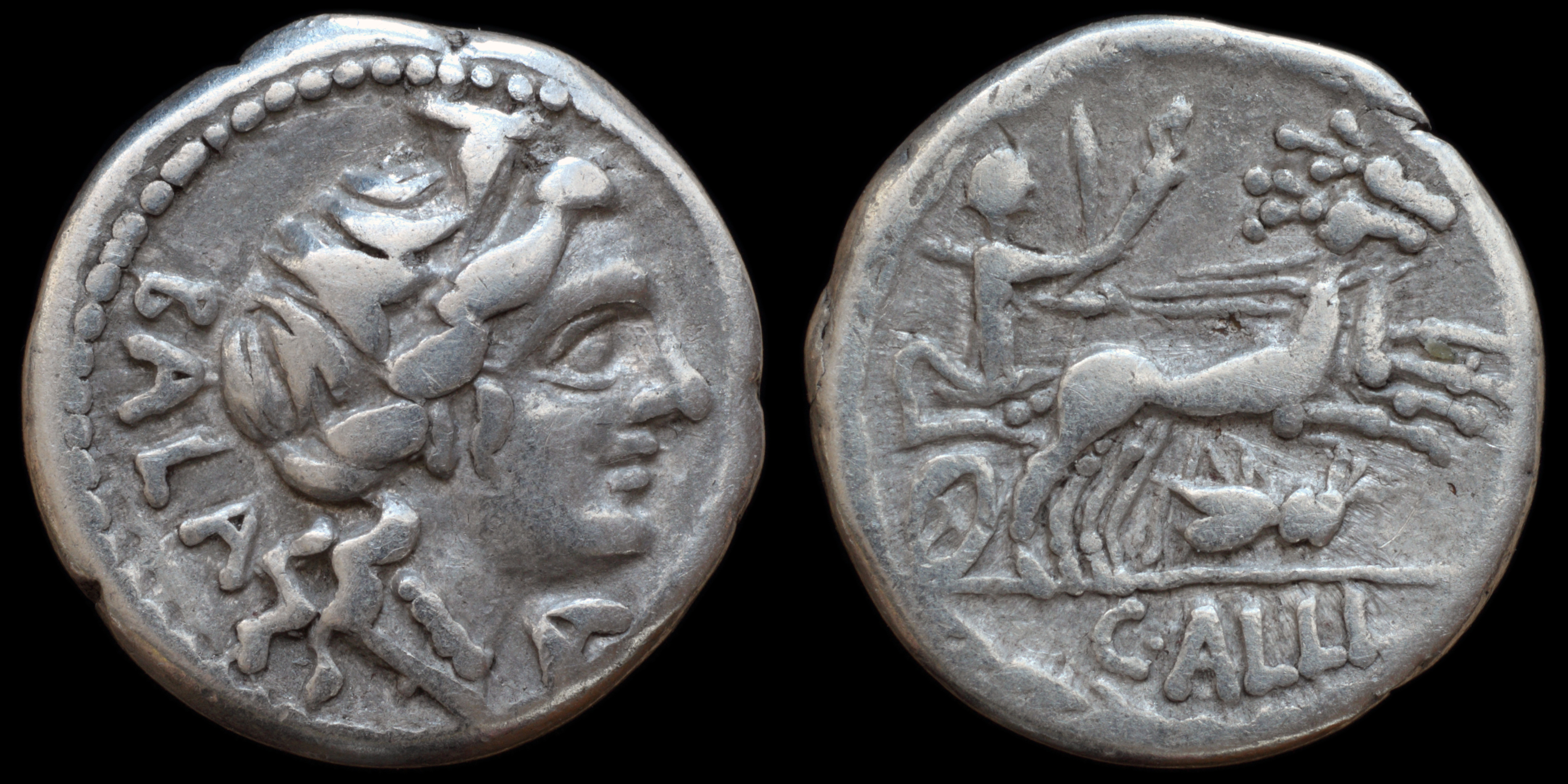
Reverse: Diana in biga of stags holding torch and scepter in right hand and reins in left hand; below grasshopper right; C•ALLI
Die Orientation: -
Weight: 3.9 g
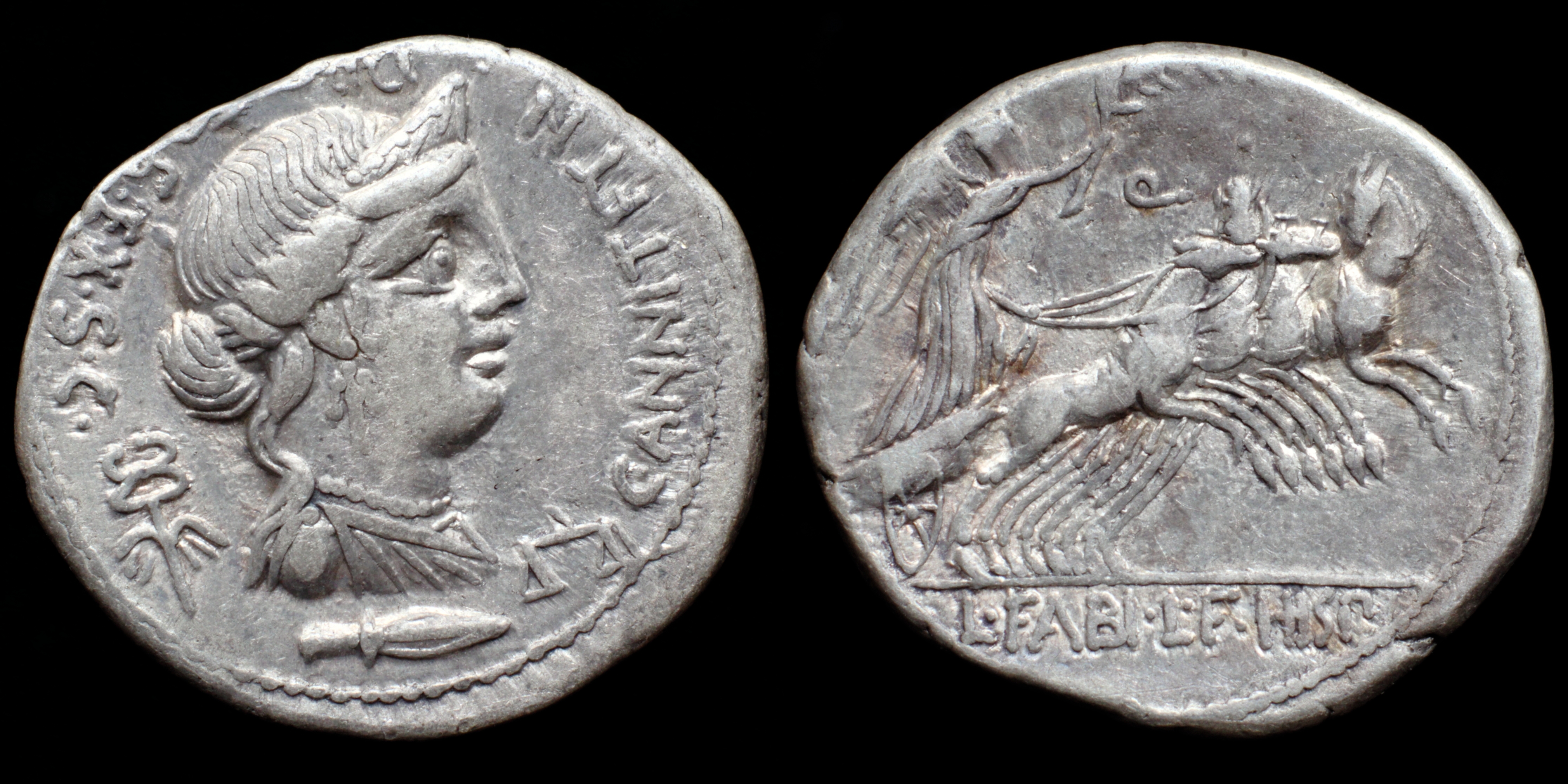
Reverse: Victory in quadriga right, holding palm branch and reins, Q / L·FABI·L·F·HISP
Die Orientation: -
Weight: 3.7 g
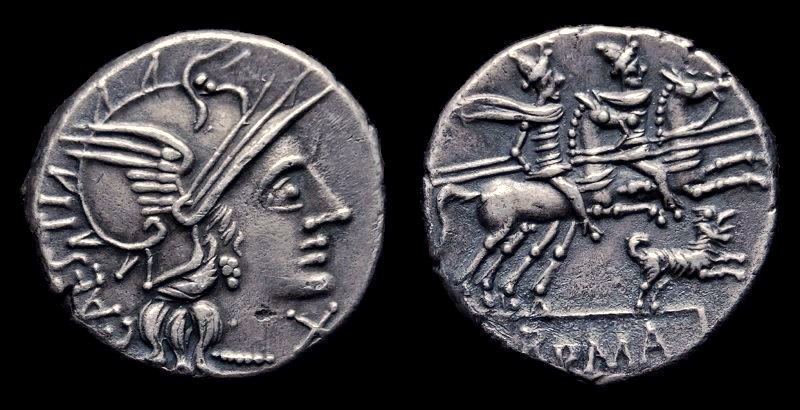
Reverse: The Dioscuri galloping right; below, puppy right with both fore-feet raised; ROMA in exergue.
Die Orientation: 10 H
Weight: 3.71 g
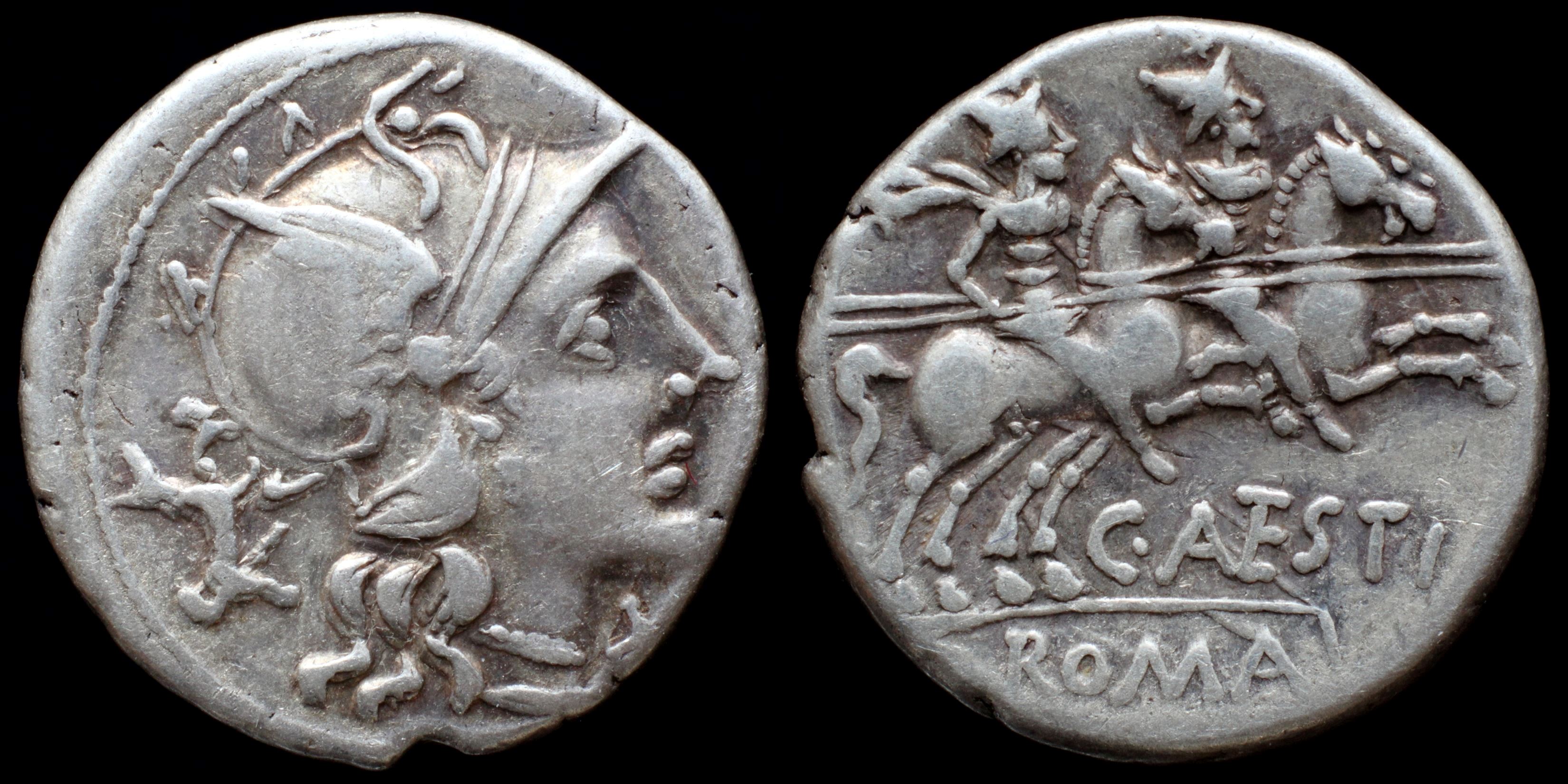
Reverse: Dioscuri right riding on horses, stars over pilei, each holding spear reins; C·(ANTE)STI / ROMA
Die Orientation: -
Weight: 3.8 g
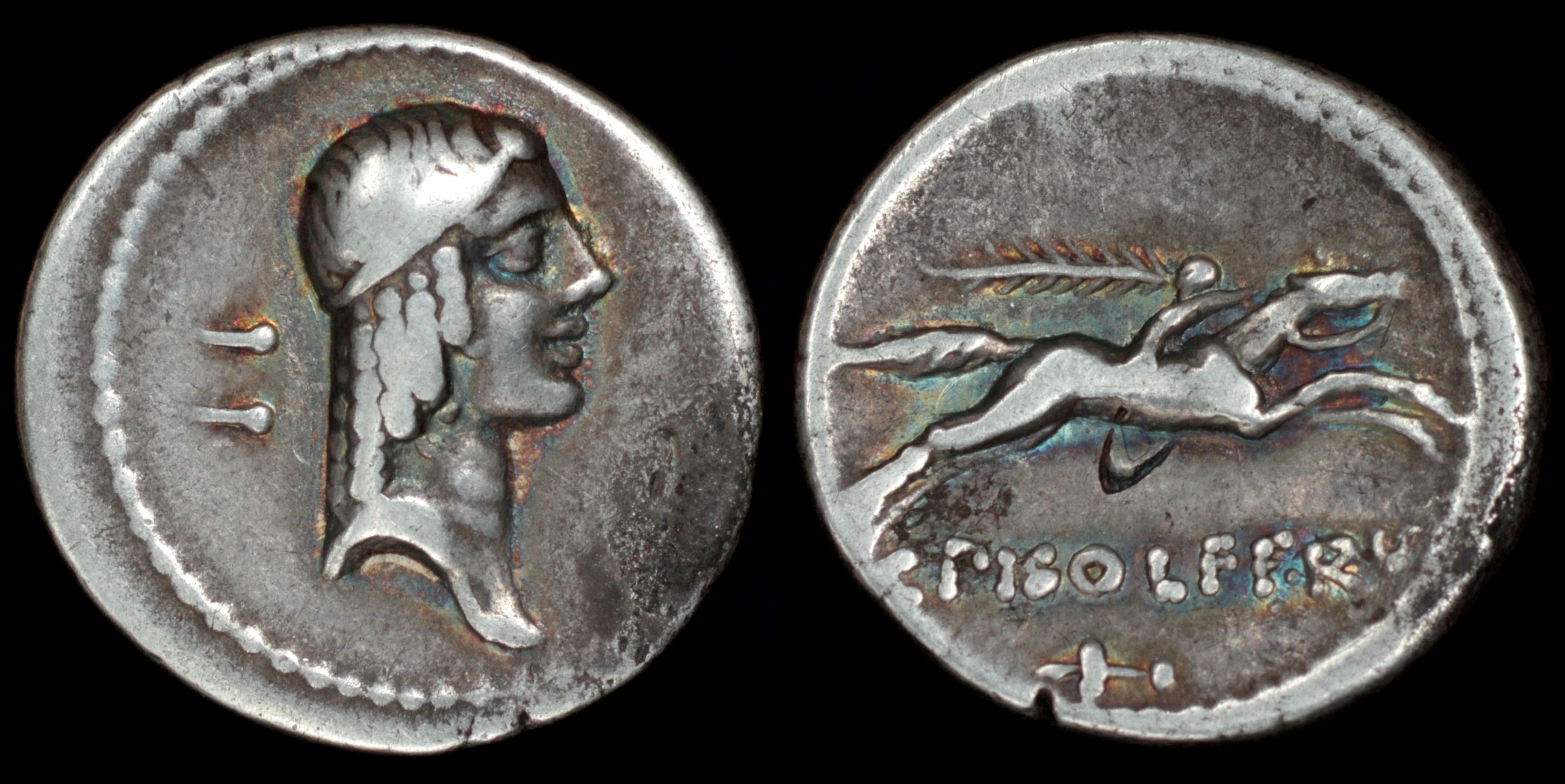
Reverse: naked horseman galloping right, holding palm branch and reins dagger? in exergue, C·PISO L F FRVGI
Die Orientation: -
Weight: 3.9 g
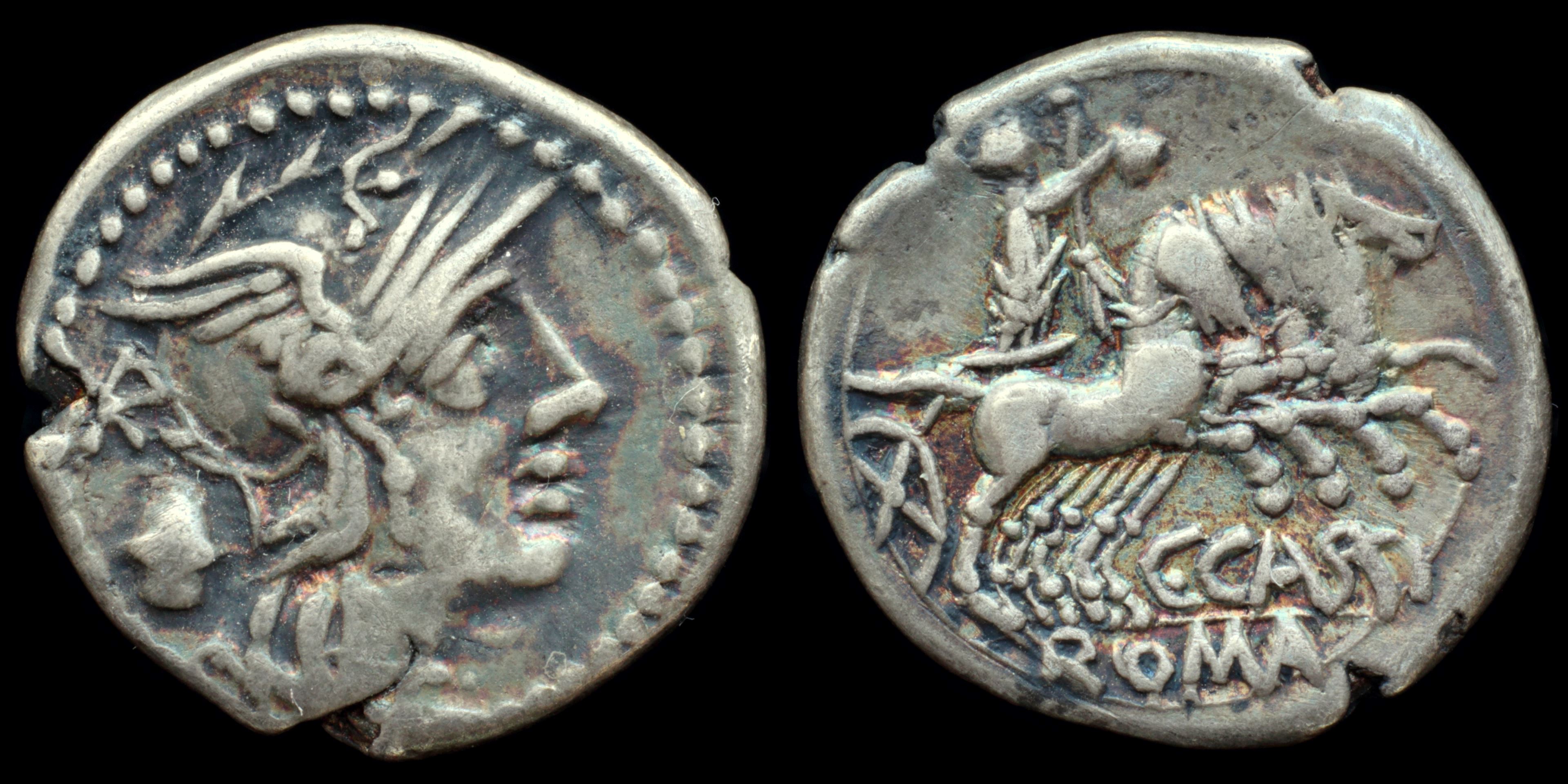
Reverse: Libertas in quadriga right holding pileus, scepter and reins; C·CASSI / ROMA
Die Orientation: -
Weight: 3.85 g
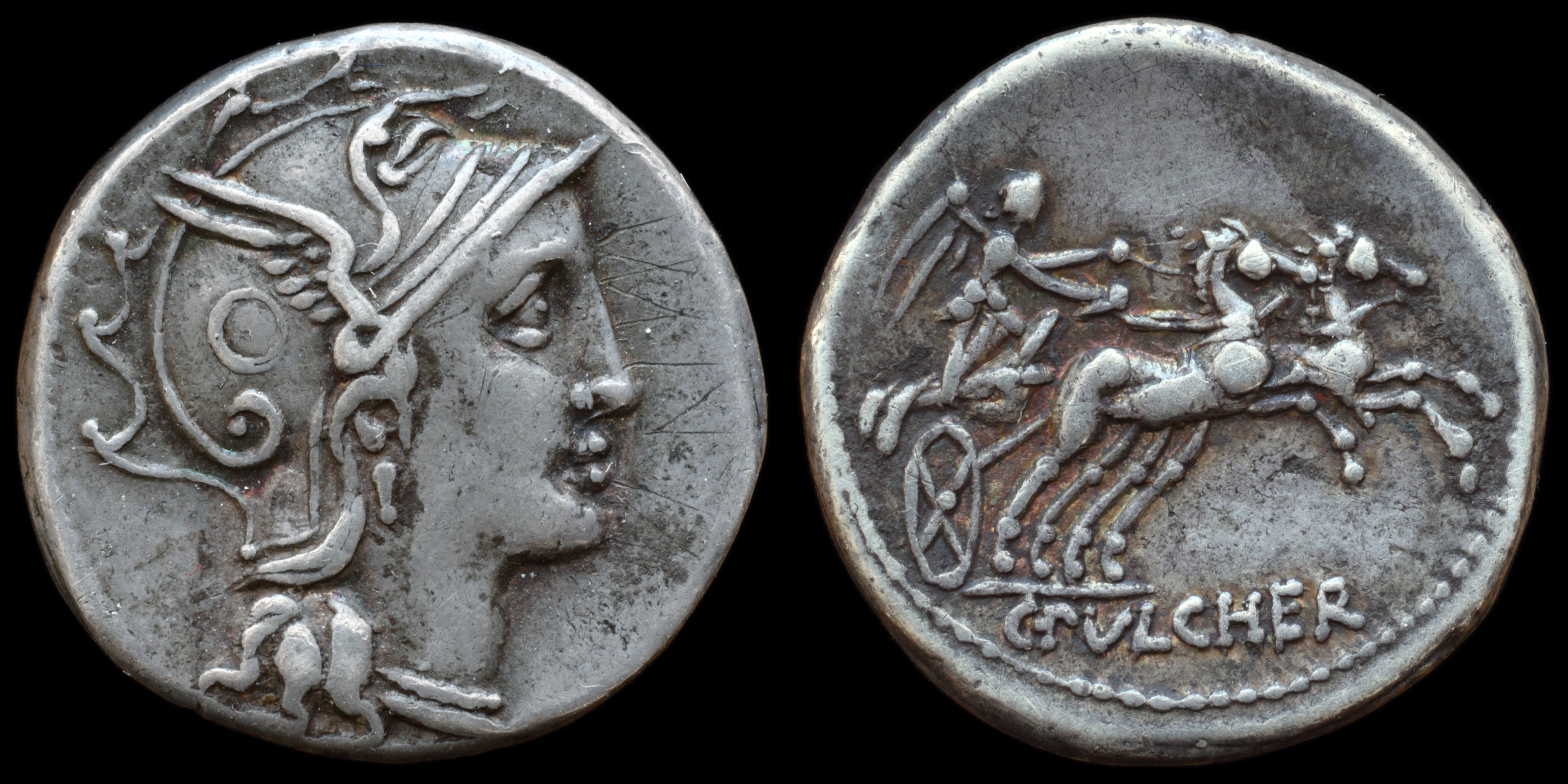
Reverse: Victory in biga right holding reins in both hands; C·PVLCHER
Die Orientation: -
Weight: 4.1 g
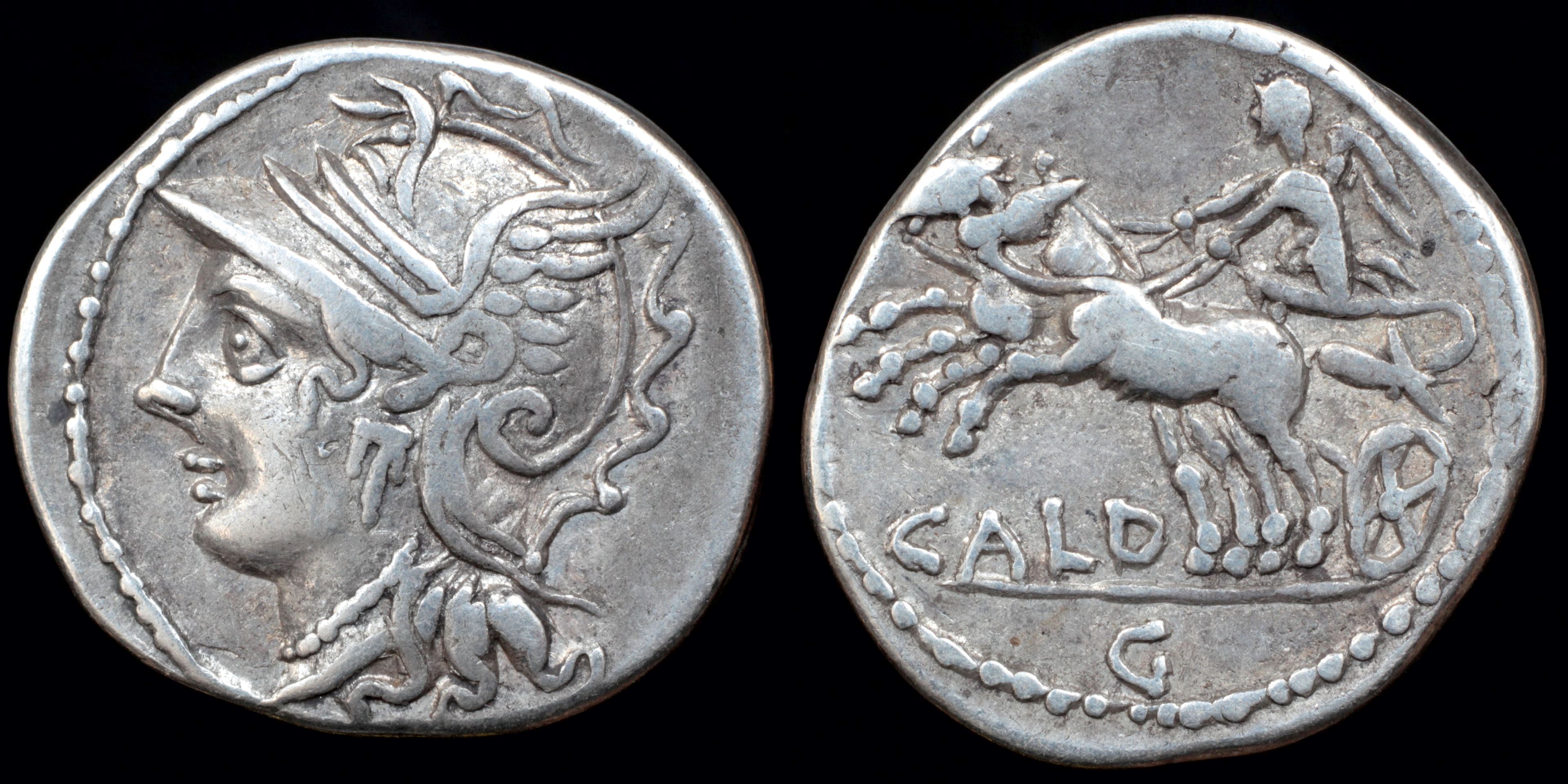
Reverse: Victory in biga left CALD G
Die Orientation: -
Weight: 3.9 g
Moneyer was consul in 94 BC. In 107 BC, he was elected tribune of the plebs and passed a lex tabellaria, which ordained that in the courts of justice the votes should be given by means of tables in cases of high treason. He was a praetor in 100 or 99 BC, and proconsul of Hispania Citerior the following year. This is represented by standard on the obverse along with emblem of the conquered town Clunia.
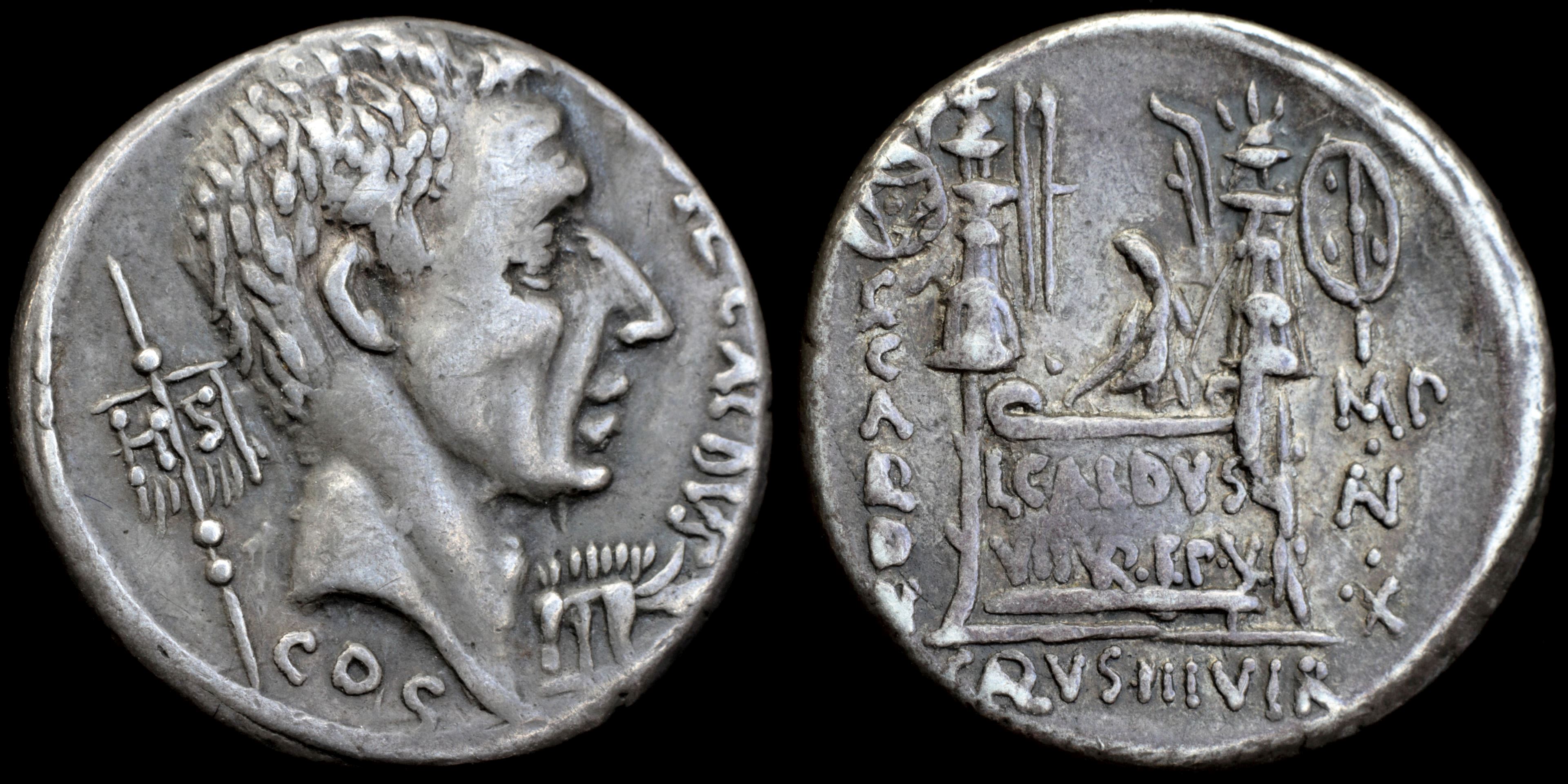
Reverse: statue of god seated left between two trophies of arms, all on a high lectisternium with front inscribed L·CALDVS / VII·(VIR)·EP(VL) (Lucius Caldus Septemvir Epulo), C·CALDVS on left, IMP·(AV)·X (Imperator Augur Decemvir) on right, C(ALD)VS III VIR below
Die Orientation: -
Weight: 3.9 g
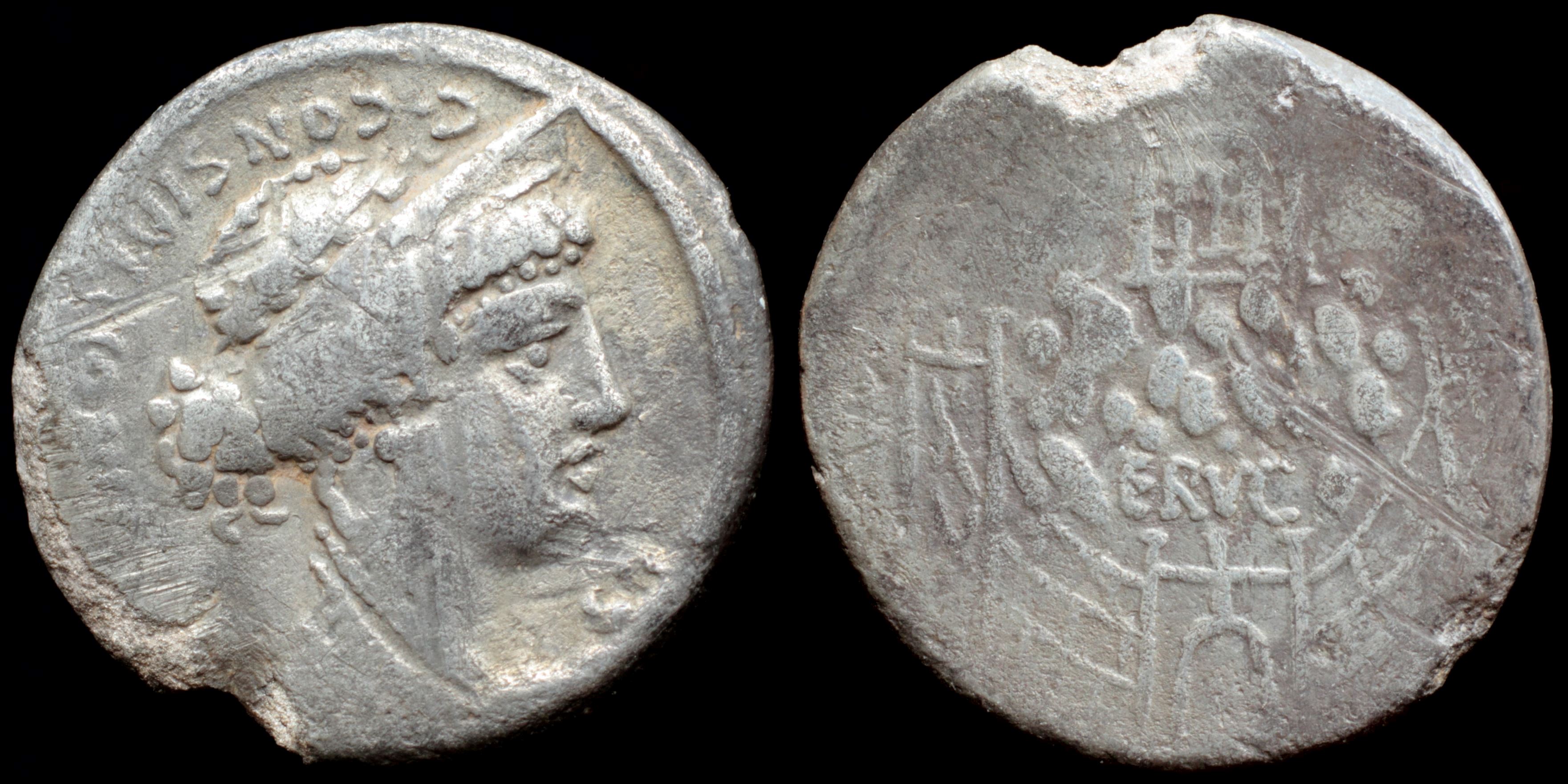
Reverse: tetrastyle temple of Venus Erycina on the top of mount Eryx, Porta Collina (place of Sulla's great victory)*, ERVC
Die Orientation: -
Weight: 3.6 g
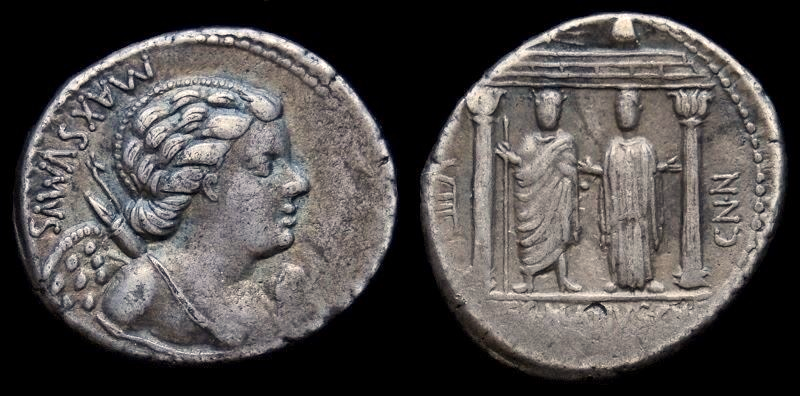
Reverse: Distyle temple with two facing statues within; Jupiter, to the left, holding staff, and Libertas, on the right, holding pileus. Above pediment, thunderbolt and pileus. VIII (control mark) in left field; CN•N in right field; C•EGNATIVS•CN•F in exergue.
Die Orientation: -
Weight: 3.98 g
This moneyer, a man of somewhat disreputable character, was admitted into the Roman senate, but was subsequently expelled by the censors. Not much more is known about him.
In Catullus love poetry, Cupid and Venus are constantly paired as the patrons of all sensual love and they have maintained the same symbolism even today for people who no longer worship the gods. The bust of Cupid so prominently placed on the obverse of Egnatius coin, depicted with his cherub-like features and armed with a bow whose arrows only wound one's heart with passion and desire, but never kill, is symbolic of peace and the pleasure it brings.
This issue is the only surviving record of the Temple of Jupiter Libertas. The temple of Libertas was built on the Aventine hill ca 246 B.C by the plebeian aediles Tiberius Sempronius Gracchus and Gaius Fundanius. The money to finance the erection of the temple came from fines. The main contributor was Claudia, the sister of the consul of 249 B.C, Publius Claudius Pulcher. On an occasion when she found it hard to make her way through the crowded streets of Rome she exclaimed that she wished her brother was still alive to lose another fleet for the Romans for that would thin out the population a little. That insensitive comment cost her 25.000 asses.
In the course of time the temple came to be better known as the temple of Jupiter Libertas. The original connection between the two deities may be found in the belief that Libertas was the daughter of Jupiter and Juno. Egnatius depiction of the temple shows its true bipartite nature at that time. It was restored by Augustus as part of his grand renovation of Rome.”
Provenance: Purchased from Moruzzi Numismatica (5 March 2018). Ex Varesi 63 (26 November 2013), lot 46.
.jpg)
Reverse: Distyle temple with figures of draped Jupiter and Libertas standing facing within; C EGNATIVS CN F below, CN N upwards to right, control numeral (VIII) to left
Die Orientation: 2 H
Weight: 3.96 g
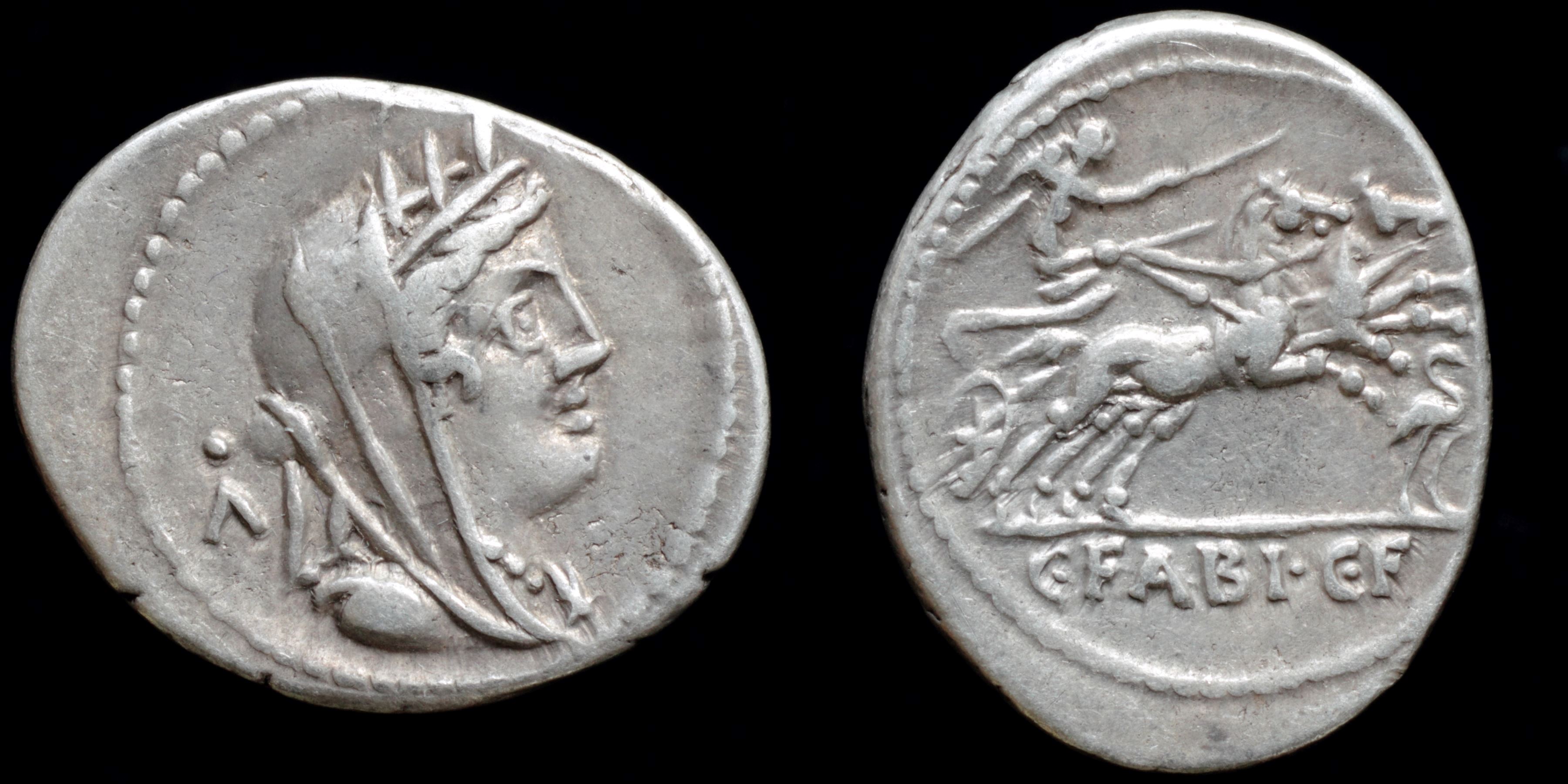
Reverse: Victory in biga right, holding goad and reins; heron right C·FABI·C·F
Die Orientation: -
Weight: 4 g
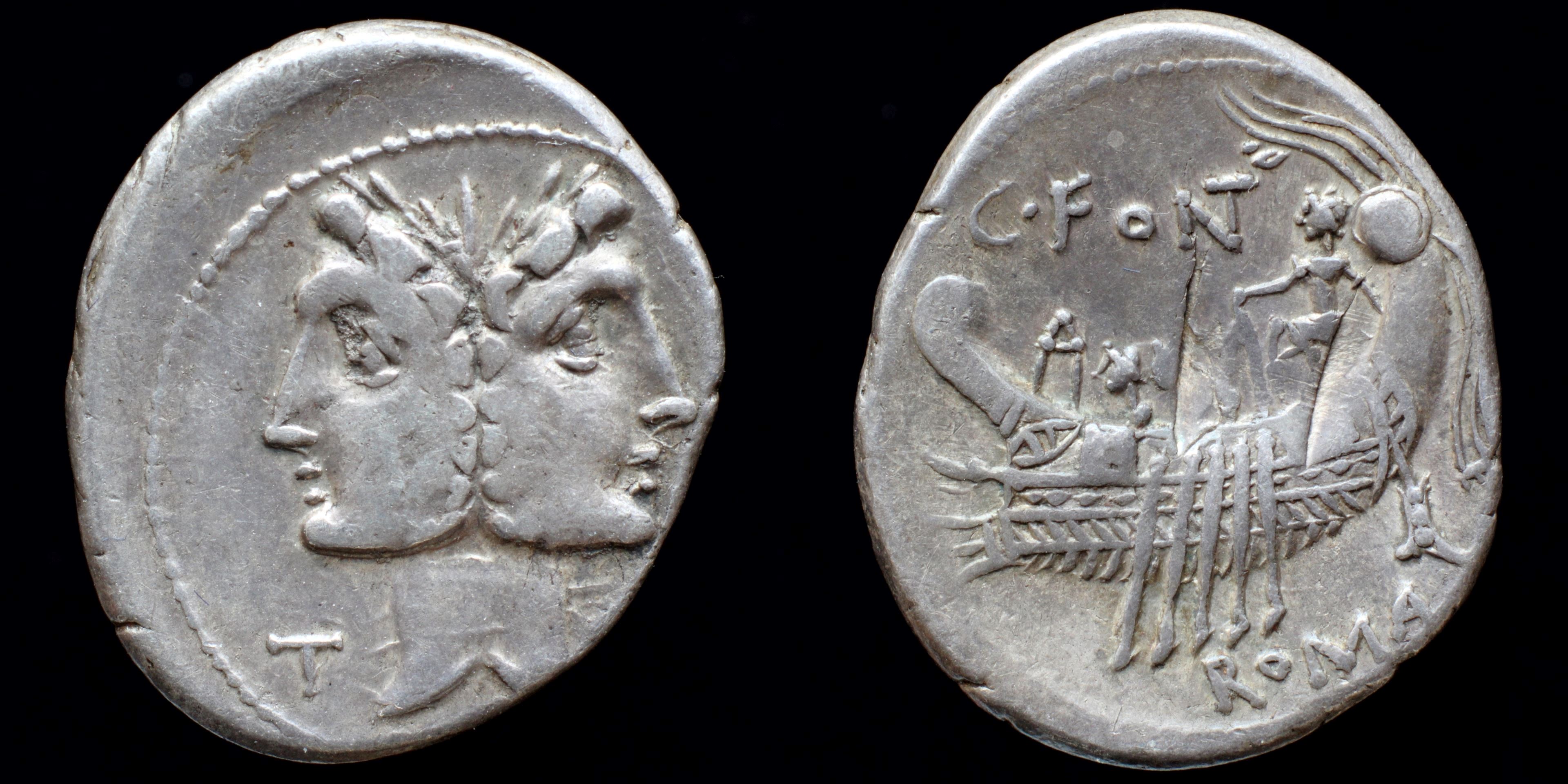
Reverse: war galley left, acrostolium, ram and deck house at prow, three sailors and five oars amidships; deck house, gubernator, rudder, and apluster at stern; C·FO(NT) / ROMA
Die Orientation: -
Weight: 3.9 g
(9).JPG)
Reverse: Galley left with three rowers, gubernator at stern; C•FONT above, ROMA below
Die Orientation: 7 H
Weight: 3.7 g

Reverse: Galley left with three rowers, gubernator at stern; C•FONT above, ROMA below.
Die Orientation: 7 H
Weight: 3.7 g
Ex Paul James Collection
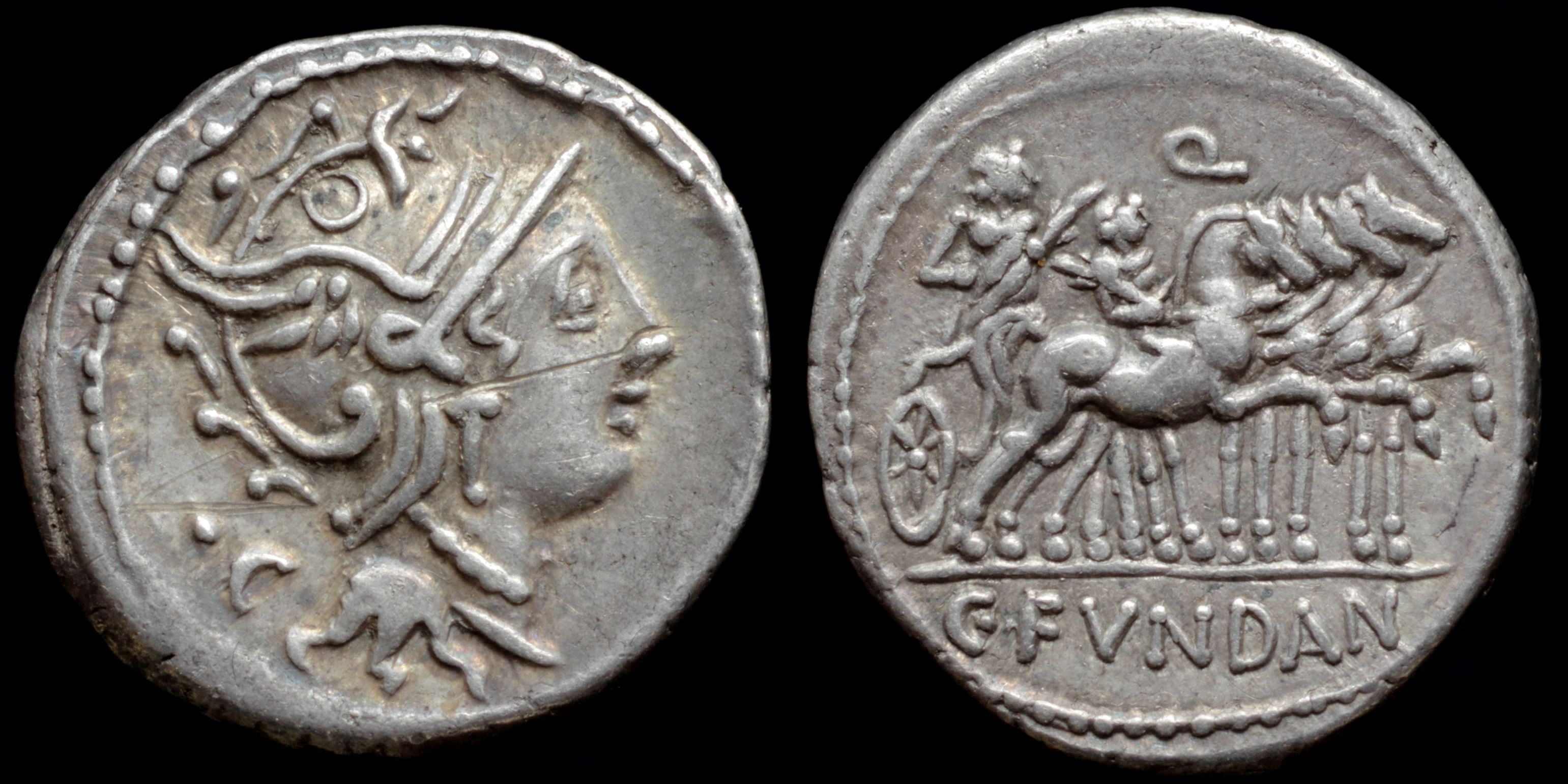
Reverse: Gaius Marius with his son as rider riding in triumphal quadriga right. Gaius Marius holds staff and laurel branch, rider holds laurel branch and reins. Q C·FVNDAN
Die Orientation: -
Weight: 4 g
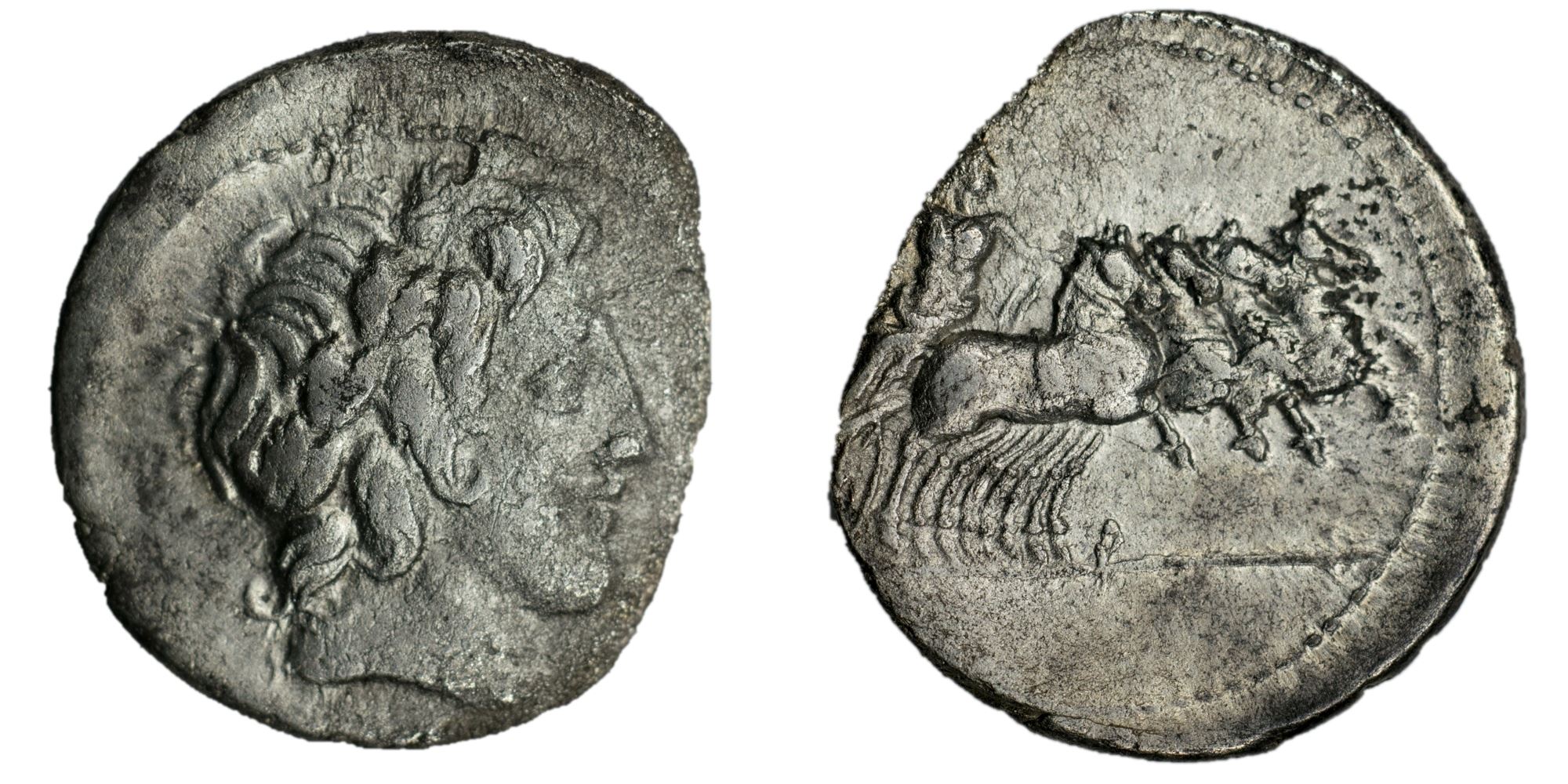
Reverse: Jupiter in Quadriga right, Holding reins and thunderbolt
Die Orientation: 3 H
Weight: 3.37 g
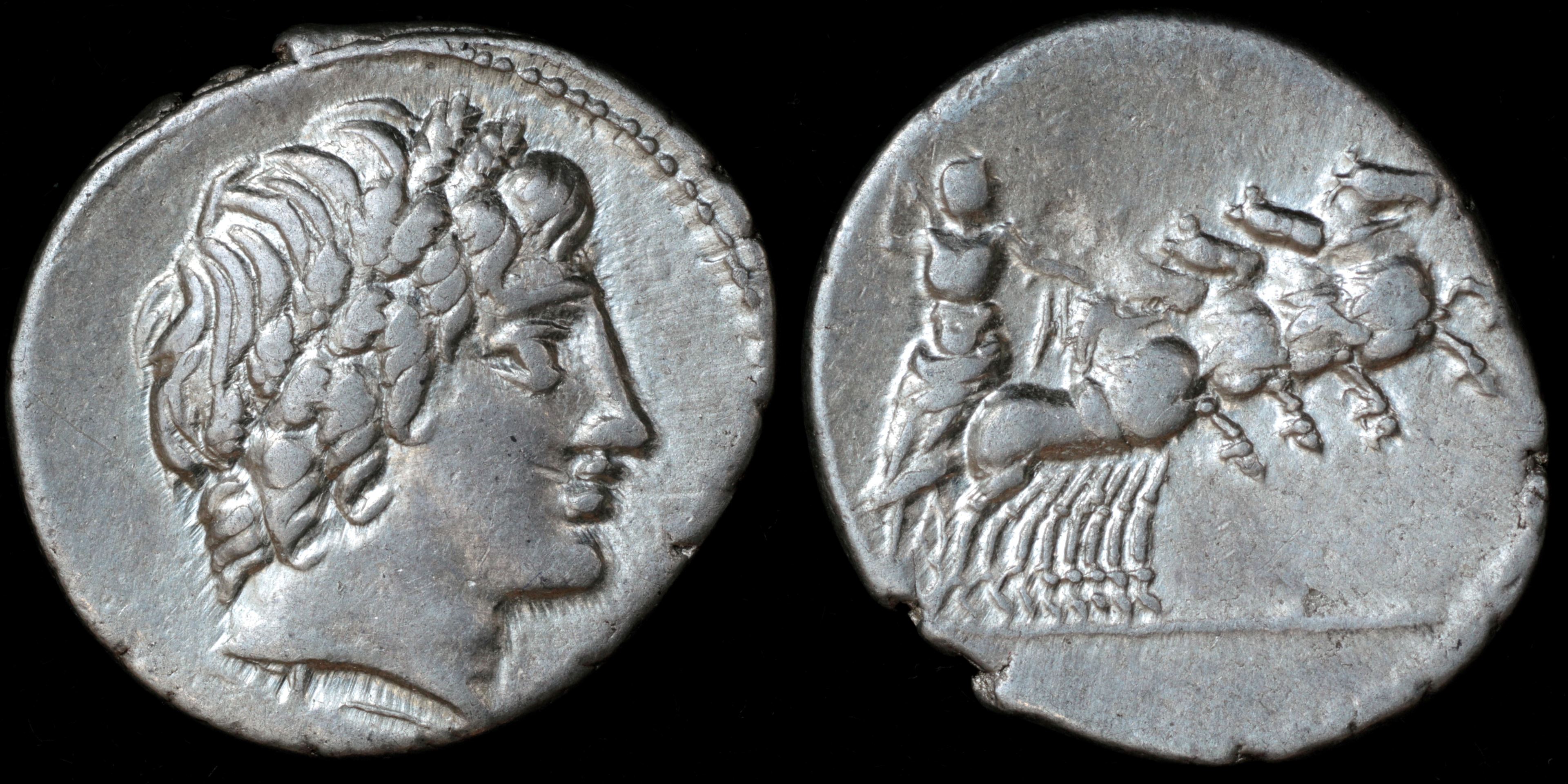
Reverse: Jupiter in quadriga right, holding thunderbolt and reins
Die Orientation: -
Weight: 3.95 g
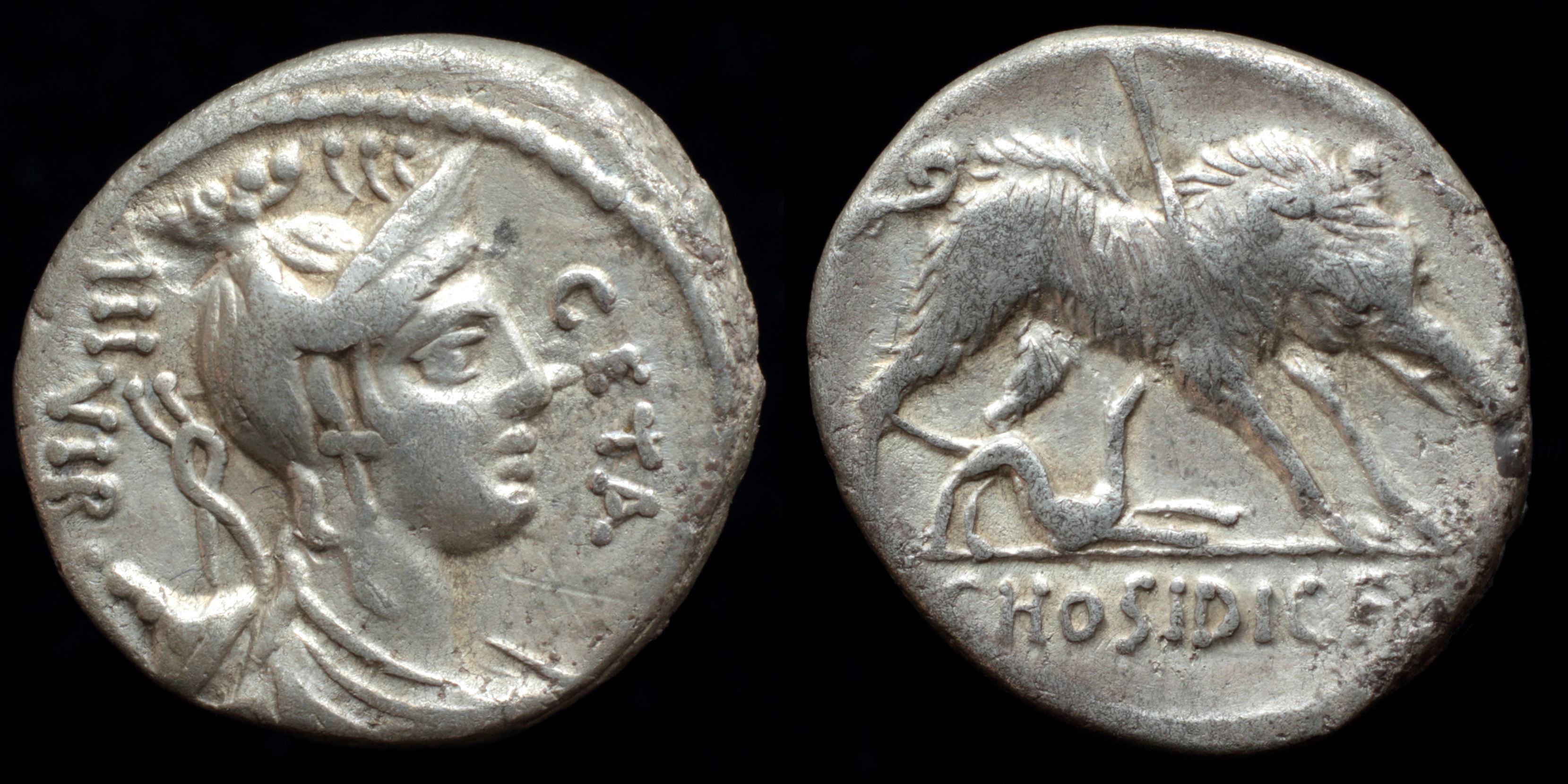
Reverse: attacked boar right, spear in shoulder, hound below, C HOSIDI C F
Die Orientation: -
Weight: 3.6 g
(14).jpg)
Reverse: The Calydonian boar standing right, it’s front legs thrust forward, pierced through by a spear and harried by a hound below; C•HOSIDI•C•F in exergue.
Die Orientation: 6 H
Weight: 3.98 g
_2.jpg)
Reverse: Calydonian boar standing right, pierced by spear and harried by hound below; C HOSIDI C F in exergue
Die Orientation: 6 H
Weight: 3.89 g
Ex. Andrew McCabe Collection (CNG Electronic Auction 472; Lot 259); Ex. Numismatica Ars Classica 114 (Part 2; Lot 1326); Ex. Gorny & Mosch 186 (Lot 1798). Notes from Andrew McCabe: "I purchased this coin due to the really exceptional speared boar and dog on the reverse and the very large flan, but later found an example from the collection of Benjamin Nightingale, a well-known 19th century antiquarian. My new coin has a less cute boar, but I had to choose between provenance and art." Andrew's loss is my gain!
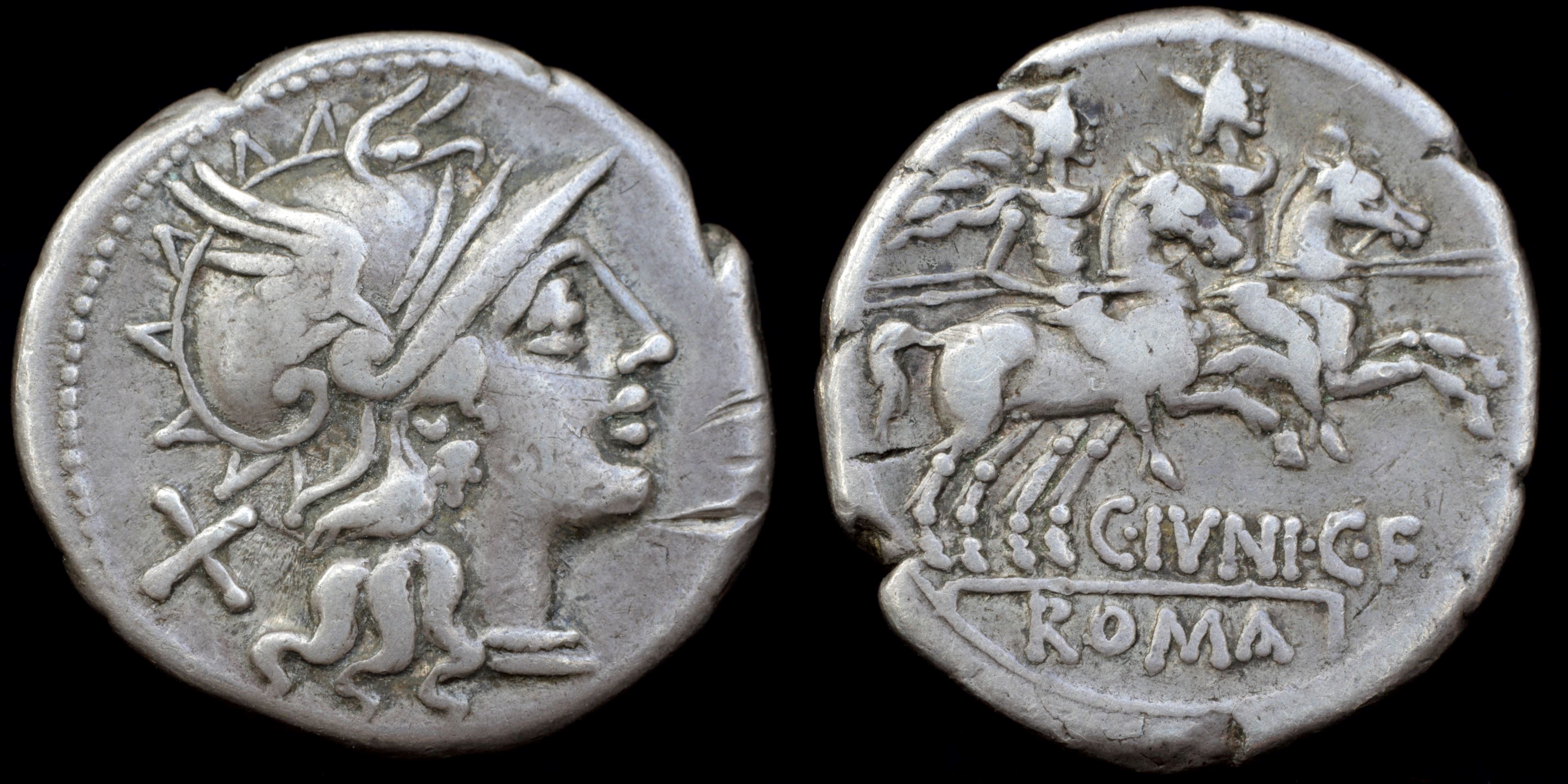
Reverse: Dioscuri on horses riding right holding spears reins; stars over their pilei C·IVNI·C·F ROMA
Die Orientation: -
Weight: 3.9 g
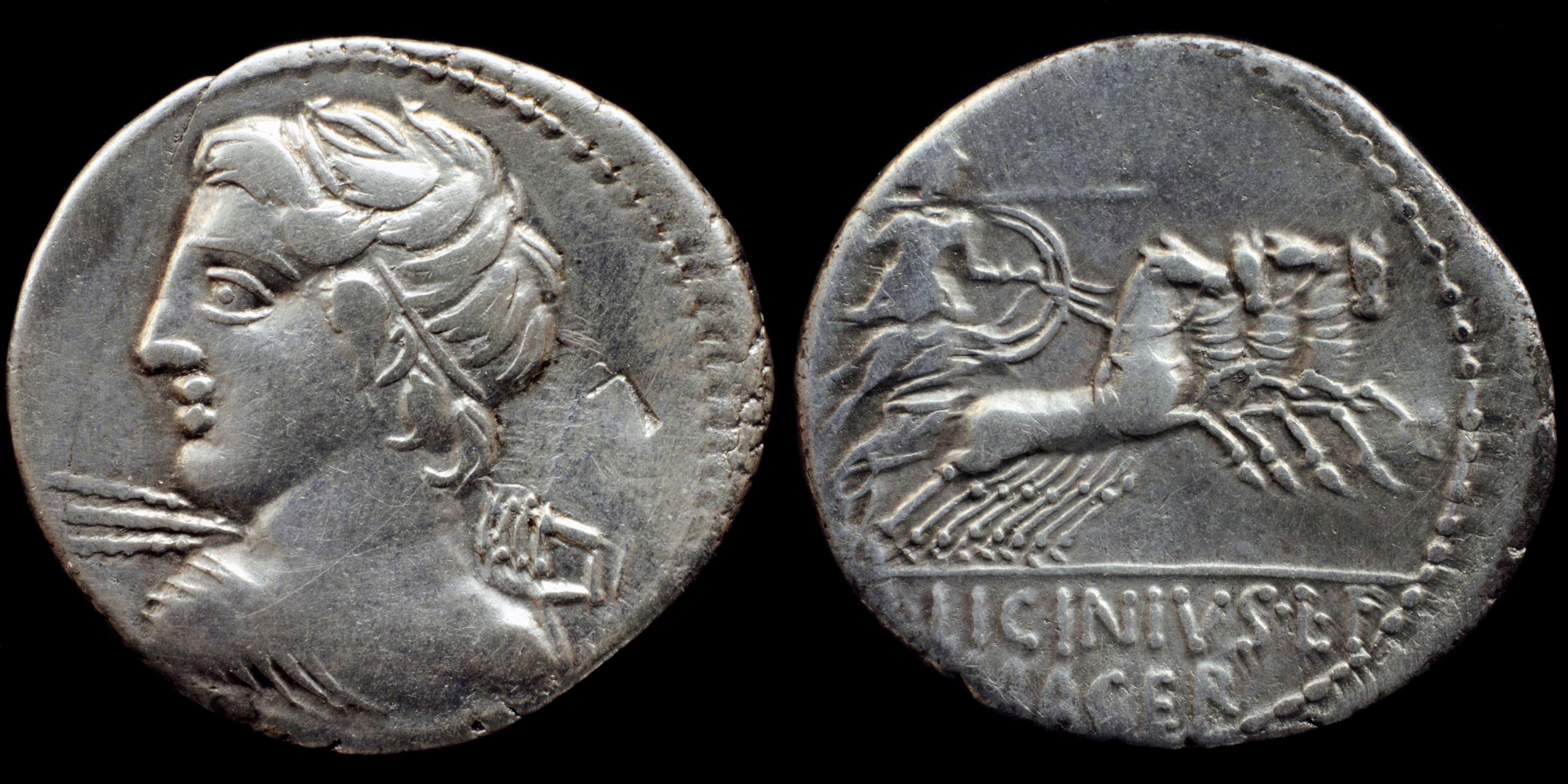
Reverse: Minerva in quadriga right holding javelin and reins, shield C·LICINIUS·L·F / MACER
Die Orientation: -
Weight: 3.66 g
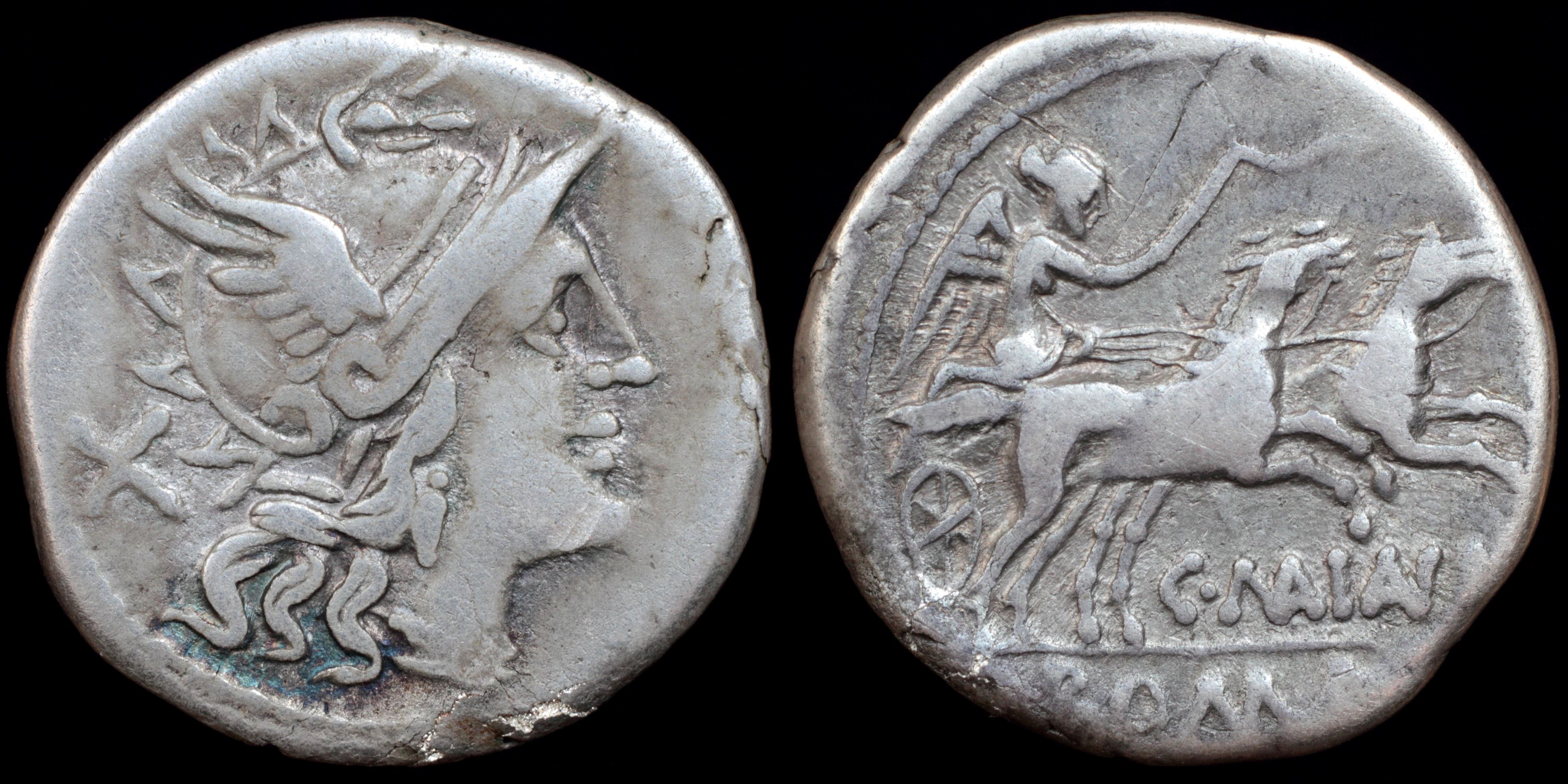
Reverse: Victory in biga right holding whip and reins C. (MA)I(AN)I ROMA
Die Orientation: -
Weight: 3.39 g
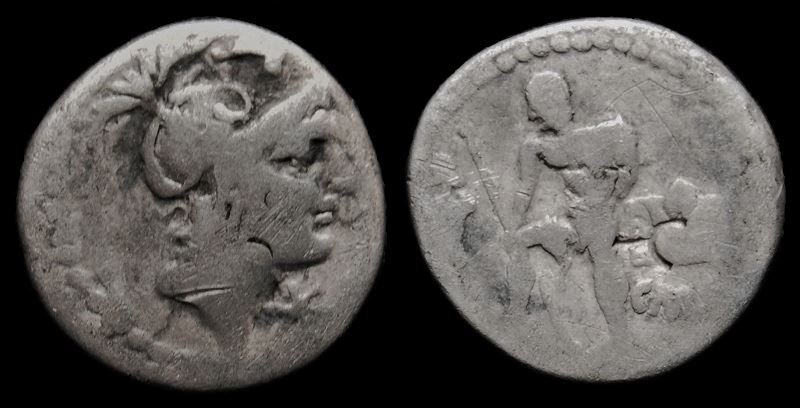
Reverse: Heroic figure standing left, foot on cuirass, holding spear and leaning on tabella divided into two compartments, CMA below, trophy in left field.
Die Orientation: 7 H
Weight: 3.6 g
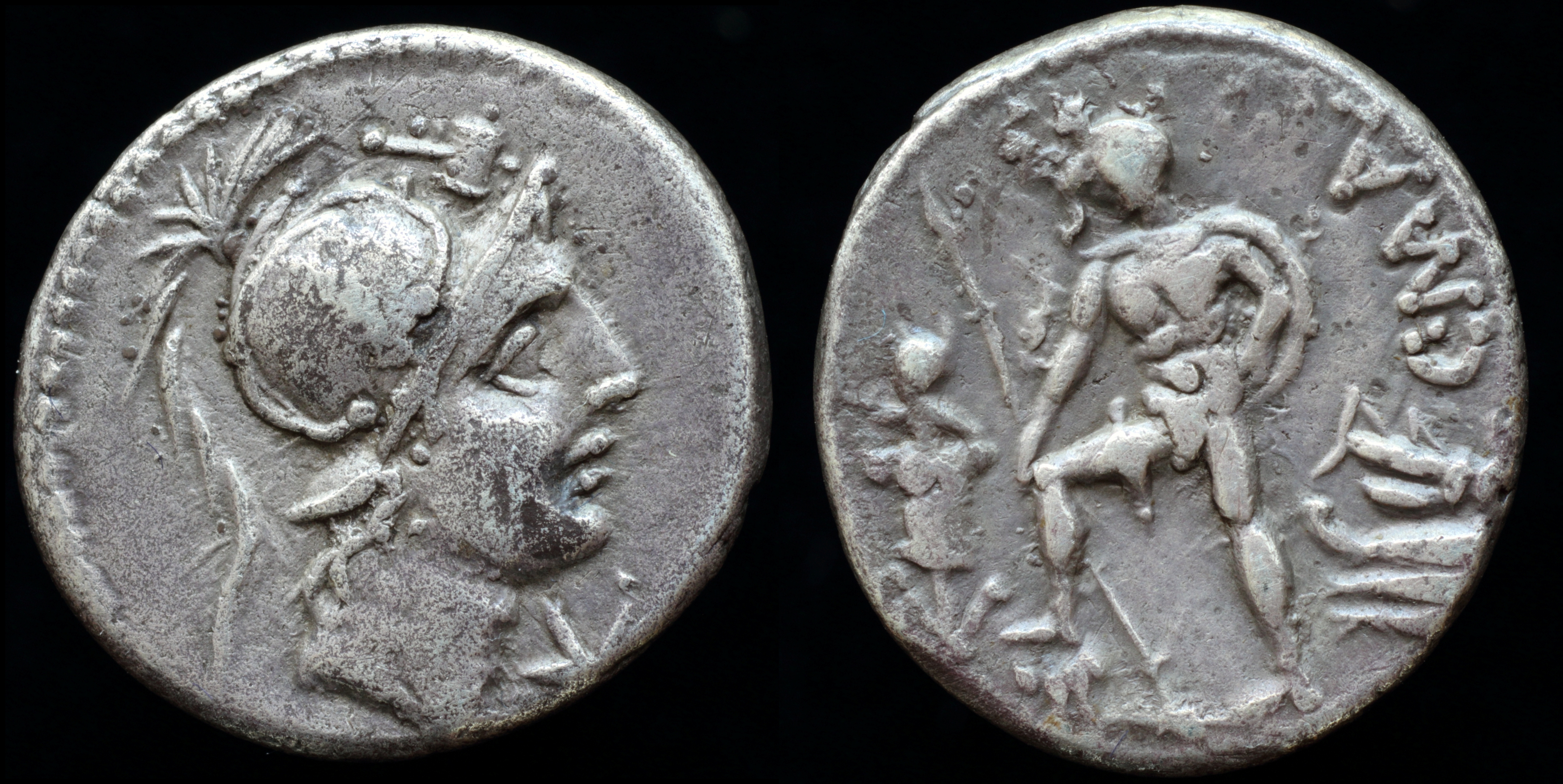
Reverse: warrior standing half left, foot on cuirass, holding spear; trophy left, grasshopper on prow right; C·M(AL)
Die Orientation: -
Weight: 3.8 g
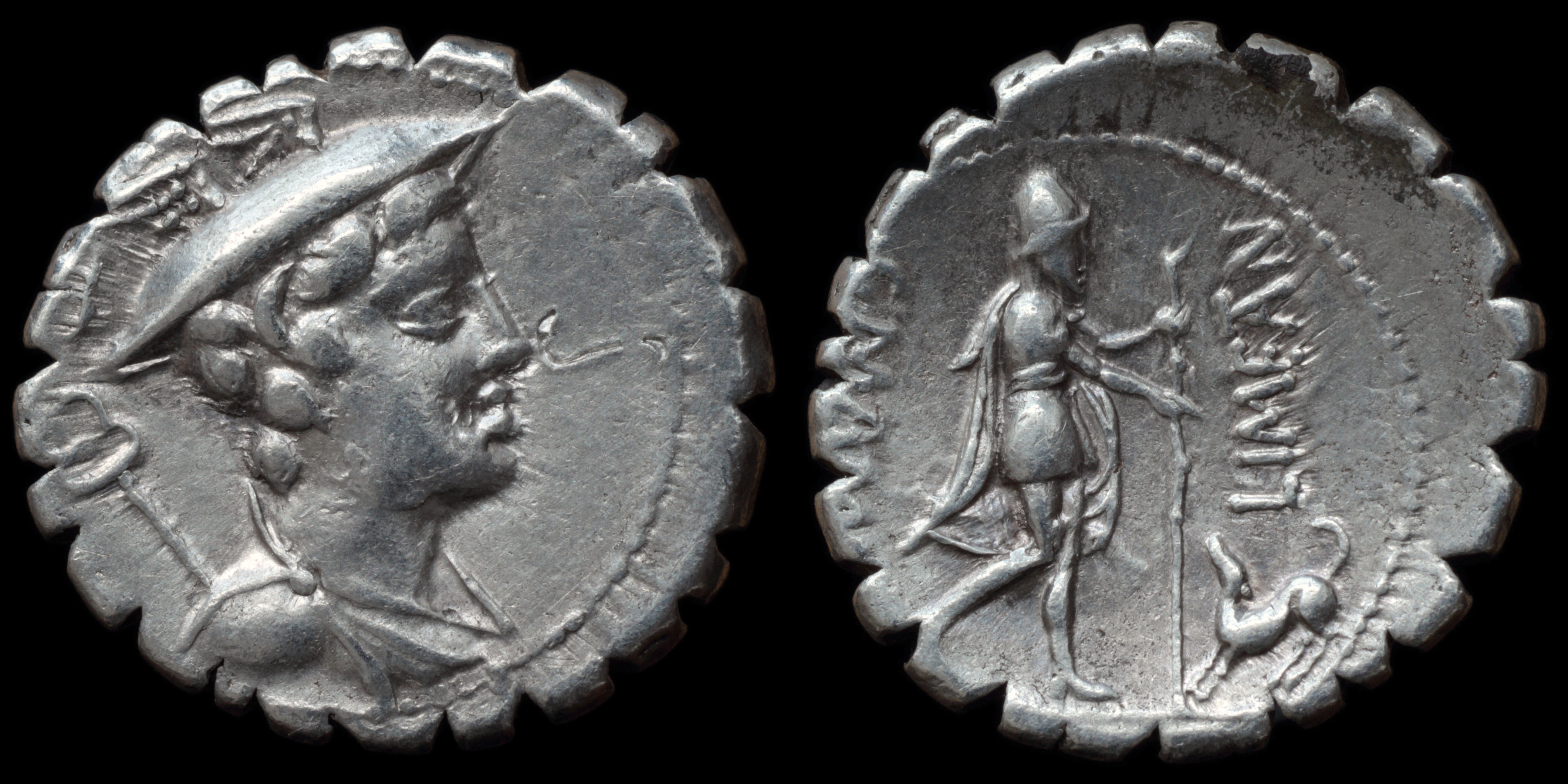
Reverse: Ulysses walking right, holding staff, dog Argus left; C·MAMIL__LIME(TA)N
Die Orientation: -
Weight: 4.1 g
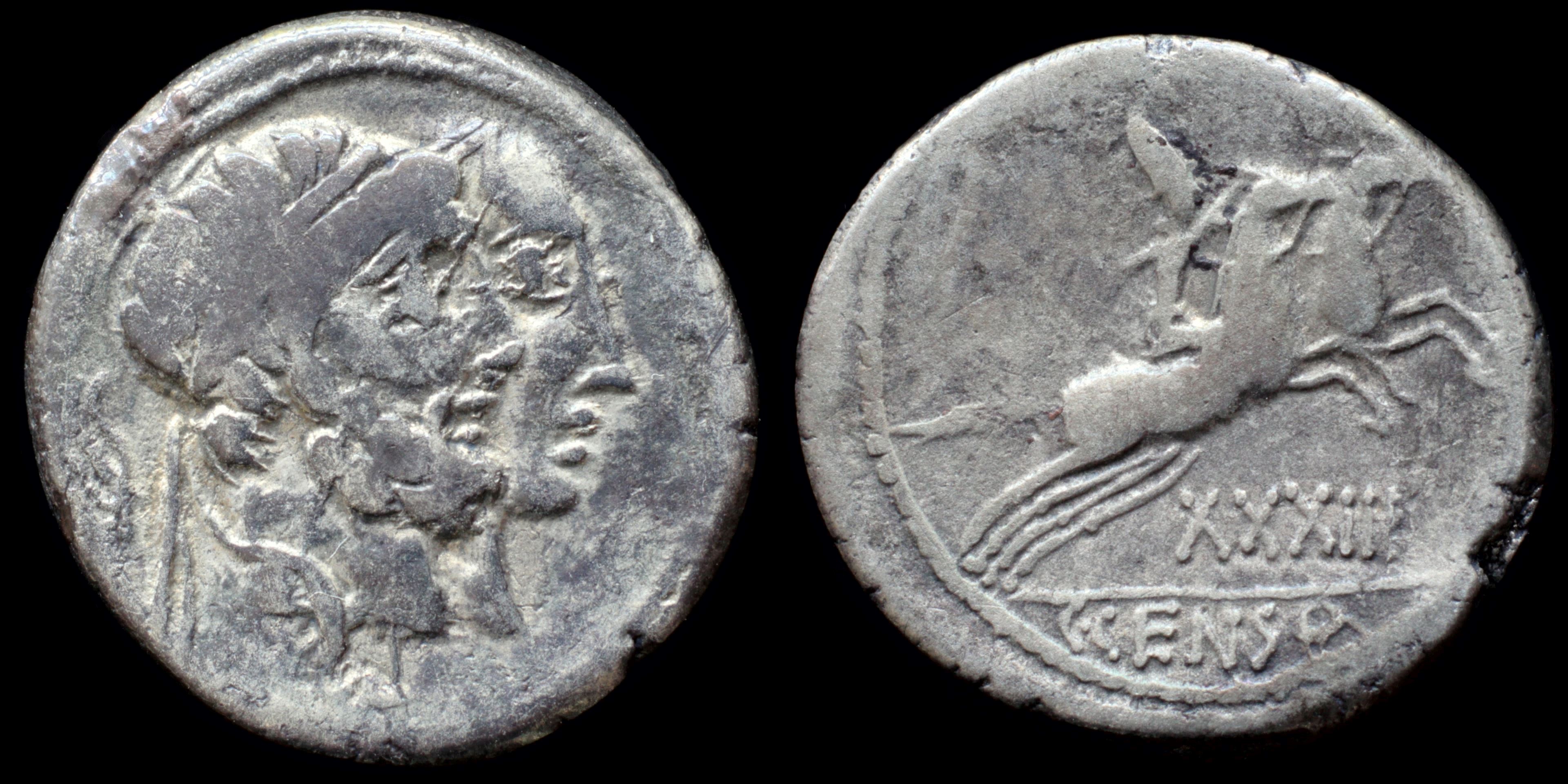
Reverse: Desultor right riding two horses, wearing conical cap, holding whip; XXXIII / C·CENSO
Die Orientation: -
Weight: 3.8 g
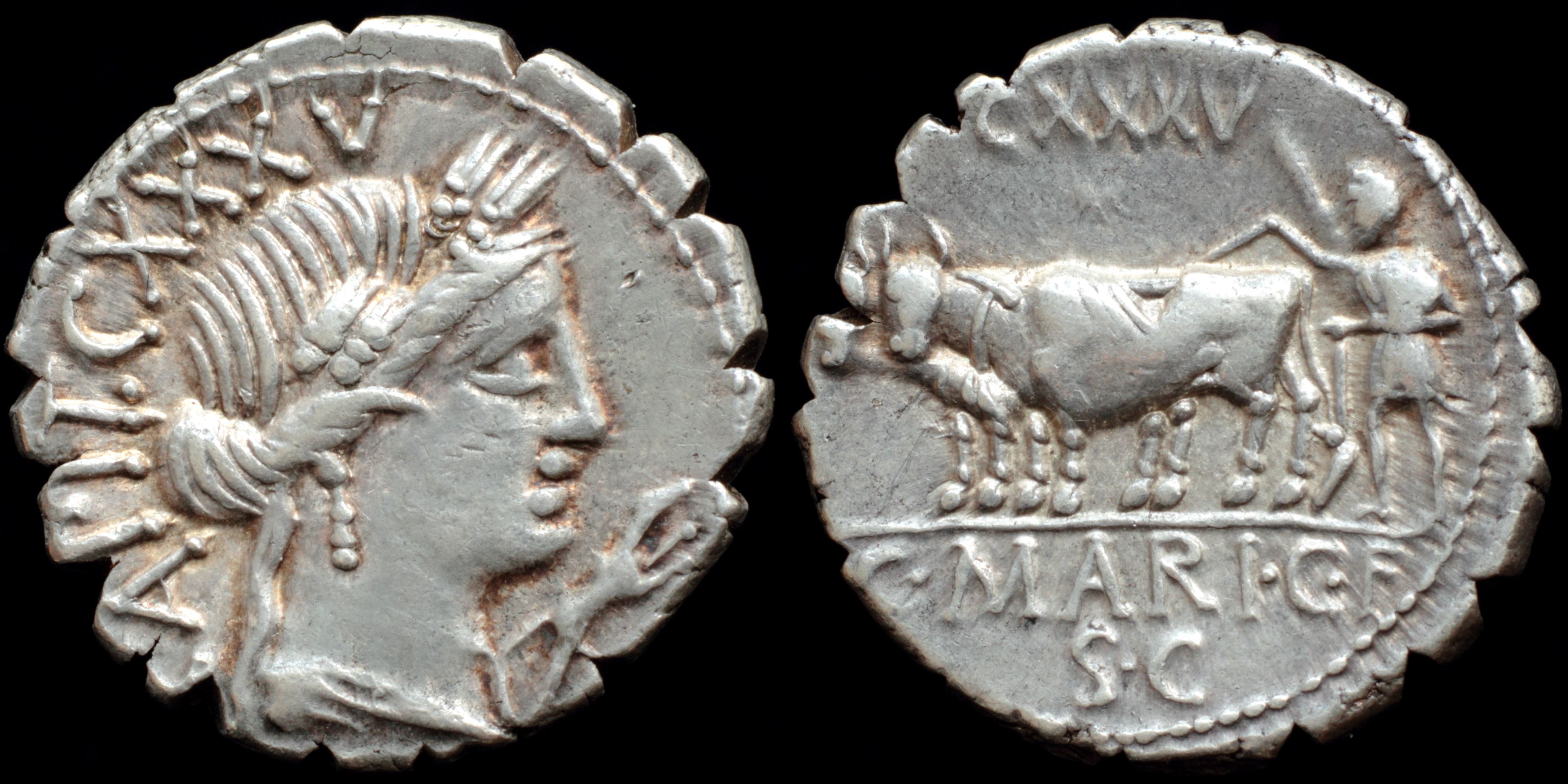
Reverse: ploughman conducting yoke of two oxen, CXXXV / C·MARI·C·F / S·C
Die Orientation: -
Weight: 4.06 g
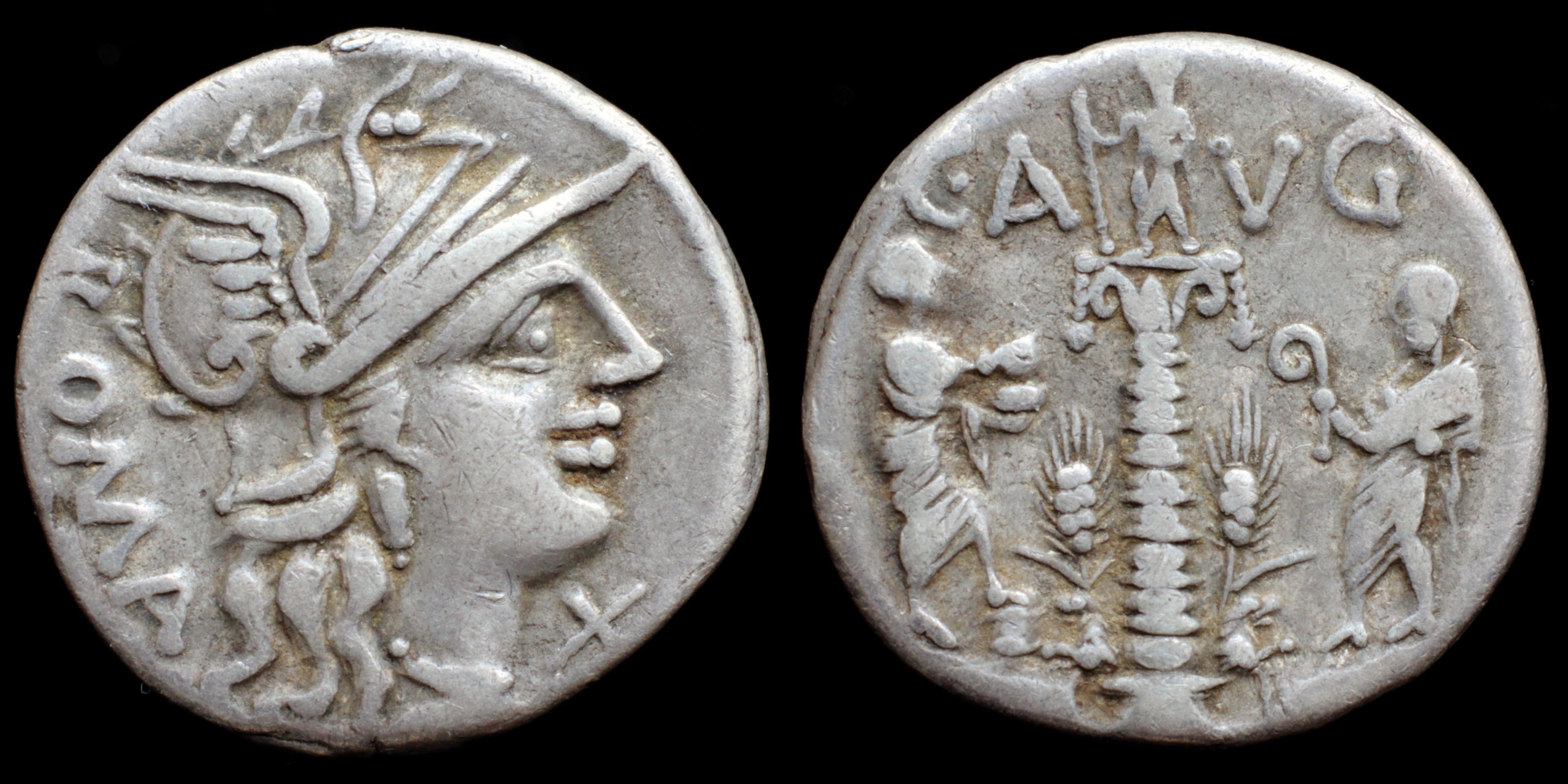
Reverse: Ionic column surmounted by statue; at base, two stalks of grain; on left, L. Minucius Augurinus standing right, holding patera, foot on modius; on right, M. Minucius Faesus standing left, holding lituus. C·A_VG
Die Orientation: -
Weight: 3.7 g
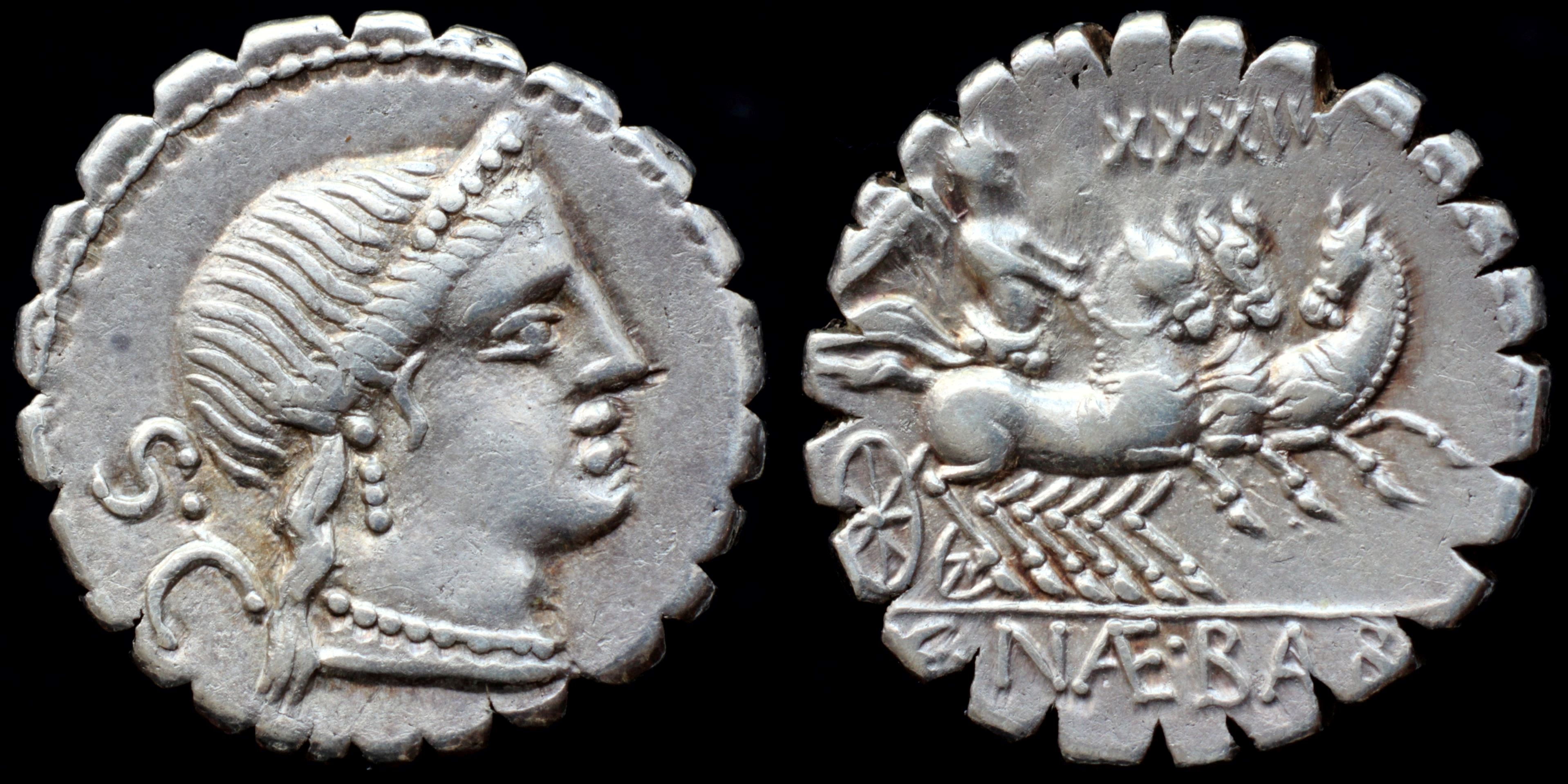
Reverse: Victory right in triga holding reins; XXXIII / C·N(AE)·B(AL)B
Die Orientation: -
Weight: 3.9 g
_2.jpg)
Reverse: Victory in triga right; C NÆ BALB in exergue
Die Orientation: 5 H
Weight: 3.91 g
(13).JPG)
Reverse: Corn ear, fasces and caduceus
Die Orientation: 12 H
Weight: 3.93 g
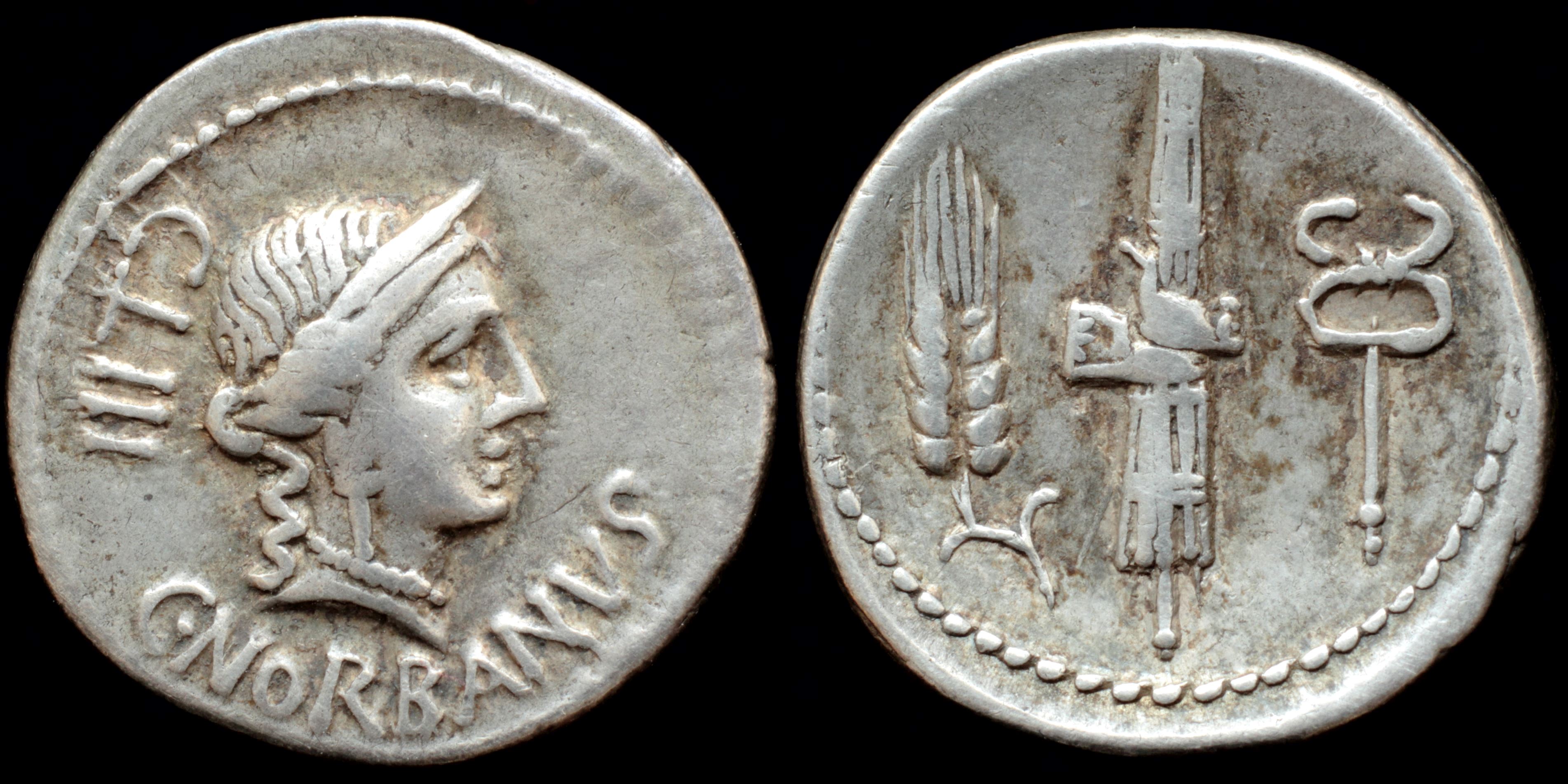
Reverse: grain ear, fasces and caduceus
Die Orientation: -
Weight: 3.9 g
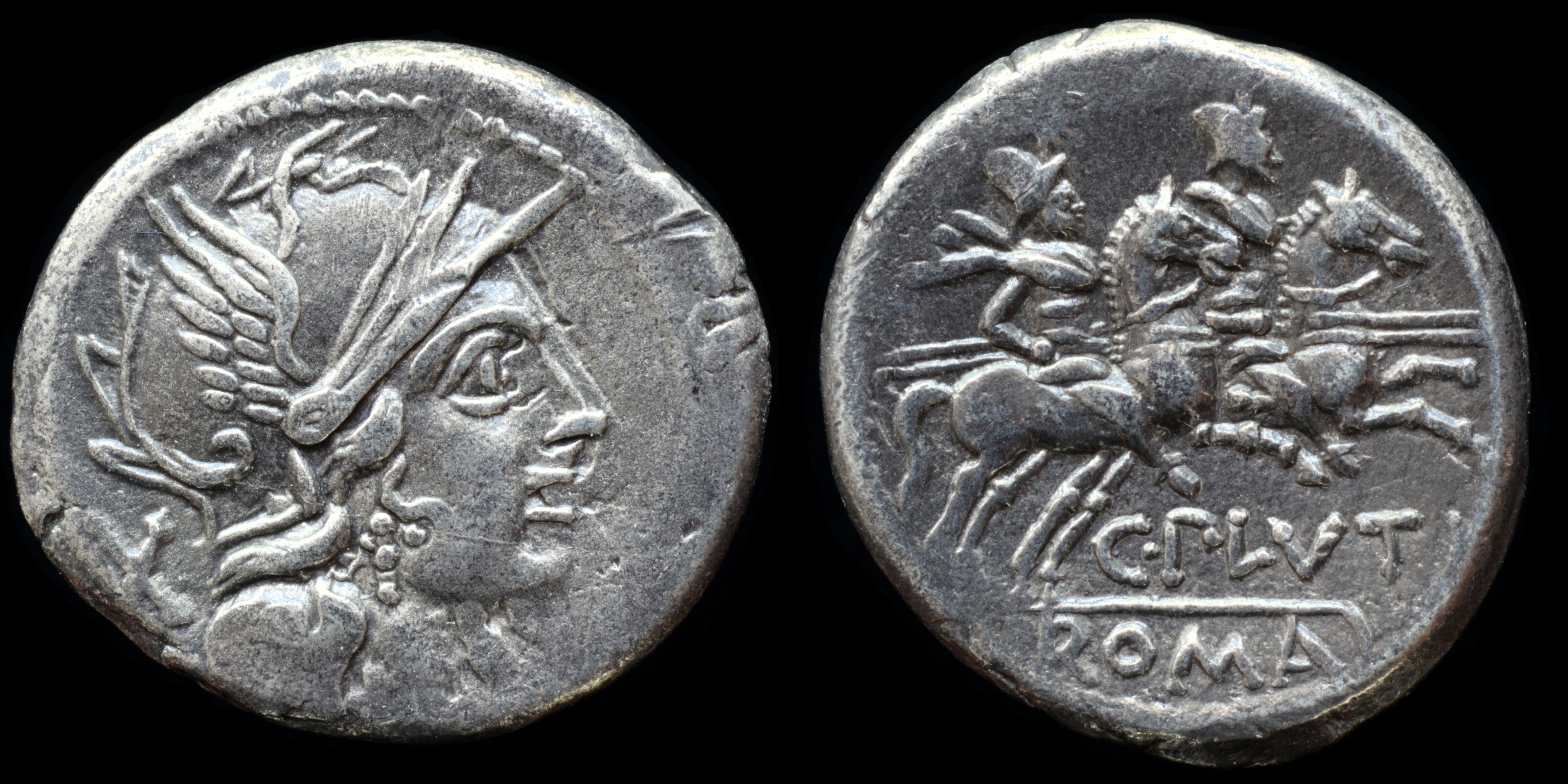
Reverse: Dioscuri riding on horses right, holding spear; C·PLVTI / ROMA
Die Orientation: -
Weight: 3.8 g
.jpg)
Reverse: Hound running right; spear below, C•POSTVMI and TA monogram in exergue.
Die Orientation: -
Weight: 3.92 g
Provenance: Tauler & Fau Floor Auction 20, (28 November, 2018), lot 112.
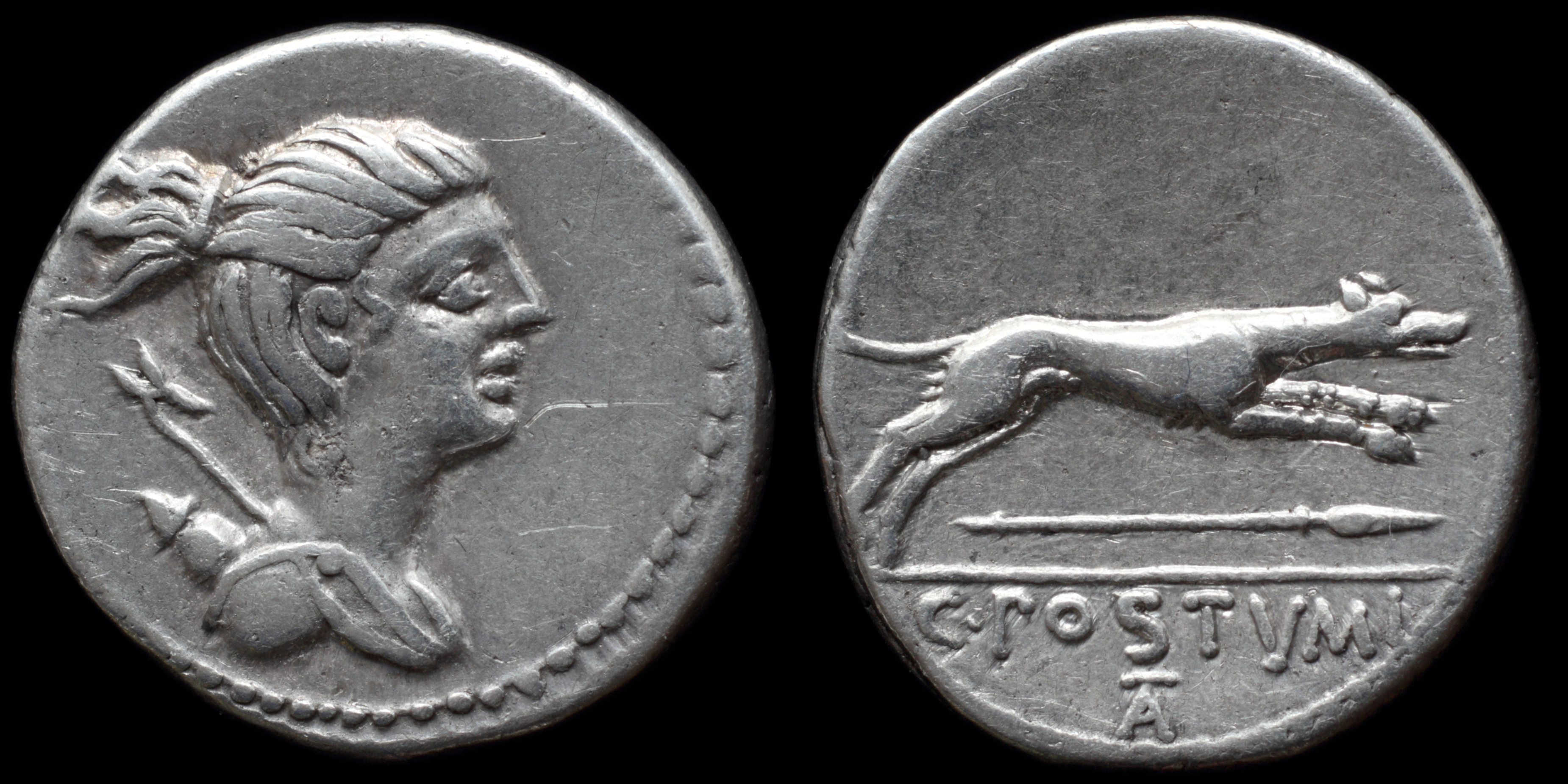
Reverse: hound bounding right, hunting spear below; C·POSTVMI / (TA)
Die Orientation: -
Weight: 4 g
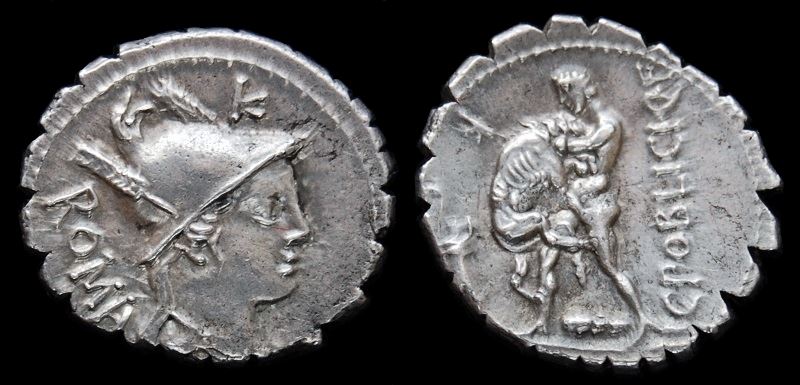
Reverse: Hercules standing left, strangling Nemean Lion; club at his feet, K (control mark) above; bow and arrows in left field; C•POBLICI•Q•F upwards in right field.
Die Orientation: 5 H
Weight: 3.9 g
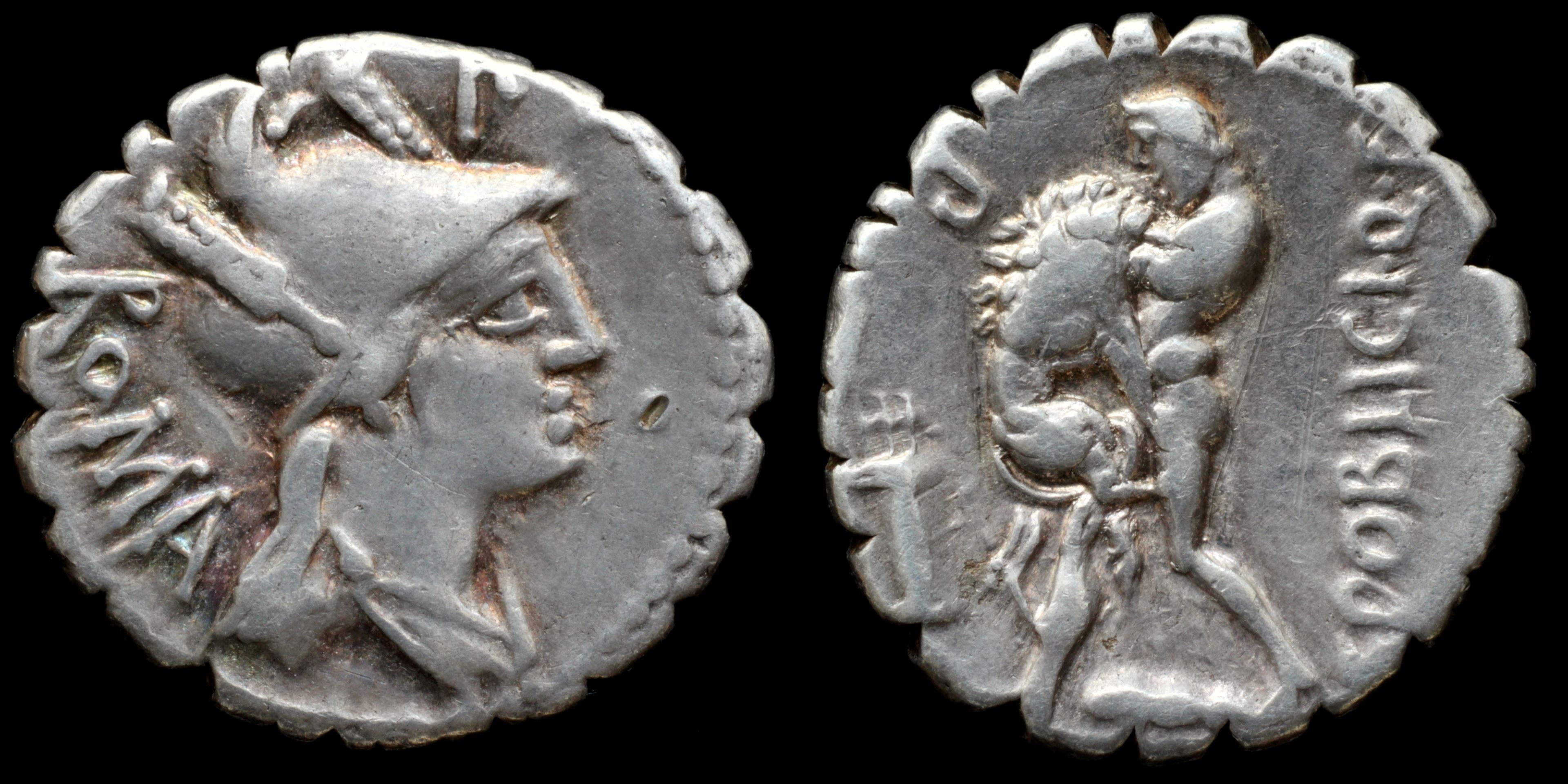
Reverse: naked Hercules left strangling Nemean lion; bow with arrows in quiver left, club below; C·POBLICI·Q·F / P
Die Orientation: -
Weight: 4 g
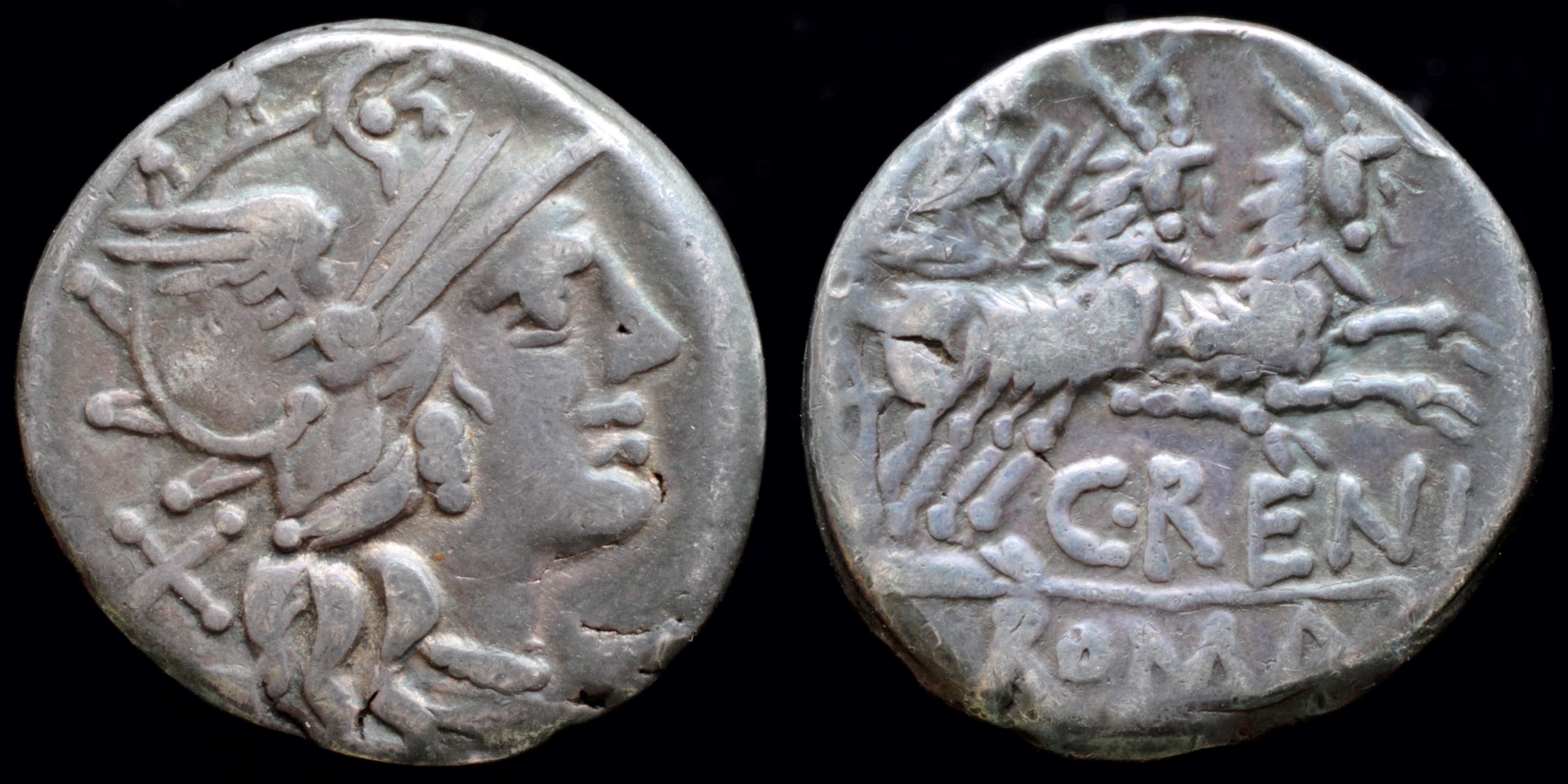
Reverse: Juno Caprotina in biga of goats right holding whip, scepter and reins C·RENI ROMA
Die Orientation: -
Weight: 3.8 g
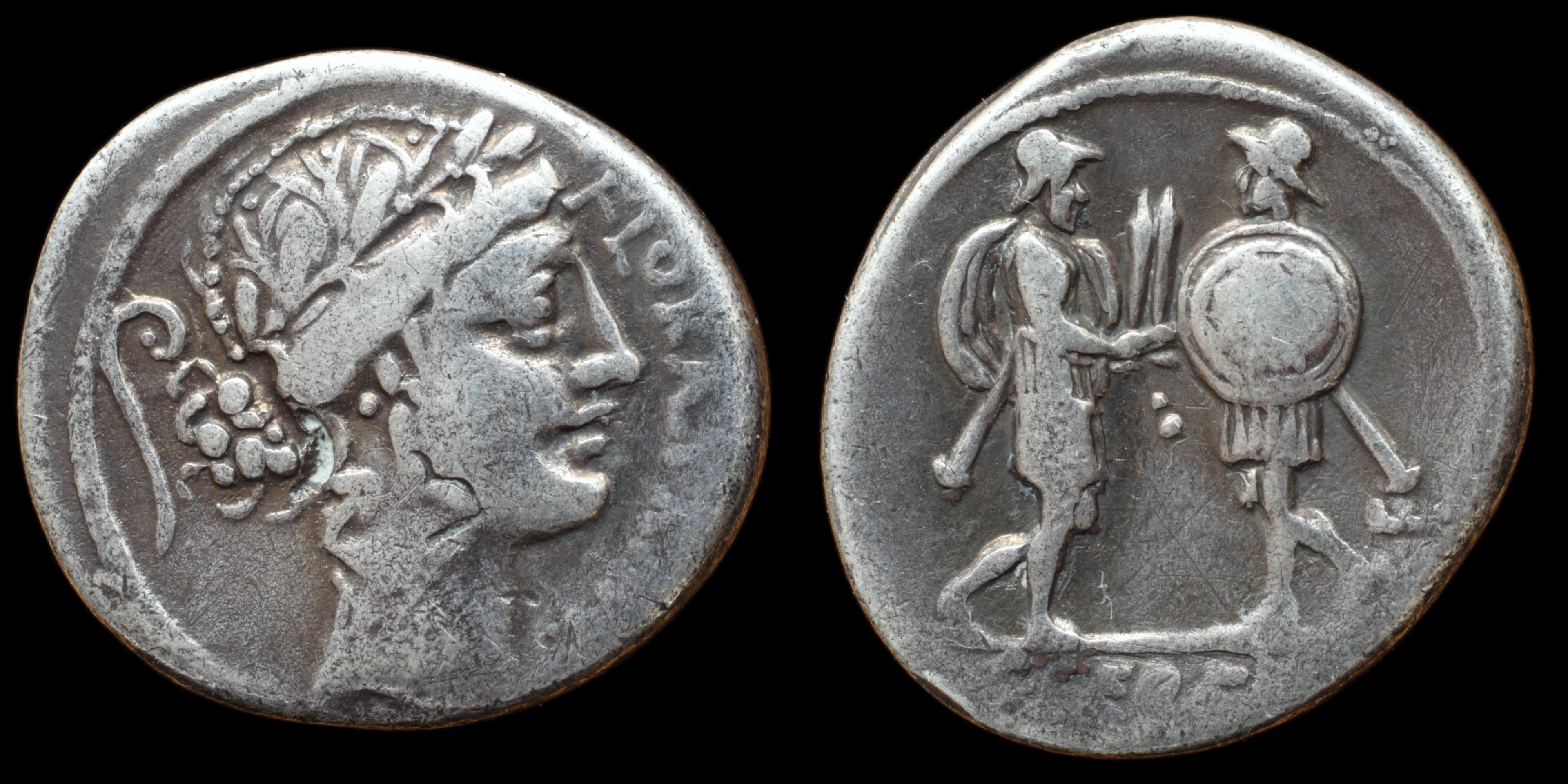
Reverse: Two soldiers facing each other, each holding shield and sword upright; C·F C·SE(RVE)IL·
Die Orientation: -
Weight: 3.7 g
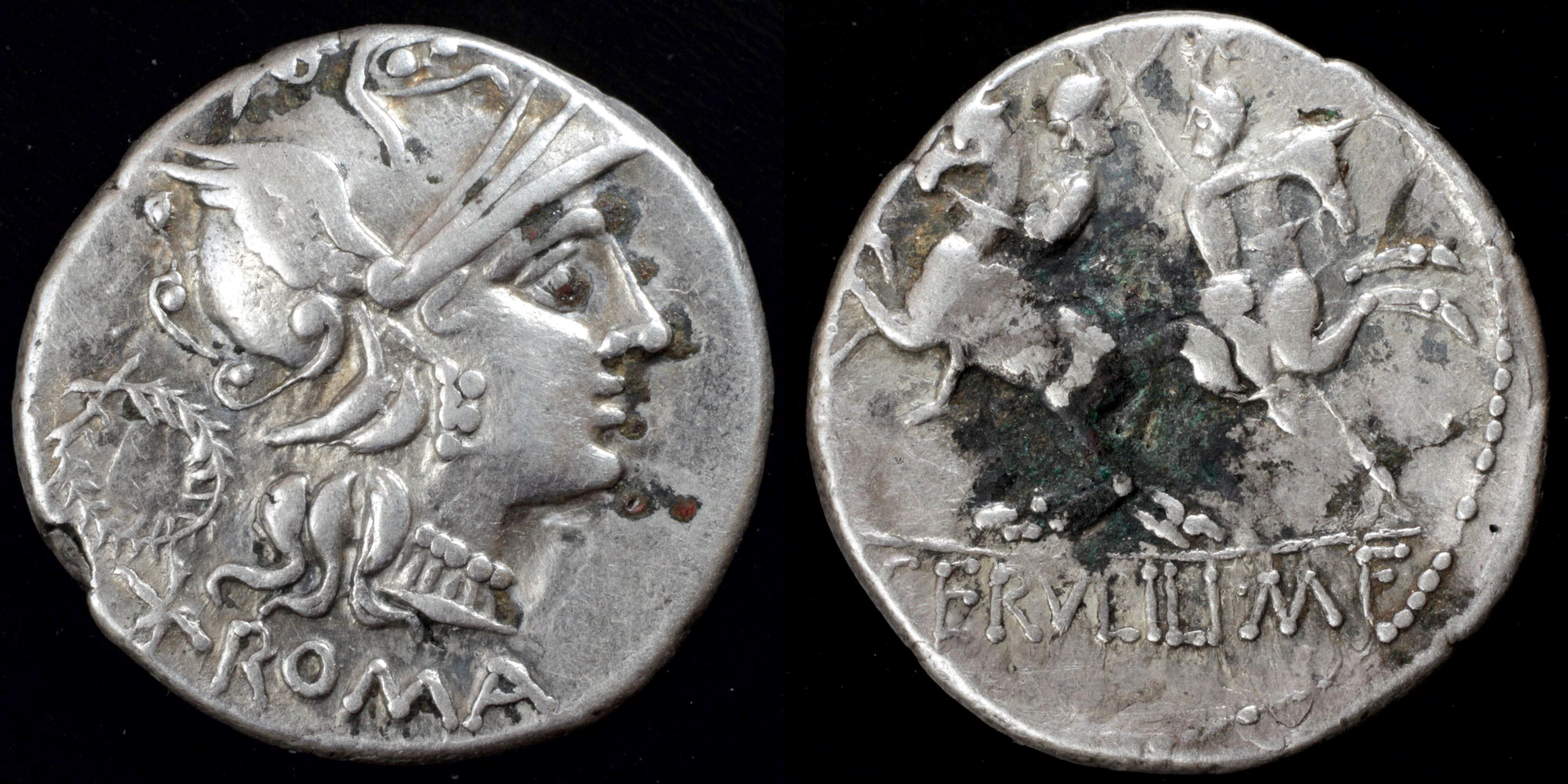
Reverse: the Dioscuri riding in opposite directions, heads turned confronting, each with star above his head and holding a spear C·SERVEILI·M·F
Die Orientation: -
Weight: 2.6 g
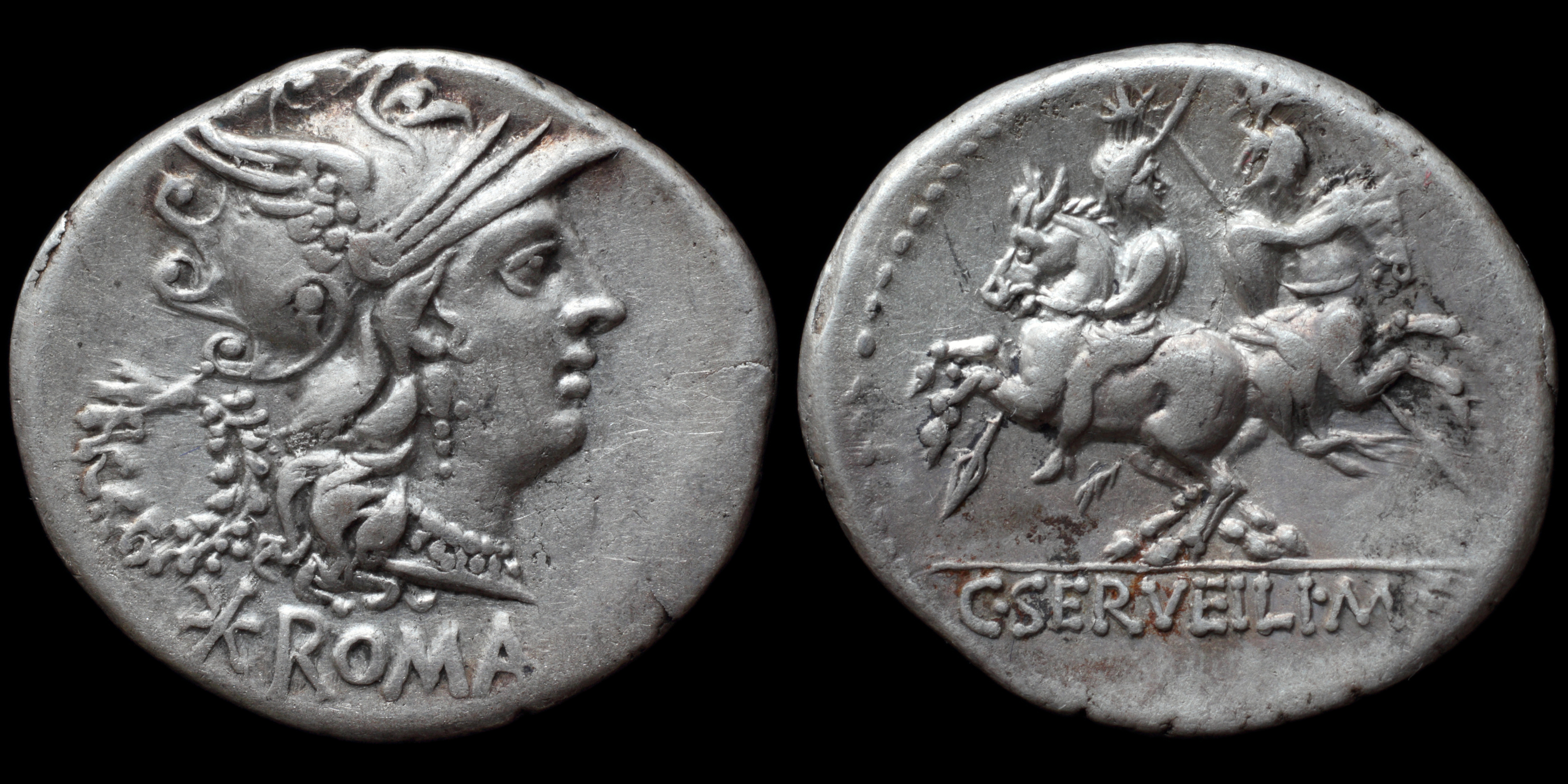
Reverse: the Dioscuri riding in opposite directions, heads turned confronting, each with star above his head and holding a spear; C·SERVEILI·M·F
Die Orientation: -
Weight: 3.9 g
(0).jpg)
Reverse: The Dioscuri on horseback rearing in opposing directions, heads facing one another, each holding couched spear; stars above, C•SERVEILI•M•F in exergue
Die Orientation: 6 H
Weight: 4.04 g
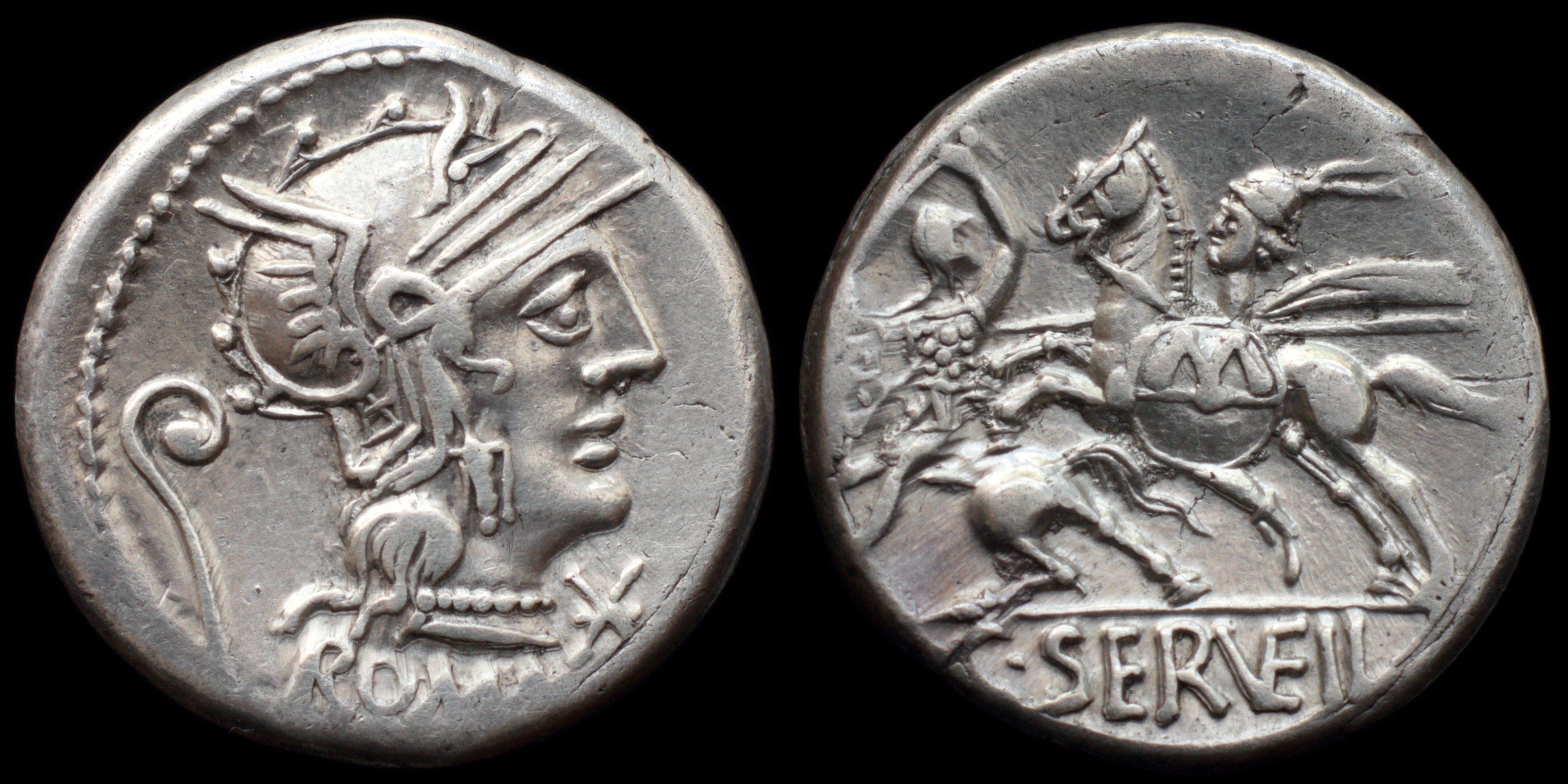
Reverse: Marcus Servilius Pulex Geminus, consul 202 BC, left fighting a duel on horse, holding spear and shield inscribed with M. Other horseman riding left holding sword and shield; C·SER(VE)IL
Die Orientation: -
Weight: 3.9 g
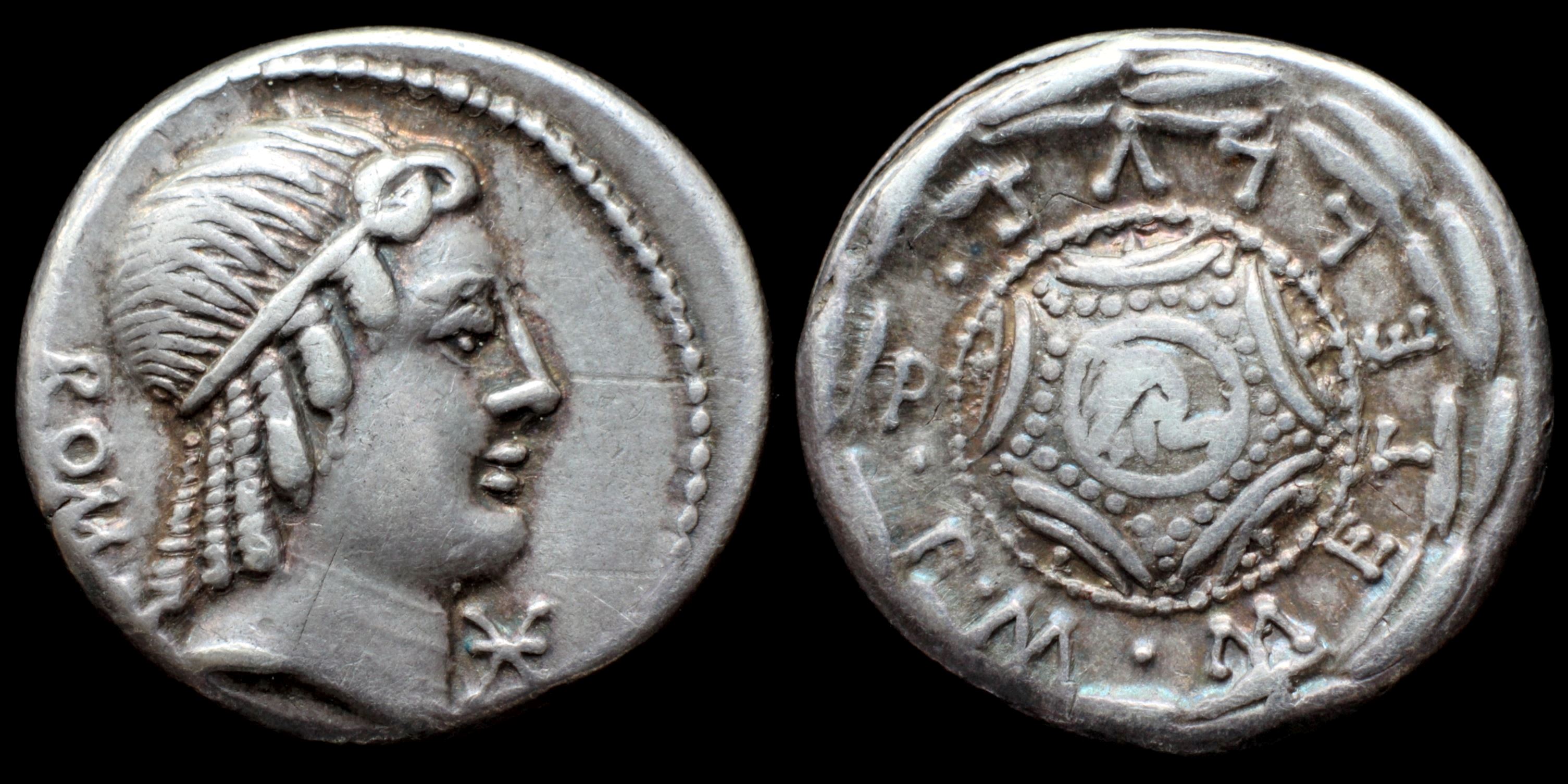
Reverse: Macedonin shield decorated with elephant head right, all within laurel wreath; M·METELLVS·Q·F·
Die Orientation: -
Weight: 3.9 g
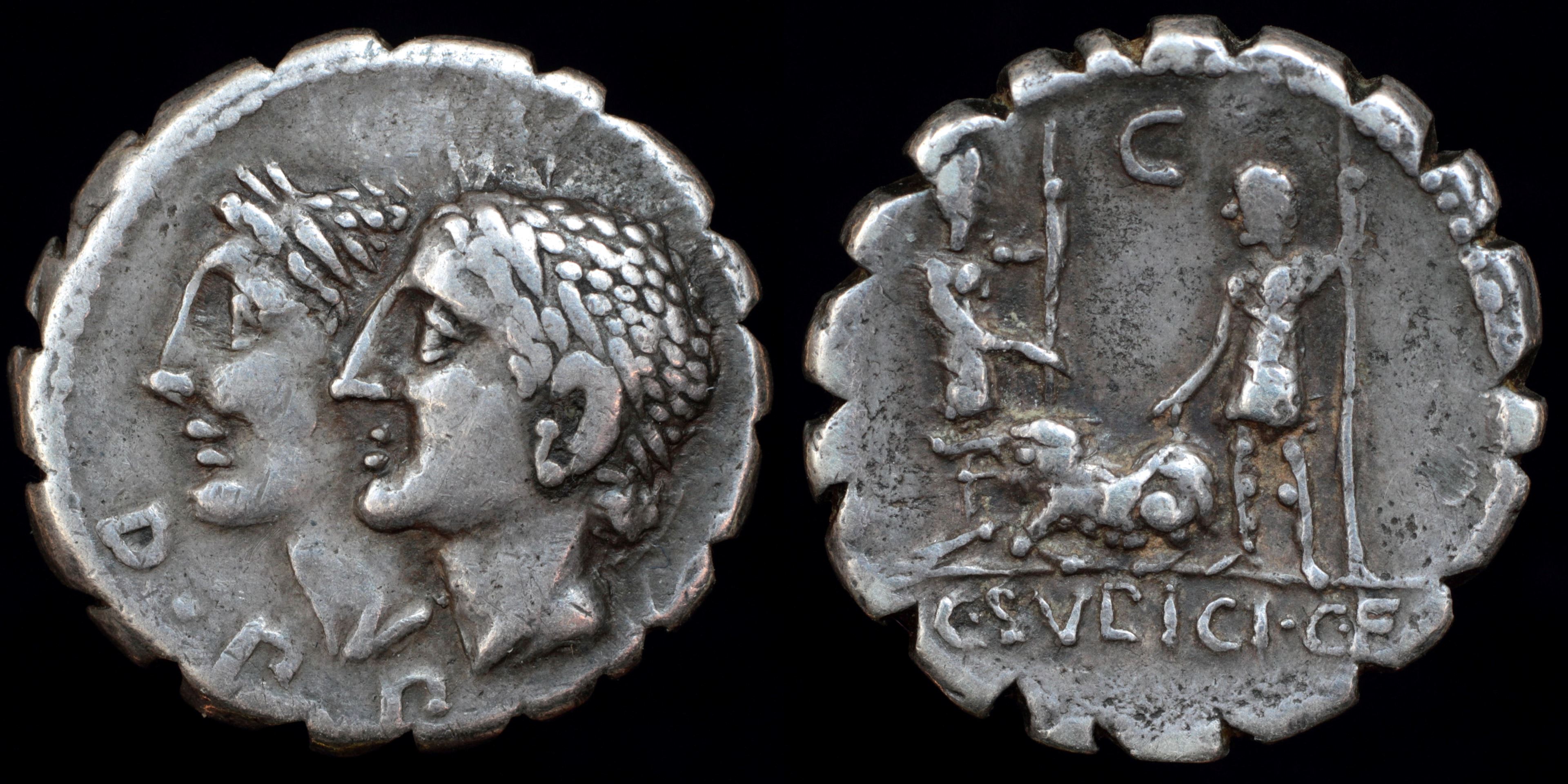
Reverse: Two soldiers (or Dii Penas Publici) standing facing each other, holding spears and pointing at sow which lies between them C C·SV(LP)ICI·C·F
Die Orientation: -
Weight: 3.96 g
The Sulpicii came from Lavinium and both sides of coin are related to it. Di Penates Publici were taken from Troy together with Palladium by Aeneas. When Aeneas fled from Troy Helenus, a son of Priamos, has predicted Aeneas, that he would built a new city where a white sow would cast 30 piglets. Aeneas prepared to sacrifice a pregnant white sow he has brought in his ship for this purpose, but the sow escaped and fled 24 stadiums in the inland, layed down under an oak-tree (or ilex-tree) and casted 30 white piglets. Because of that Aeneas knew that this prophecy too became true and he should built a city here. He sacrificed the 30 piglets and erected a shrine at this place. The new city he called Lavinium referring to Lavinia, daughter of king Latinus. The 30 piglets represented 30 years only after which his successors became the real owners of the new land. At the same time story of white sow predicts foundation of another town: River god Tiber speak to Aeneas in a dream: ".... A sow beneath an oak shall lie along, All white herself, and white her thirty young. When thirty rolling years have run their race, Thy son Ascanius, on this empty space, Shall build a royal town, of lasting fame, Which from this omen shall receive the name. ..." Alba Longa was founded just 30 years after Lavinium and so the prophecy was fulfilled here too. The name Alba Longa is said to be derived from the white sow (meaning the long white). So Lavinium was the mothertown of Alba Longa and finely of Rome itself. On the Forum of Lavinium stood a bronze statue of the sow, its body was conserved by the priests in pickle. (Jochen's coins of mythological interests)
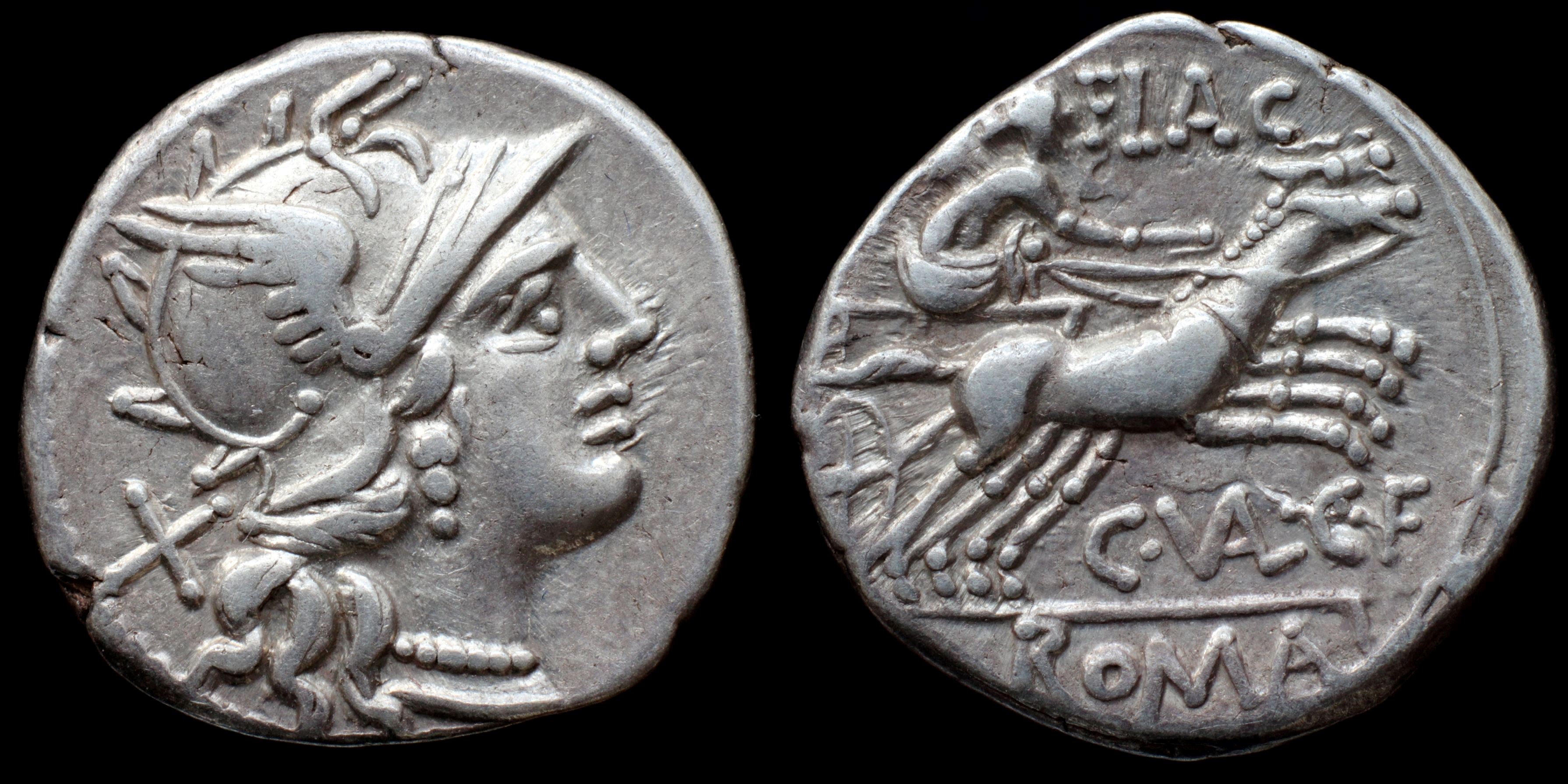
Reverse: Victory in biga right, holding whip and reins; FLAC / C·(VAL)·C·F / ROMA
Die Orientation: -
Weight: 4 g
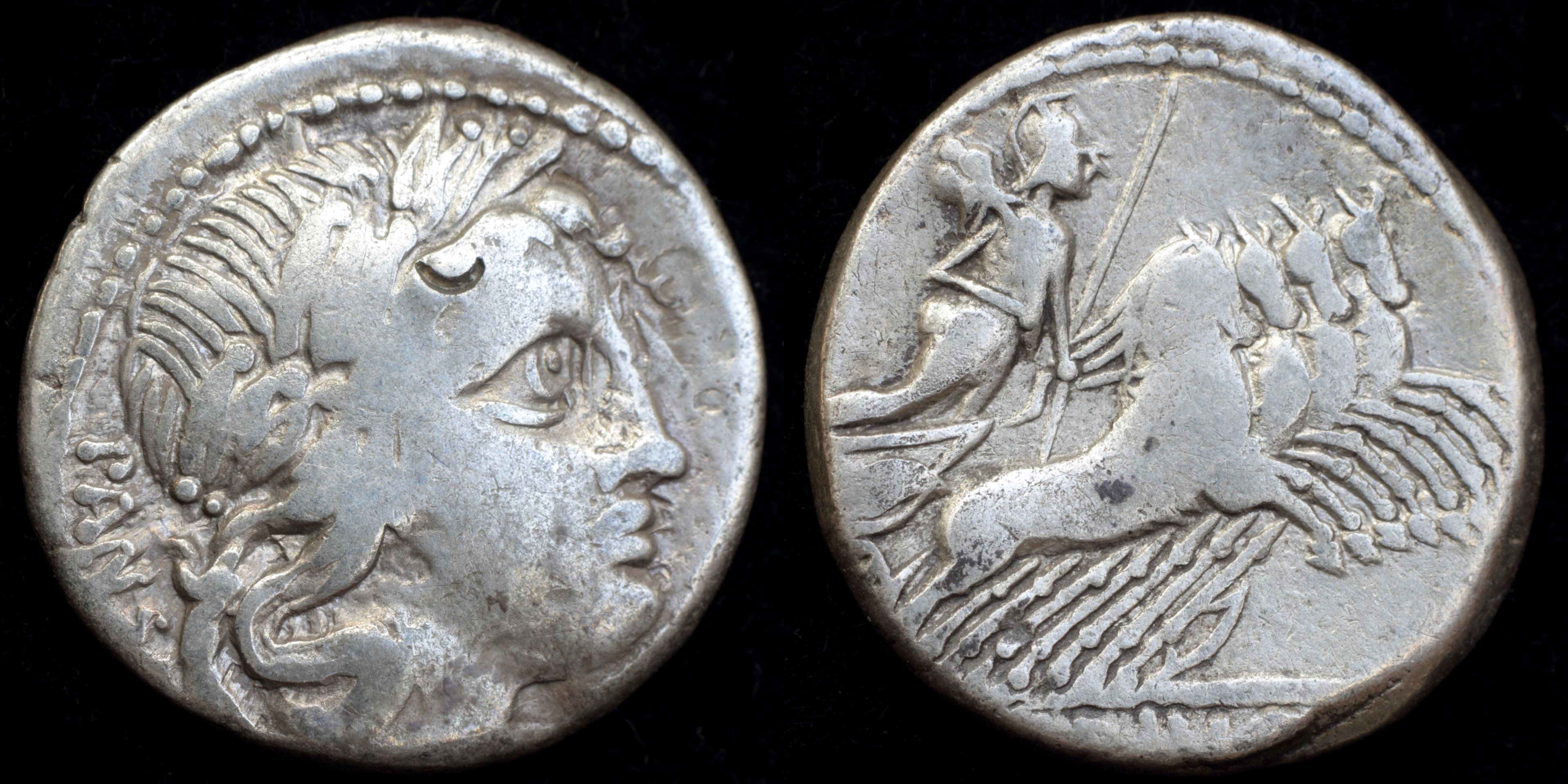
Reverse: Minerva in quadriga right holding trophy and reins, spear C·VIBIVS·C·F
Die Orientation: -
Weight: 3.96 g
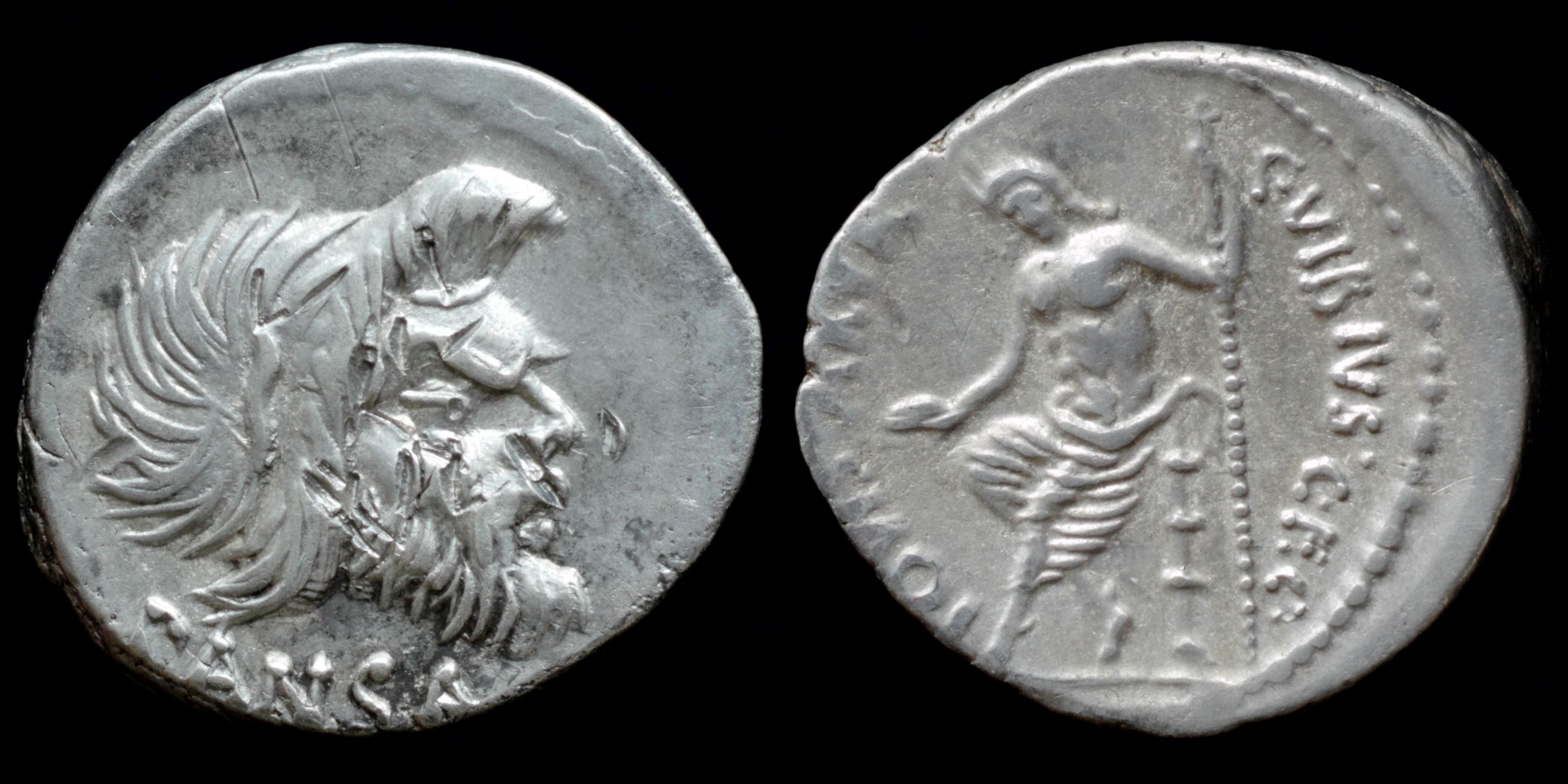
Reverse: radiate Jupiter Axurus seated left, holding patera and long scepter, IOVIS·AXVR· C·VIBIVS·C·F·C·N
Die Orientation: -
Weight: 3.9 g

Reverse: Minerva, helmeted and draped, standing right, holding spear in right hand and Victory in extended left; shield at side, C • VIBIVS downward to right, VARVS downward to left.
Die Orientation: -
Weight: 3.67 g
Provenance: Heritage Auctions - Long Beach Expo World & Ancient Coins Signature Auction Session 5 (September 5-9 2019), lot 155. Coin Galleries: The Numismatic Review and Fixed Price List (May - June, 1960), lot A371.
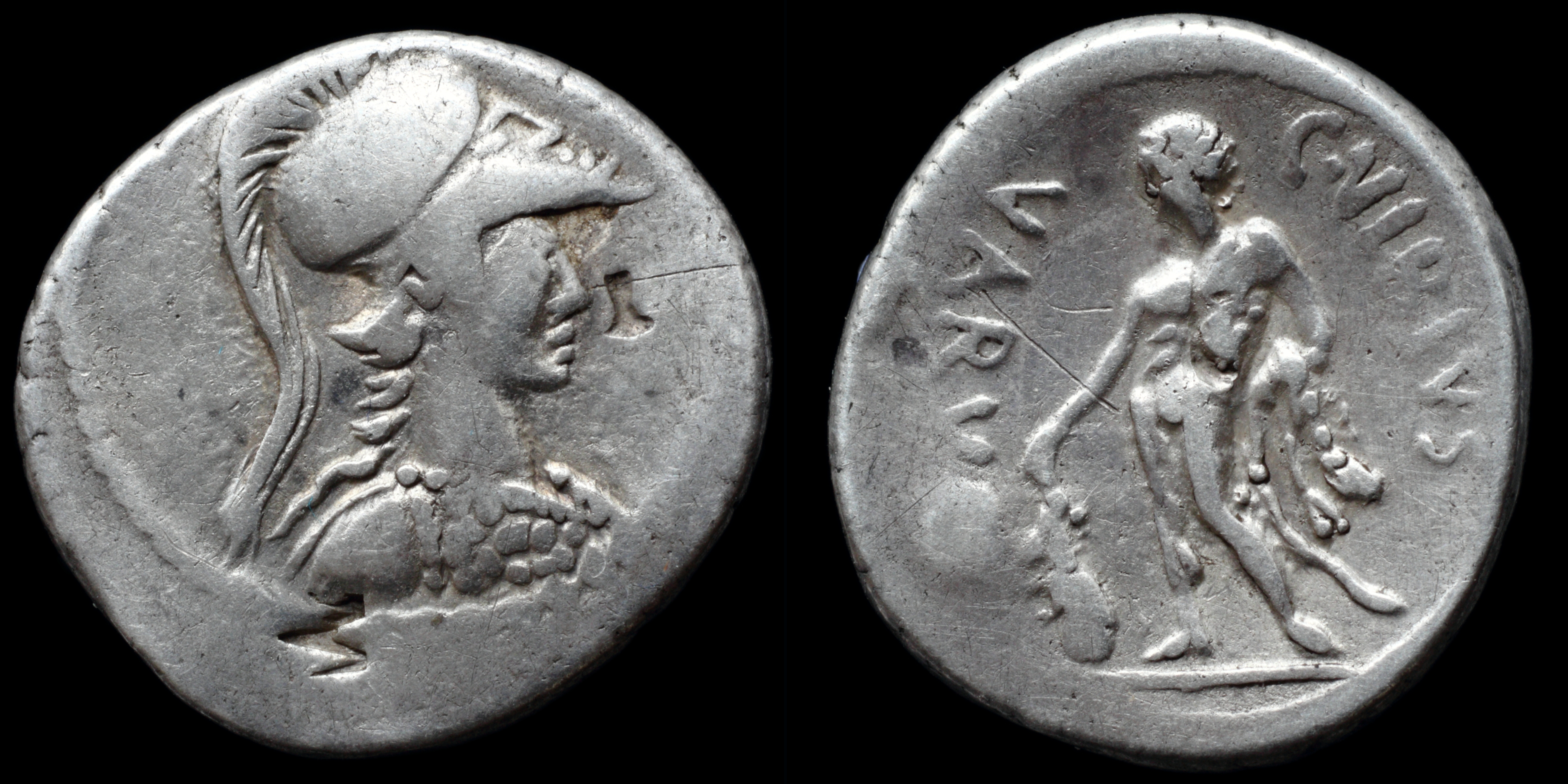
Reverse: naked Hercules standing left, resting right hand on club set on ground, lion skin in the left hand; C•VIBIVS / VARVS
Die Orientation: -
Weight: 4 g
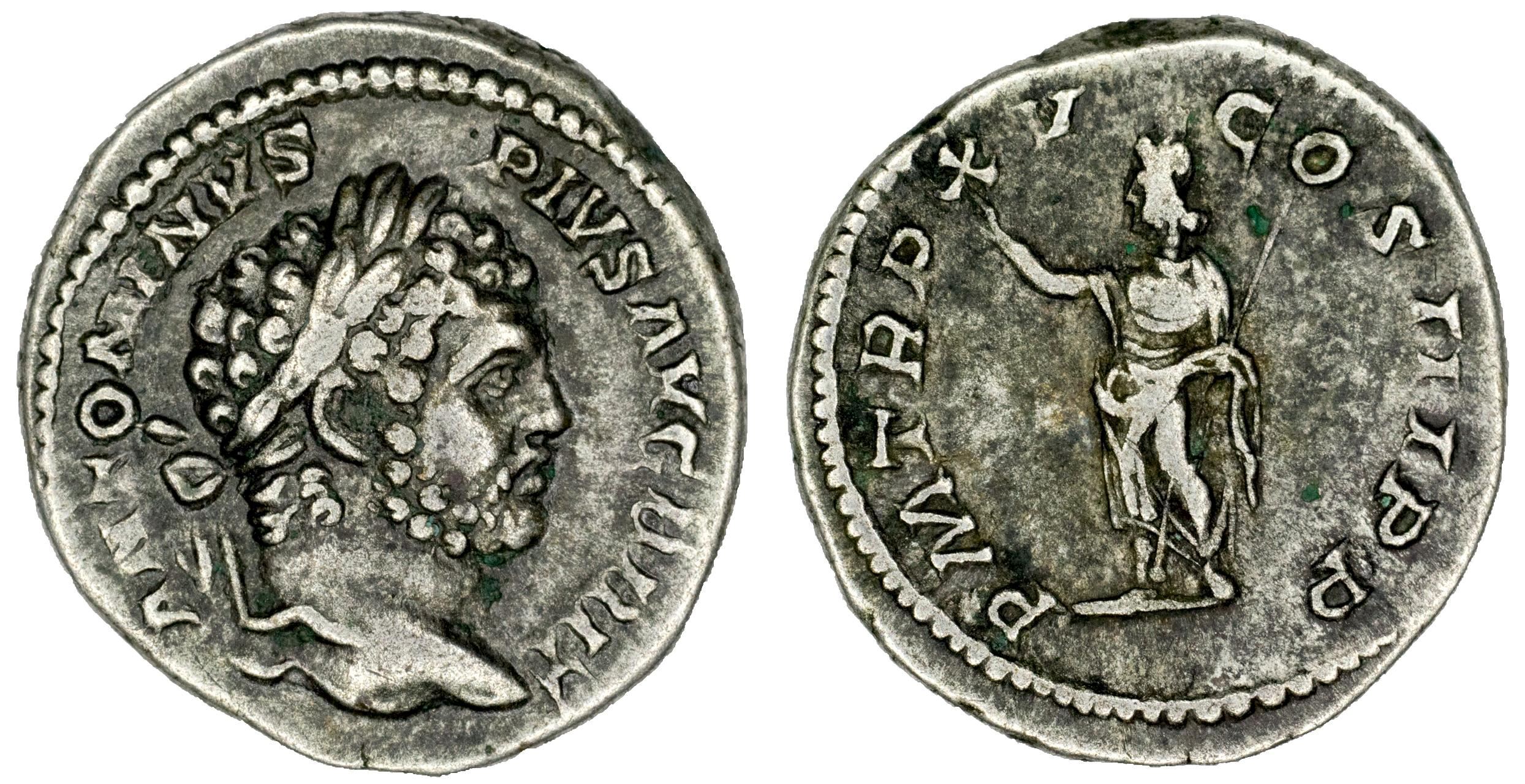
Reverse: P M TR P XV COS III P P, Serapis standing left, raising right hand and holding transverse scepter
Die Orientation: 6 H
Weight: 2.94 g
(2).jpg)
Reverse: MONETA AVG, Moneta standing left, holding scales and cornucopiae
Die Orientation: 1 H
Weight: 3.26 g
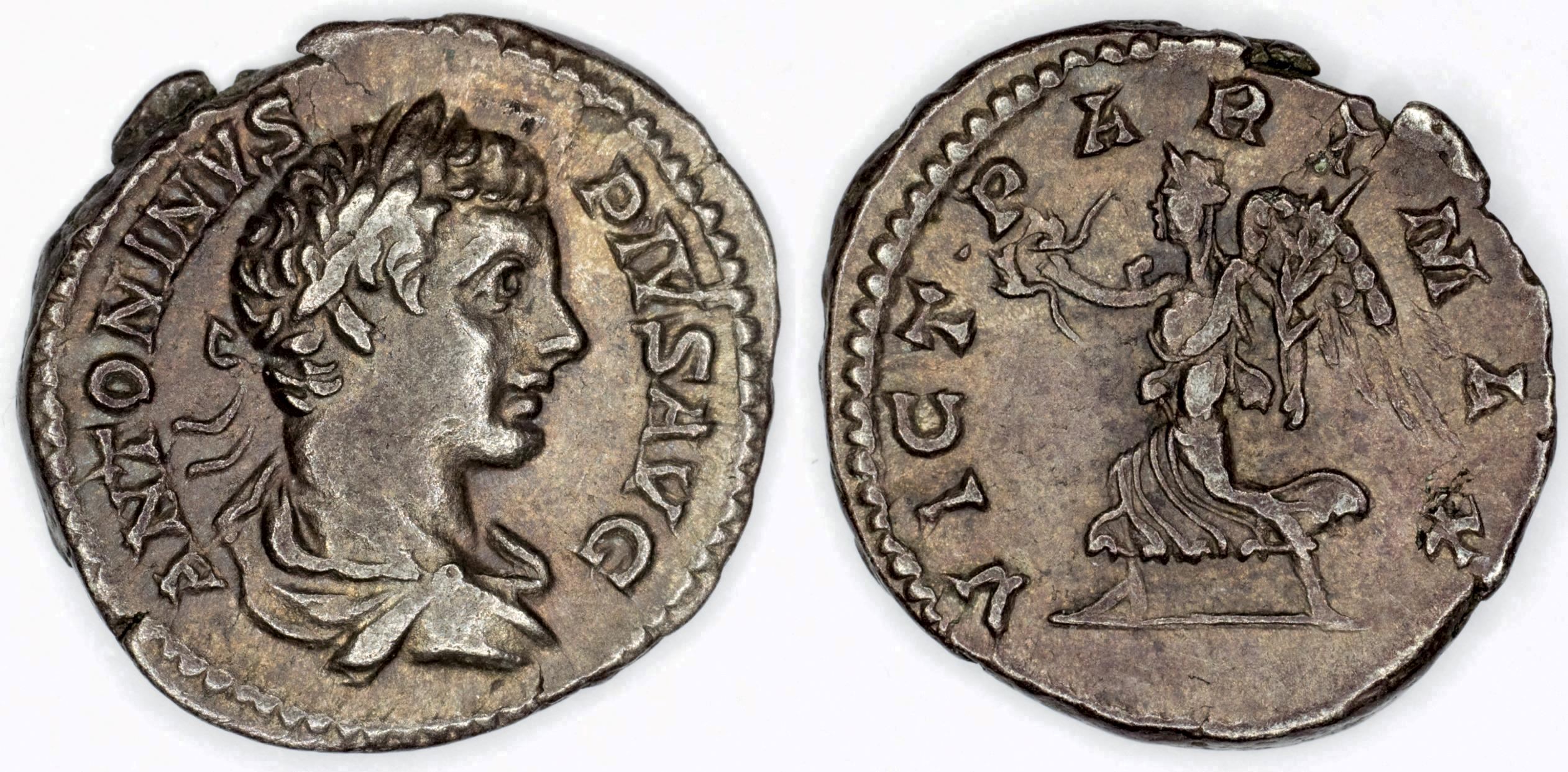
Reverse: VICT PART MAX, Victory advancing left holding wreath and palm
Die Orientation: 0 H
Weight: 0 g
.jpg)
Reverse: Pax, draped, standing left, holding branch in right hand and sceptre in left hand. P M TR P XVIII COS IIII P P
Die Orientation: 0 H
Weight: 3.46 g
.jpg)
Reverse: VOTA SVSCEPTA X, Caracalla standing facing, head left, wearin veil, holding patera over altar
Die Orientation: 6 H
Weight: 3.75 g
VOTA SVSCEPTA X="vows (prayers) undertaken [for] ten [years] of rule"
(0).jpg)
Reverse: IMP ERII FELICITA / Felicitas standing left, holding a caduceus downwards and a child in arm
Die Orientation: -
Weight: -
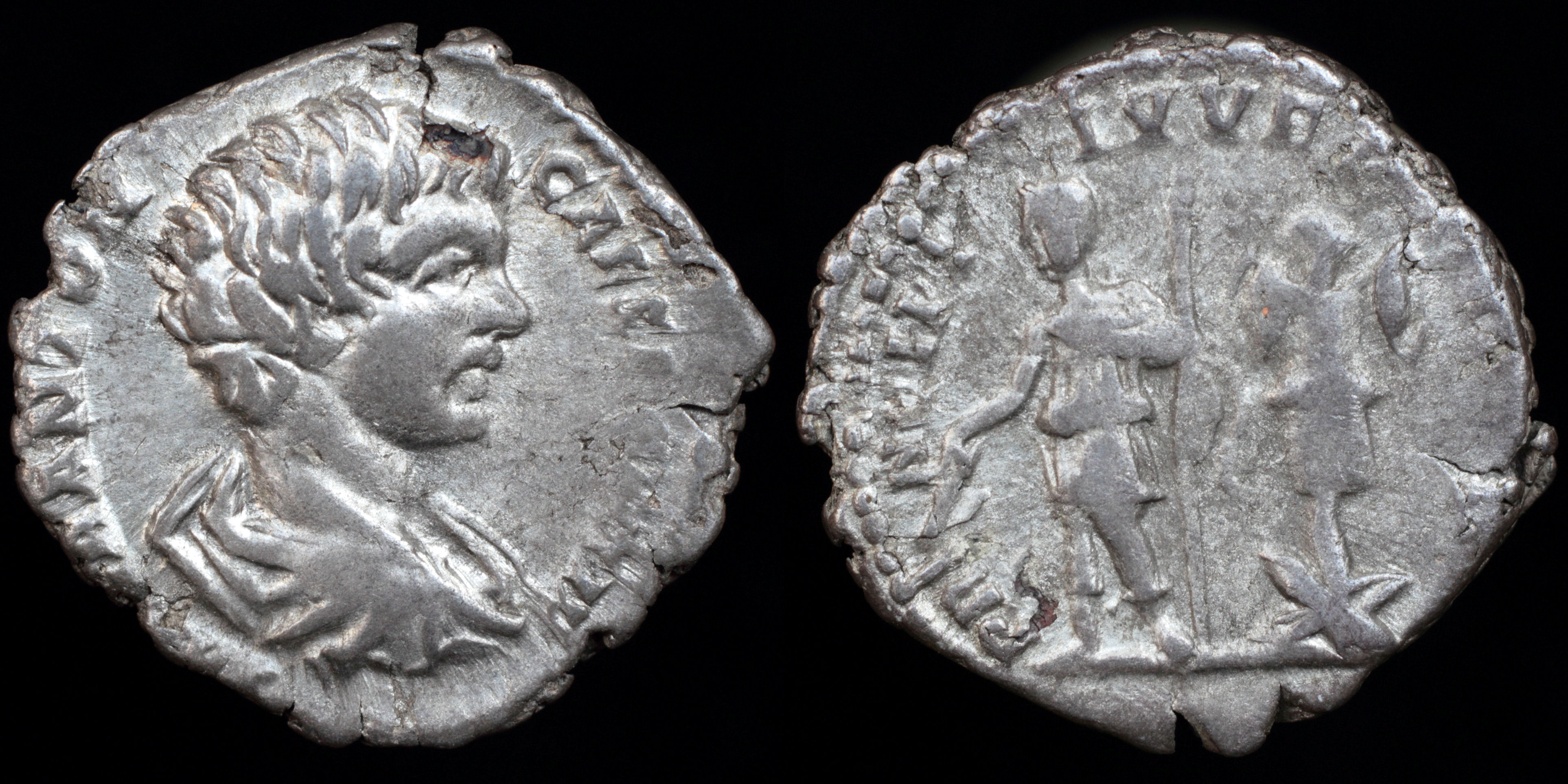
Reverse: Caracalla standing left, holding baton and spear; trophy to right; PRI_NCIPI__IVVENTVTIS
Die Orientation: -
Weight: 2.7 g
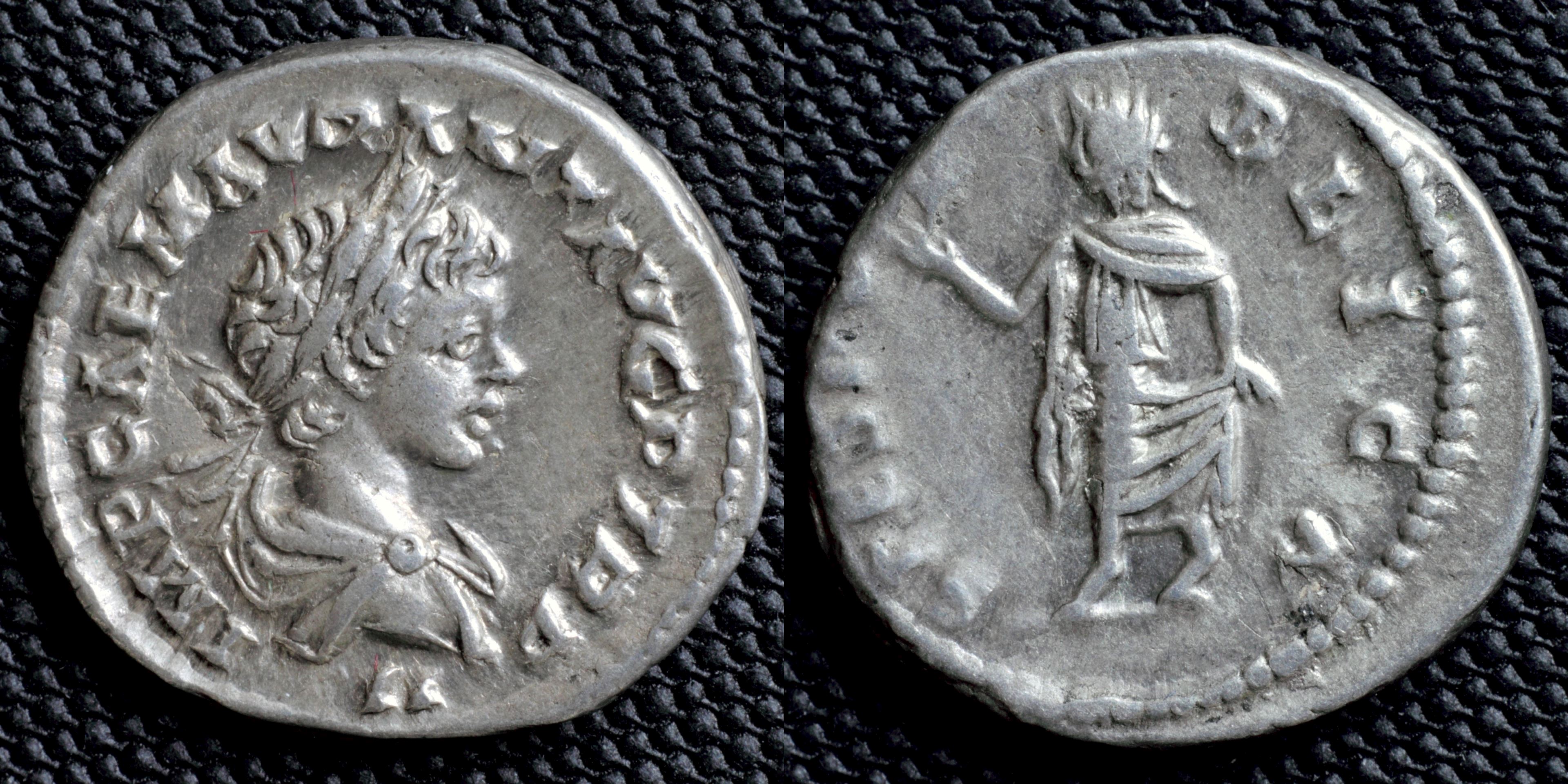
Reverse: Spes advancing left, holding flower and raising skirt; SPES PV_BLICA
Die Orientation: -
Weight: 3.75 g
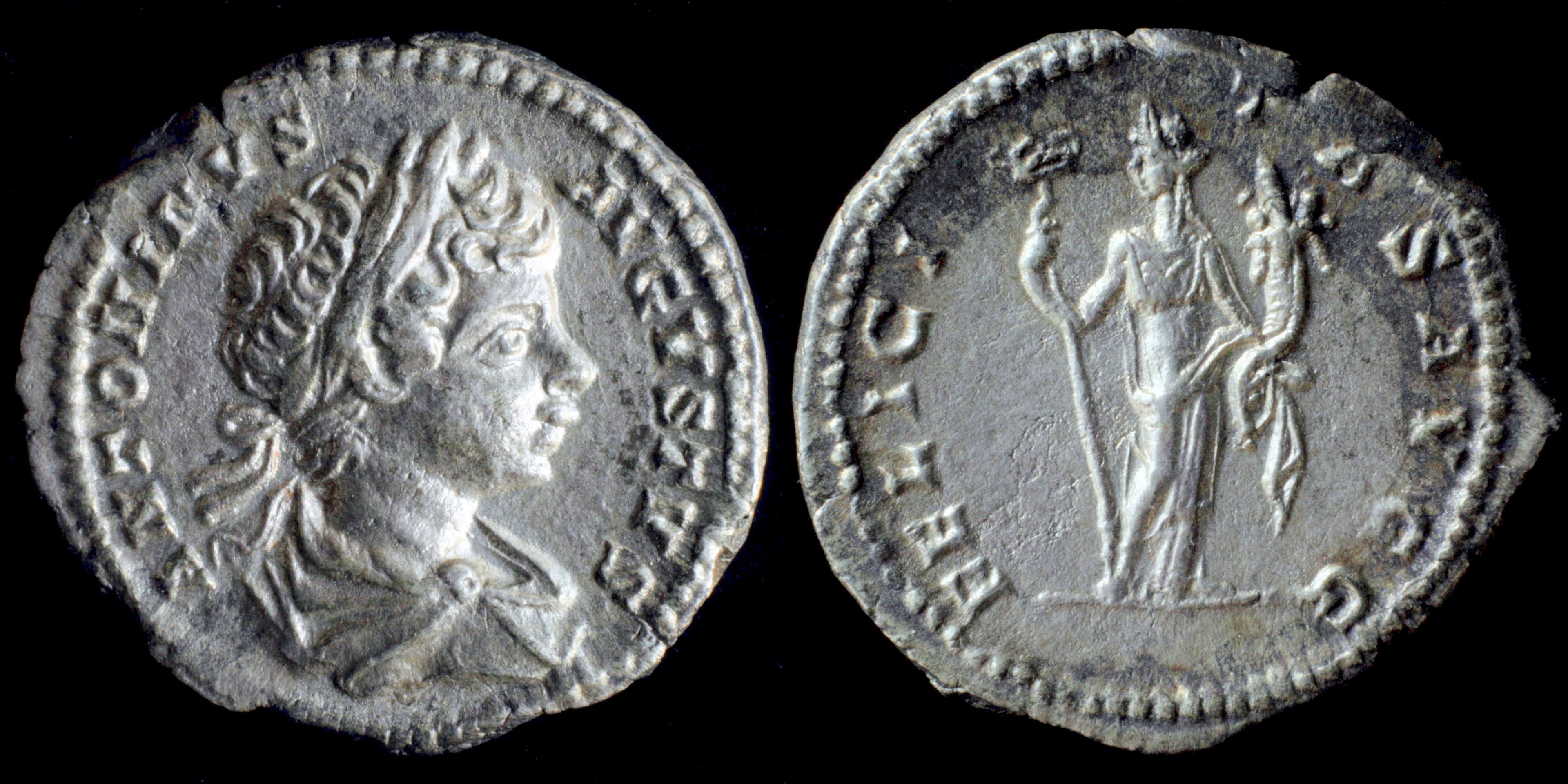
Reverse: Felicitas standing left holding caduceus and cornucopiae; FELICI_TAS AVGG
Die Orientation: -
Weight: 3.19 g
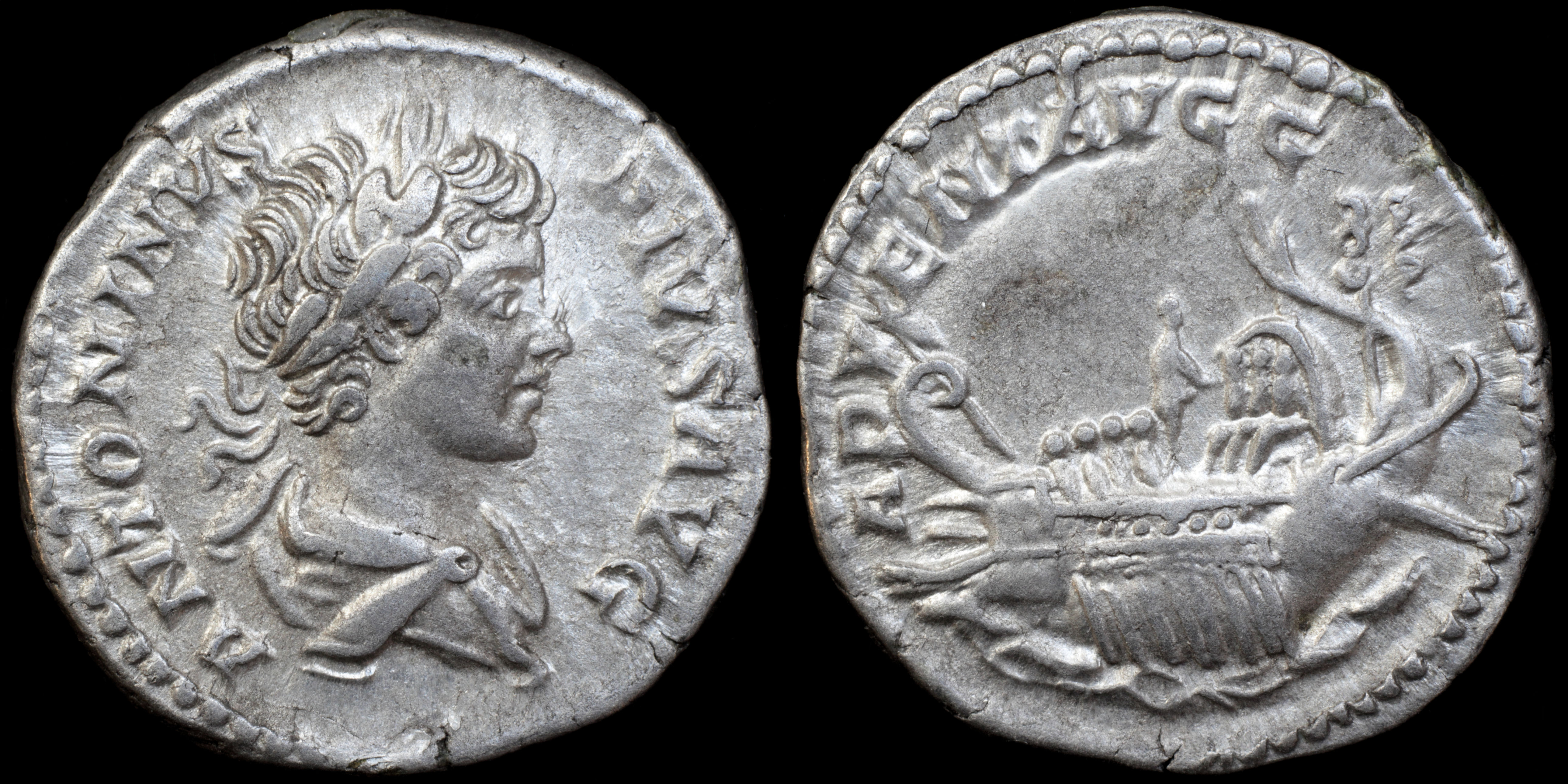
Reverse: Quinquereme with four oarsmen, hortator and three seated persons left, two signa at stern; ADV_ENT AVGG
Die Orientation: -
Weight: 3.5 g
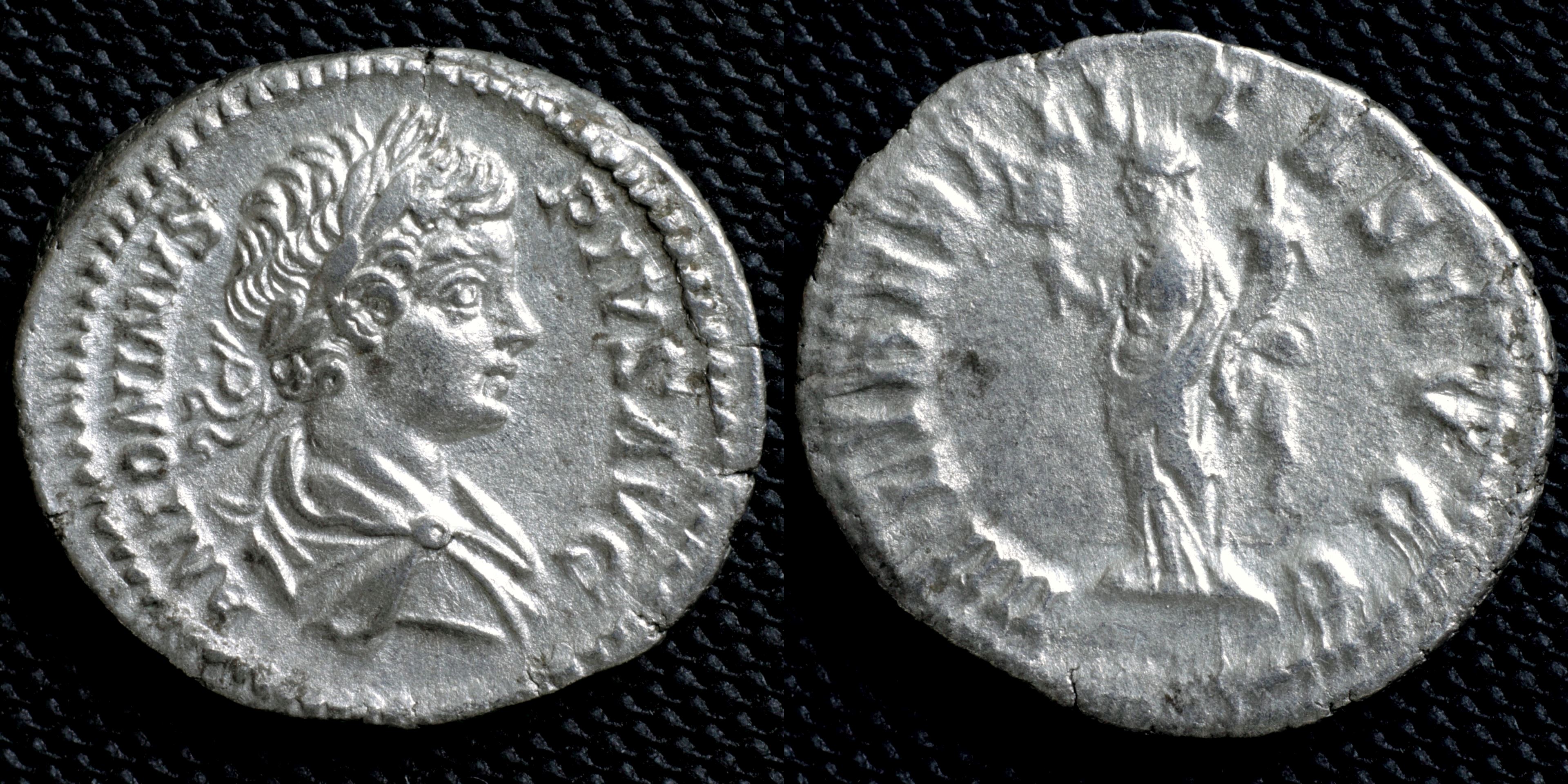
Reverse: Liberalitas standing left, holding abacus and cornucopia; LIBERALI_TAS AVGG__IIII•
Die Orientation: -
Weight: 2.93 g
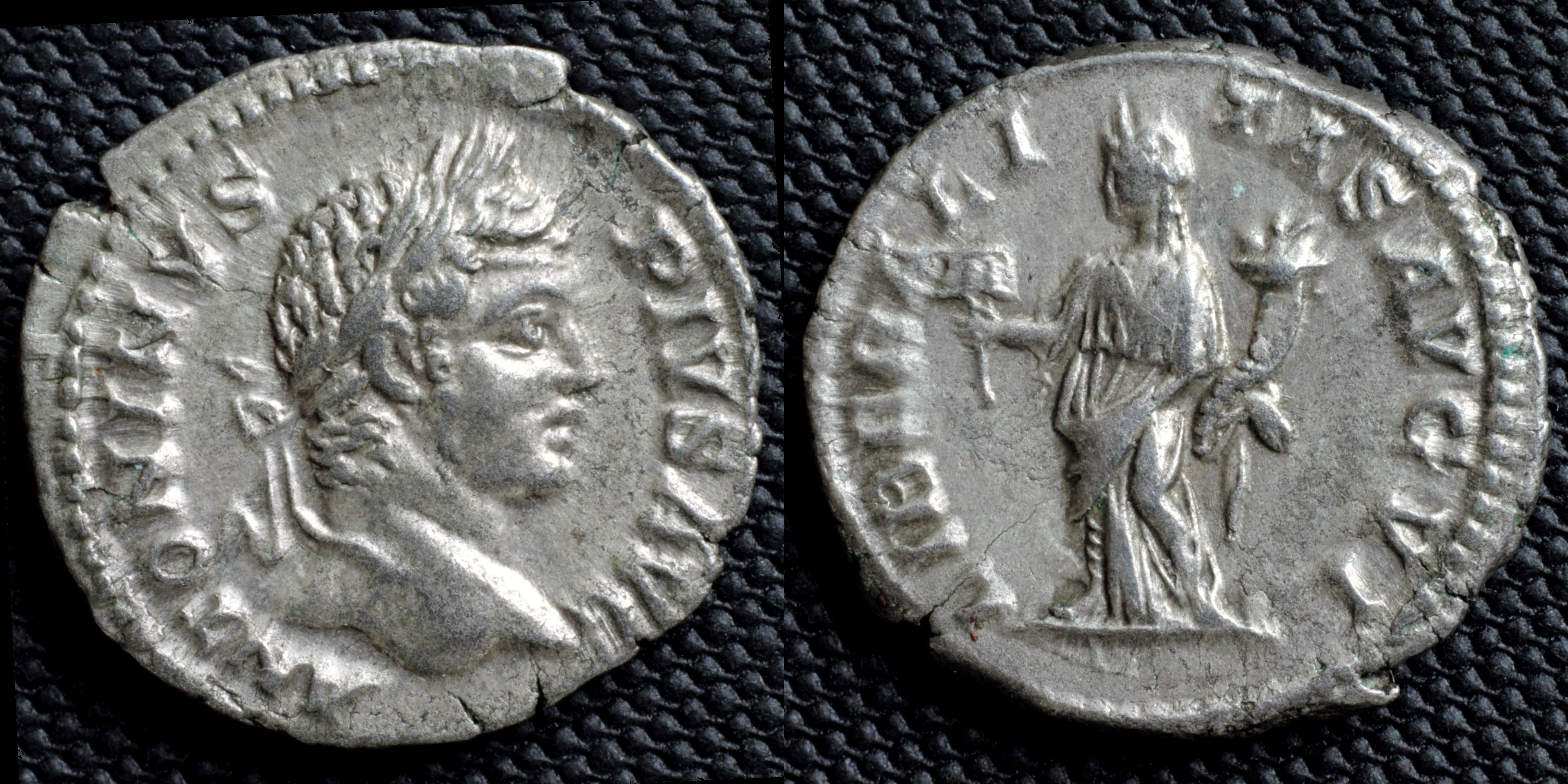
Reverse: Liberalitas standing left holding abacus and cornucopiae; LIBERALI_TAS AVG VI
Die Orientation: -
Weight: 3.2 g
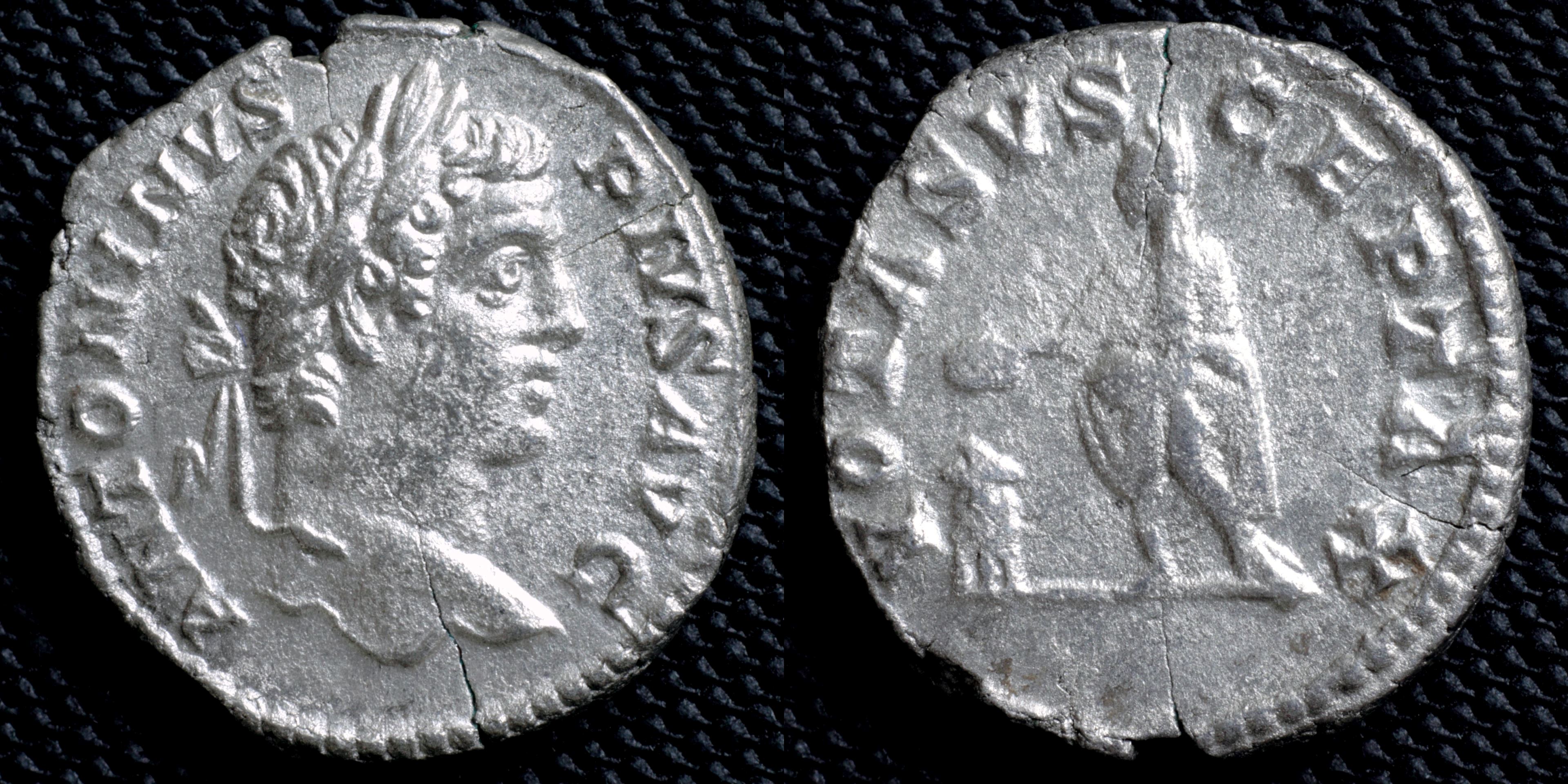
Reverse: Caracalla veiled, standing left, sacrificing out of patera over tripod altar; VOTA SVS_CEPTA X
Die Orientation: -
Weight: 4.14 g
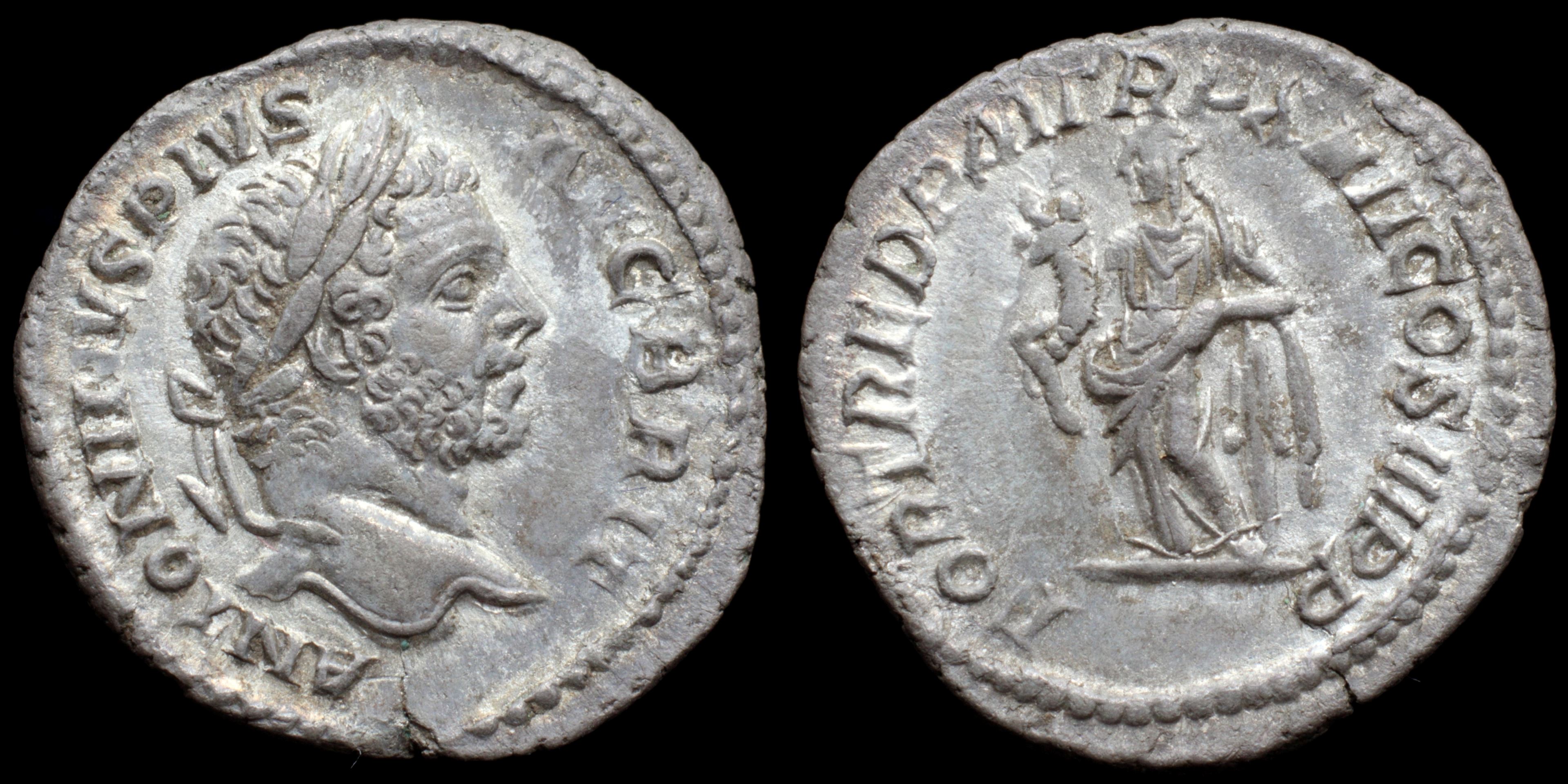
Reverse: Fortuna standing left, elbow on column, holding rudder and cornucopiae; wheel at her feet is missing (engraver's error); FORT RED P M TR P XIIII COS III P P
Die Orientation: -
Weight: 2.74 g
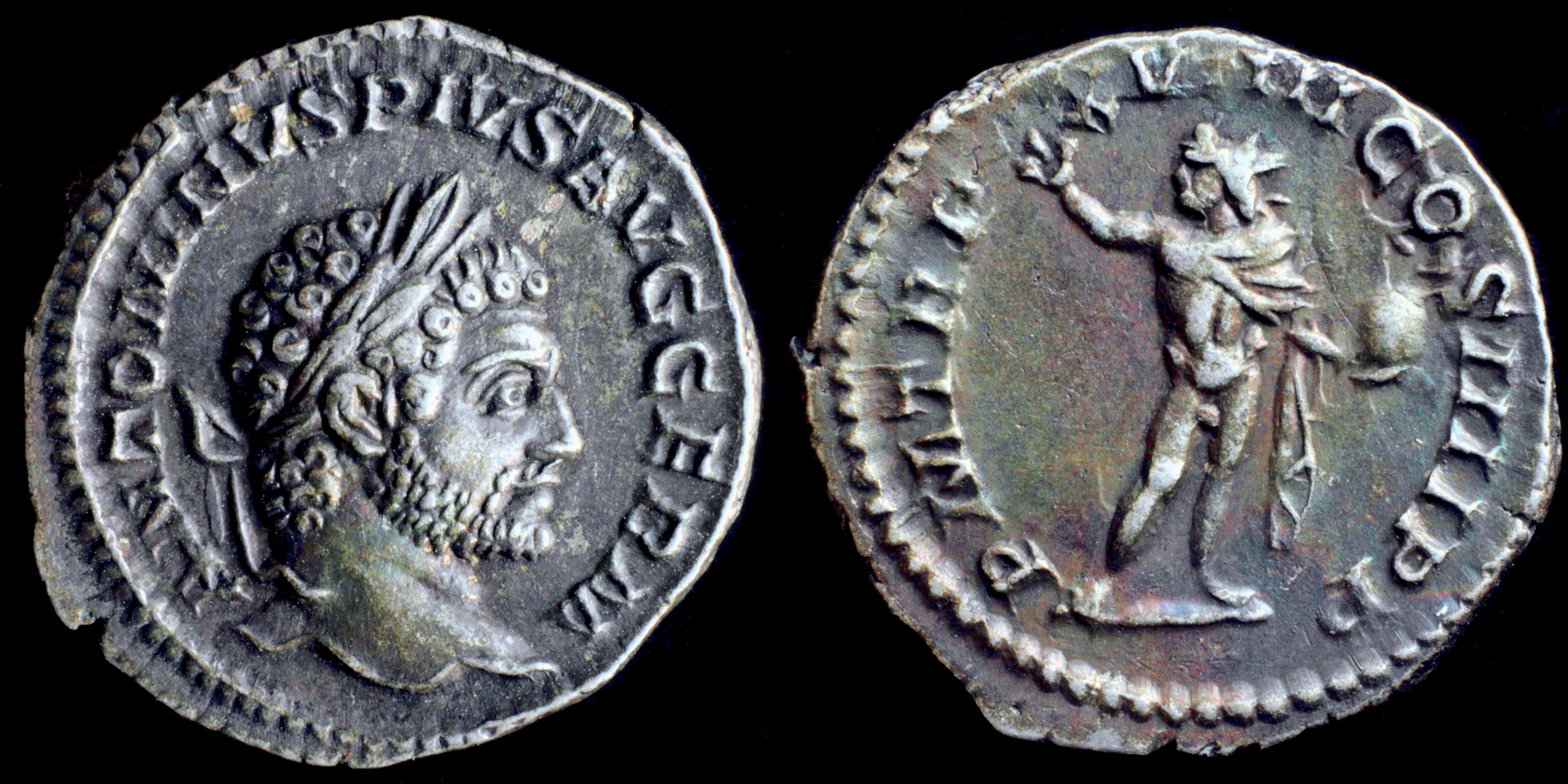
Reverse: Sol standing left, raising hand and holding globe; P M TR P__XVIIII COS IIII P P
Die Orientation: -
Weight: 2.75 g
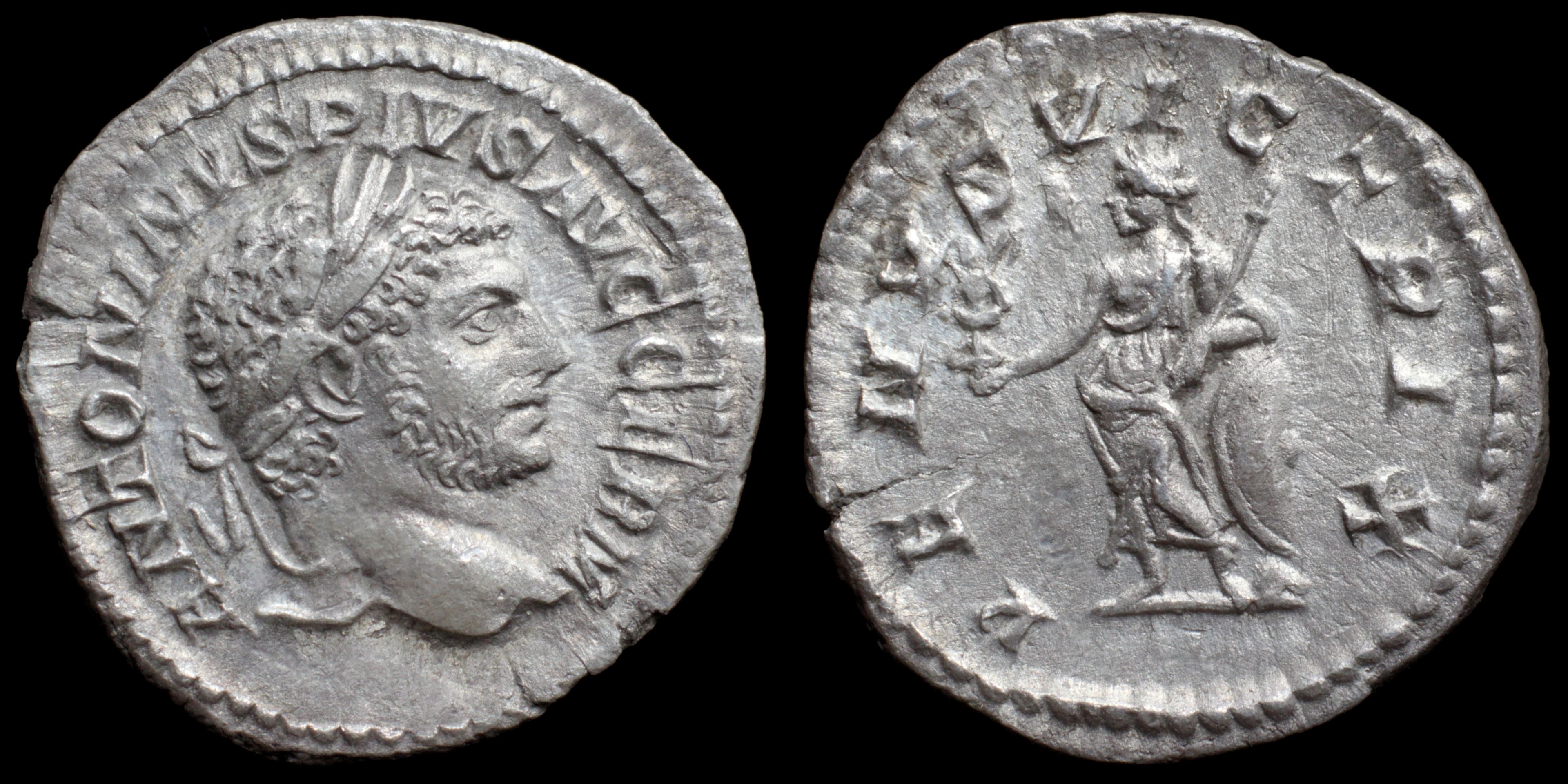
Reverse: Venus standing left, holding Victory and sceptre, leaning on shield set on helmet; VENVS VICTRIX
Die Orientation: -
Weight: 1.99 g
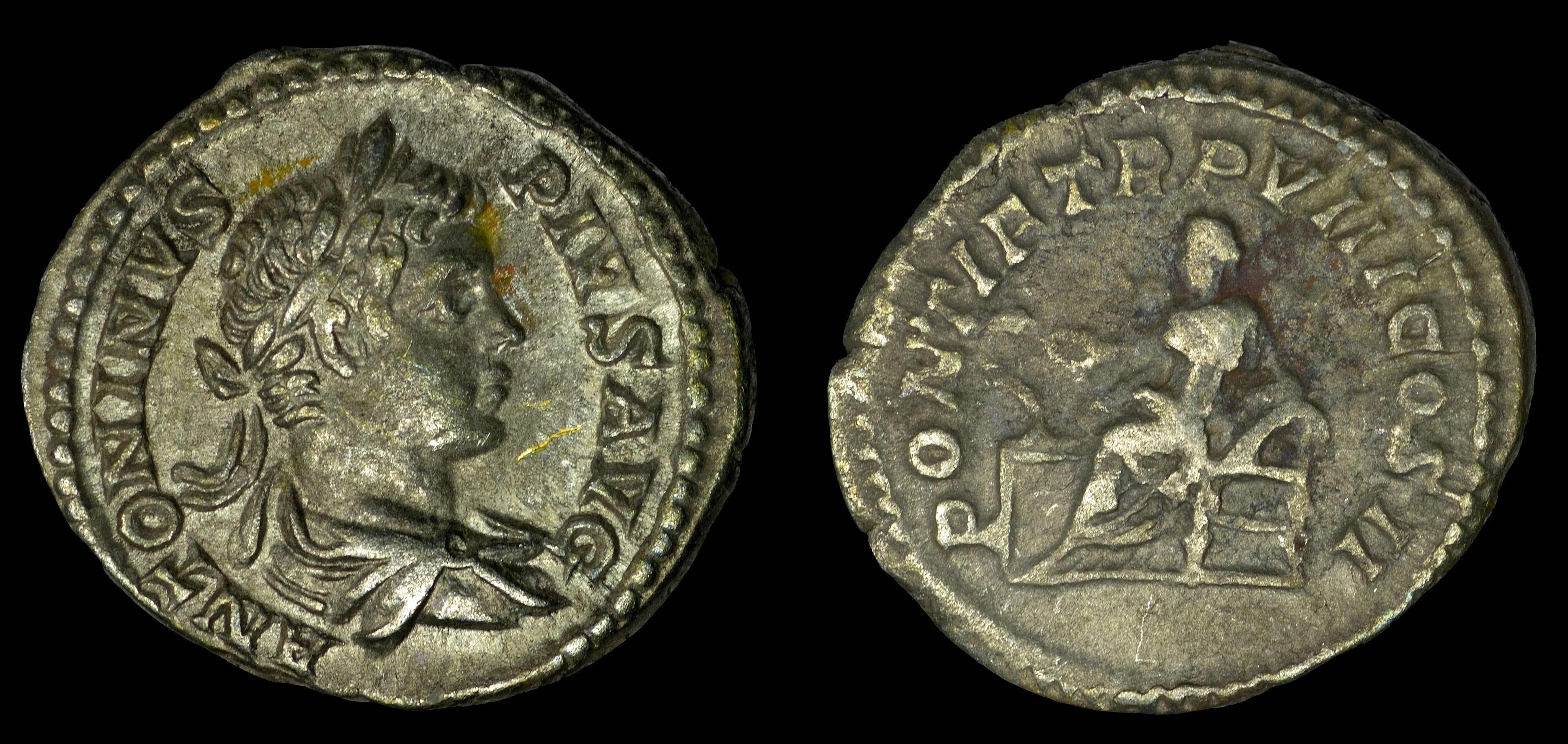
Reverse: PONTIF TR P VIII COS II, Salus seated left, feeding serpent coiled around altar
Die Orientation: -
Weight: 3.3 g
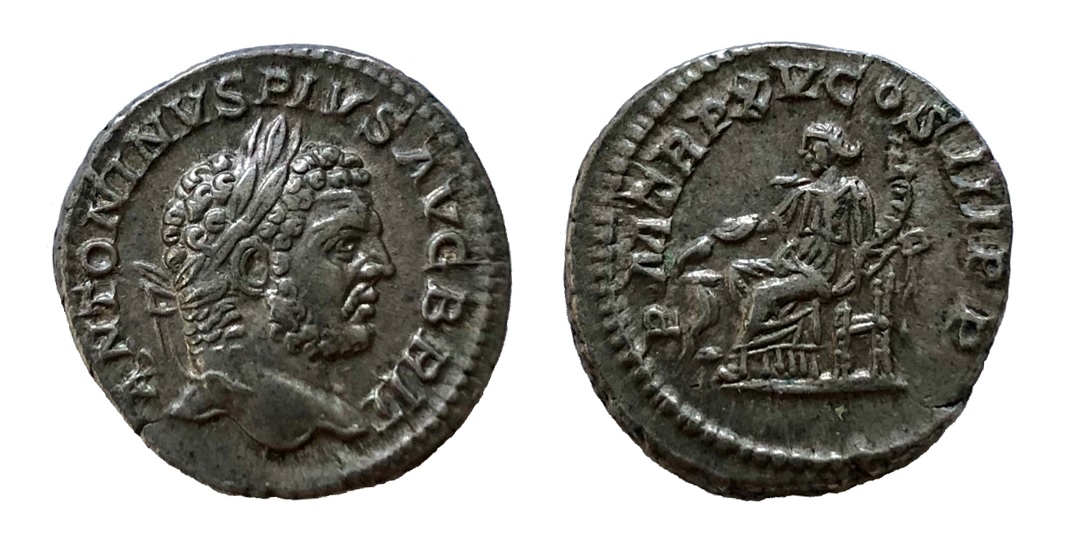
Reverse: Salus seated left on throne, holding patera with right hand, feeding snake coiled around altar, cornucopia in left hand, text (PM•TRP•XV•COS•III•PP)
Die Orientation: -
Weight: -
(24).JPG)
Reverse: PONTIF TR P XI COS II[I], Caracalla on horseback right, holding spear; PROF in exergue
Die Orientation: 8 H
Weight: 2.71 g
(49).jpg)
Reverse: INDVLGENTIA AVGG, the Dea Caelestis, holding thunderbolt and sceptre, riding on lion right over waters gushing from rock, IN CARTH in exergue
Die Orientation: 12 H
Weight: 3.41 g
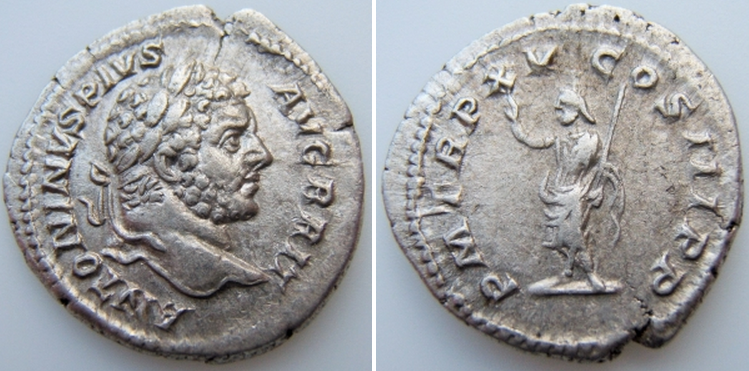
Reverse: PM TR P XV COS III PP - Serapis standing left, raising right hand and holding transverse sceptre.
Die Orientation: 6 H
Weight: 2.9 g
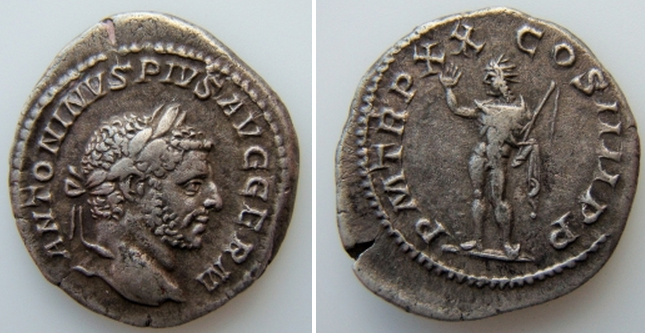
Reverse: P M TR XX COS IIII P P - Sol standing left with raised hand and carrying whip.
Die Orientation: 5 H
Weight: 3.97 g
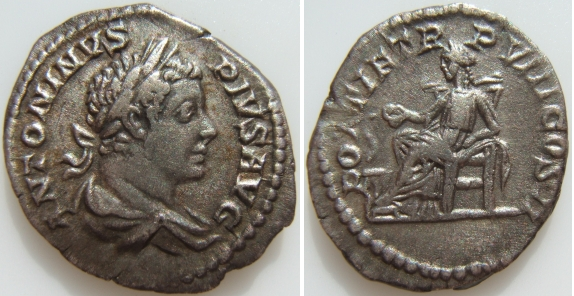
Reverse: PONTIF TR P VIII COS II - Salus seated left, feeding serpent coiled around altar.
Die Orientation: 2 H
Weight: 3.06 g
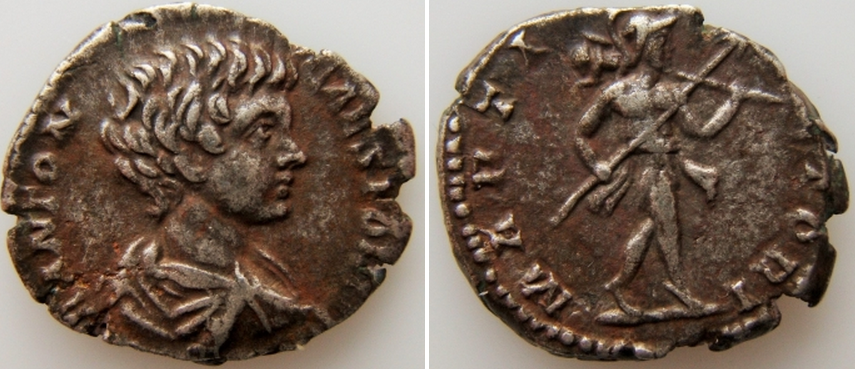
Reverse: MARTI VLTORI - Mars moving right, holding spear and trophy.
Die Orientation: 6 H
Weight: 3.33 g
.jpg)
Reverse: PACI AVGVSTAE, Winged Pax-Nemesis advancing right, holding winged caduceus in left hand, pointing down at snake, holding out fold of drapery below chin with right hand
Die Orientation: 6 H
Weight: 2.29 g
.jpg)
Reverse: MINER PACIF COS II / Minerva standing left, holding olive branch and shield on ground, spear resting against her left arm
Die Orientation: -
Weight: -
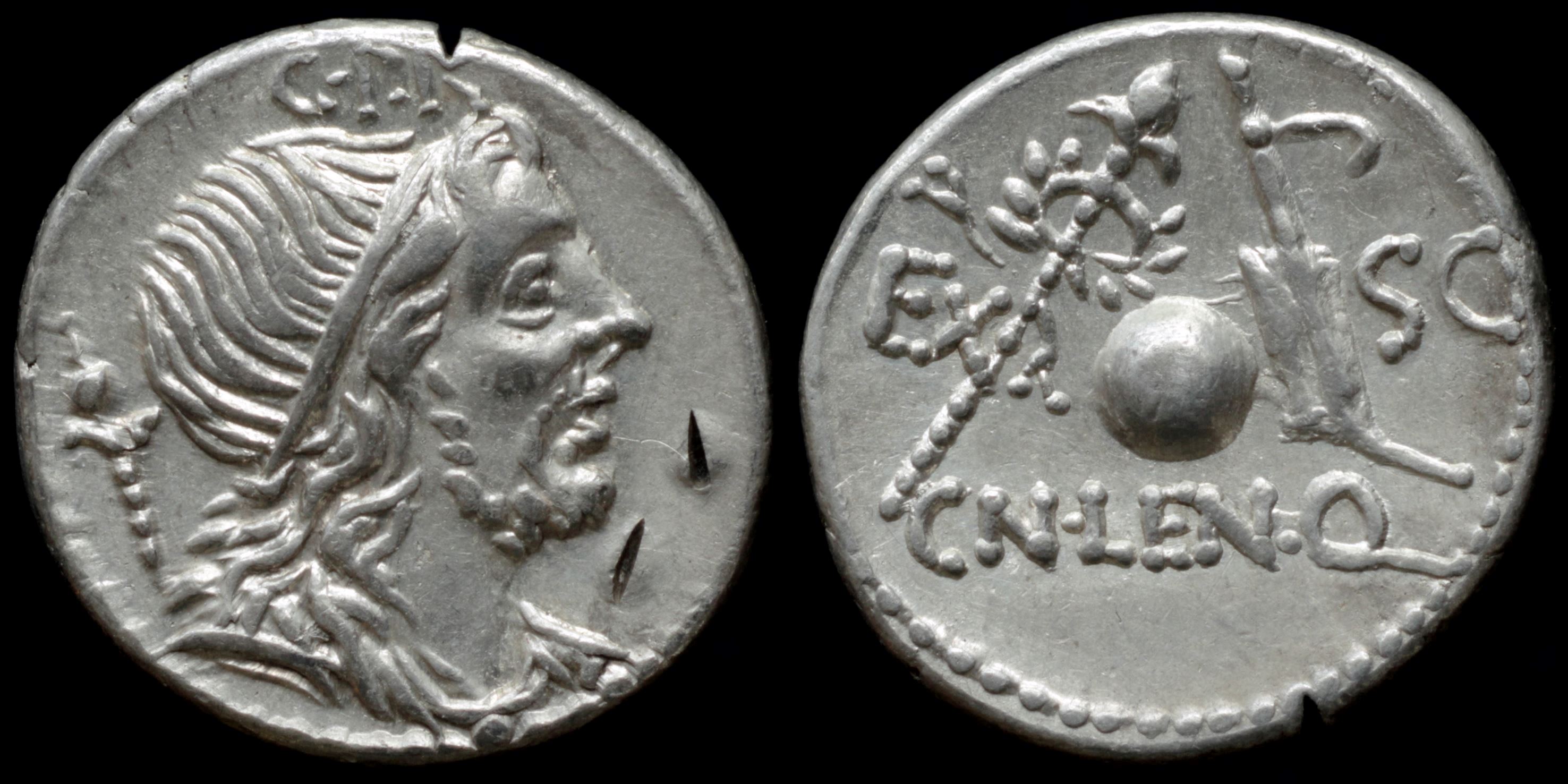
Reverse: wreathed scepter, globe, rudder, EX S·C / CN·LEN·Q
Die Orientation: -
Weight: 3.9 g
mint in Spain. Moneyer struck this coin as questor of proconsul Pompey when he was sent to support Q. Caecilius Metellus Pius in lenghty war against Sertorius in Spain. Moneyer became consul in 56 BC.
Probably struck in late 75 BD in Taras or Brundisium, perhaps the fund of choice to pay local shipping contractors to ferry armies across the Adriatic and back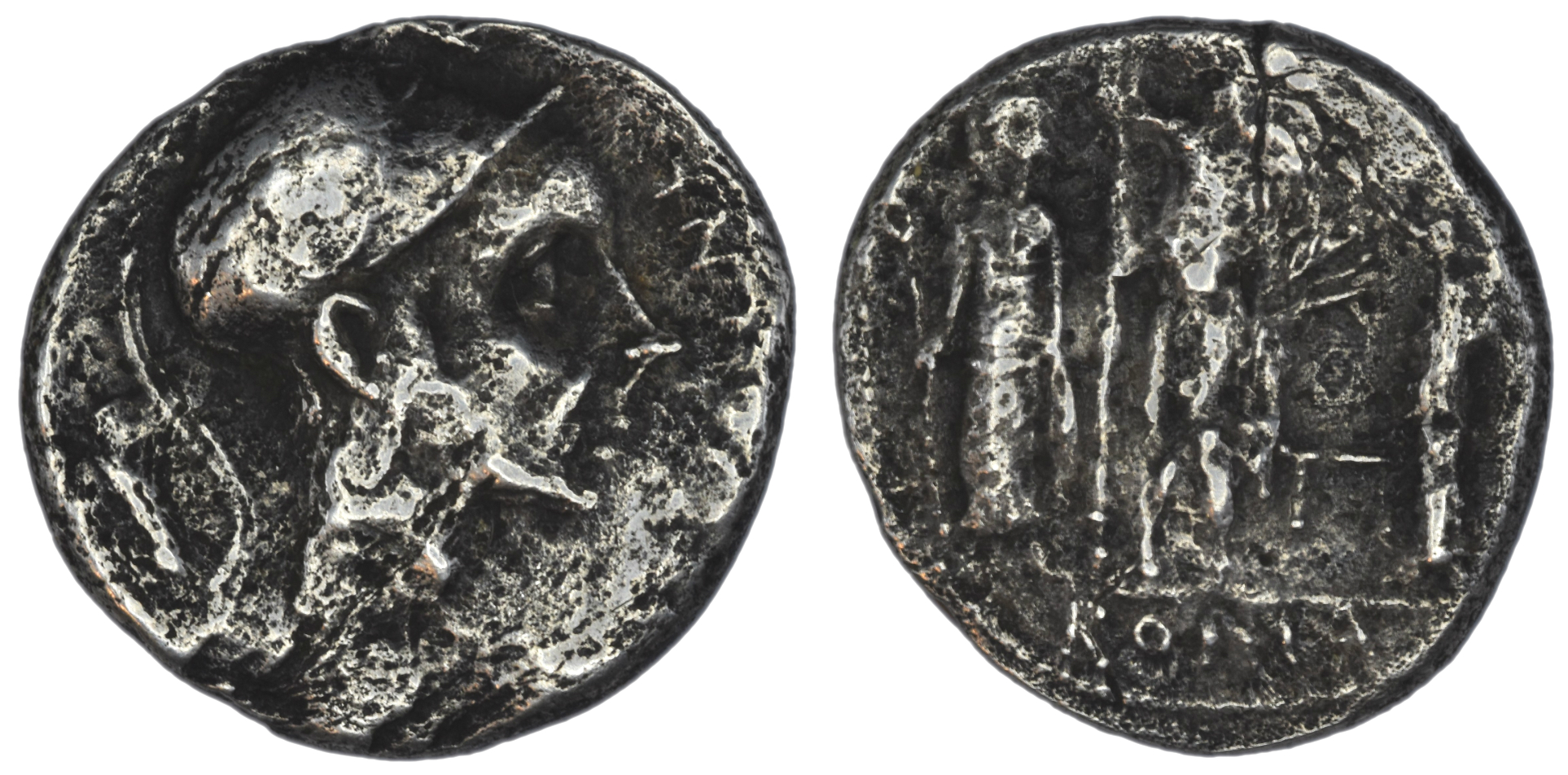
Reverse: The Capitoline Triad: Jupiter, holding sceptre and thunderbolt, standing facing between Juno and Minerva / Π in field, ROMA in exergue.
Die Orientation: -
Weight: 3.49 g
(25).jpg)
Reverse: Jupiter standing facing, holding sceptre and thunderbolt, between Juno and Minerva, the latter crowning Jupiter with wreath; palm branch in central field, dolphin in right field, ROMA (divided by eagle) in exergue
Die Orientation: 5 H
Weight: 4.03 g
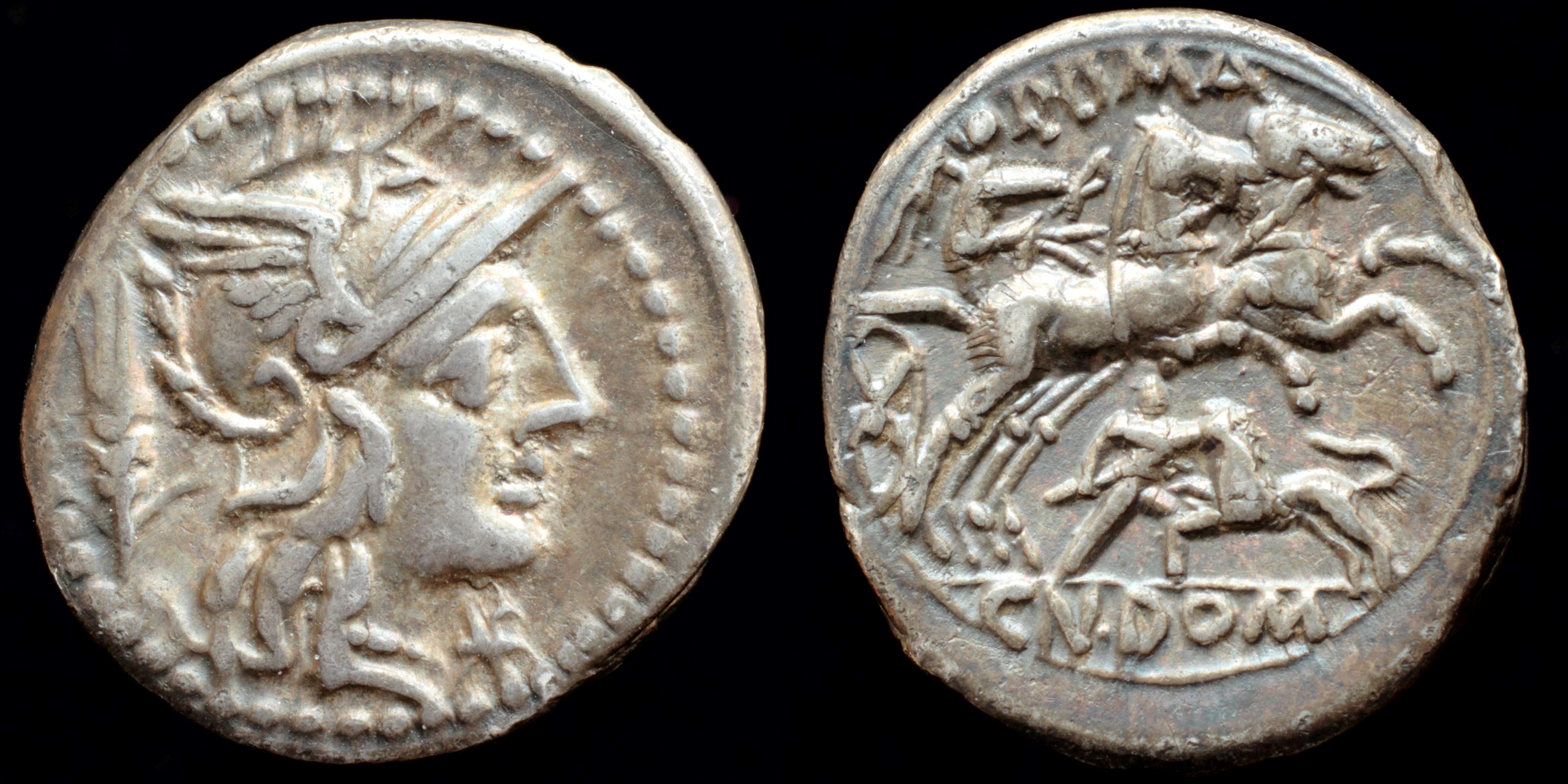
Reverse: Victory in biga right holding wreath and reins, man attacking lion with spear below ROMA CN·DOM
Die Orientation: -
Weight: 3.9 g
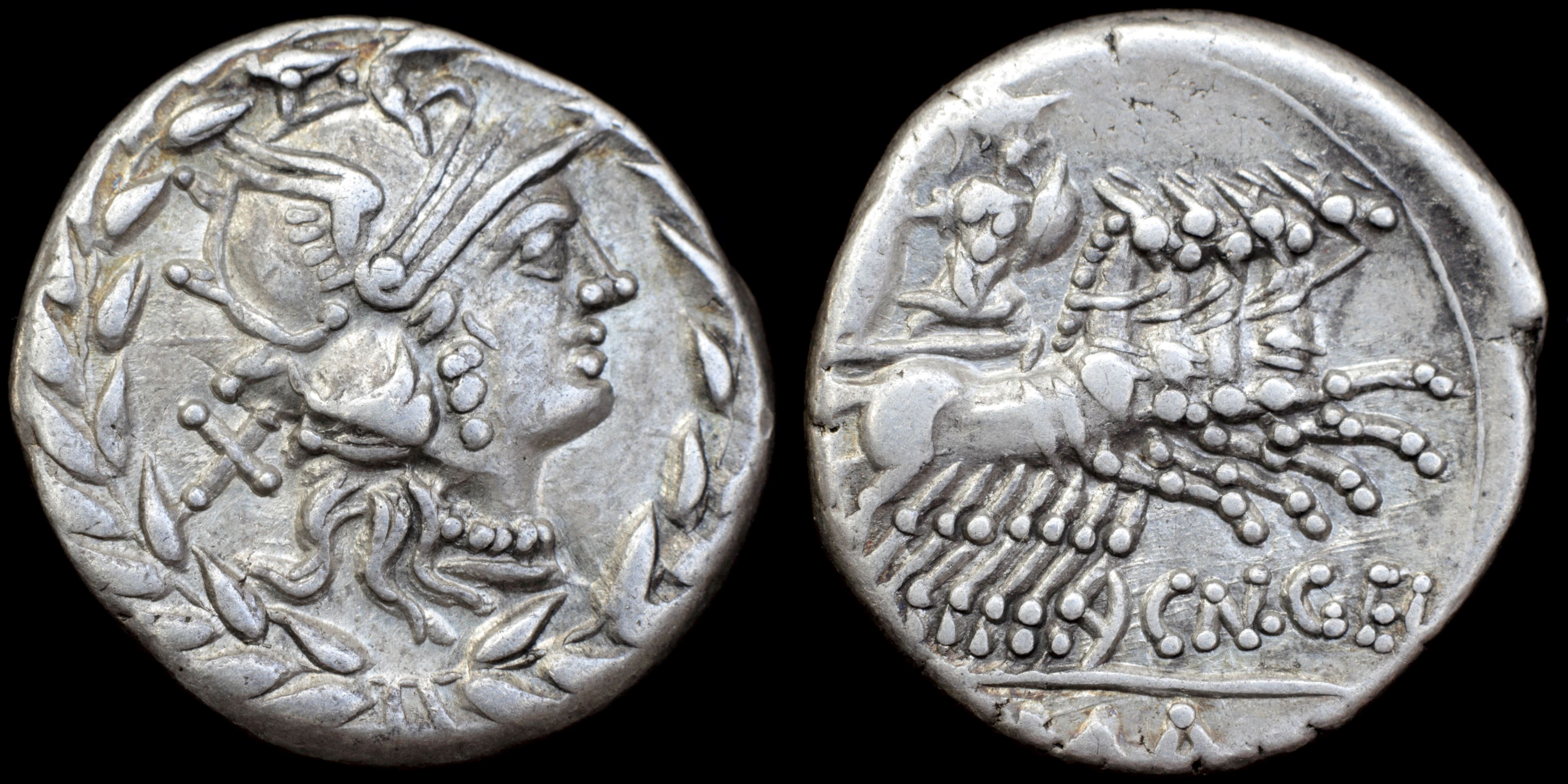
Reverse: Mars and Nerio in quadriga right; Mars holding Nerio and shield CN·GEL ROMA
Die Orientation: -
Weight: 3.9 g
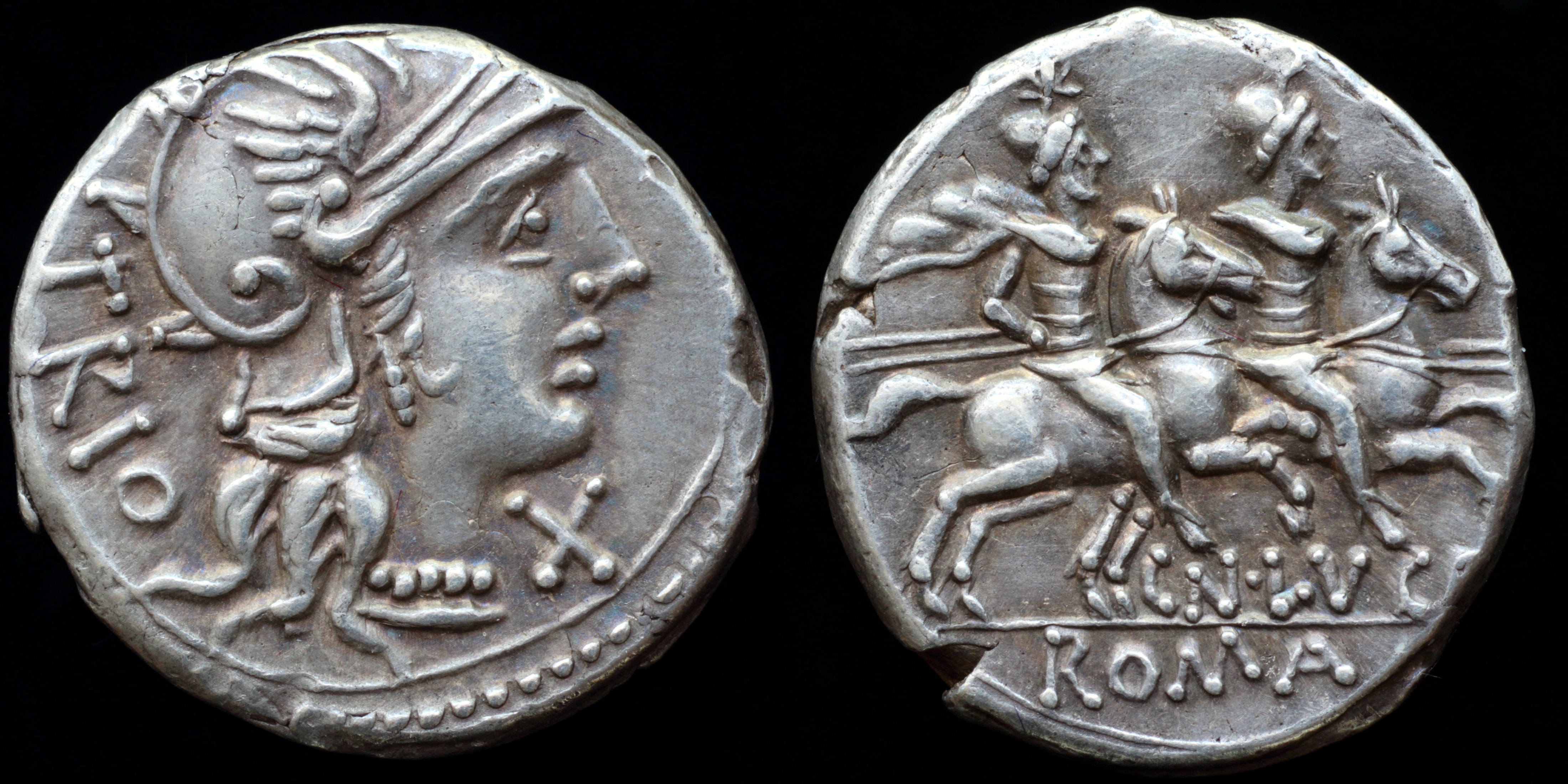
Reverse: Dioscuri riding on horses right, stars over pilei, holding spear and reins; CN·LVCR / ROMA
Die Orientation: -
Weight: 4 g
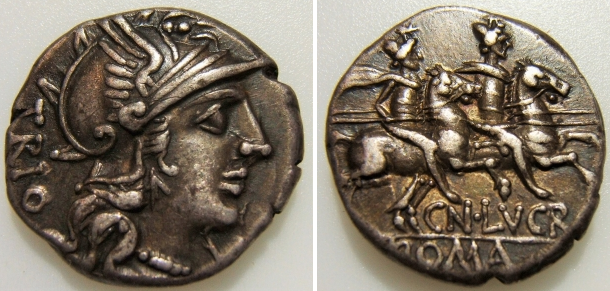
Reverse: CN•LVCR / ROMA - The Dioscuri riding right, each holding a couched lance, stars above, CN•LVCR below.
Die Orientation: 3 H
Weight: 3.94 g
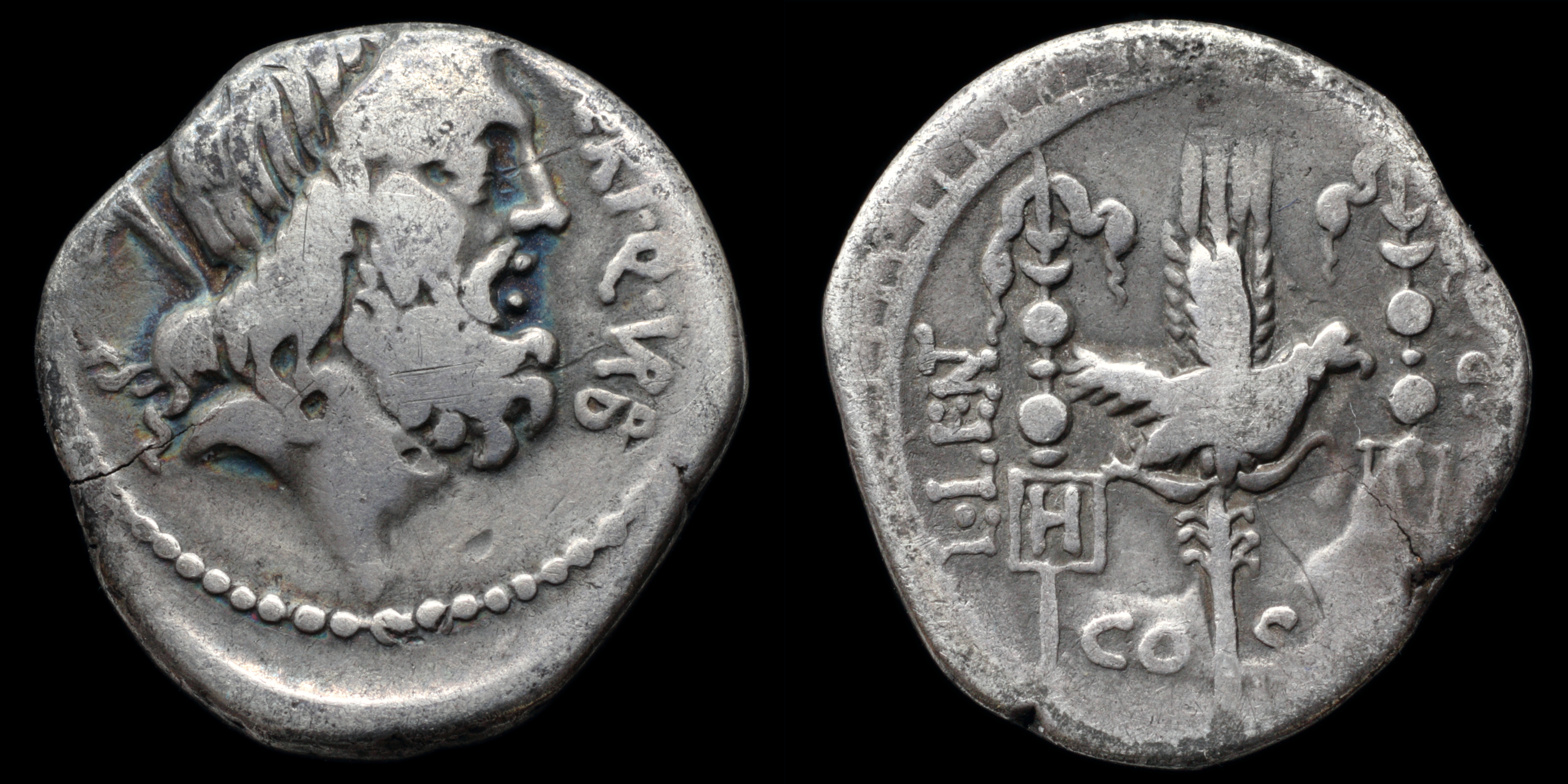
Reverse: aquila between signum of Hastati and signum of Princeps; L·LE(NT) // C·(MA)RC // H__P / COS
Die Orientation: -
Weight: 3.6 g
.jpg)
Reverse: Cretan goat standing right; quiver and bow in left field.
Die Orientation: 9 H
Weight: 3.86 g
Cn. Plancius became friends with Cicero during Ciceros exile in Macedonia, and in 55 BC, after being elected to the curule aedileship, was defended by Cicero against charges of electoral corruption. The obverse and reverse types refer to his activities in Macedonia and Crete."
Provenance: Bertolami Fine Arts, E-Live Auction 49 (12 November 2017), lot 774.
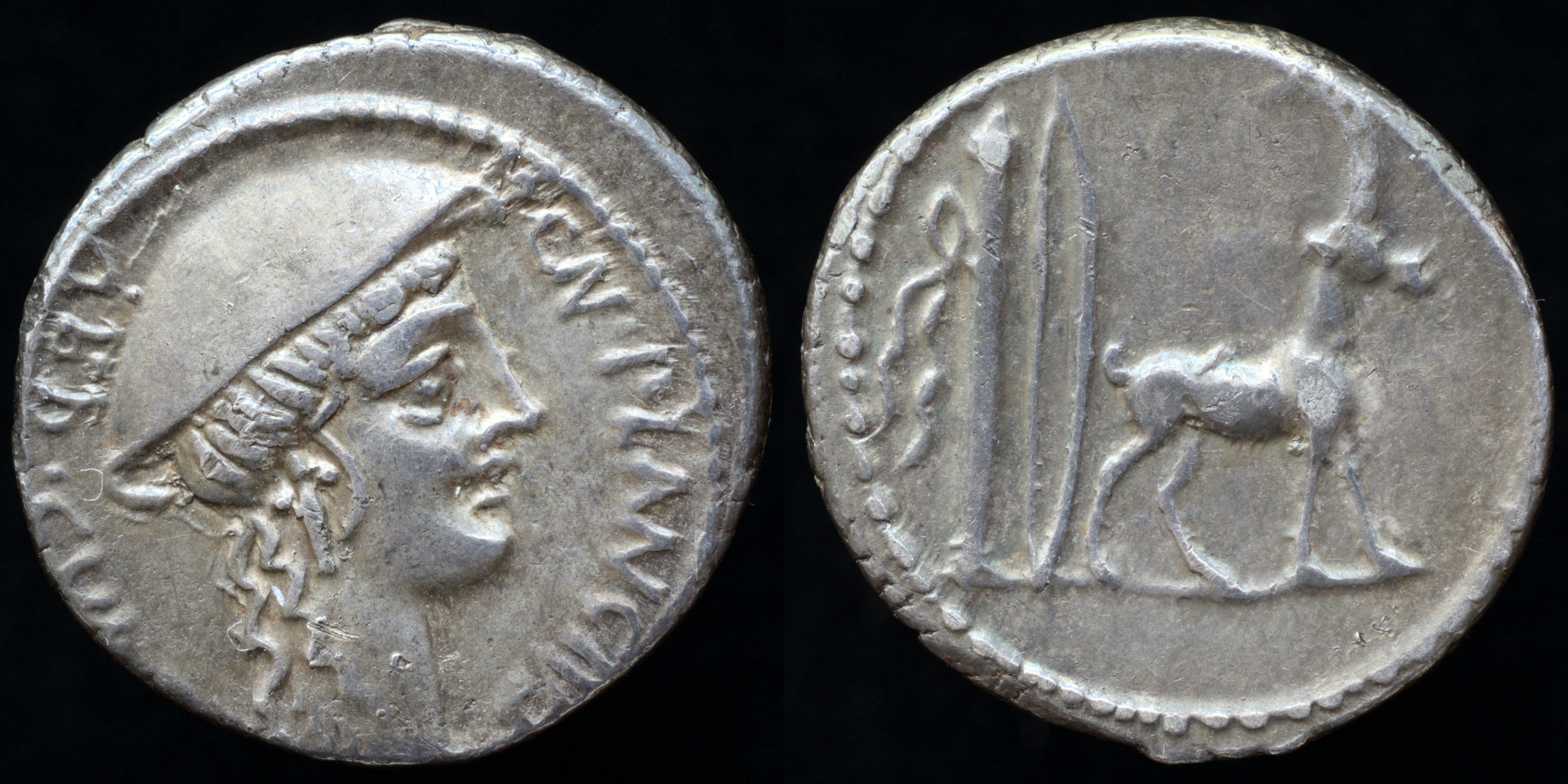
Reverse: agrimi standing right, bow and quiver left
Die Orientation: -
Weight: 4.1 g
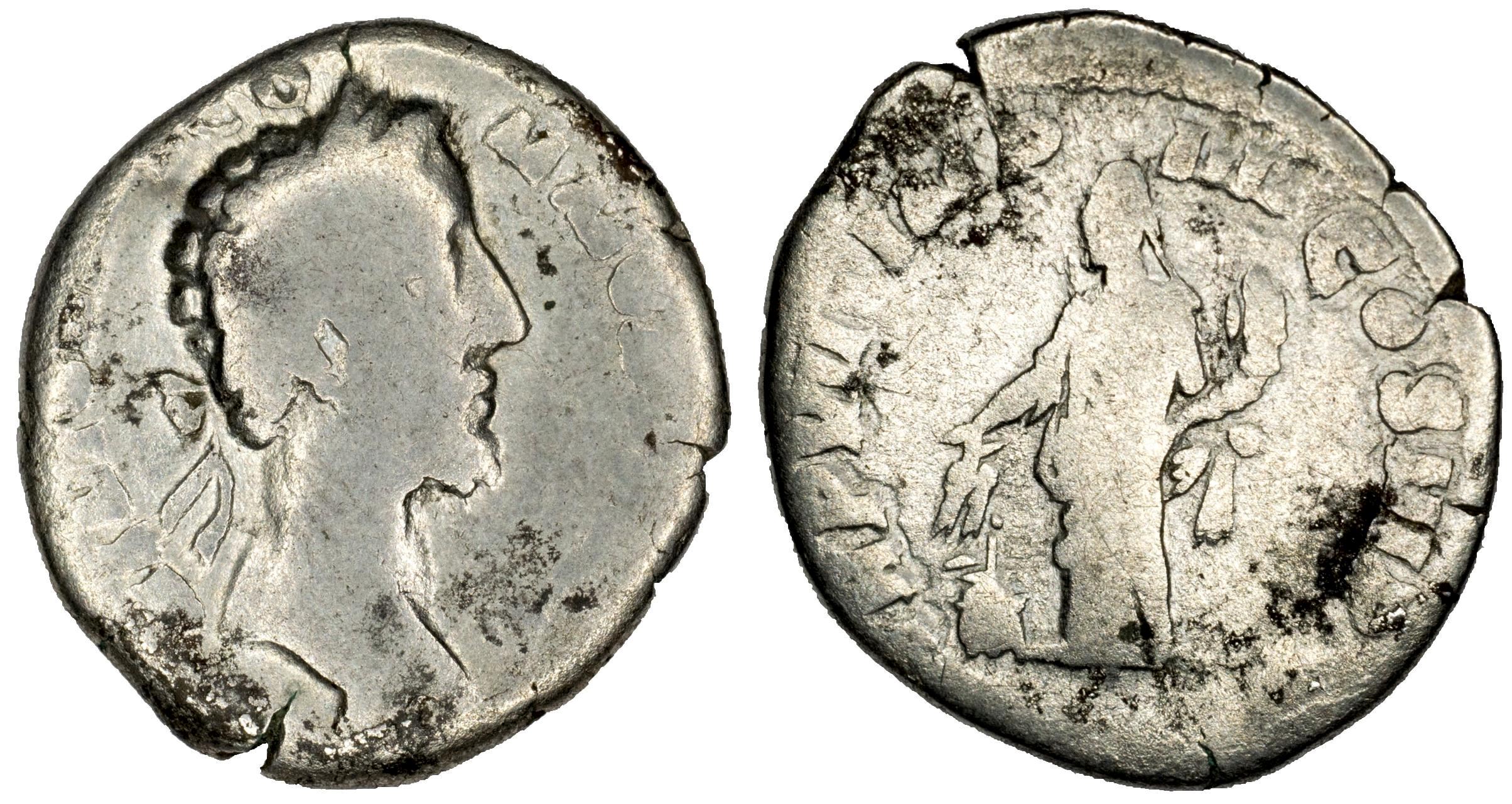
Reverse: M ANTININVS COMMODVS AVG REV: TRP VII IMP IIII COS III PP, Annona standing left, holding corn ears and cornucopiae, modius left
Die Orientation: 0 H
Weight: 0 g
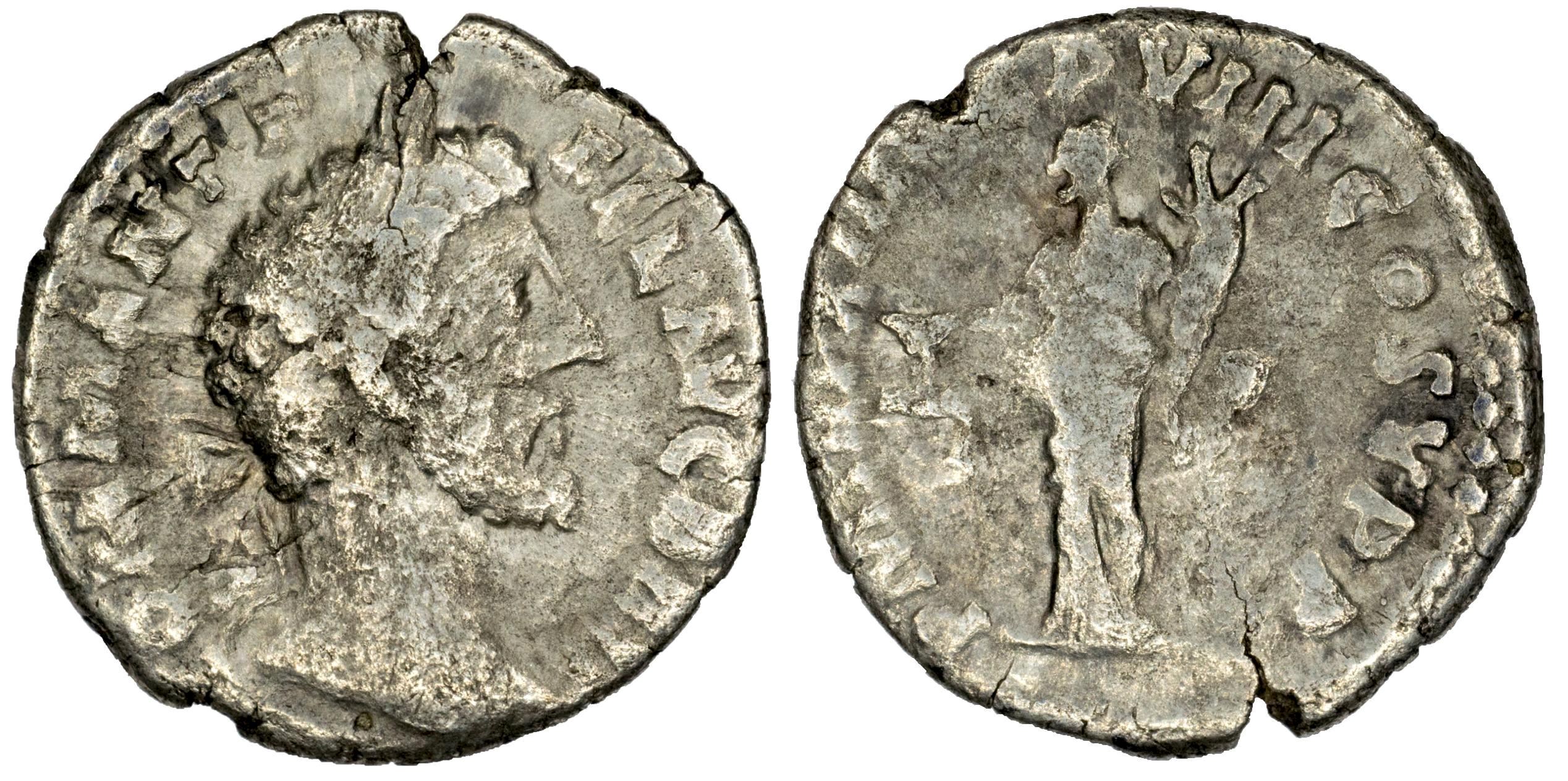
Reverse: PM TRP XIII(?) IMP VIII COS V PP, Aequitas standing left
Die Orientation: 0 H
Weight: 0 g
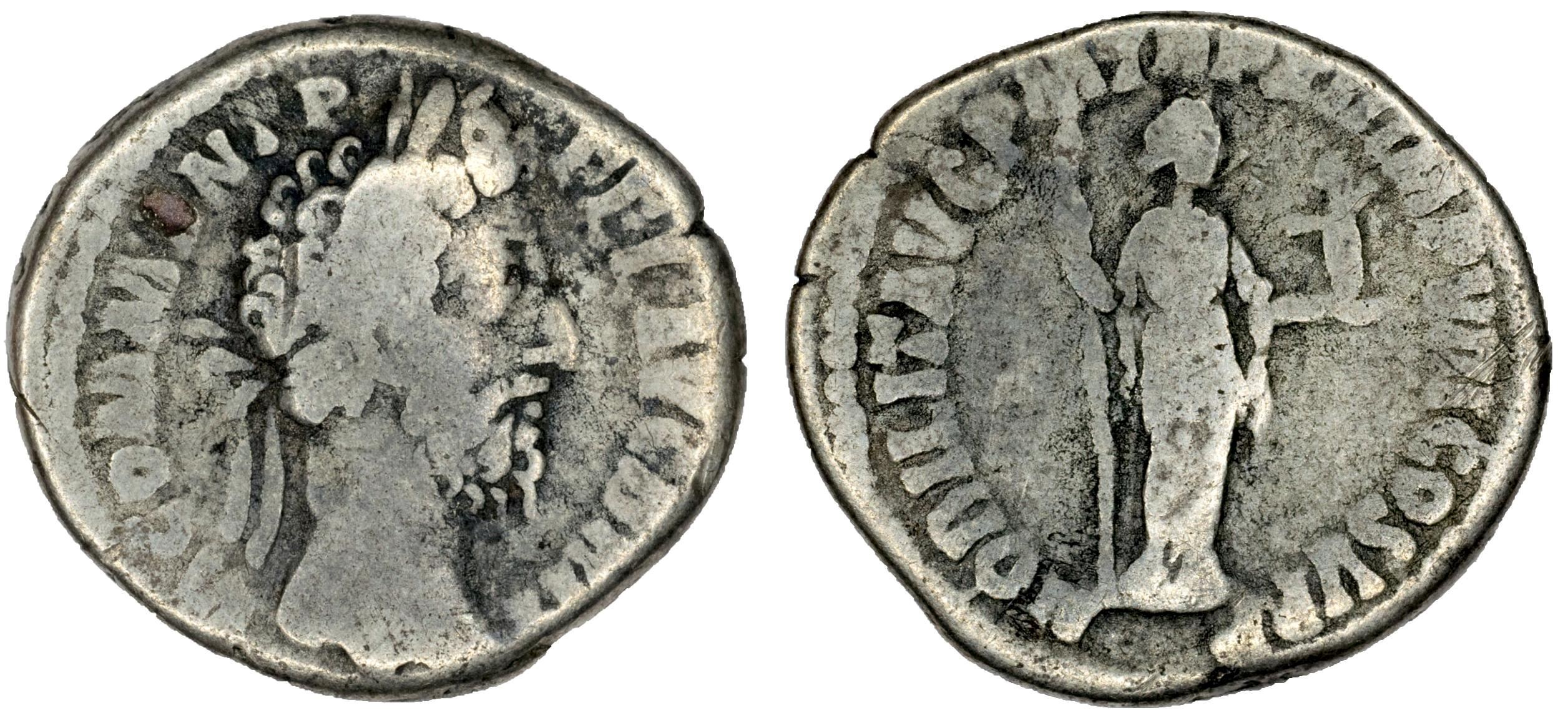
Reverse: NOBILIT AVG PM TR P XII IMP VIII COS V P P, Nobilitas standing front, head left, right hand on head, holding sceptre and palladium
Die Orientation: 0 H
Weight: 0 g
(33).jpg)
Reverse: PM TR P XIII IMP VIII COS V P P, Aequitas standing left, holding scales and cornucopia
Die Orientation: 1 H
Weight: 3.14 g
.jpg)
Reverse: COS IIII, Felicitas holding branch and long caduceus
Die Orientation: -
Weight: 3.05 g
.jpg)
Reverse: Commodus standing left holding branch and scepter; PATER SENAT P M TR P XII IMP VIII COS V P P
Die Orientation: -
Weight: 2.03 g
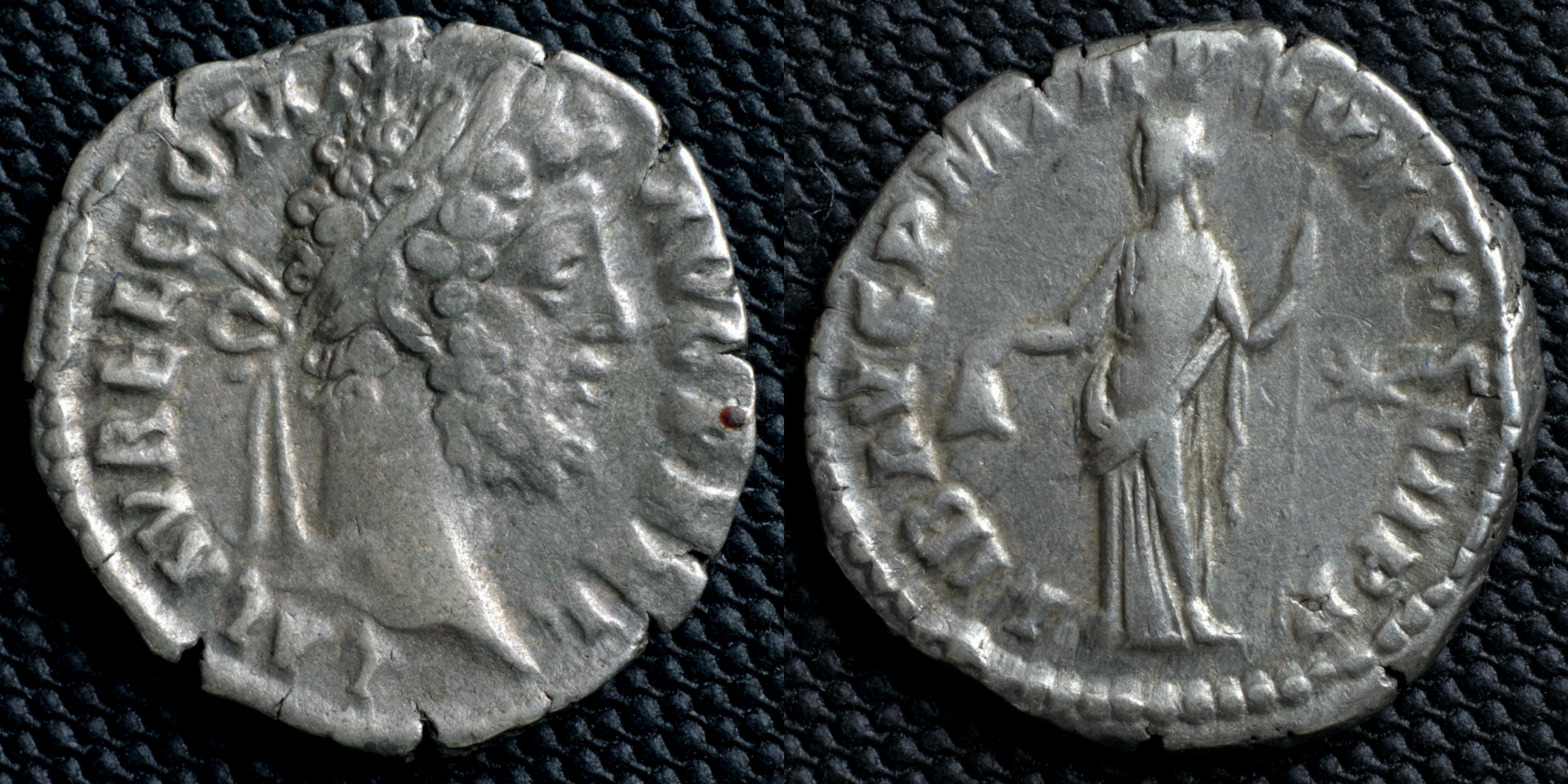
Reverse: Libertas standing left, holding pileus and scepter; * right; LIB AVG P M TR P XVII COS VII P P
Die Orientation: -
Weight: 2.63 g
.jpg)
Reverse: PROVIDENTIAE AVG, Commodus as Hercules standing left with foot on prow, holding club set on tree trunk with left hand, receiving grain ears from Africa standing right, wearing elephant-skin headdress and holding sistrum in left hand, with lion at her feet
Die Orientation: -
Weight: 2.55 g
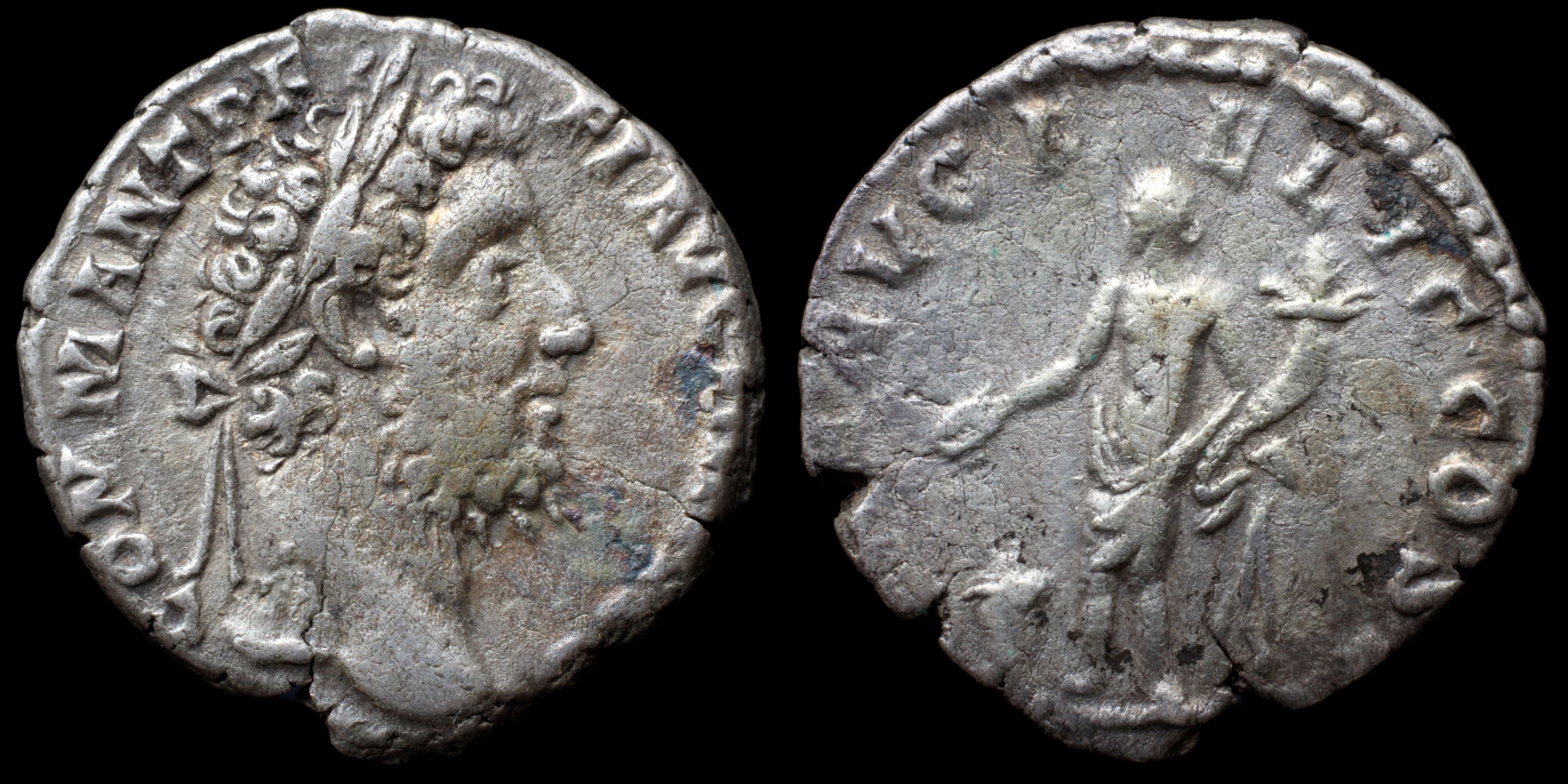
Reverse: Genius standing left, sacrificing out of patera over altar, holding cornucopia; GEN AVG F_ELIC COS VI
Die Orientation: -
Weight: 2.61 g
(0).jpg)
Reverse: P M TR P XVII IMP VIII COS VII P P / Victory walking left, holding wreath and palm
Die Orientation: -
Weight: -
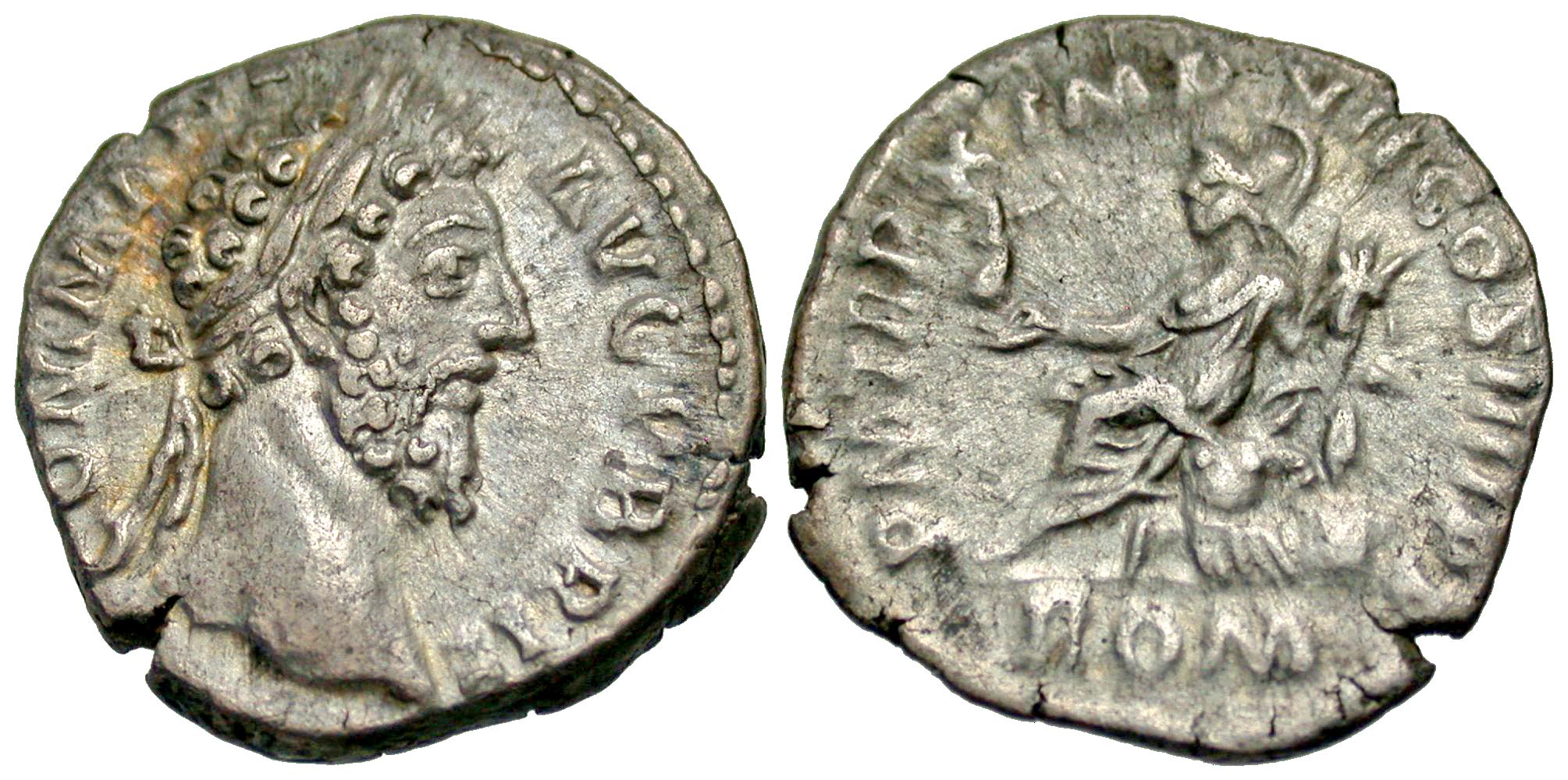
Reverse: P M TR P X IMP VII COS IIII P P, ROM, Roma seated on cuirass left, holding Victory and cornucopia; arms on ground below
Die Orientation: 1 H
Weight: 2.62 g
Toned VF. From the William B. Porter Collection.
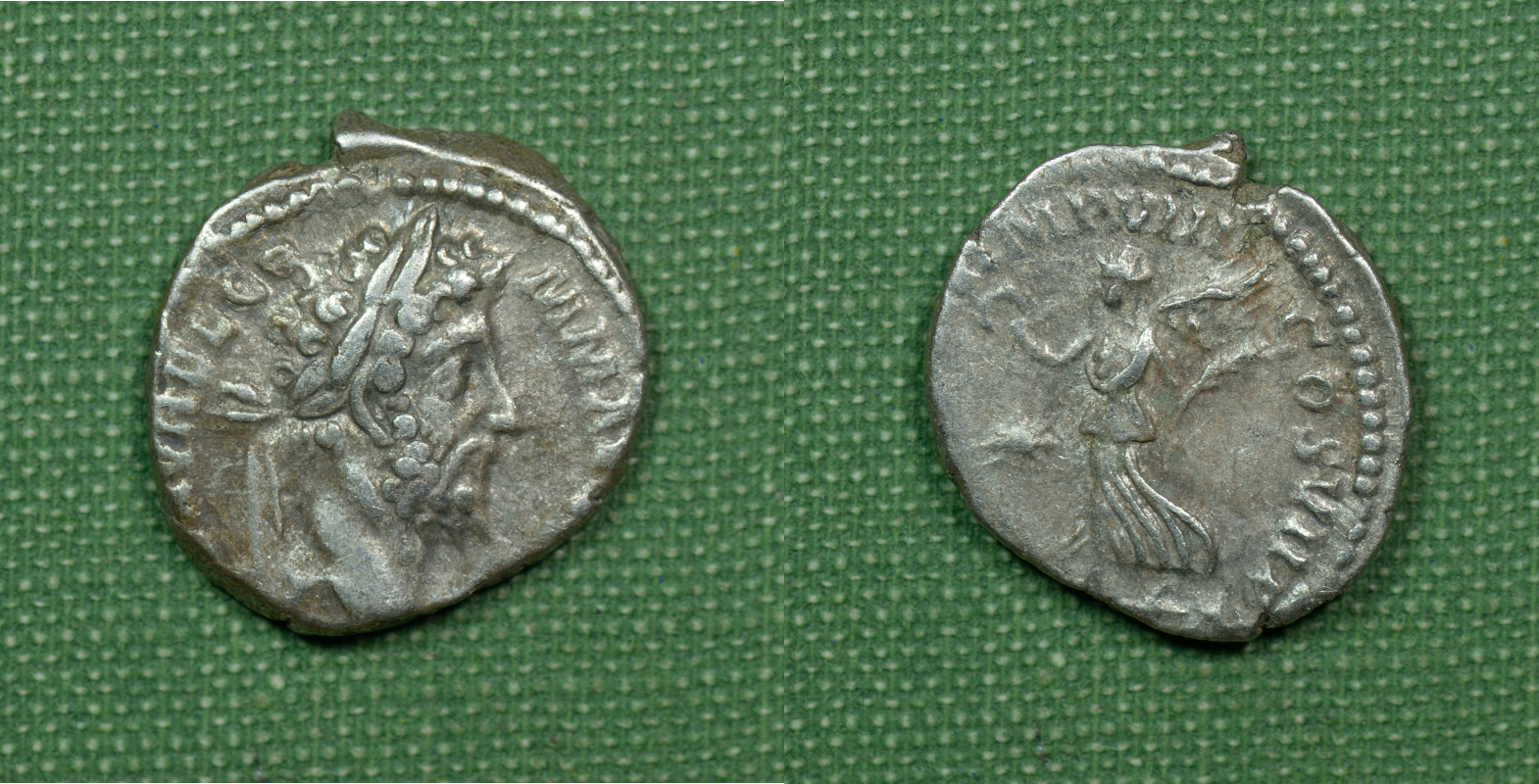
Reverse: P M TR P XVII IMP VIII COS VII P P, Victory, winged, draped, advancing left, holding wreath in extended right hand and palm, sloped over left shoulder, in left hand; in field, sometimes star
Die Orientation: 12 H
Weight: 2.73 g
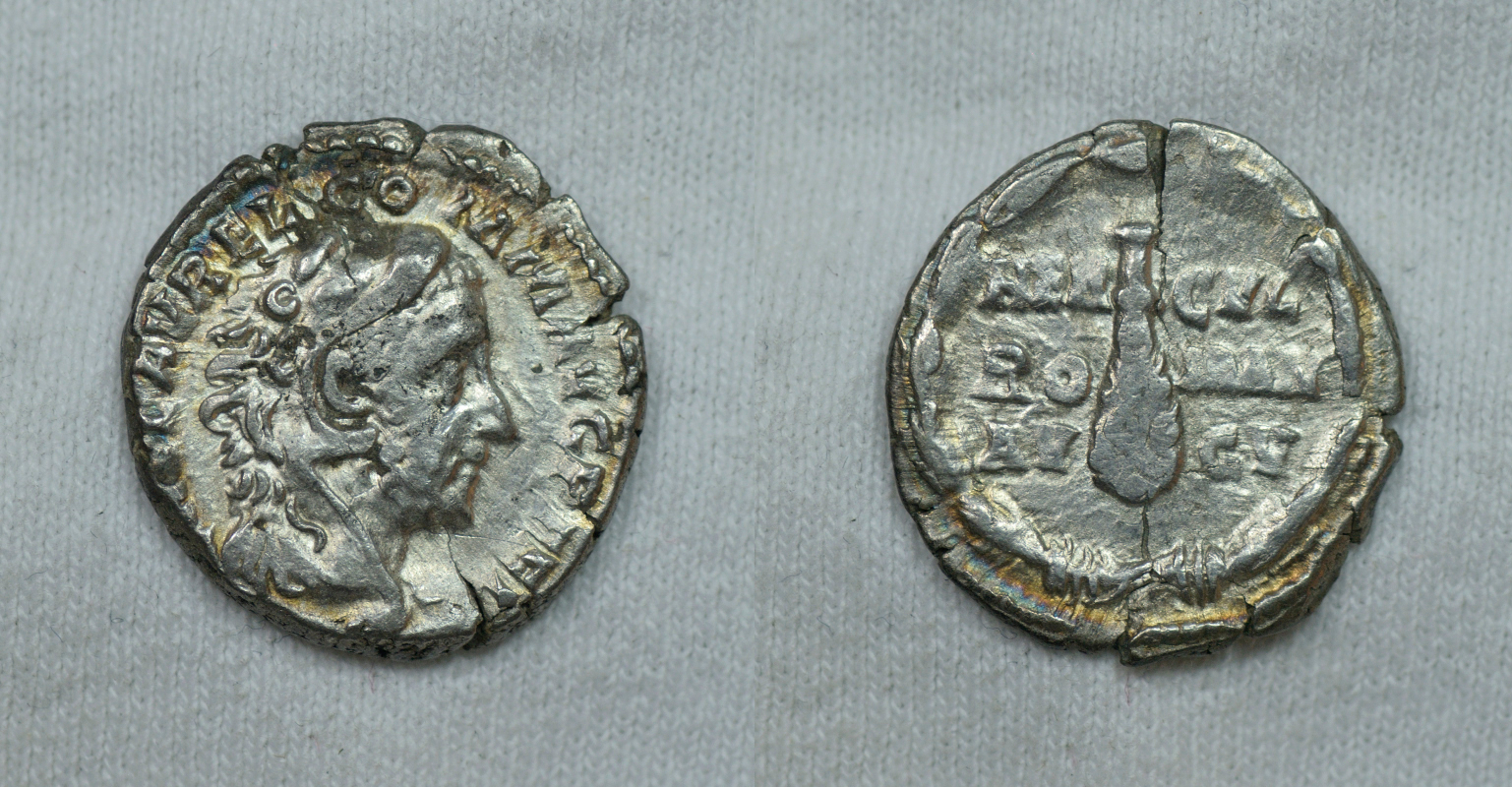
Reverse: HERCVL ROMAN AVGV - Club of Hercules with legend to either side in 3 lines within wreath
Die Orientation: 0 H
Weight: 0 g
.jpg)
Reverse: FOR RED P M TR P XI IMP VII COS V P P: Fortuna, draped, seated left on low seat, holding rudder set on globe in right hand and cornucopiae in left hand; under seat, wheel
Die Orientation: 6 H
Weight: 3.57 g
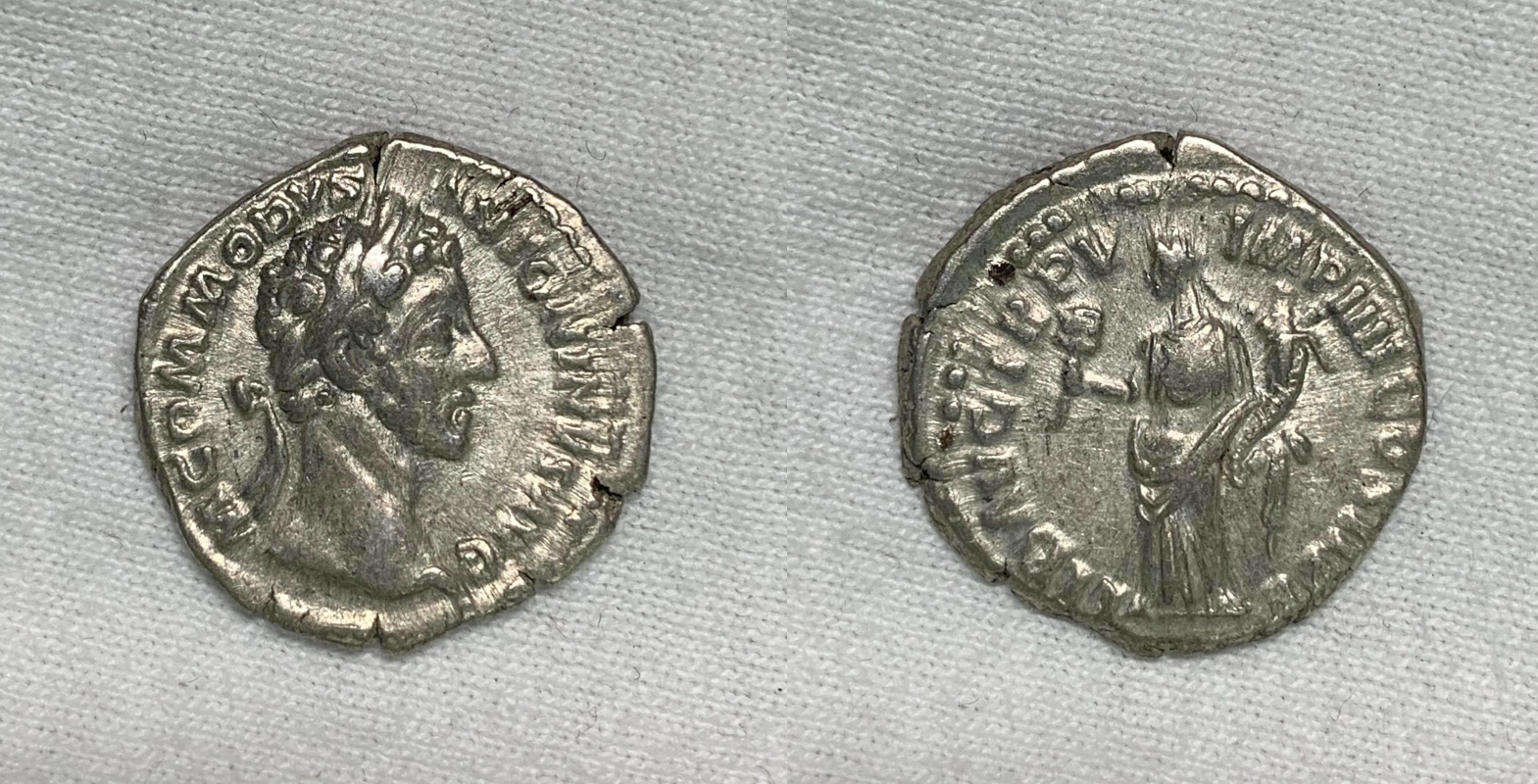
Reverse: LIB AVG TR P V IMP IIII COS II P P: Liberalitas, draped, standing left, holding coin board in right hand and cornucopiae in left hand
Die Orientation: 12 H
Weight: 3.39 g
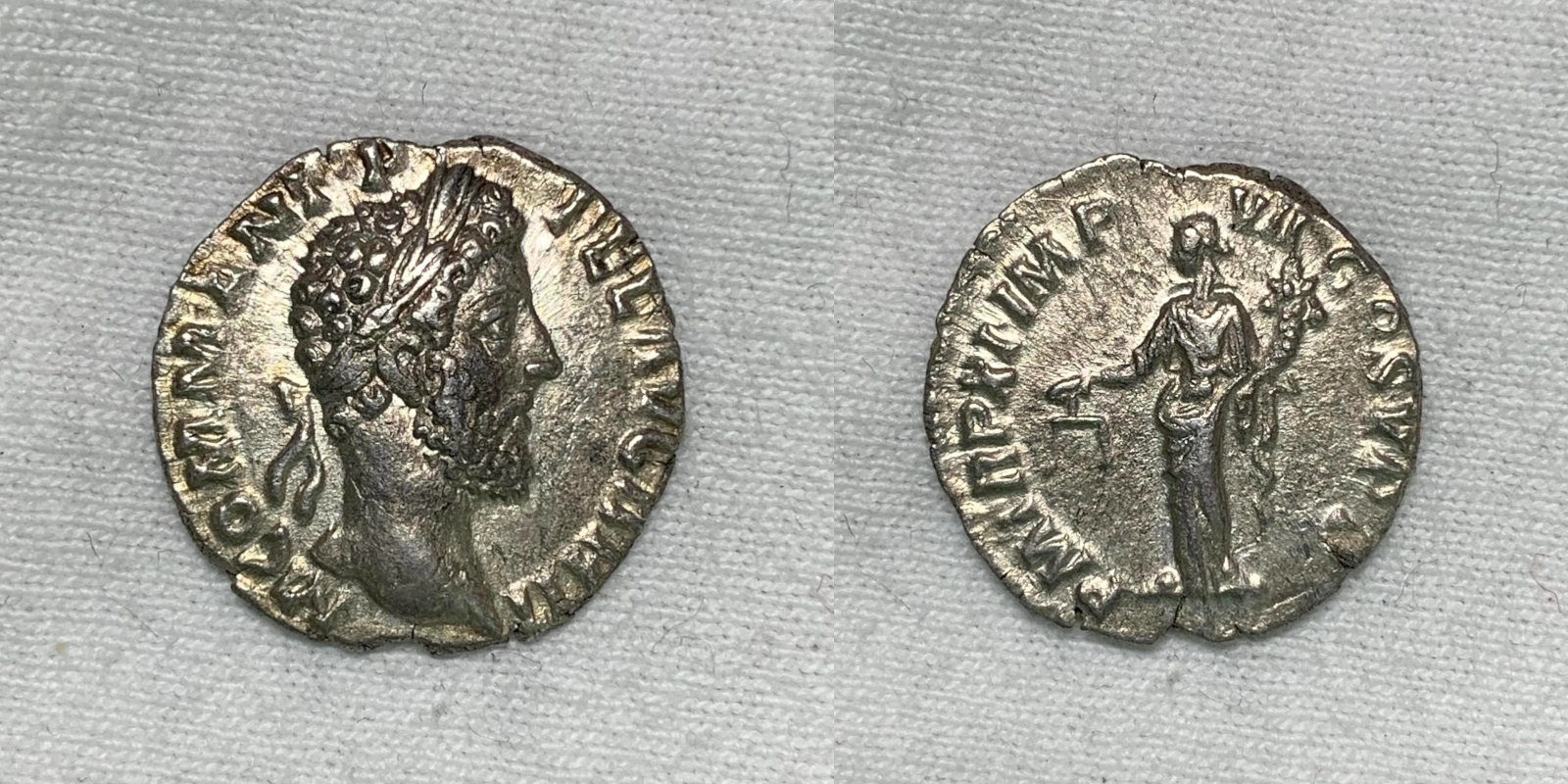
Reverse: P M TR P XI IMP VII COS V P P: Aequitas, draped, standing left, holding scales in right hand and cornucopiae in left hand
Die Orientation: 12 H
Weight: 2.37 g
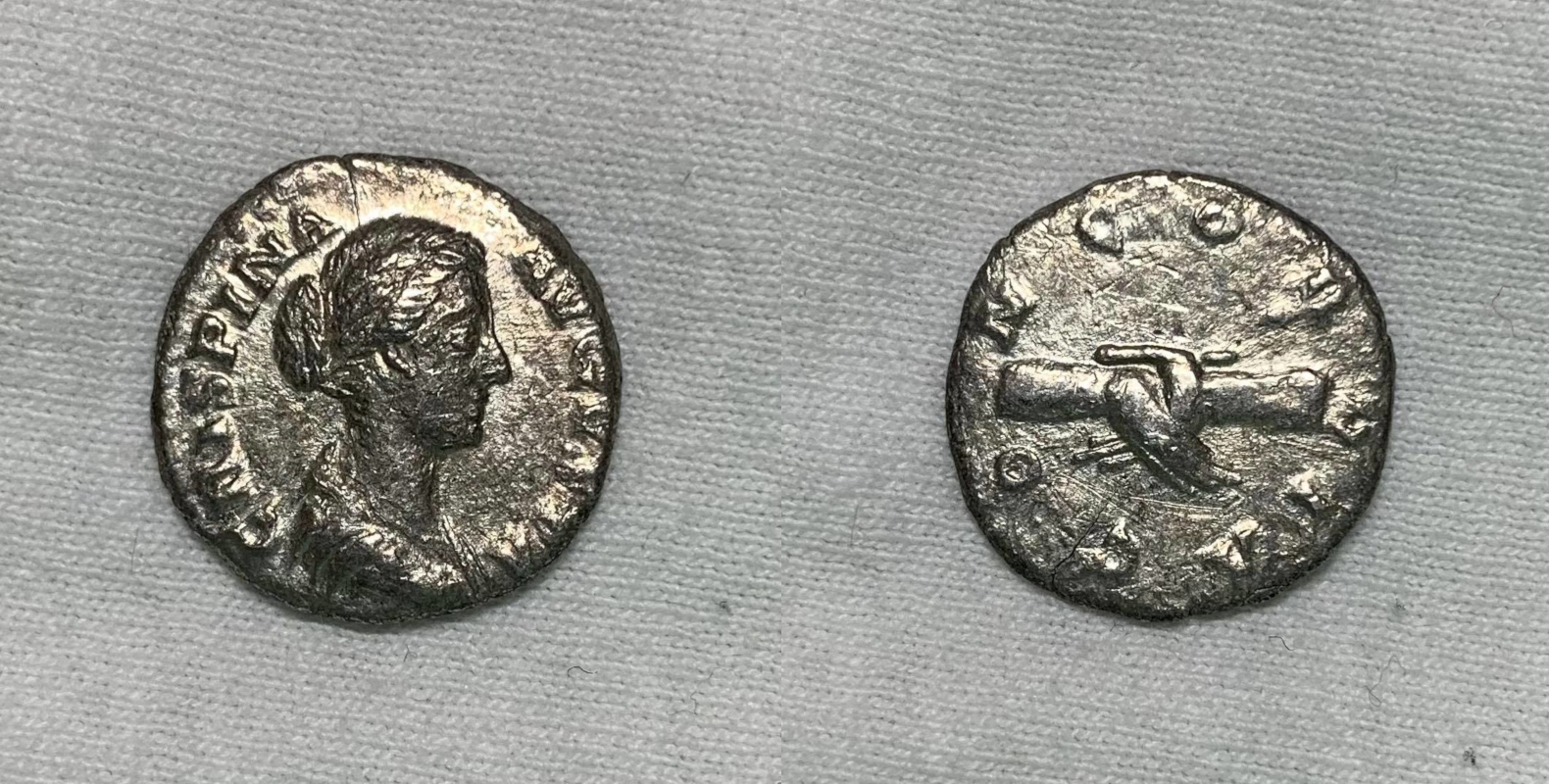
Reverse: CONCORDIA, Clasped right hands
Die Orientation: 6 H
Weight: 1.85 g
RIC dates to her tenure as Augusta, CNG and other auction houses propose a tighter date range but no explanation as to why.
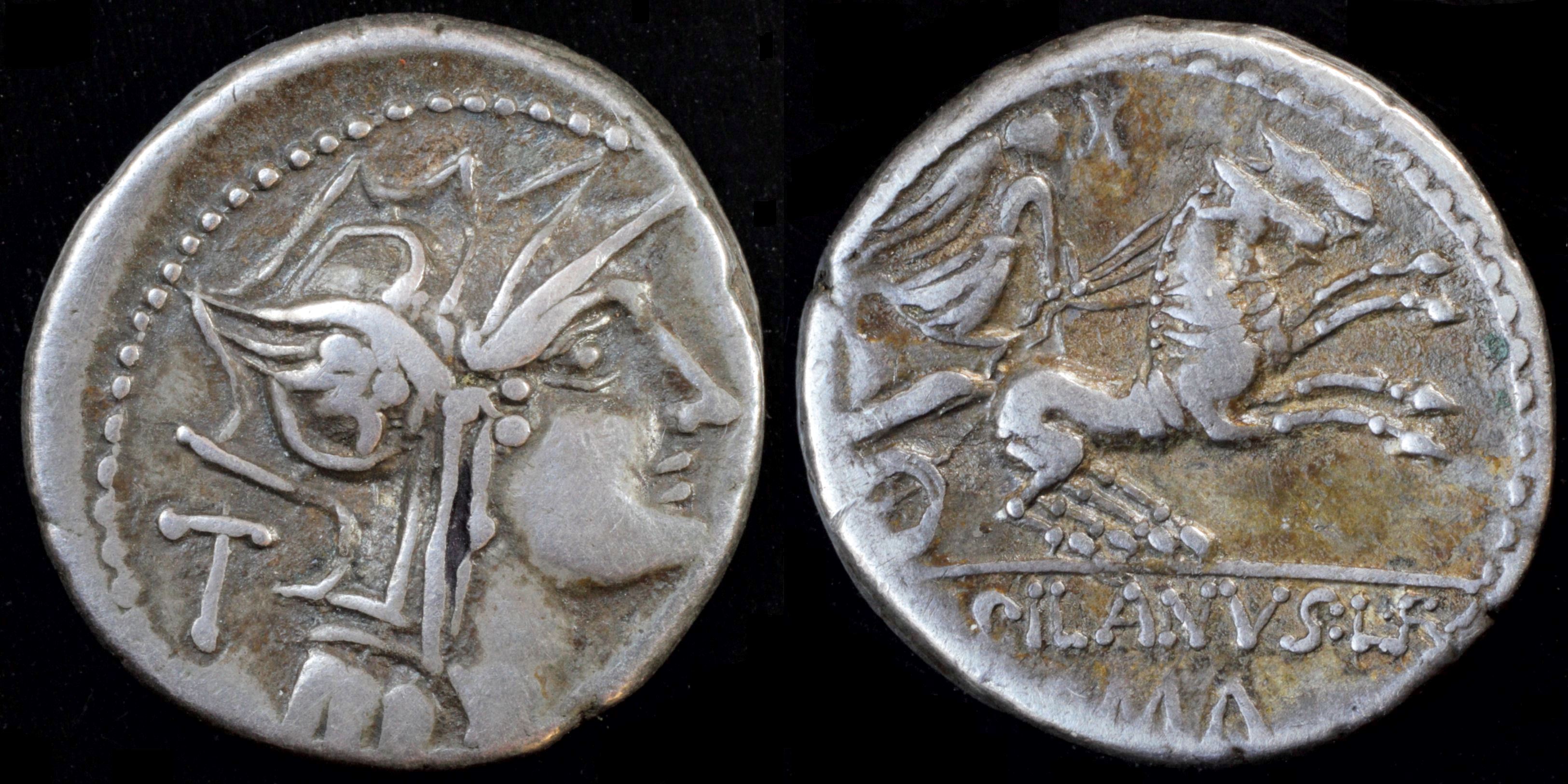
Reverse: Victory in biga galloping right X D·SILANVS·L·F / ROMA
Die Orientation: -
Weight: 4 g
(7).JPG)
Reverse: P M TR P COS, Fortuna standing left, holding rudder in lowered right hand above globe at feet to left, and cornucopiae in left hand
Die Orientation: 7 H
Weight: 2.72 g
.jpg)
Reverse: IMP XXII COS XVII CENS P P P, Minerva walking right brandishing a javelin and holding a shield
Die Orientation: -
Weight: 3.23 g
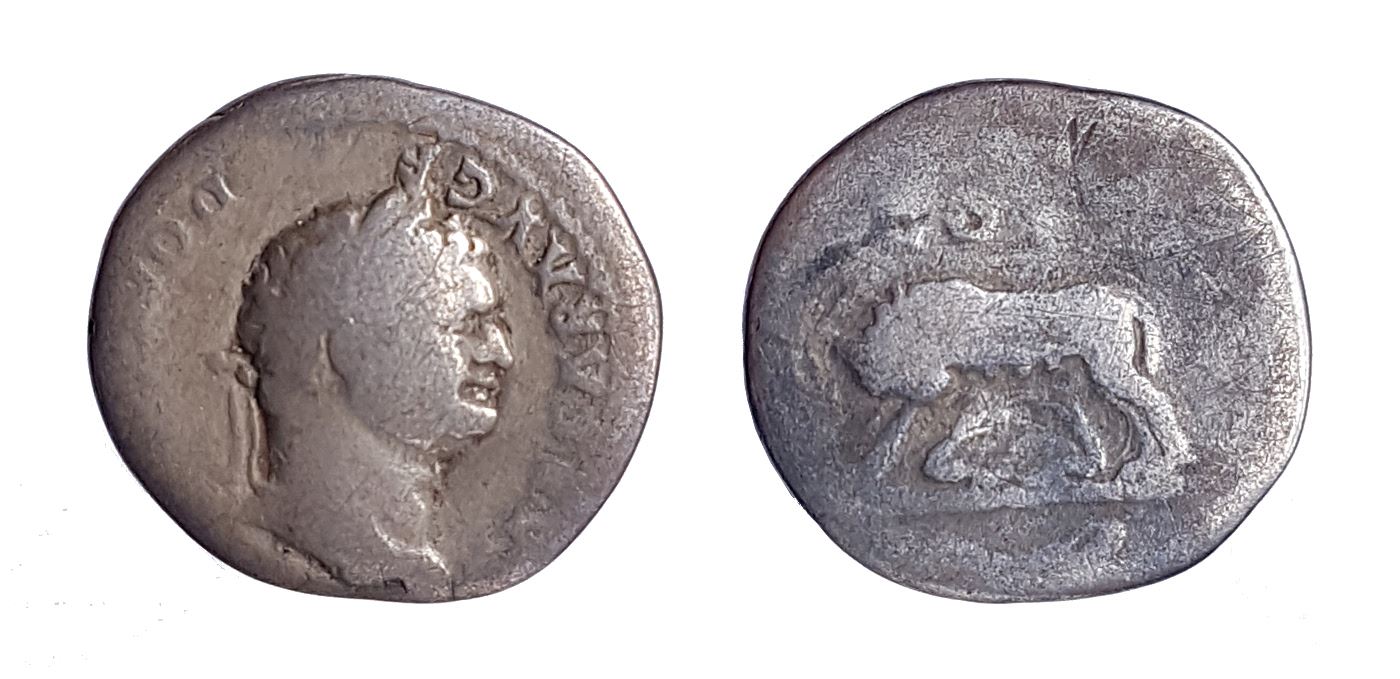
Reverse: COS V above she-wolf suckling twins, boat below
Die Orientation: 6 H
Weight: -
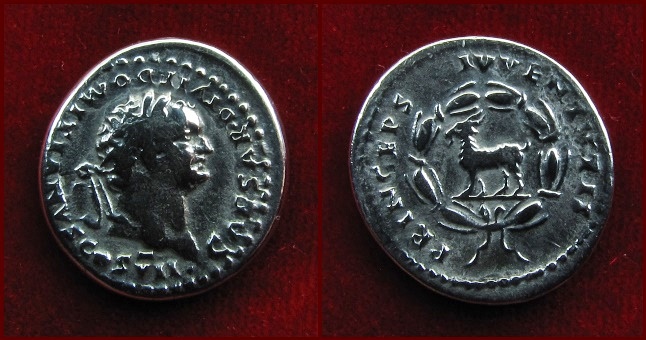
Reverse: PRICIPI IVVENTVTIS, Cretan goat standing left within laurel wreath.
Die Orientation: 6 H
Weight: 3.08 g
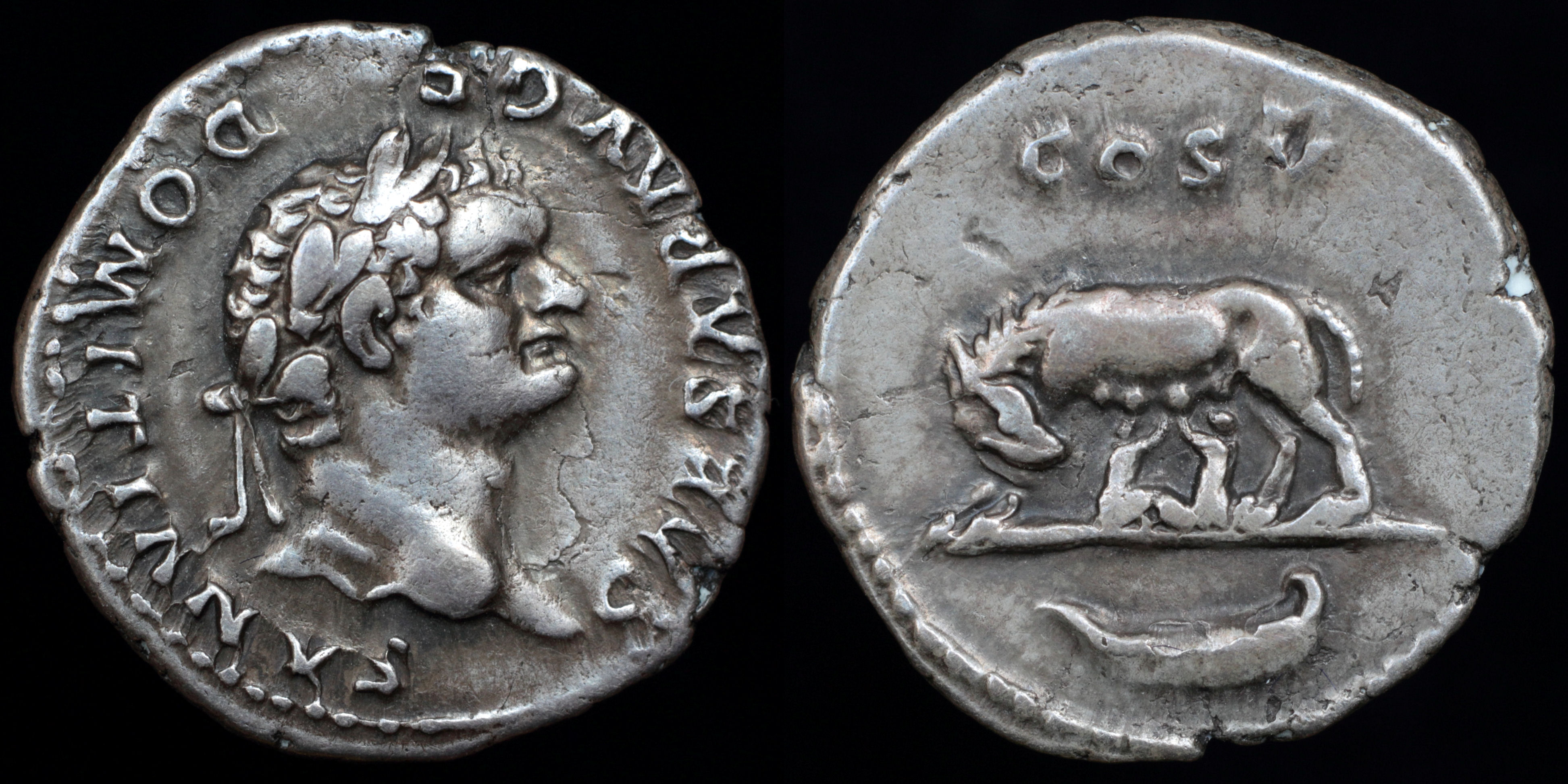
Reverse: She-wolf standing left, suckling Romulus and Remus, ship in exergue; COS V
Die Orientation: -
Weight: 3.57 g
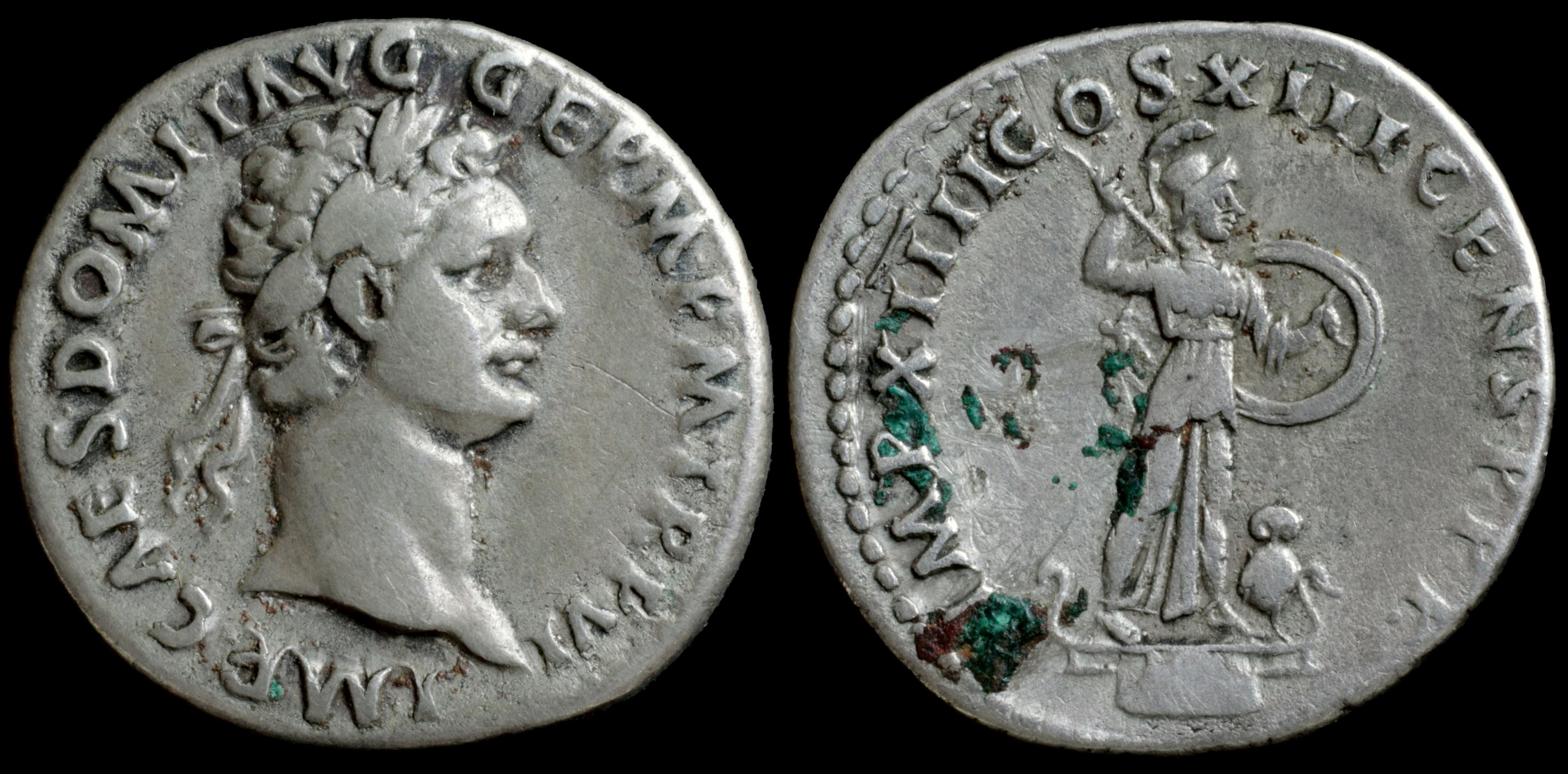
Reverse: Minerva standing right on capital of rostral column, holding spear and shield, owl at foot right; IMP•XIIII•COS•XIII•CENS•P•P•P
Die Orientation: -
Weight: 3.18 g
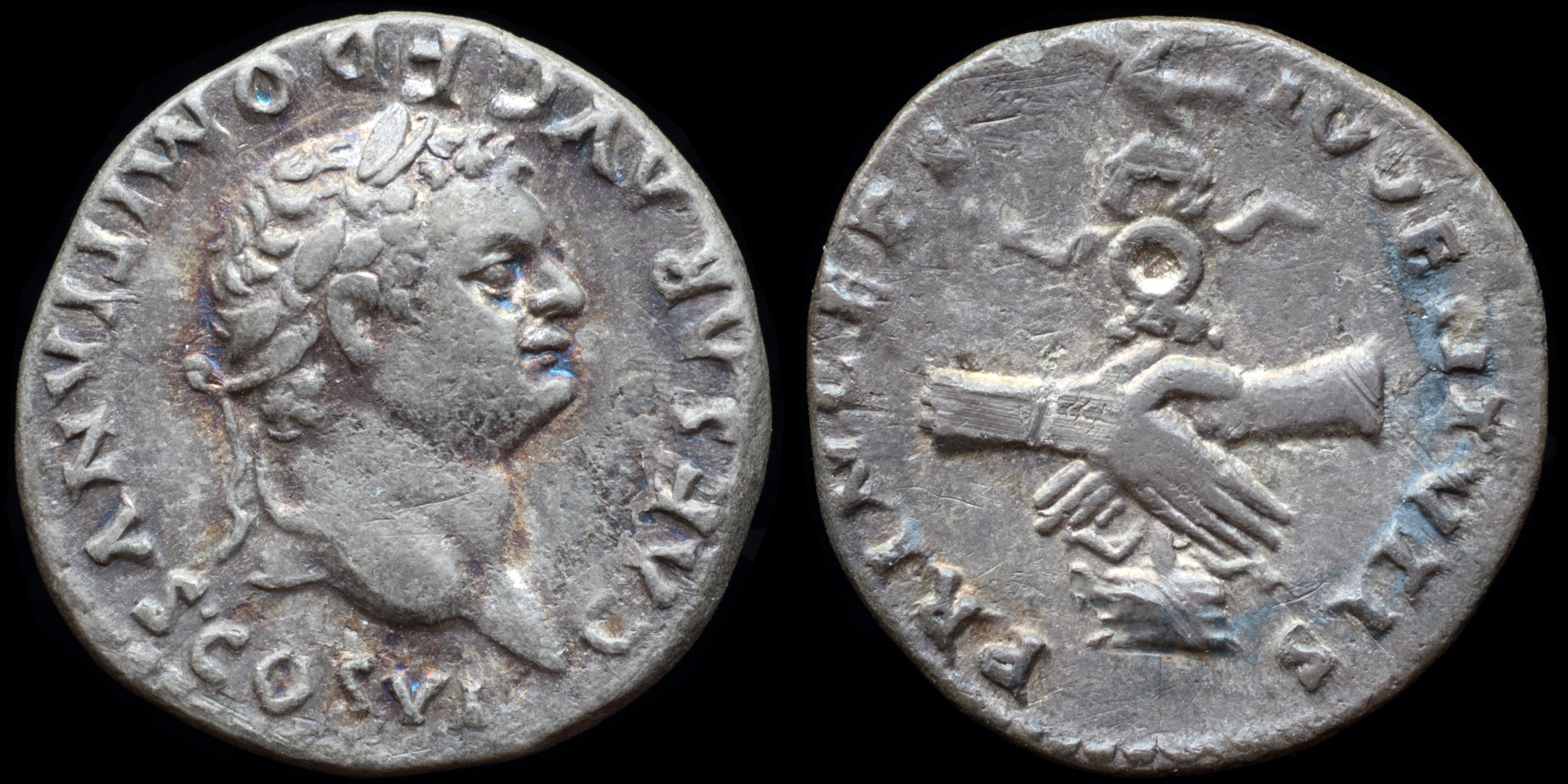
Reverse: clapsing hands, standard on prow behind; PRINCEPS__IVVENTVTIS
Die Orientation: -
Weight: 2.8 g
(18).JPG)
Reverse: IMP XXII COS XVI CENS P P P, Minerva standing left, holding spear
Die Orientation: 6 H
Weight: 3.58 g
(1).jpg)
Reverse: IMP XXII COS XVI CENS P P P, Minerva standing left, holding spear
Die Orientation: 6 H
Weight: 3.22 g
_2021.jpg)
Reverse: PRINCEPS IVVENTVTIS, crested Corinthian helmet on draped pulvinar
Die Orientation: 6 H
Weight: 3.53 g
(5).JPG)
Reverse: COS IIII, Pegasus standing right, front left leg raised
Die Orientation: 6 H
Weight: 3.47 g
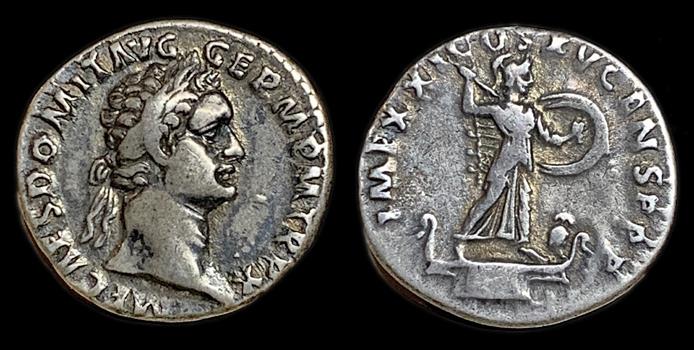
Reverse: Minerva standing right on prow of ship, owl to right
Die Orientation: -
Weight: 3.4 g
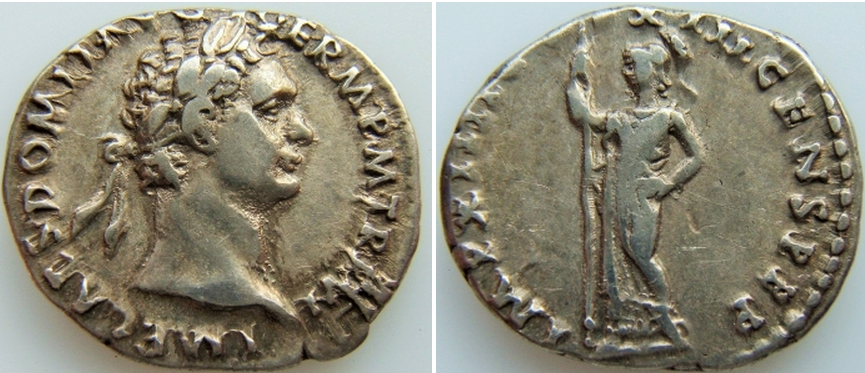
Reverse: IMP XIIII COS XIII CENS P P P - Minerva standing left, holding spear in right hand.
Die Orientation: 6 H
Weight: 3.47 g
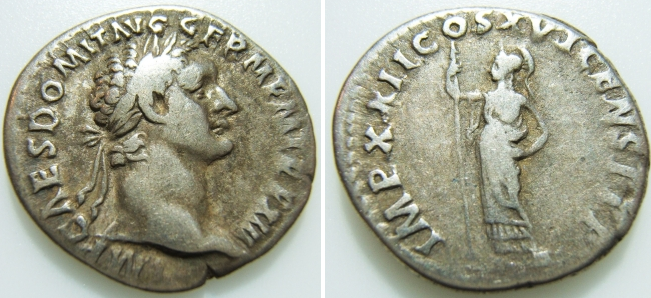
Reverse: IMP XXII COS XVII CENS P P P - Minerva standing left, holding spear.
Die Orientation: 5 H
Weight: 3.14 g
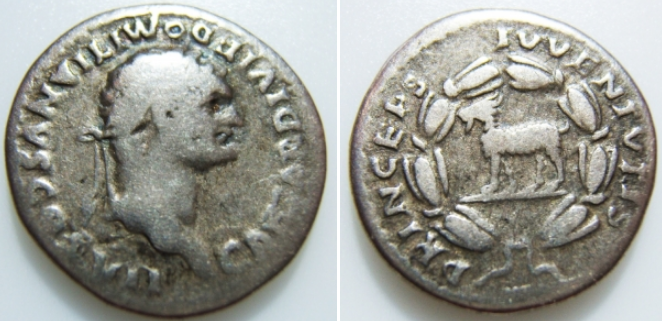
Reverse: PRINCEPS IVVENTVTIS - Cretan goat standing left in laurel wreath.
Die Orientation: 7 H
Weight: 3.16 g
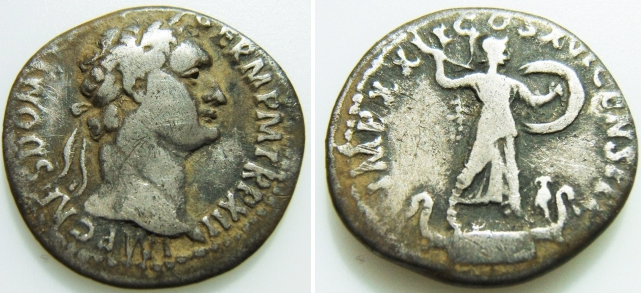
Reverse: IMP XXII COS XVI CENS P P P - Minerva standing right on capital of rostral column, holding spear and shield, owl at feet.
Die Orientation: 6 H
Weight: 3.13 g
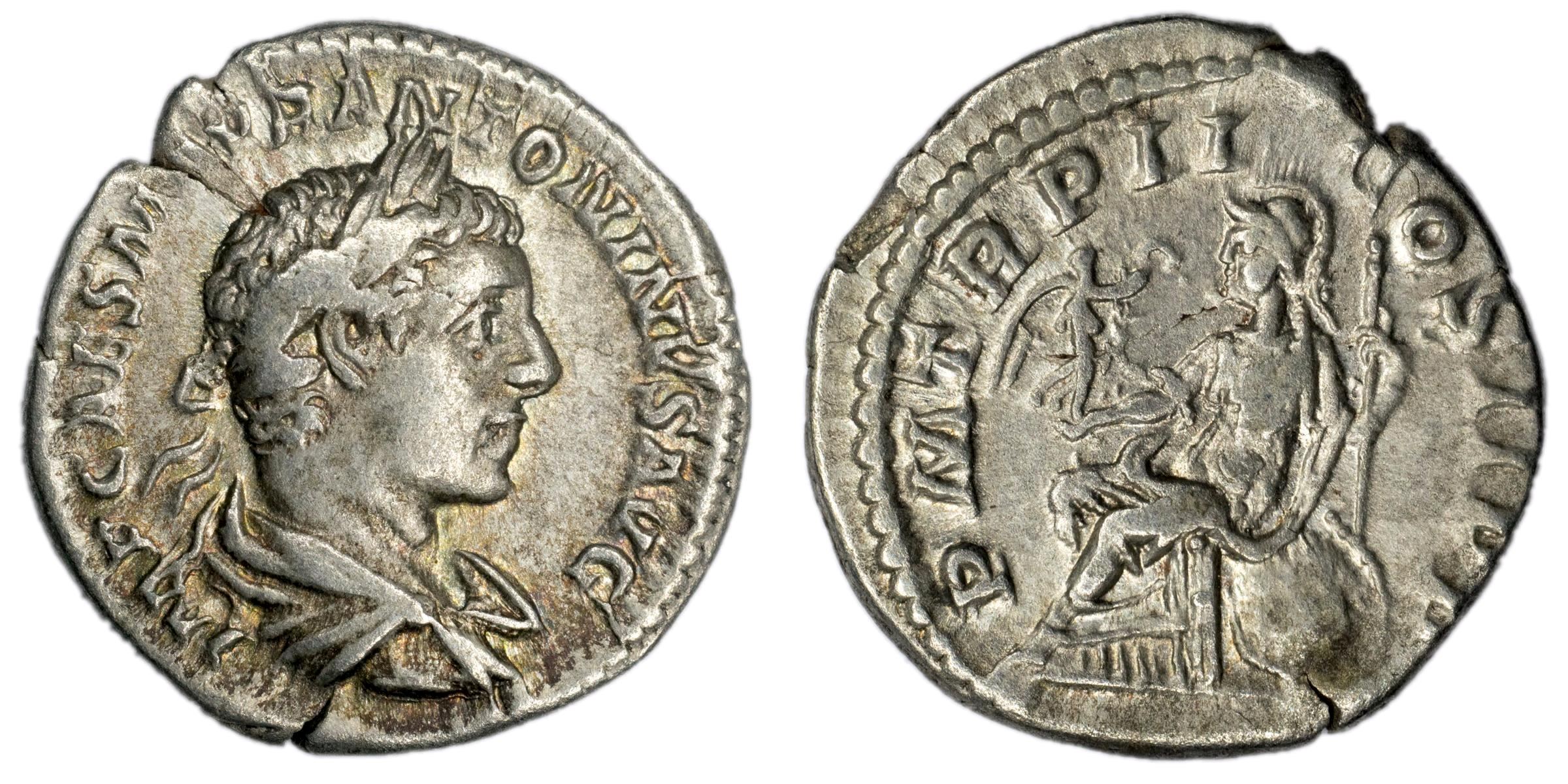
Reverse: PM TR P II COS II PP, Roma seated left on throne, holding small Victory and sceptre, shield to lower right
Die Orientation: 0 H
Weight: 2.9 g
.jpg)
Reverse: VICTOR ANTONINI AVG, Victory walking right, holding wreath and palm branch.
Die Orientation: -
Weight: -
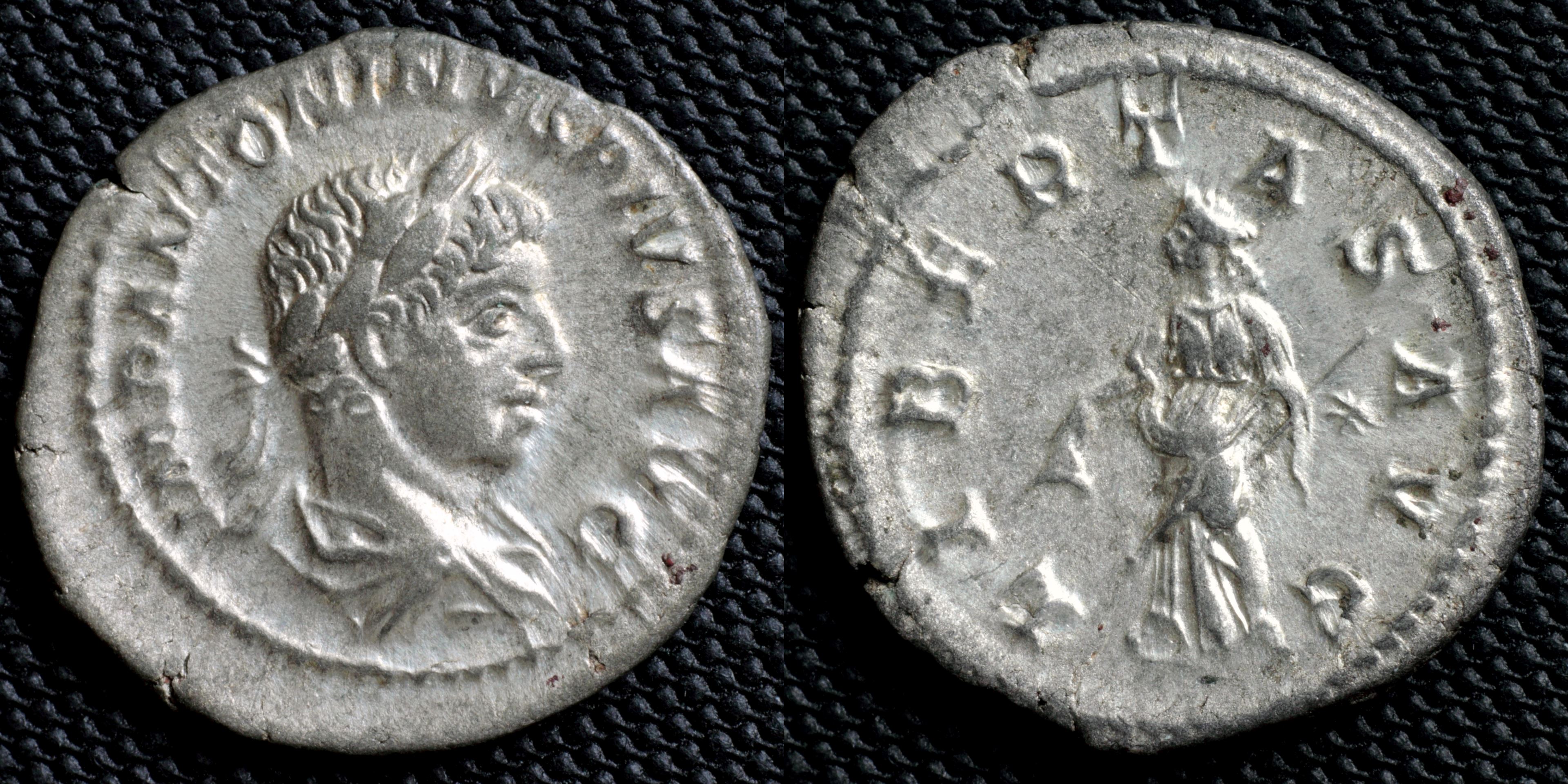
Reverse: Libertas standing left, holding pileus and scepter; star right; LIBERTAS AVG
Die Orientation: -
Weight: 2.82 g
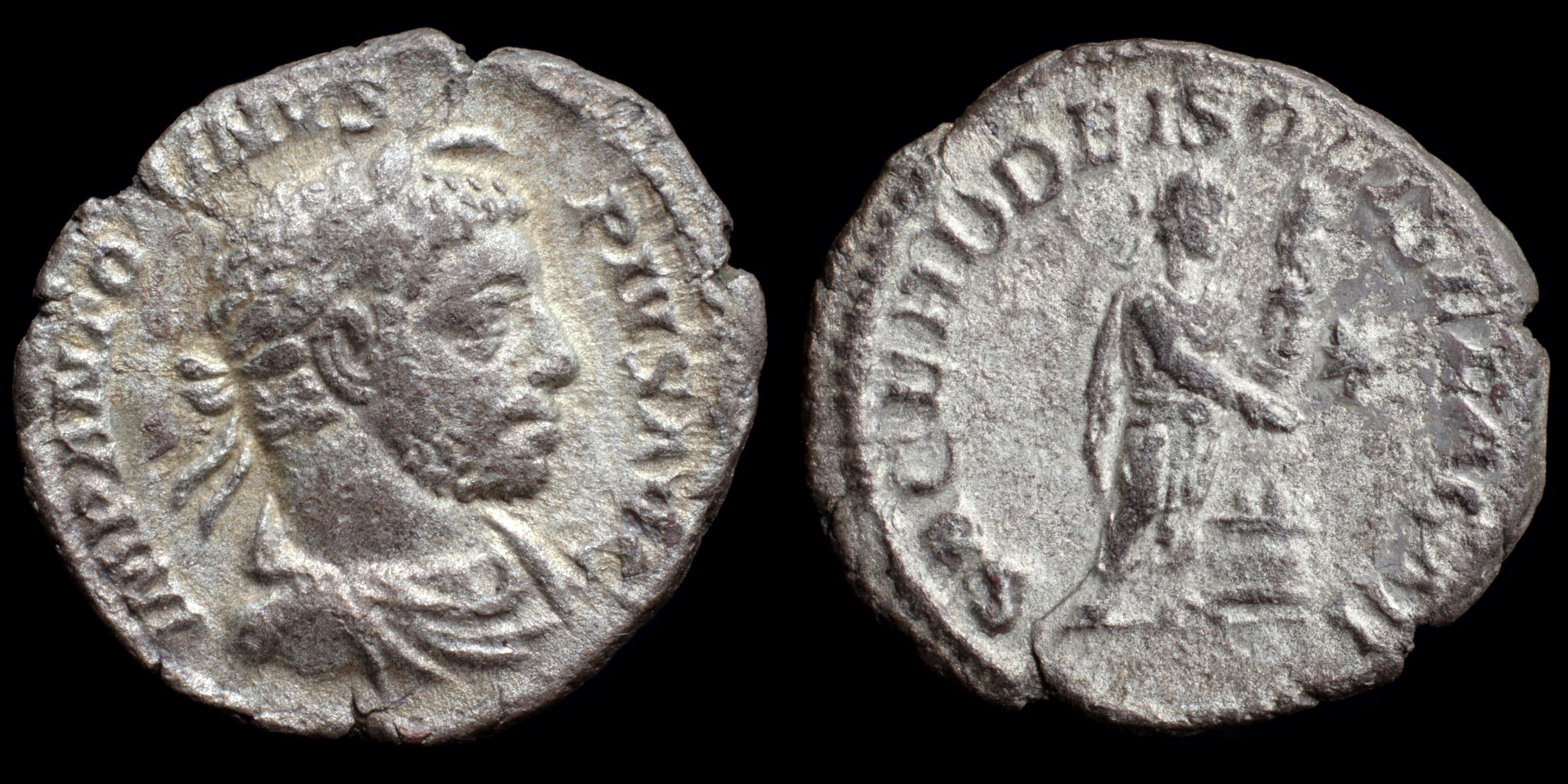
Reverse: Elagabalus standing right, holding patera and club or cypress branch, sacrificing over lit altar, * right; SACERD DEI SOLIS ELAGAB
Die Orientation: -
Weight: 2.75 g
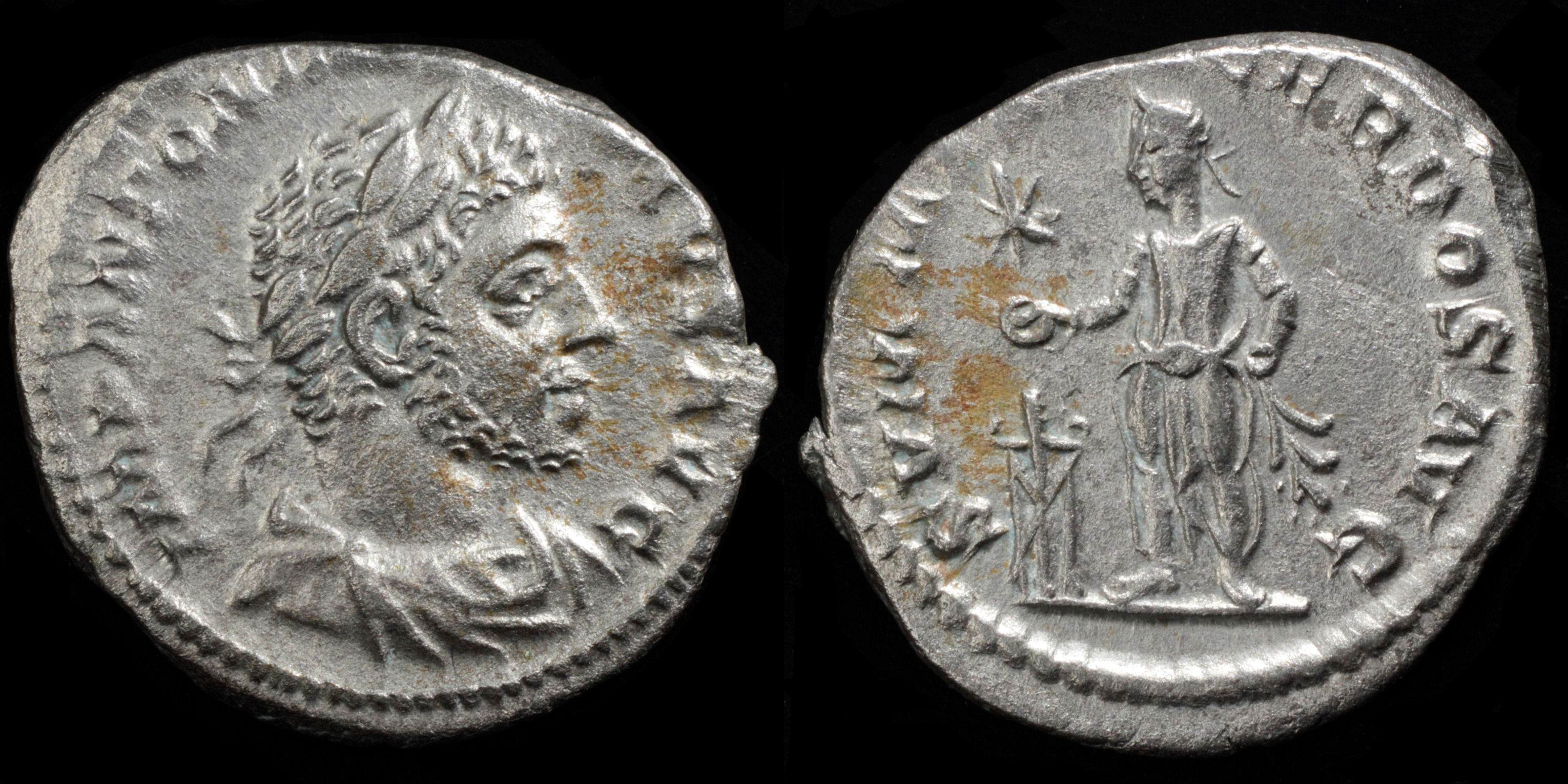
Reverse: Elagabalus holding branch and offering from patera over altar, star in left field; SVMMVS SACERDOS AVG
Die Orientation: -
Weight: 3 g
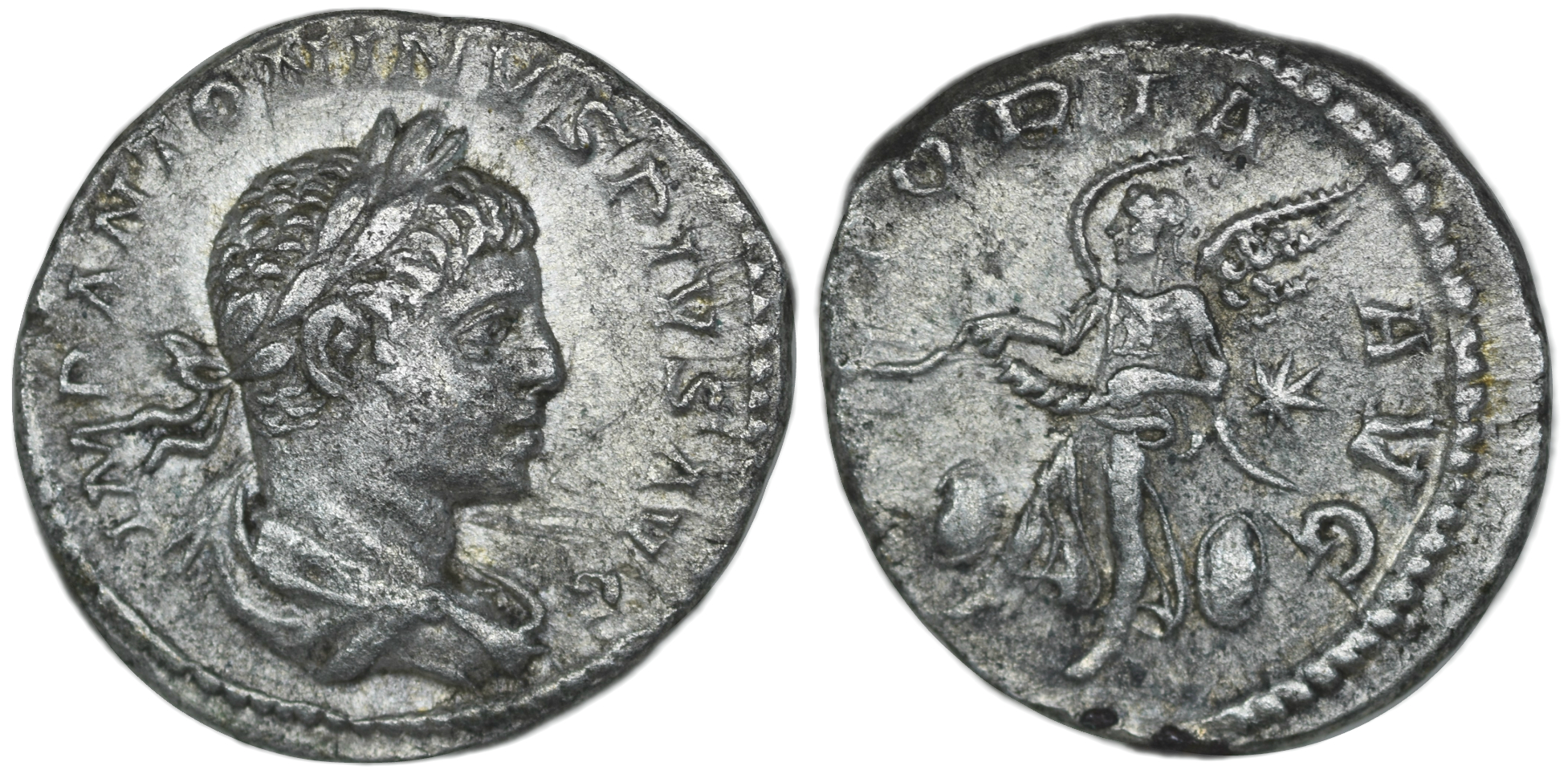
Reverse: VICTORIA AVG / Victory flying left, diadem in both hands, shields to sides, star in right field
Die Orientation: -
Weight: 3.23 g
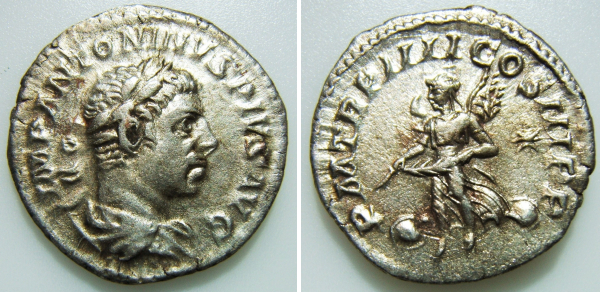
Reverse: P M TRP IIII COS III P P - Victory flying left holding open wreath, * in right field.
Die Orientation: 11 H
Weight: 2.9 g

Reverse: AETERNITAS, Aeternitas or Ceres standing, holding torch and sceptre
Die Orientation: -
Weight: -
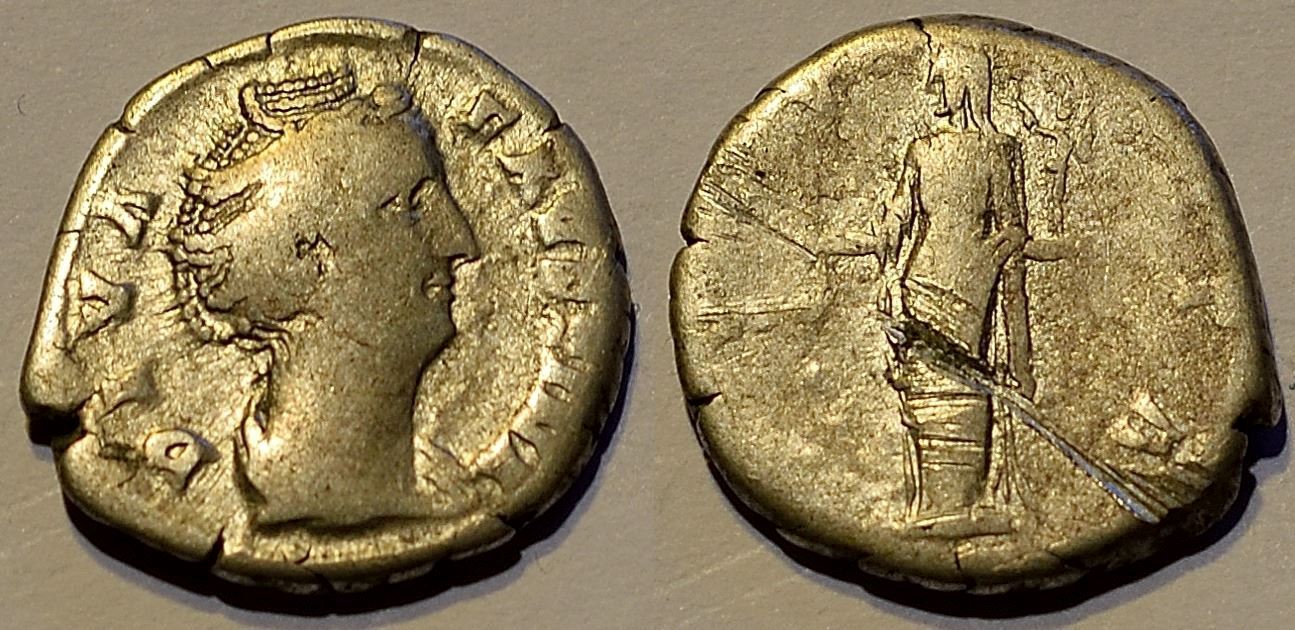
Reverse: AVGVSTA, Vesta standing left, holding simpulum & palladium
Die Orientation: 0 H
Weight: 31 g
(11).jpg)
Reverse: CONSECRATIO, peacock walking right, head left.
Die Orientation: 5 H
Weight: 3.54 g
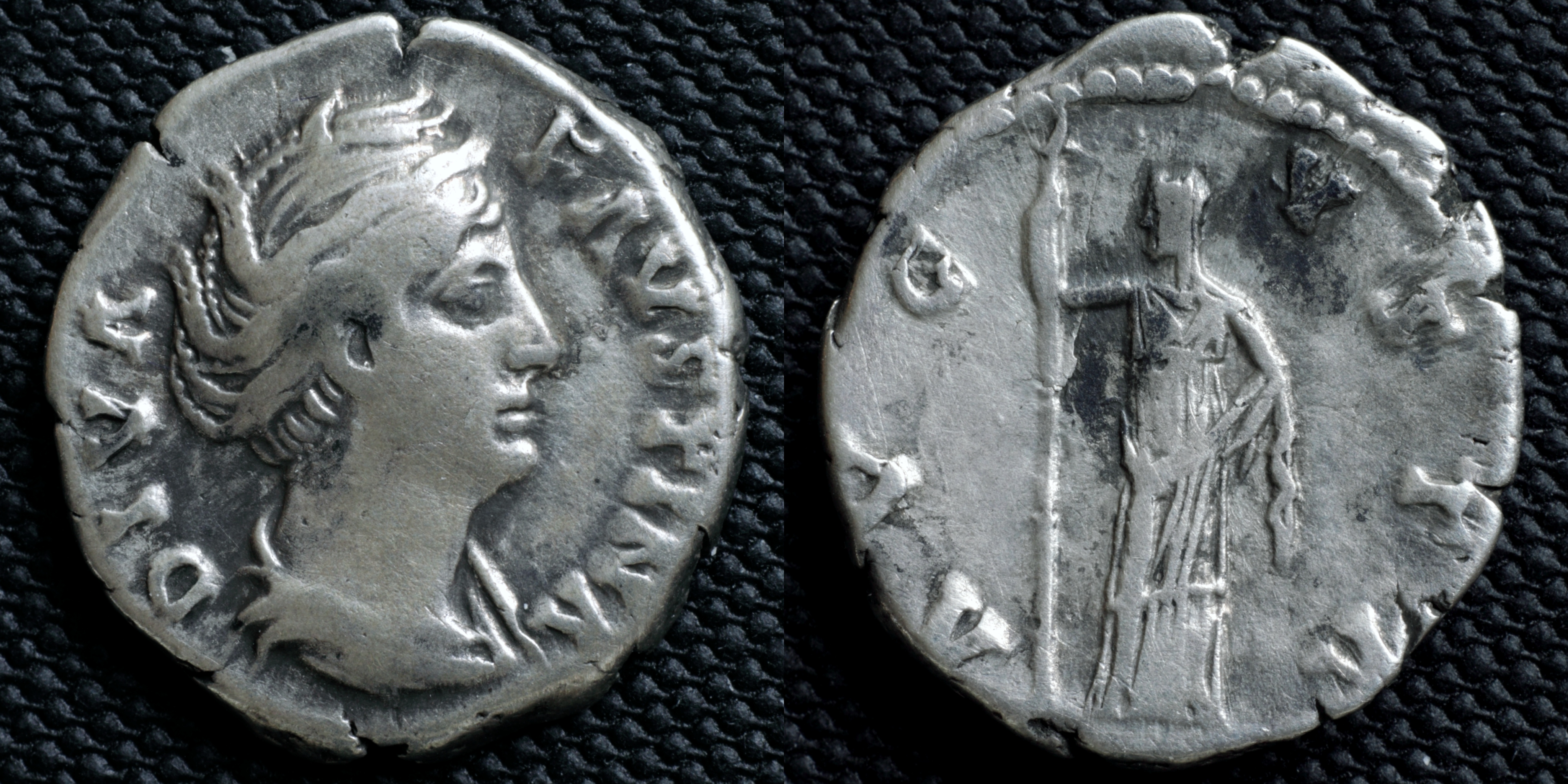
Reverse: veiled Ceres standing left, holding torch, raising robe; AVG_VSTA
Die Orientation: -
Weight: 3.21 g
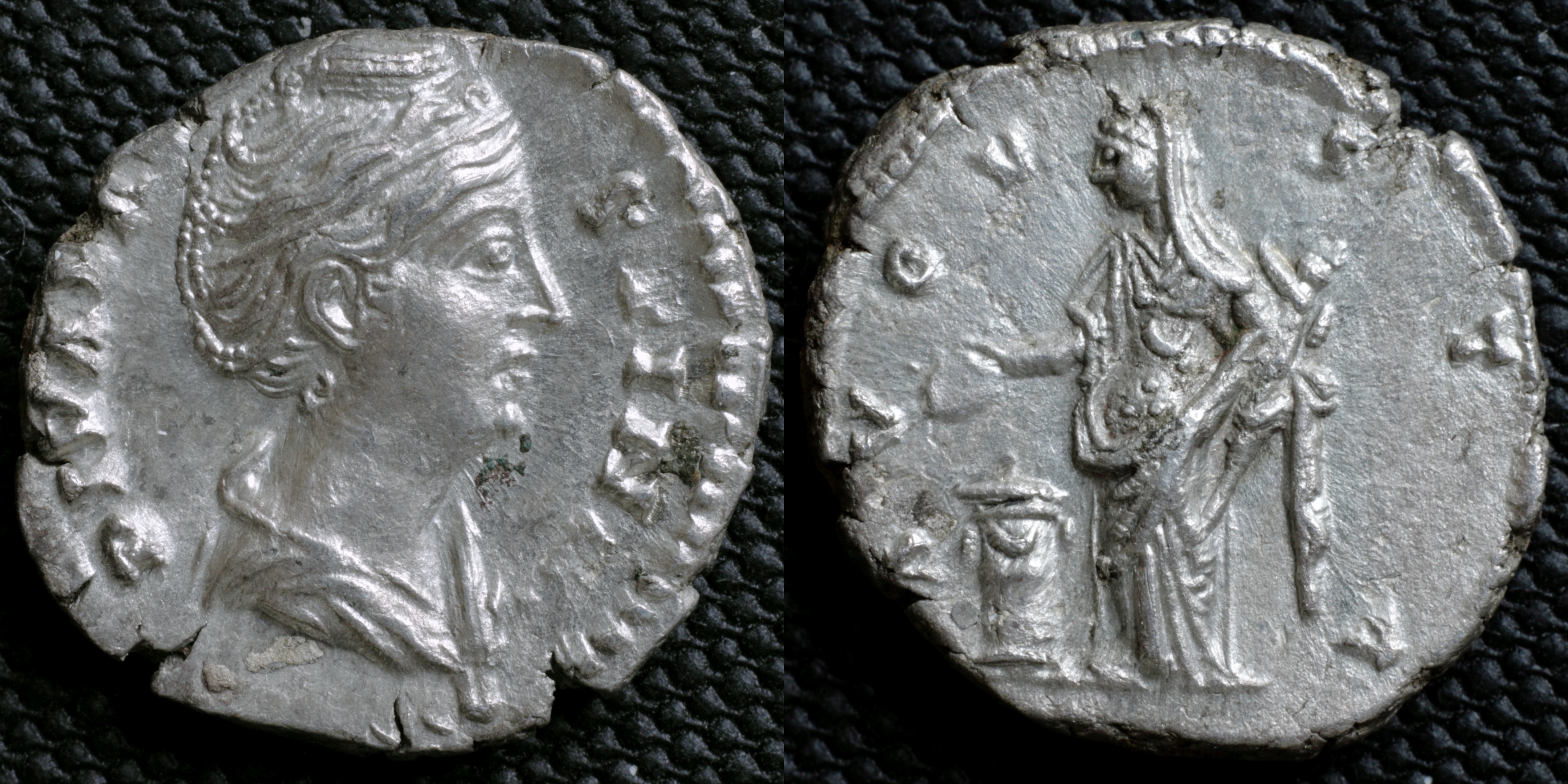
Reverse: Vesta standing left, holding patera over lit altar and Palladium; AVGV_STA
Die Orientation: -
Weight: 3.19 g
(0).jpg)
Reverse: AVGVSTA, Ceres standing left, holding long torch in her right hand, and supporting drapery in left
Die Orientation: 6 H
Weight: 3.61 g
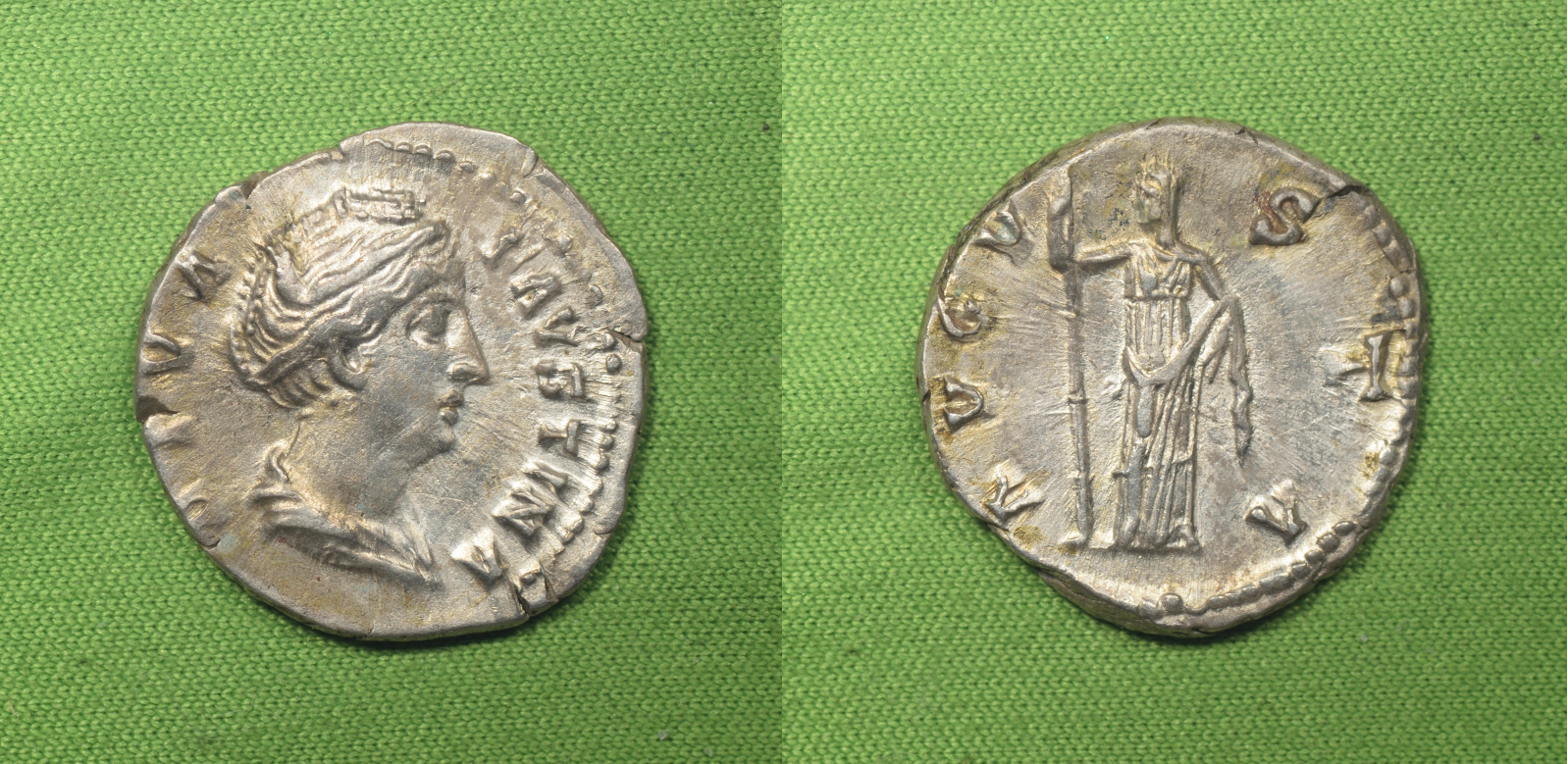
Reverse: AVGVSTA, Ceres, veiled, draped, standing front, head left, holding long torch, vertical, in right hand and raising fold of skirt in left
Die Orientation: 6 H
Weight: 3.39 g
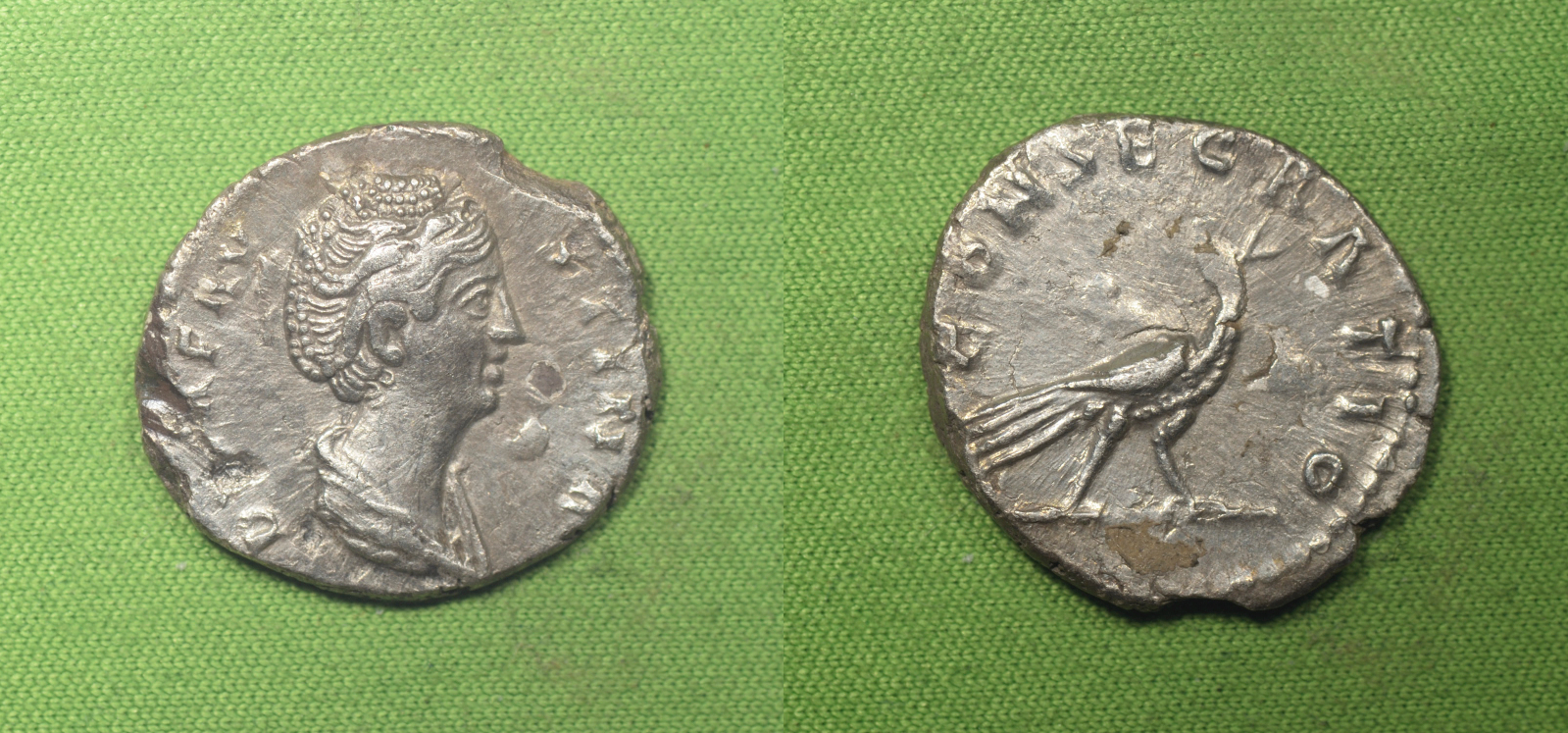
Reverse: CONSECRATIO, Peacock, walking right, head turned back left
Die Orientation: 6 H
Weight: 2.74 g
_2.jpg)
Reverse: CONSECRATIO, peacock walking right, head left
Die Orientation: 5 H
Weight: 3.54 g
Beloved wife of the emperor Antoninus Pius, Annia Galeria Faustina was Augusta for just two years before she died in AD 141. Evidently distraught, Pius had her deified on an extensive series of commemorative coins, unprecedented in it’s scale and duration (at least a decade). In addition to the coinage, a temple was built in her honour in the Roman Forum. The legend on the obverse of this beautiful silver denarius reads ‘Diva Faustina’ and indicates her deification (Diva = ‘Divine’). On the reverse is a peacock; a bird associated to the Romans with the goddess Juno. Together with Jupiter and Minerva, Juno was worshipped in Rome as part of the Capitoline Triad of supreme deities. Goddess of marriage and childbirth, she was the protector and special counsellor of the state, and took a further role in safeguarding the women of Rome. That the peacock is specifically linked to Juno is affirmed in myth by Ovid in his Metamophoses, Book 1, where he relates the story of Jupiter, his lover Io, and his jilted wife Juno. Ovid tells us that after Jupiter was caught by his lover, she was turned into a pure white heifer by his enraged wife and set under the guard of Argus, the hundred-eyed watchman. Sent by Jupiter to free Io, Mercury distracted Argus by playing the pan-pipes and telling stories, eventually slaying the giant and freeing Io. To honour her faithful watchman, Ovid tells us that Juno transferred Argus’ eyes to the tail feathers of the peacock so as to preserve them forever. The peacock’s tail, circular like the vault of heaven when spread and jewelled as with stars, made the bird a natural symbol of the sky to which the dead ascend and hence of apotheosis and immortality. A fitting reverse therefore, to highlight Faustina’s place amongst the divine. Ex. Roma Numismatics E-Sale 74; Lot 914; Ex. Jesus Vico S.A. (2 March 1989); Lot 143.
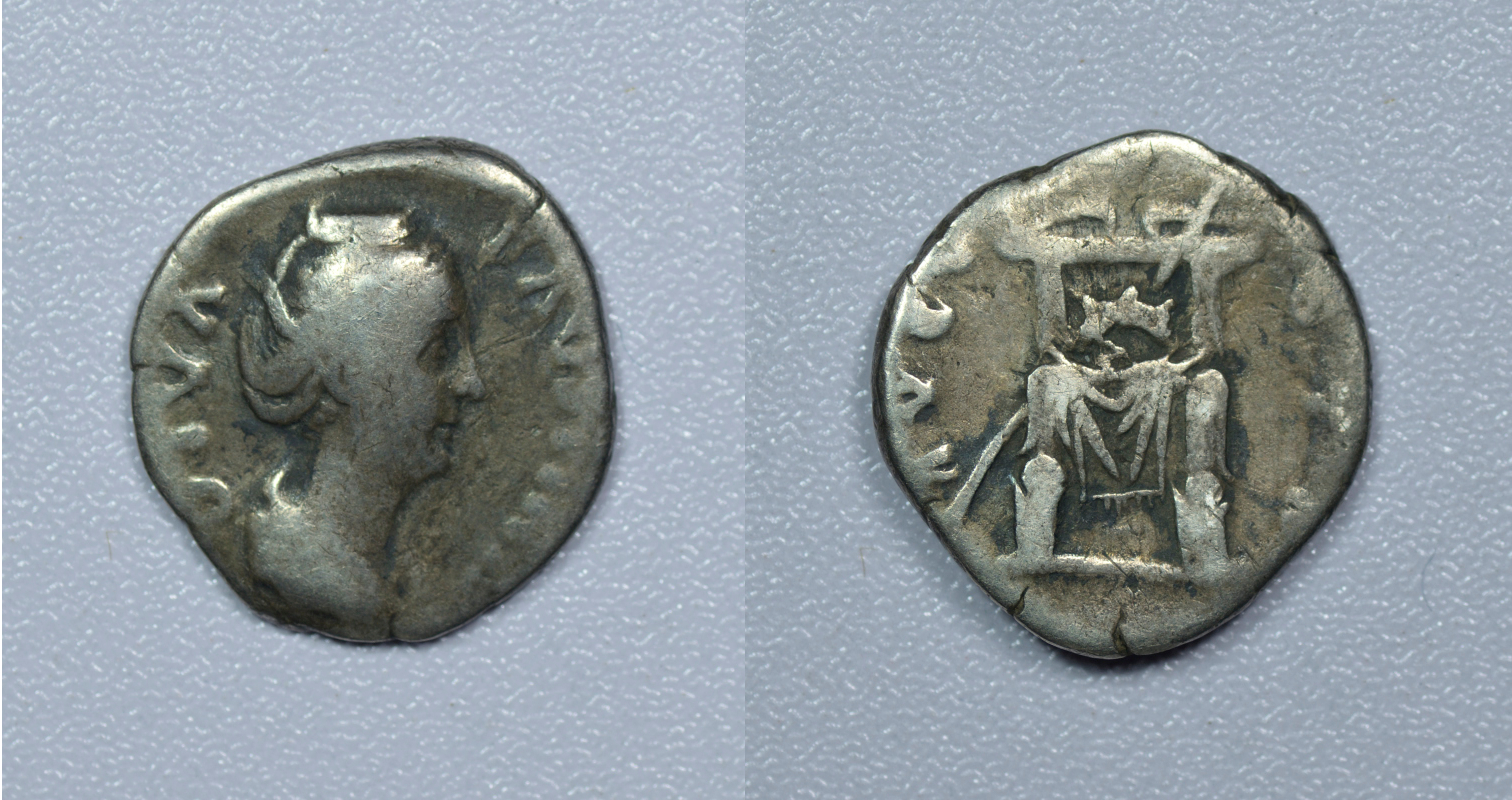
Reverse: AVGVSTA, Throne, draped and ornamented, on which is a wreath; against it, on left, rests transverse scepter pointing upwards, to right
Die Orientation: 6 H
Weight: 2.61 g
.jpg)
Reverse: AVGVSTA, Throne, draped and ornamented, on which is a wreath; against it, on left, rests transverse scepter pointing upwards, to right
Die Orientation: 6 H
Weight: 2.61 g
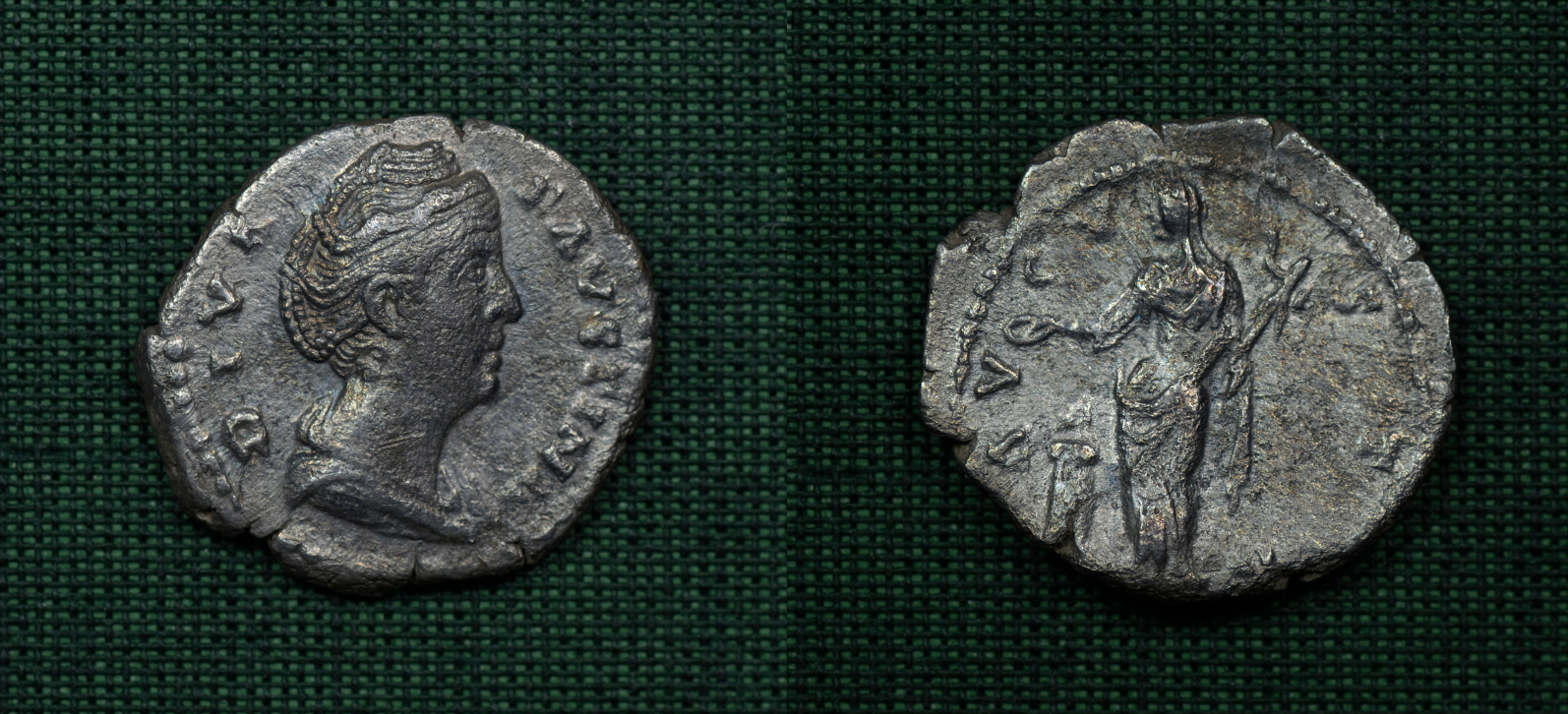
Reverse: AVGVSTA, Vesta, veiled, draped, standing left, with patera in right hand sacrificing over lighted altar left, and holding palladium in left hand
Die Orientation: 6 H
Weight: 2.96 g
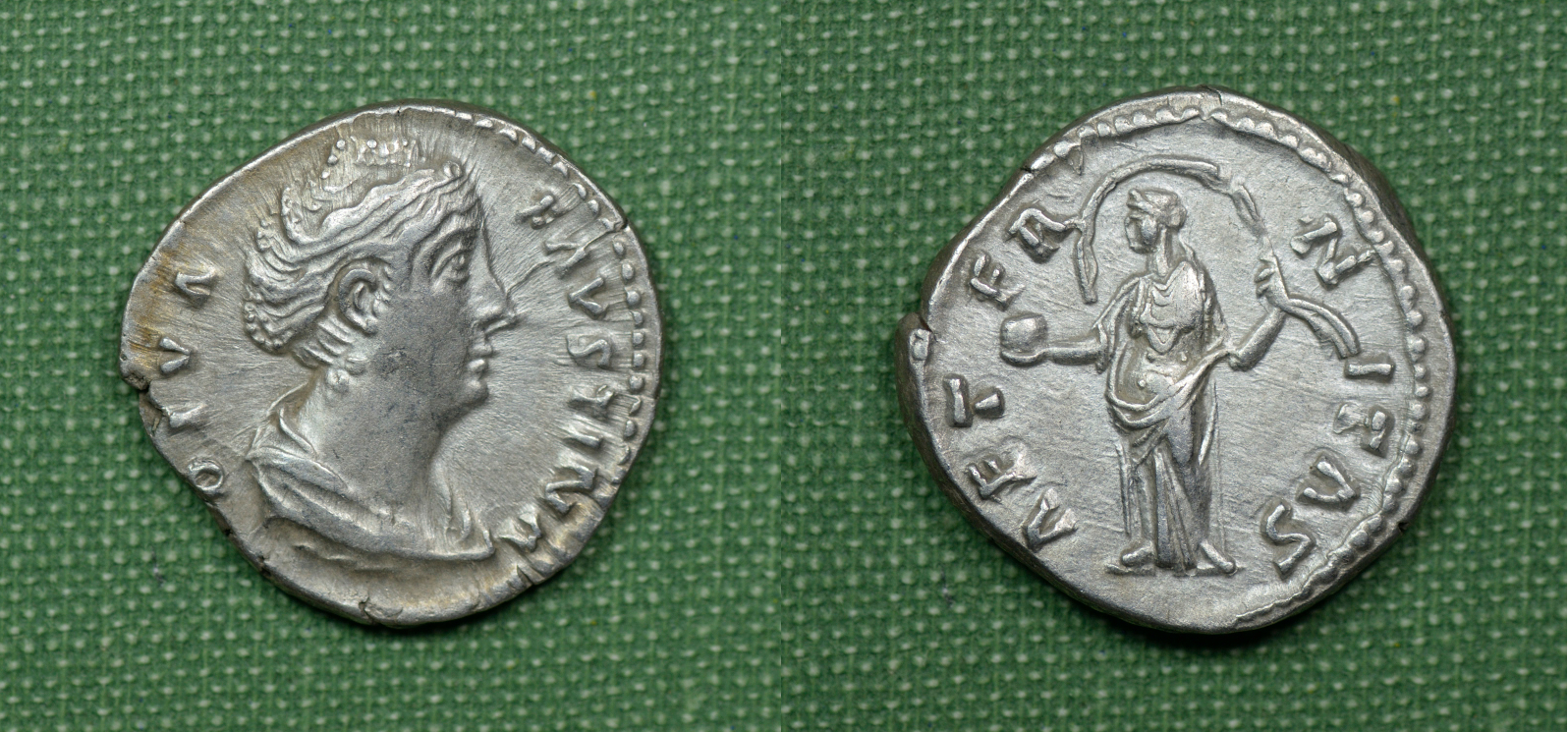
Reverse: Legend: AETERNITAS Type: Providentia or Aeternitas, veil blown out in round behind head, standing left, holding globe on extended right hand with left hand on veil
Die Orientation: 6 H
Weight: 3.7 g
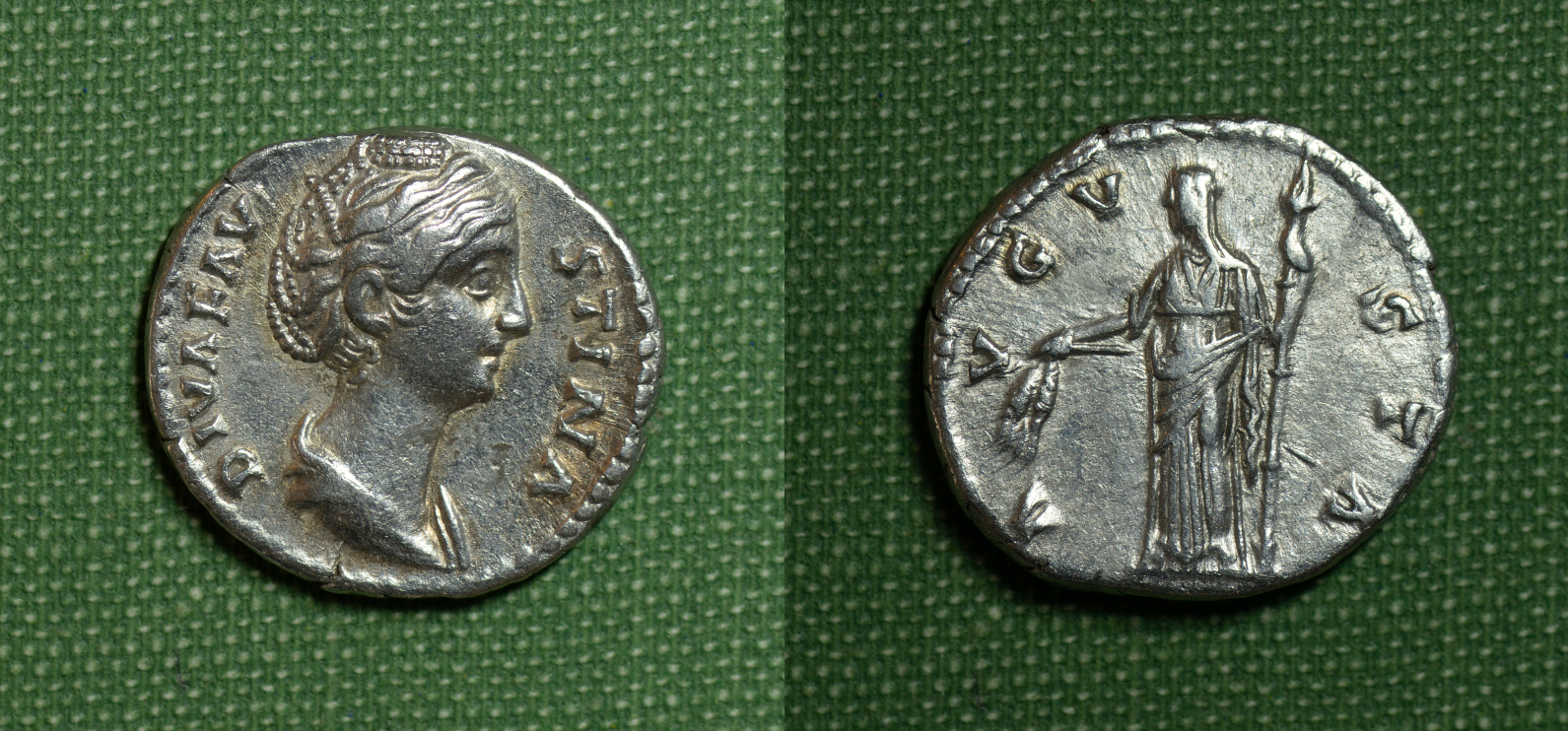
Reverse: Reverse Legend: AVGVSTA Type: Ceres, veiled, draped, standing, left, holding two corn-ears downwards in right hand and lighted torch, vertical at her side, in left
Die Orientation: 6 H
Weight: 3.2 g
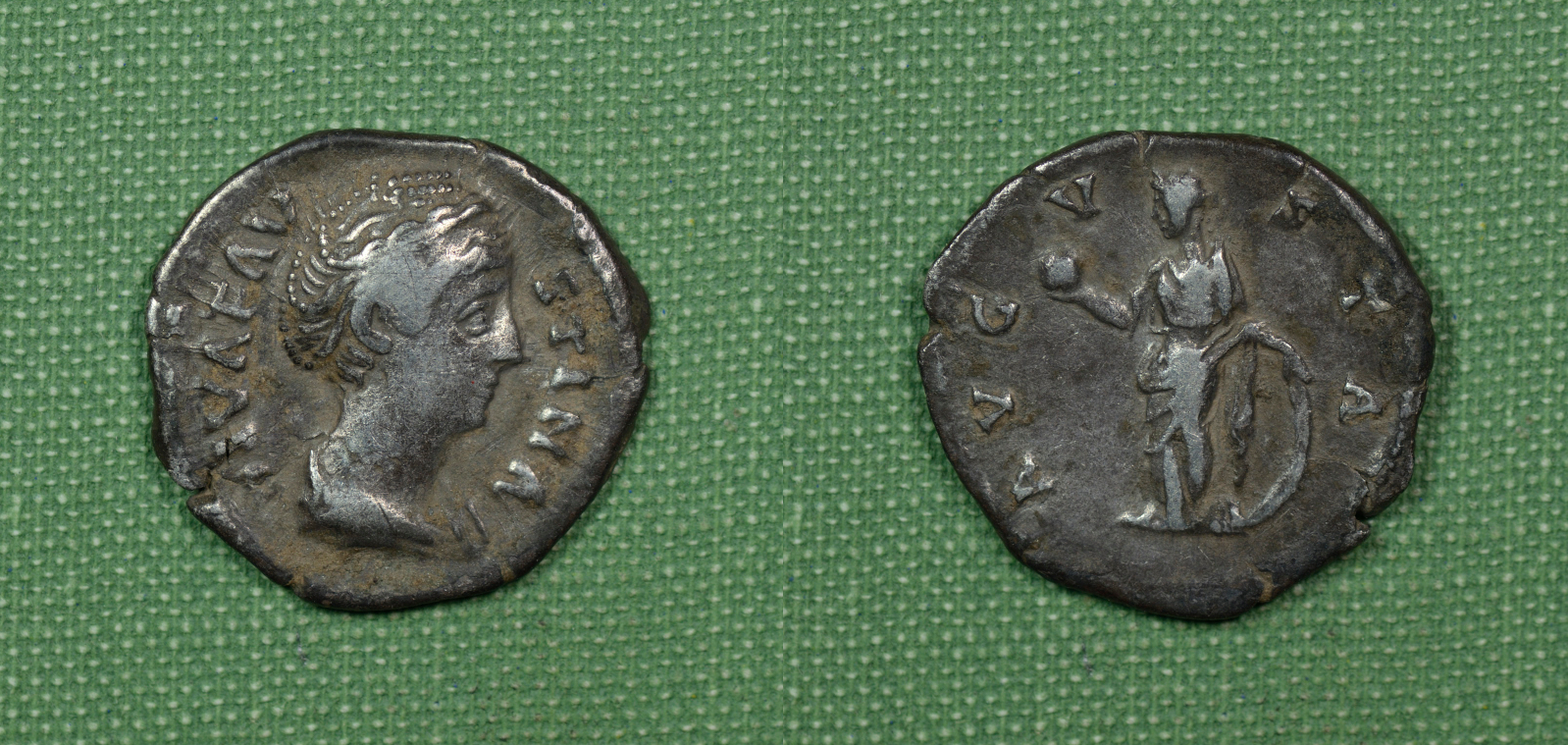
Reverse: Legend: AVGVSTA Type: Venus, draped, standing front, head left, holding apple in right hand and resting left on large round shield at her side
Die Orientation: 12 H
Weight: 2.87 g
.jpg)
Reverse: AED DIV FAVSTINAE, Front view of Hexastyle temple in center of which is seated a statue of Faustina I; pediment is ornamented and roof has statues and quadriga as decoration; fencing in foreground
Die Orientation: 6 H
Weight: 3.29 g
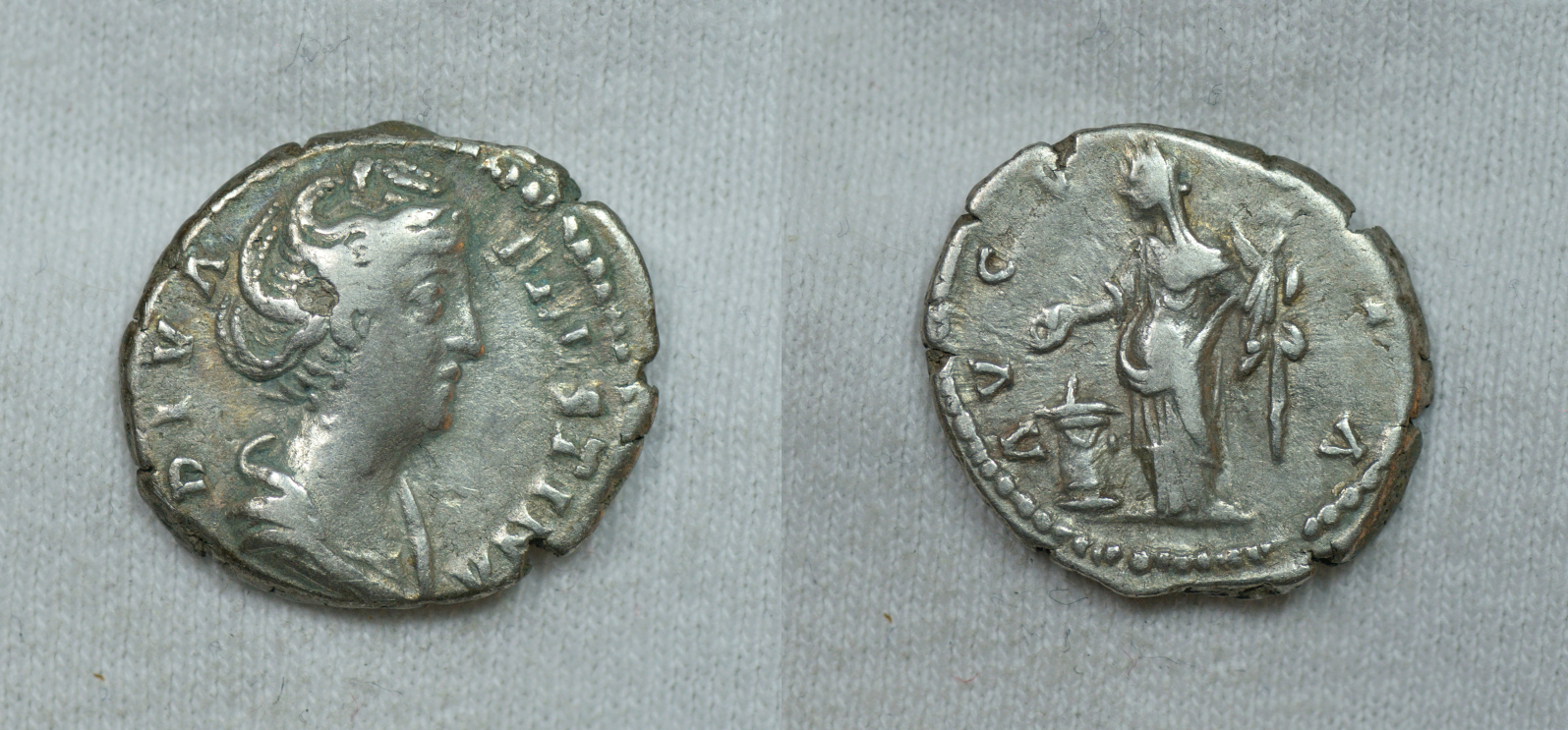
Reverse: AVGVSTA - Vesta, veiled, draped, standing left, with patera in right hand sacrificing over lighted altar left, and holding palladium in left hand
Die Orientation: 0 H
Weight: 0 g
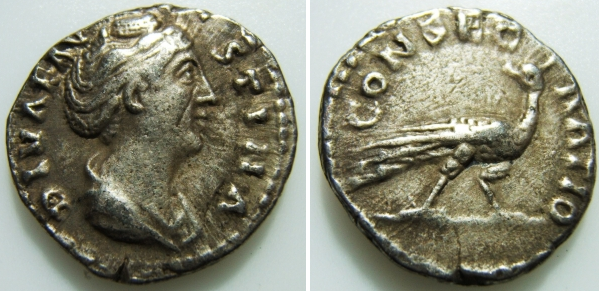
Reverse: CONSEC-RATIO - Peacock walking right, head turned back.
Die Orientation: 5 H
Weight: 3.14 g
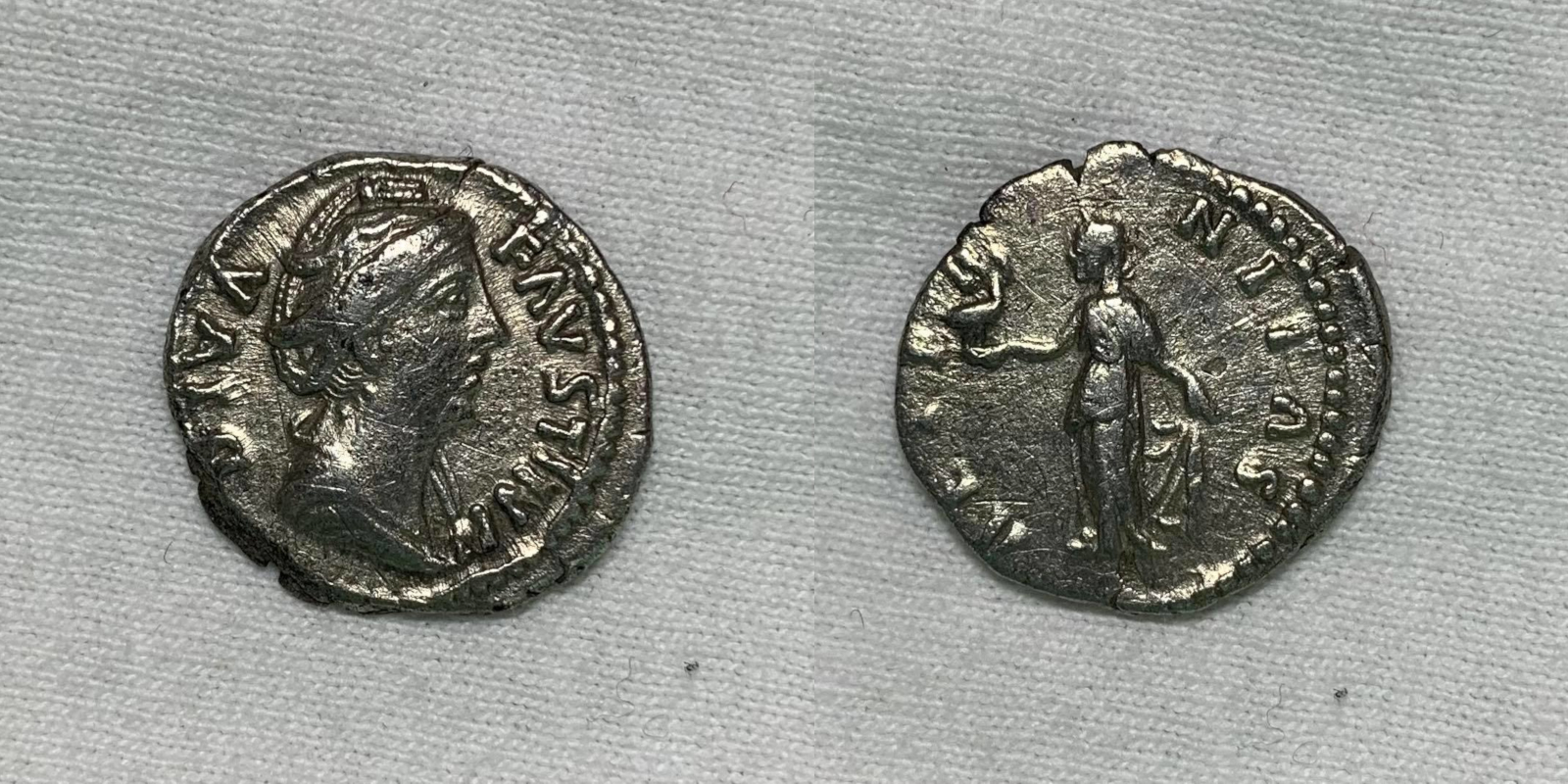
Reverse: AETERNITAS, Aeternitas, draped, standing left, holding phoenix on extended right hand and raising fold of skirt with left
Die Orientation: 6 H
Weight: 2.56 g
RIC dates to after 140 AD, but CNG dates to 146-161, supposedly the Aeternitas issues were struck years later in commemoration of her divinity.
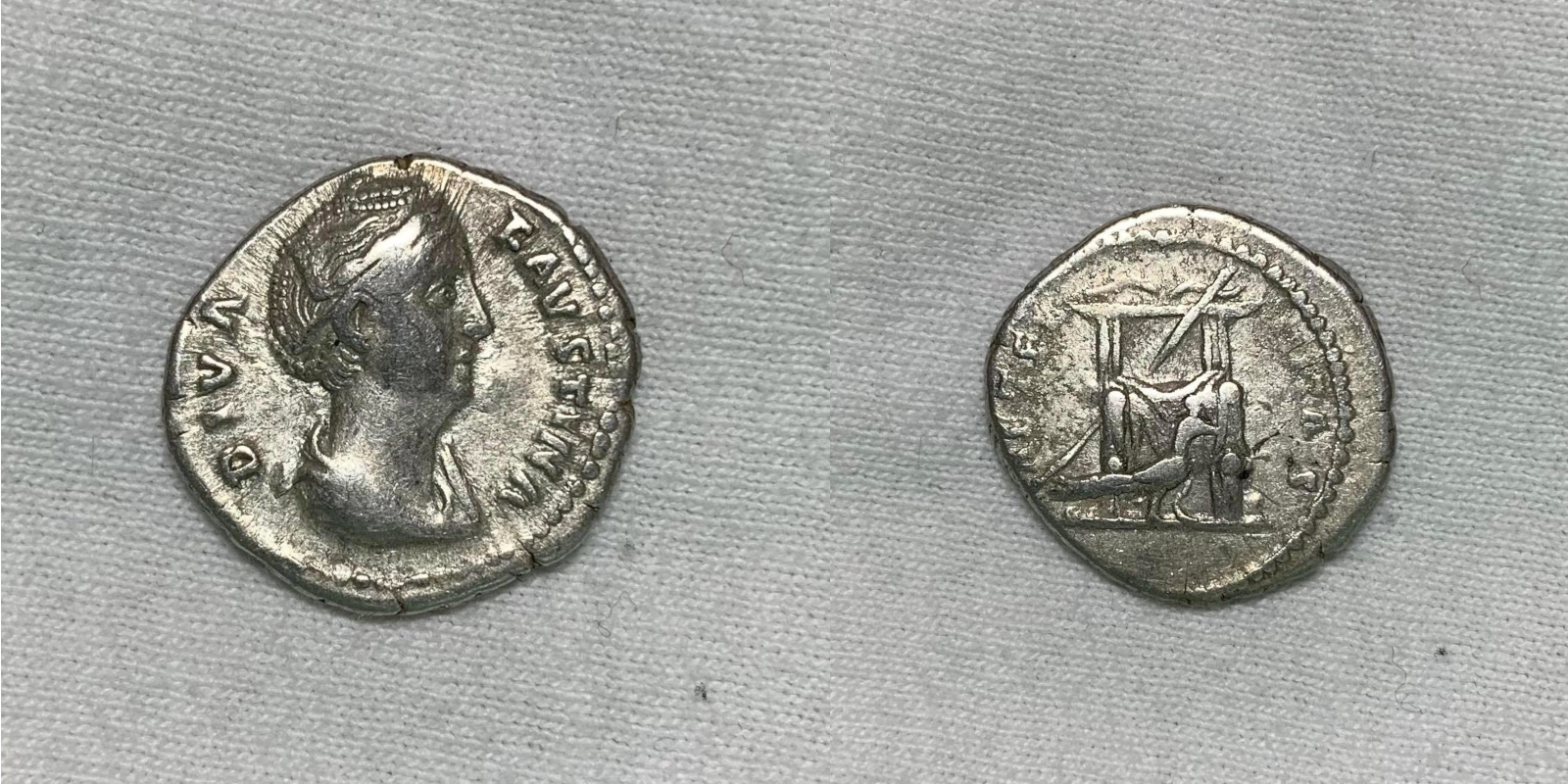
Reverse: AETERNITAS, Throne, draped and ornamented, against which rests transverse scepter, pointing up right: in front, peacock standing right
Die Orientation: 6 H
Weight: 3.08 g
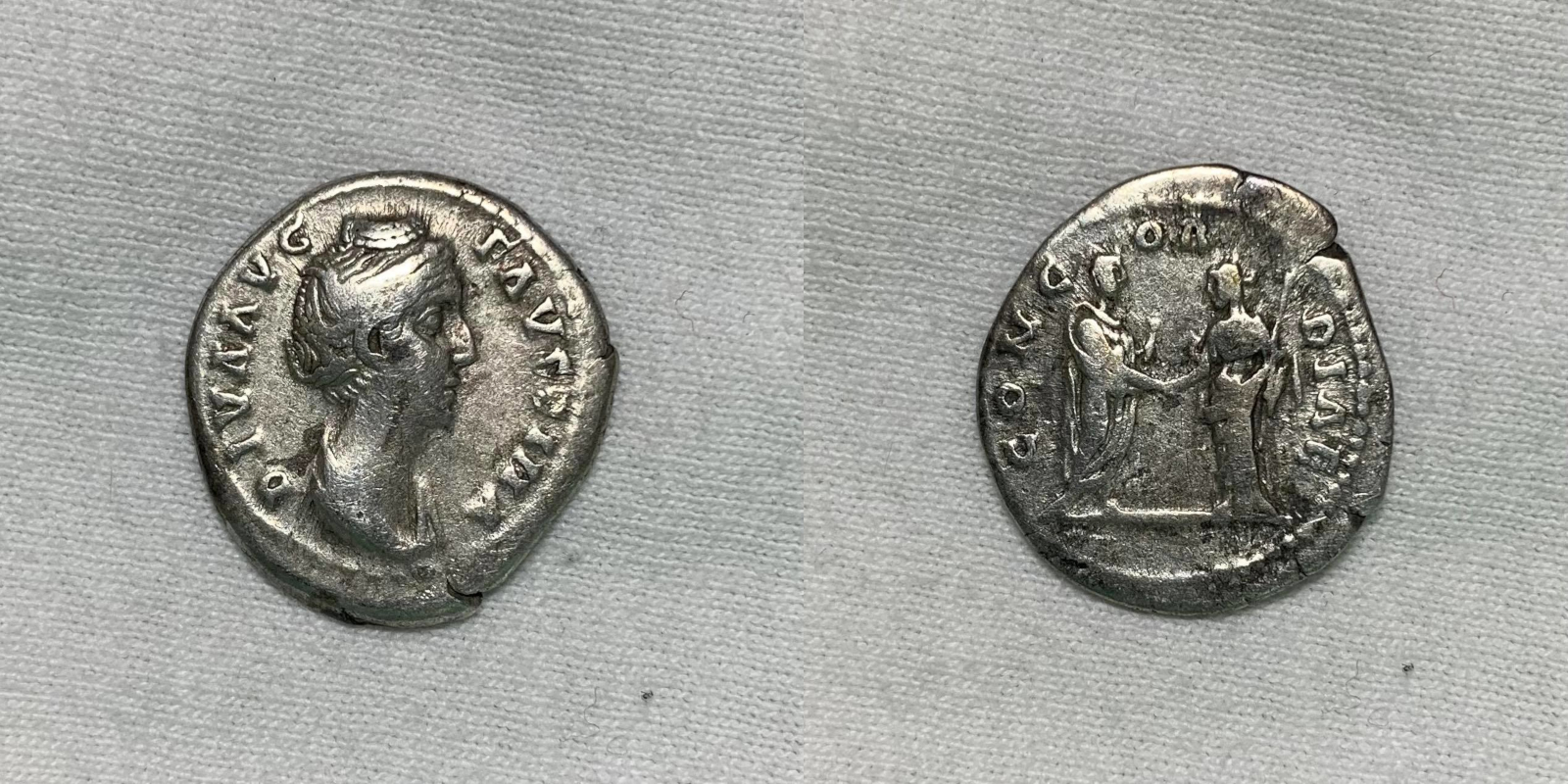
Reverse: CONCORDIAE, Antoninus, togate, standing right, holding roll in left hand and clasping right hands with Faustina I, who stands left, veiled, draped, scepter in left hand
Die Orientation: 6 H
Weight: 3.11 g
.jpg)
Reverse: IVNONI REGINAE, Juno seated left, holding patera and sceptre; at feet a peacock
Die Orientation: -
Weight: -
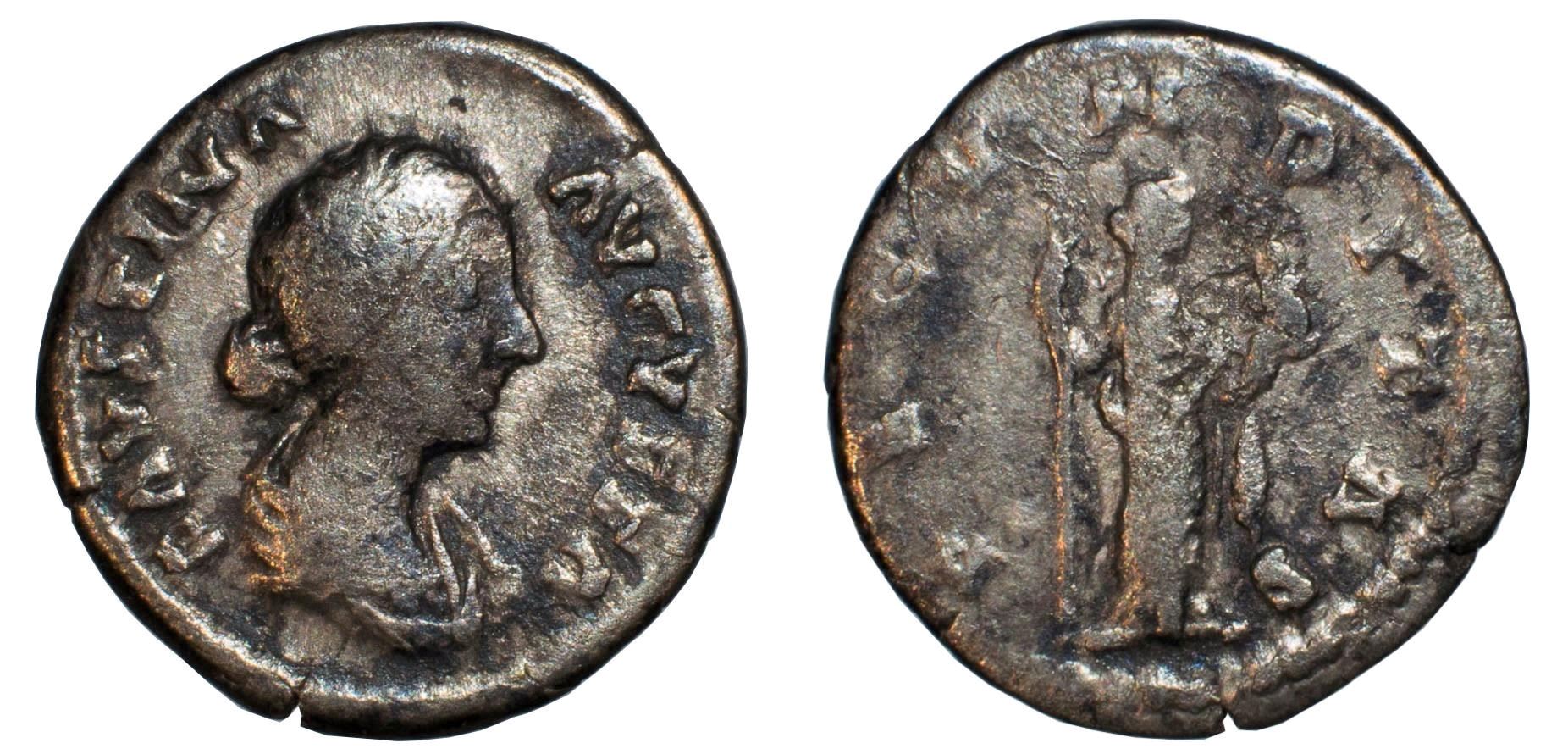
Reverse: FECVNDITAS, Fecunditas standing right, restig on sceptre, holding a child
Die Orientation: 0 H
Weight: 28 g
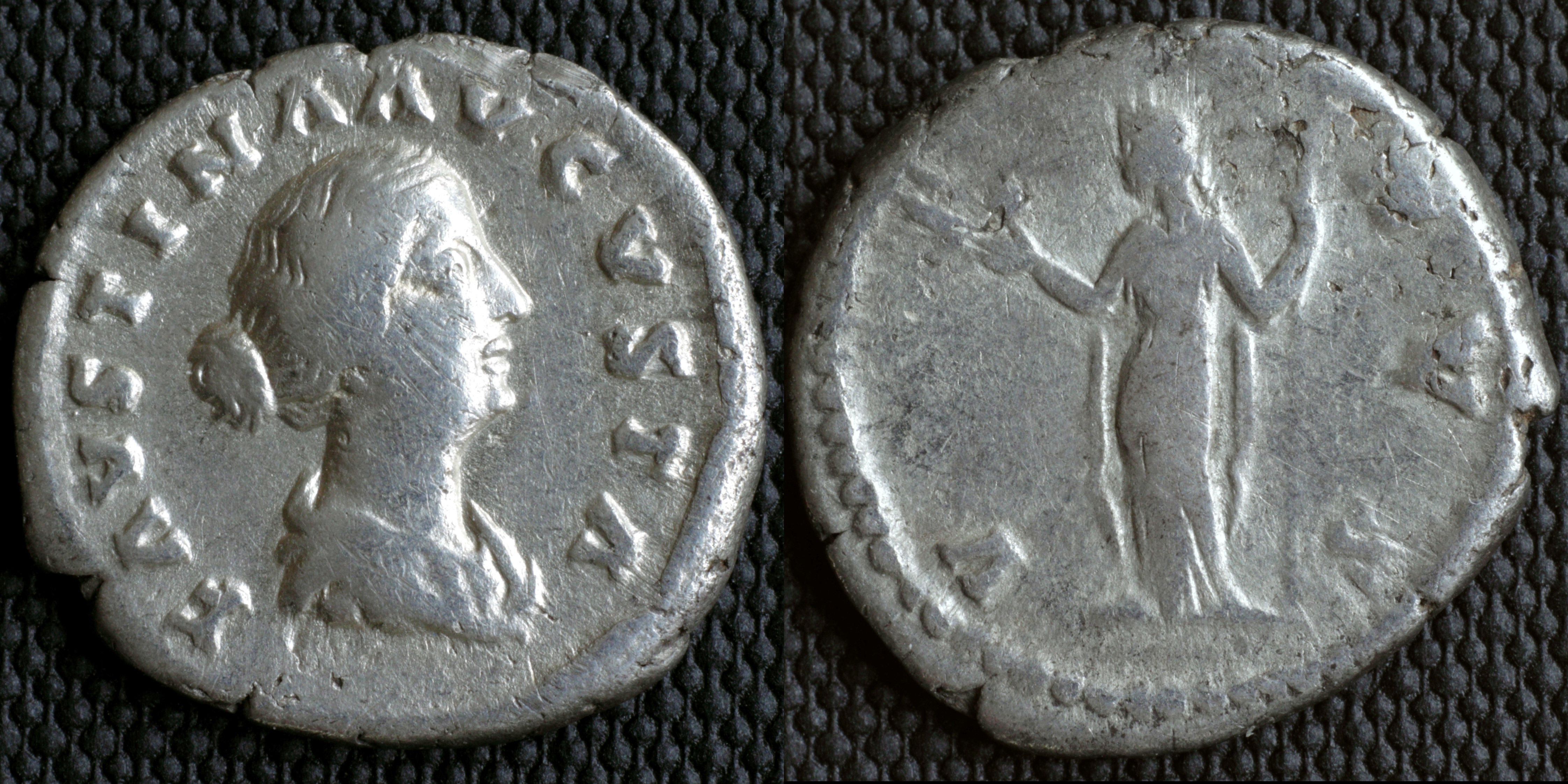
Reverse: Venus standing left holding apple and scepter; VE_NVS
Die Orientation: -
Weight: 3.1 g
(3).jpg)
Reverse: VENVS, Venus standing facing, head left, holding apple and rudder
Die Orientation: 4 H
Weight: 3.28 g
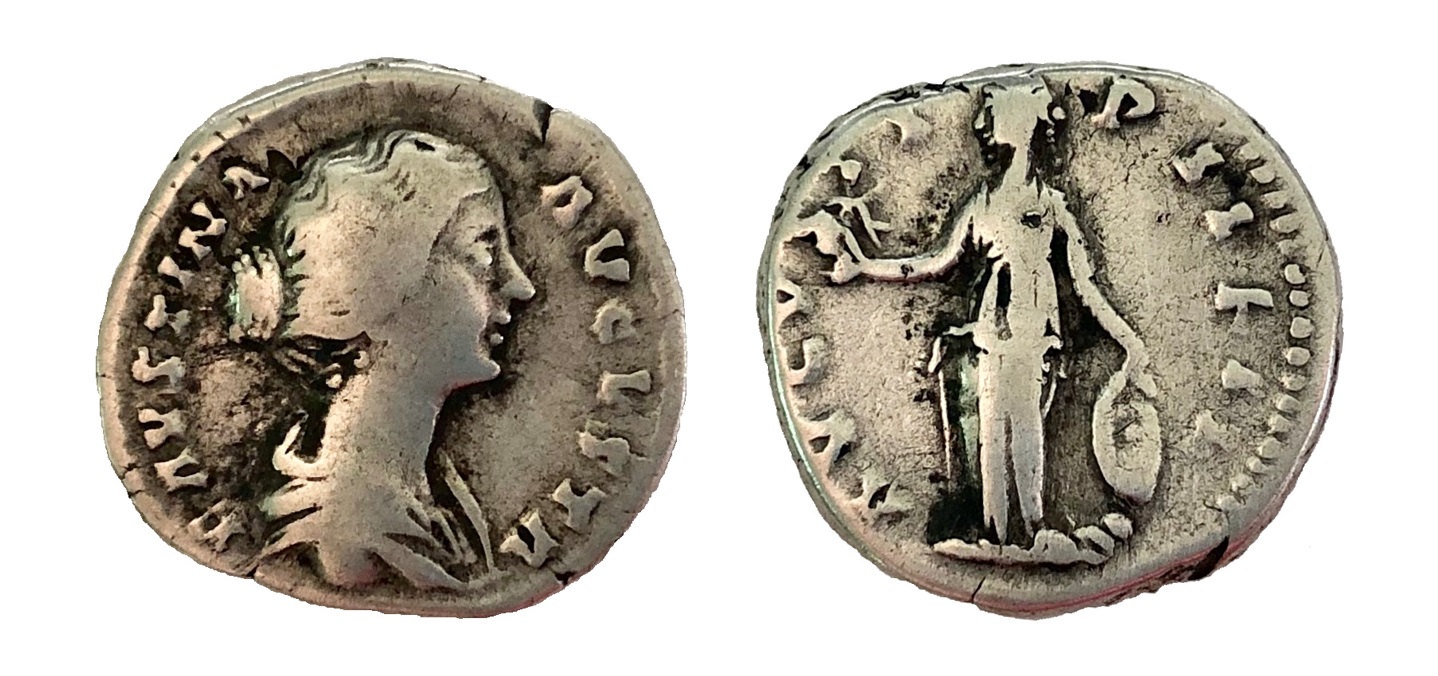
Reverse: Venus standing left, holding victory in right hand, left hand resting on shield atop a helmet, text (AVGVSTI•PII•FIL)
Die Orientation: -
Weight: -
.jpg)
Reverse: CONSECRATIO, peacock standing right
Die Orientation: 6 H
Weight: 2.99 g
Ex Leu Numismatik Web Auction 15; Lot 1833
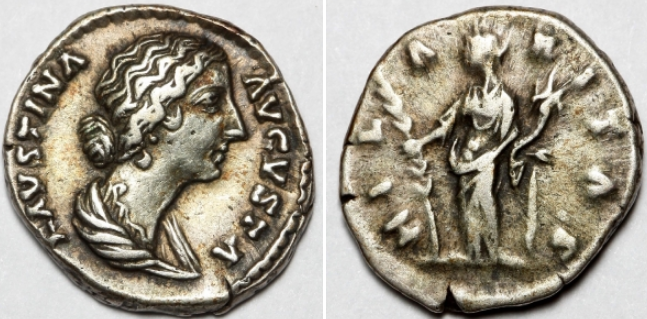
Reverse: HILARITAS - Hilaritas standing left, holding long palm and cornucopiae.
Die Orientation: 12 H
Weight: 3.41 g
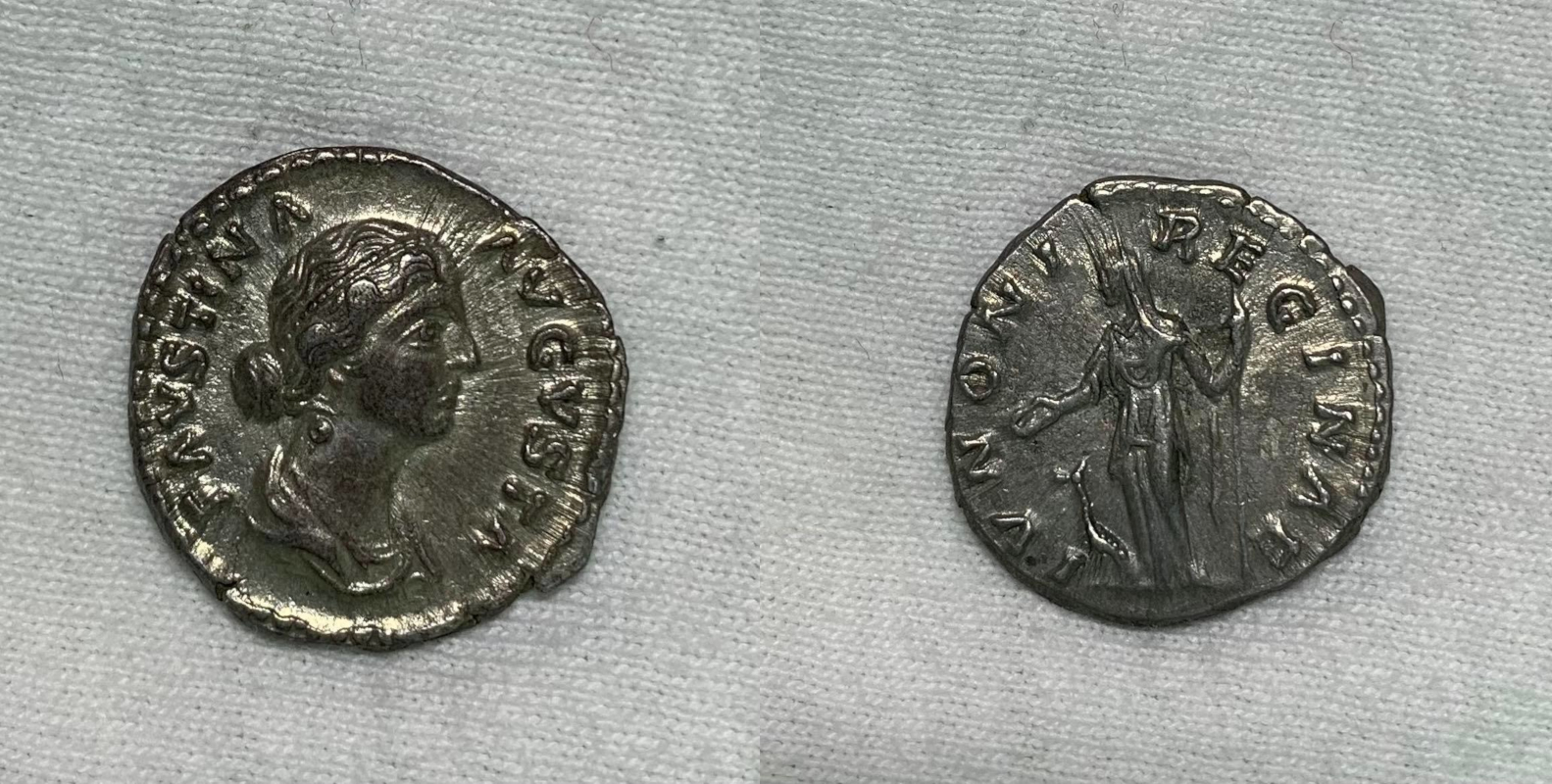
Reverse: IVNONI REGINAE: Juno, veiled, draped, standing left, holding patera in extended right hand and scepter in left hand; at left, peacock
Die Orientation: 6 H
Weight: 3.06 g
CNG seems confident in a tighter date range than RIC which puts it at 161-176 AD.
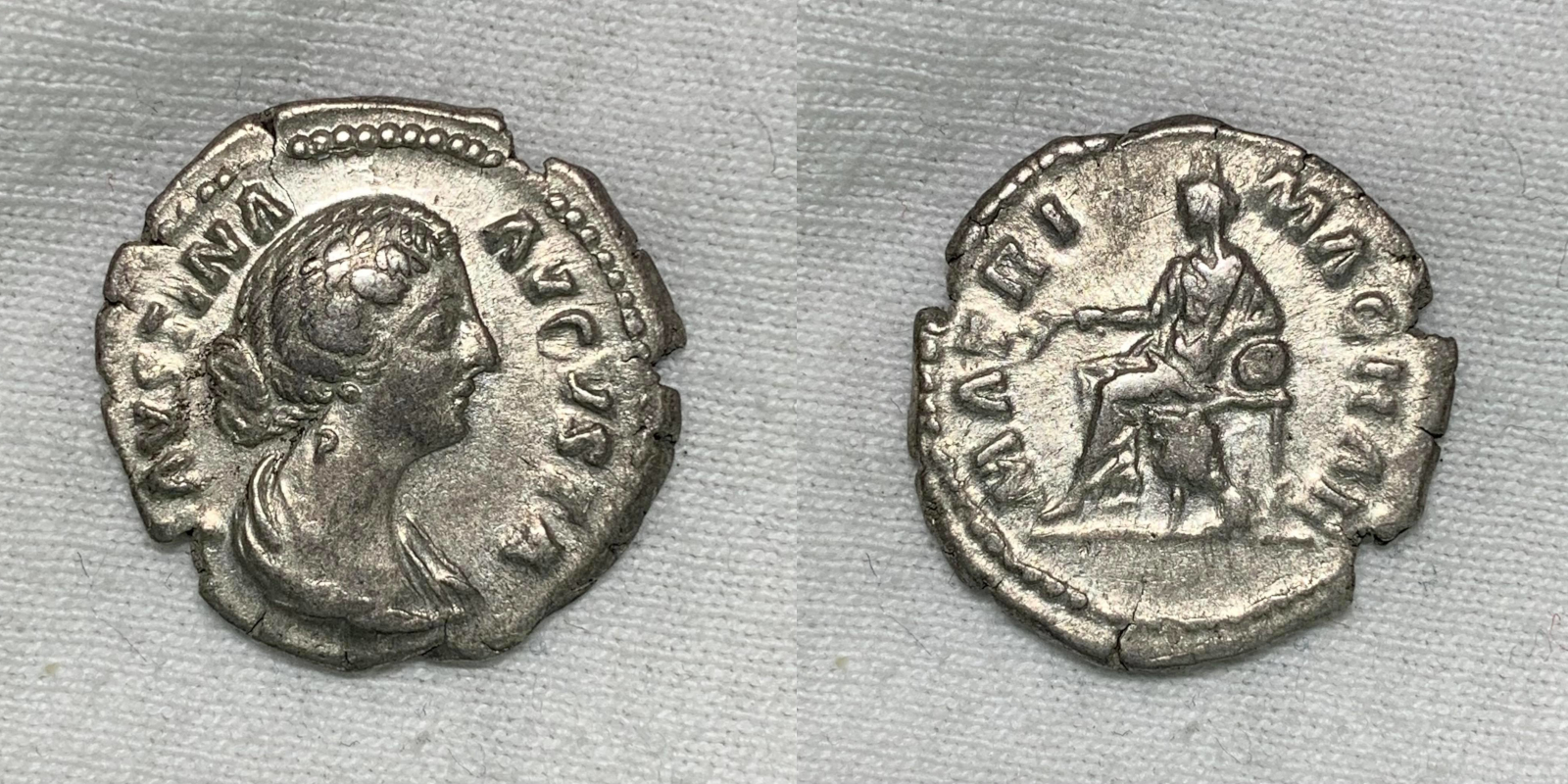
Reverse: MATRI MAGNAE: Cybele, towered, draped, seated left on throne, holding branch and resting left elbow on drum; behind, lion
Die Orientation: 6 H
Weight: 3.05 g
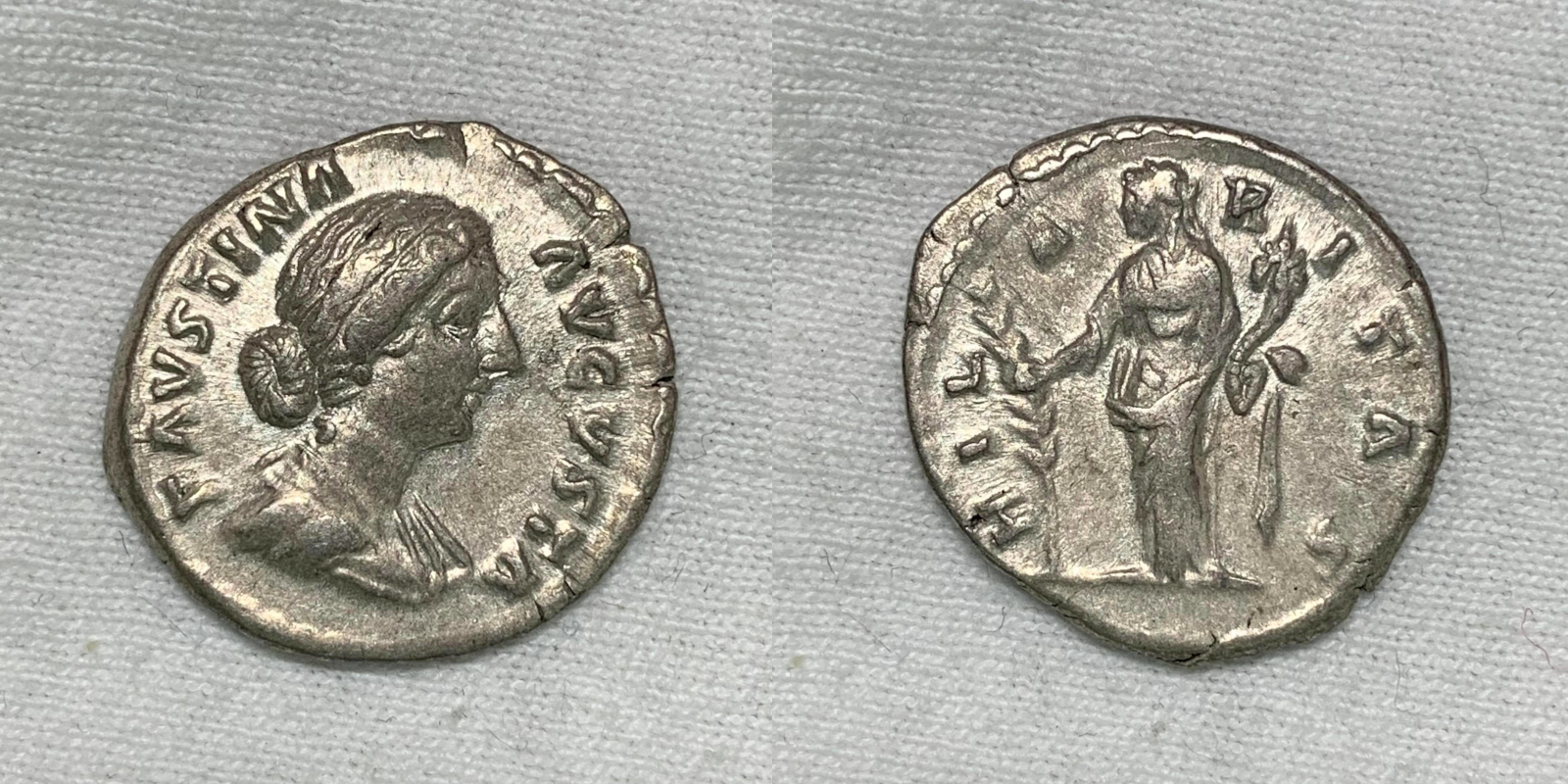
Reverse: HILARITAS: Hilaritas, draped, standing left, holding long palm, nearly vertical, in right hand and cornucopiae in left hand
Die Orientation: 6 H
Weight: 3.29 g
Some auction houses list a tighter date range of 161-164 AD, 161-176 comes from RIC.
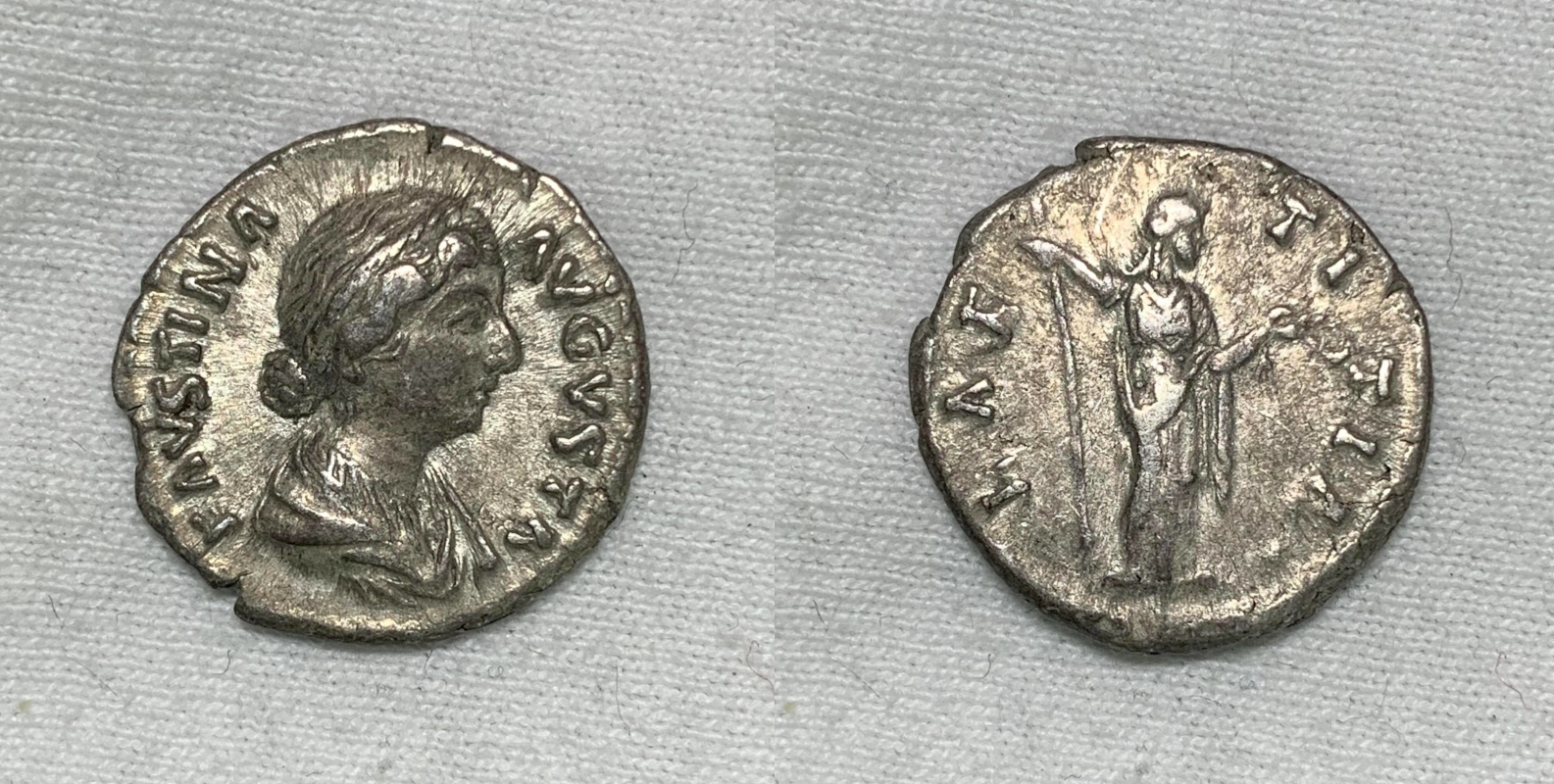
Reverse: LAETITIA: Laetitia, draped, standing right, holding wreath in right hand and sceptre in left hand
Die Orientation: 6 H
Weight: 3.02 g
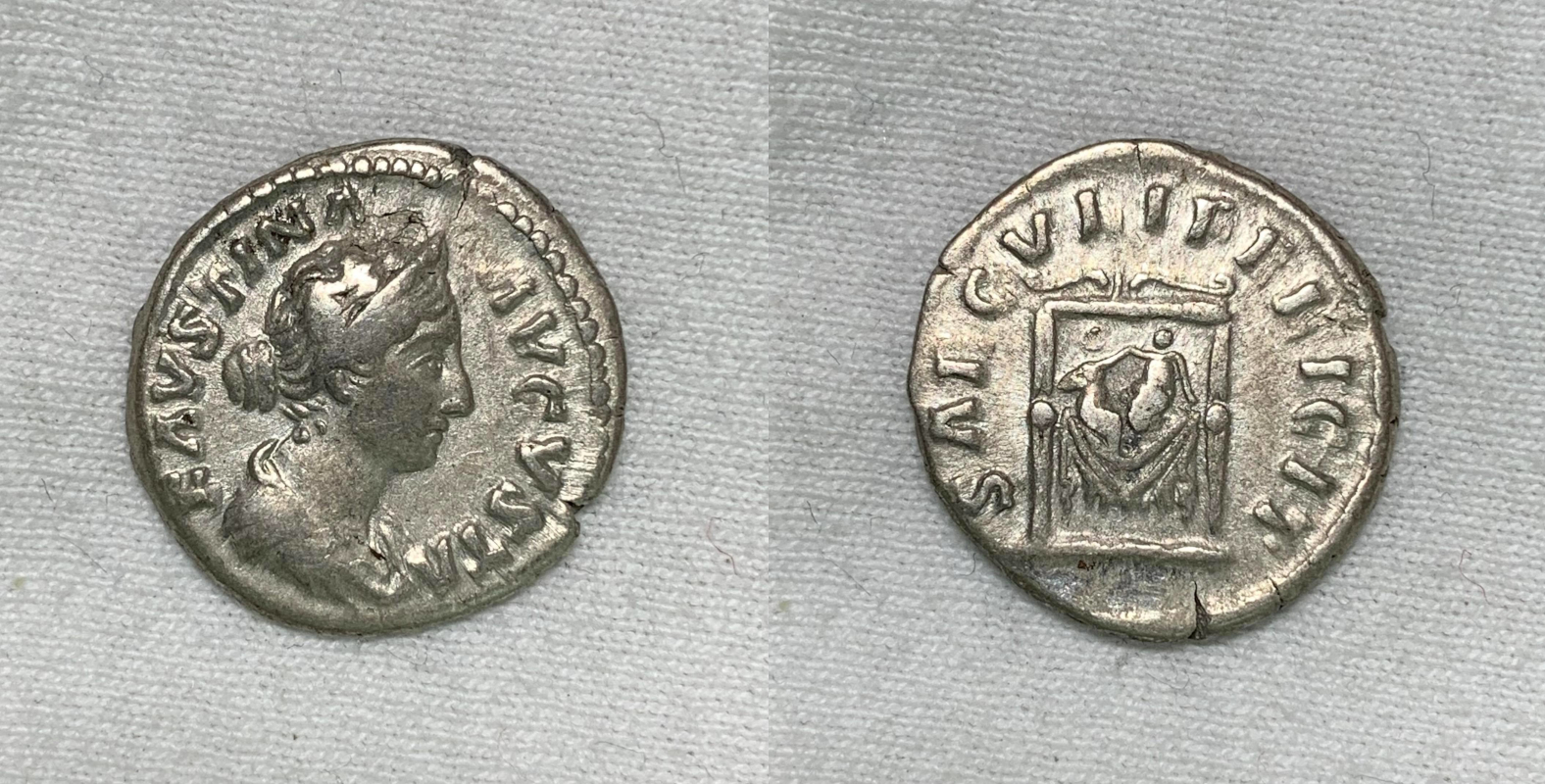
Reverse: SAECVLI FELICIT: Pulvinar, draped, on which are infants Commodus and Antoninus
Die Orientation: 6 H
Weight: 3.06 g
Some auction houses suggest a tighter date range of 161-165 AD
.jpg)
Reverse: Three military trophies between capis and lituus; FAVSTVS monogram in exergue
Die Orientation: 1 H
Weight: 2.61 g
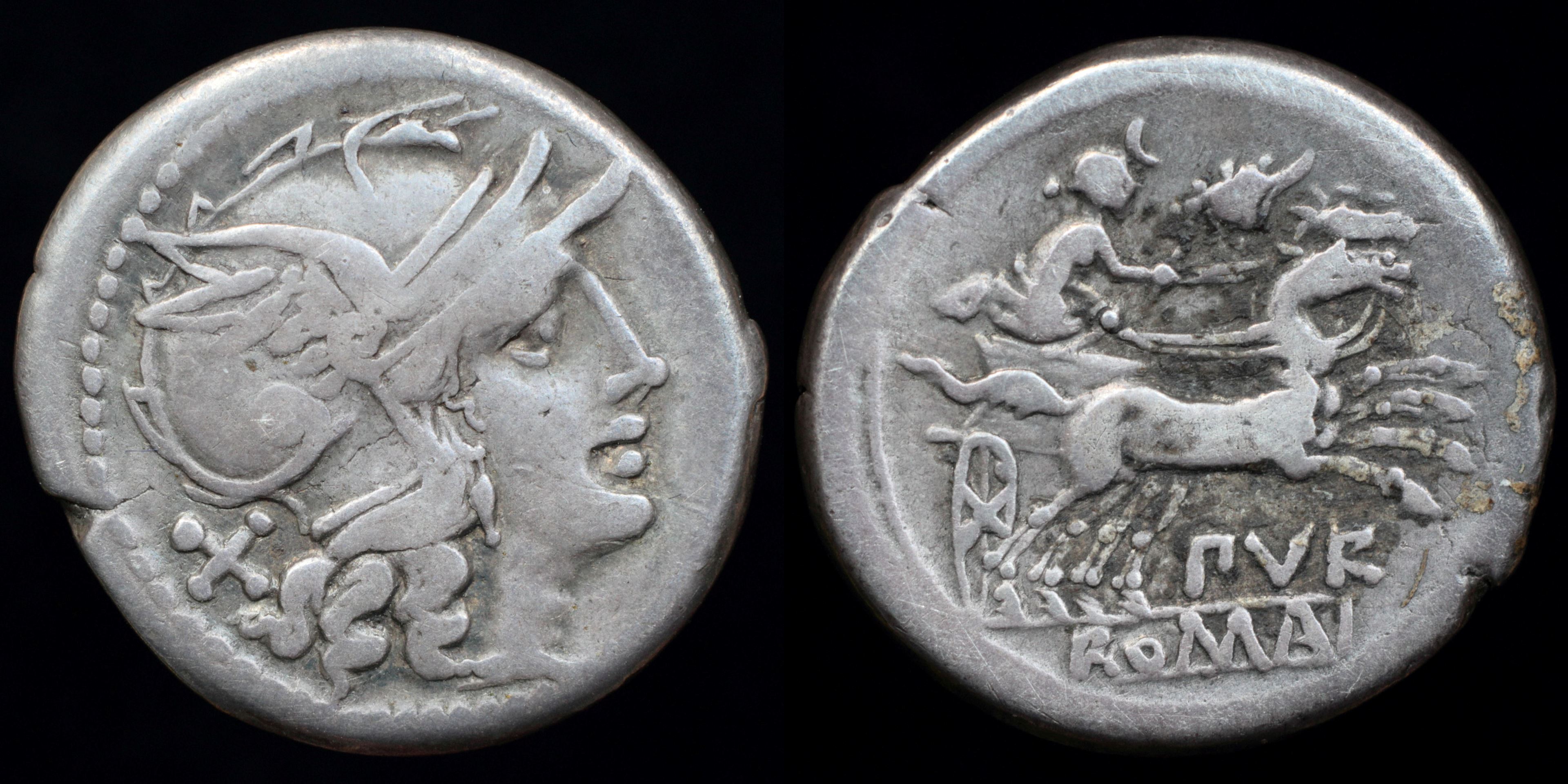
Reverse: Luna in biga right, crescent above head; murex shell above PVR ROMA
Die Orientation: -
Weight: 4.2 g
(40).jpg)
Reverse: DIVA AVGVSTA, Livia standing left, holding patera and sceptre
Die Orientation: 5 H
Weight: 3.2 g
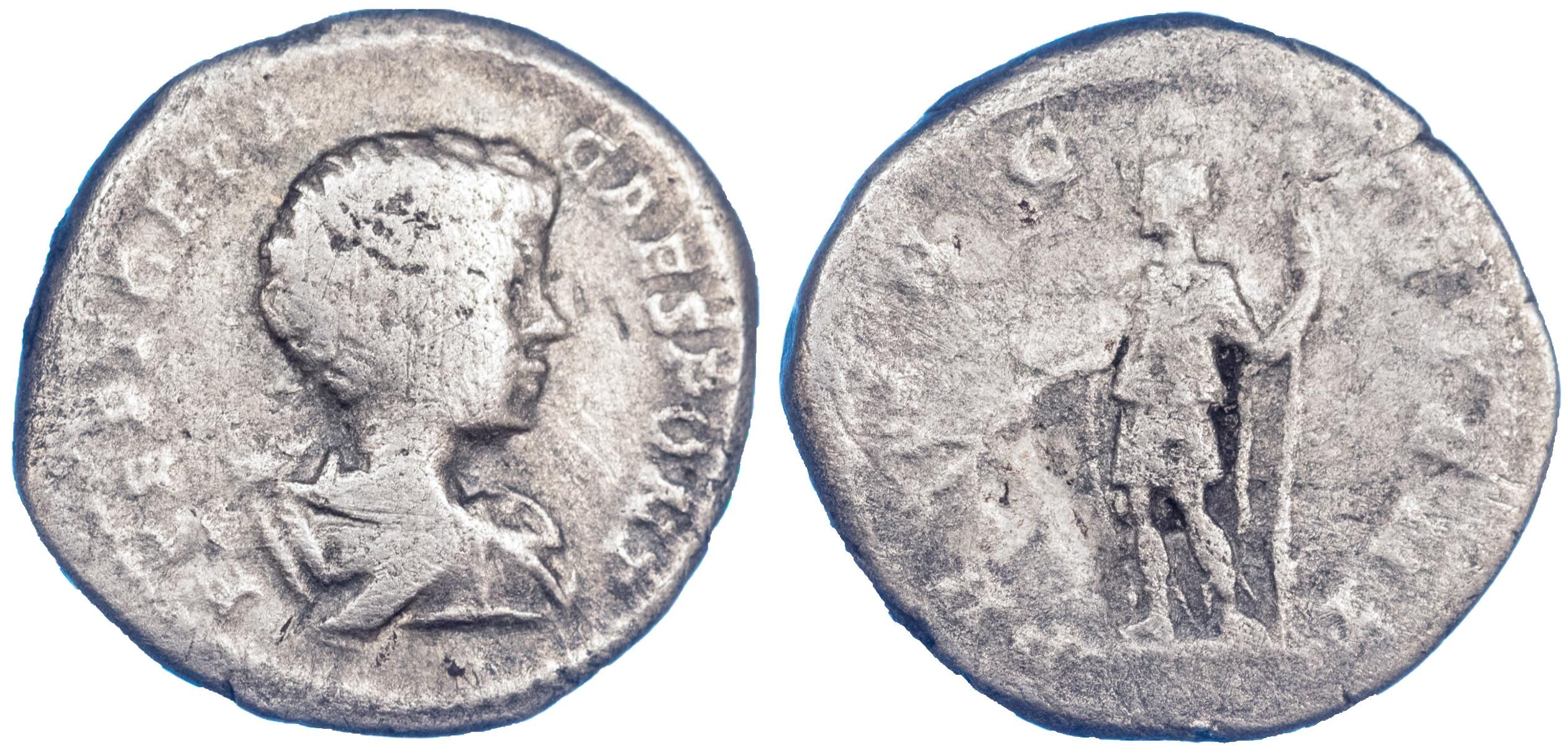
Reverse: PRINCIVVENT, Geta standing left, holdng branch & spear
Die Orientation: 0 H
Weight: 2.9 g
.jpg)
Reverse: VICT AETERN, Victory hovering left, holding open wreath with both hands over shield set on base
Die Orientation: 5 H
Weight: 3.77 g
(34).jpg)
Reverse: PRINC IVVENTVTIS, Geta, in military dress, standing left, holding branch and spear; behind, trophy
Die Orientation: 7 H
Weight: 3.7 g
.jpg)
Reverse: SECVRIT IMPERII. Securitas seated left, holding globe, left arm on chair.
Die Orientation: -
Weight: 2.52 g
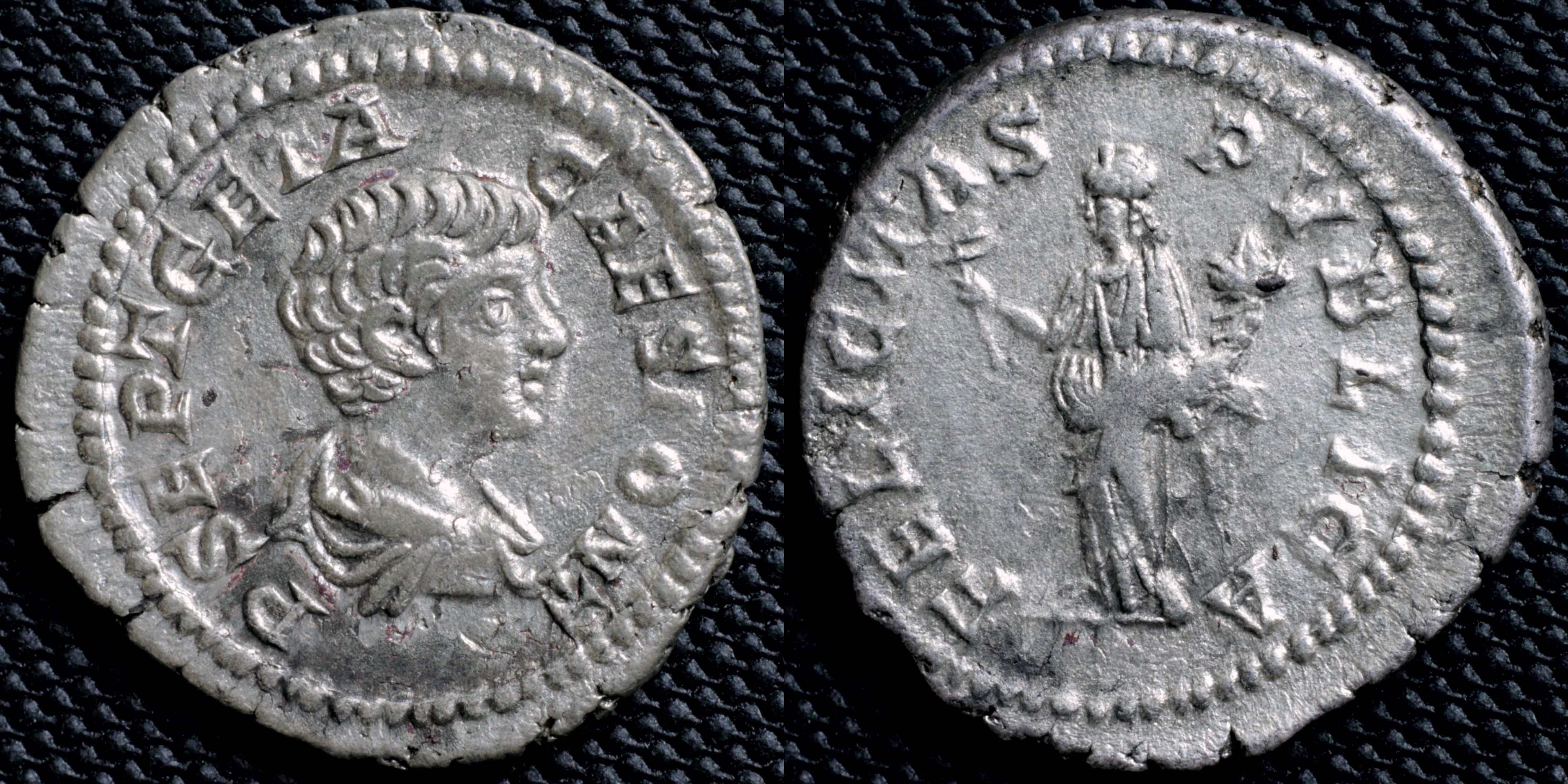
Reverse: Felicitas standing left holding caduceus and cornucopiae; FELICITAS__PVBLICA
Die Orientation: -
Weight: 3.08 g
.jpg)
Reverse: FELICITAS TEMPOR, Felicitas standing left, holding short caduceus and cornucopiae
Die Orientation: -
Weight: 3.34 g
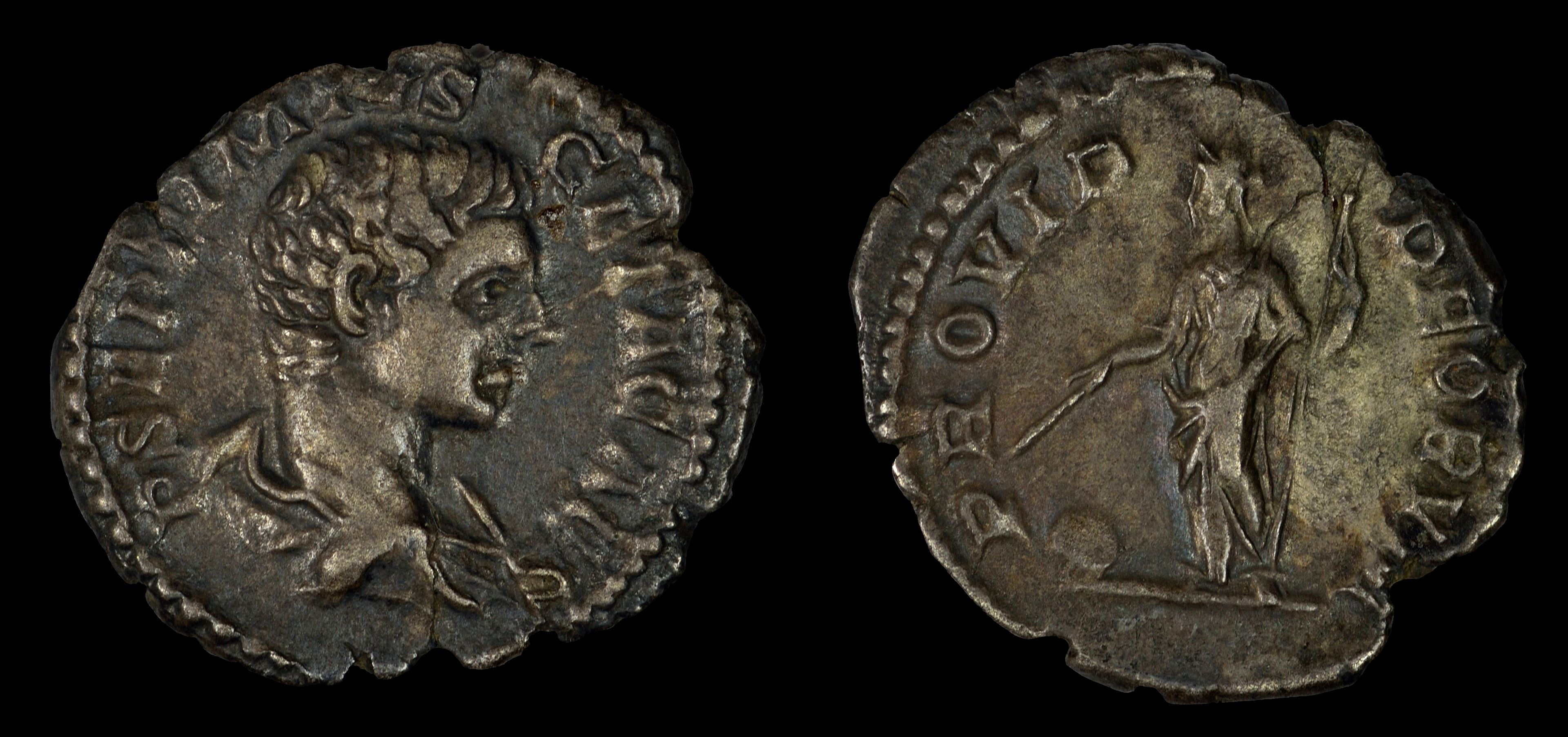
Reverse: ROVID DEORVM, Providentia standing left, holding wand and sceptre, globe at feet
Die Orientation: -
Weight: 2.6 g
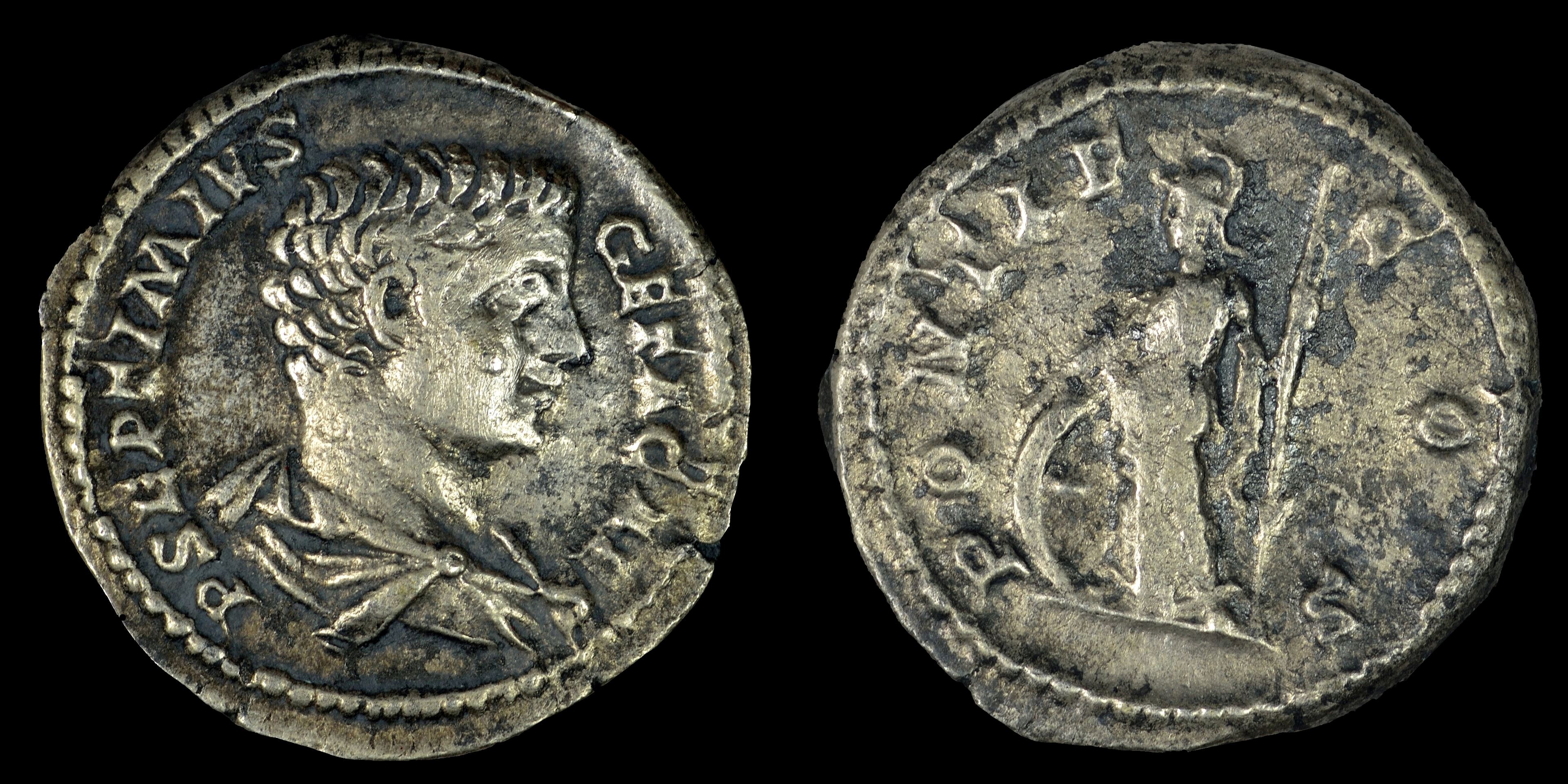
Reverse: PONTIF COS, Minerva standing left with spear and leaning on shield
Die Orientation: -
Weight: 2.8 g
_REDUCED(0).jpg)
Reverse: PONTIF COS II, Genius standing left, holding corn ears and sacrificing from patera over lighted and garlanded altar to left
Die Orientation: 7 H
Weight: 3.16 g
Ex. Brian Henry Grover Collection (Roma Numismatics E-Sale 72; Lot 1159)
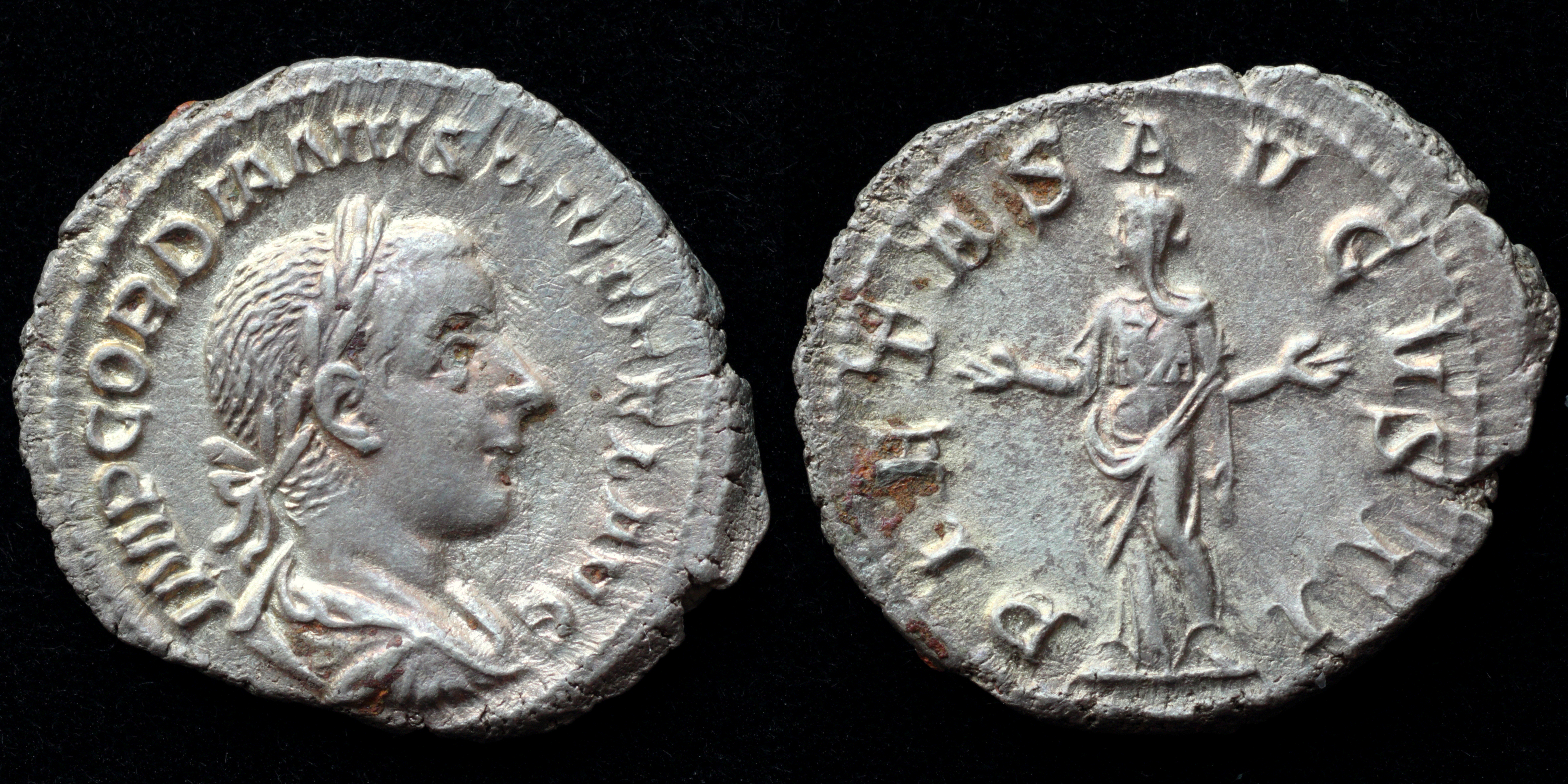
Reverse: Pietas standing slightly left, raising hands; PIETAS AVGVSTI
Die Orientation: -
Weight: 3.4 g
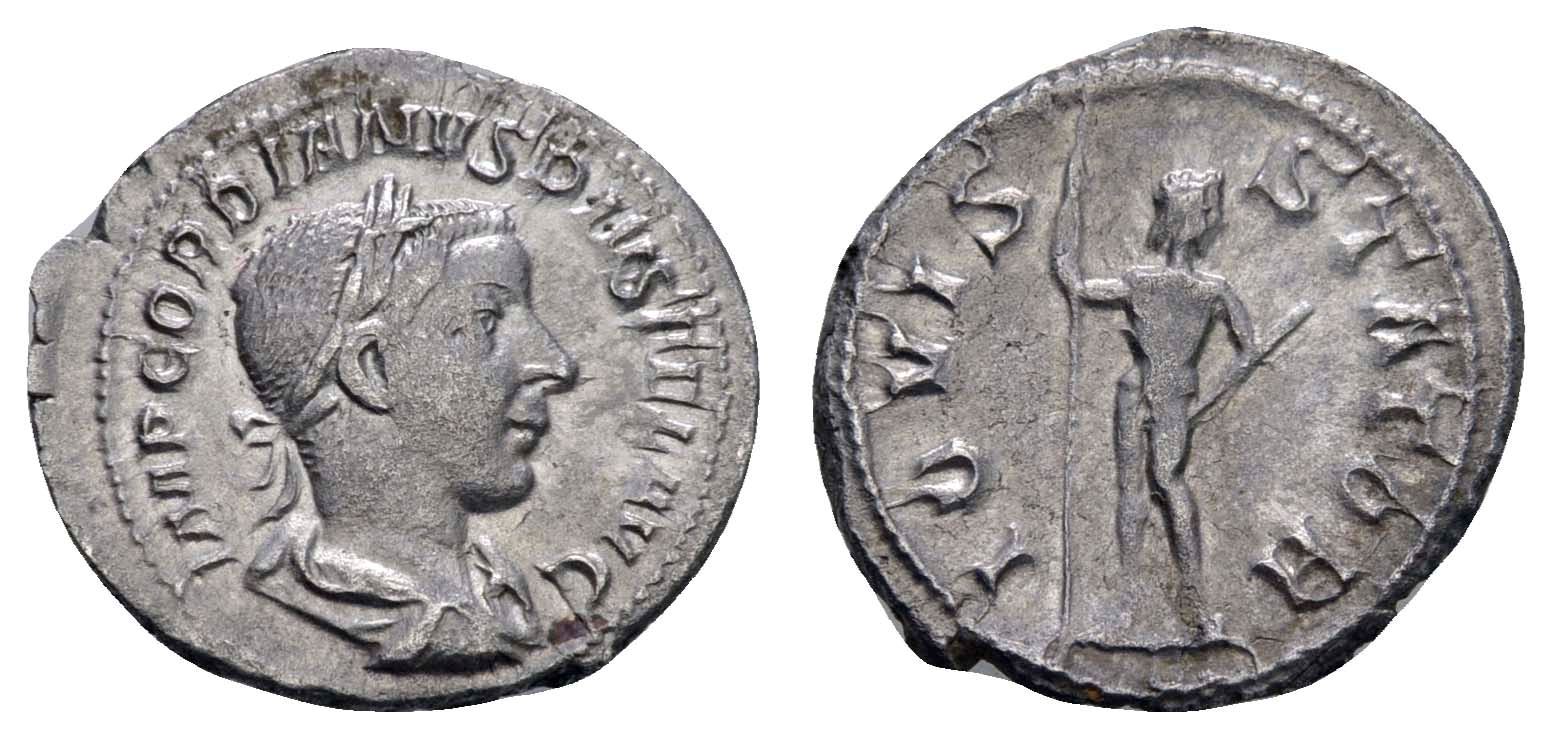
Reverse: IOVIS STATOR / Jupiter standing front, head right, holding thunderbolt & scepter
Die Orientation: -
Weight: -
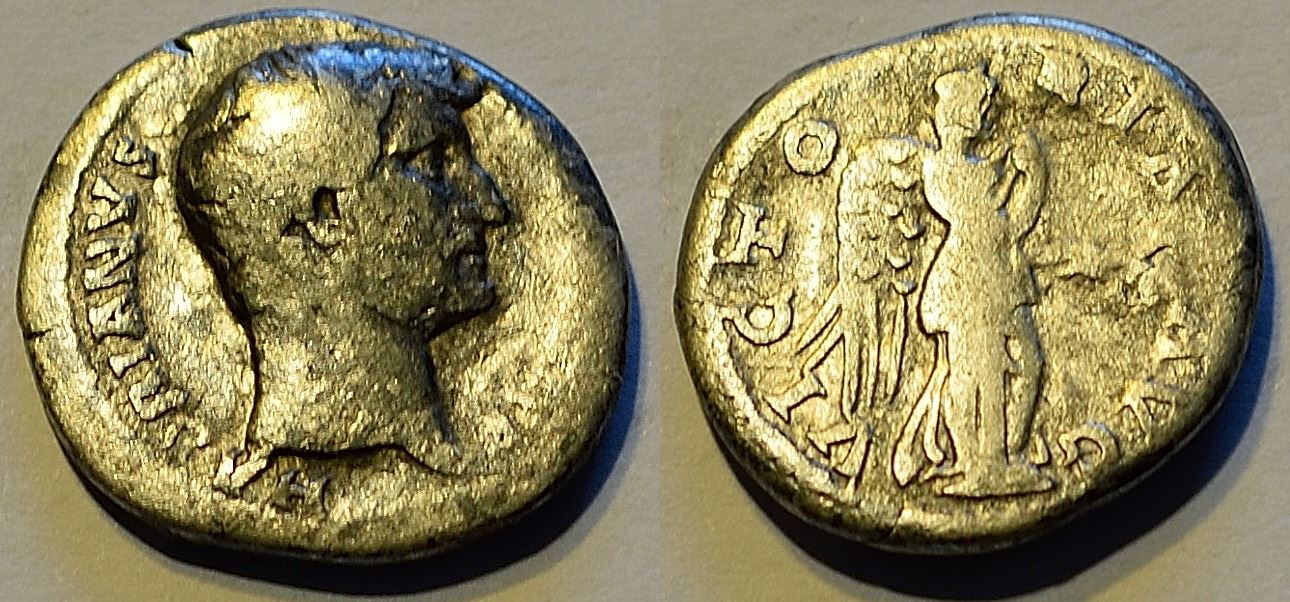
Reverse: Victoria-Nemesis walking right, drawing out fold of drapery from neck, pointing downwards with branch held in left
Die Orientation: 0 H
Weight: 3 g
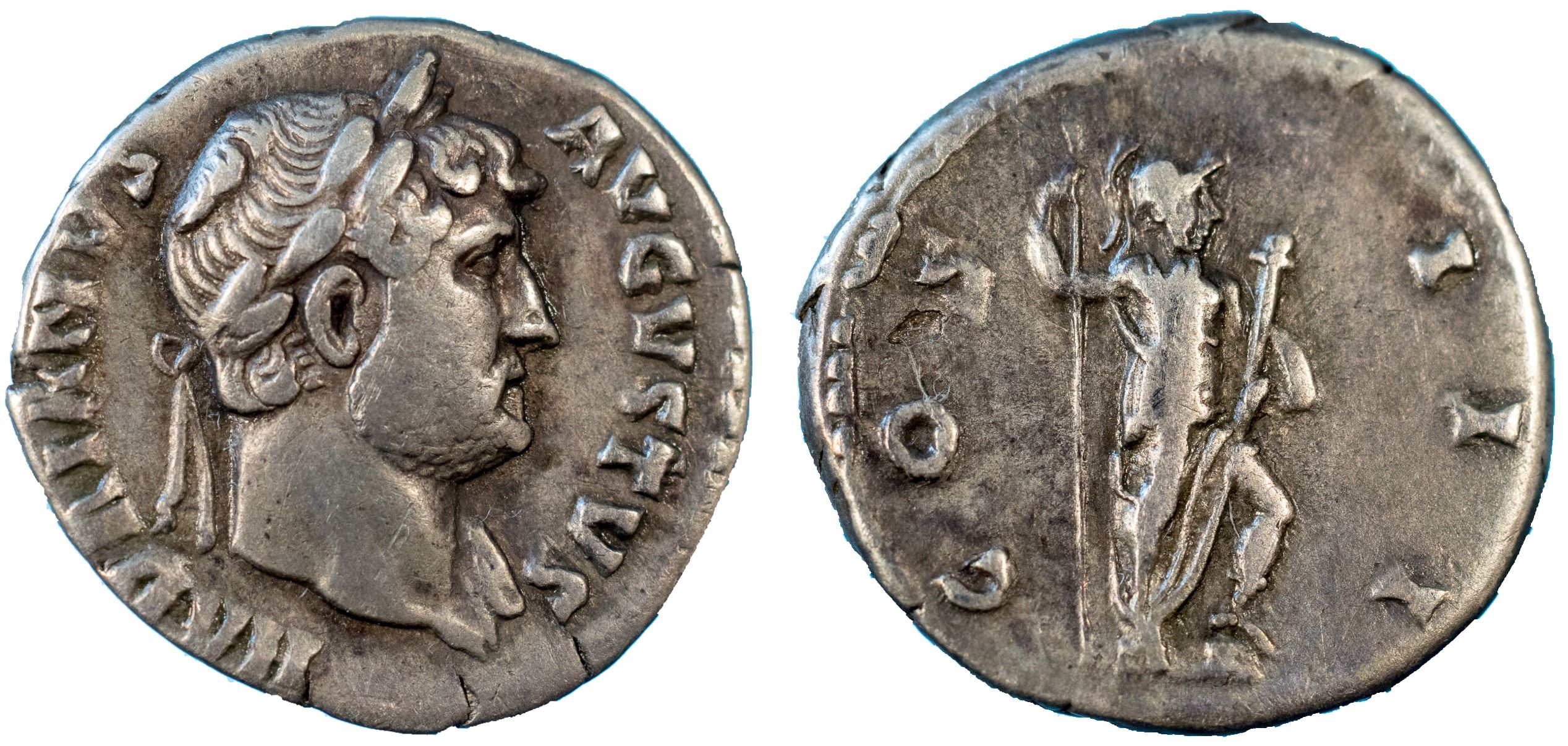
Reverse: COS - III, Roma standing r., holding spear and parazonium
Die Orientation: 0 H
Weight: 0 g
.jpg)
Reverse: VENERIS FELICIS, Venus seated left on throne, holding Cupid and sceptre
Die Orientation: 6 H
Weight: 2.63 g
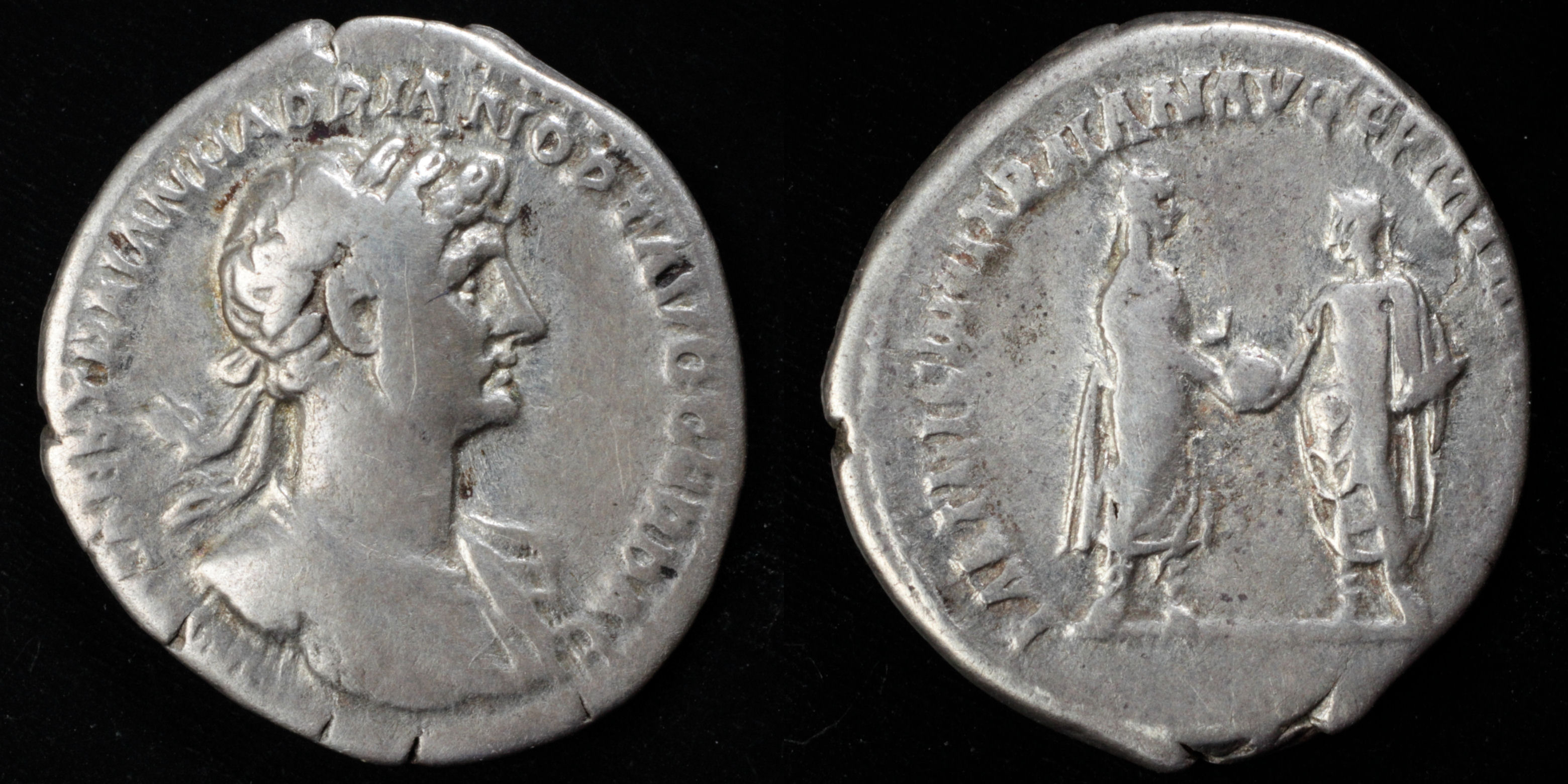
Reverse: Trajan and Hadrian standing vis-à-vis, holding globe between them, and each holding a volumen; PARTHIC DIVI TRAIAN AVG F P M TR P COS P P
Die Orientation: -
Weight: 3.2 g
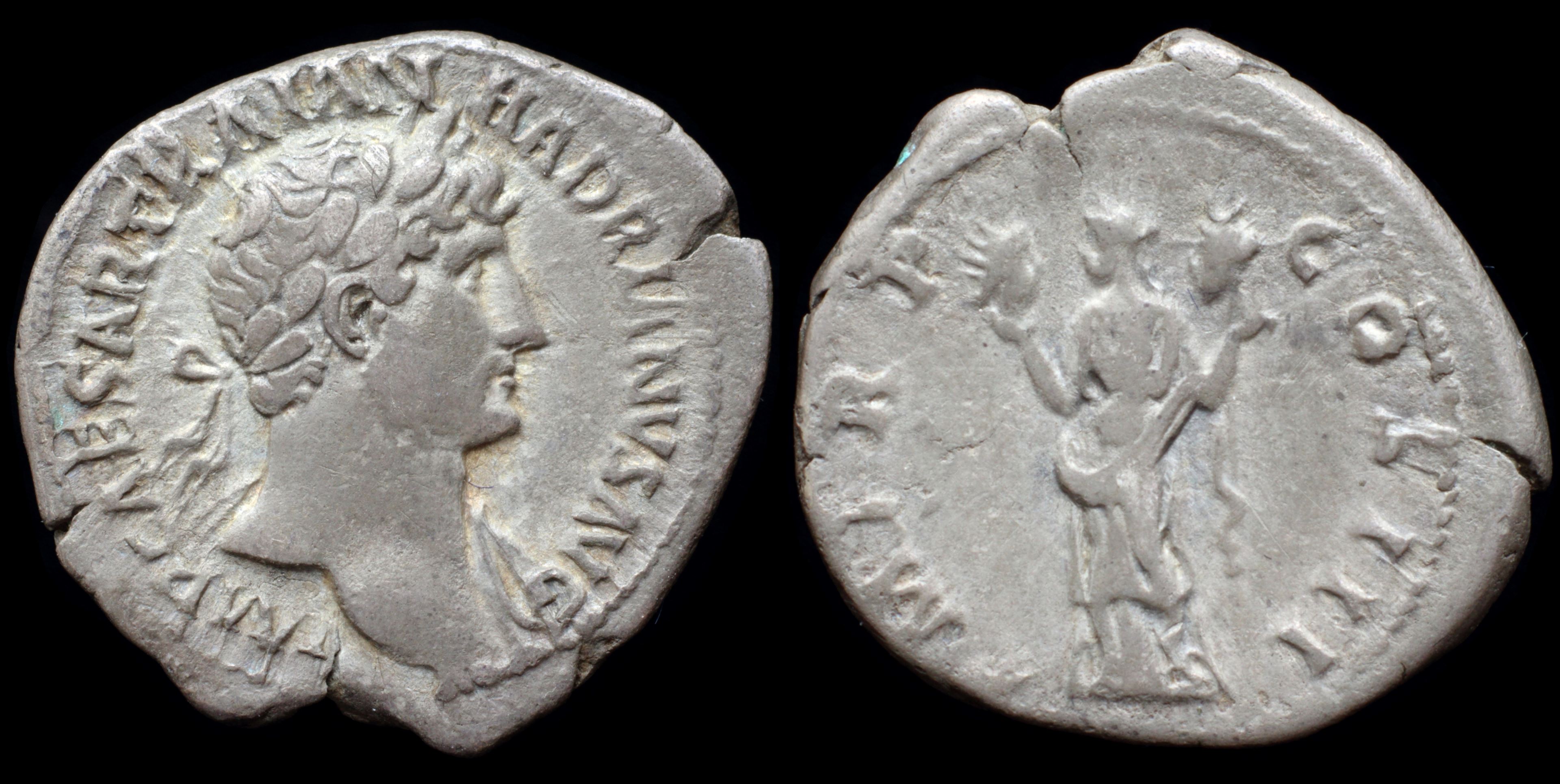
Reverse: Aeternitas standing left, holding heads of Sol and Luna; P M TR P__COS III
Die Orientation: -
Weight: 3.5 g
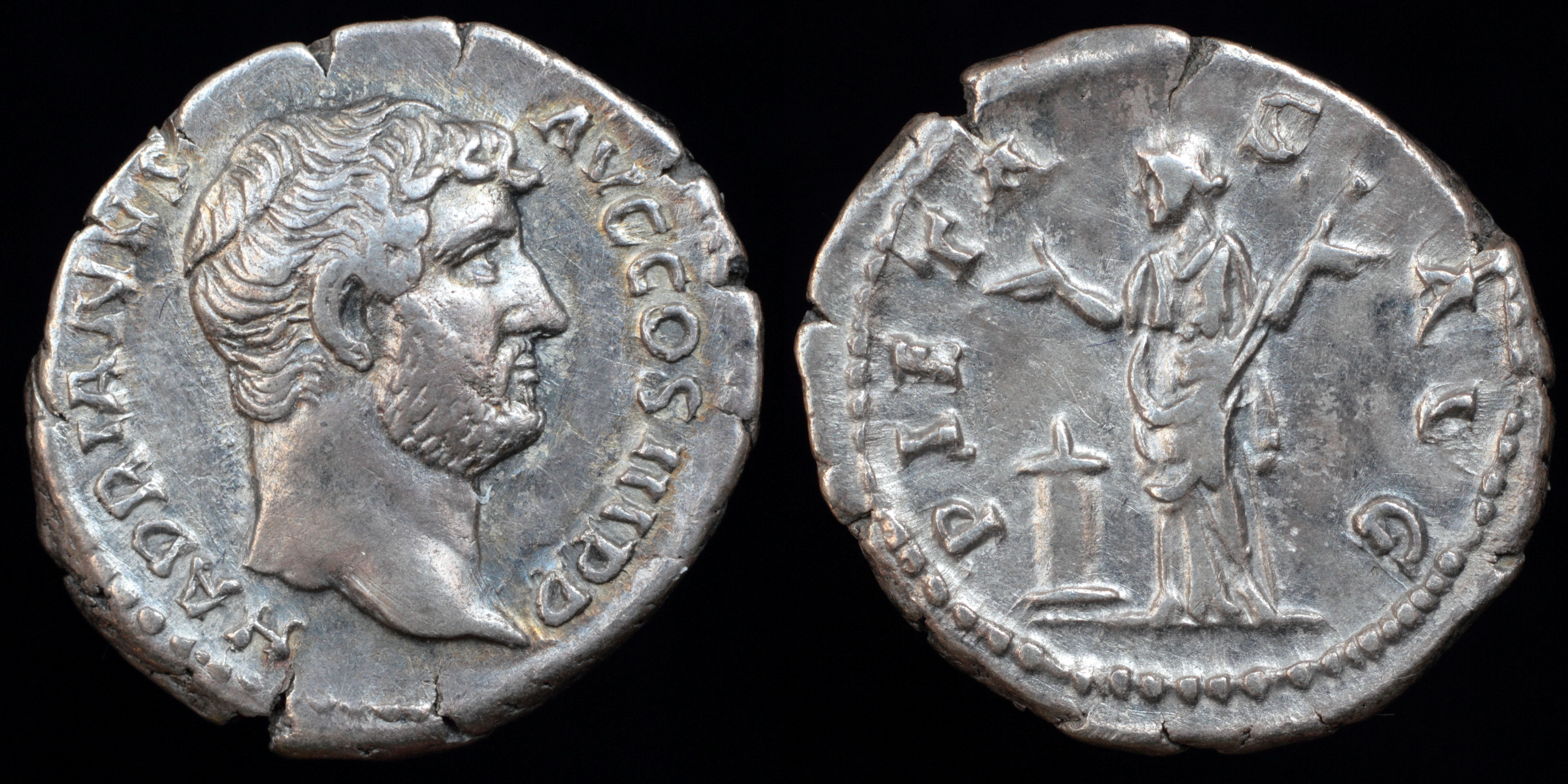
Reverse: Pietas standing left, raising both hands; altar left; PIETA_S__AVG
Die Orientation: -
Weight: 3.13 g
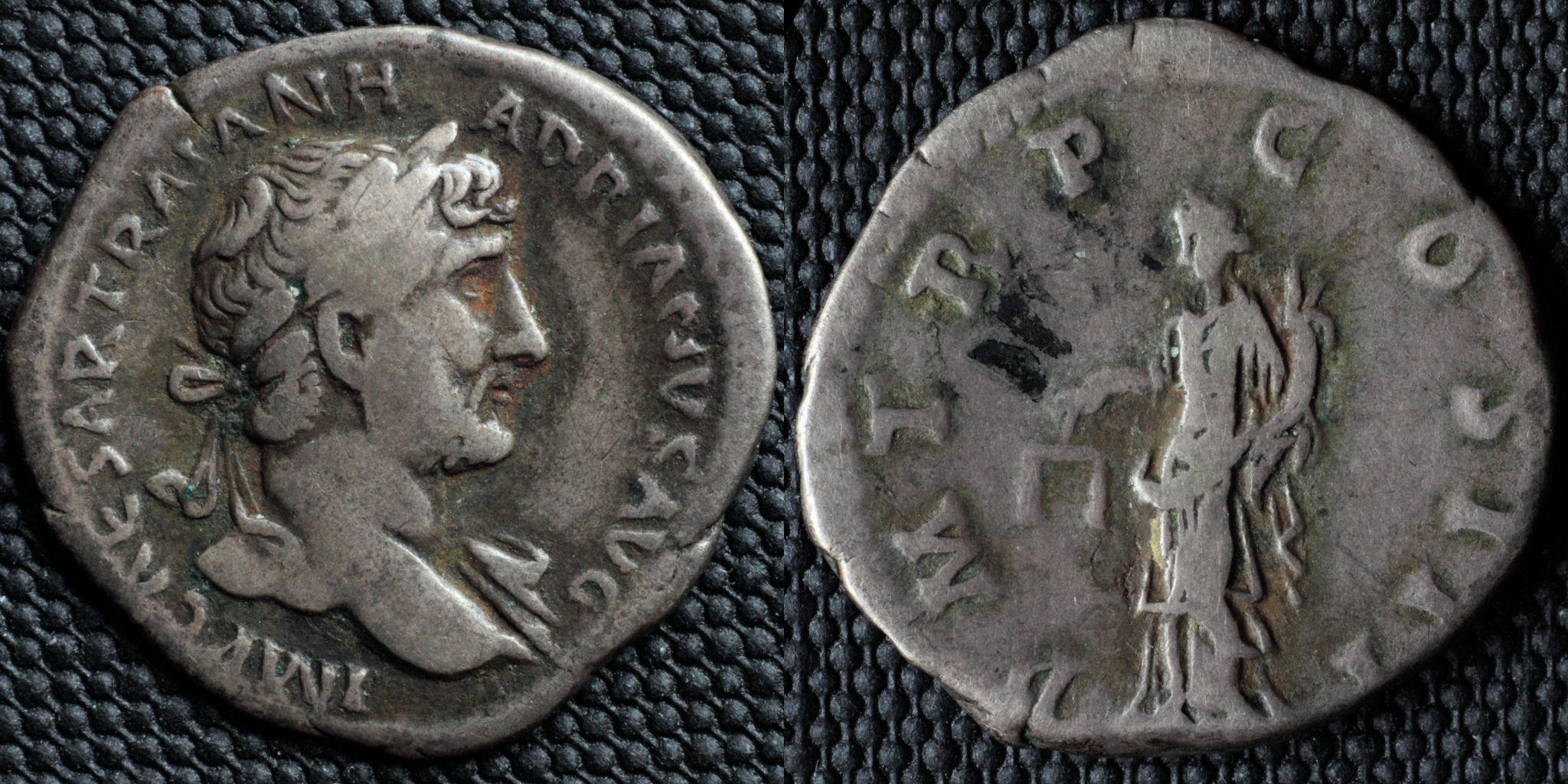
Reverse: Aequitas holding scales and cornucopiae; P M TR P COS III
Die Orientation: -
Weight: 2.65 g
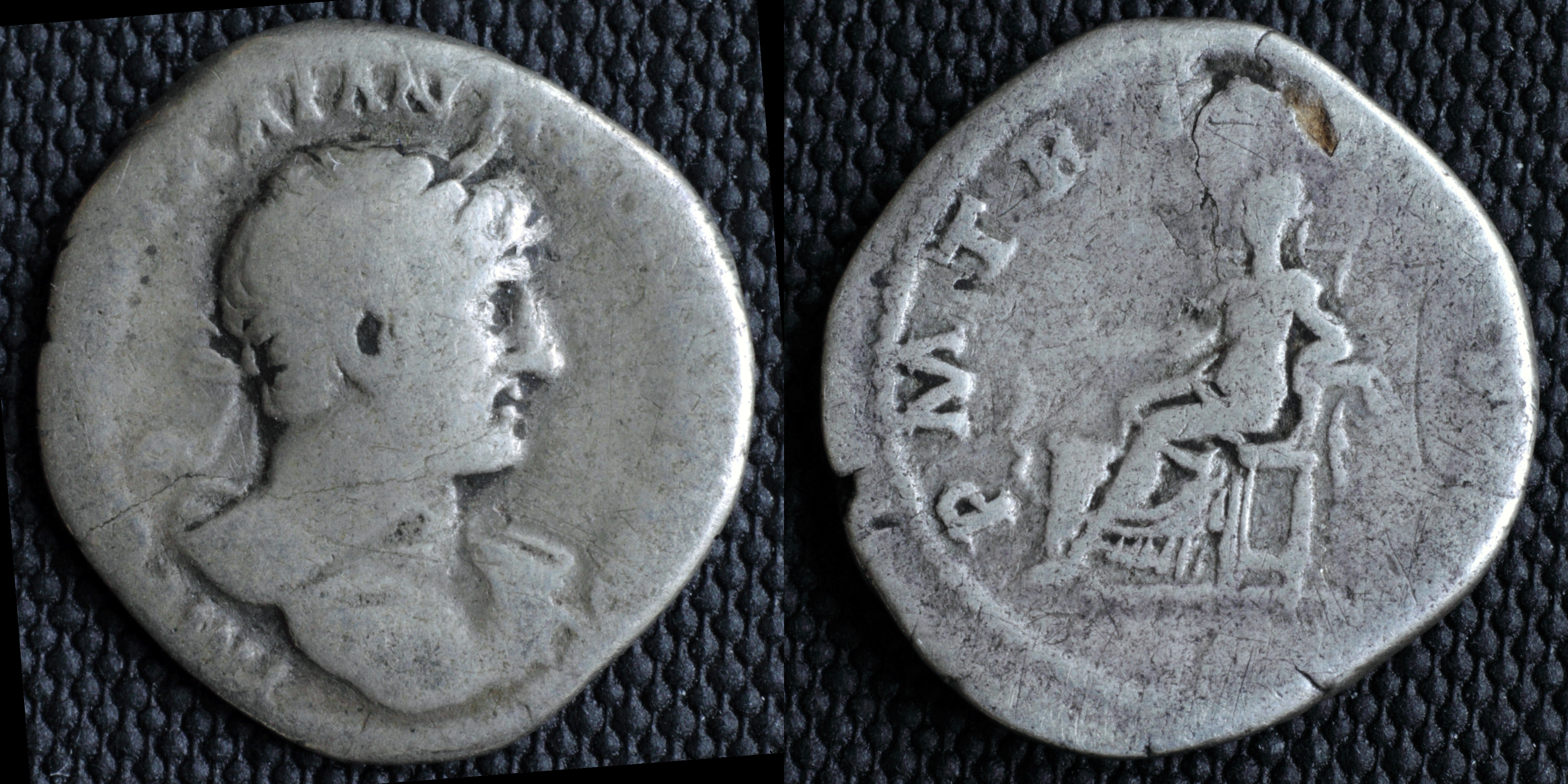
Reverse: Salus seated left, holding patera over altar from which a snakes rises to eat offering left; P M TR P__COS III
Die Orientation: -
Weight: 2.76 g
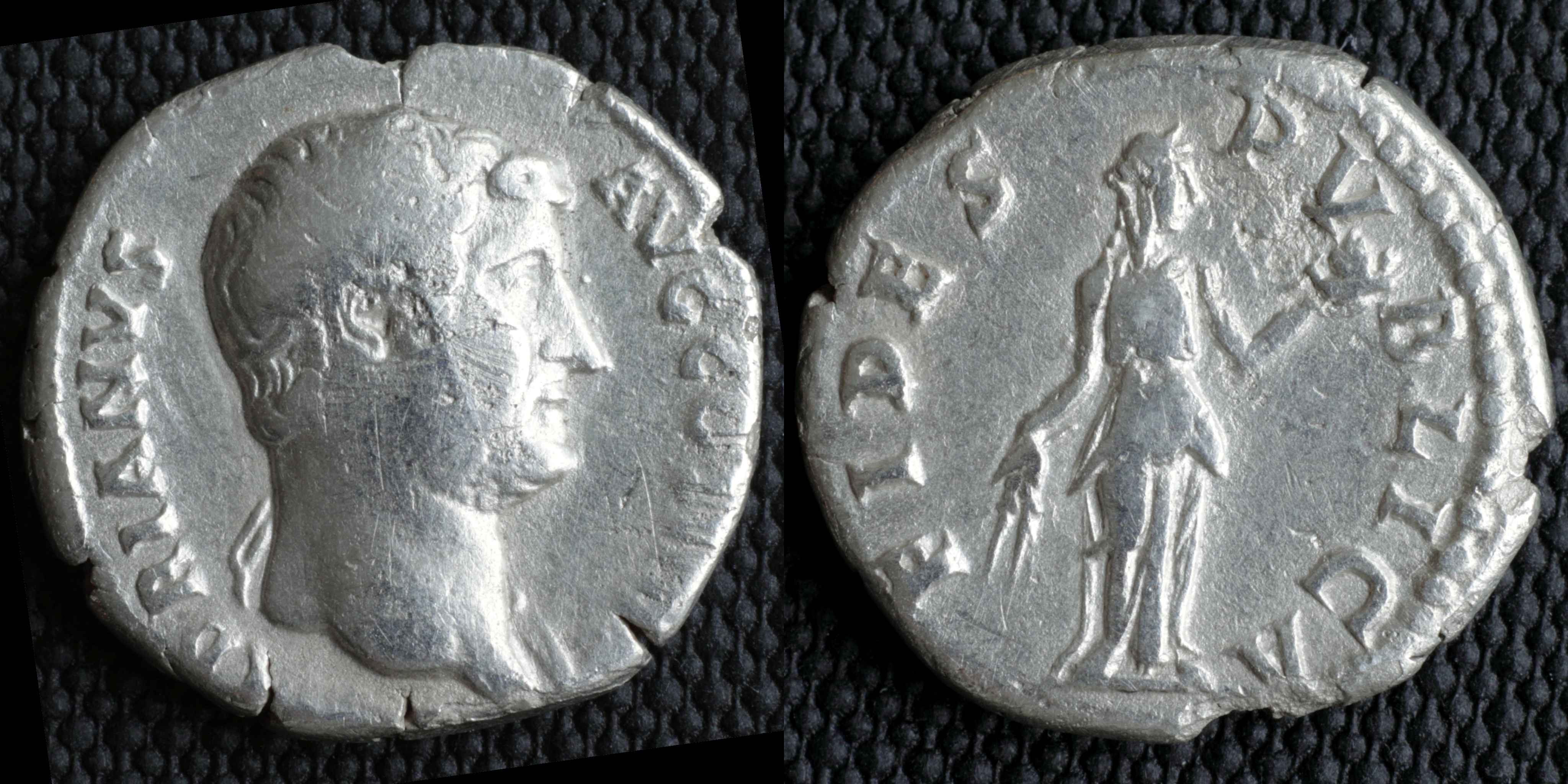
Reverse: Fides holding basket of fruit and grain ears; FIDES__PV_BLICA
Die Orientation: -
Weight: 2.8 g
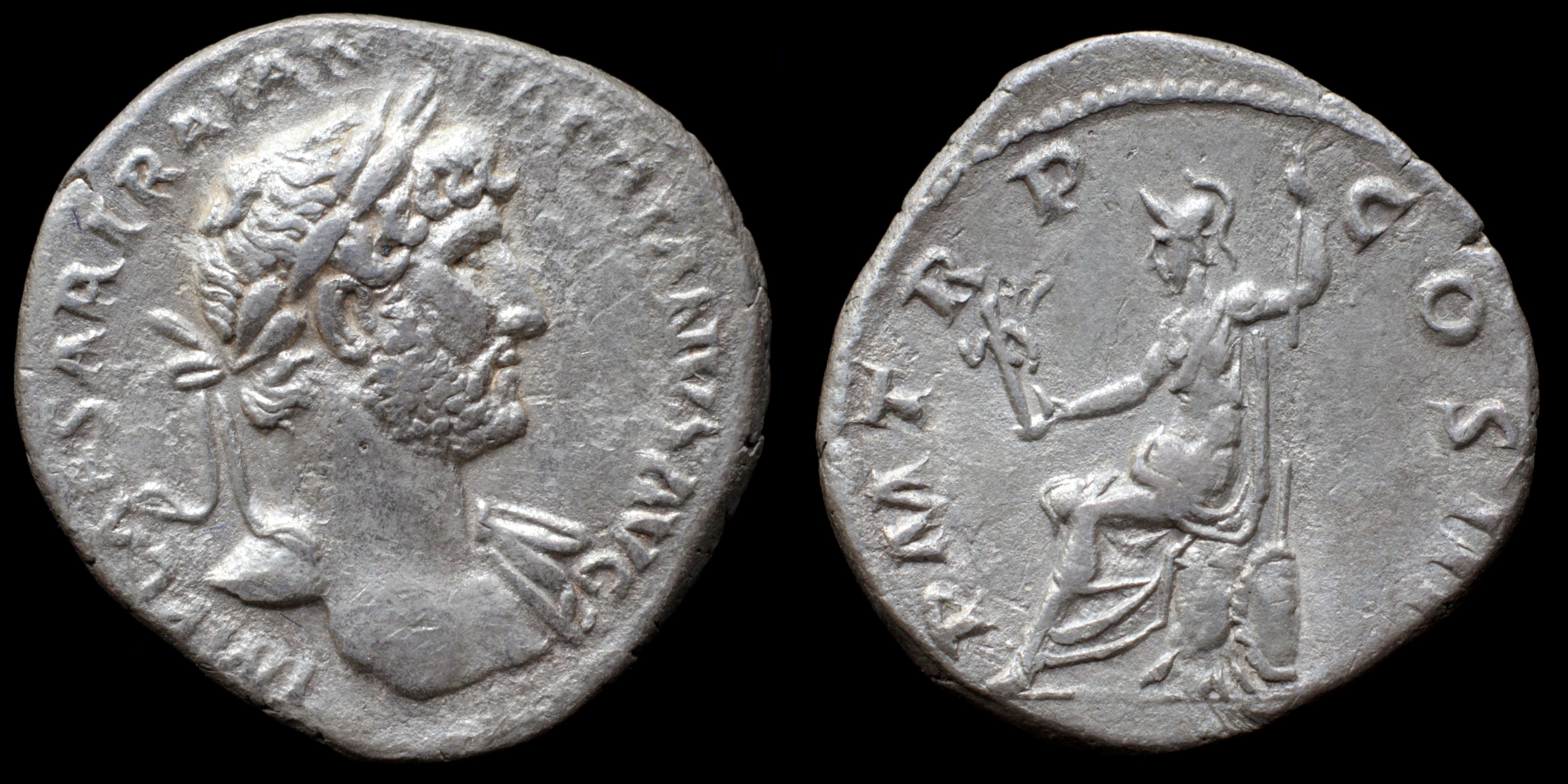
Reverse: Roma seated left, holding Victory and scepter, shield on the ground; P M TR P__COS III
Die Orientation: -
Weight: 3.14 g
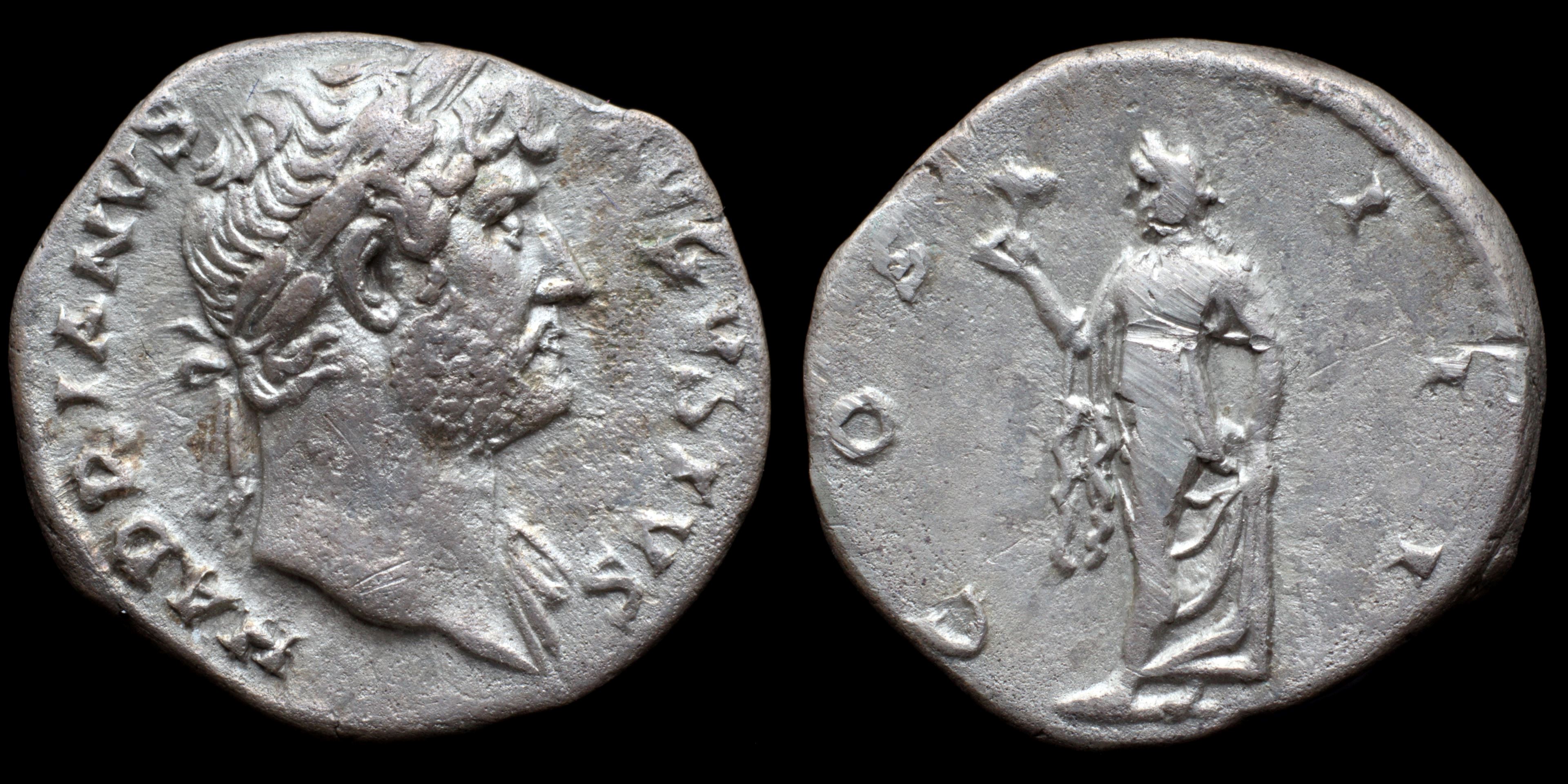
Reverse: Spes walking left, holding flower, raising skirt; COS__III
Die Orientation: -
Weight: 3.28 g
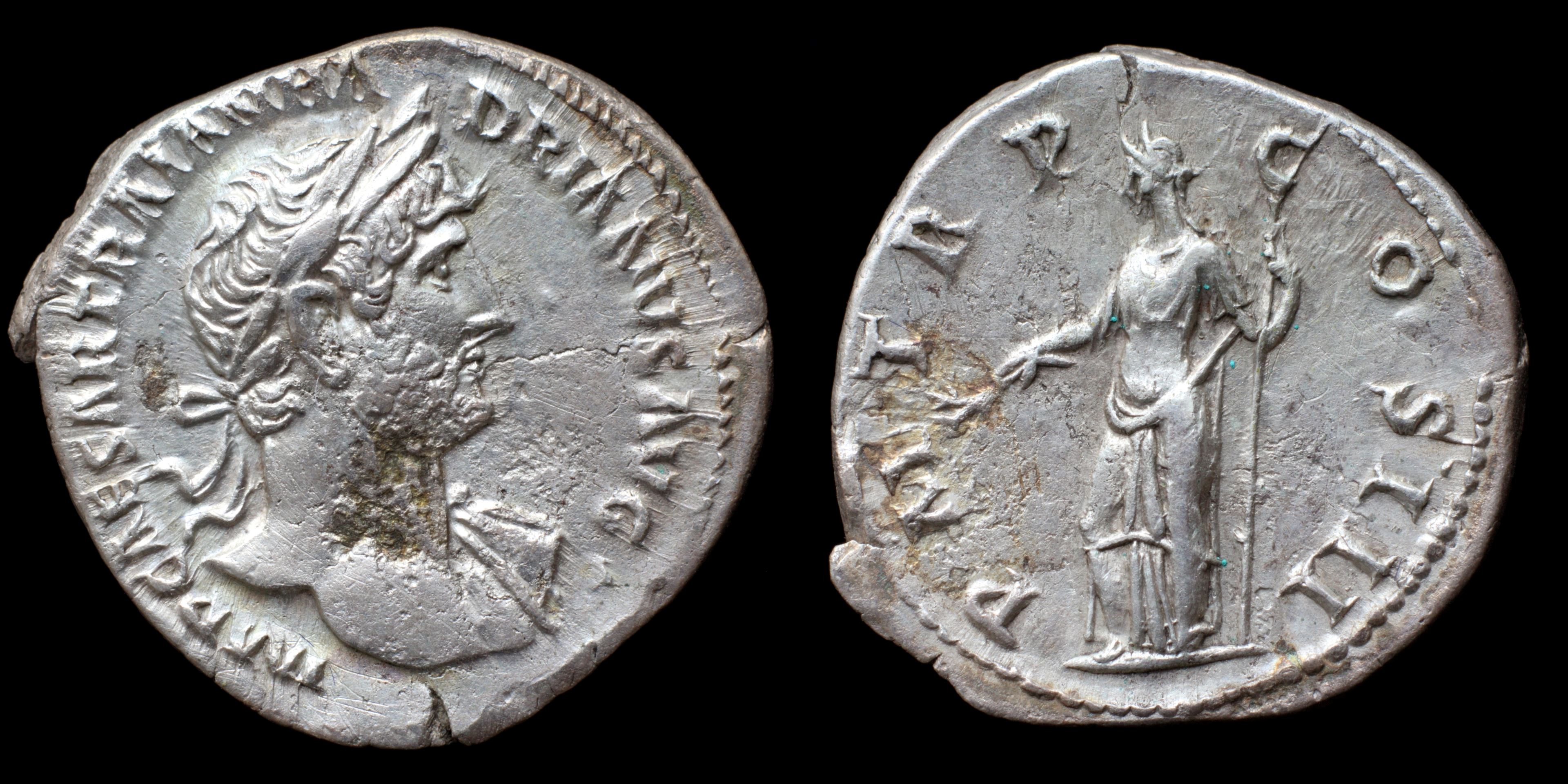
Reverse: Pax holding scepter and branch; P M TR P__COS III
Die Orientation: -
Weight: 2.74 g
.jpg)
Reverse: MAR - TI / Mars helmeted and in military dress standing l., holding spear and resting on shield.
Die Orientation: -
Weight: 2.73 g
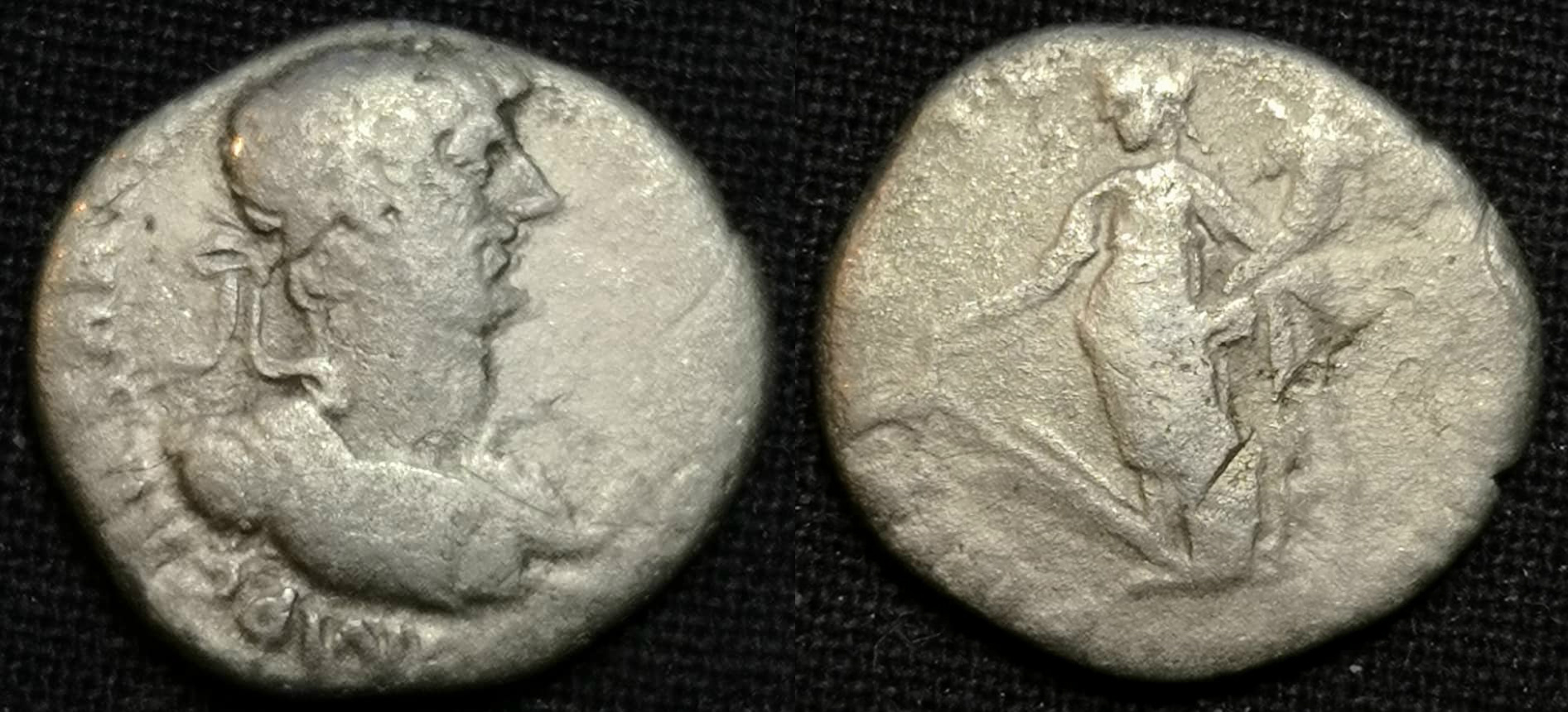
Reverse: P M TR P COS III
Die Orientation: -
Weight: 2.05 g
(22).JPG)
Reverse: AFRICA, Africa reclining left, holding scorpion and cornucopiae, basket of grain at feet
Die Orientation: 12 H
Weight: 3.35 g
(4).jpg)
Reverse: P M TR P COS III, Hadrian seated left on platform, writing at desk with pen; behind him attendant standing left, in the background stands statue of Liberalitas holding up coin scoop, to left citizen ascends front steps of platform, holding up fold of toga
Die Orientation: 6 H
Weight: 3.09 g
A rare reverse variant showing four rather than just two participants in the distribution: only one specimen in Reka Devnia hoard. Purchased from Den Of Antiquity on 25/01/2016.
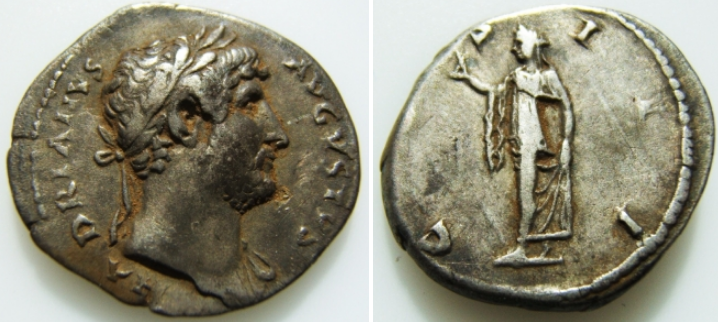
Reverse: COS III - Spes advancing left, holding flower and raising the hem of her skirt.
Die Orientation: 7 H
Weight: 3.12 g
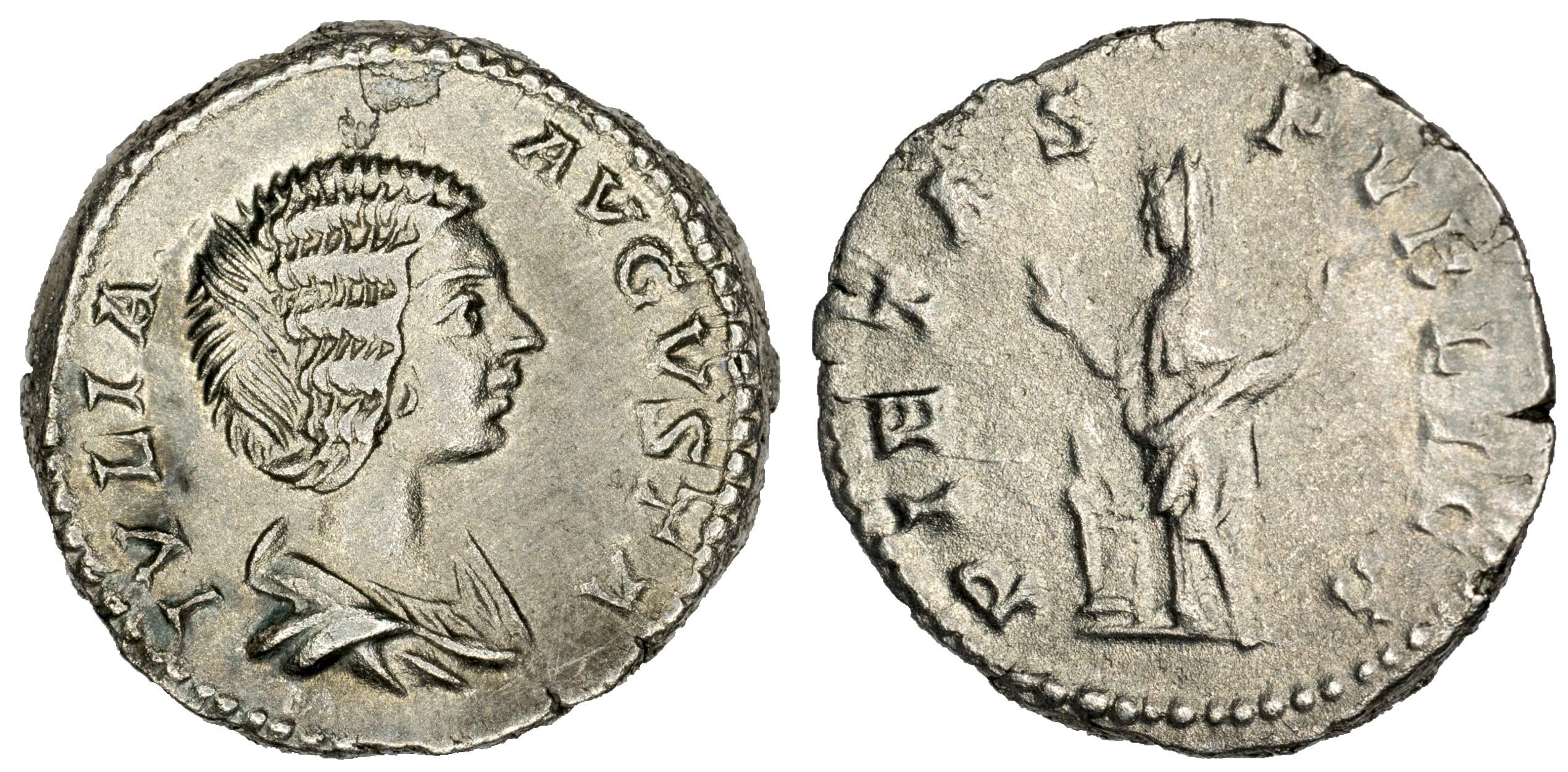
Reverse: PIETAS PVBLICA, Pietas standing left, holding box over altar
Die Orientation: 0 H
Weight: 346 g
Empress of Septimius Severus
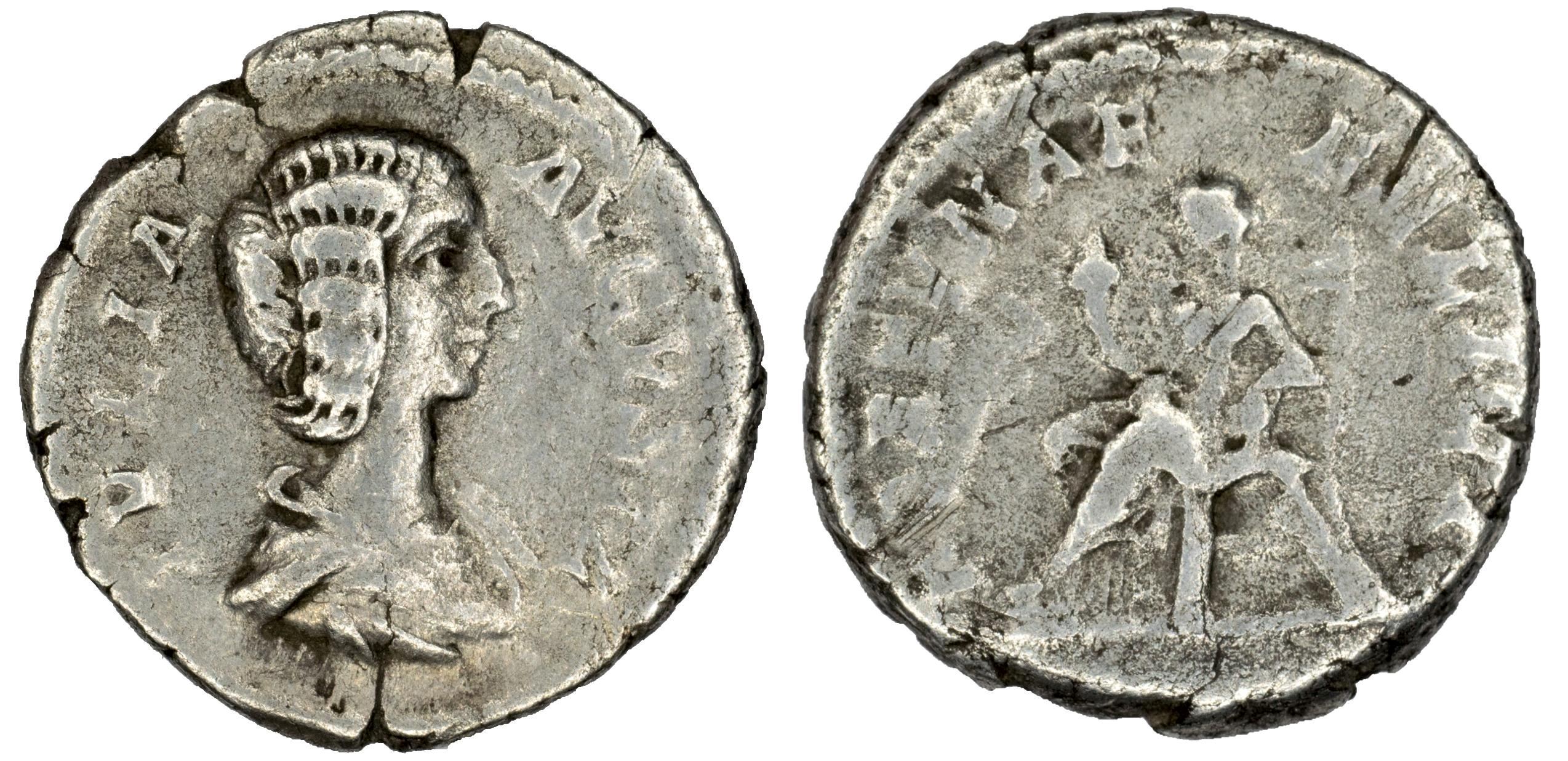
Reverse: FORTUNAE FELICI, Fortuna enthroned, holding cornucopiae and resting on rudder set on globe
Die Orientation: 0 H
Weight: 29 g
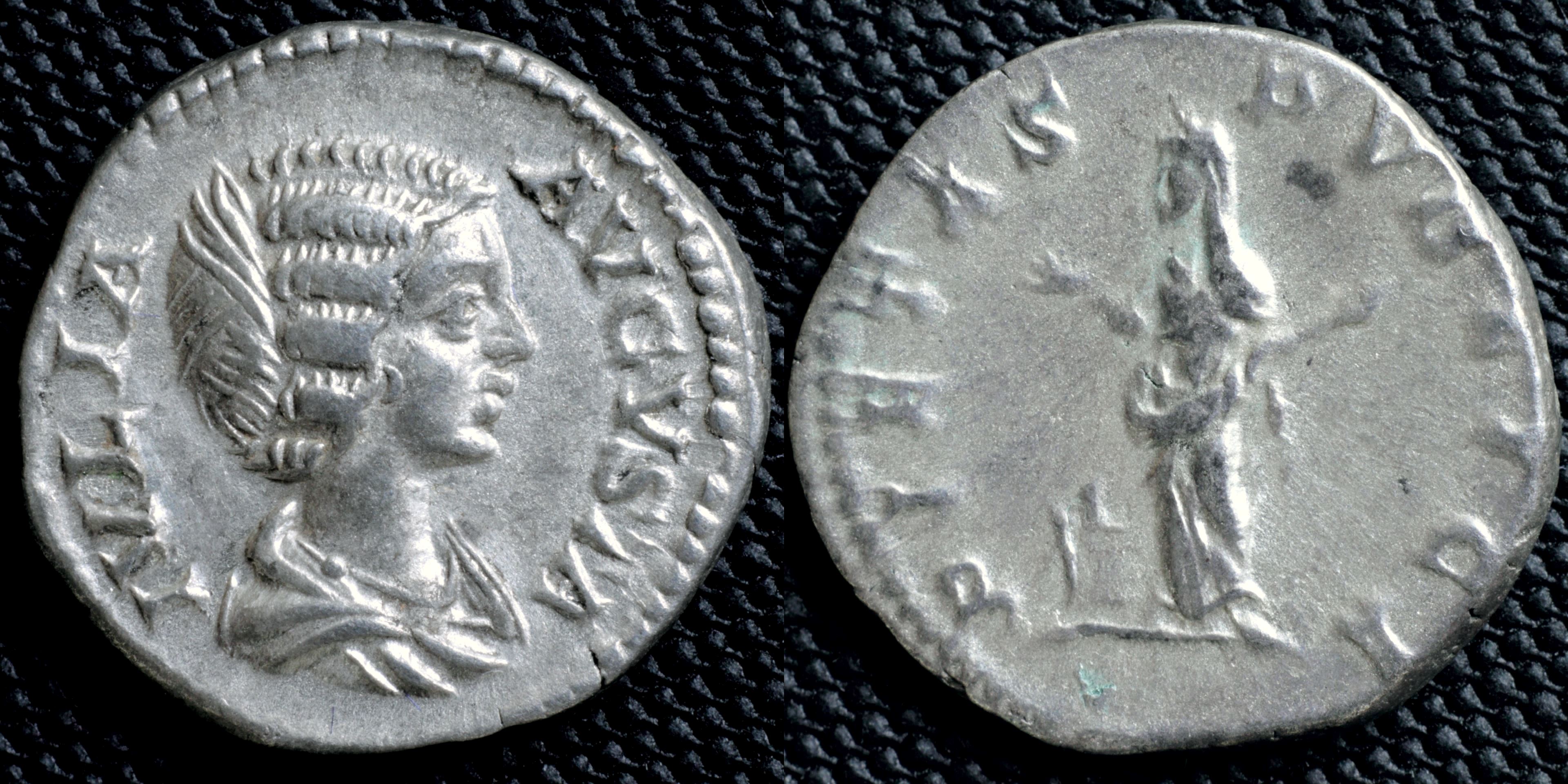
Reverse: Pietas standing left, raising both hands, altar to left; PIETAS__PVBLICA
Die Orientation: -
Weight: 2.42 g
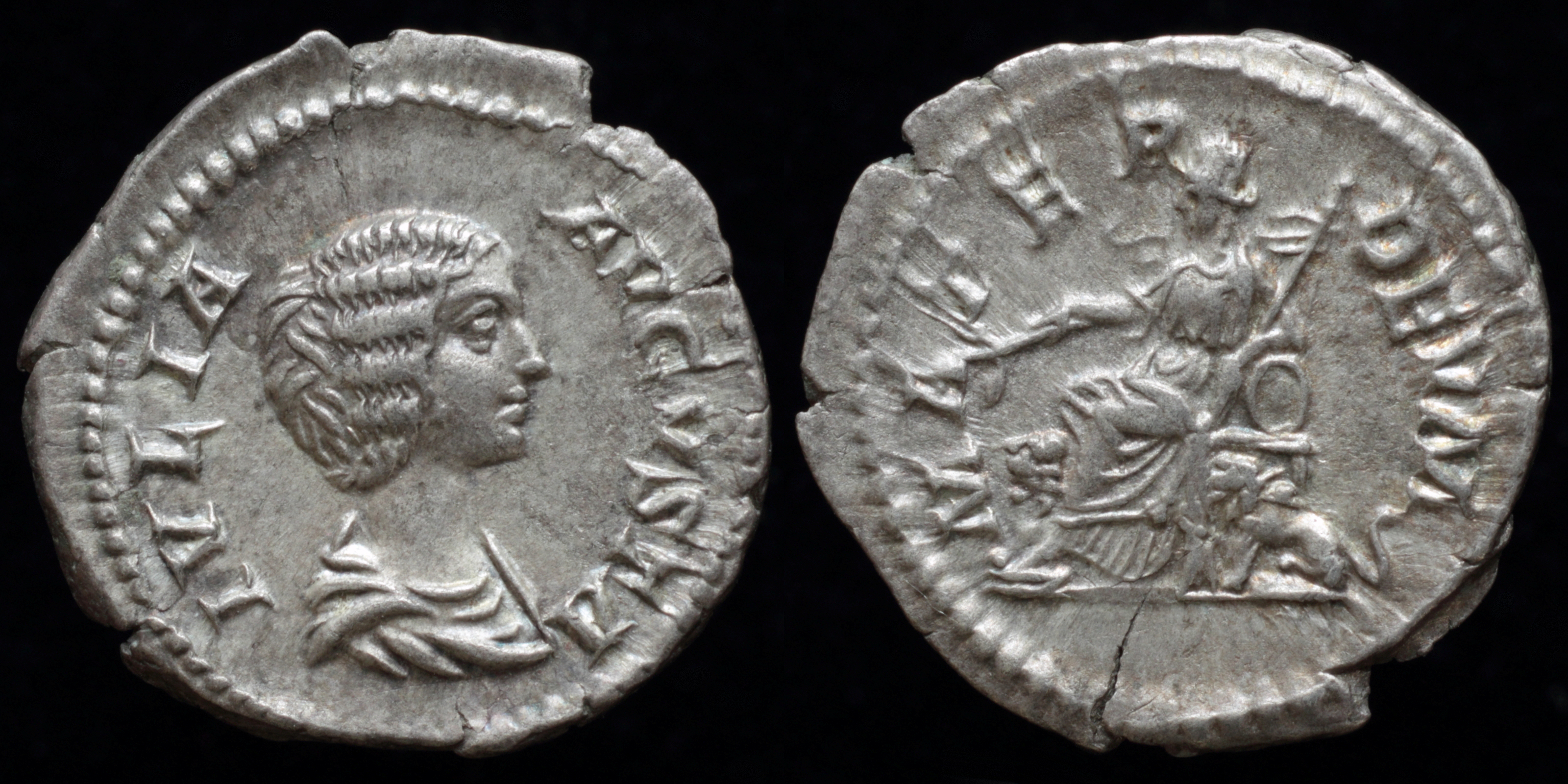
Reverse: Cybele seated left between two lions, wearing towered crown, resting left arm on drum, holding branch and scepter; MATER__DEVM
Die Orientation: -
Weight: 2.7 g
(23).JPG)
Reverse: VENERI VICTR, Venus, seen from behind standing right, leaning on column, half nude with drapery hanging low beneath her posterior, holding palm branch and apple
Die Orientation: 12 H
Weight: 2.03 g
.jpg)
Reverse: LVNA LVCIFERA, Luna, with fold of drapery floating around and above her, driving biga to left
Die Orientation: 1 H
Weight: 2.84 g
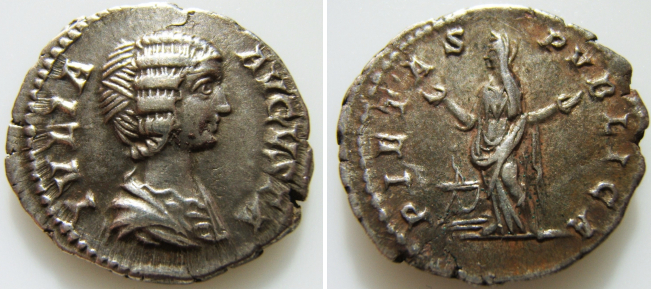
Reverse: IVNONI SISPITAE TR P II IMP II COS P P / S-C - Juno Sospita, in a goat's skin helmet, brandishing a javelin and holding a shield, while walking on a serpent. S-C across fields.
Die Orientation: 6 H
Weight: 3.26 g
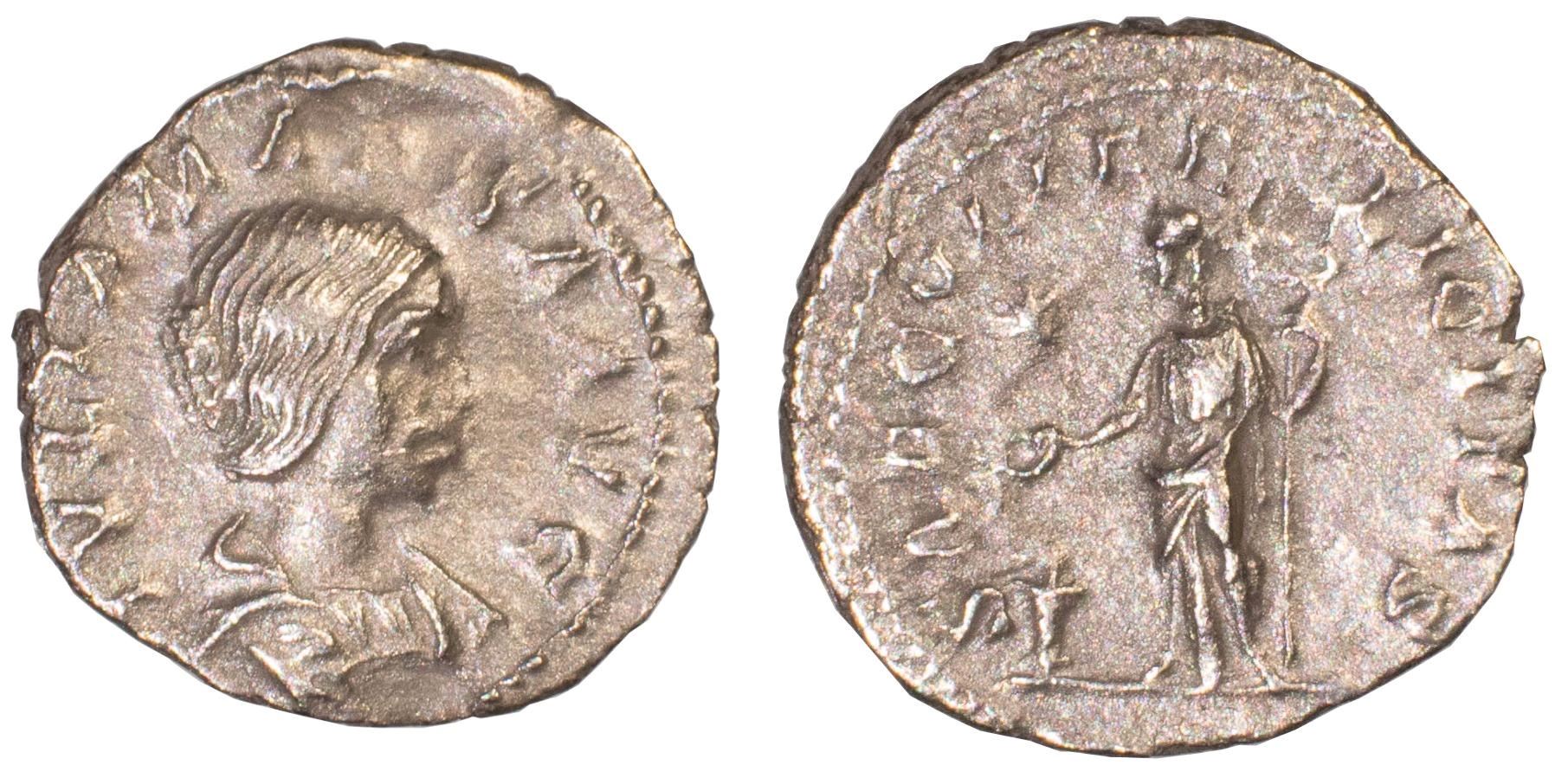
Reverse: SAECVLI FELICITAS, Felicitas standing left, sacrificing out of a patera over a lit altar and holding a caduceus, star ini left field
Die Orientation: 0 H
Weight: 245 g
(1).jpg)
Reverse: SAECVLI FELICITAS, Felicitas standing left, sacrificing over lighted altar and holding long caduceus, star in right field
Die Orientation: 6 H
Weight: 3.05 g
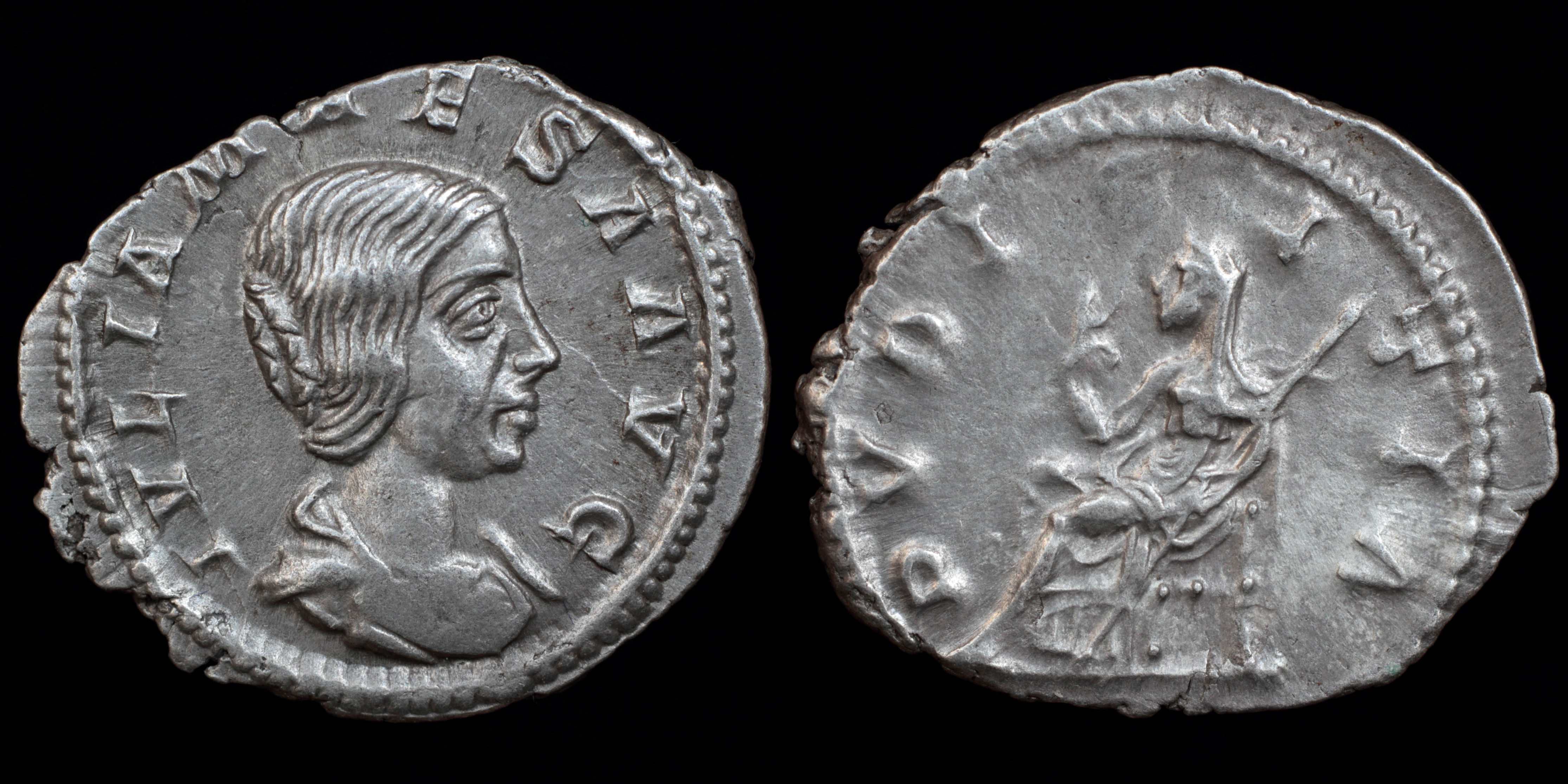
Reverse: Pudicitia seated left, pulling veil and holding scepter; PVDICITIA
Die Orientation: -
Weight: 2.6 g
(52).jpg)
Reverse: FECVNDITAS AVG, Fecunditas standing left, extending her hand over a child and holding cornucopiae
Die Orientation: 6 H
Weight: 2.77 g
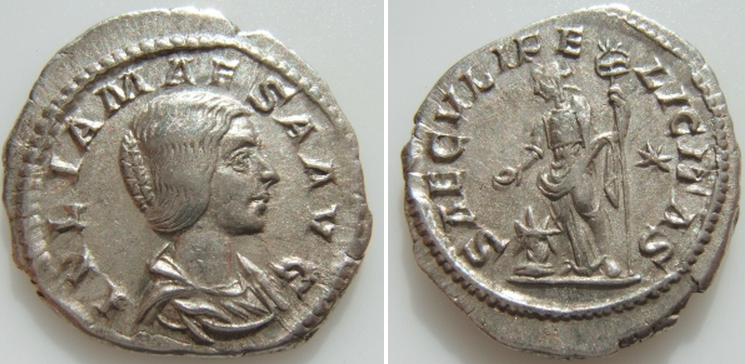
Reverse: SAECVLI FELICITAS - Felicitas standing left with long caduceus, sacrificing out of patera over lighted altar, * right.
Die Orientation: 6 H
Weight: 2.68 g
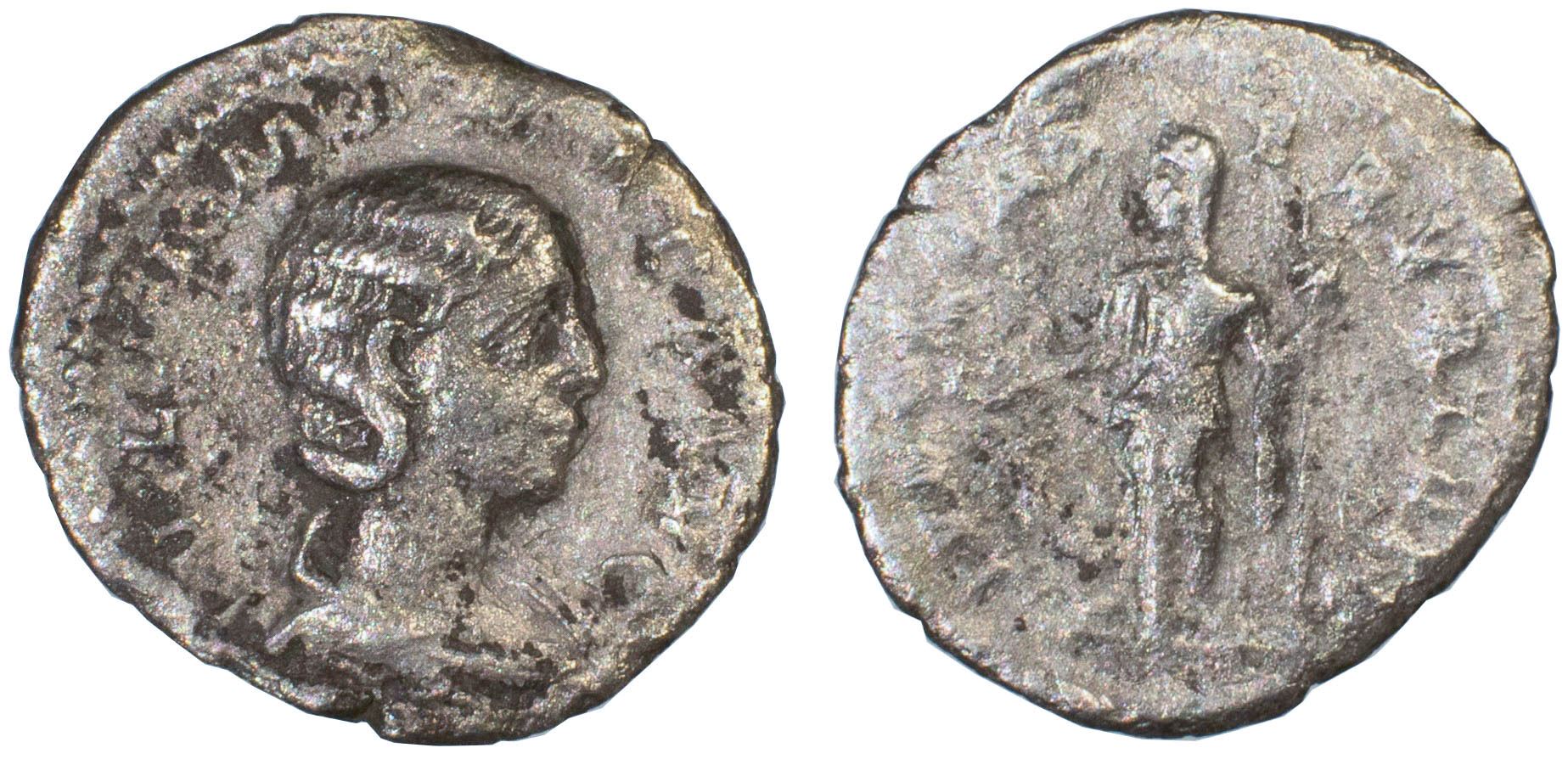
Reverse: IVNO CONSERVATRIX, Juno standing left with patera and sceptre, peacock at feet left
Die Orientation: 0 H
Weight: 221 g
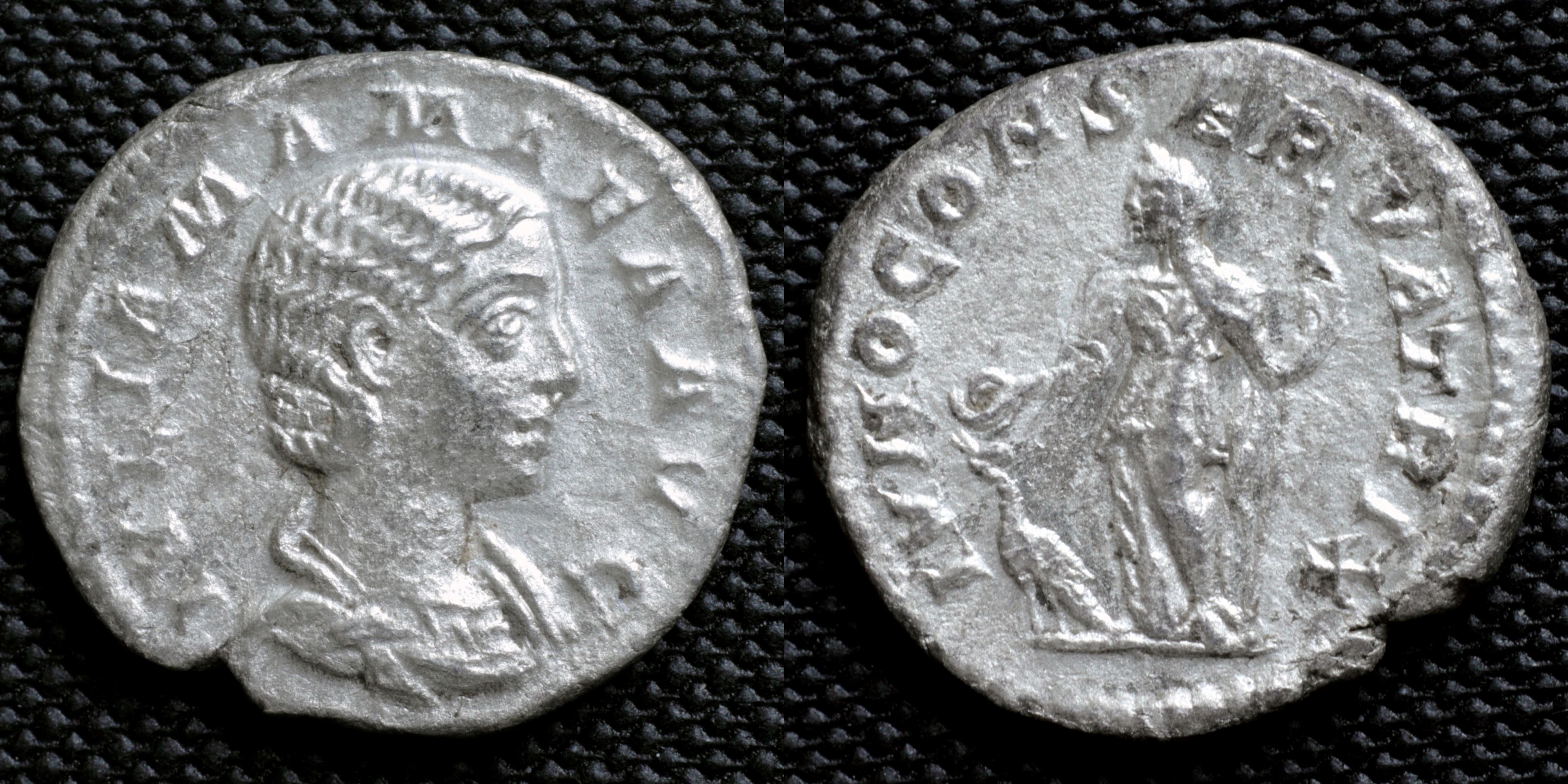
Reverse: Juno standing left, holding patera and scepter, peacock at feet left; IVNO CONSERVATRIX
Die Orientation: -
Weight: 2.68 g
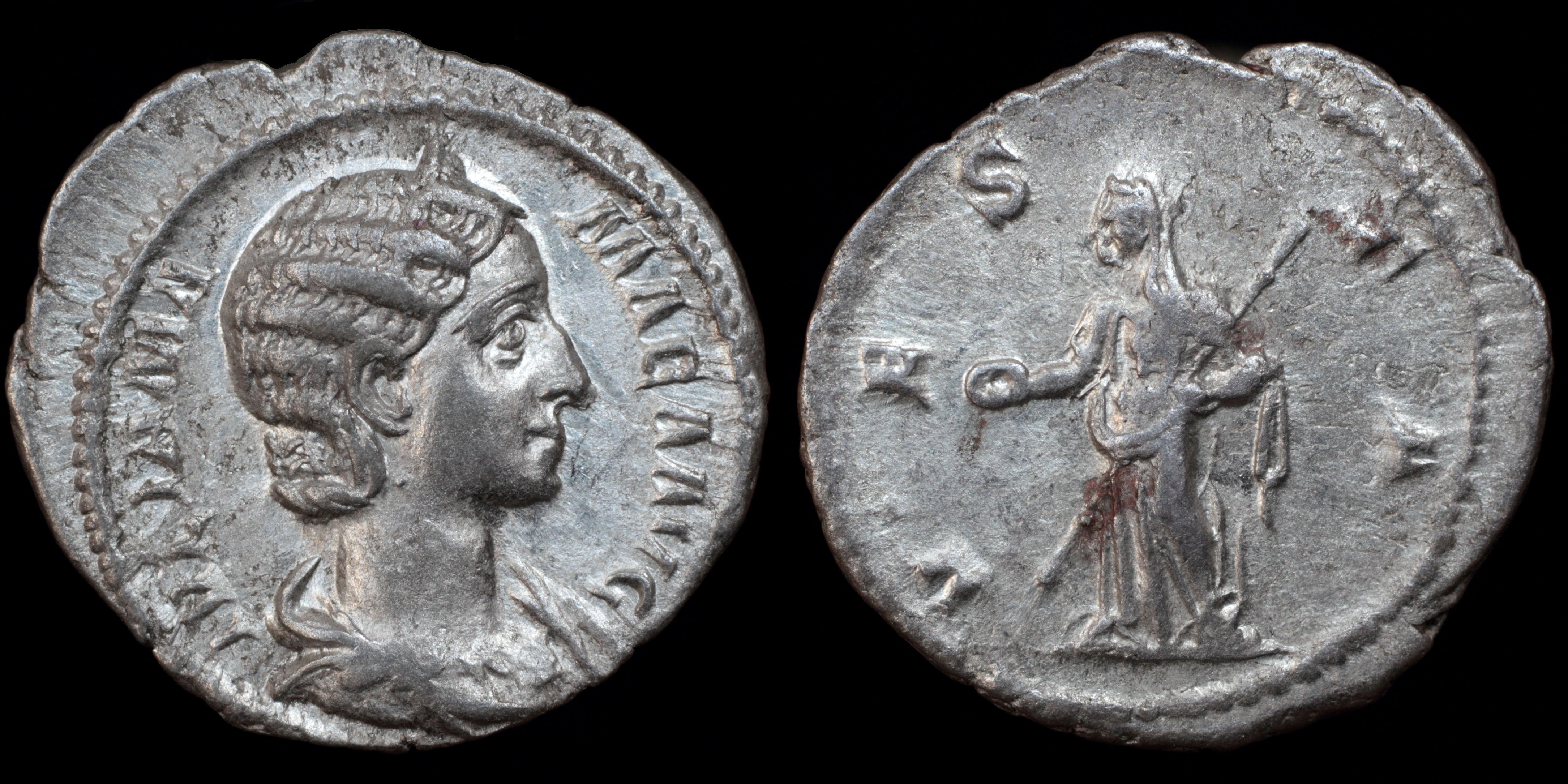
Reverse: Vesta standing left holding patera and scepter; VES_TA
Die Orientation: -
Weight: 2.9 g
(0).jpg)
Reverse: IVNO CONSERVATRIX, diademed and veiled figure of Juno standing left, holding patera and sceptre; at her feet, peacock
Die Orientation: 12 H
Weight: 2.79 g
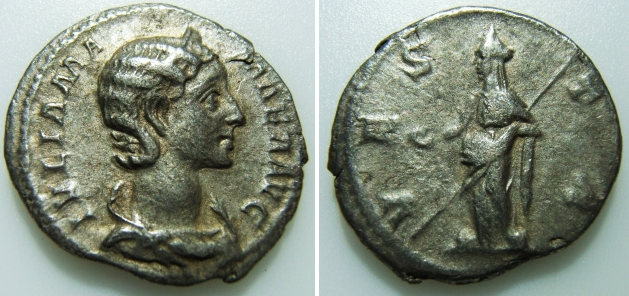
Reverse: VESTA - Vesta standing left holding patera and transverse sceptre.
Die Orientation: 12 H
Weight: 2.77 g
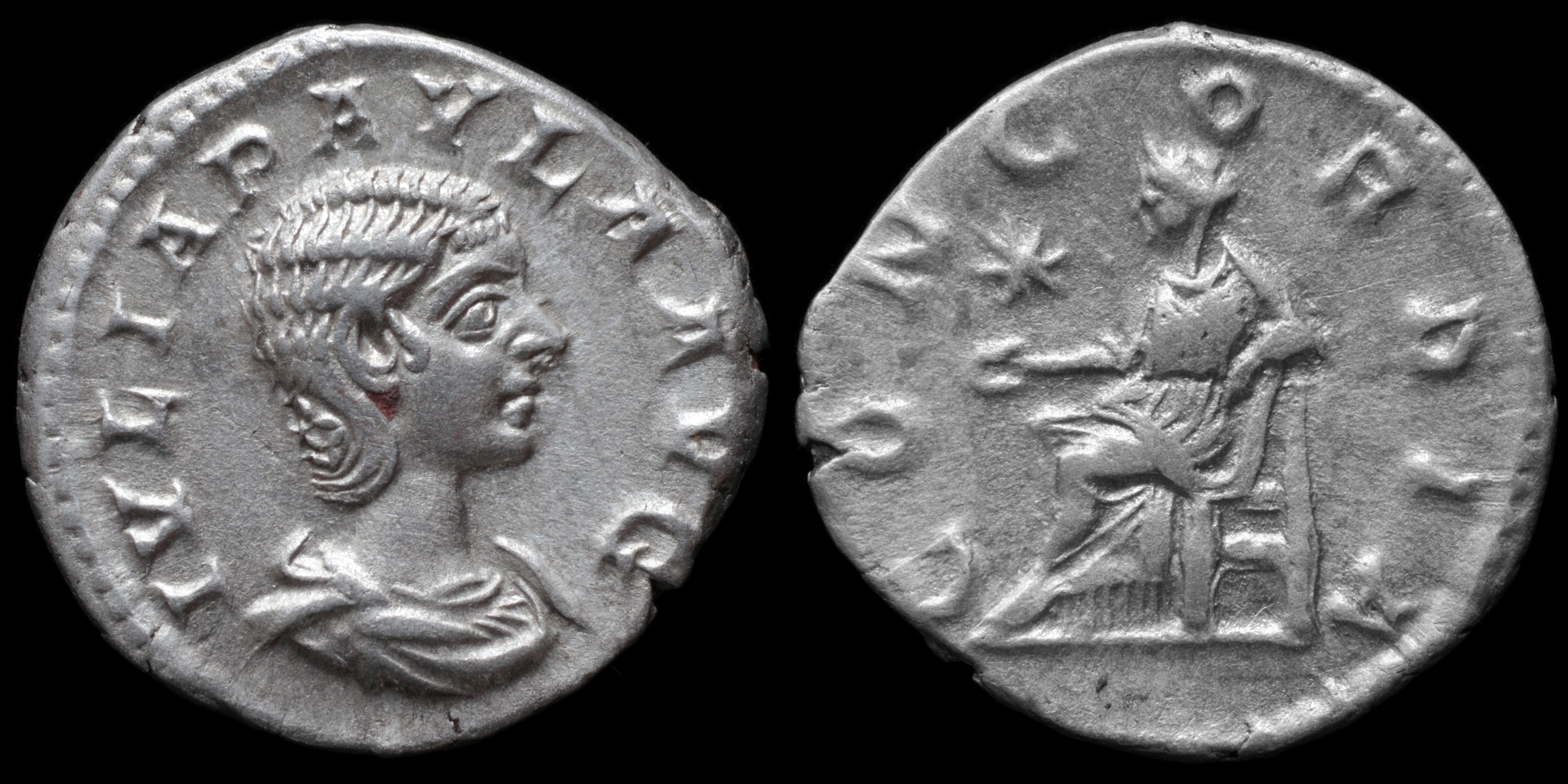
Reverse: Concordia seated left, holding patera; star to left; CONCORDIA
Die Orientation: -
Weight: 3.1 g
(51).jpg)
Reverse: CONCORDIA, Concordia seated left, holding patera in her extended right hand, resting left arm on armrest; star in left field
Die Orientation: 12 H
Weight: 3.32 g
.jpg)
Reverse: Venus seated left, holding scepter, extending her hand to Cupid standing before her; VENVS CAELESTIS
Die Orientation: -
Weight: 3.3 g
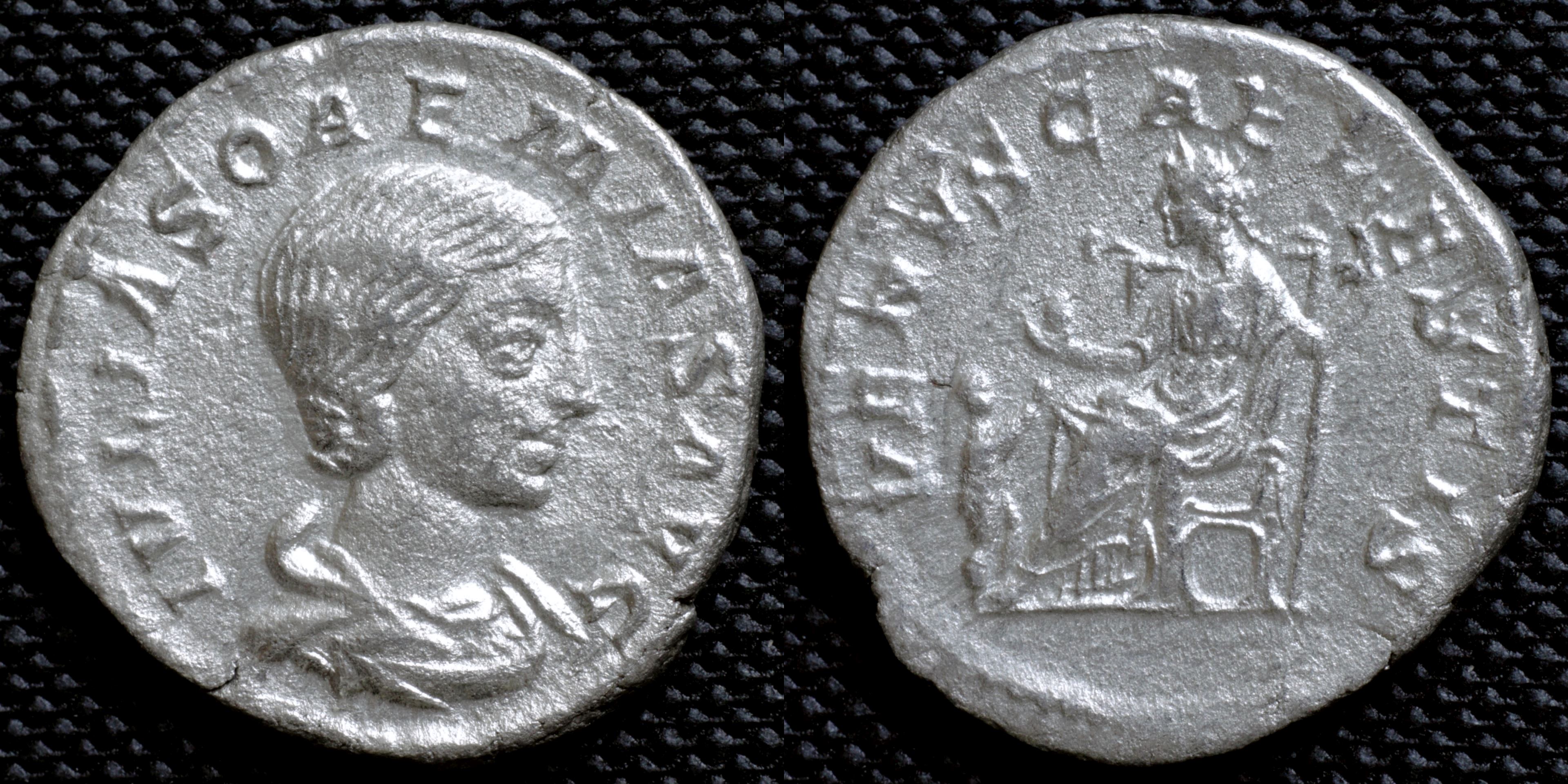
Reverse: Venus seated left, holding scepter, extending her hand to Cupid standing before her; VENVS CAELESTIS
Die Orientation: -
Weight: 2.87 g
_4(0).jpg)
Reverse: Emblems of the pontificate: simpulum, aspergillum, securis (surmounted by wolf's head), and apex
Die Orientation: 10 H
Weight: 4.12 g
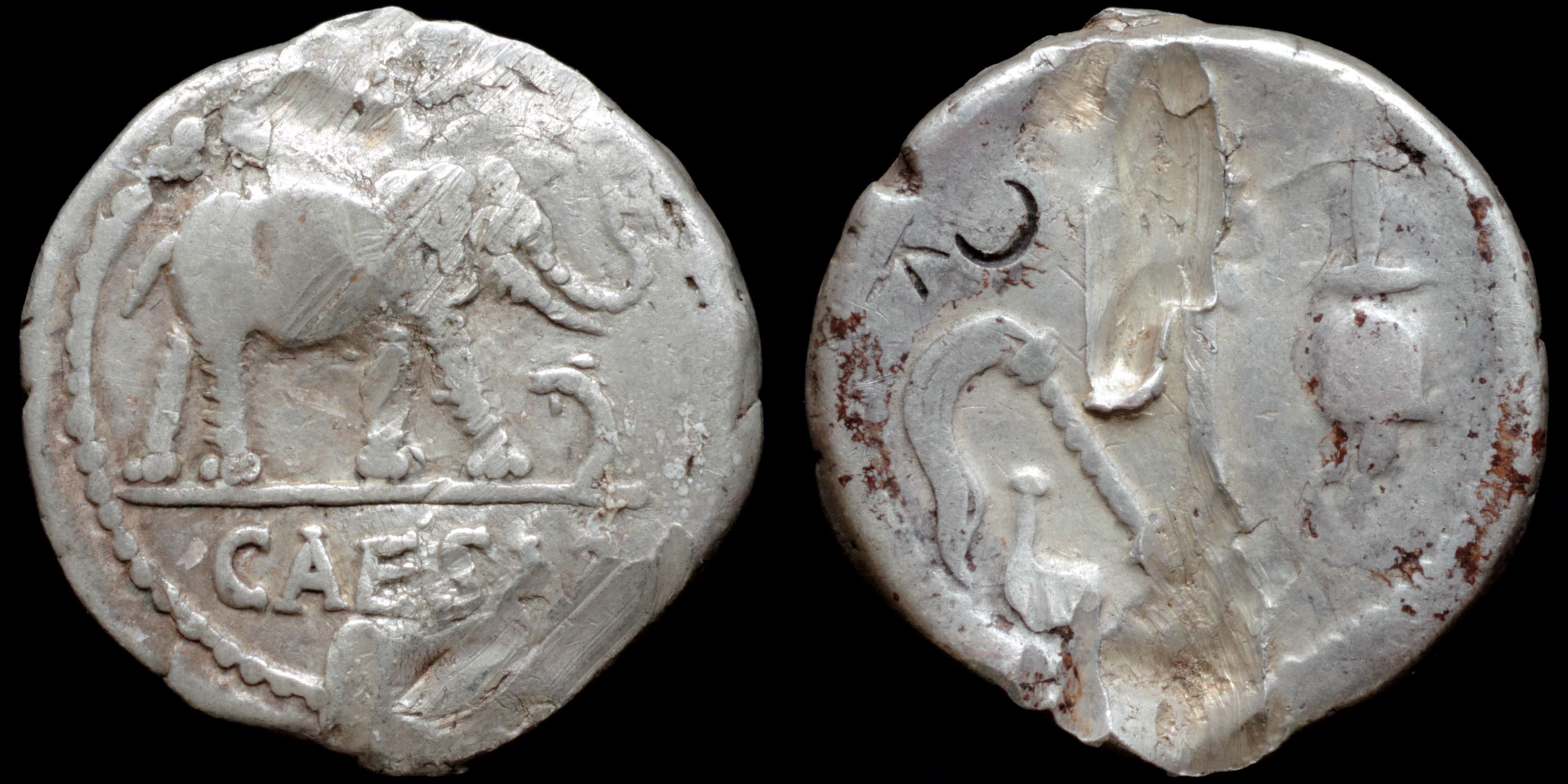
Reverse: sacrificial implements - simpulum (laddle), sprinkler, axe, apex (priest's hat)
Die Orientation: -
Weight: 4 g
moving mint (Cisalpine Gaul or Hispania). Oldschool interpretation of iconography is that elephant symbolize powerful Caesar and snake his enemies but this view must be revised. According to Harlan the Caesar's issue is reaction to the Acilius' with Salus holding snake which was in fact struck in 50 BC. Salus with snake represent health of the Republic. "Dio Cassius made it clear that the most vehement enemy of Caesar in the Senate debates of 50 was Quintus Caecilius Metellus Pius Scipio who put forward the motion that Caesar be declared a public enemy if he did not disband his troops. Caesar said that the Senate was intimated by threats from Pompey’s friends and reluctantly adopted Scipio’s proposal. Caesar put much of the blame for the civil war on Scipio who had become Pompey’s father-in-law in 52 and had shared the consulship with Pompey that year. Recounting the reasons for the civil war, Caesar was careful to avoid blaming Pompey directly and he claimed that Pompey had been led astray and corrupted (depravatum) by Caesar’s enemies who were jealous of his glory, while he himself had always promoted Pompey’s honor and dignity. …….. With a very clever, yet simple, turn on the Pompeian propaganda of Acilius’ coin, the snake has been taken from the hands of Valetudo and trampled by the Metellan elephant. Caesar showed Rome that Metellus Scipio and his supporters were the true threat to the health and safety of the Republic, the true cause of the civil war." Sacrificial implements reminds Caesar as Pontifex Maximus.
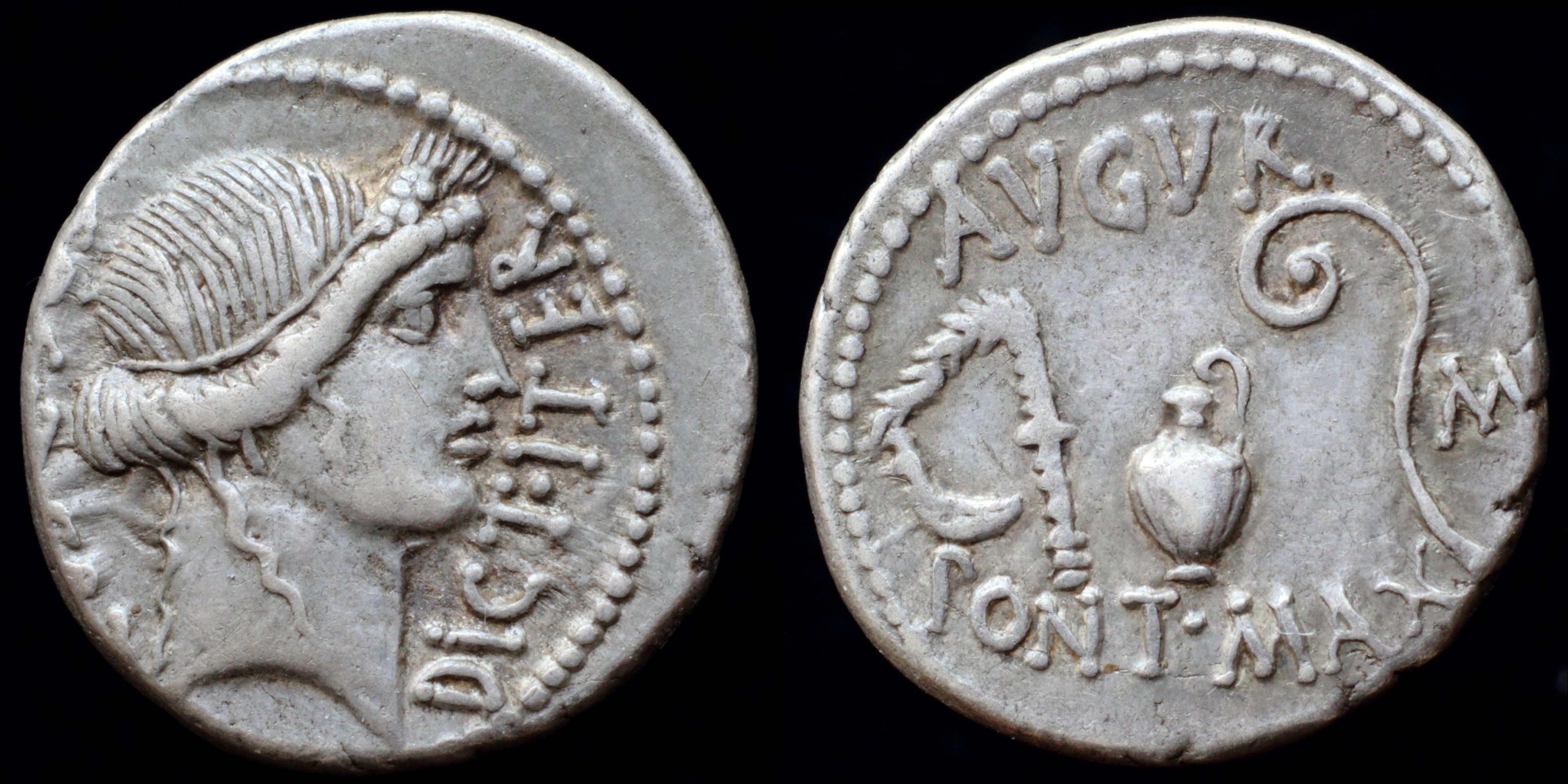
Reverse: sacrificial implements: simpulum, aspergillum, capis (jug), lituus, AVGVR / PONT·MAX / M
Die Orientation: -
Weight: 3.7 g
moving mint (Africa or Sicily). Ceres symbolizes Africa as granary of Rome. M on reverse means munus - payment for soldier's service. These coins probably served to pay Caesar's veterans after battle of Thapsus.

Reverse: Emblems of the pontificate: simpulum, aspergillum, securis (surmounted by wolf's head), and apex.
Die Orientation: 7 H
Weight: 3.82 g
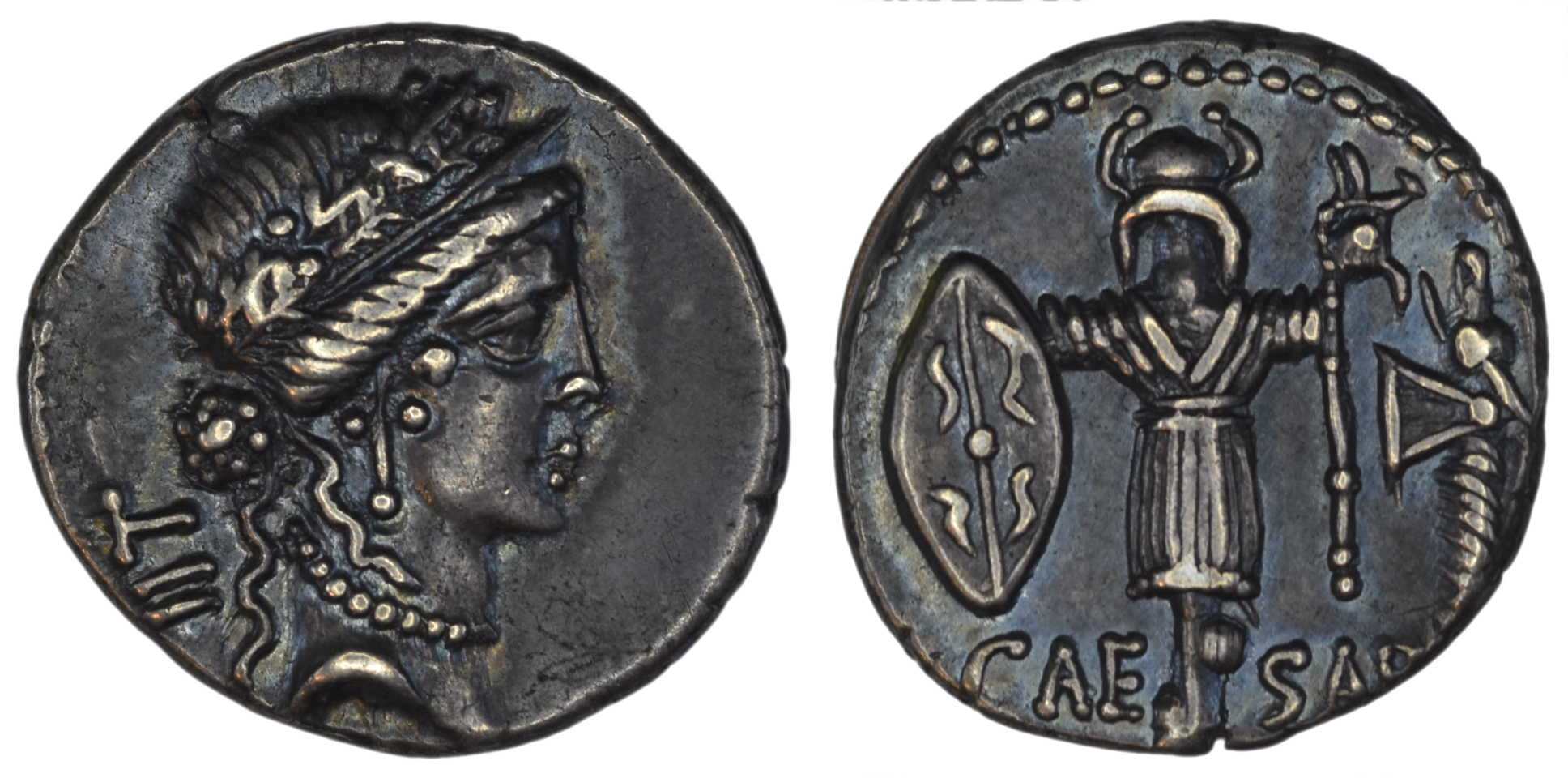
Reverse: Trophy of Gallic arms; axe surmounted by an animal's head to right; CAESAR below
Die Orientation: -
Weight: 3.98 g
.png)
Reverse: Gallic trophy, holding oval shield and carnyx; securis surmounted by wolf’s head to right
Die Orientation: -
Weight: 3.87 g
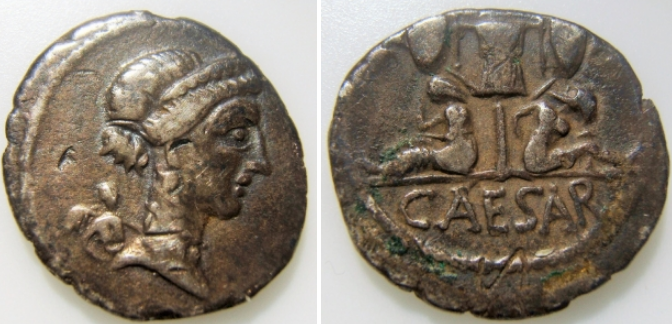
Reverse: CAESAR - Gallia and Gaulish captive seated beneath trophy of Gallic arms.
Die Orientation: 10 H
Weight: 3.46 g
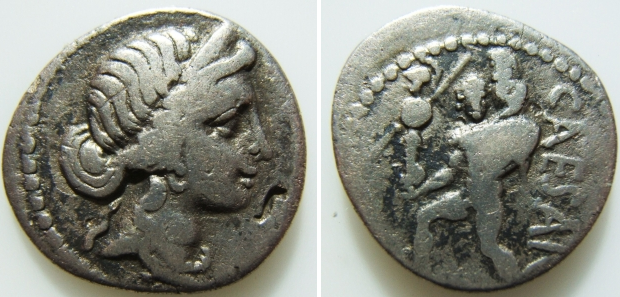
Reverse: CAESAR - Aeneas walking left, carrying Anchises and the Palladium.
Die Orientation: 6 H
Weight: 2.97 g
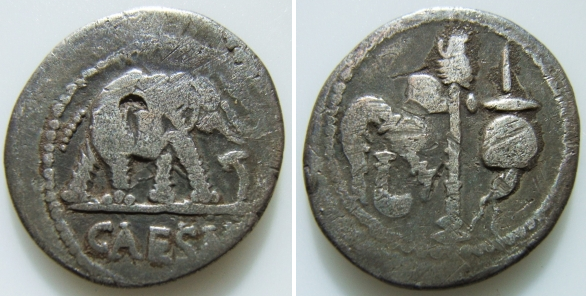
Reverse: Simpulum, sprinkler, axe and priest's hat.
Die Orientation: 3 H
Weight: 3.49 g
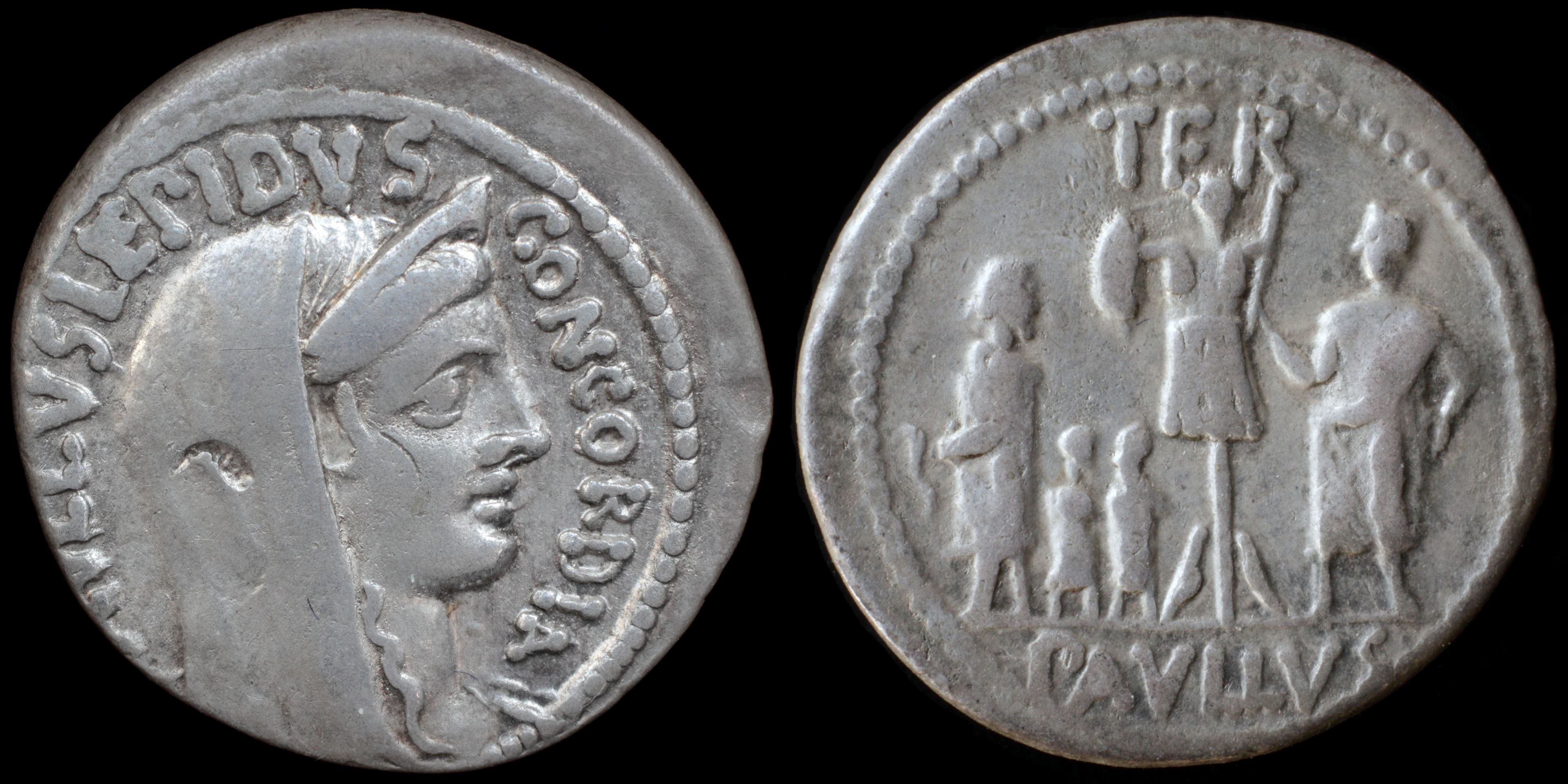
Reverse: L. Aemilius Paullus standing to right of trophy, Perseus and his two sons captive on the left, TER / PAVLLVS
Die Orientation: -
Weight: 3.9 g
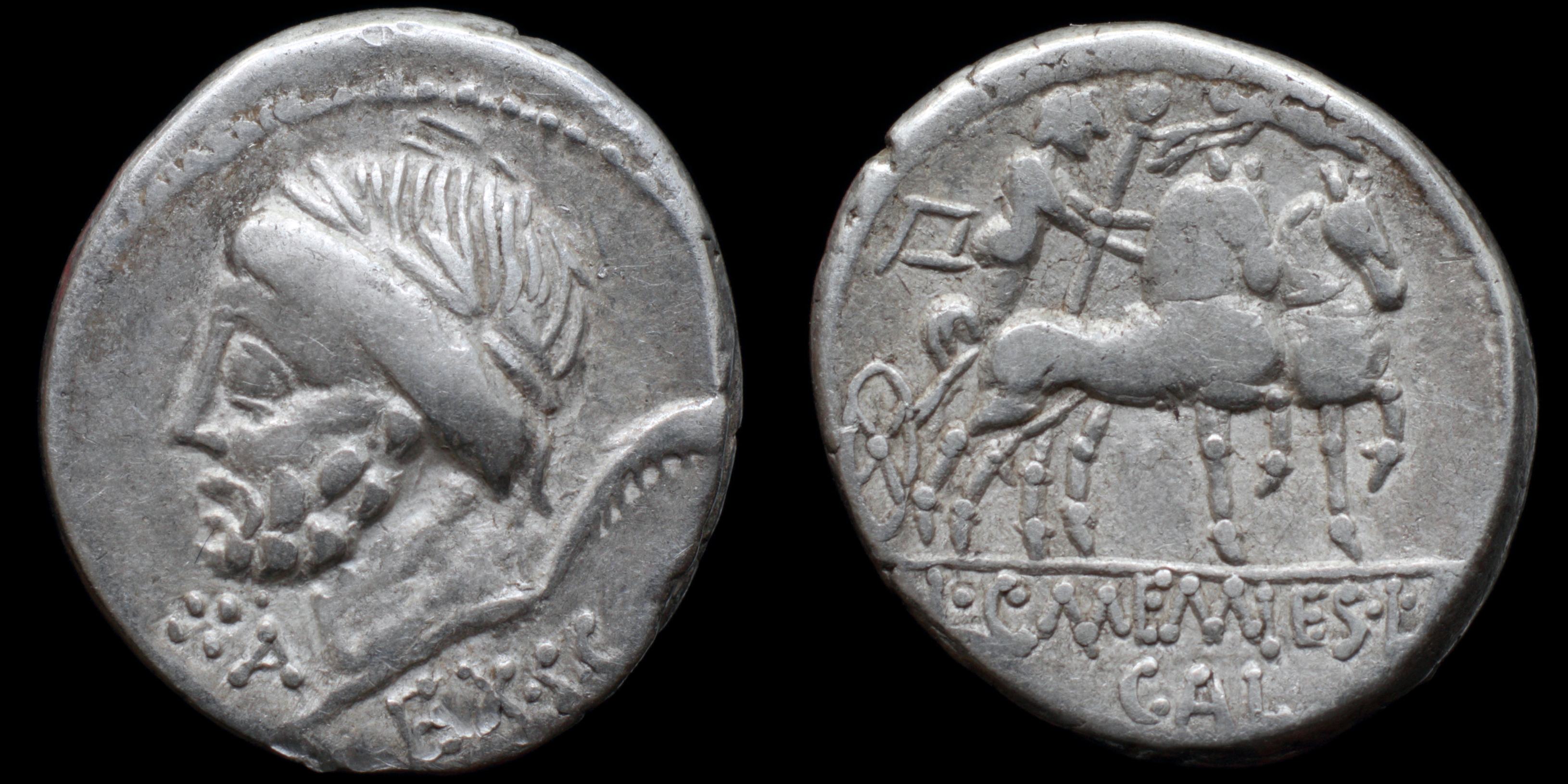
Reverse: Venus in slow biga right, holding staff and reins; above Cupid flying left, holding wreath; L·C·MEMIES·L·F / GAL
Die Orientation: -
Weight: 4 g
(0).jpg)
Reverse: Jupiter in quadriga right, holding reins, thunderbolt and sceptre; L•ANTES below, ROMA in exergue
Die Orientation: 10 H
Weight: 3.93 g
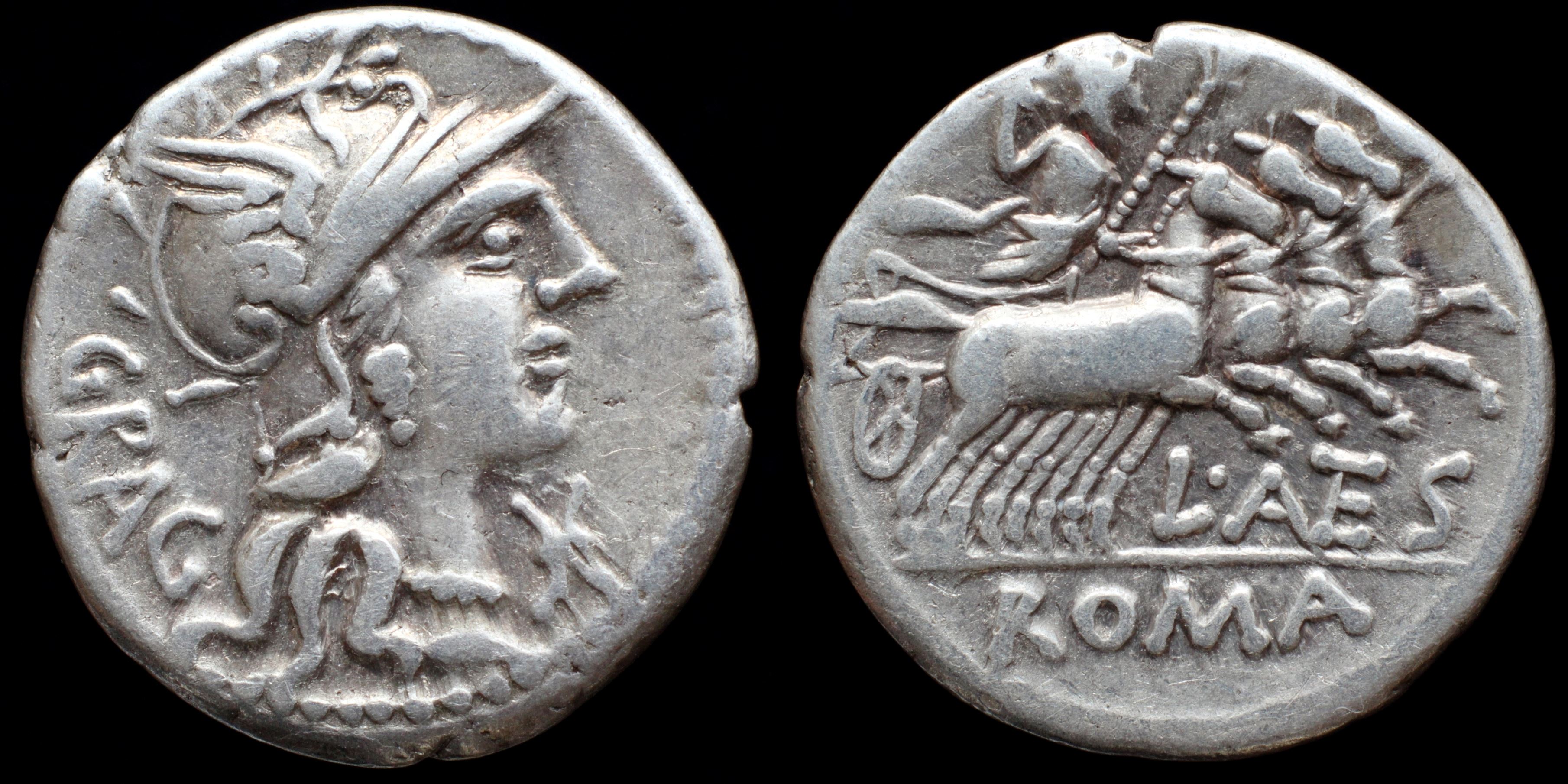
Reverse: Jupiter in quadriga right, horling thunderbolt and holding scepter and reins; L·A(NTE)S / ROMA
Die Orientation: -
Weight: 3.9 g
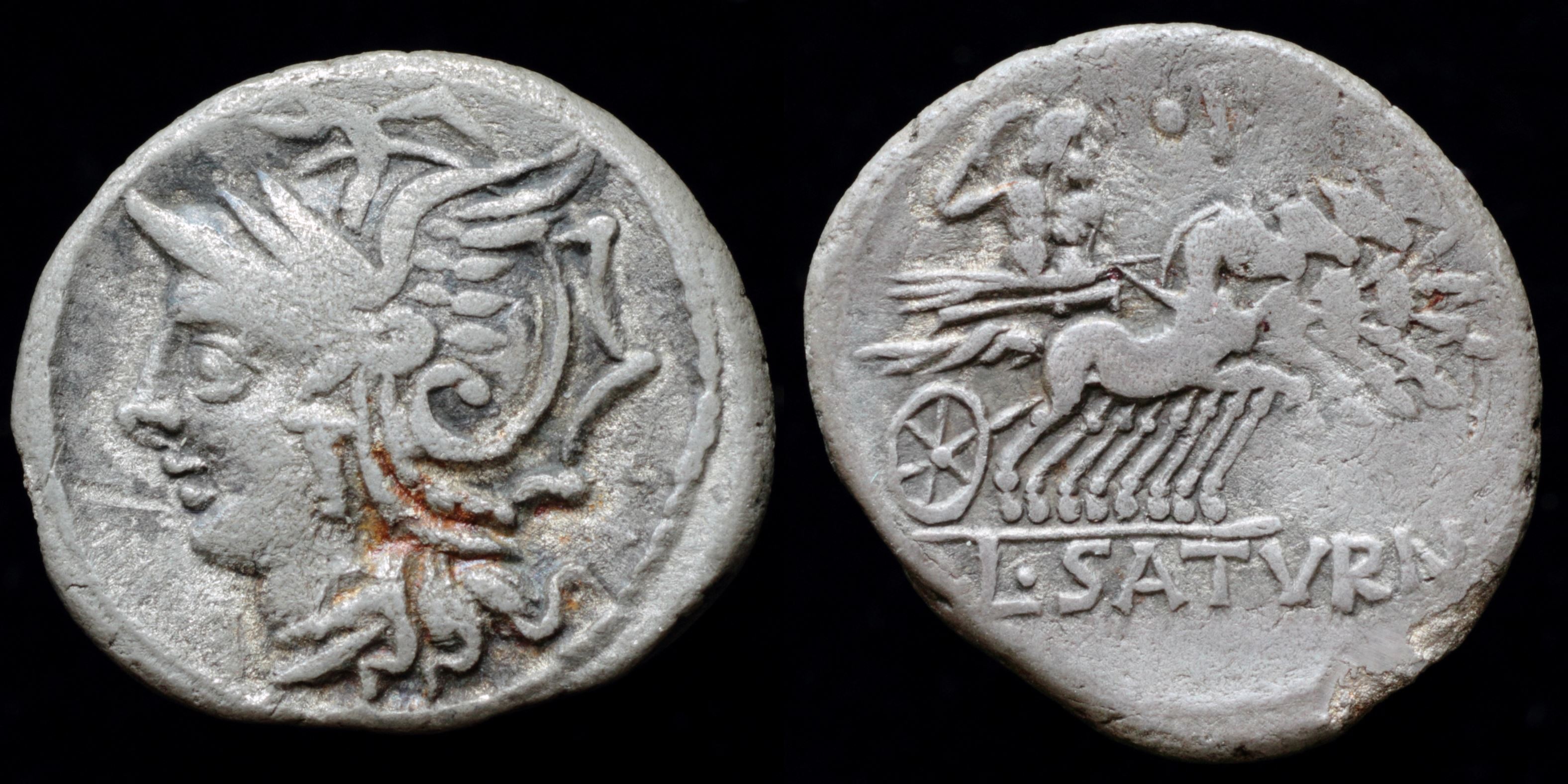
Reverse: Saturn in quadriga right holding harpa and reins, P with dot above* and to the left L·SATVRN
Die Orientation: -
Weight: 3.66 g
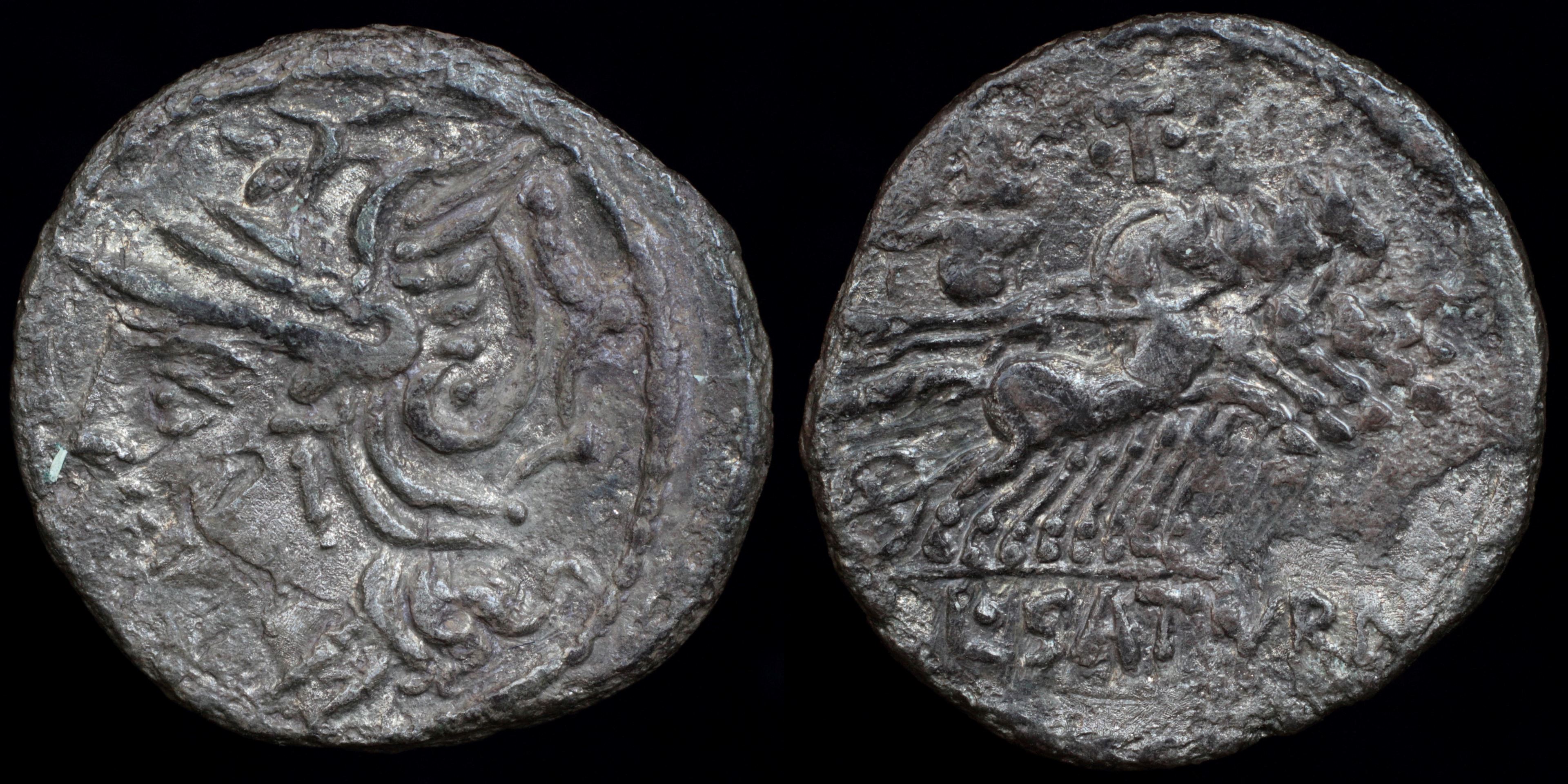
Reverse: Saturn in quadriga right holding harpa and reins ·T· L·SATVRN
Die Orientation: -
Weight: 3.5 g
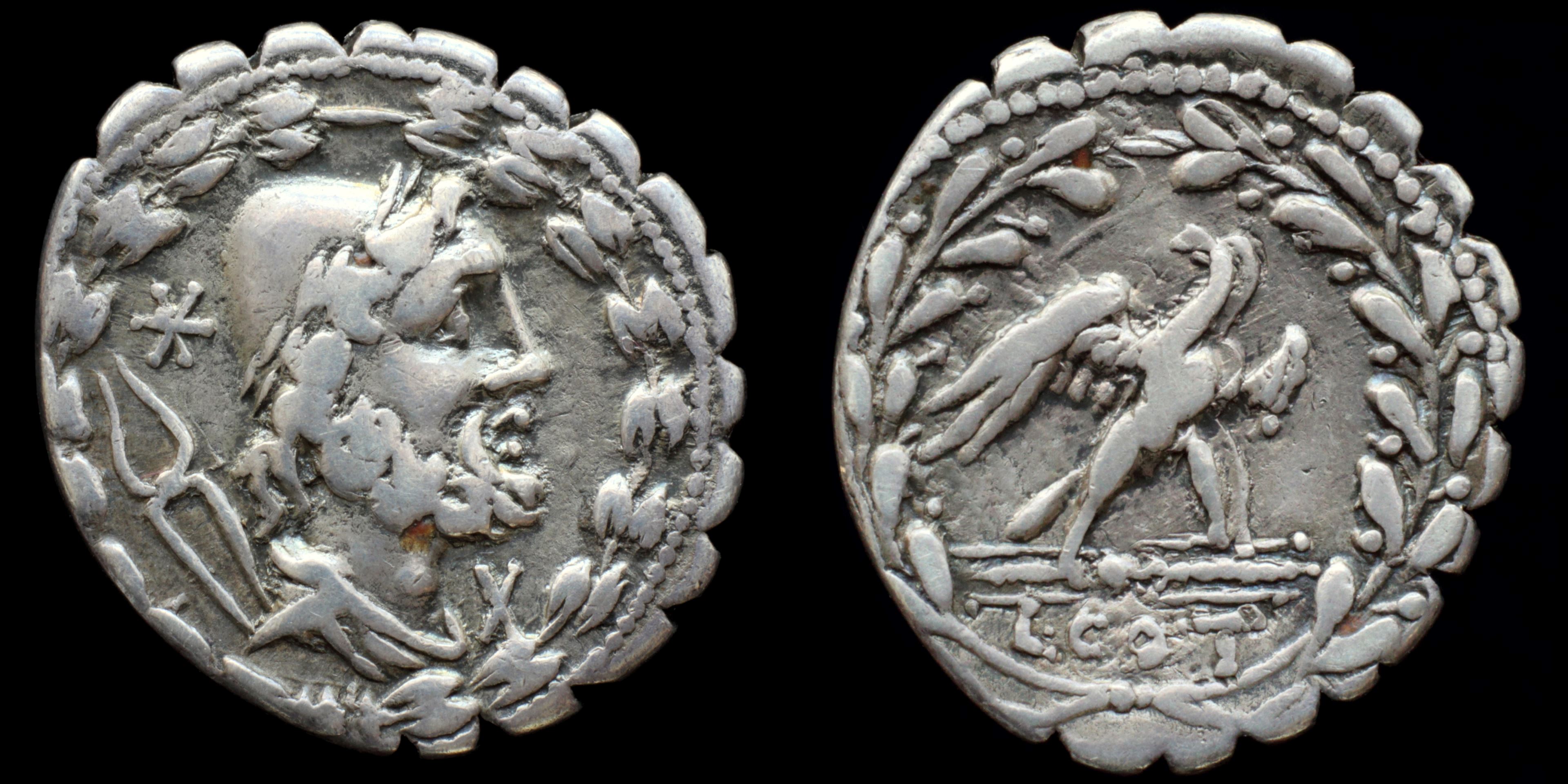
Reverse: eagle on thunderbolt right, head left, all within laurel wreath; L·COT
Die Orientation: -
Weight: 3.4 g
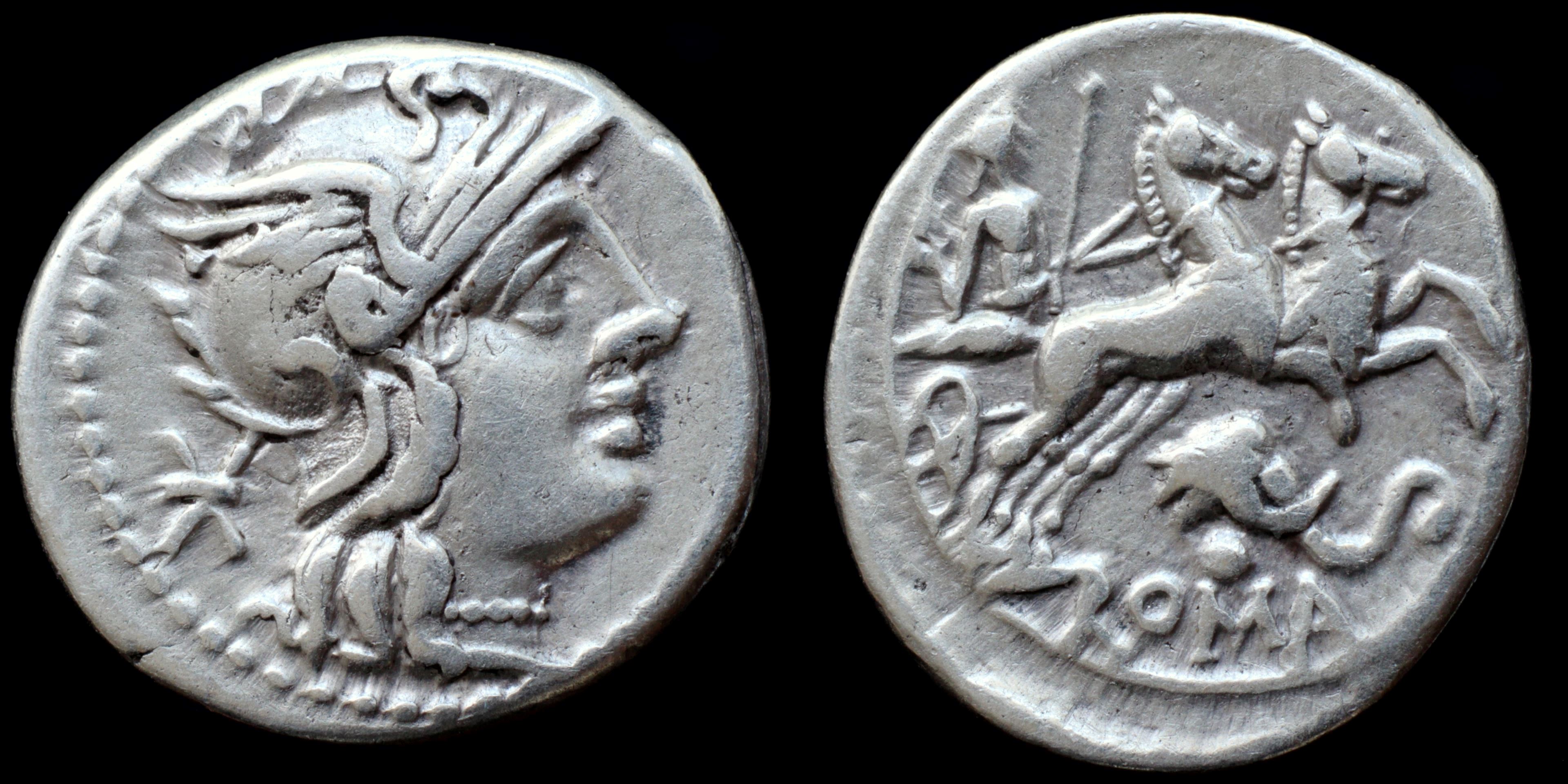
Reverse: Pax in biga right, holding branch, reins and scepter, elephant head below; ROMA
Die Orientation: -
Weight: 3.8 g
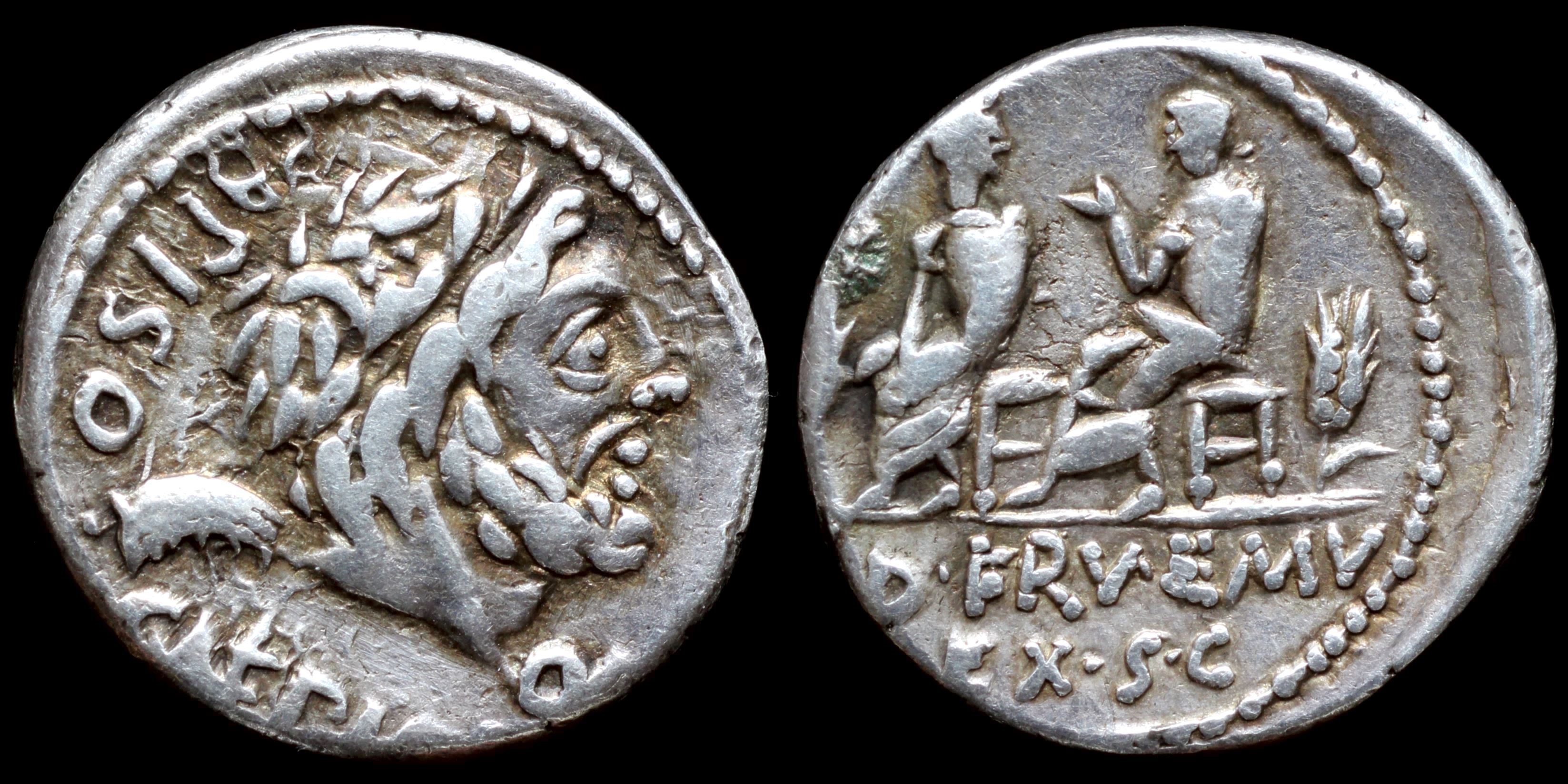
Reverse: two questors seated left between two stalk of grain; AD·FRV·EMV / EX·S·C
Die Orientation: -
Weight: 4.1 g
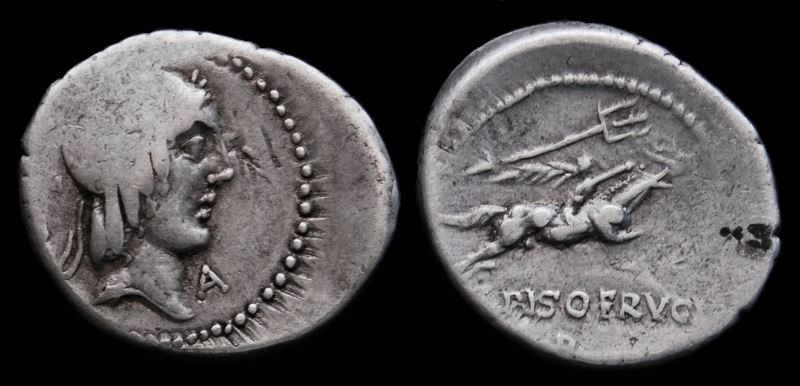
Reverse: Warrior riding horse right, holding palm frond and reins, above a trident right. L PISO FRUGI and control mark R in two lines below.
Die Orientation: 1 H
Weight: 3.9 g
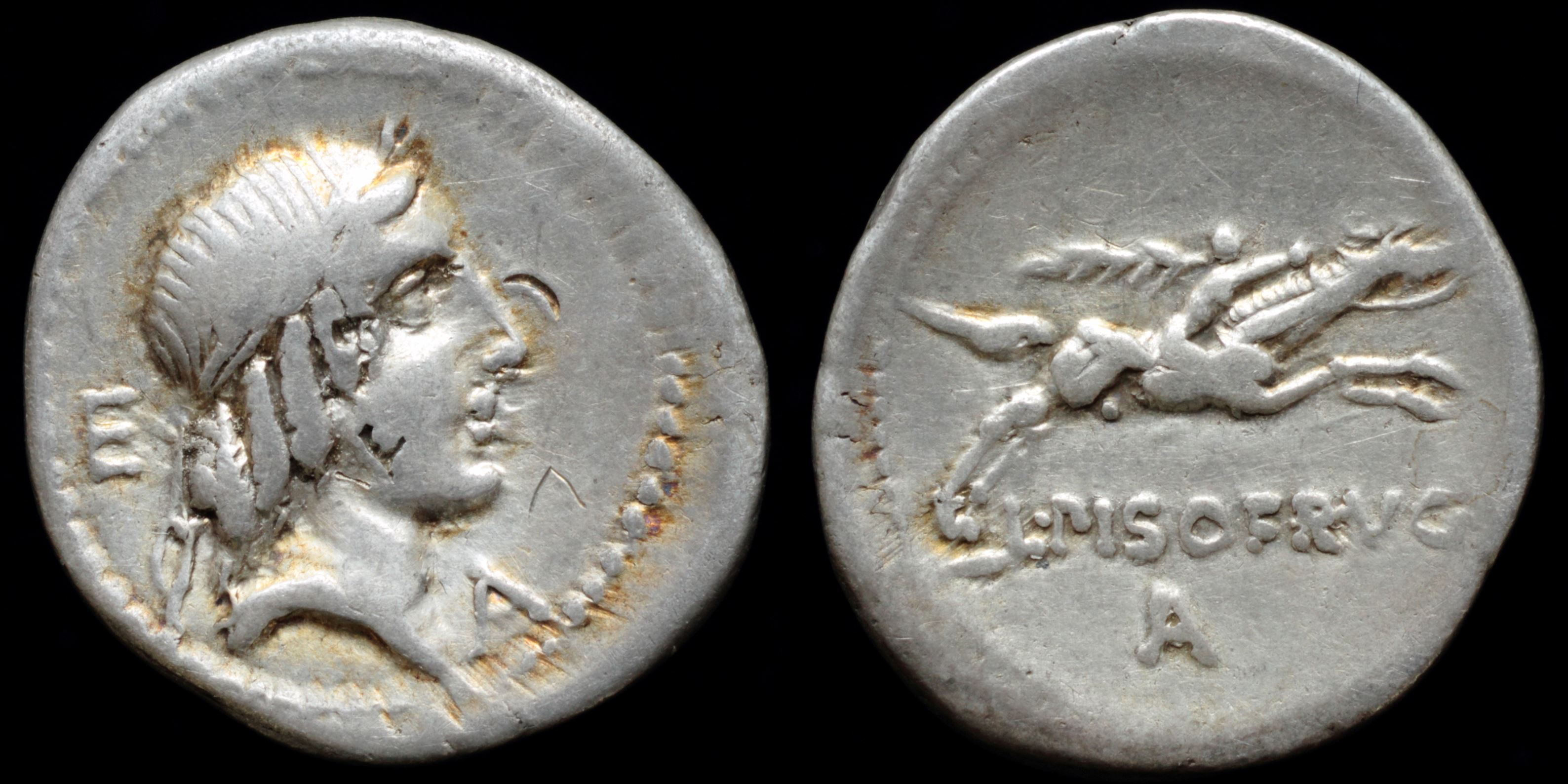
Reverse: Horseman holding palm branch galloping right L·PISO FRVGI / A
Die Orientation: -
Weight: 3.8 g
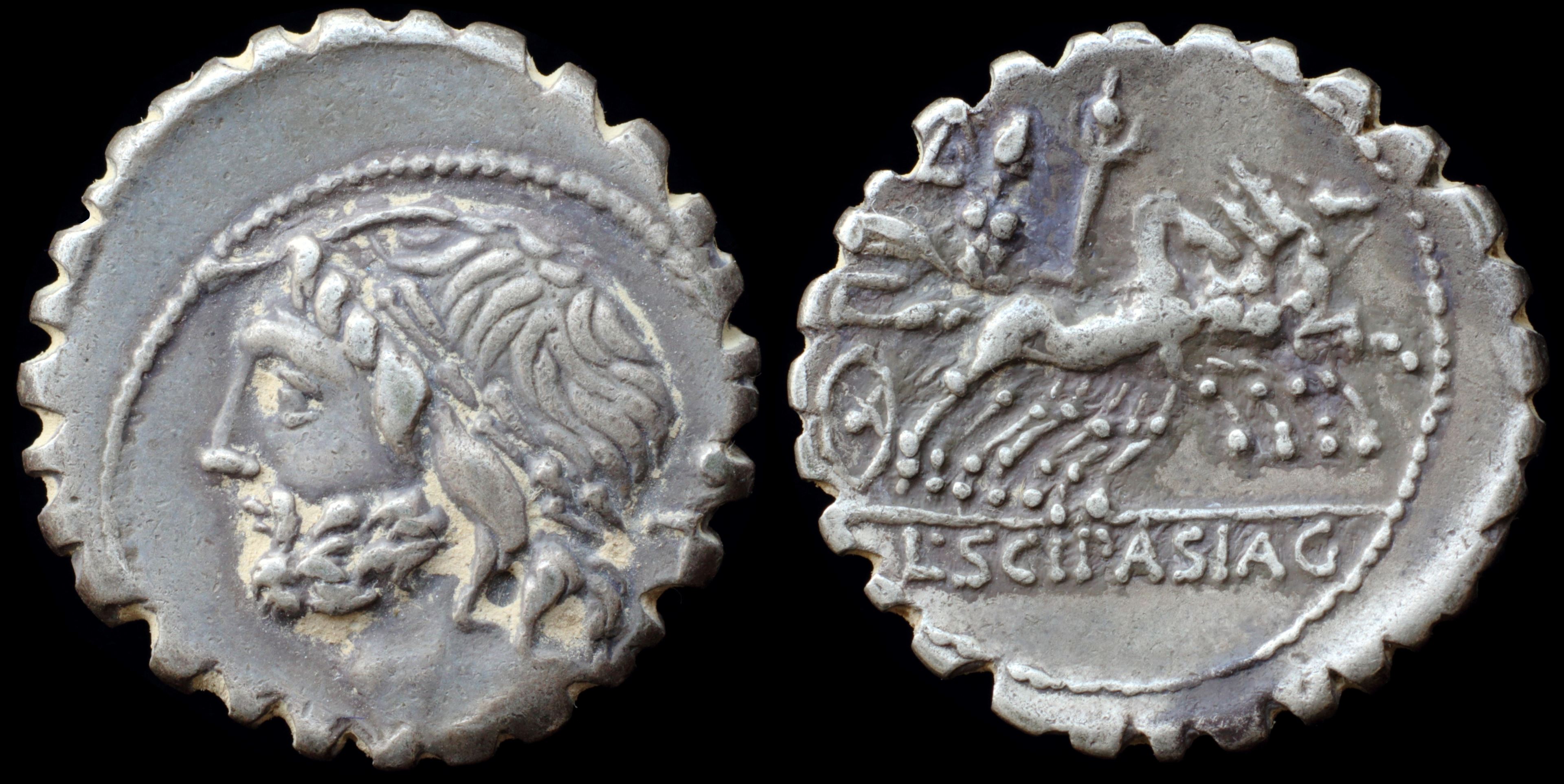
Reverse: Jupiter in quadriga right, hurling thunderbolt, holding reins and scepter L·SCIP·ASIAG
Die Orientation: -
Weight: 3.4 g
Moneyer was the great-grandson of Lucius Cornelius Scipio Asiaticus, consul 190 BC who together with Eumenes II of Pergamum defeated Antiochus III the Great. He belonged to the Marian party in Sulla's first civil war and Sulla's second civil war. He was appointed consul in 83 BC with Gaius Norbanus. In this year Lucius Cornelius Sulla returned to the Italian Peninsula, and advanced against the consuls. He defeated Norbanus in Italy, but seduced the troops of Scipio to desert their general. He was taken prisoner in his camp along with his son Lucius, but was dismissed by Sulla uninjured. He was, however, included in the proscription in the following year, 82 BC, whereupon he fled to Massilia, and passed there the remainder of his life. (wikipedia)
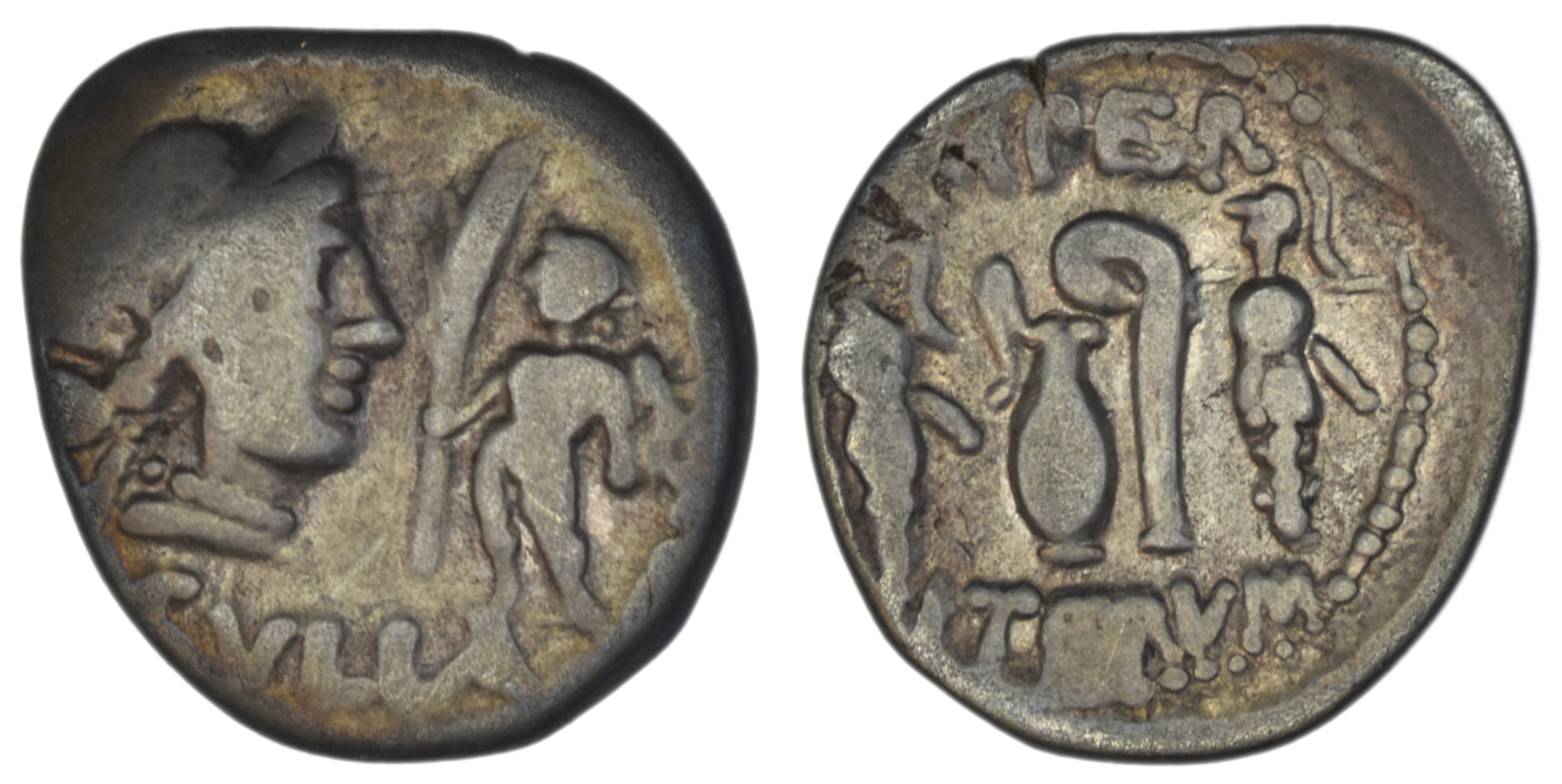
Reverse: IMPER ITERVM - Jug and Lituus between two trophies
Die Orientation: -
Weight: 3.24 g
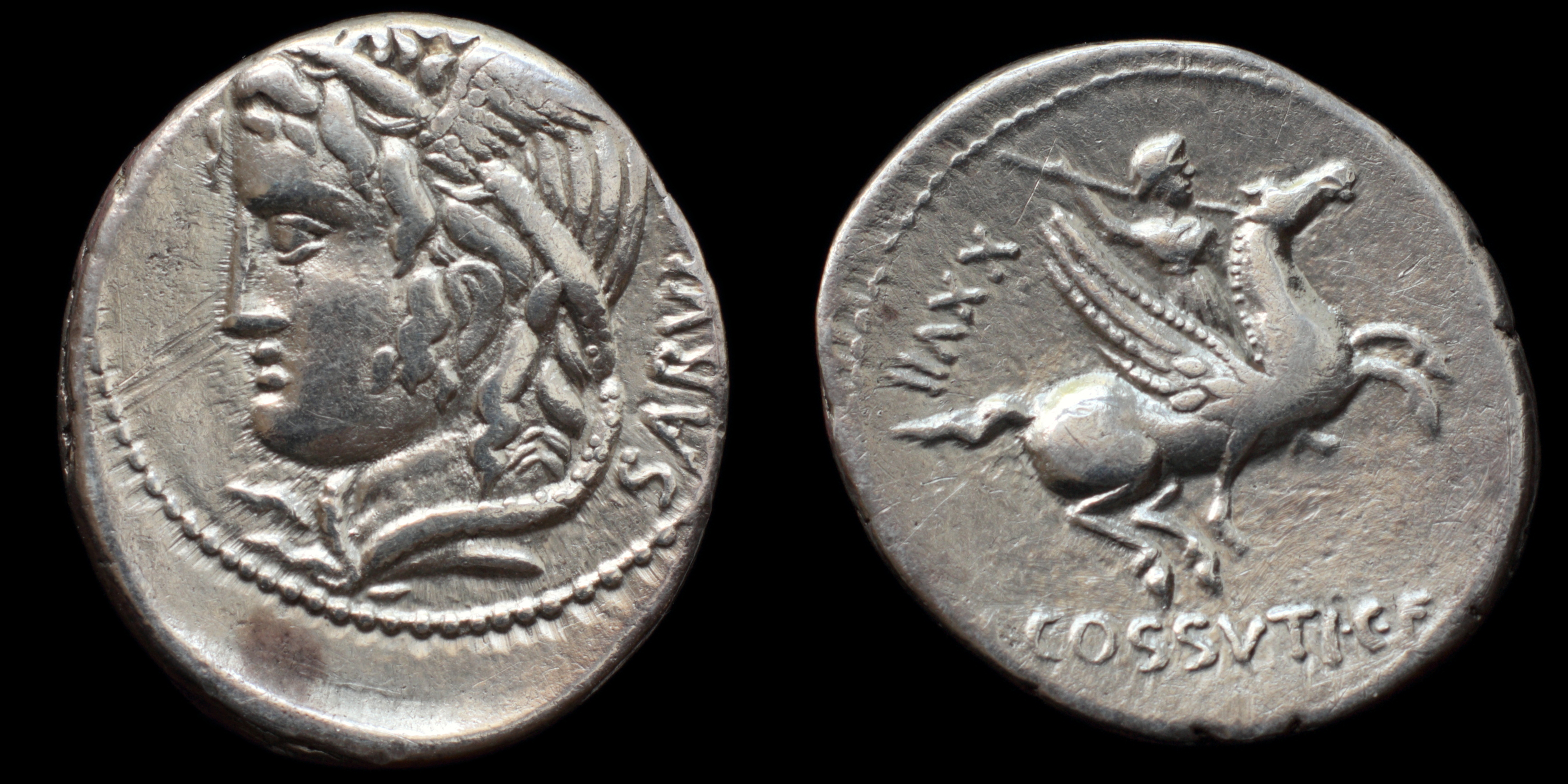
Reverse: Bellerophon on Pegasus right, brandishing spear; XXVII / L·COSSVTI·C·F
Die Orientation: -
Weight: 3.7 g
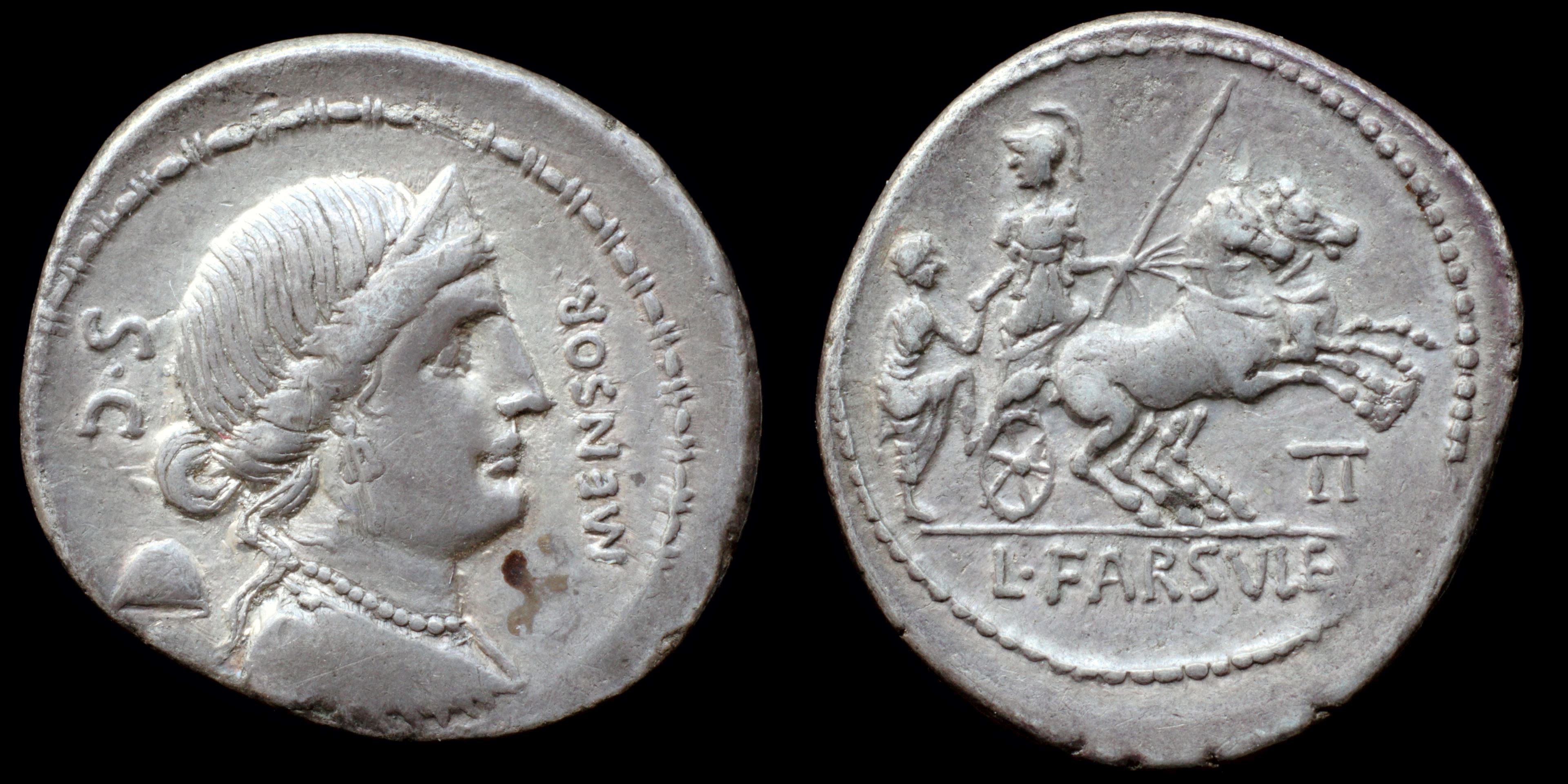
Reverse: helmeted warrior right in biga holding spear and reins asisting citizen togate into biga; II / L·FARSVLEI
Die Orientation: -
Weight: 3.8 g
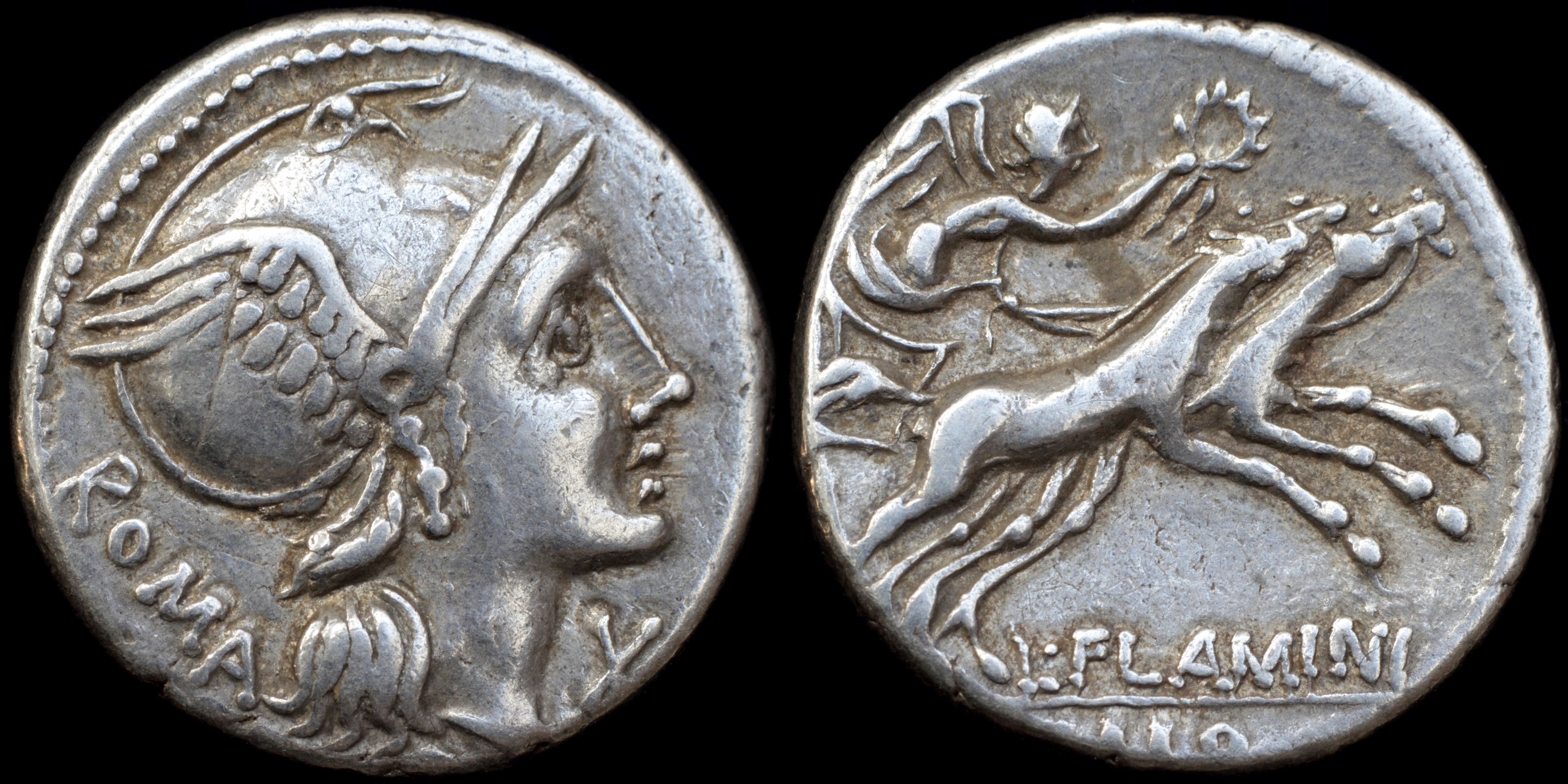
Reverse: Victory in biga right holding wreath and reins L·FLAMINI CILO
Die Orientation: -
Weight: 4 g
.jpg)
Reverse: Victory driving biga right, L FLAMINI below, CILO in exergue
Die Orientation: 4 H
Weight: 4.01 g

Reverse: Curule chair between fasces, L•FVRI CN•F above.
Die Orientation: 6 H
Weight: 3.95 g
"Ceres was the Roman goddess of agriculture. She was equivalent to the Greek Demeter. The curule chair (sella curulis) was the official chair of the 'curule' magistracies: the consulship, the praetorship, and the 'curule' aedileship (the two highest aediles). The fasces were bundles of rods bound together. The rods symbolized the power to inflict physical punishment. When an axe (securis) was bound in the middle of the rods, it signified the power to inflict death."
Provenance: CNG 106 (13 September 2017), lot 659.
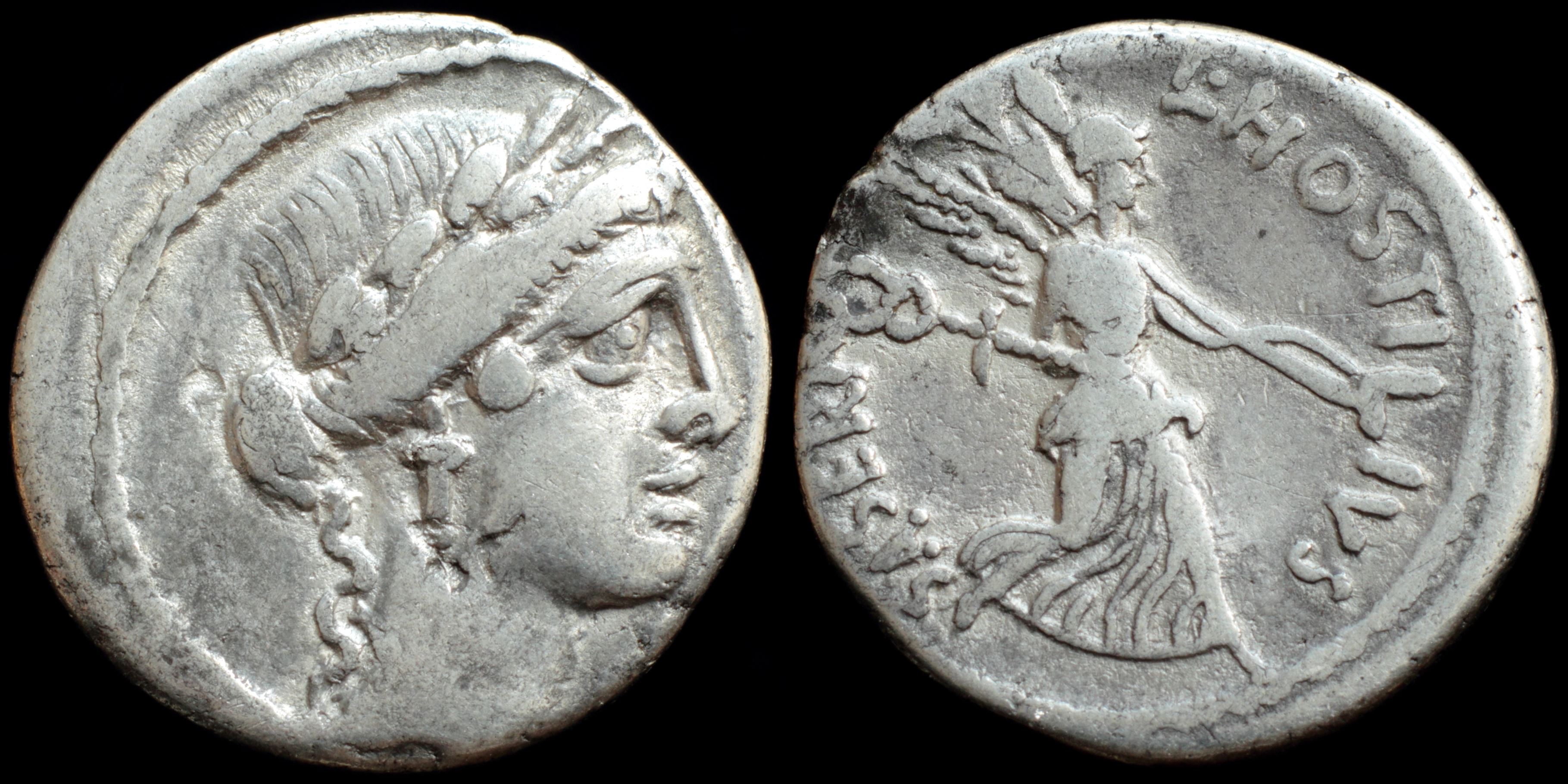
Reverse: Victory running right, holding caduceus, Gallic trophy and palm fronds, L·HOSTILI
Die Orientation: -
Weight: 3.5 g
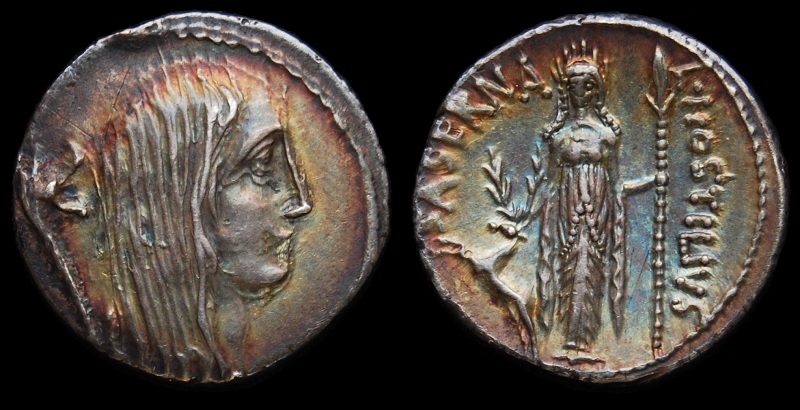
Reverse: Diana (Artemis) standing facing, laureate, wearing long hair falling down her shoulders and long flowing robes, holding spear in left hand and stag by its antlers in her right; SASERNA upward around left, L • HOSTILIVS downward to right
Die Orientation: -
Weight: 3.82 g
The obverse figure has not been definitively identified. Some speculate that she is a representation of Gallia, made to represent Julius Caesar's conquest of the area during the Gallic War. This belief is further bolstered by the presence of a carnyx behind the bust.
Another proposition is that the figure is a representation of Pallor, the goddess of fear and paleness. The complexion on the faces of different dies lend plausibility to this theory. There was another god, Pavor, who represented consternation, panic, and dread. Interestingly, Hostilius also struck a coin with a male head (who many bealieve may be a representation of the Gallic chieftain Vercingetorix). This may be an allusion to Tullus Hostilius, who vowed (and presumably later erected) temples to Pallor and Pavor during his war with the Etruscan cities Veii and Fidenae.
Another theory proposed is that Gallia is represented by Pallor, perhaps to show the fear of conquest.
The reverse probably refers to that Artemis was the chief goddess of Massalia, a Greek colony in southern Gaul. In the Civil War, Massalia declared for Pompey and Caesar besieged the city. When it submitted in 49 BC, Caesar allowed it to remain free, but took most of its lands."
Provenance: e-Bay sale (March 2018).
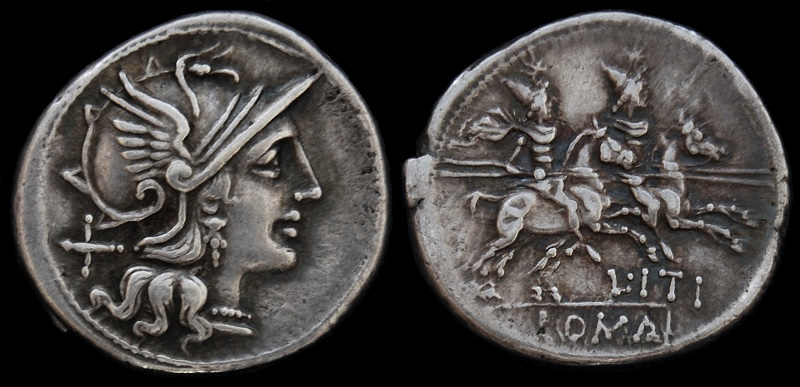
Reverse: The Dioscuri riding right; L•ITI below, ROMA in exergue.
Die Orientation: -
Weight: 3.39 g
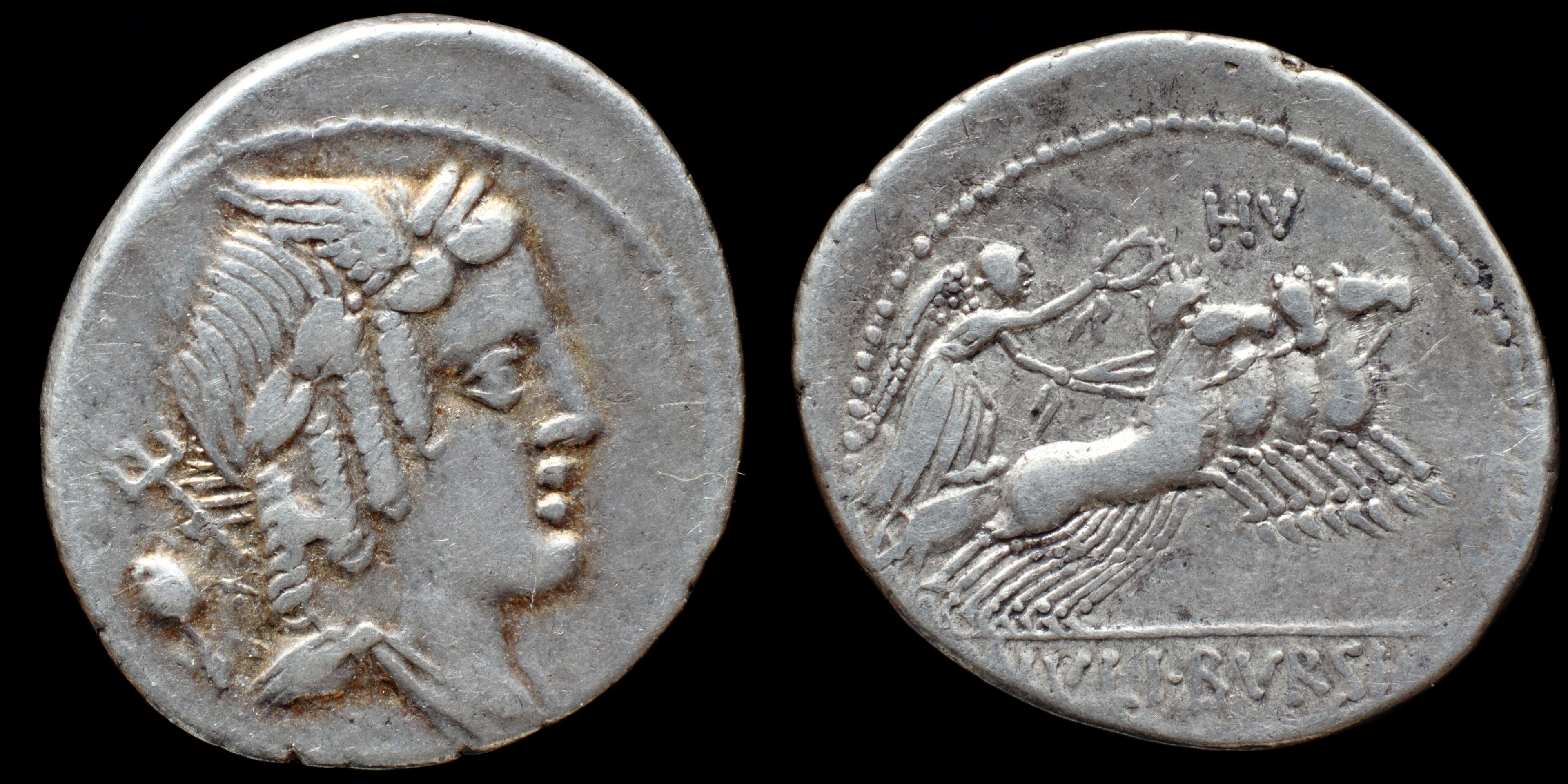
Reverse: Victory in quadriga right, holding wreath and reins; HV / L·IVLI·BVRSIO
Die Orientation: -
Weight: 3.8 g
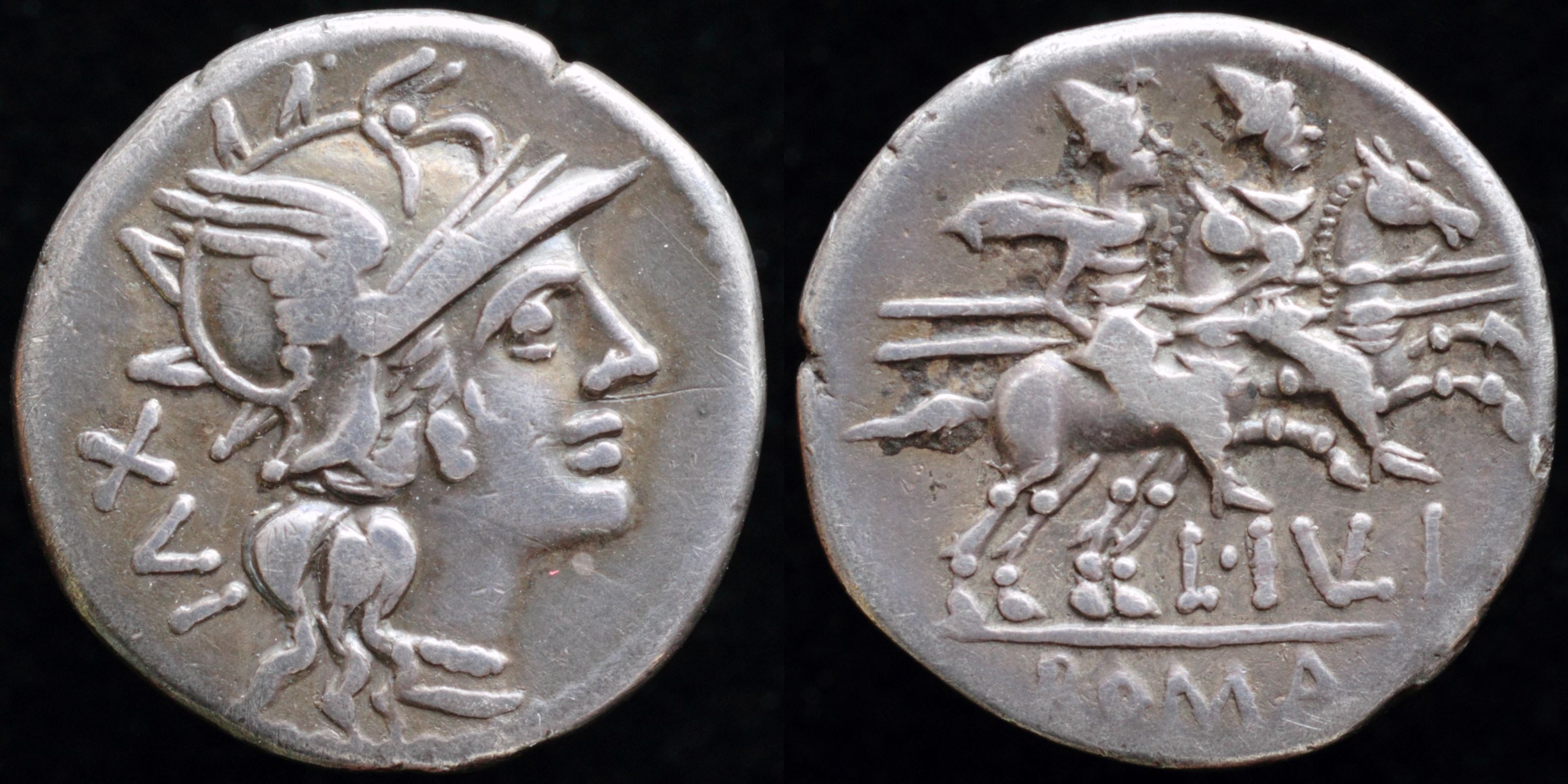
Reverse: Dioscuri riding on horses right holding spears and reins; stars over their heads L·I(VL)I ROMA
Die Orientation: -
Weight: 3.8 g
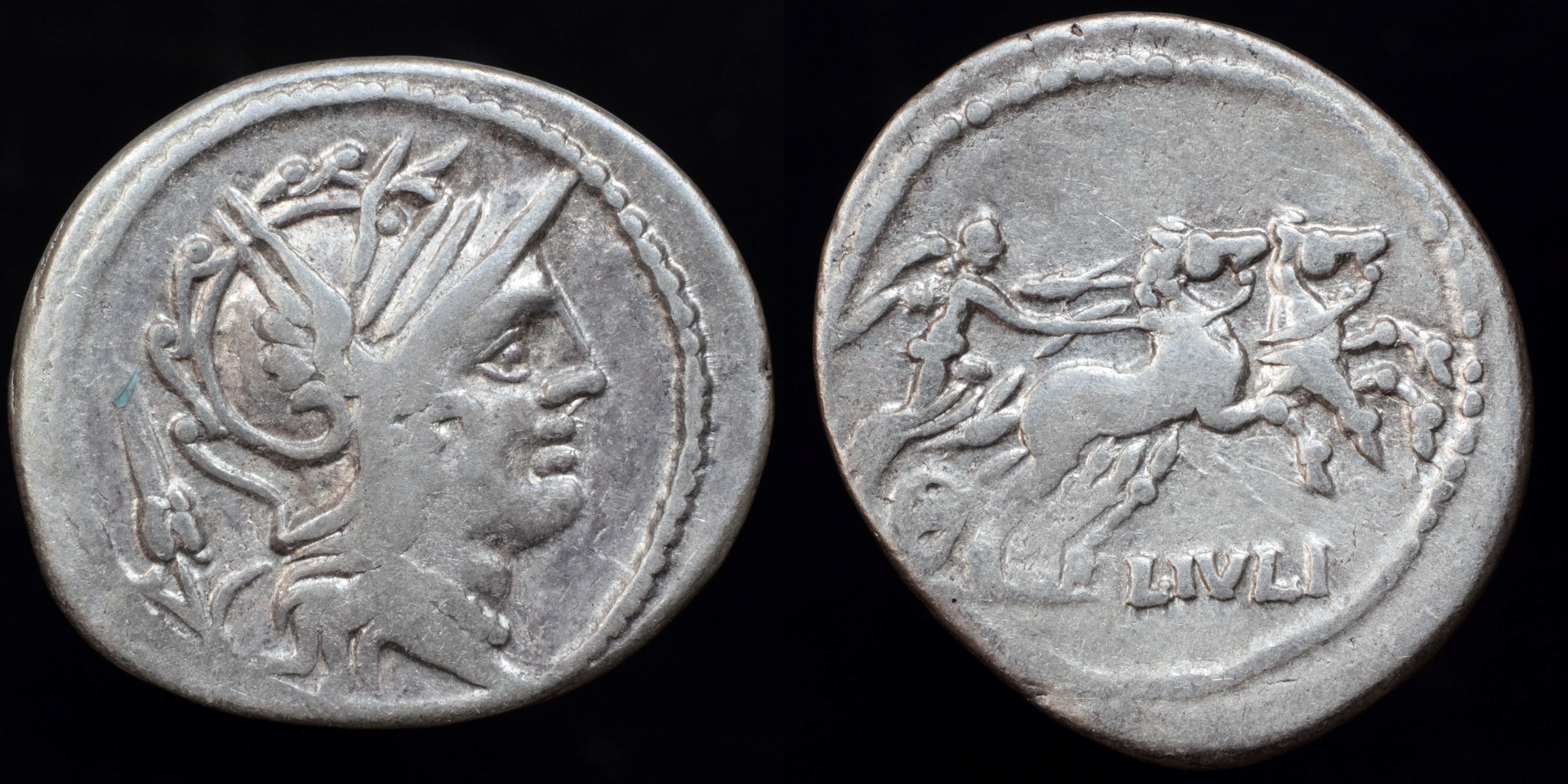
Reverse: Victory in biga right L·IVLI
Die Orientation: -
Weight: 3.8 g
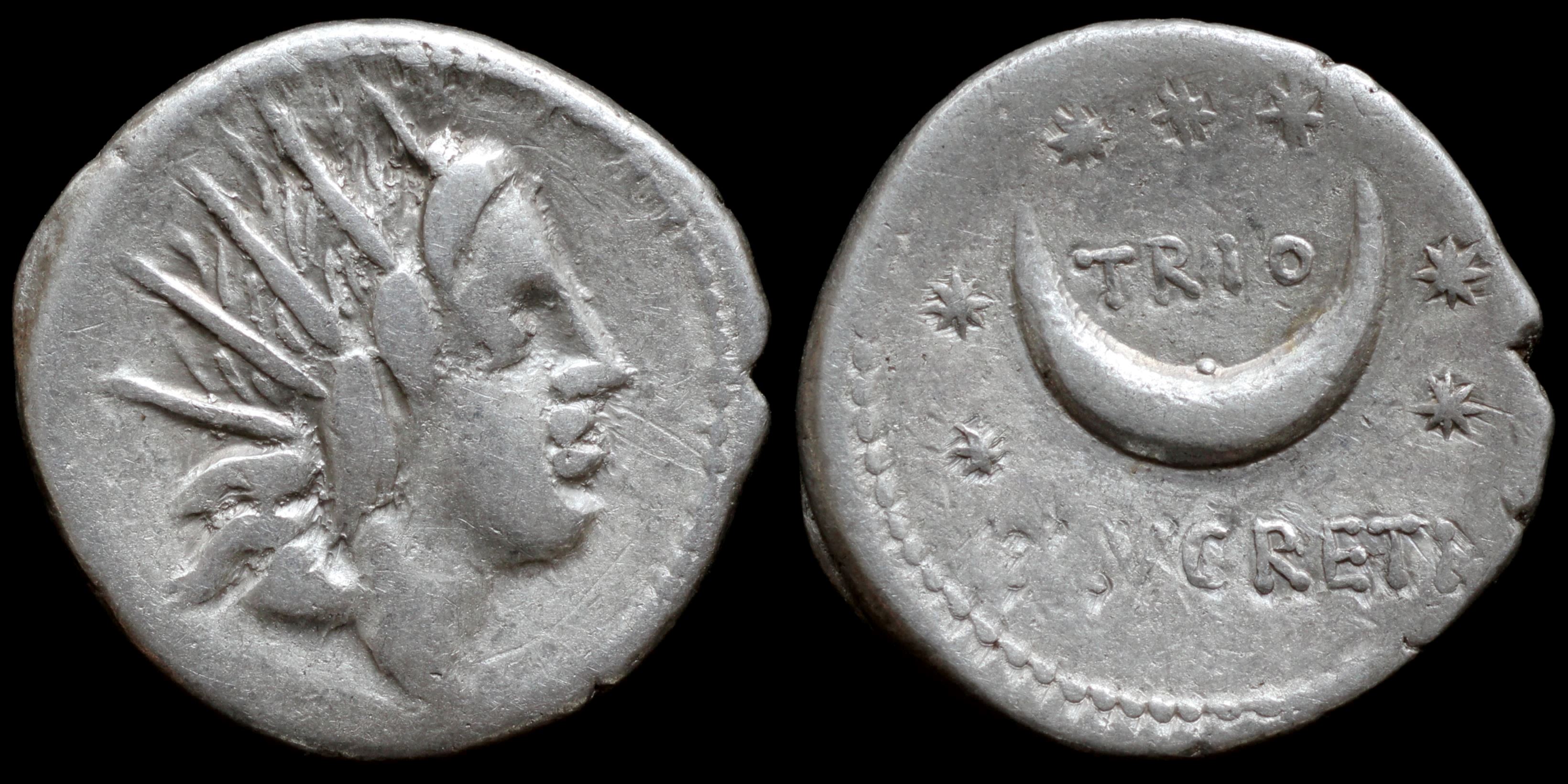
Reverse: crescent moon, 7 stars around - Septem triones (Ursa Major), TRIO / L·LVCRETI
Die Orientation: -
Weight: 4 g
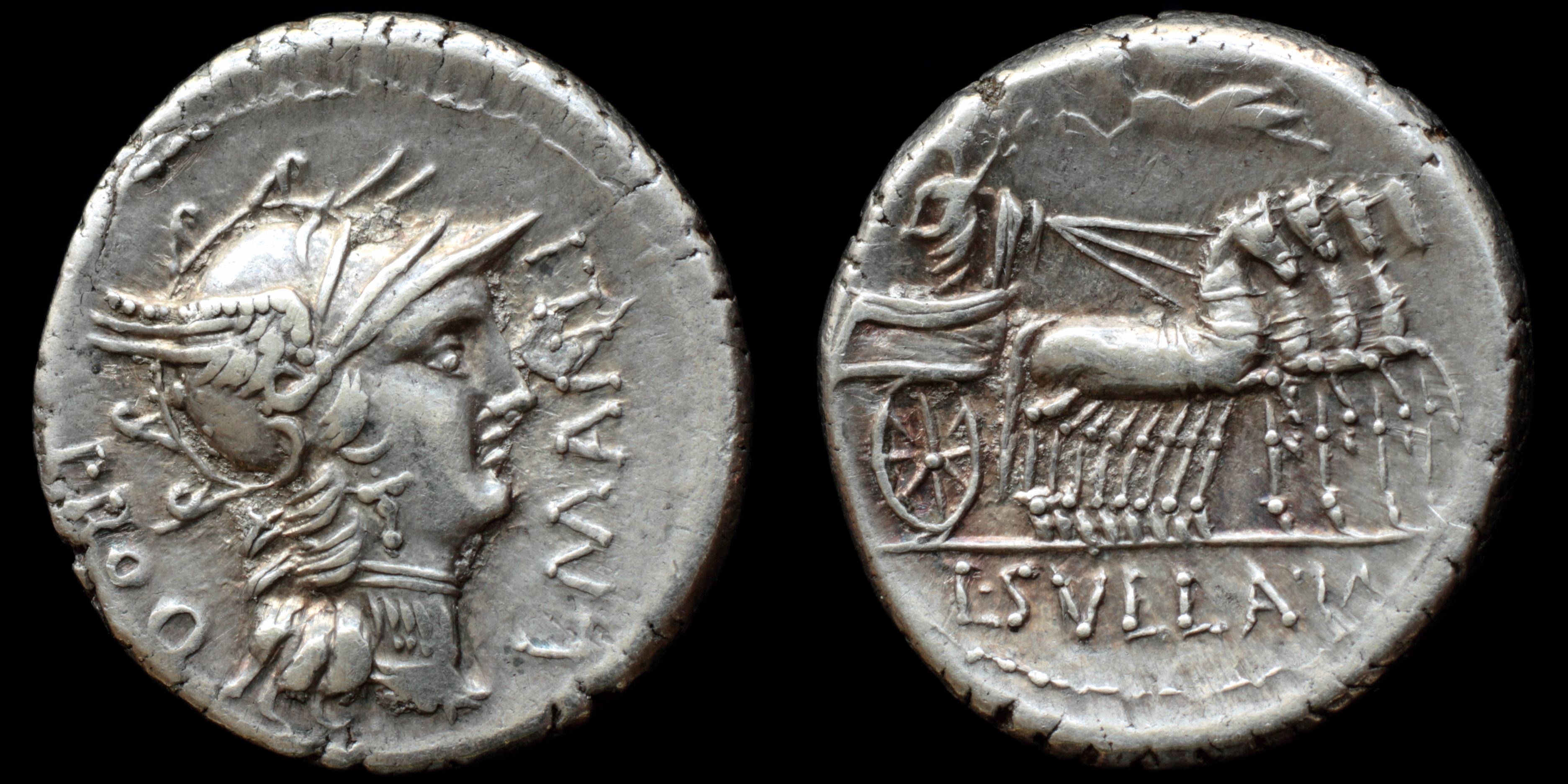
Reverse: Sulla right in quadriga holding caduceus and reins, Victory flying right holding wreath L·SVLLA·IM
Die Orientation: -
Weight: 3.9 g
mint in south Italy. Reverse depicts Sulla's upcoming triumph which was held on 29-30 Janury 81 BC.
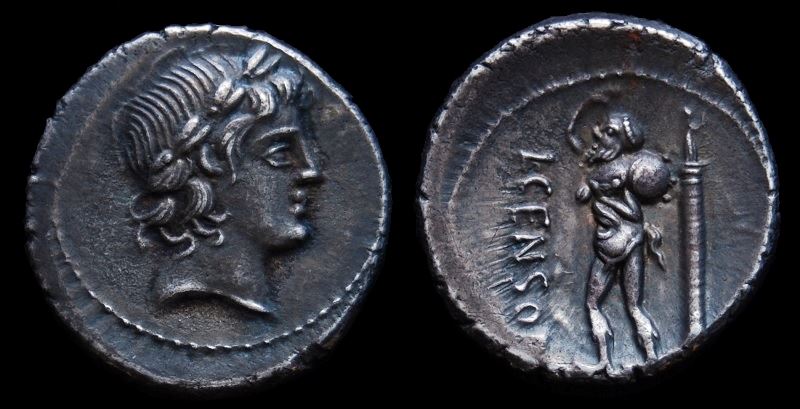
Reverse: Marsyas standing left, raising hand and holding wineskin over shoulder; L•CENSOR downwards in left field; column surmounted by statue of Minerva(?) in right field.
Die Orientation: 6 H
Weight: 3.46 g
"Among the Romans, Marsyas was cast as the inventor of augury and a proponent of free speech (the philosophical concept "parrhesia") and "speaking truth to power." The earliest known representation of Marsyas at Rome stood for at least 300 years in the Roman Forum near or in the comitium, the space for political activity. He was depicted as a silen, carrying a wineskin on his left shoulder and raising his right arm. The statue was regarded as an indicium libertatis, a symbol of liberty, and was associated with demonstrations of the plebs, or common people. It often served as a sort of kiosk upon which invective verse was posted."
"The plebeian gens of the Marcii claimed that they were descended from Marsyas. Gaius Marcius Rutilus, who rose to power from the plebs, is credited with having dedicated the statue that stood in the Roman forum, most likely in 294 BC, when he became the first plebeian censor and added the cognomen Censorinus to the family name. Marcius Rutilus was also among the first plebeian augurs, co-opted into their college in 300, and so the mythical teacher of augury was an apt figure to represent him."
"The descendant of Marcius Rutilus, L. Marcius Censorinus, issued coins depicting the statue of Marsyas, at a time when the augural college was the subject of political controversy during the Sullan civil wars of the 80s BC. On the coin, Marsyas wears a Phrygian cap or pilleus, an emblem of liberty. This Marcius Censorinus was killed by Sulla and his head displayed outside Praeneste. Sulla's legislative program attempted to curtail power invested in the people, particularly restricting the powers of the plebeian tribunes, and to restore the dominance of the senate and the privileges of patricians."
Provenance: CNG 106 (13 September 2017), lot 649.
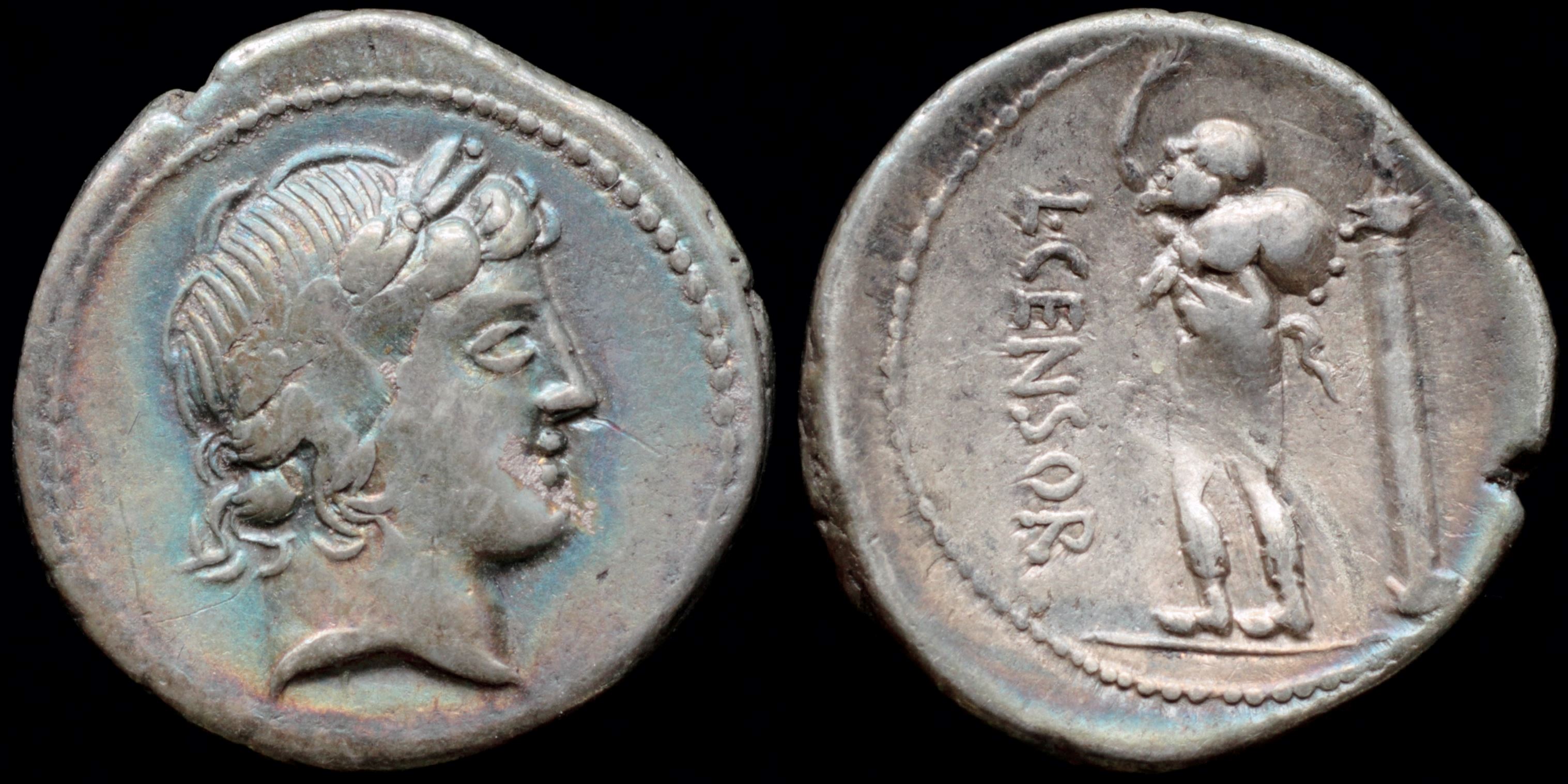
Reverse: Marsyas standing left, rising hand, holding with wine skin over shoulder; column topped with Victory behind L·CENSOR
Die Orientation: -
Weight: 3.8 g
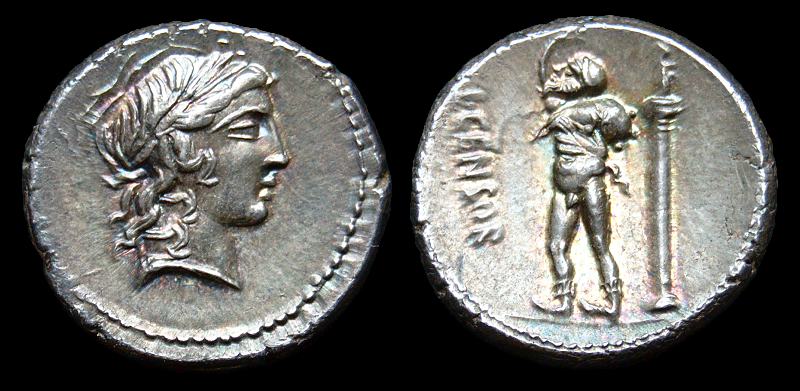
Reverse: Marsyas standing left, raising hand and holding wineskin over shoulder; L•CENSOR downwards in left field; column surmounted by statue of Minerva(?) in right field
Die Orientation: -
Weight: 3.99 g
Among the Romans, Marsyas was cast as the inventor of augury and a proponent of free speech (the philosophical concept "parrhesia") and "speaking truth to power." The earliest known representation of Marsyas at Rome stood for at least 300 years in the Roman Forum near or in the comitium, the space for political activity. He was depicted as a silen, carrying a wineskin on his left shoulder and raising his right arm. The statue was regarded as an indicium libertatis, a symbol of liberty, and was associated with demonstrations of the plebs, or common people. It often served as a sort of kiosk upon which invective verse was posted."
The plebeian gens of the Marcii claimed that they were descended from Marsyas. Gaius Marcius Rutilus, who rose to power from the plebs, is credited with having dedicated the statue that stood in the Roman forum, most likely in 294 BC, when he became the first plebeian censor and added the cognomen Censorinus to the family name. Marcius Rutilus was also among the first plebeian augurs, co-opted into their college in 300, and so the mythical teacher of augury was an apt figure to represent him.
The descendant of Marcius Rutilus, L. Marcius Censorinus, issued coins depicting the statue of Marsyas, at a time when the augural college was the subject of political controversy during the Sullan civil wars of the 80s BC. On the coin, Marsyas wears a Phrygian cap or pilleus, an emblem of liberty. This Marcius Censorinus was killed by Sulla and his head displayed outside Praeneste. Sulla's legislative program attempted to curtail power invested in the people, particularly restricting the powers of the plebeian tribunes, and to restore the dominance of the senate and the privileges of patricians."
Provenance: CNG 111 (29 May 2019), lot 613. From the Alan J. Harlan Collection, purchased from Edward J. Waddell, Ltd.
.jpeg)
Reverse: Marsyas standing left, raising hand and holding wineskin over shoulder, beside column to right, surmounted by statue of Minerva(?) standing right; L•CENSOR downward to left
Die Orientation: 7 H
Weight: 3.72 g
Ex Andrew McCabe Collection; Ex Numismatica Ars Classica AG (Auction 106; Lot 407); Ex Elvira Eliza Clain-Stefanelli (1914-2001) Collection.
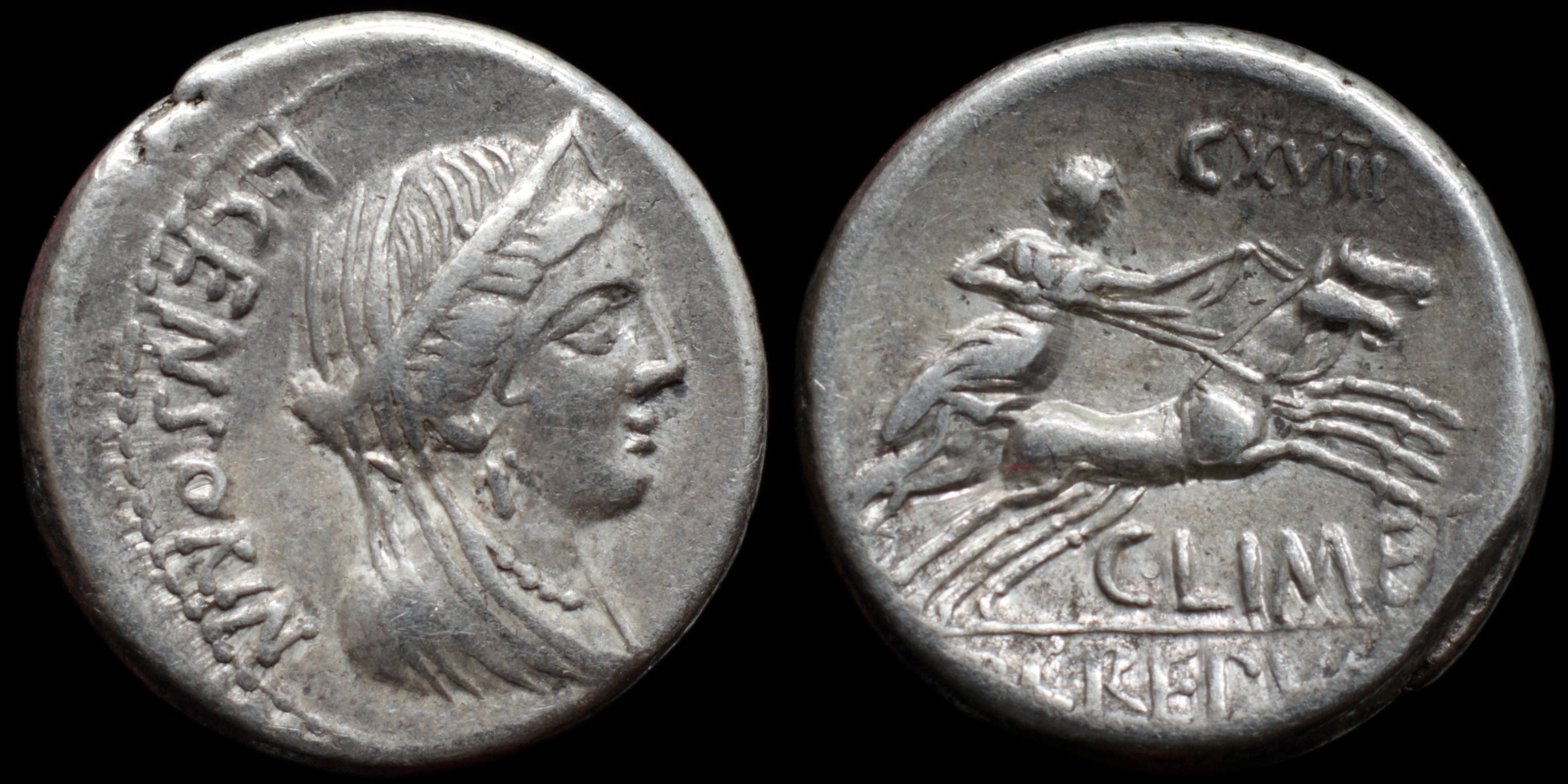
Reverse: Venus in biga right holding reins and goad; CXVIII / C·LIME(TA) / P·CREPVSI
Die Orientation: -
Weight: 3.8 g
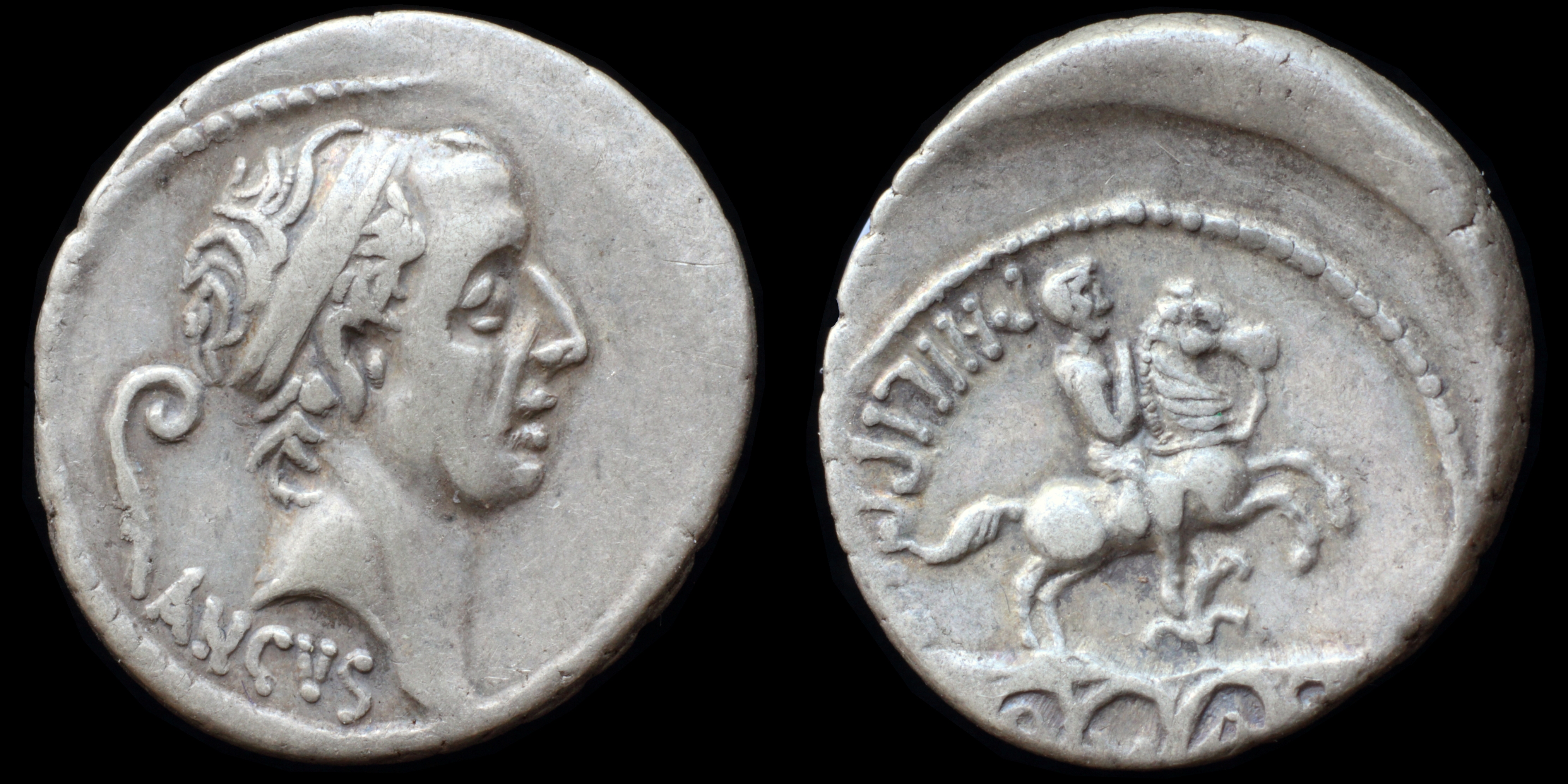
Reverse: equestrian statue right on 5 archs of aquaduct (Aqua Marcia), flower below, PHILIPPVS / A-Q-V-A-(MAR)
Die Orientation: -
Weight: 3.7 g
.jpg)
Reverse: Aqueduct on which stands equestrian statue, flower at horse’s feet; PHILIPPVS to left, AQVA MAR ligate within arches of aqueduct
Die Orientation: 3 H
Weight: 4.07 g
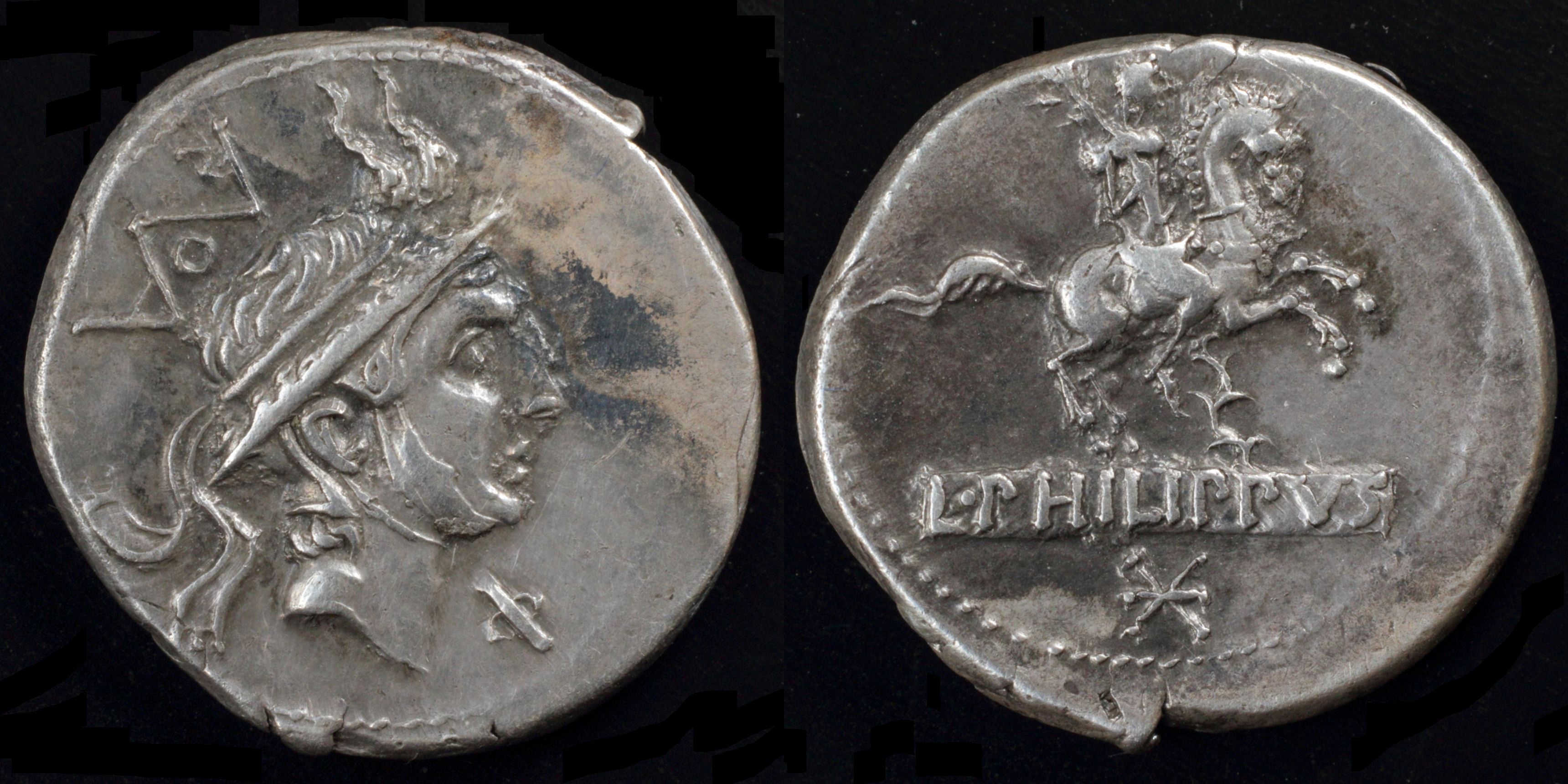
Reverse: equestrian statue right, holding laurel branch, flower below L·PHILIPPVS (XVI)
Die Orientation: -
Weight: 3.9 g
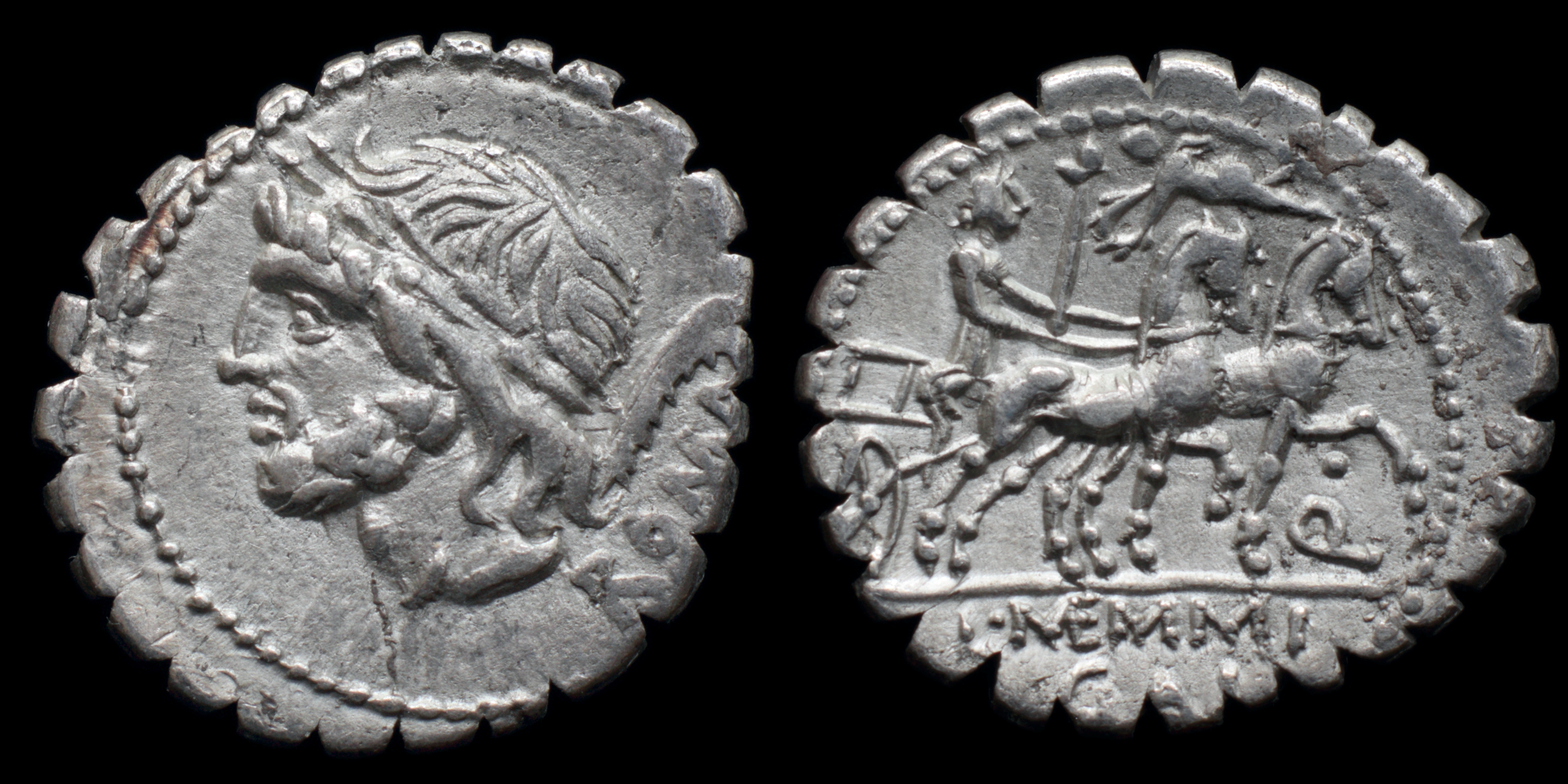
Reverse: Venus in slow biga right holding scepter and reins; above Cupid flying left, holding wreath; ·/Q // L·(ME)MMI / GAL
Die Orientation: -
Weight: 3.9 g
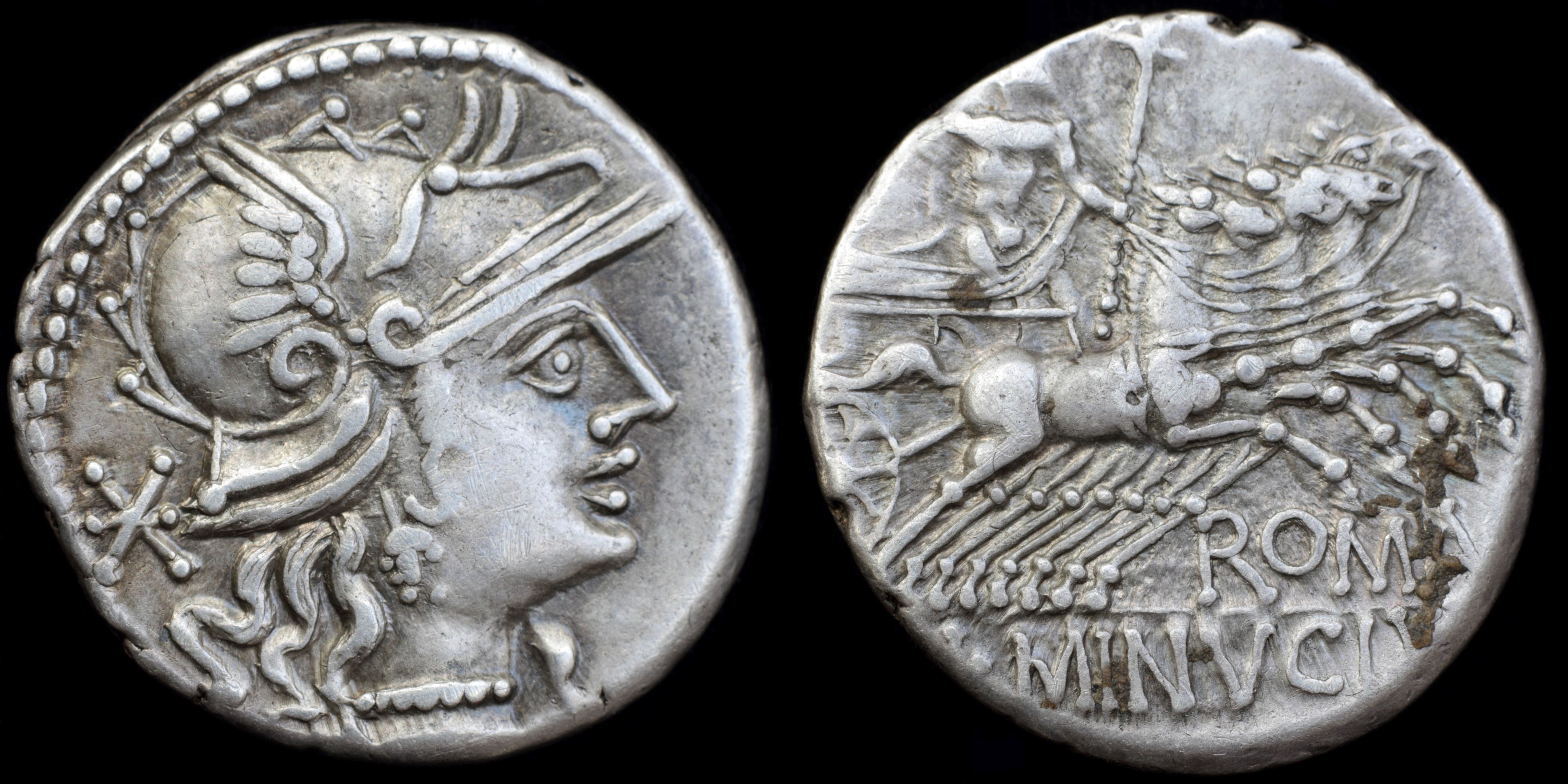
Reverse: Jupiter in quadriga right holding thunderbolt, reins and scepter ROMA L·MINVCIV
Die Orientation: -
Weight: 3.8 g
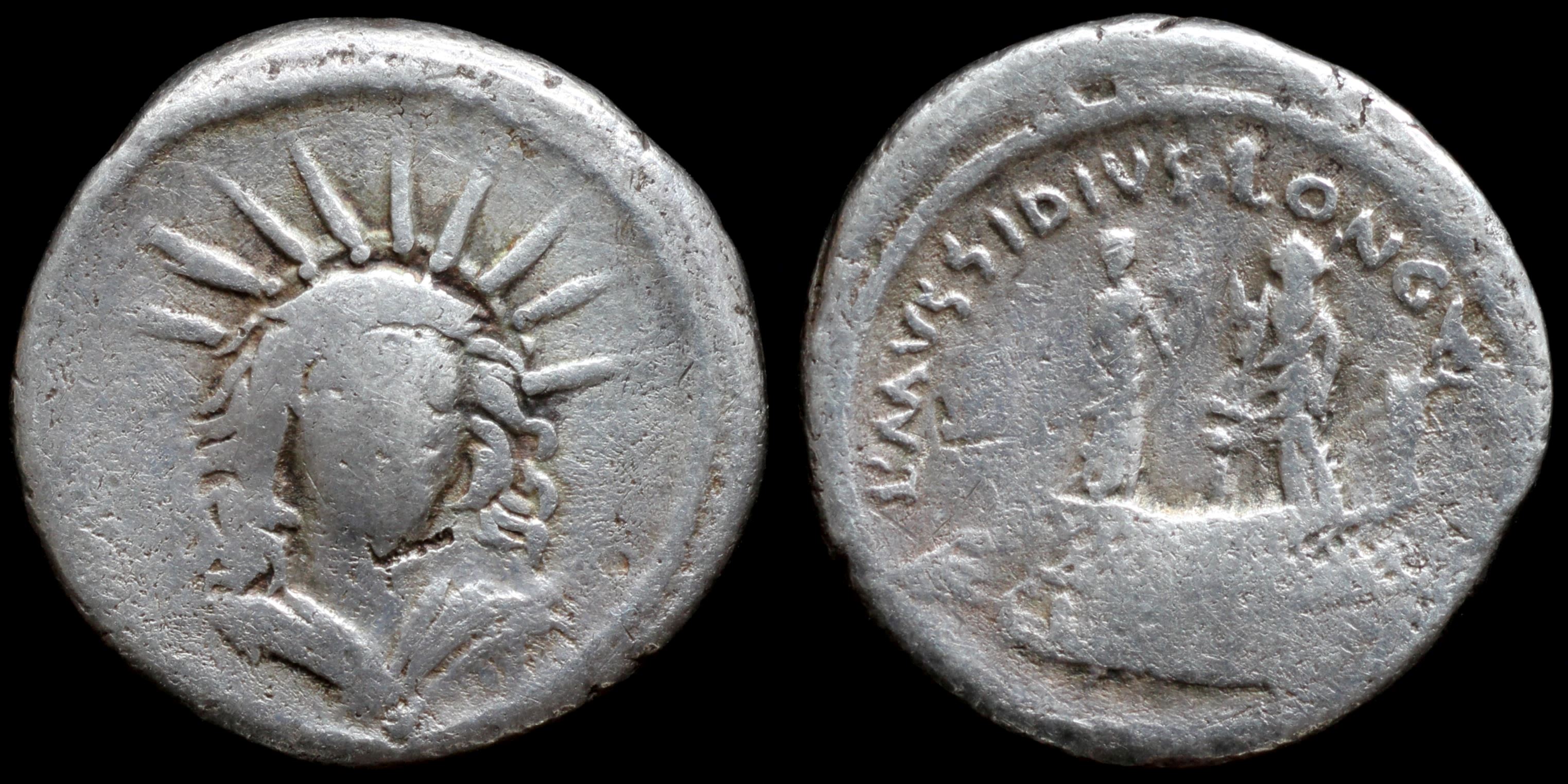
Reverse: two statues of Venus Cloacina standing on platform, L·MVSSIDIVS·LONGVS / CLOACIN
Die Orientation: -
Weight: 3.4 g
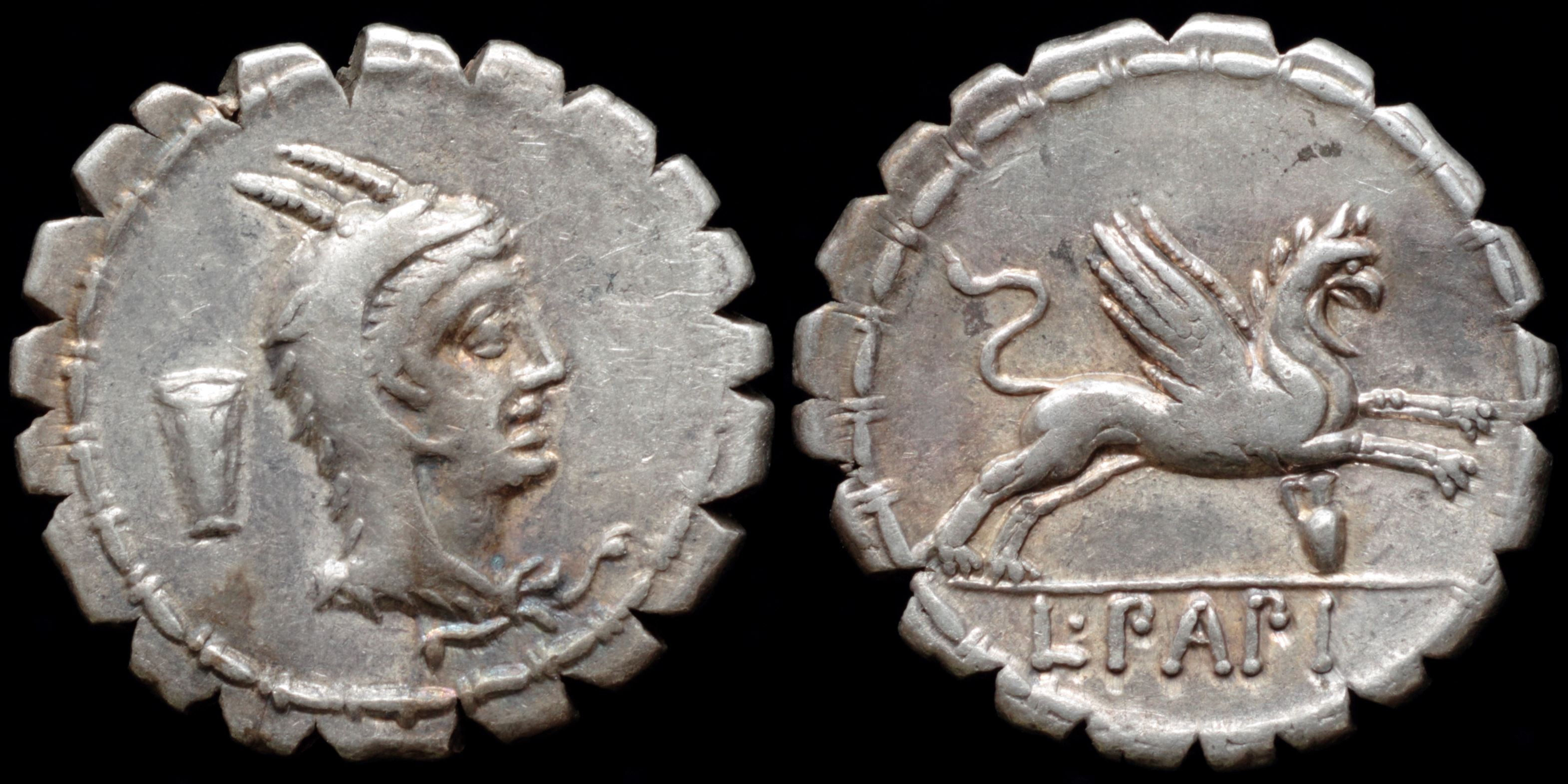
Reverse: Gryphon springing right; jug below L.PAPI
Die Orientation: -
Weight: 4 g
Gens Papia was Samnite origin and family came from Lanuvium.
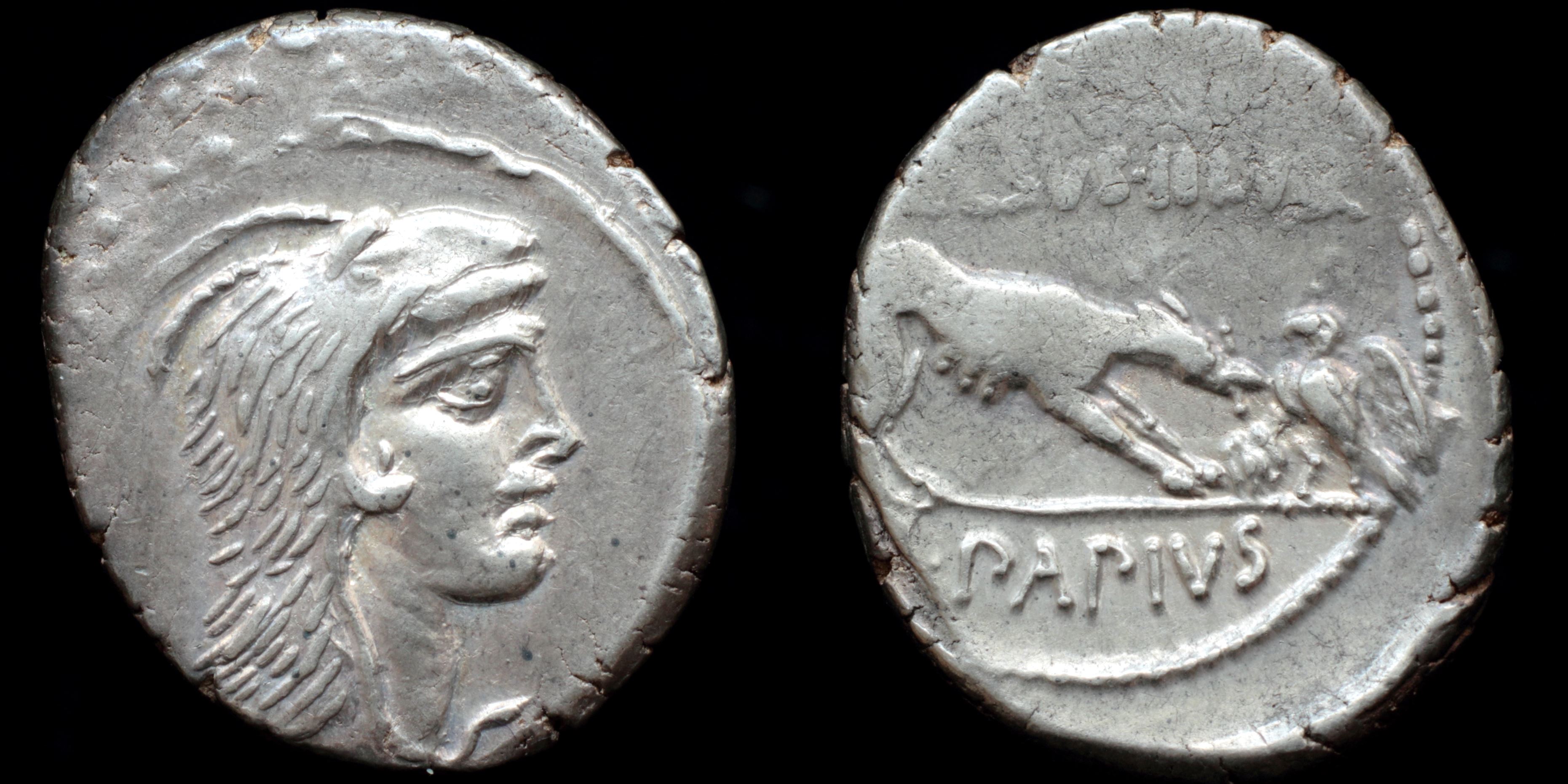
Reverse: wolf right placing stick on fire, eagle left fanning flames with its wings, CELSVS·III·VIR / L.PAPIVS
Die Orientation: -
Weight: 3.9 g
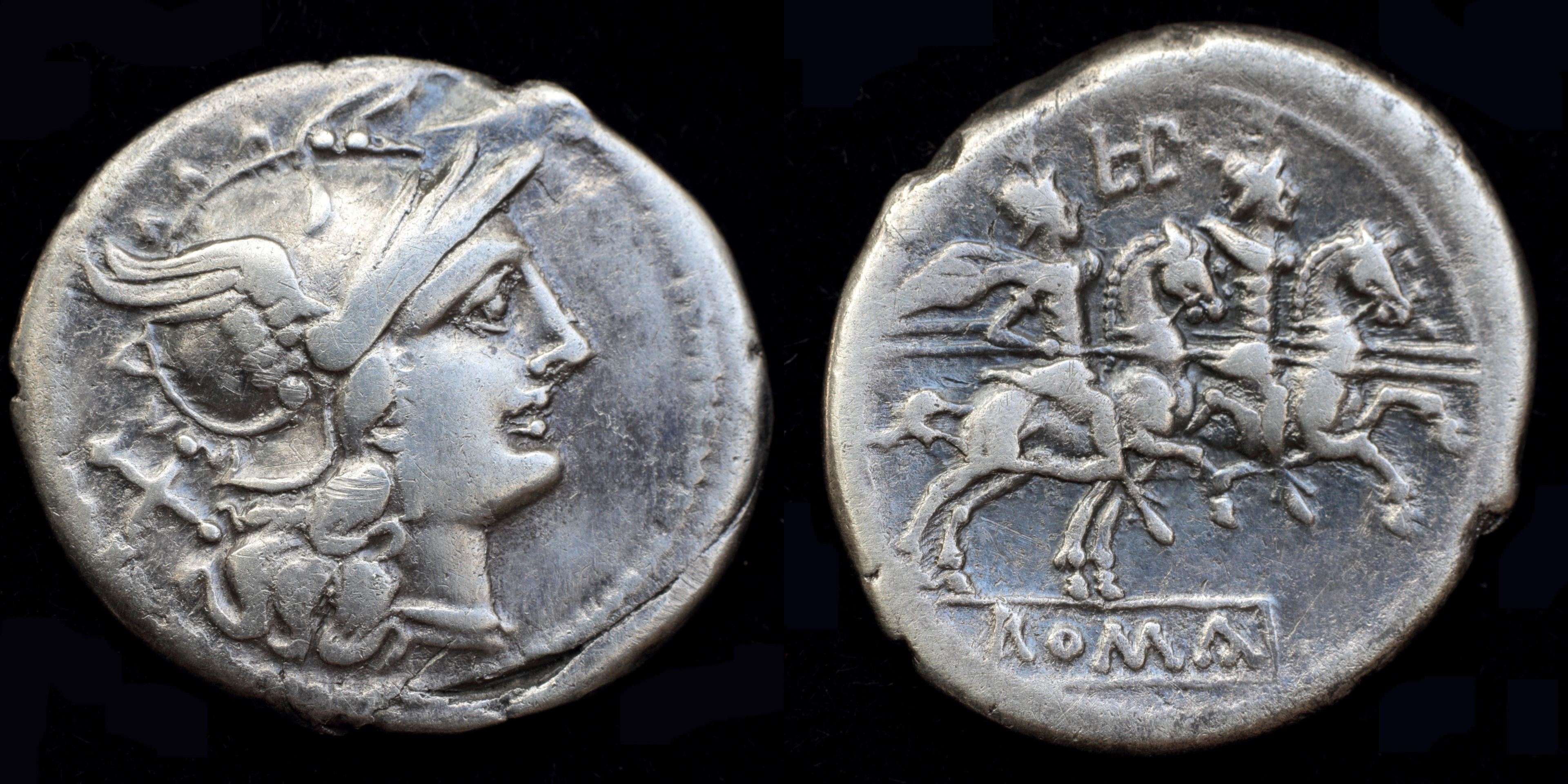
Reverse: Dioscuri riding right on horses holding stears and reins; stars over their pilei (LPLH) ROMA
Die Orientation: -
Weight: 3.6 g
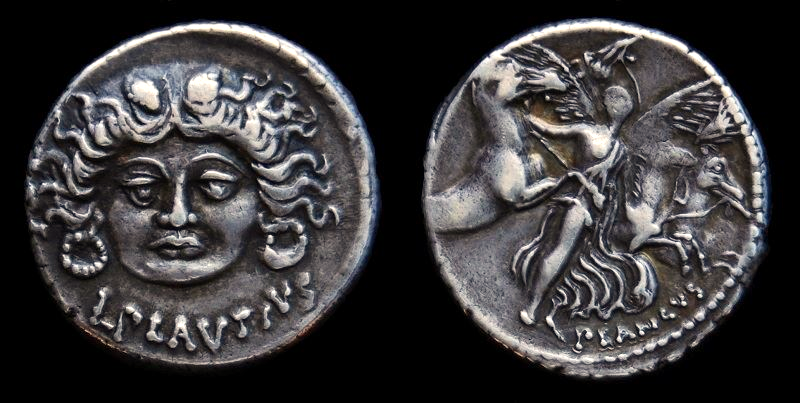
Reverse: Aurora, winged and draped, flying right, head facing slightly left, holding reins and palm branch, conducting the four rearing horses of the sun; PLANCVS below.
Die Orientation: 12 H
Weight: 4 g
Provenance: CNG Electronic auction 404 (23 August 2017), lot 453. Ex Hirsch Nachf. 284 (26 September 2012), lot 2585.
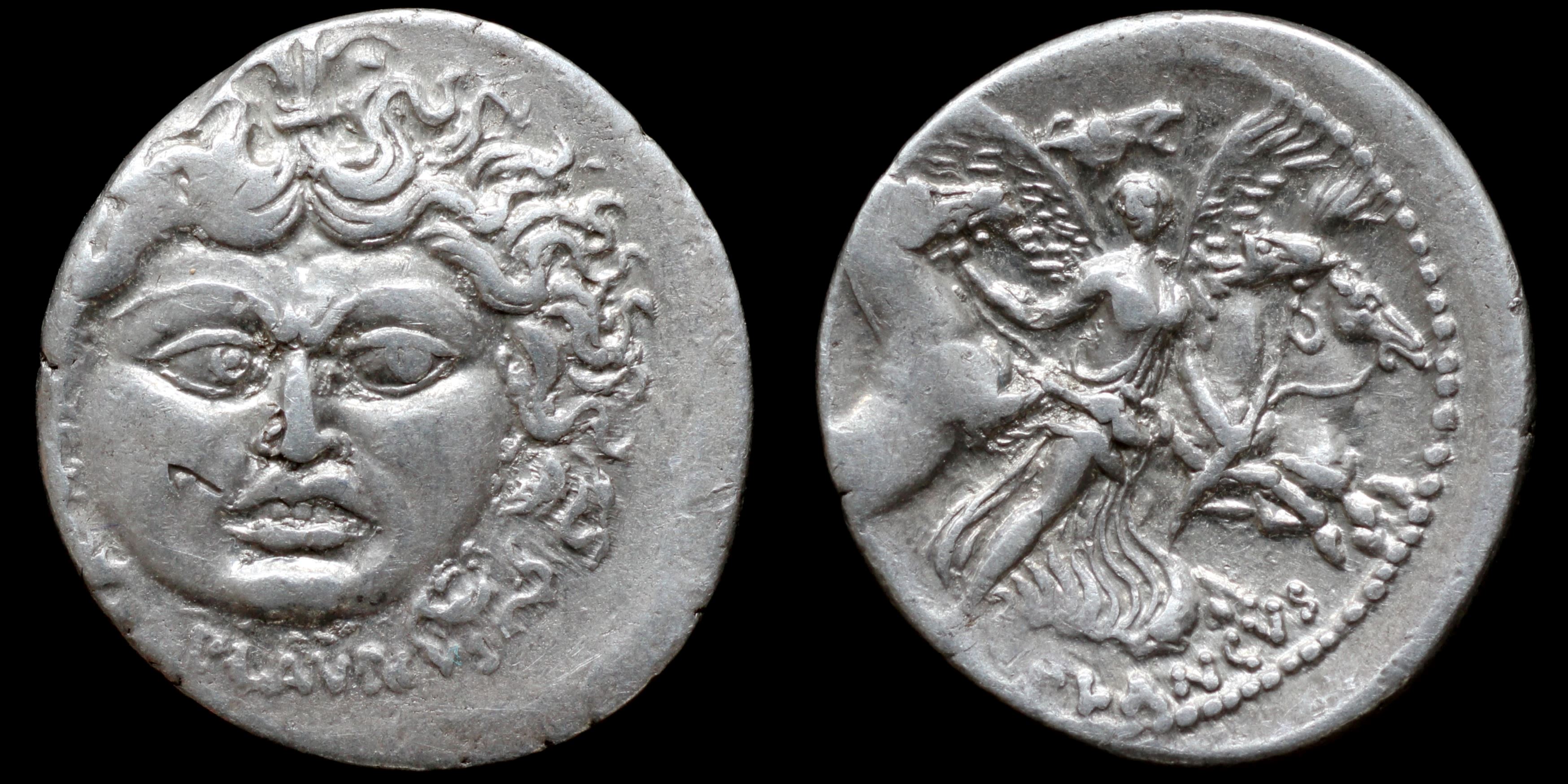
Reverse: Aurora flying right with head slightly left conducting 4 horses; PLANCVS
Die Orientation: -
Weight: 3.9 g
(16).JPG)
Reverse: Aurora flying right, conducting the four horses of the sun and holding palm frond; PLANCVS below
Die Orientation: 4 H
Weight: 3.86 g
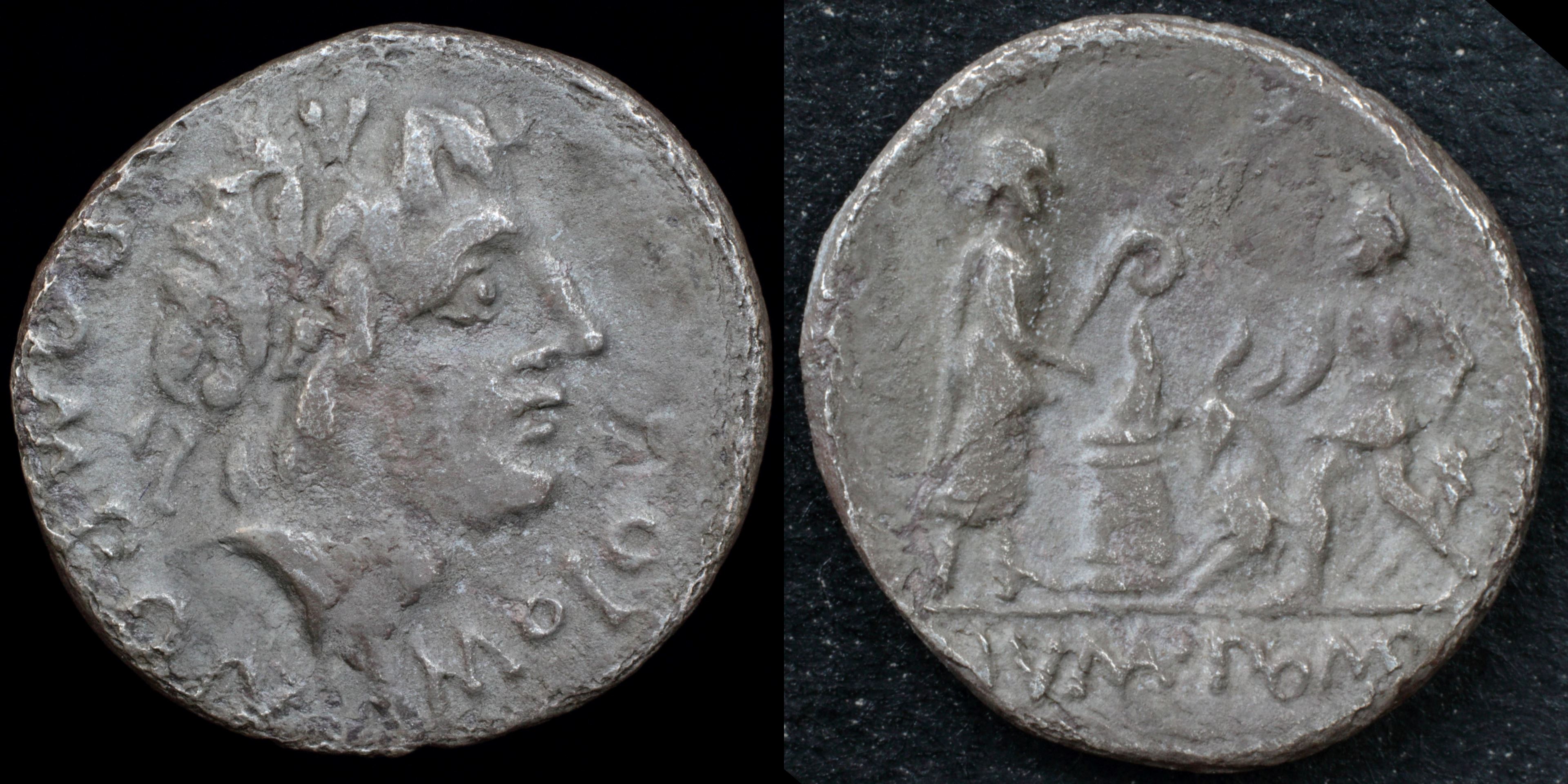
Reverse: Numa Pompilius holding litus, standing right before altar preparing to sacrifice a goat which is being held by a youth NV(MA)·PO(MP)IL
Die Orientation: -
Weight: 3.46 g
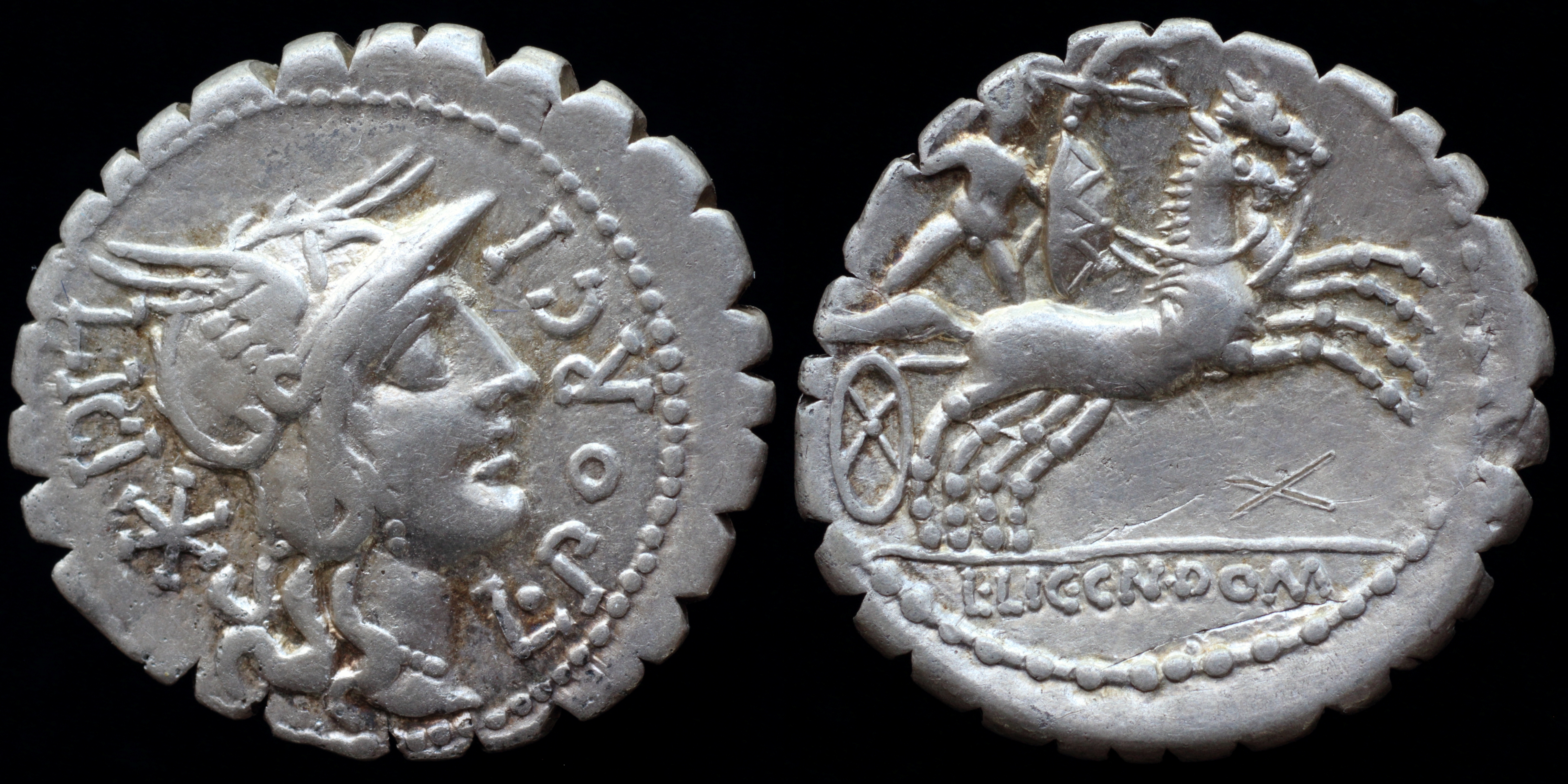
Reverse: naked Gallic warrior riding in biga right, holding spear, reins, shield and carnyx; L·LIC·CN·DOM
Die Orientation: -
Weight: 3.9 g
Narbo mint L. Licinius Crassus and Cn. Domitius Ahenobarbus Narbo, the first colony in Gaul, was founded 118-117 BC. L. Licinius Crassus and Cn. Domitius Ahenobarbus were officials charged with founding colony (duoviri coloniae deducendae). L. Porcius Licinus was one of 5 officials charged with production of denarii (curatorec denariorum flandorum). Reverse probably commemorates victory of Cn. Domitius Ahenobarbus (consul 122 BC) in southern Gaul. He and Q. Fabius Maximus attacked united Gallic tribes of Allobrogi and Averni led by Bituitus at the confluence of Rhone and Isere. Their triumph was celebrated in 120 BC.
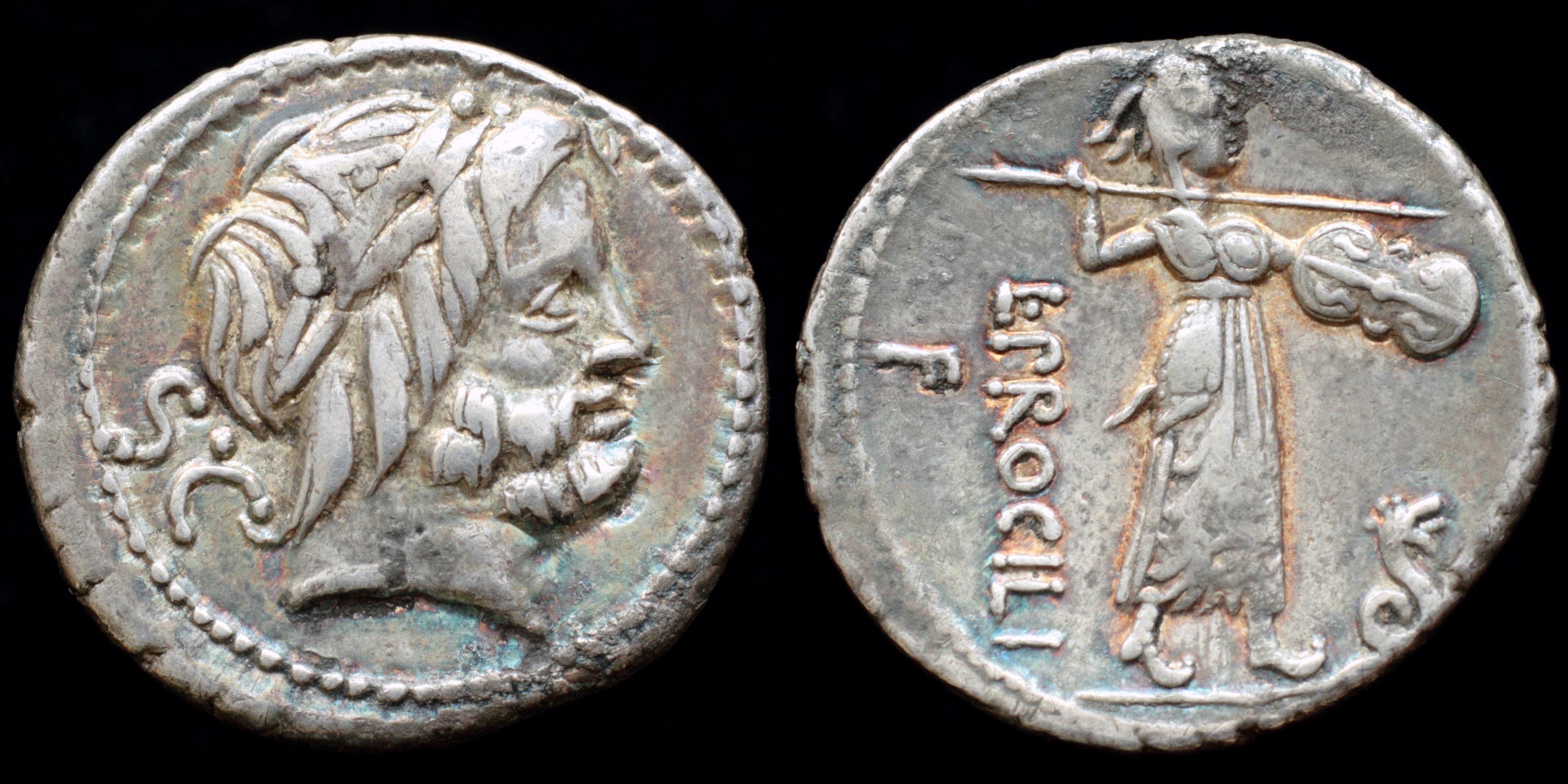
Reverse: Juno Sospita standing right, wearing goat skin, holding spear and shield; snake to the right, L.PROCILI / F
Die Orientation: -
Weight: 3.8 g
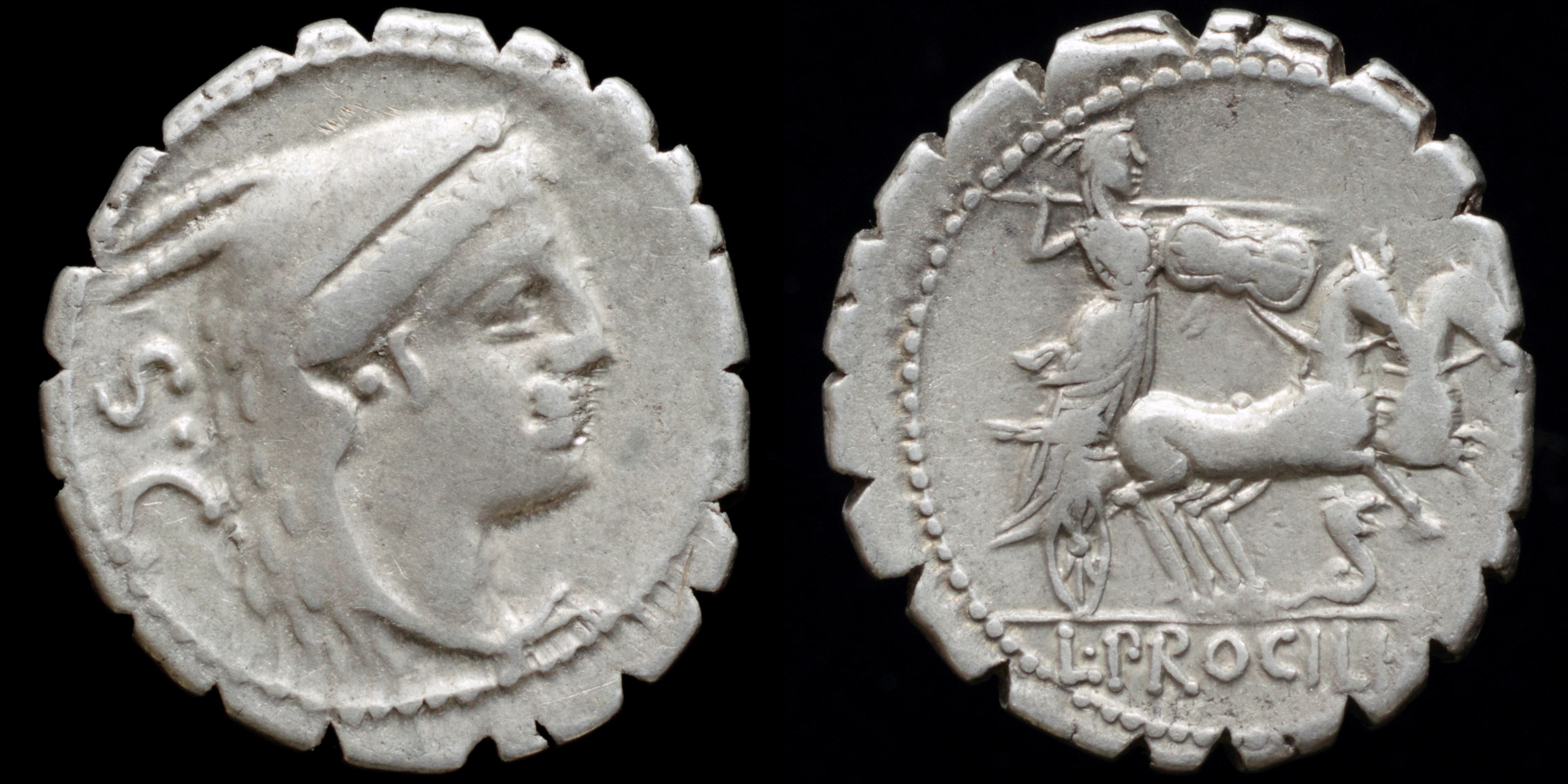
Reverse: Juno Sospita in biga right holding spear, reins and shield, snake below, L.PROCILI.F
Die Orientation: -
Weight: 3.9 g
Juno Sospita offered protection to women, accompanying them throughout their lives from birth to death. She was often called upon by infertile women to aid in conception. Juno Sospita had a two temples at Rome, but her most famous temple was at Lanuvium. Her statue there, as described by Cicero and as depicted on coinage, wore a goatskin coat with a goat-horned headdress. Her attribute, the serpent, inhabited a grotto near her temple, and was fed annually by a young girl, who, if a virgin, escaped unharmed, but if not, was destroyed.
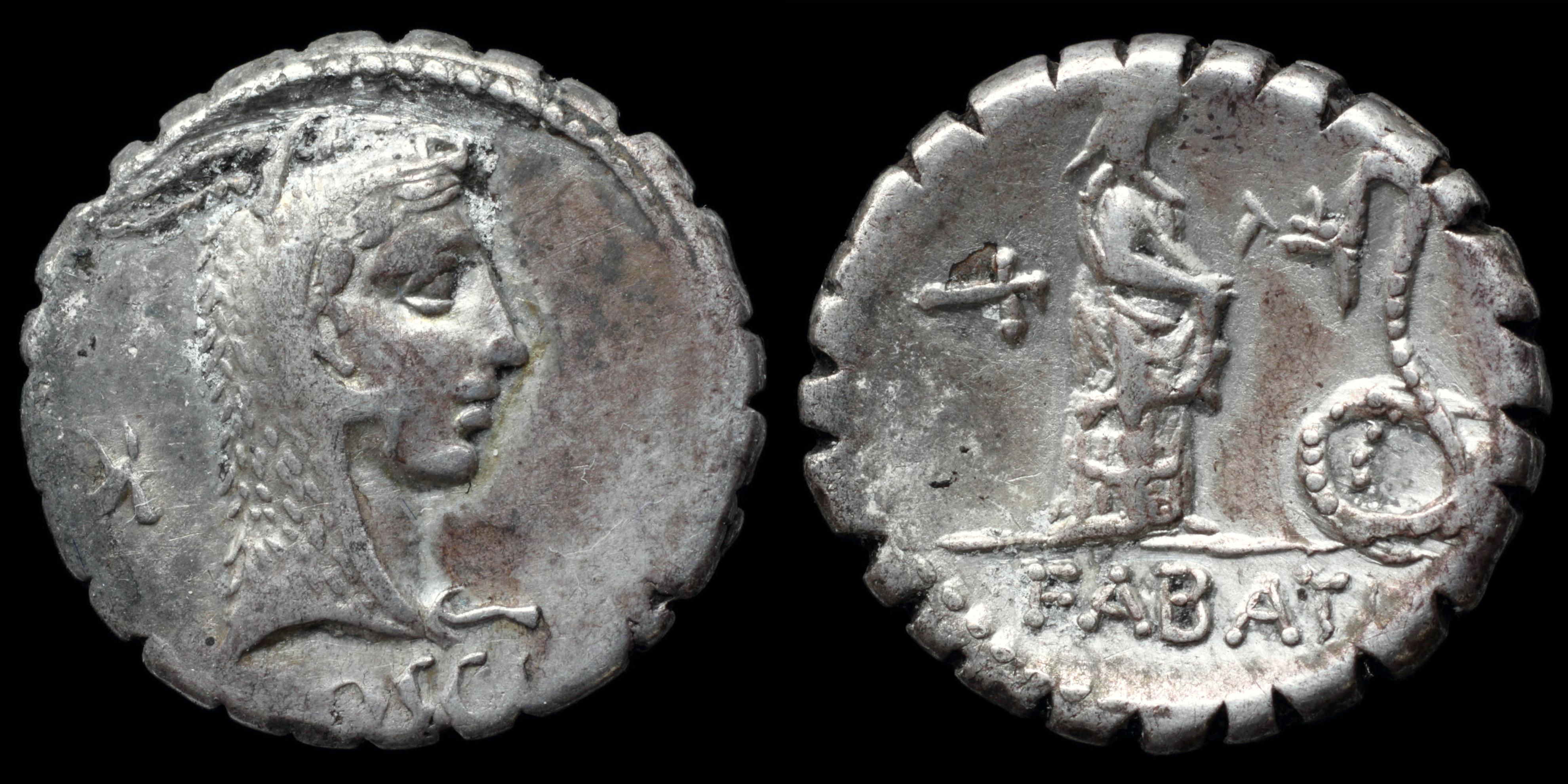
Reverse: maiden standing right, feeding erect serpent; controlmark / FABATI
Die Orientation: -
Weight: 3.8 g
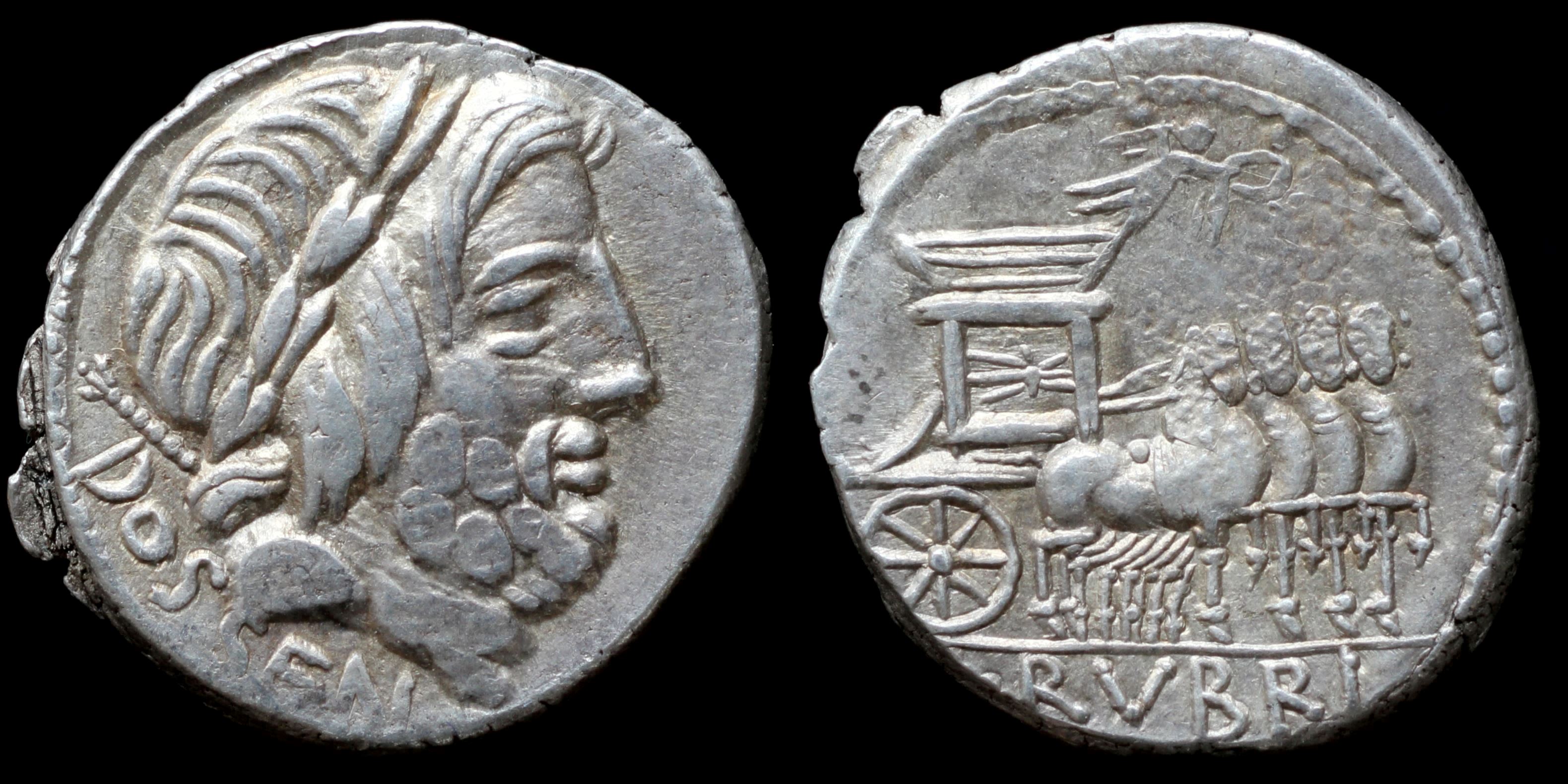
Reverse: Triumphal chariot with thunderbolt as decoration on side panel decorated; Victory flying right above chariot, holding wreath L.RVBRI
Die Orientation: -
Weight: 3.95 g
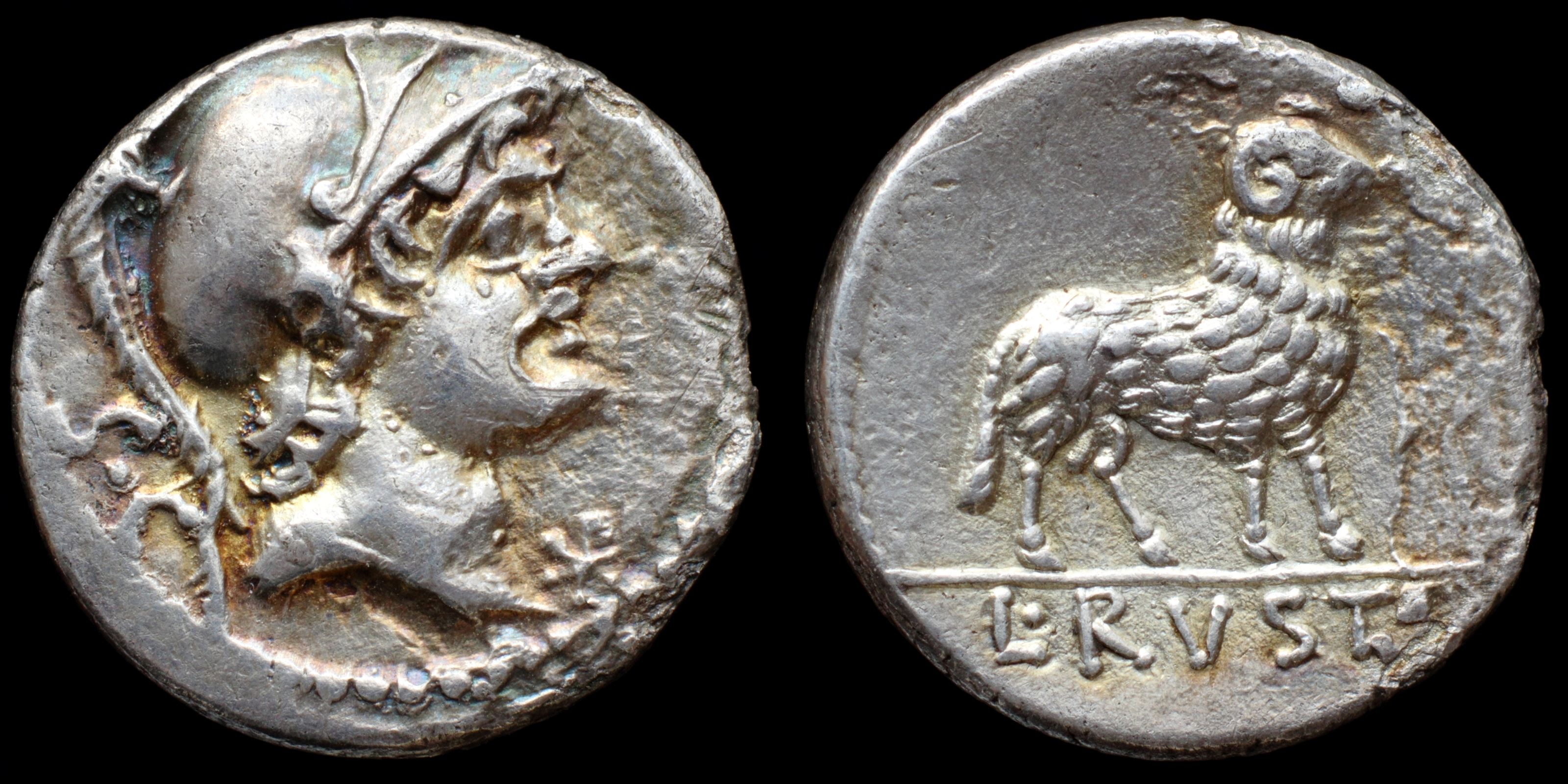
Reverse: ram right; L·RVSTI
Die Orientation: -
Weight: 3.7 g
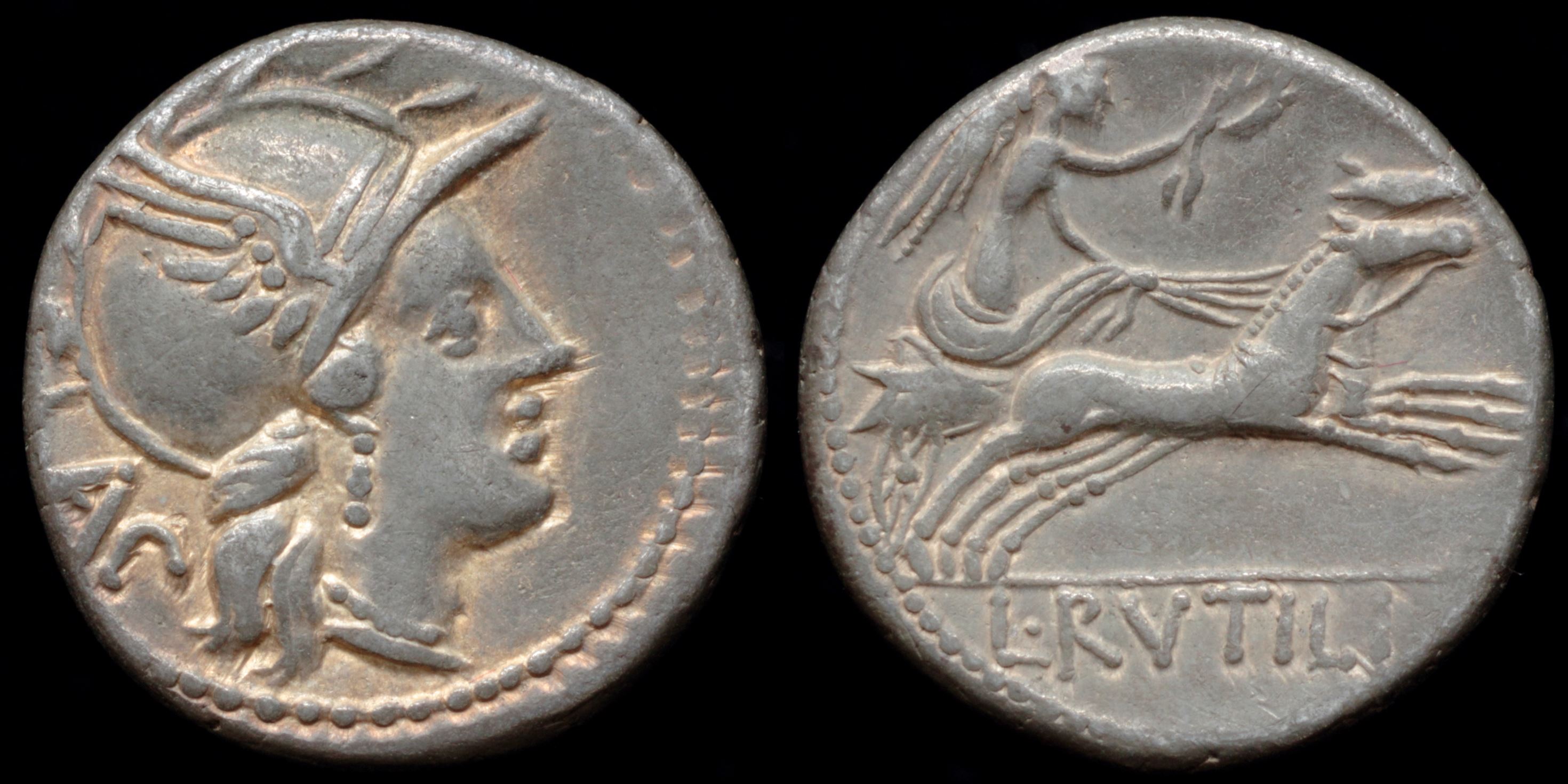
Reverse: Victory in biga right holding wreath and reins, L·RVTILI
Die Orientation: -
Weight: 3.88 g
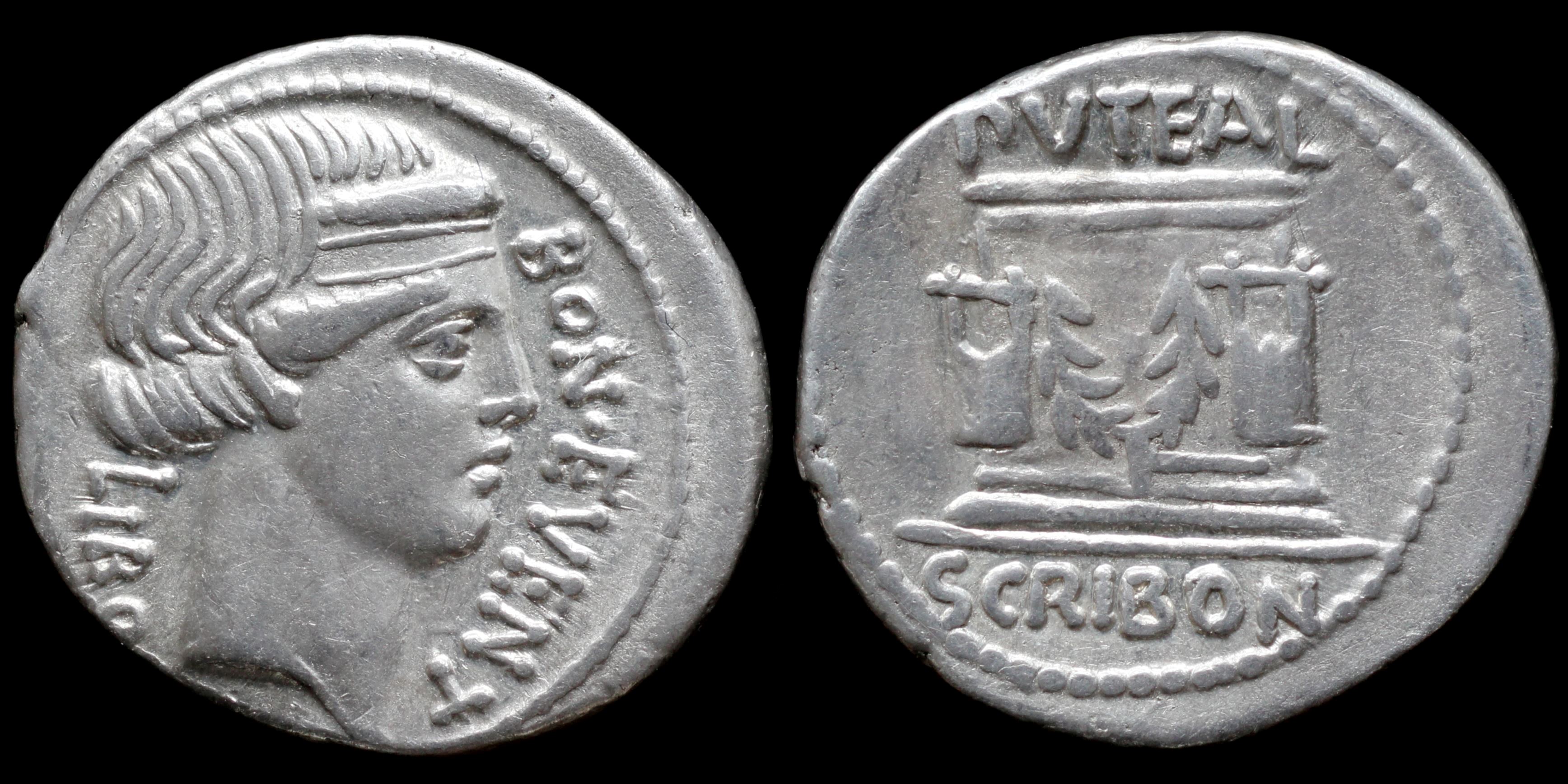
Reverse: Puteal Scribonianum ornamented with garland and two lyres, hammer at base; PVTEAL / SCRIBON
Die Orientation: -
Weight: 4.1 g
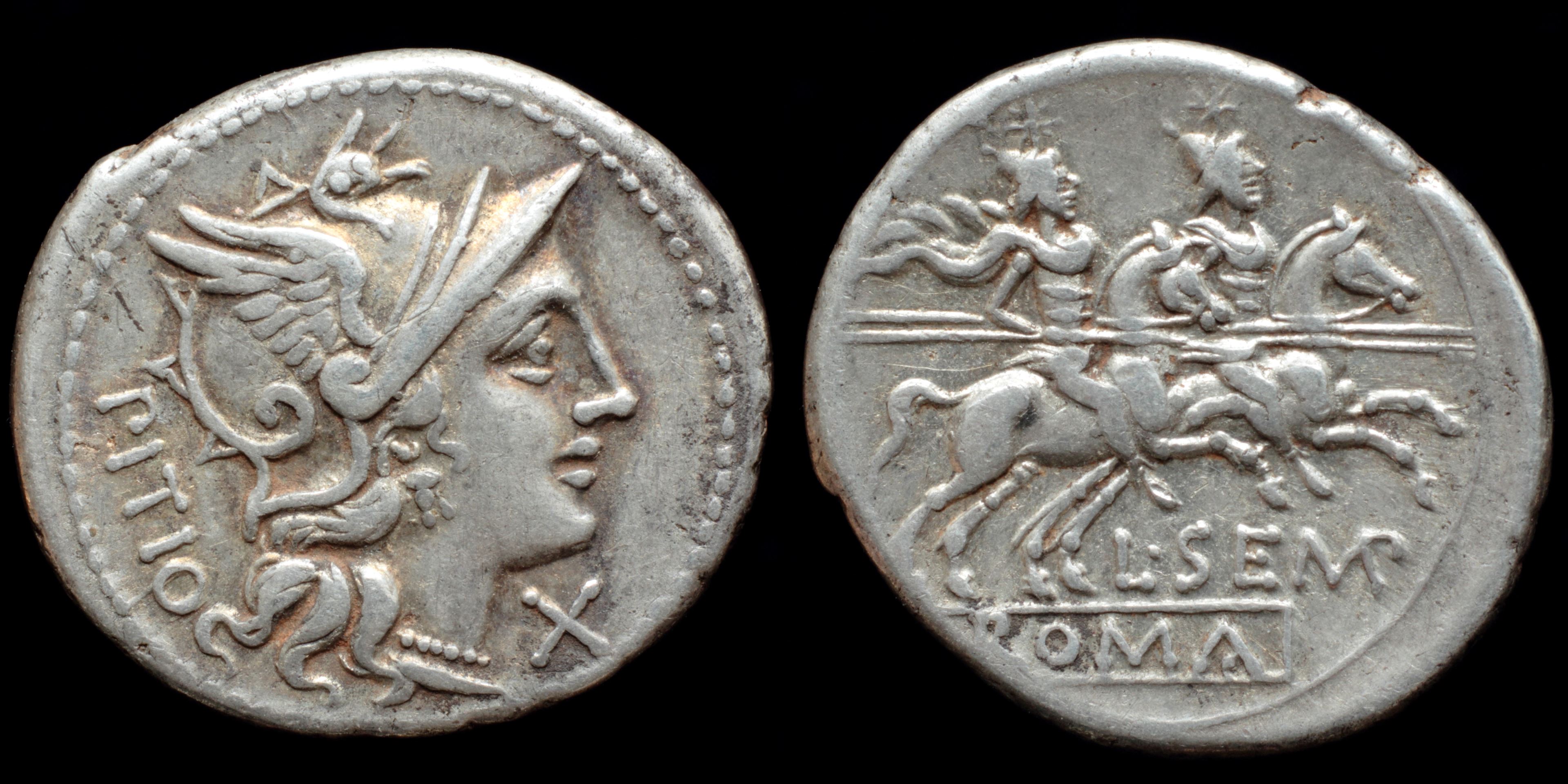
Reverse: Dioscuri right riding on horses, stars over pilei, each holding spear reins L·SE(MP) ROMA
Die Orientation: -
Weight: 4 g
(1).jpg)
Reverse: The Dioscuri, each holding spear, riding right; L•SEMP below, ROMA in linear frame in exergue
Die Orientation: 12 H
Weight: 4.54 g
CNG Feature Auction 114; Lot 554. Ex. Spink Auction 19004 (27.03.2019); Lot 159 (hammer £850). Previously purchased from Baldwin’s on 29th August 1968 (£60).
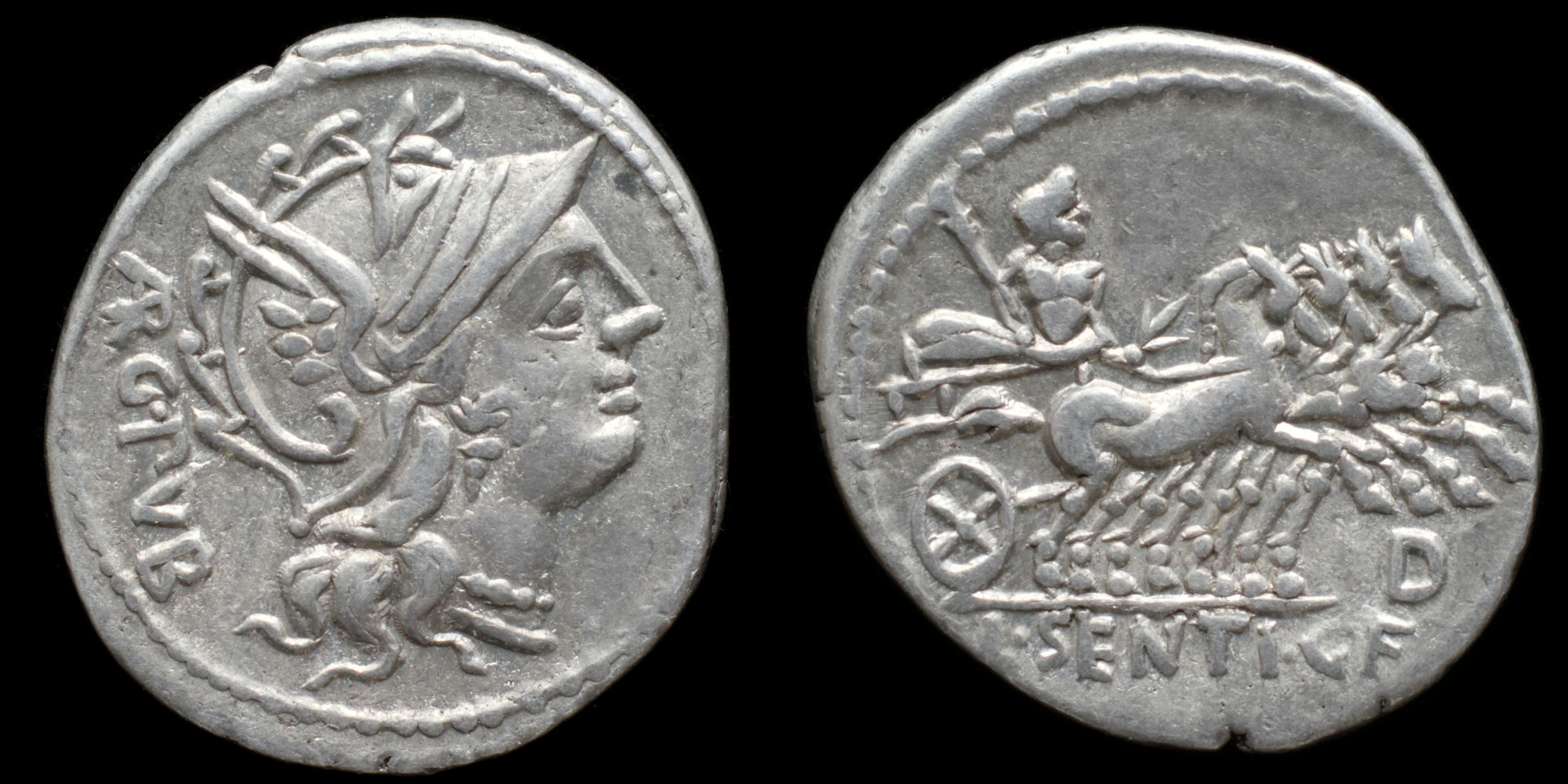
Reverse: Jupiter in quadriga right, holding scepter, thunderbolt and reins; D / L·SENTI·C·F
Die Orientation: -
Weight: 4 g
(10).JPG)
Reverse: Bull charging right, X above, L•THORIVS below, BALBVS in exergue
Die Orientation: 7 H
Weight: 3.8 g
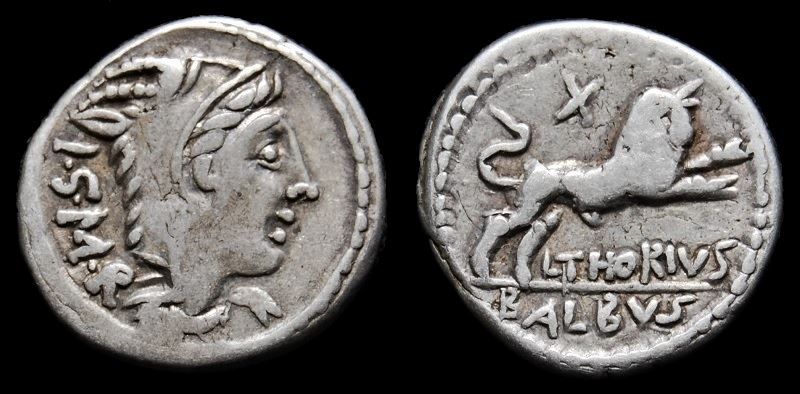
Reverse: Bull charging to right, L THORIVS below, BALBVS in exergue, X above.
Die Orientation: 6 H
Weight: 3.9 g
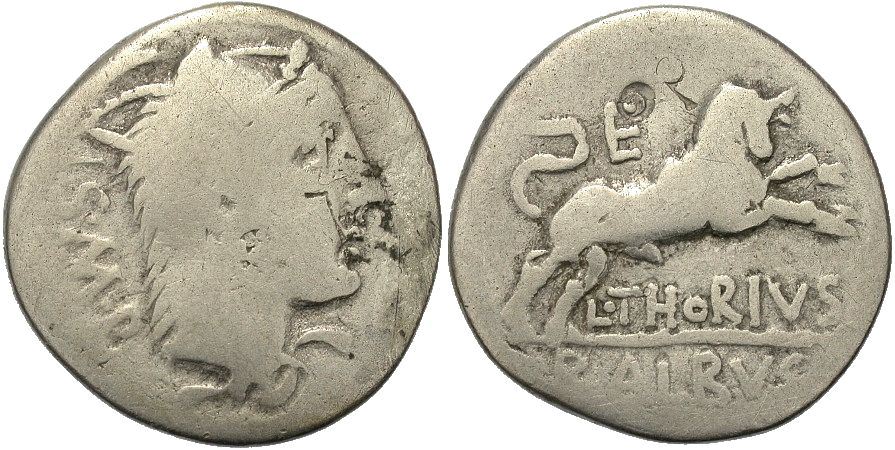
Reverse: Bull charging right, E (control letter) above, L.THORIVS below, BALBVS in exergue
Die Orientation: 6 H
Weight: 3.5 g
The cognomen 'Balbus' literally means 'stammerer', and was used to denote a particular branch within a Gens.
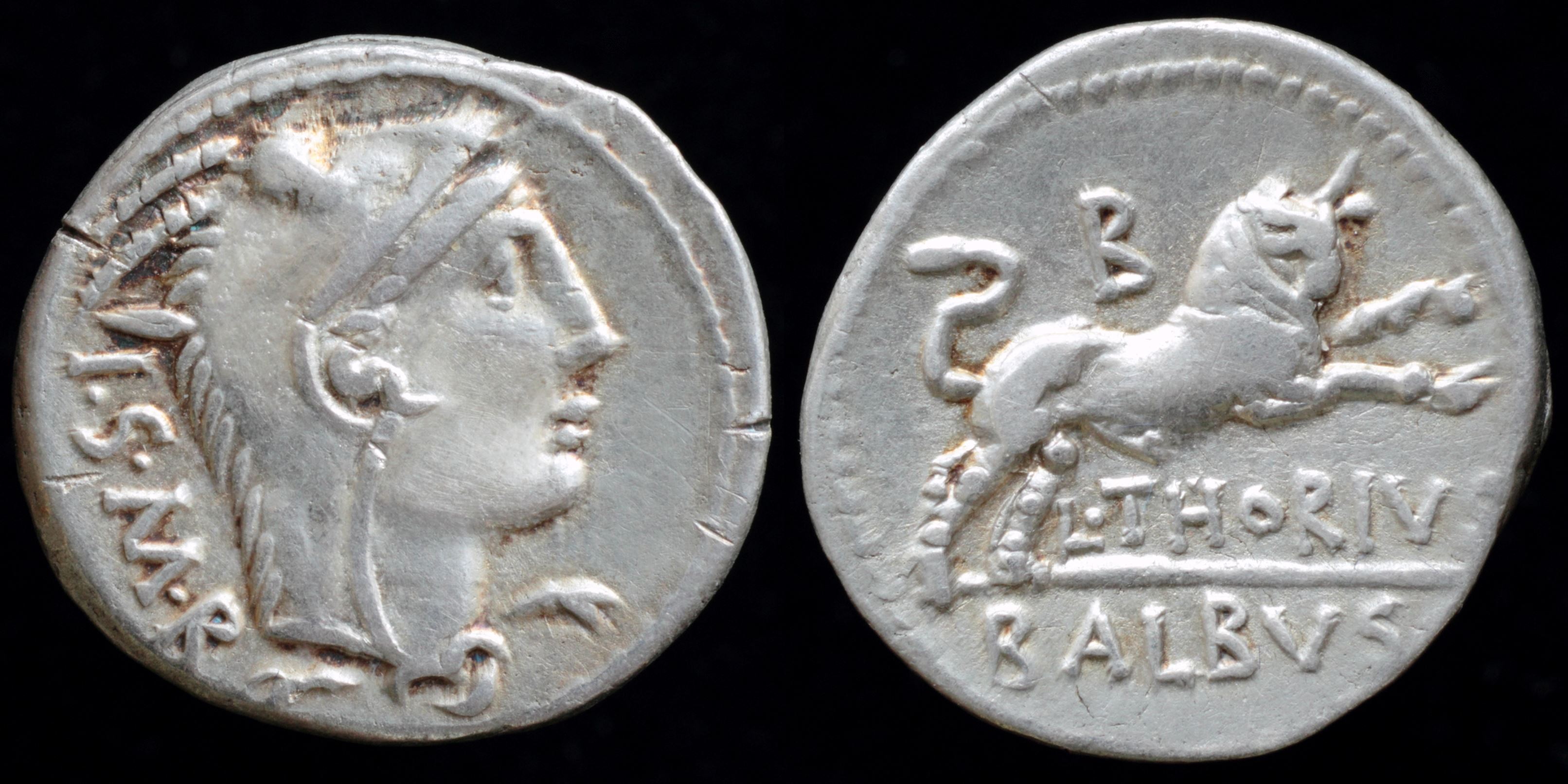
Reverse: bull charging right B L·THORIVS BALBVS
Die Orientation: -
Weight: 3.9 g
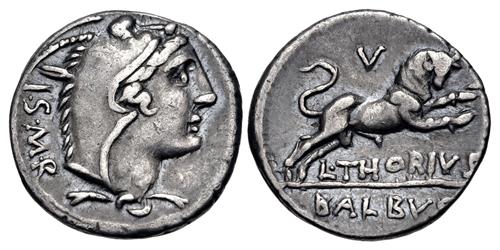
Reverse: Bull charging right; V above
Die Orientation: 7 H
Weight: 3.84 g
Excellent style, with attractive toning. Came with a 1930's hand-written envelope.
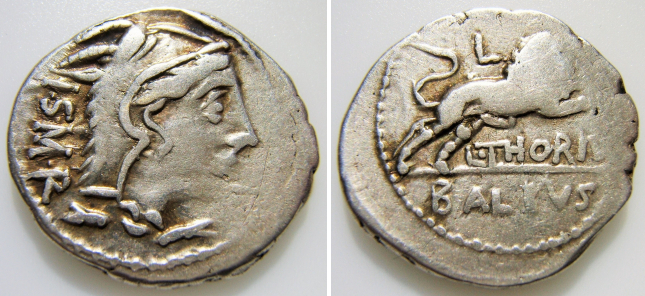
Reverse: L•THORIVS BALBVS / L - Bull charging right; L above.
Die Orientation: 6 H
Weight: 4.02 g
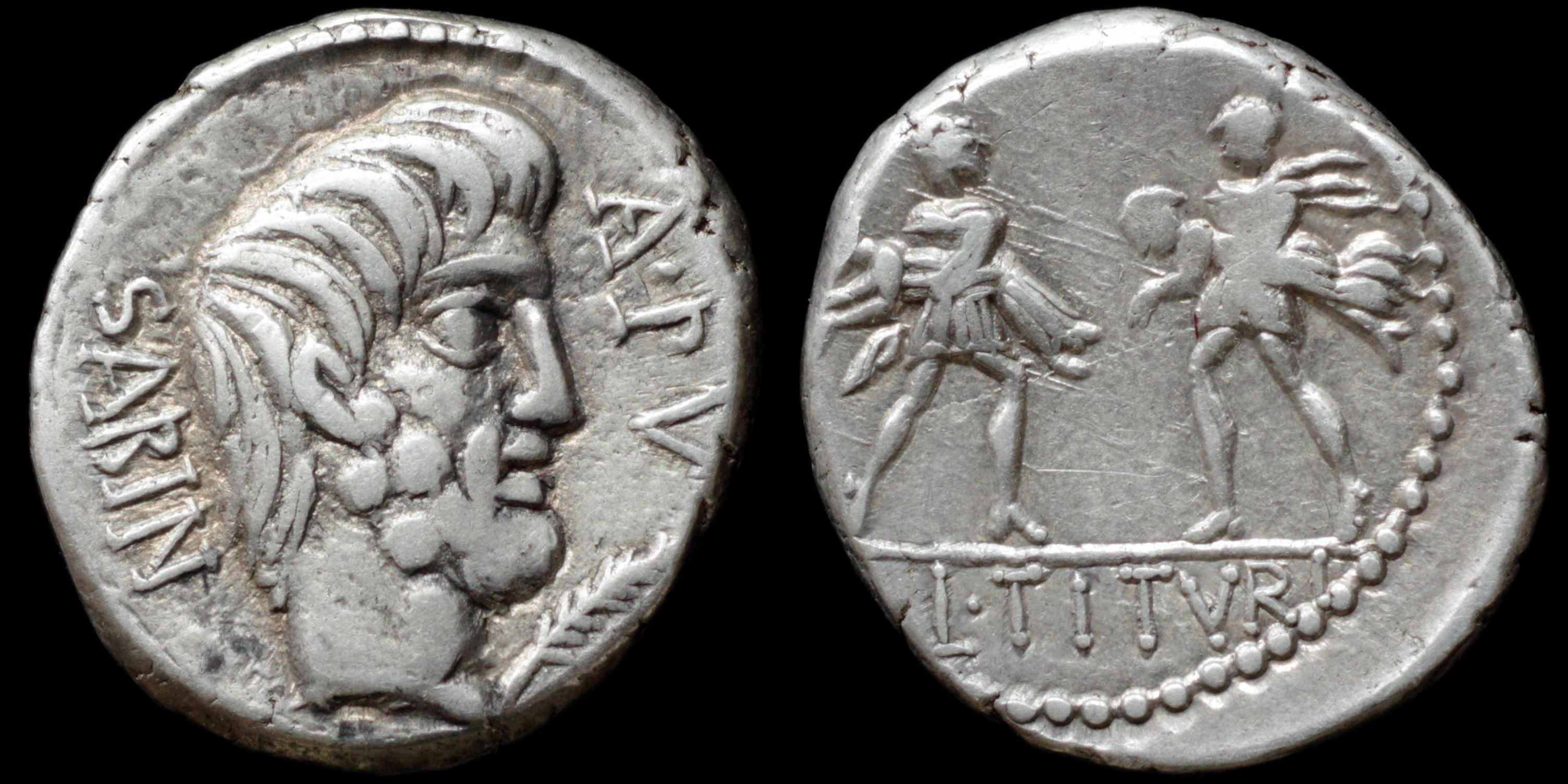
Reverse: two Roman soldiers running left, each bearing a Sabine woman in his arms L·TITVRI
Die Orientation: -
Weight: 4.2 g
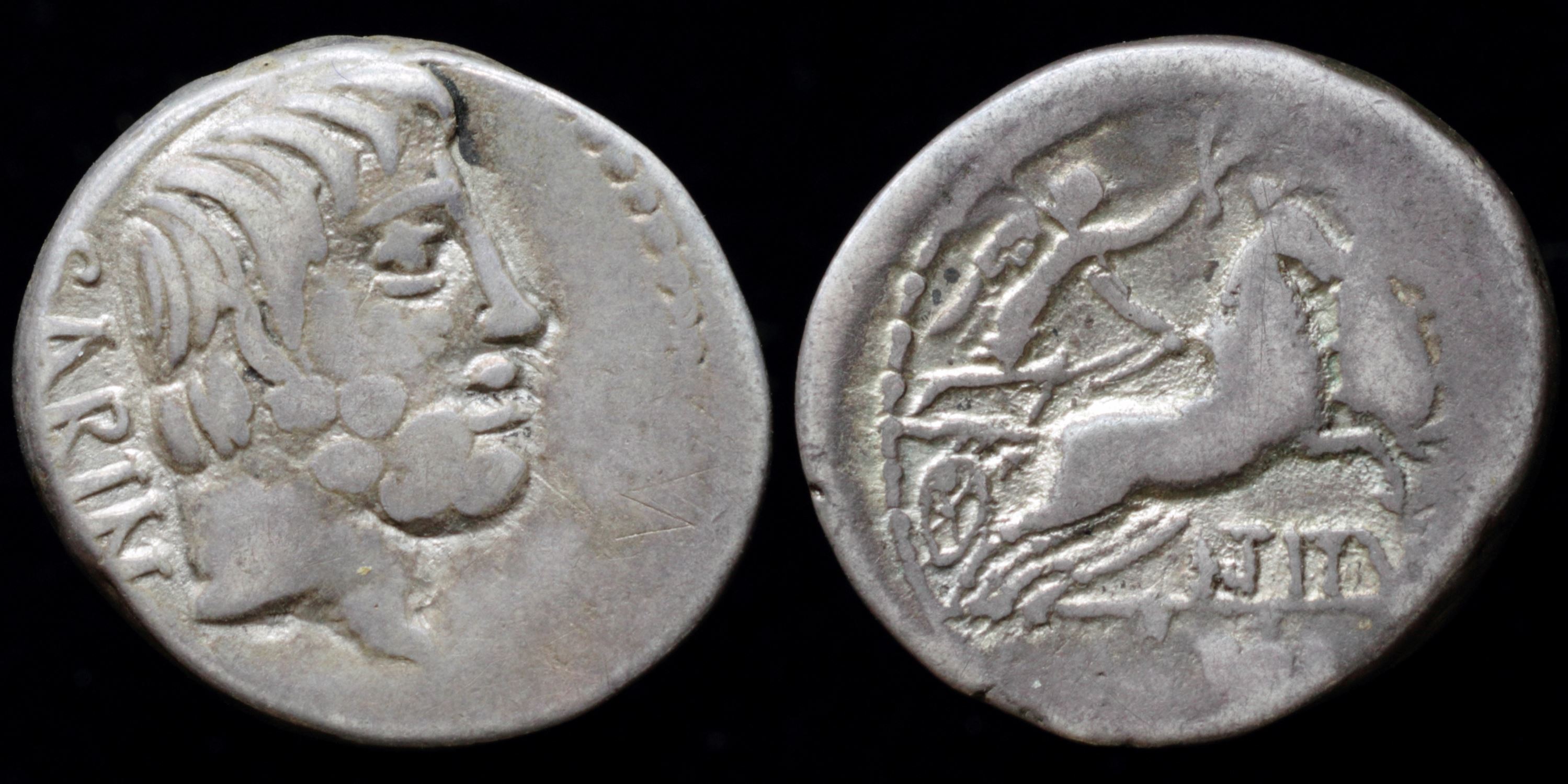
Reverse: Victory in biga right holding wreath and reins L·TITVRI, controlmark in exergue (trophy?)
Die Orientation: -
Weight: 3.91 g
.jpg)
Reverse: Mars walking left, holding spear and carrying trophy over left shoulder; L•VALERI FLACCI and apex before; corn-ear behind
Die Orientation: 2 H
Weight: 3.96 g
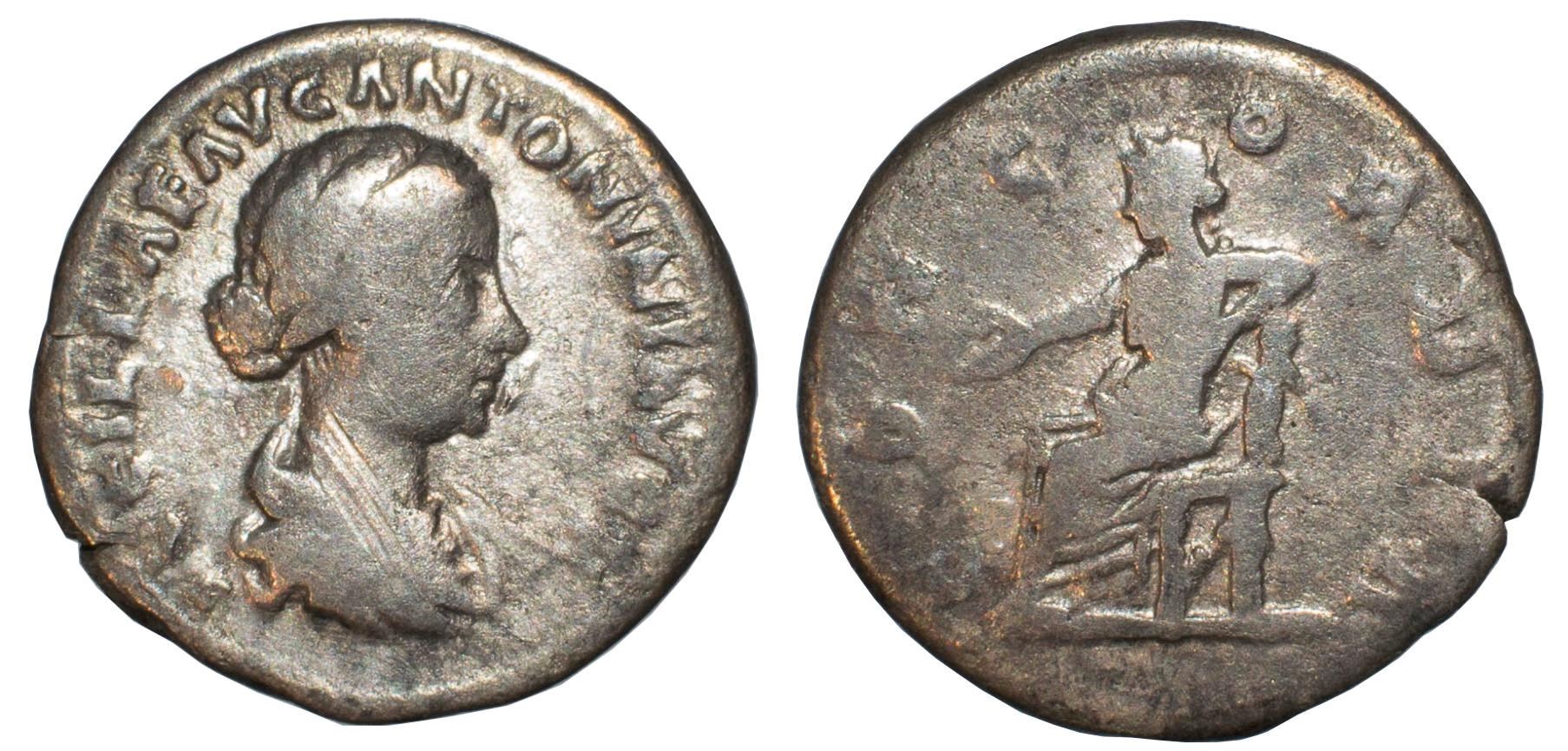
Reverse: CONCORDIA, seated left, holding patera & resting left arm on statue of spes
Die Orientation: 0 H
Weight: 3 g
.jpg)
Reverse: VOTA PVBLICA, Inscription in three lines within laurel wreath
Die Orientation: 6 H
Weight: 3.24 g
She became an Augusta in 164 AD upon the marriage to Lucius Verus who was co-Augustus with Marcus Aurelius.
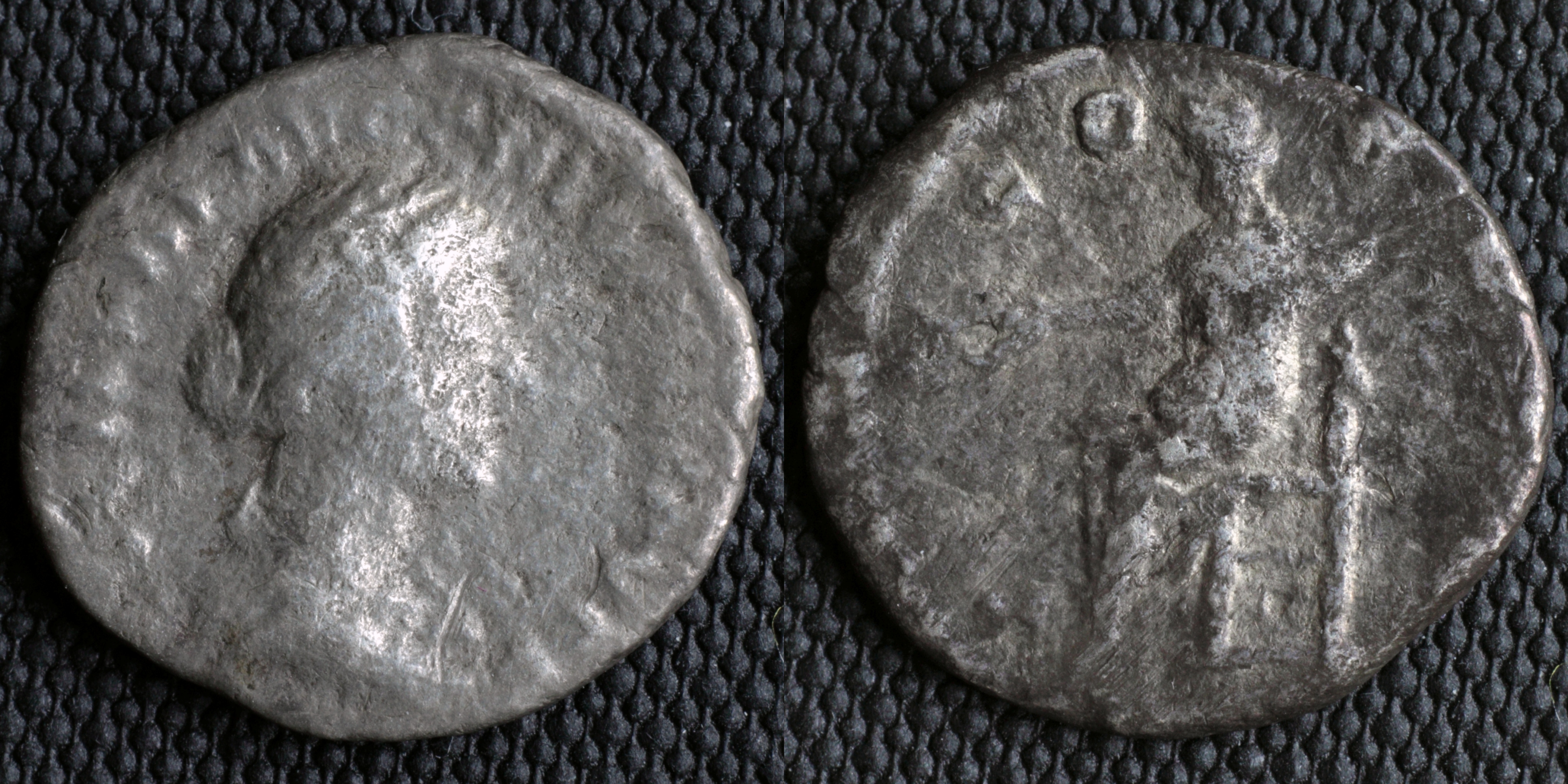
Reverse: Concordia seated left holding patera; CONCO_RDIA
Die Orientation: -
Weight: 2.8 g
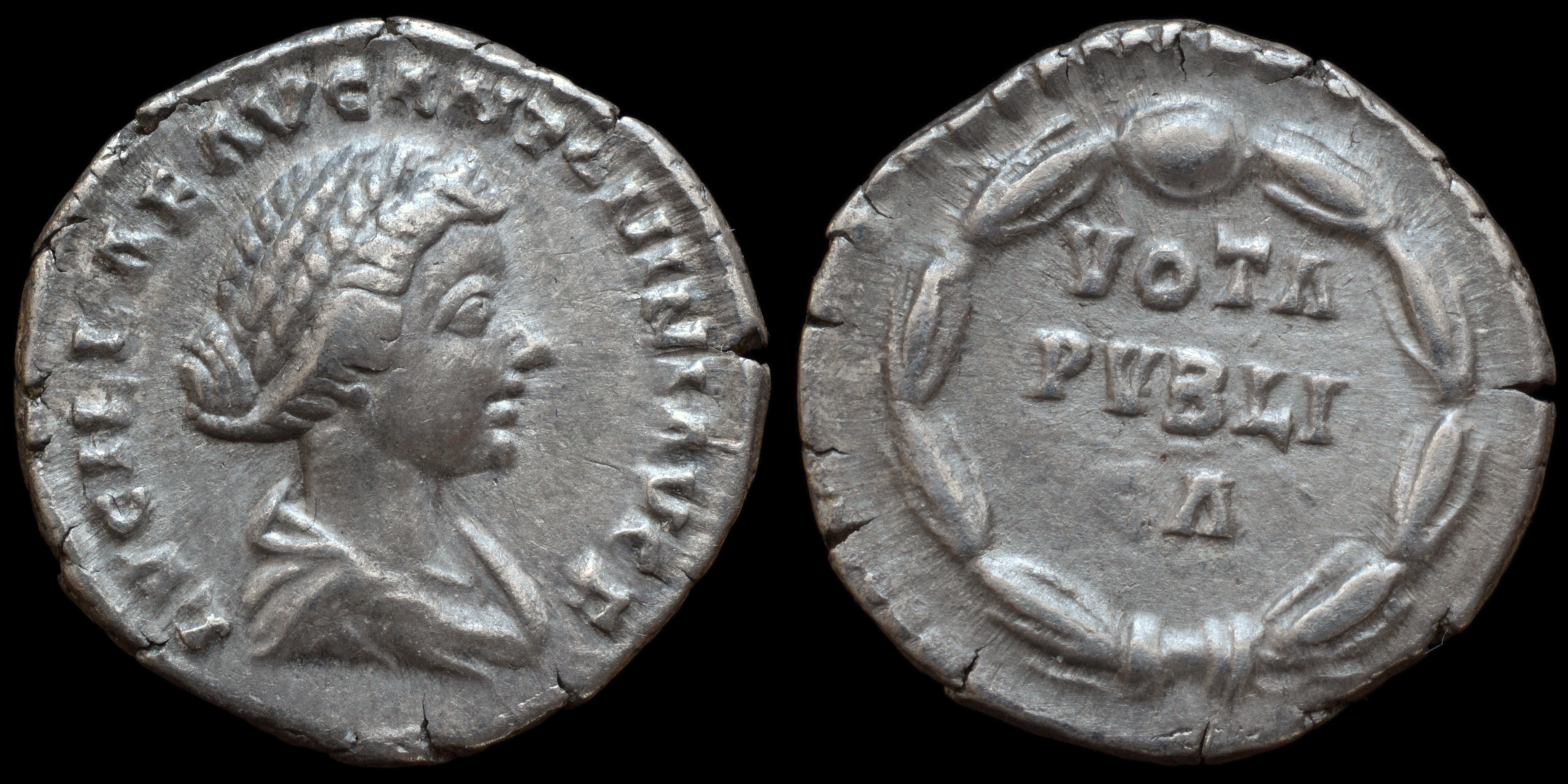
Reverse: legend within wreath; VOTA / PVBLI / CA
Die Orientation: -
Weight: 3.3 g
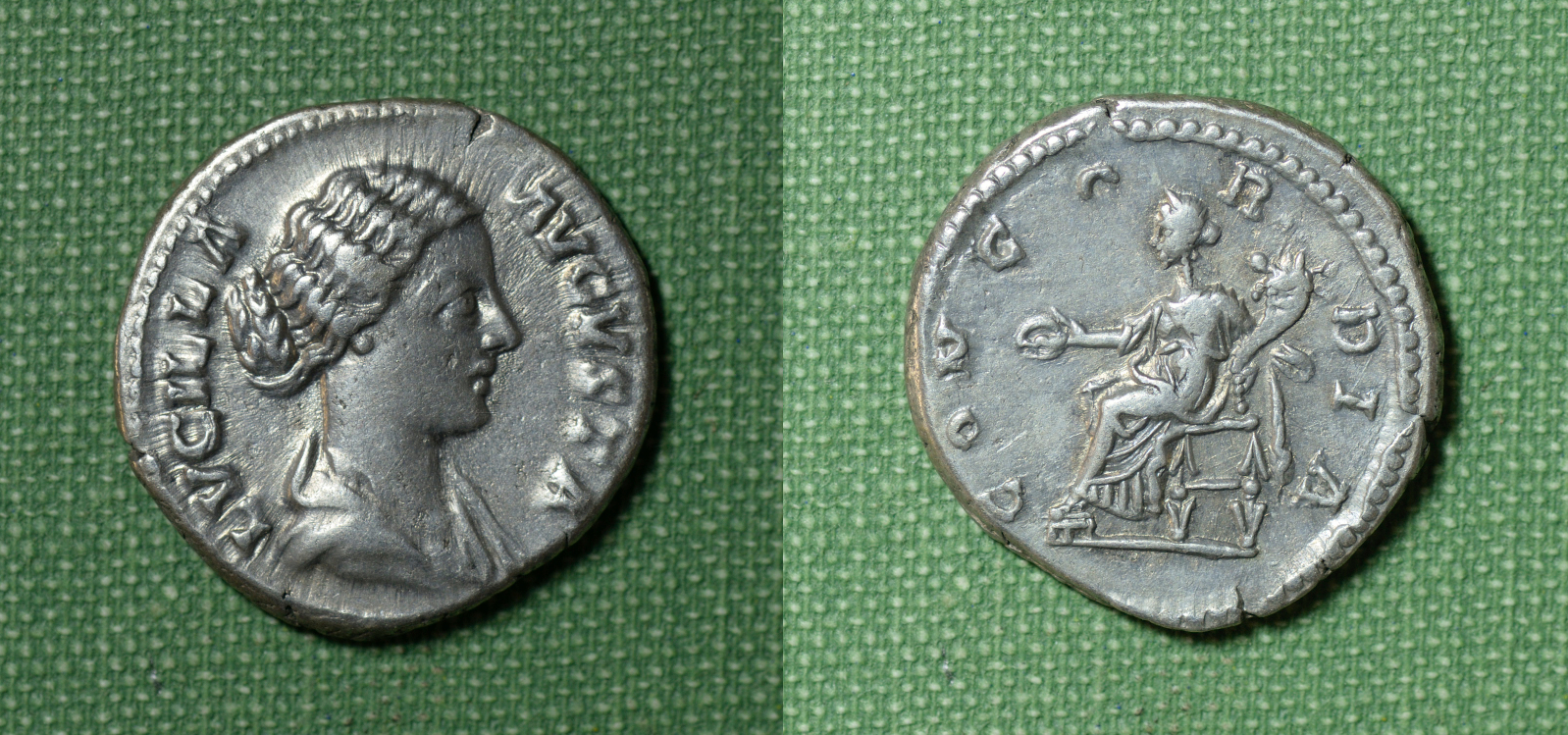
Reverse: Legend: CONCORDIA Type: Concordia, draped, seated left on low seat, holding patera in extended right hand and cornucopia in left hand
Die Orientation: 12 H
Weight: 3.56 g
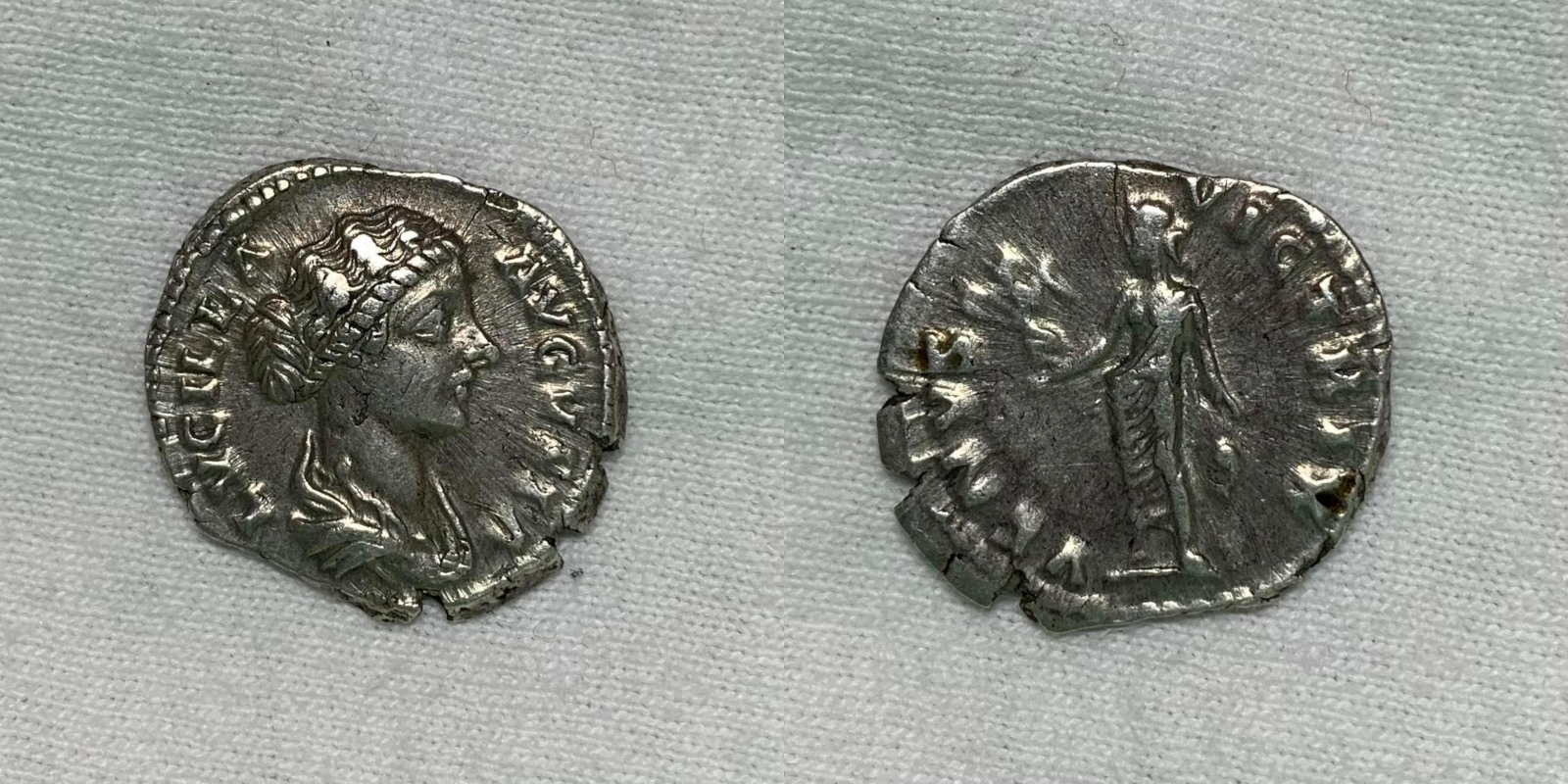
Reverse: VENVS VICTRIX: Venus, draped with right breast bare, standing facing left, holding Victory in extended right hand and resting left hand on shield on top of helmet set on ground
Die Orientation: 12 H
Weight: 2.66 g
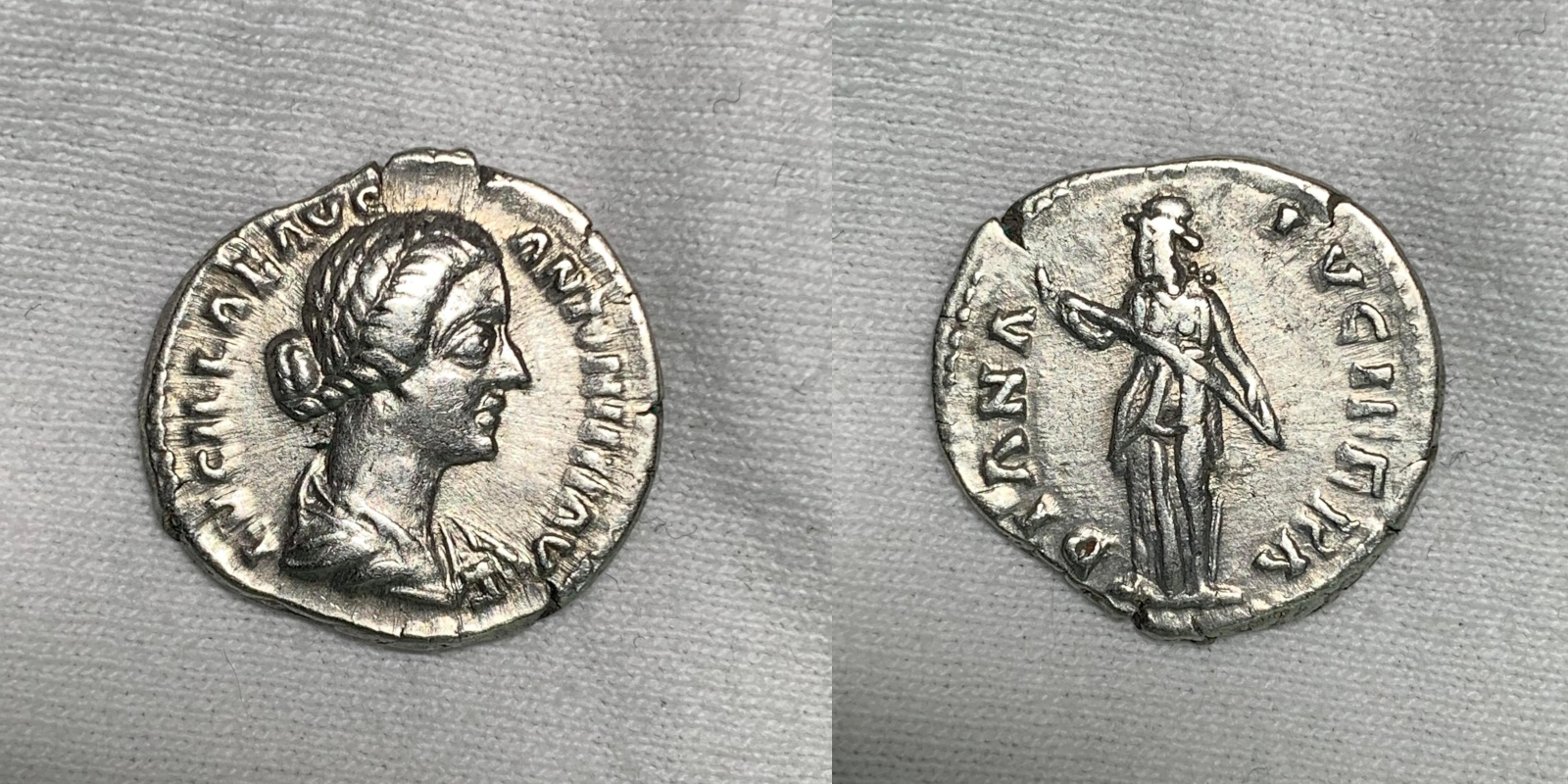
Reverse: DIANA LVCIFERA: Diana, draped, standing left, holding long lighted torch in both hands across body
Die Orientation: 6 H
Weight: 3.54 g
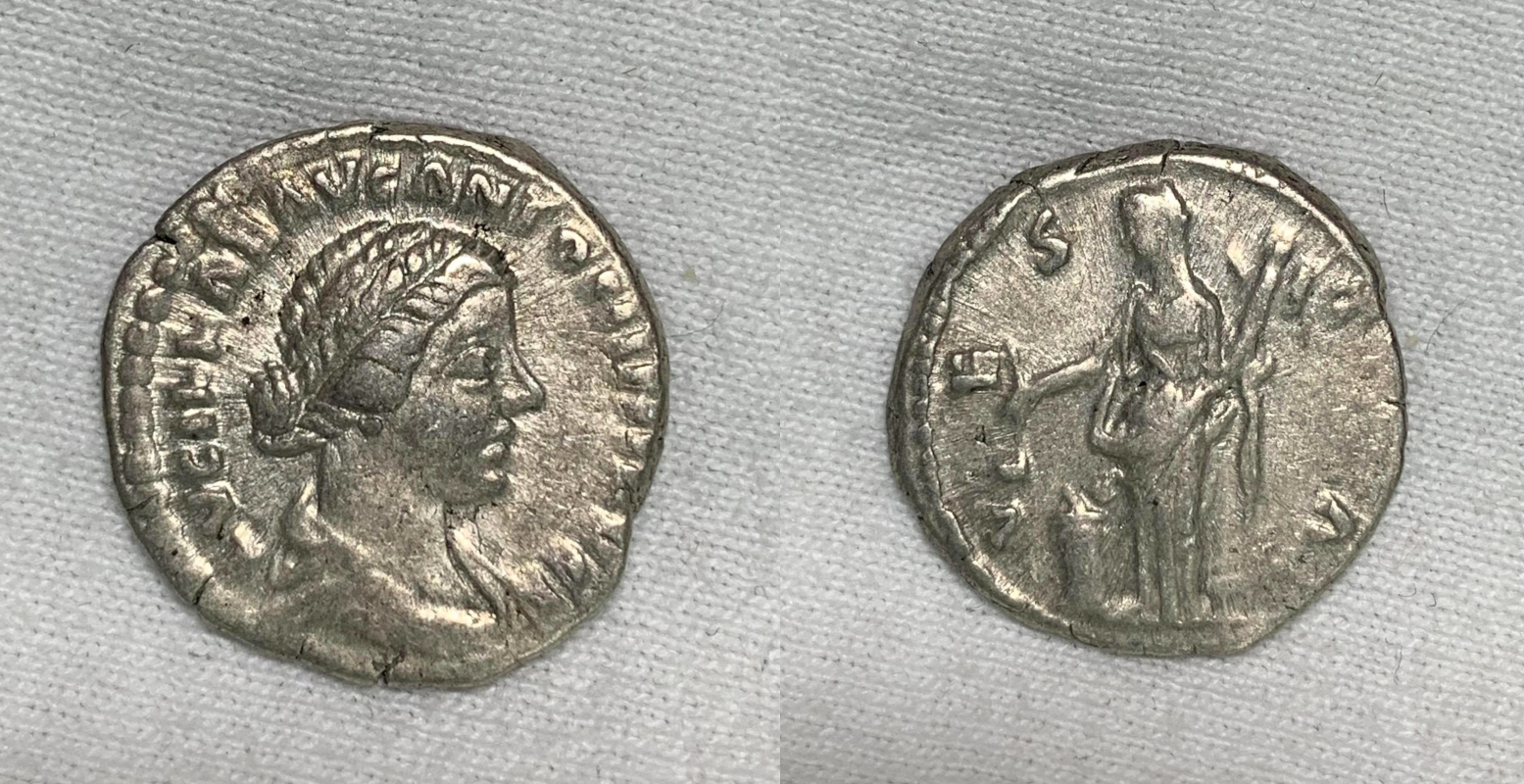
Reverse: VESTA: Vesta, veiled, standing left next to a decorated and lighted altar, holding simpulum in right hand and palladium in left hand
Die Orientation: 6 H
Weight: 3.2 g
RIC dates to 164-180 AD, CNG says 161-162, others claim 164-169 .
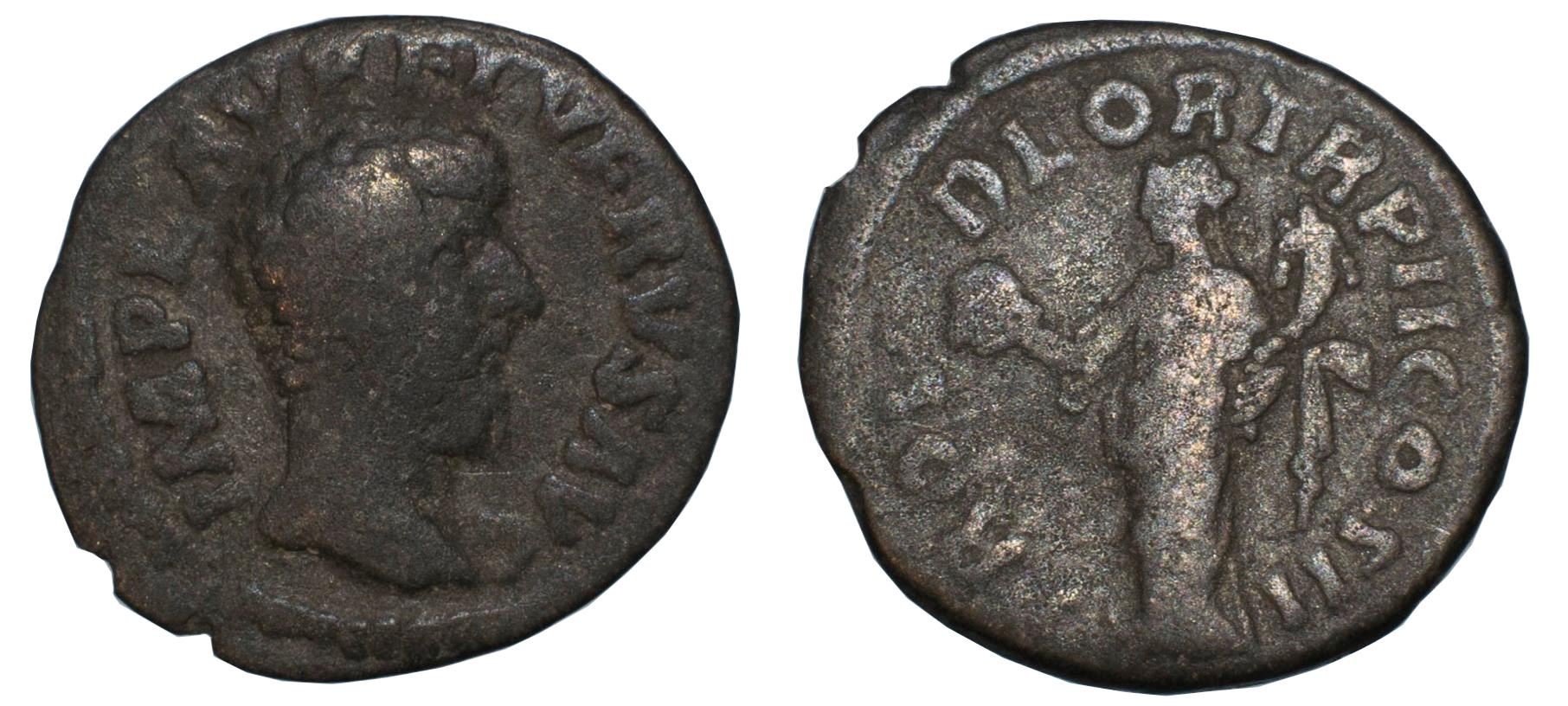
Reverse: PROV DEOR TRP III COS II, Providentia standing left, holding globe & cornucopiae
Die Orientation: 0 H
Weight: 2.2 g
(3).jpg)
Reverse: PROV DEOR TR P COS II, Providentia standing left, holding globe and cornucopiae.
Die Orientation: 8 H
Weight: 3.32 g
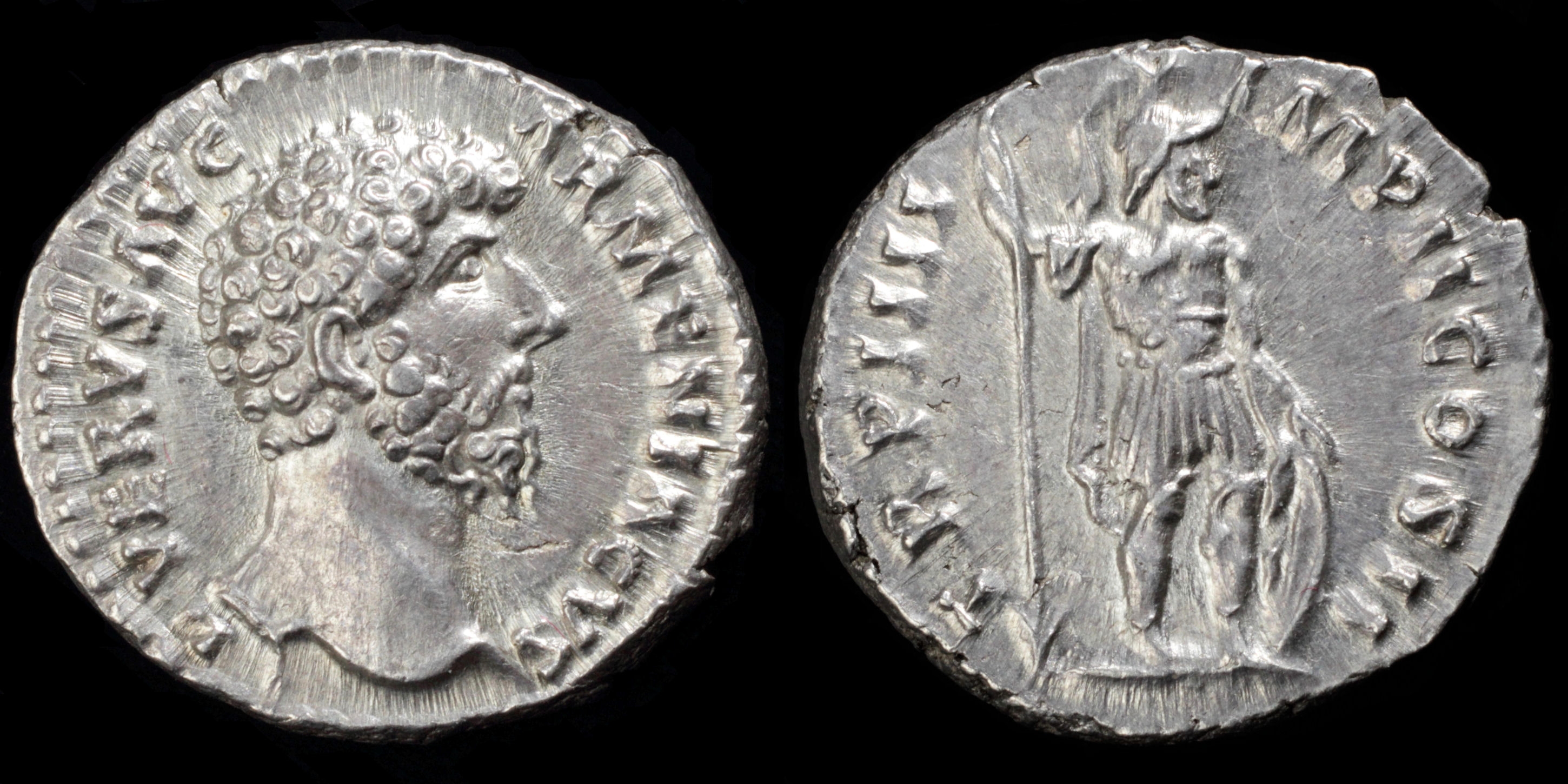
Reverse: Mars standing half right, wearing helmet and cuirass, holding spear and resting hand on shield; TR P IIII IMP II COS II
Die Orientation: -
Weight: 3.4 g
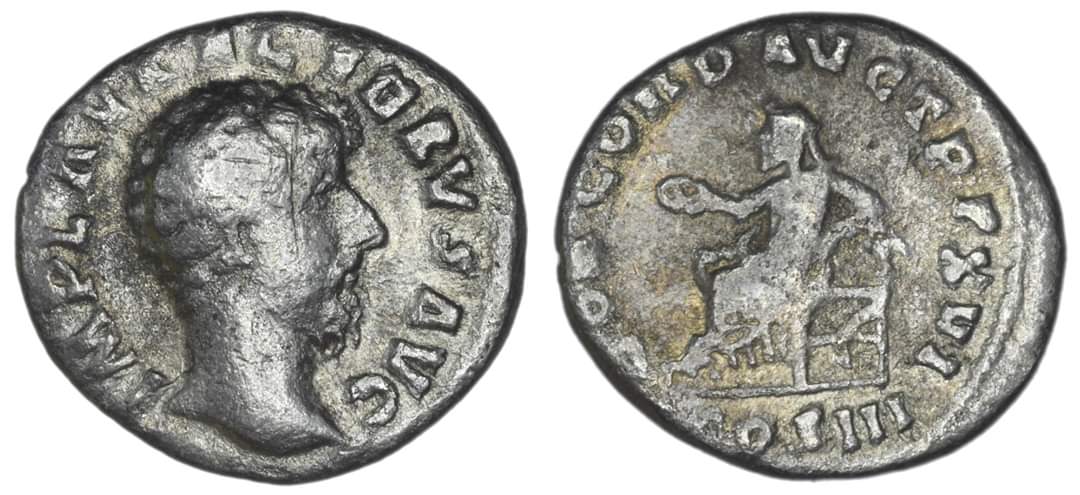
Reverse: CONCORD AVG TR P XVI / COS III
Die Orientation: -
Weight: -
.png)
Reverse: PROV DEOR TR P COS II, Providentia standing facing, head left, holding globe and cornucopia
Die Orientation: 6 H
Weight: 3.37 g
.jpg)
Reverse: PROV DEOR TR P COS II, Providentia standing facing, head left, holding globe and cornucopia
Die Orientation: 6 H
Weight: 3.37 g
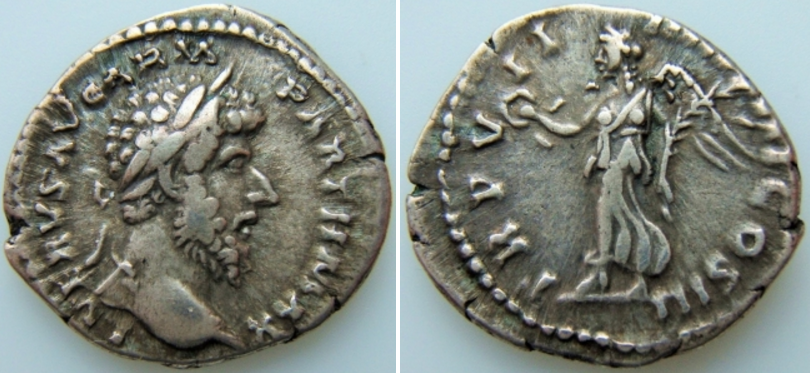
Reverse: TR P VII IMP IIII COS III - Victory advancing left with wreath and palm.
Die Orientation: 12 H
Weight: 3.38 g
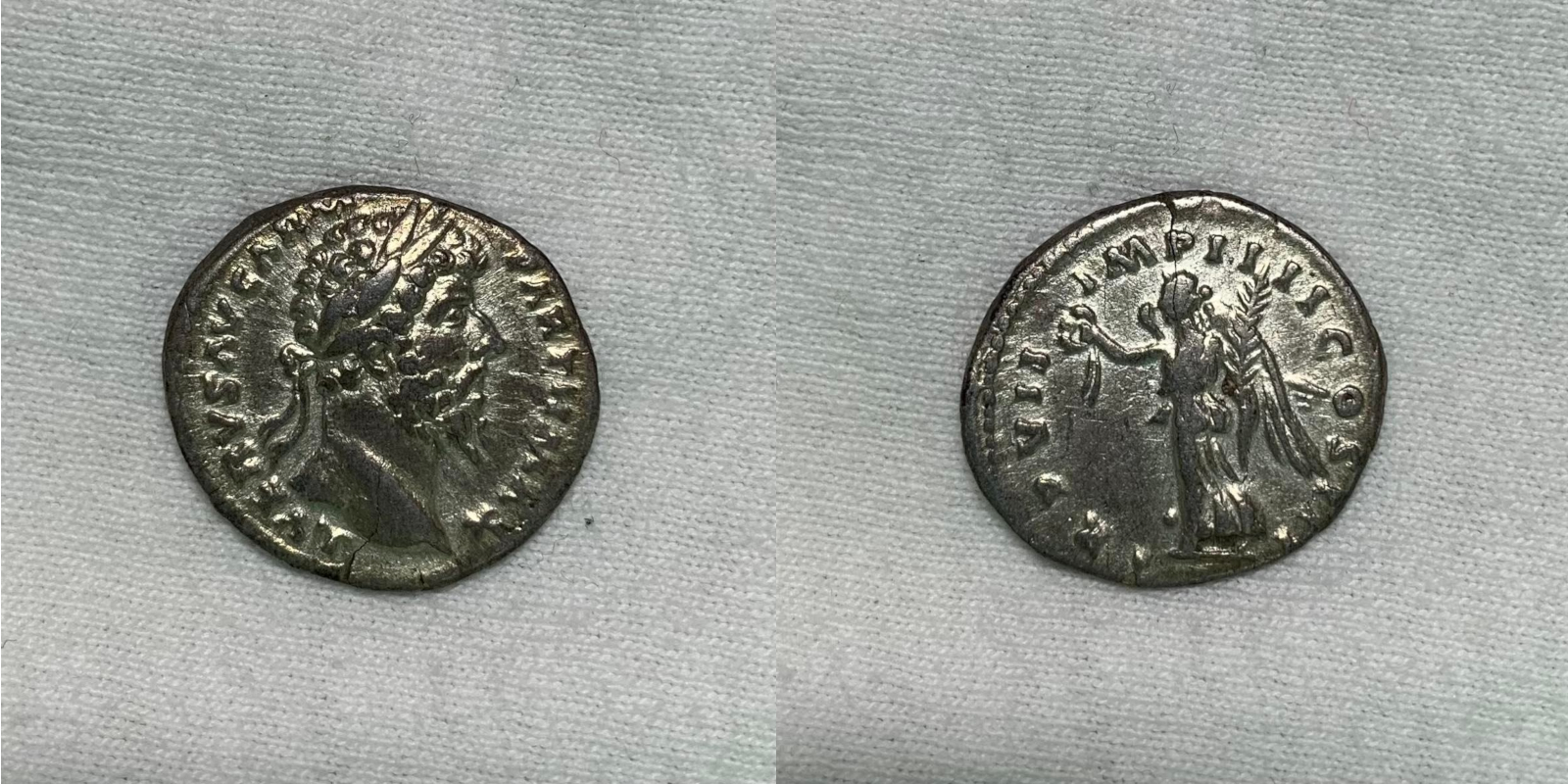
Reverse: TR P VII IMP IIII COS III: Victory, winged, draped, advancing left, holding wreath in extended right hand and palm, sloped over left shoulder, in left hand
Die Orientation: 6 H
Weight: 2.56 g
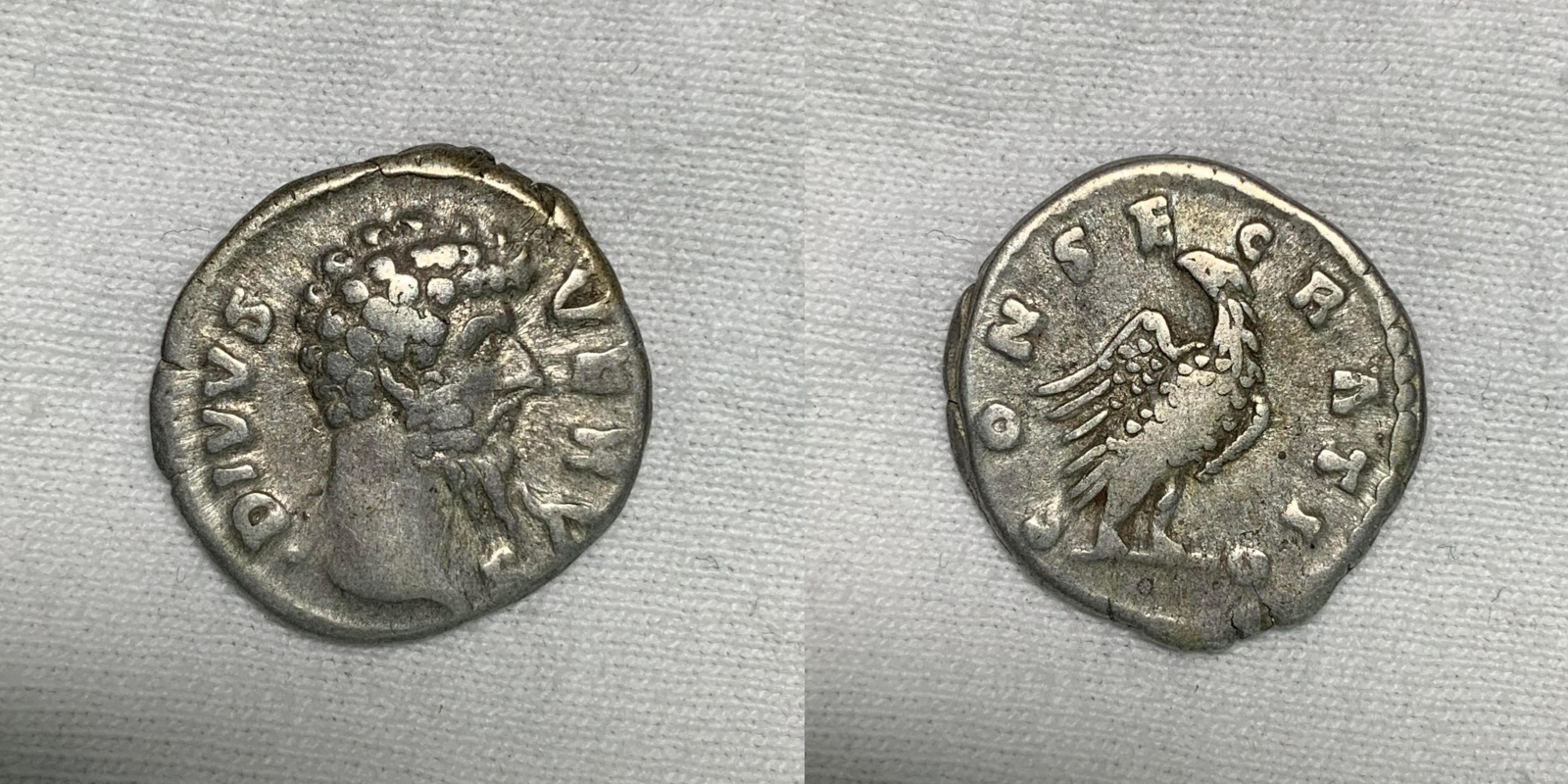
Reverse: CONSECRATIO: Eagle, standing front, head left, wings open
Die Orientation: 6 H
Weight: 3.38 g
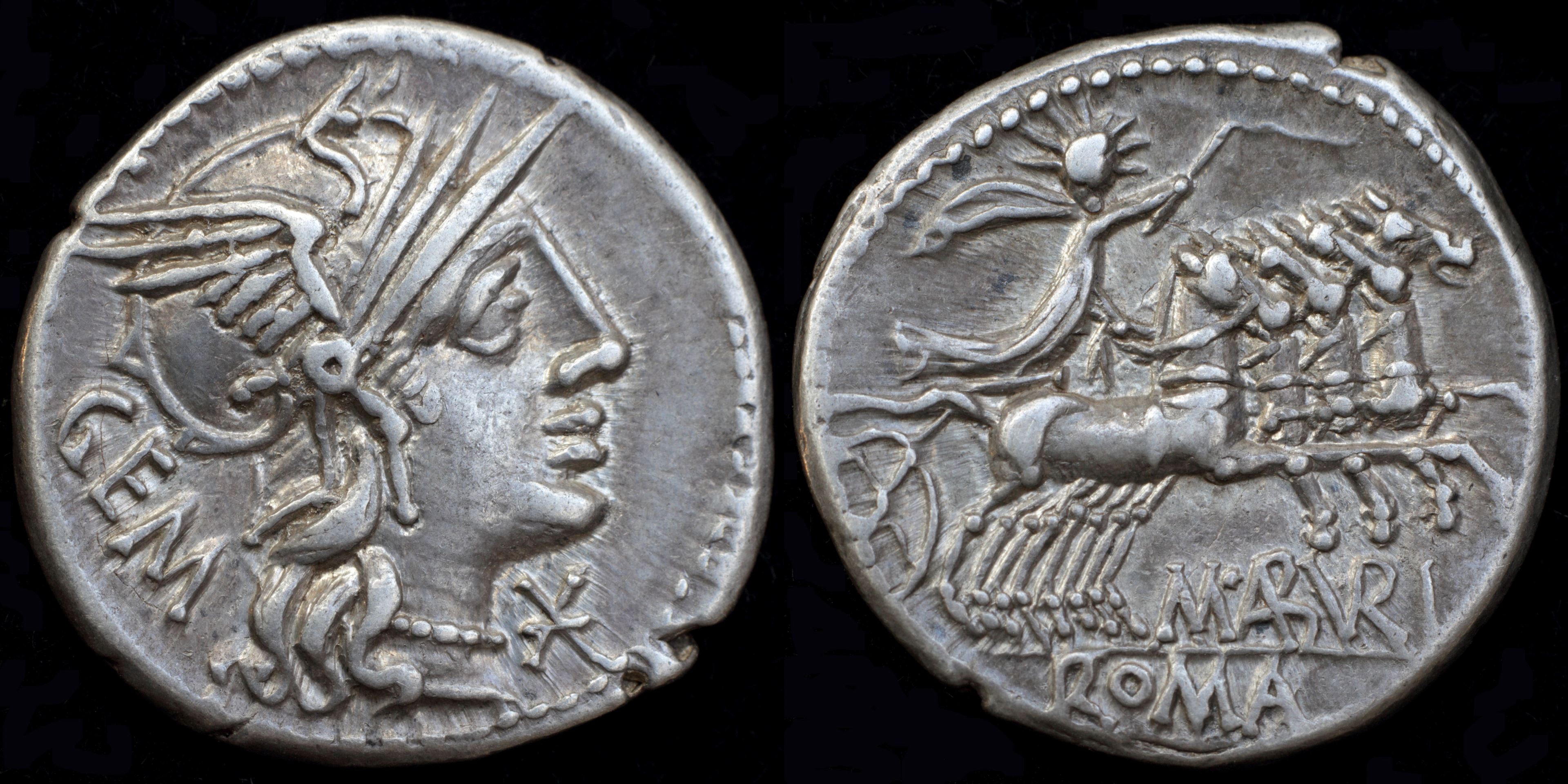
Reverse: Sol in quadriga right holding whip and reins M·(AB)(VR)I ROMA
Die Orientation: -
Weight: 3.9 g
(0).jpg)
Reverse: Sol in quadriga right, holding reins and whip; M•ABVRI below horses, ROMA in exergue
Die Orientation: 12 H
Weight: 3.85 g
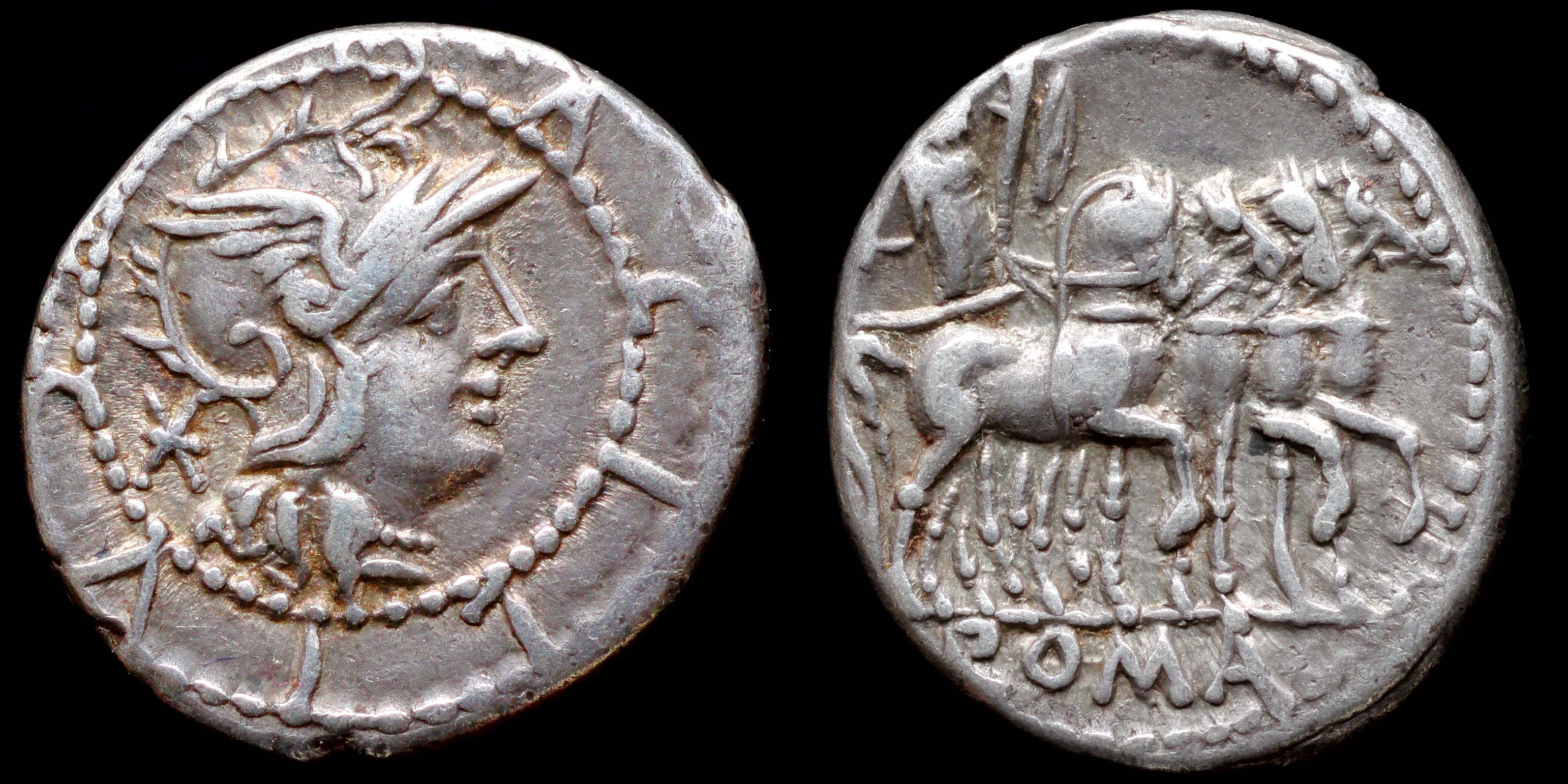
Reverse: Hercules in slow quadriga right holding club and trophy; ROMA
Die Orientation: -
Weight: 3.9 g
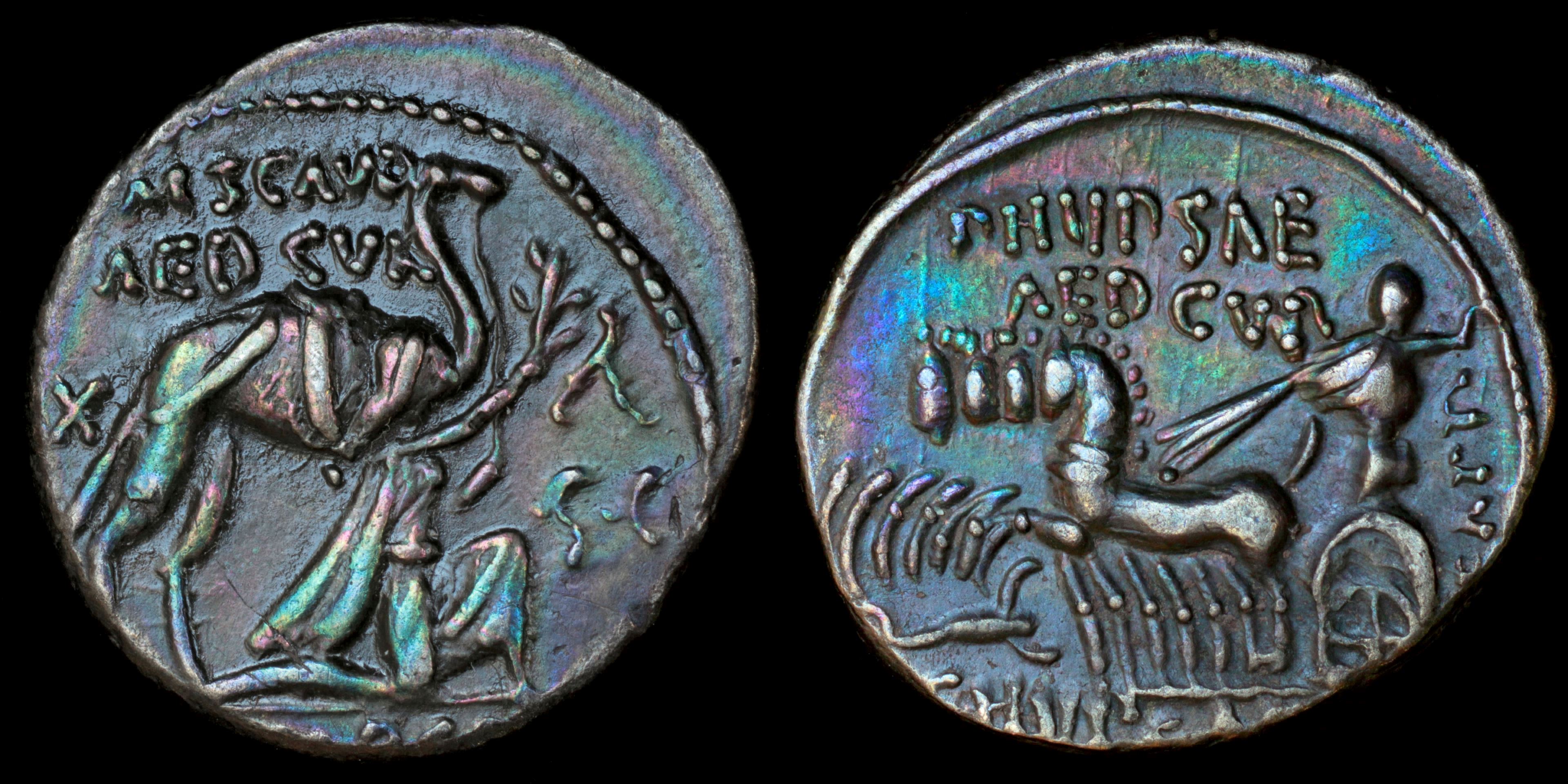
Reverse: Jupiter in quadriga left, holding reins and thunderbolt, scorpion right P HYPSAE / AED CVR / CAPT / C HYPSAE COS / PREIVE
Die Orientation: -
Weight: 4 g
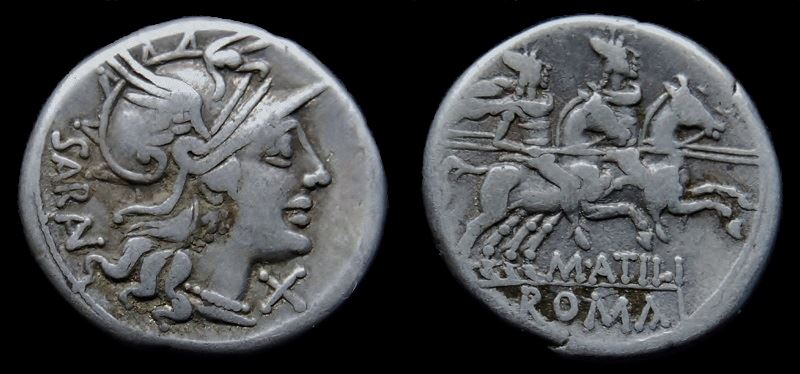
Reverse: The Dioscuri on horseback riding right. Below horses, M•ATILI and ROMA in linear border in exergue.
Die Orientation: 0 H
Weight: 3.8 g
From Appian - The Spanish Wars " He was succeeded in the command by Marcus Atilius, who made an incursion among the Lusitanians and killed about 700 of them and took their largest city, called Oxthracae. This so terrified the neighboring tribes that they all made terms of surrender. Among these were some of the Vettones, a nation adjoining the Lusitanians. But when he went away into winter quarters they all forthwith revolted and besieged some of the Roman subjects."
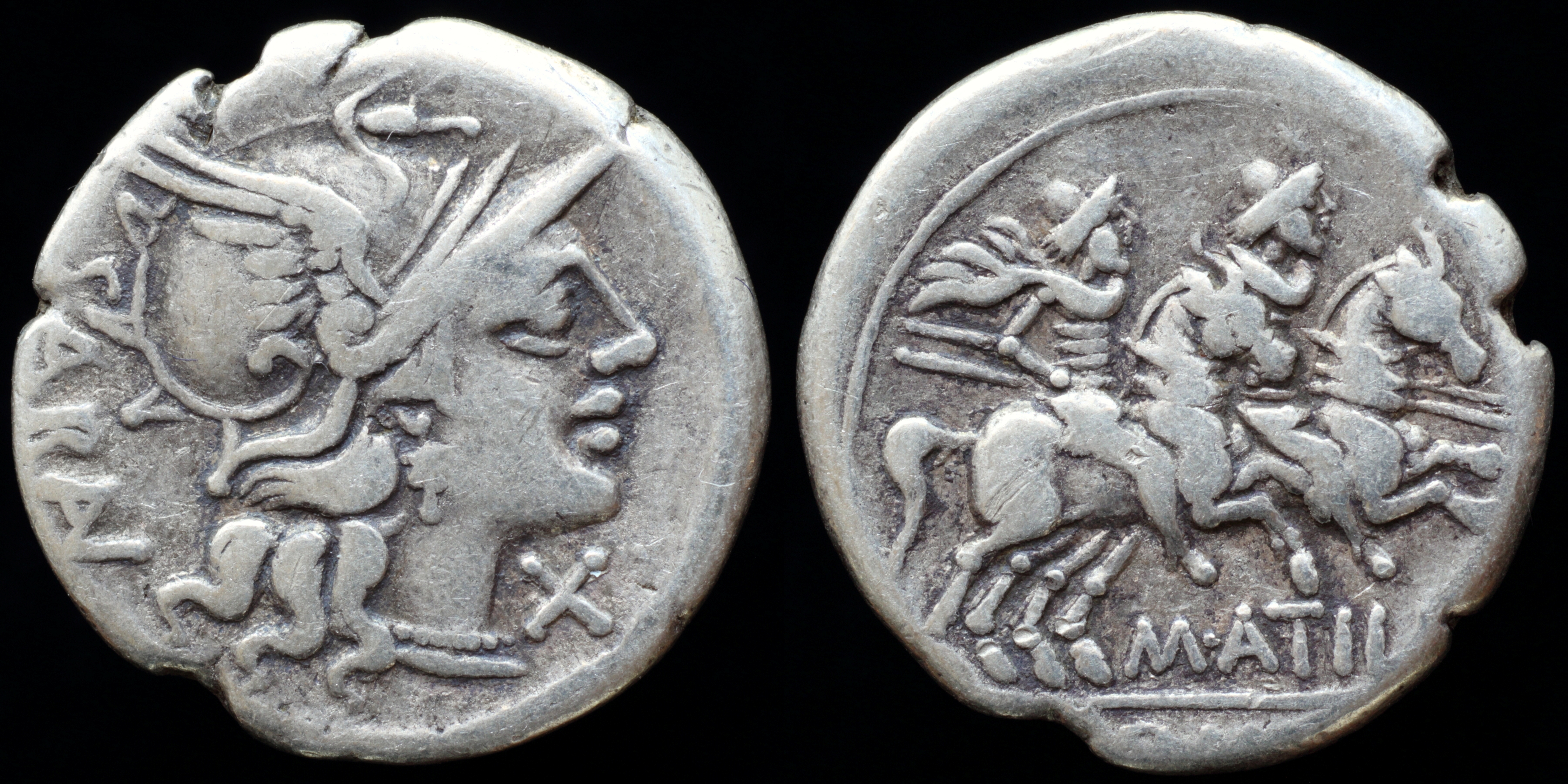
Reverse: Dioscuri on horses riding right, stars over pilei, holding spear and reins; M·ATILI / ROMA
Die Orientation: -
Weight: 3.8 g
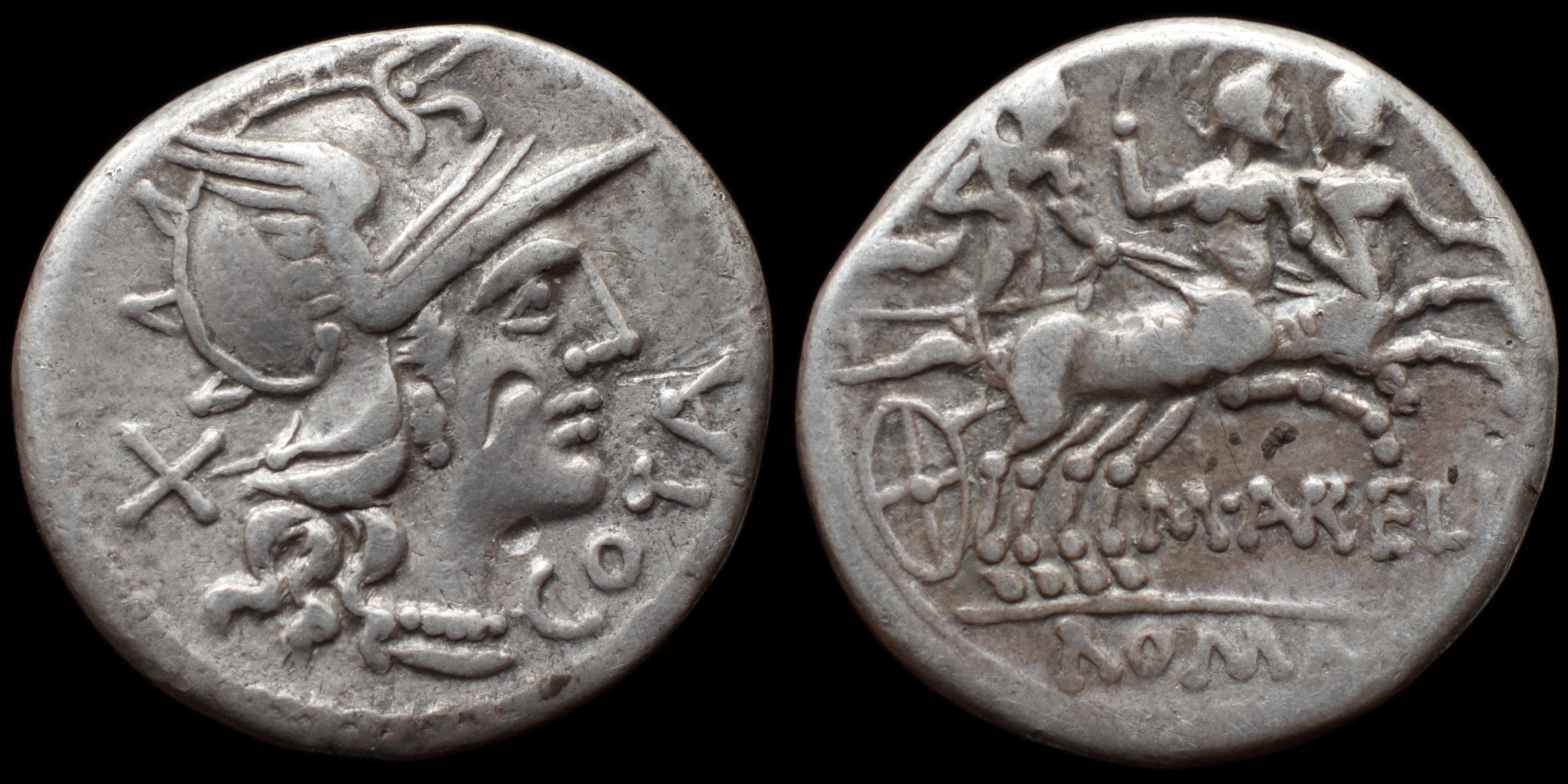
Reverse: Hercules in biga of Centaurs right, each of whom holding a branch, Hercules holding club and reins; M·(AVR)ELI / ROMA
Die Orientation: -
Weight: 3.9 g
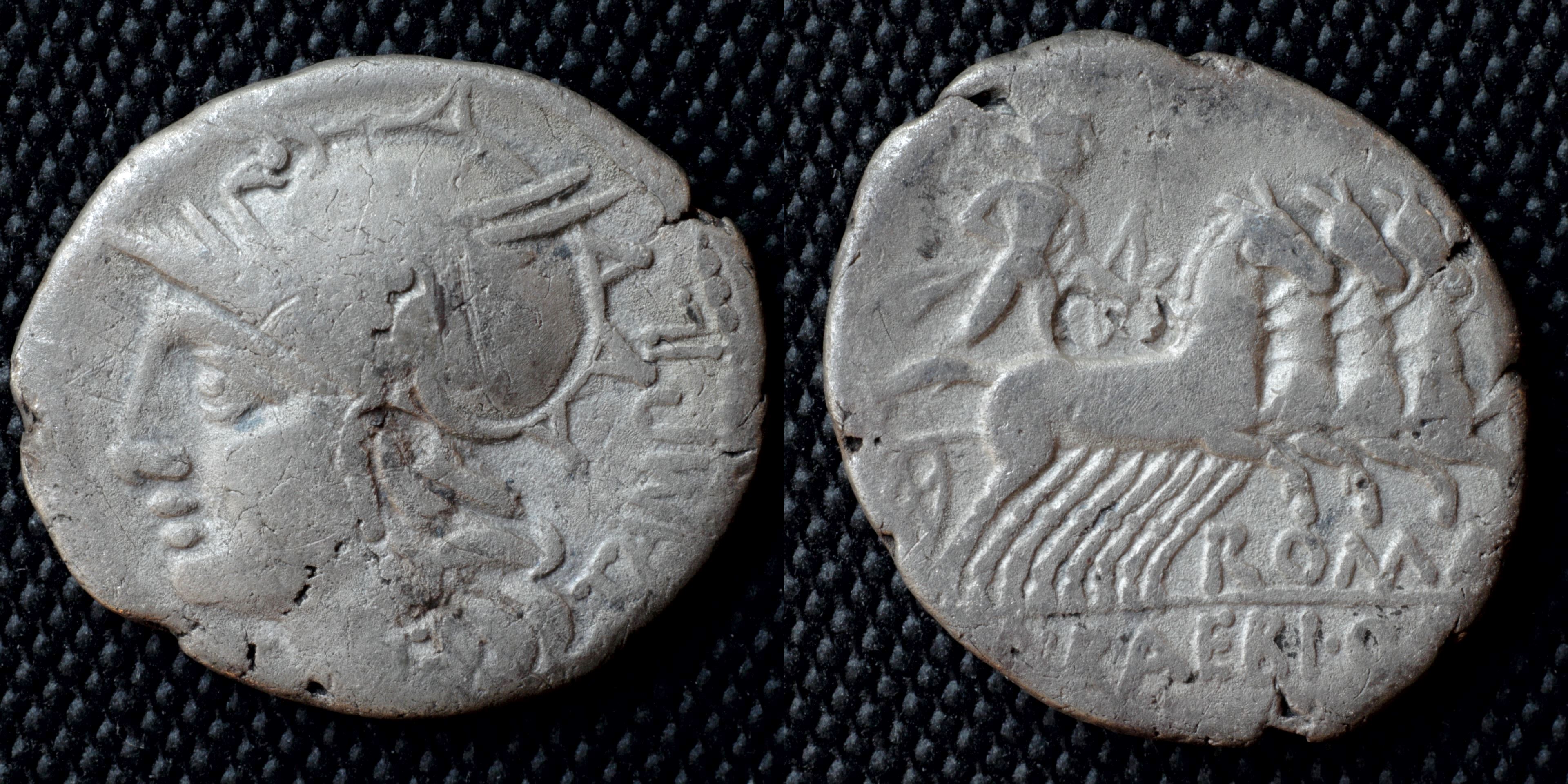
Reverse: Apollo in quadriga right holding branch and reins, bow and arrow ROMA M·BAEBI·Q·F
Die Orientation: -
Weight: 3.68 g
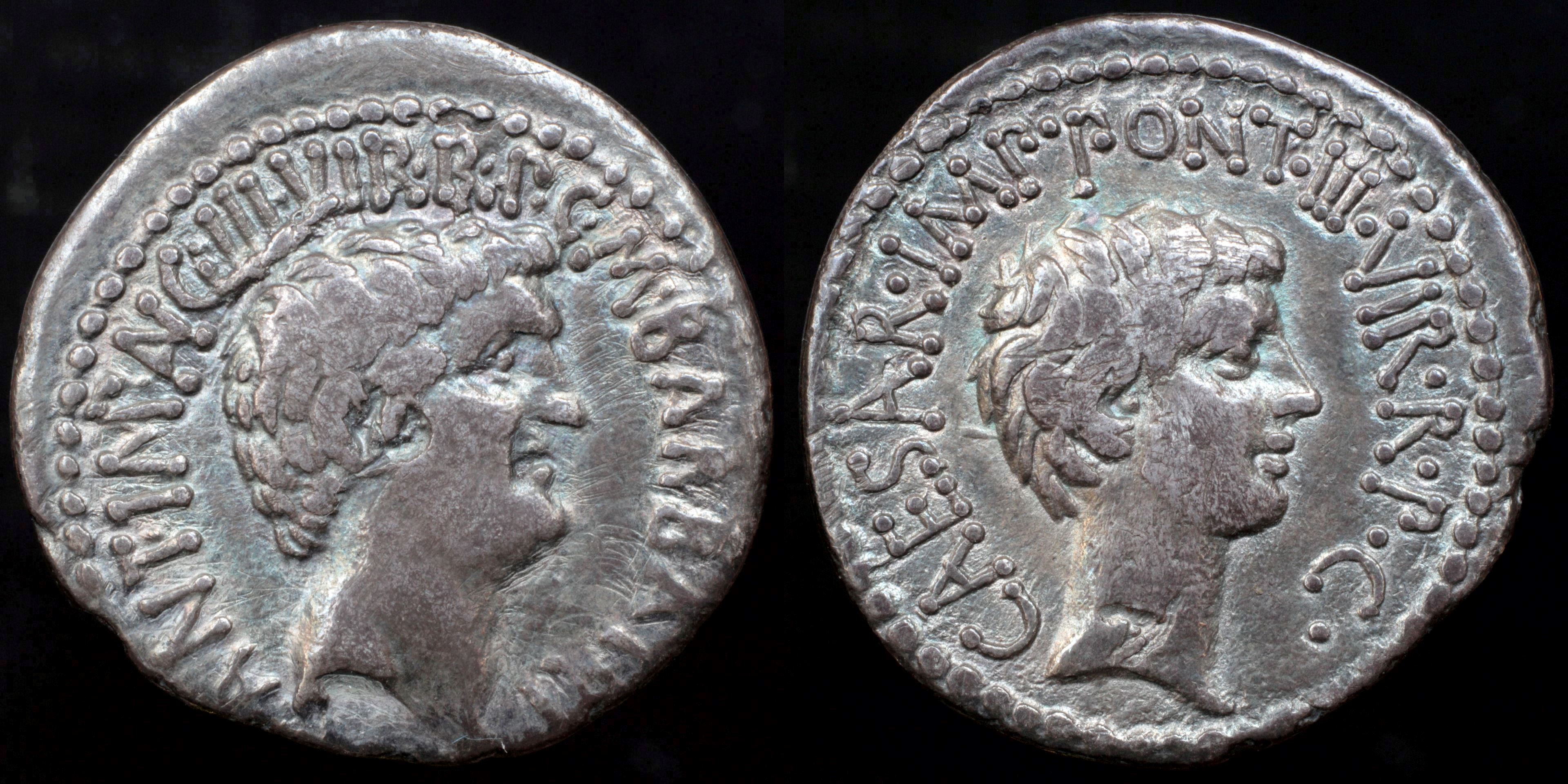
Reverse: head of Octavian Caesar right, CAESAR·IMP·PONT·III·VIR·R·P·C·
Die Orientation: -
Weight: 3.3 g
Mark Antony, Octavian Caesar, struck in Ephesus? from spring to early summer 41 BC. Moneyer held unusual office quaestor pro praetore in the east in 41-40 BC. He accompanie Mark Antony after the battle of Philippi. He was probably also Curule Aedile. He restored aedicula shrine on the Forum Romanum and fountain of goddess Juturna (Lacus Iuturnae).
(8).JPG)
Reverse: M•METELLVS Q•F, Macedonian shield with elephant's head in central boss, surrounded by laurel wreath
Die Orientation: 6 H
Weight: 3.85 g
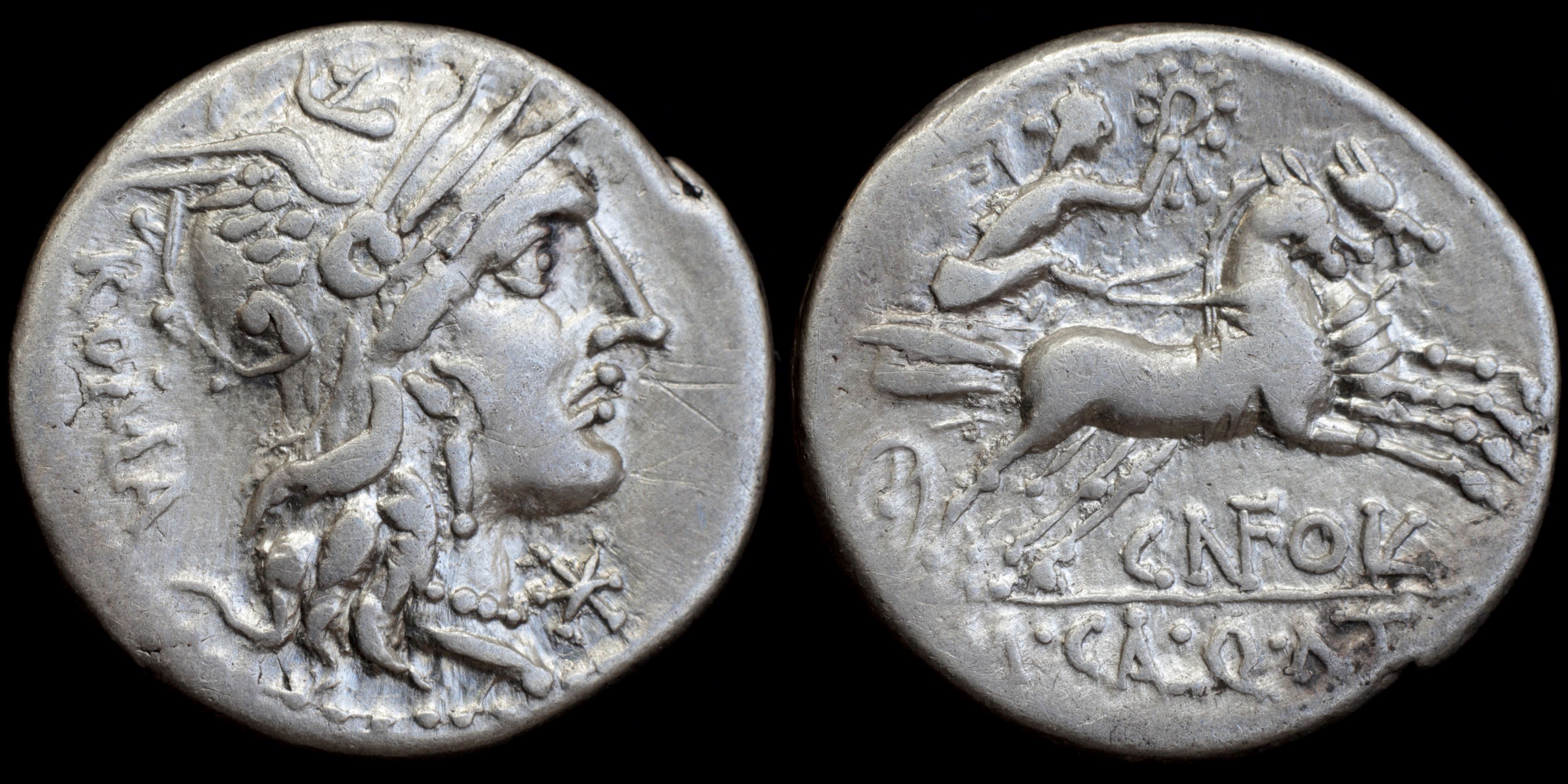
Reverse: Victory in biga right holding wreath and reins C(N F)O(VL) M·C(AL)·Q·(MET)
Die Orientation: -
Weight: 3.9 g
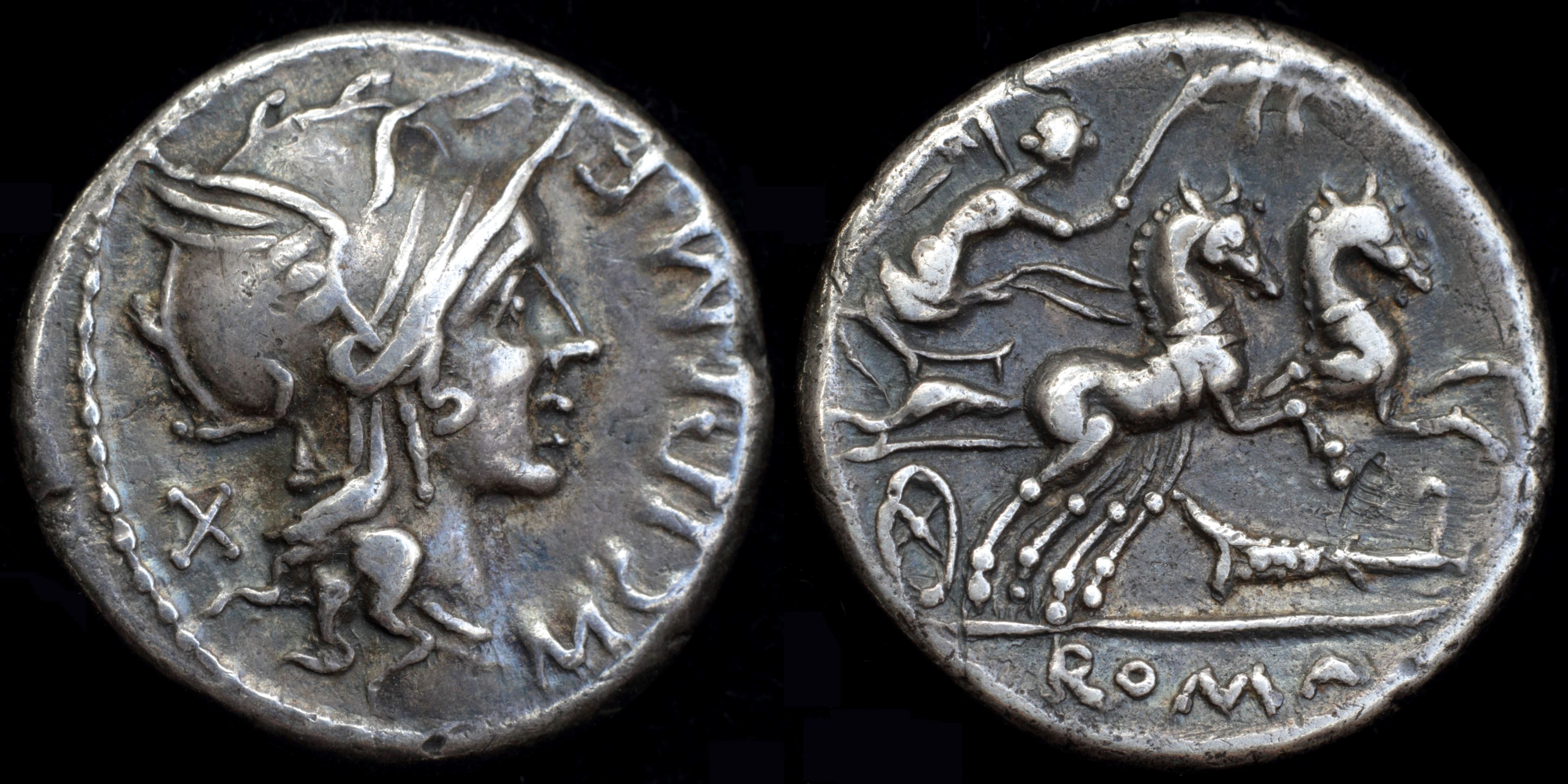
Reverse: Victory in biga right holding palm branch and reins; rudder below ROMA
Die Orientation: -
Weight: 3.9 g

Reverse: Victory driving galloping biga right, holding reins and palm frond; rudder below horses; ROMA in exergue.
Die Orientation: -
Weight: 3.88 g
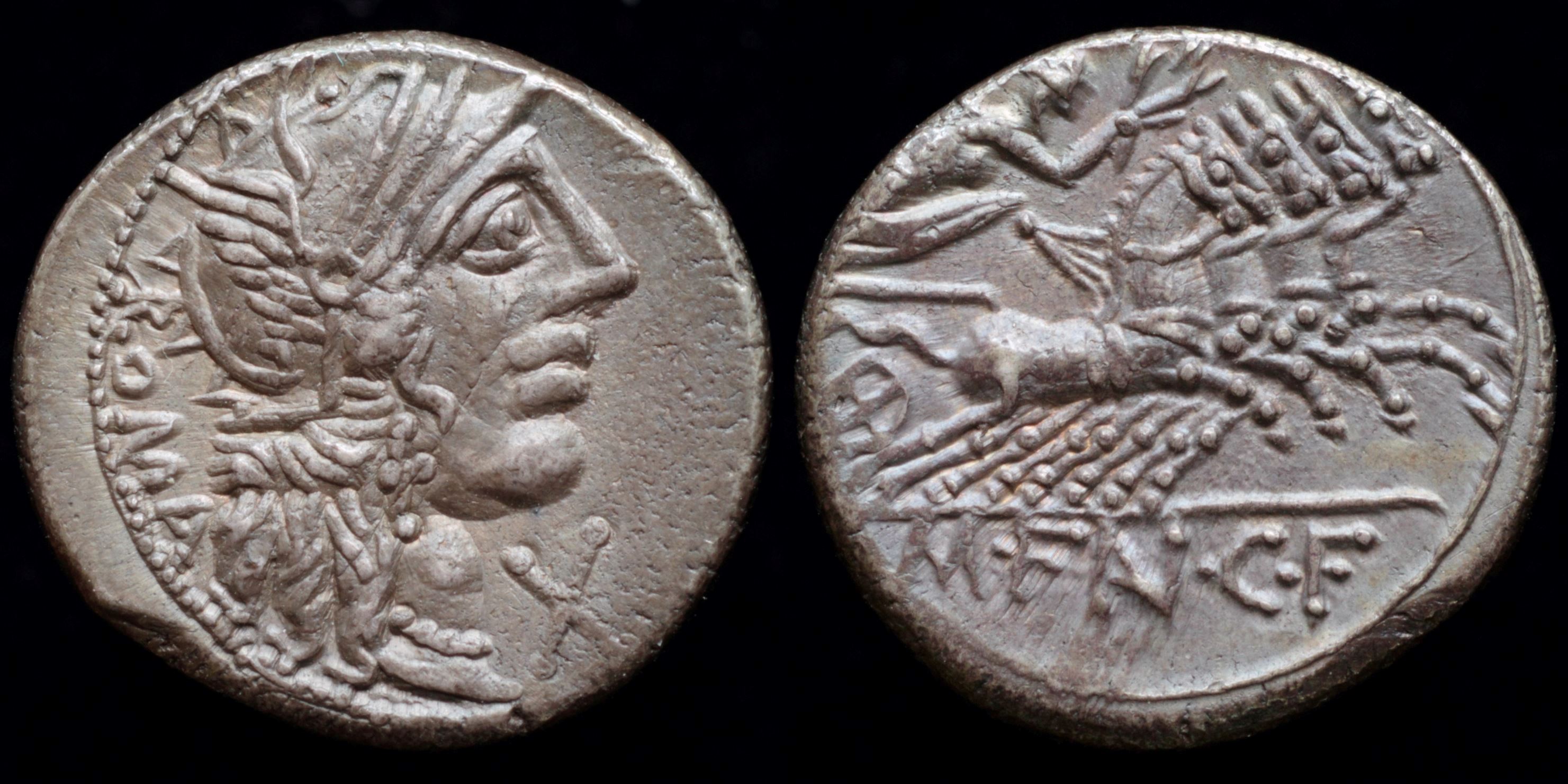
Reverse: Victory in quadriga right holding reins and palm branch M·F(AN)·C·F
Die Orientation: -
Weight: 4.1 g
.jpg)
Reverse: Roma standing left, transverse long scepter in left hand, with right hand placing wreath on trophy of captured Gallic arms with carnyx and shield on each side, star above ROMA (PHI)LI
Die Orientation: -
Weight: 3.8 g
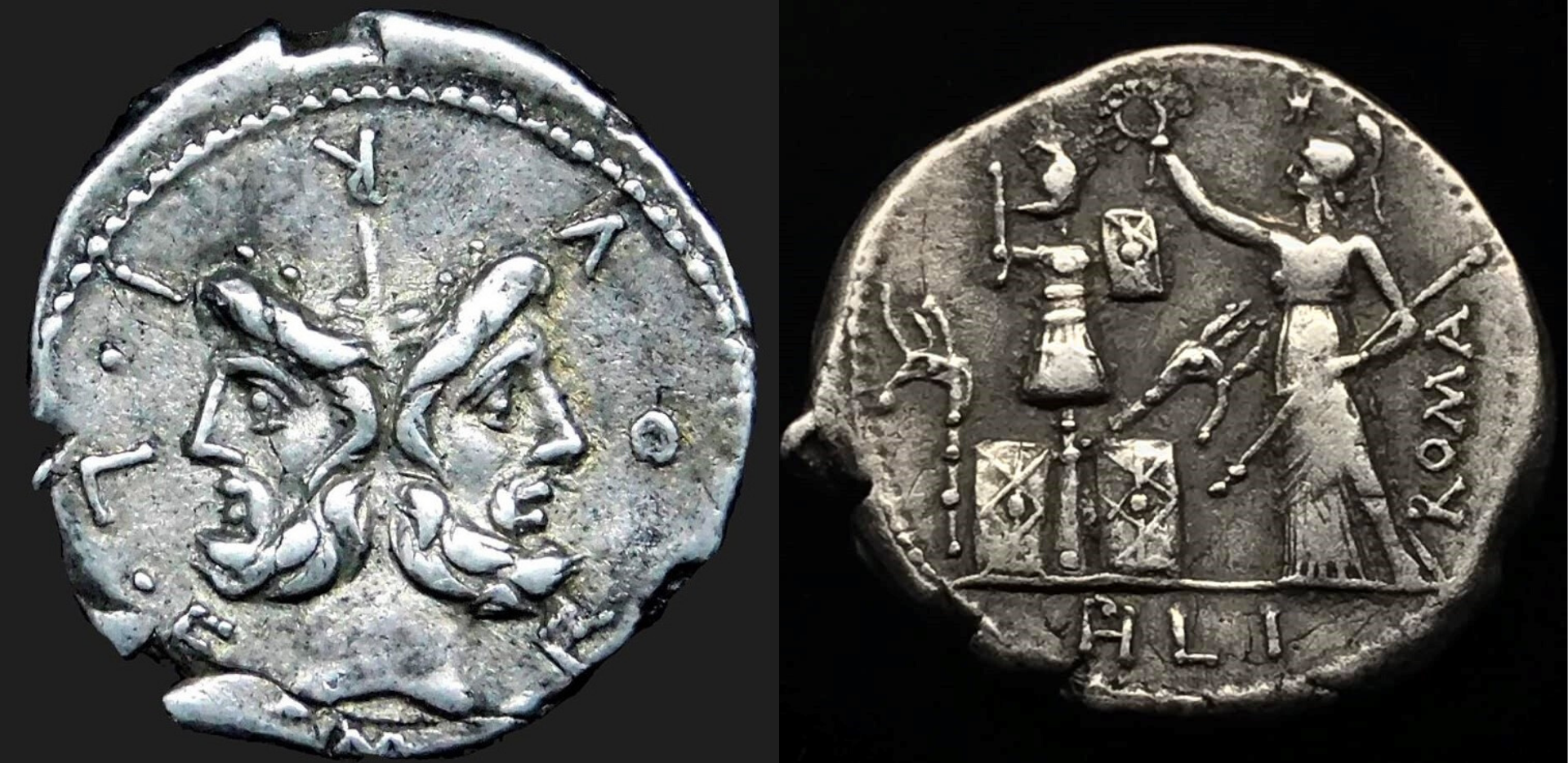
Reverse: PHLI (PH ligate) in exergue, ROMA on right, Roma standing left, holding spear and crowning Gallic trophy with wreath; above, star.
Die Orientation: -
Weight: 3.94 g
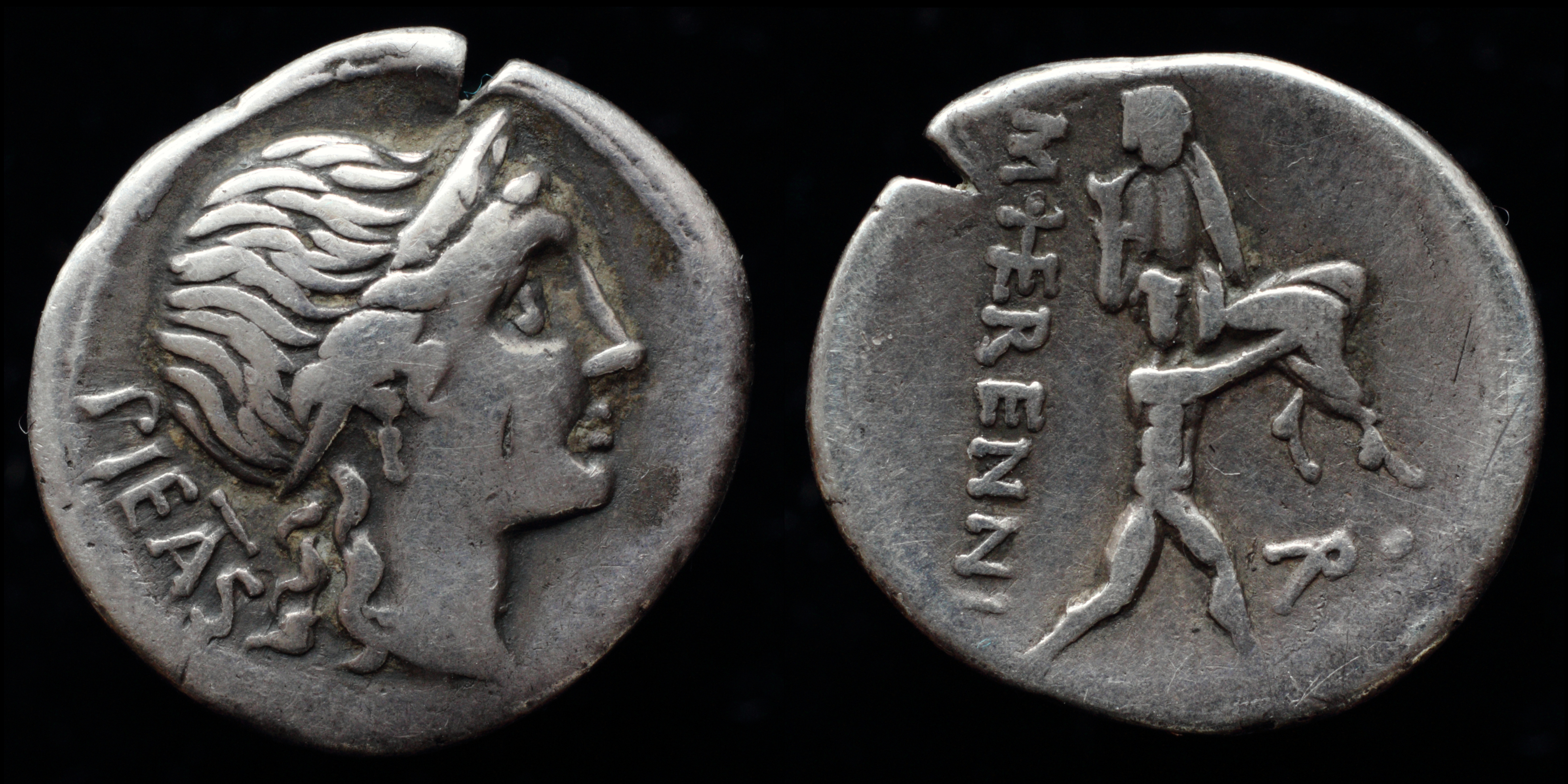
Reverse: Amphinomus right carrying his father; M·(HE)RENNI / Ṙ
Die Orientation: -
Weight: 3.8 g
.jpg)
Reverse: BRVTVS, The consul L. Junius Brutus walking left between two lictors preceded by an accensus
Die Orientation: 6 H
Weight: 3.43 g
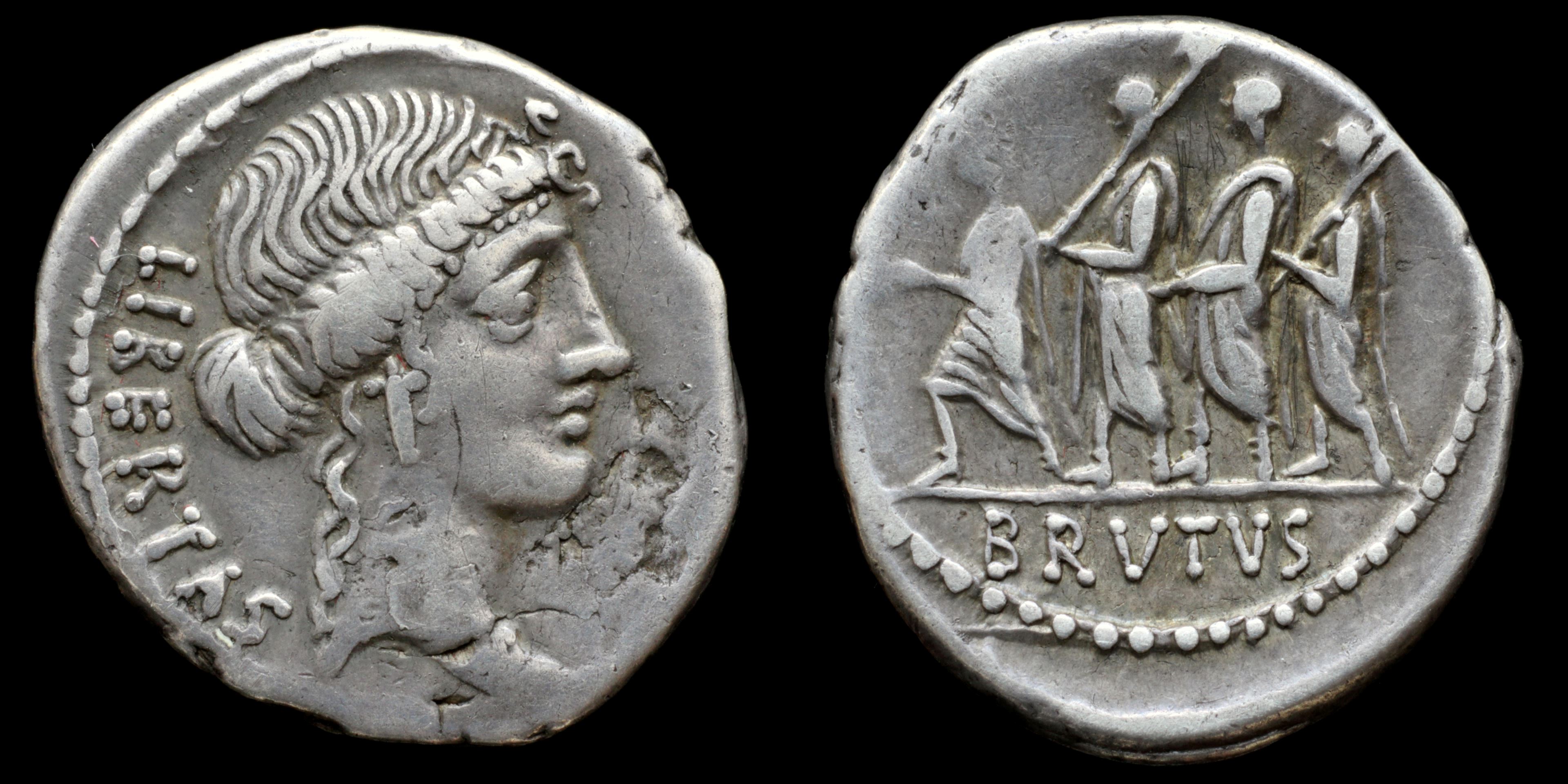
Reverse: L. Junius Brutus between two lictors left, accensus in front of them; BRVTVS
Die Orientation: -
Weight: 3.9 g
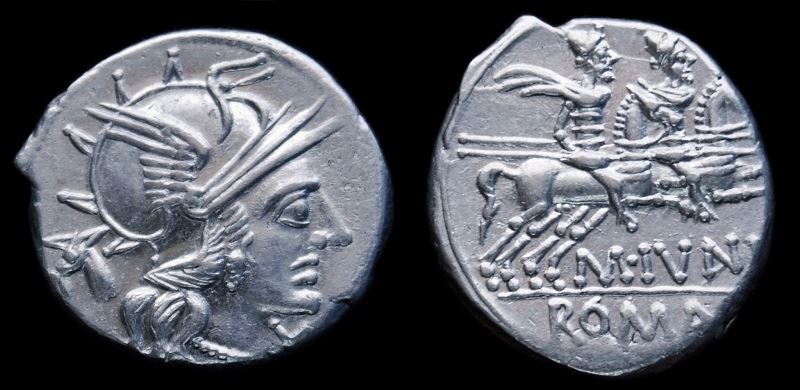
Reverse: The Dioscuri riding right; M•IVNI below, ROMA in exergue.
Die Orientation: 3 H
Weight: 4.12 g
In 109 BC Silanus achieved to become consul as the first member of his family, the Iunii Silani. He held this highest public office together with Quintus Caecilius Metellus Numidicus, who had to continue the war against Jugurtha, king of Numidia, whereas Silanus undertook to fight against the Cimbri. To increase the power of Rome Silanus abolished the exemptions from the military service. Probably before their battle with the consul the traveling Cimbri had asked to be given a domicile on Roman territory, but the Senate had declined their request. Silanus then rushed towards the Cimbri with his army but he was defeated at an unknown location in Gallia Transalpina.
In 104 BC the tribune of the people Gnaeus Domitius Ahenobarbus accused Silanus of his military failure, but the former consul was acquitted."
Provenance: Bertolami Fine Arts, E-Live Auction 49 (12 November 2017), lot 636.
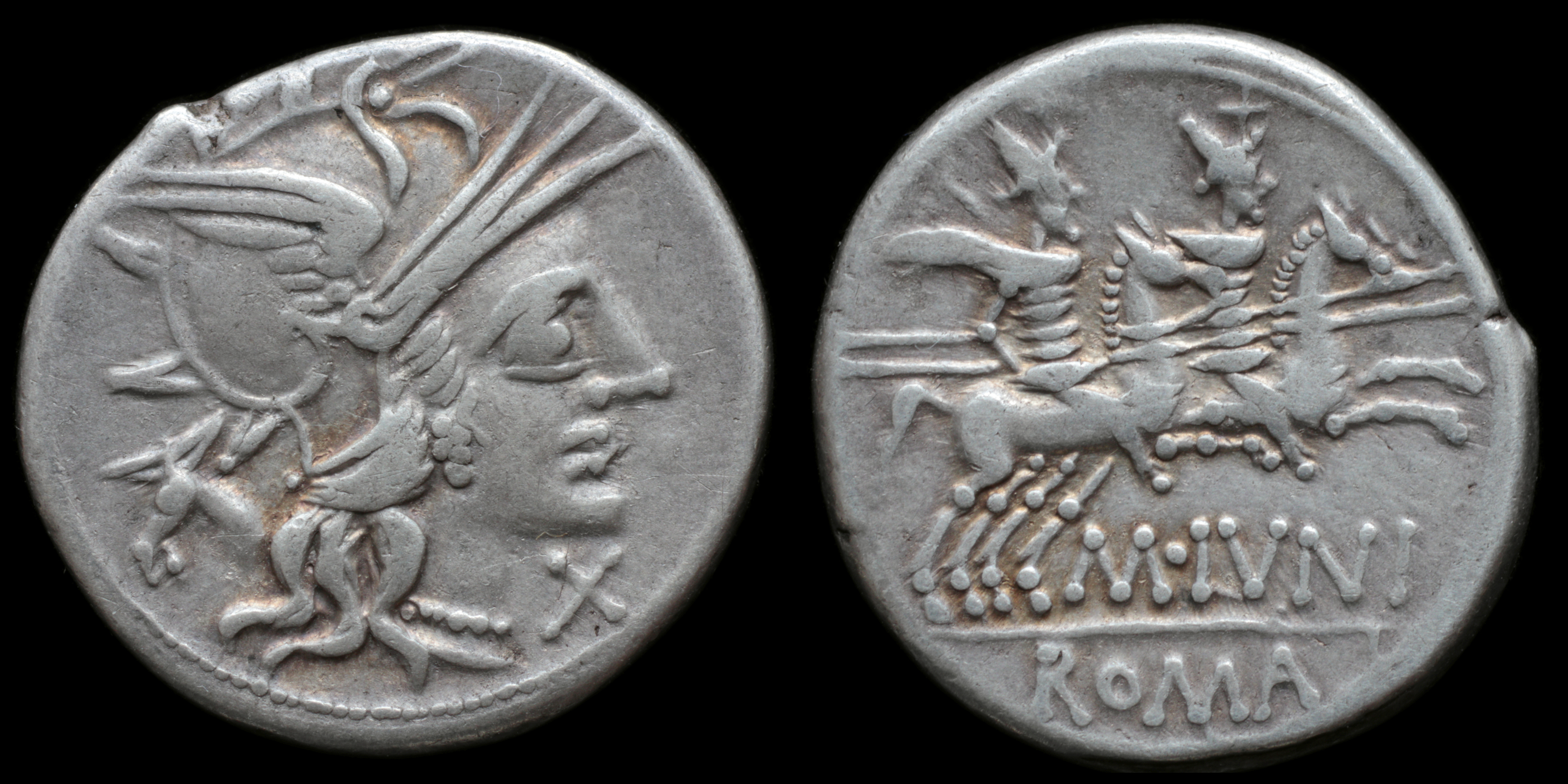
Reverse: Dioscuri on horses right holding spears and reins; M·IVNI / ROMA
Die Orientation: -
Weight: 3.6 g
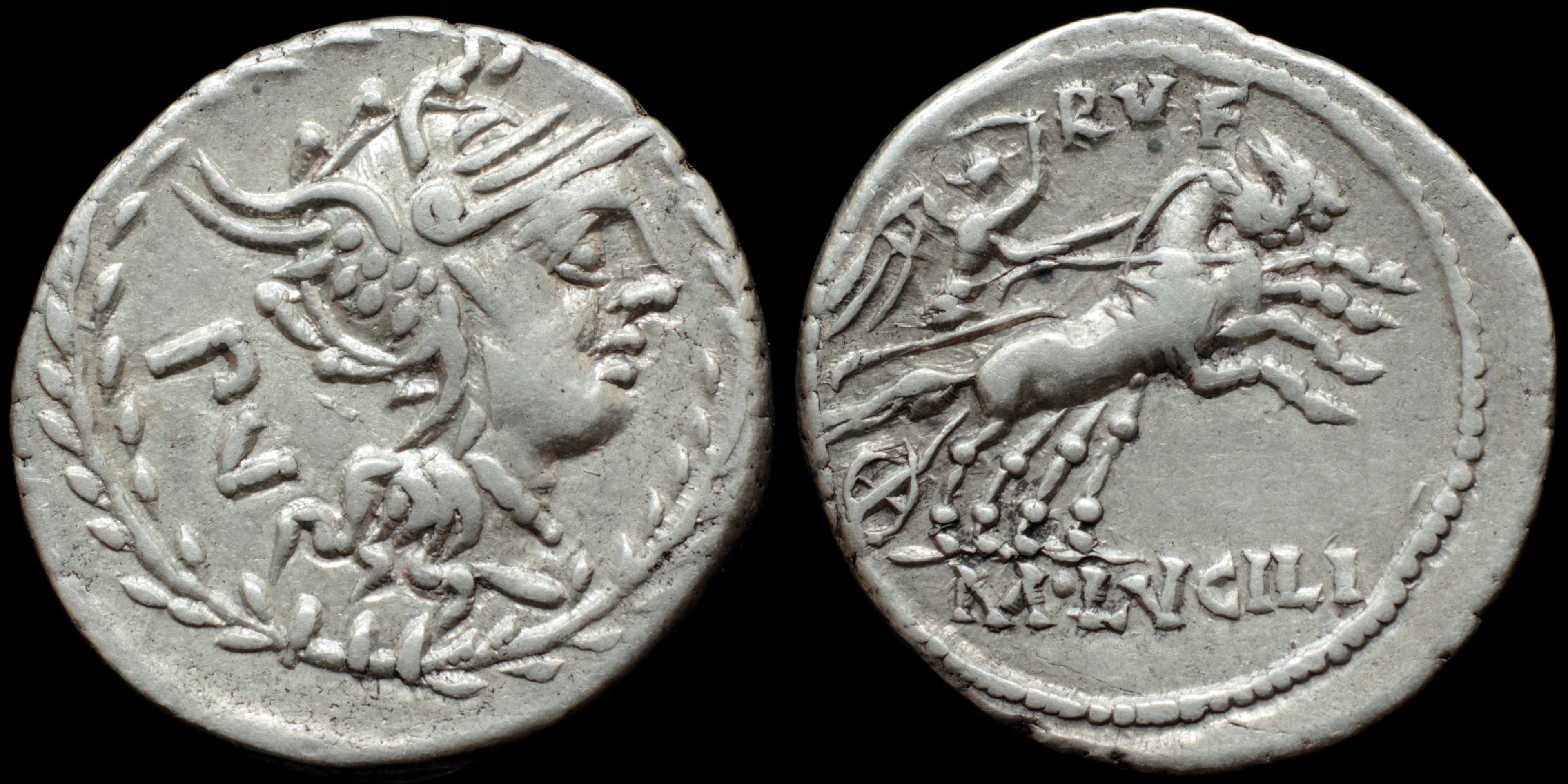
Reverse: Victory in biga left, holding whip and reins RVF M·LVCILI
Die Orientation: -
Weight: 3.9 g
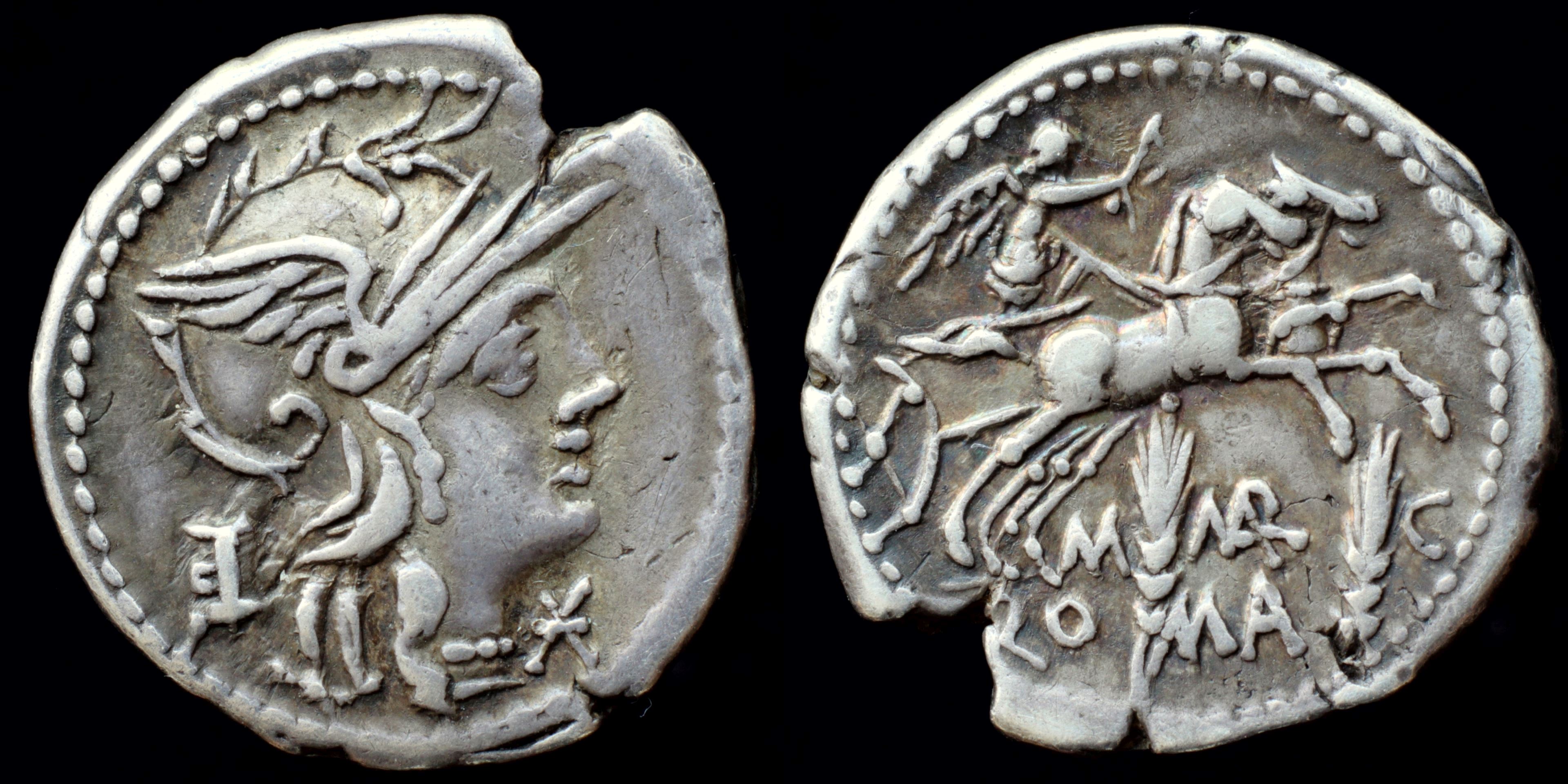
Reverse: Victory in biga right holding whip and reins; two heads of grain below; M__(MAR)_C / RO_MA
Die Orientation: -
Weight: 3.8 g
.jpg)
Reverse: Victory in biga right, M MAR C / RO MA below divided by two ears of corn
Die Orientation: -
Weight: 3.81 g
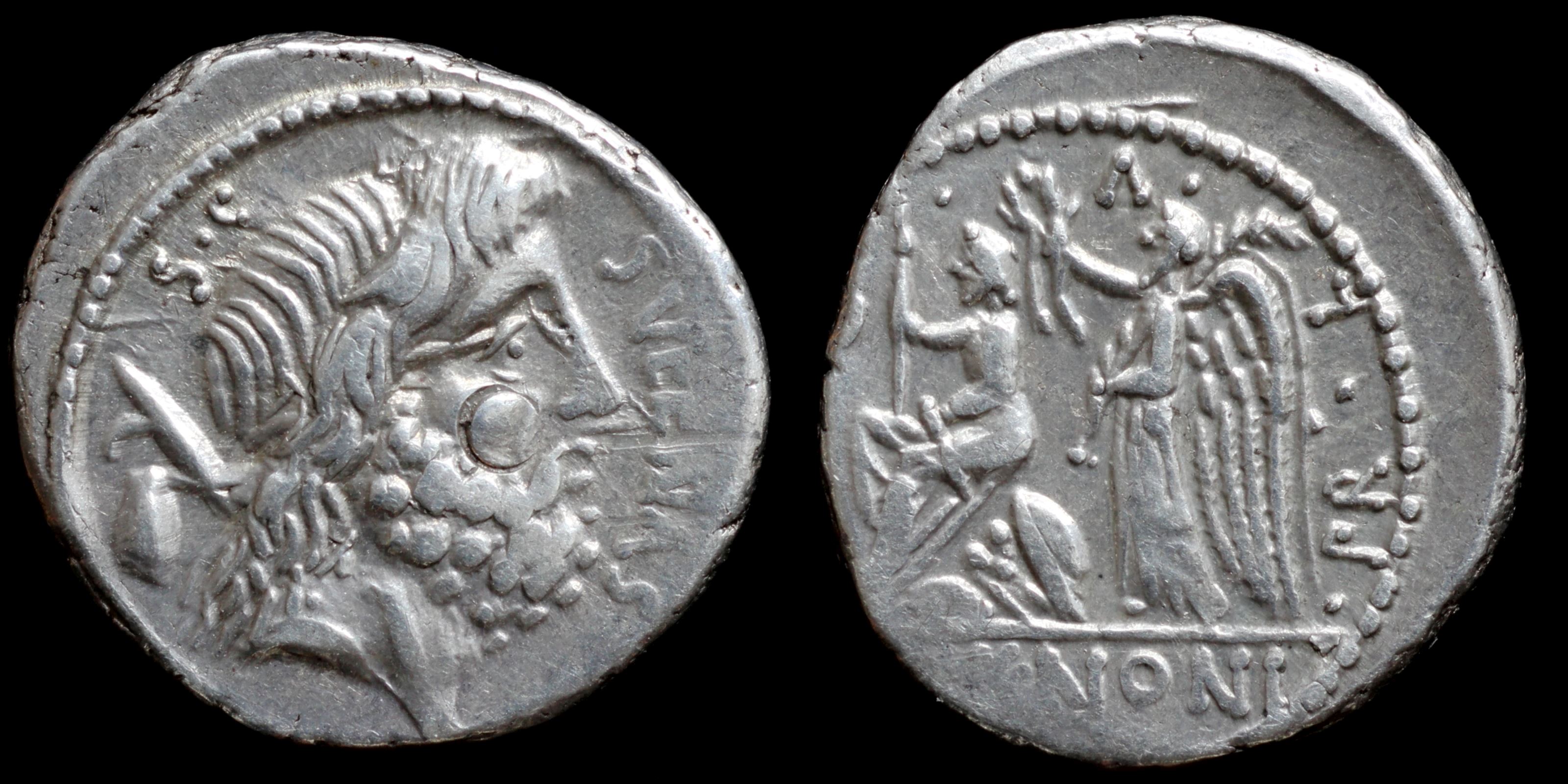
Reverse: Victory standing left holding wreath and palm, crowning Roma seated left on pile of arms holding scepter and sword; ·PR·L ·V· P·F / SEX·NONI
Die Orientation: -
Weight: 4 g
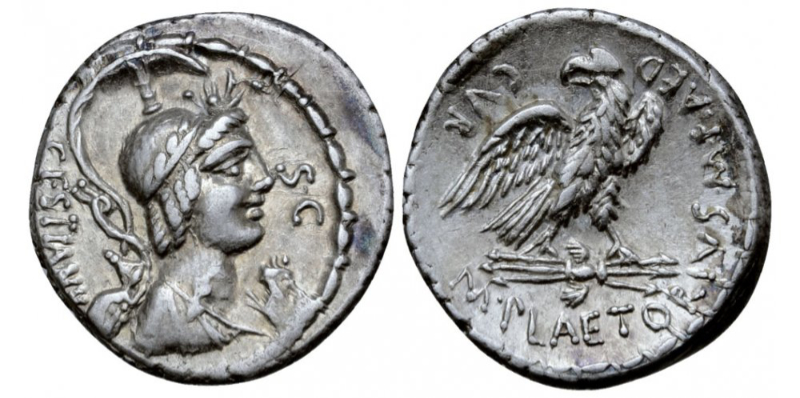
Reverse: Eagle standing right on thunderbolt, head left; M• PLAETORIVS M•F•AED•CVR around
Die Orientation: 7 H
Weight: 3.97 g
.jpg)
Reverse: jug and torch; M·PLAETORI / CEST·S·C
Die Orientation: -
Weight: 4 g
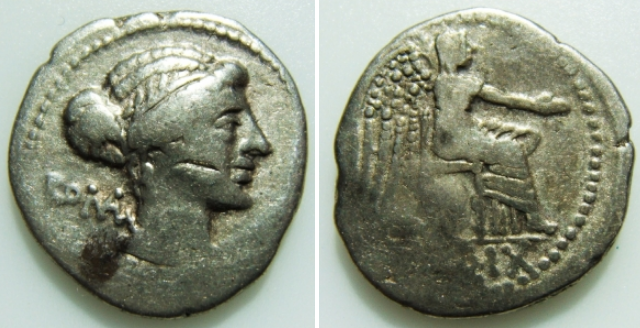
Reverse: VICTRIX - Victoria Virgo seated right, holding patera, VICTRIX in ex.
Die Orientation: 11 H
Weight: 3.72 g
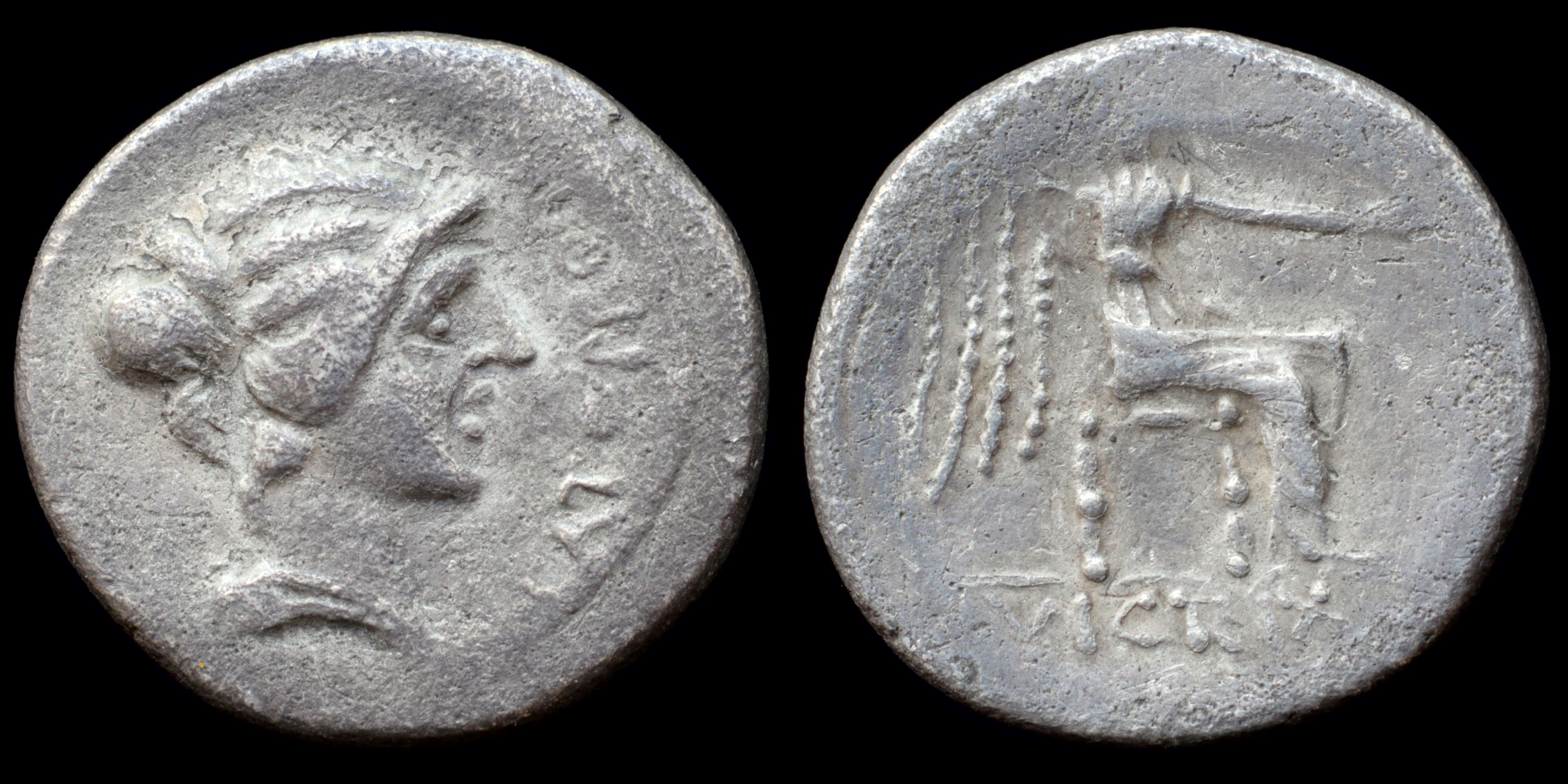
Reverse: Victory seated right, holding patera and palm; VIC(TR)IX
Die Orientation: -
Weight: 3.6 g
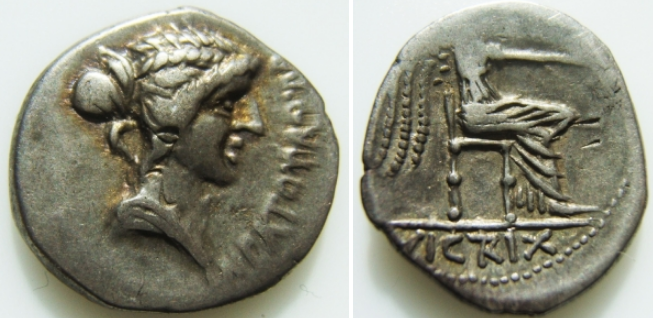
Reverse: VICTRIX - Victory seated right holding patera, VICTRIX in the ex.
Die Orientation: 3 H
Weight: 3.61 g
.jpg)
Reverse: Libertas driving quadriga right, holding pileus in right hand; Victory flying left above, crowning Libertas; M•PORC below, ROMA in exergue
Die Orientation: 5 H
Weight: 3.96 g
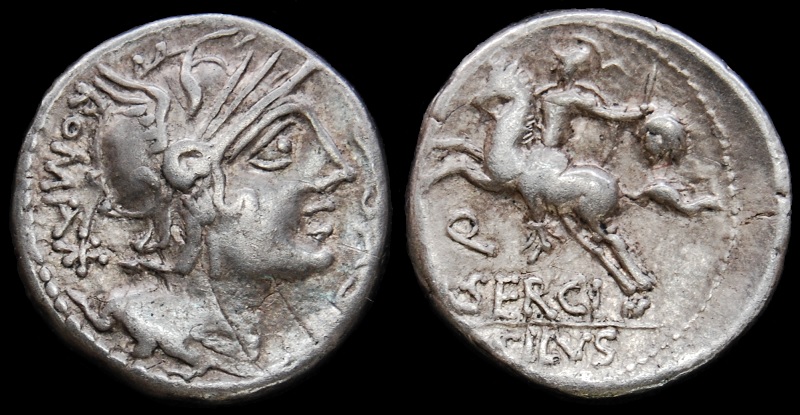
Reverse: Horseman galloping to the left; holding sword and severed head in hand; Q and M SERGI below; SILUS in exergue.
Die Orientation: 7 H
Weight: 3.85 g
Marcus Sergius was a Roman general during the Second Punic War (218 to 201 BC). He is famed in prosthetics circles as the first documented user of a prosthetic hand. The metal hand was constructed to allow him to hold his shield in battle.
A description of Marcus Sergius is found in the seventh book of Pliny's Natural History, published in AD 77:
Nobody - at least in my opinion - can rightly rank any man above Marcus Sergius, although his great-grandson Catiline shames his name. In his second campaign Sergius lost his right hand. In two campaigns he was wounded twenty-three times, with the result that he had no use in either hand or either foot: only his spirit remained intact. Although disabled, Sergius served in many subsequent campaigns. He was twice captured by Hannibal - no ordinary foe- from whom twice he escaped, although kept in chains and shackles every day for twenty months. He fought four times with only his left hand, while two horses he was riding were stabbed beneath him. He had a right hand made of iron for him and, going into battle with this bound to his arm, raised the siege of Cremona, saved Placentia and captured twelve enemy camps in Gaul - all of which exploits were confirmed by the speech he made as praetor when his colleagues tried to debar him as infirm from the sacrifices. What piles of wreaths he would have amassed in the face of a different enemy!
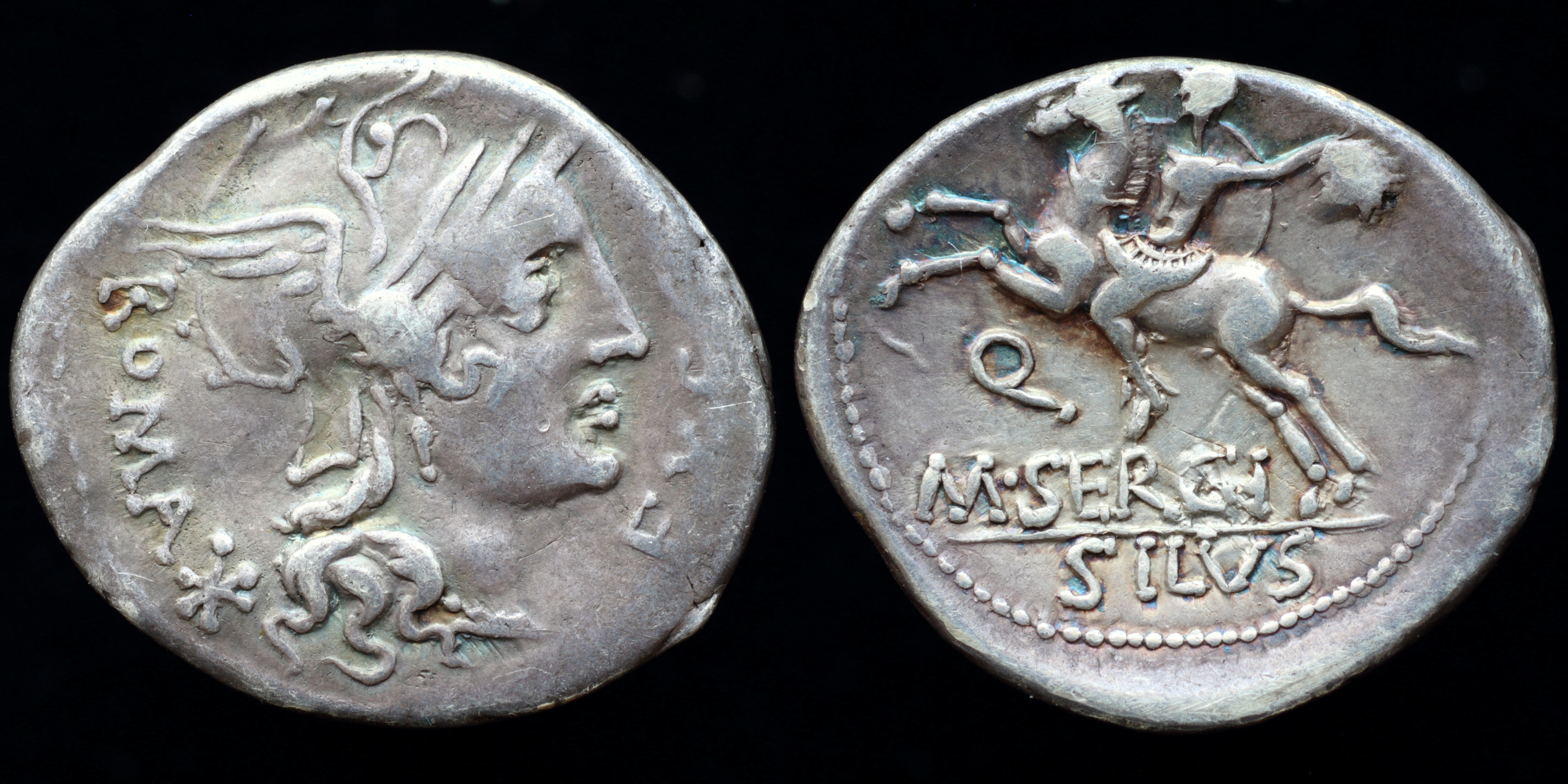
Reverse: moneyer's grandfather as horseman left wearing helmeted, holding sword and severed Gallic head; Q / M·SERGI / SILVS
Die Orientation: -
Weight: 3.9 g
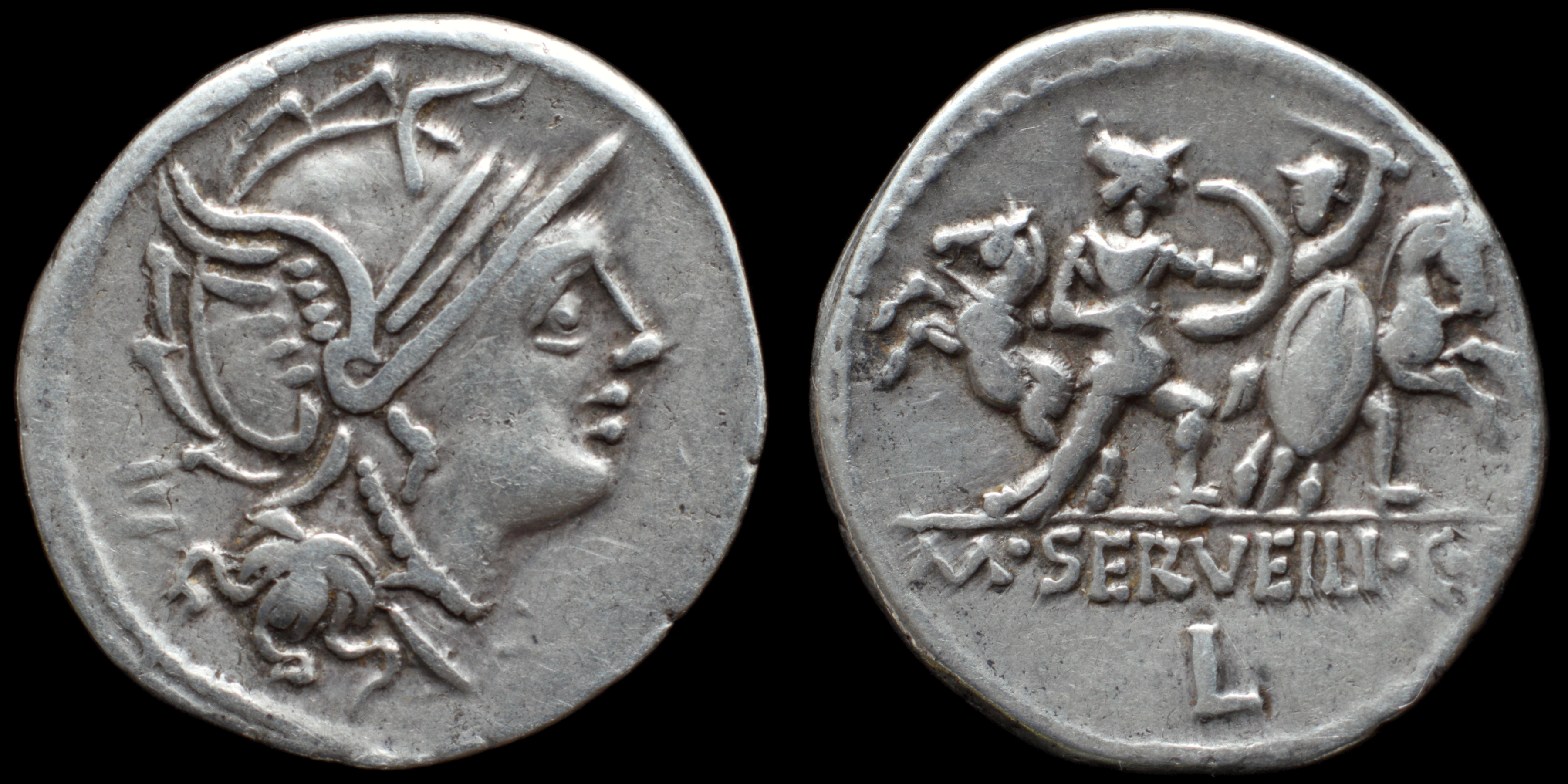
Reverse: Two dismounted horsmen fighting duel with their horses behind, each holding sword and shield; M·SERVEILI·C·F / L
Die Orientation: -
Weight: 3.9 g
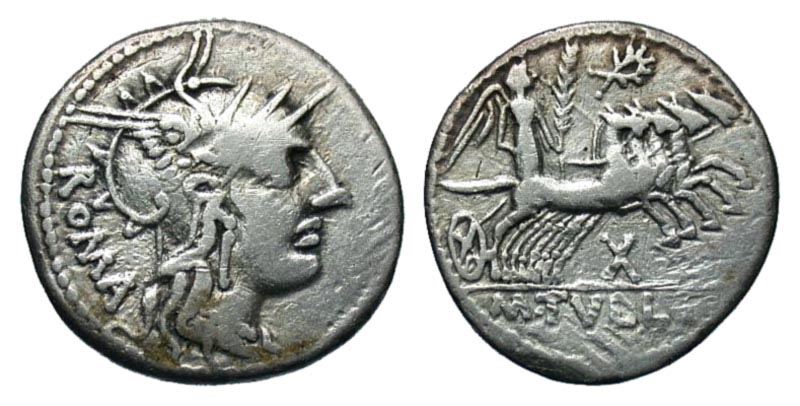
Reverse: M·TVLLI, Victory driving quadriga right, holding reigns and palm, wreath above, X below horses
Die Orientation: 2 H
Weight: 3.8 g
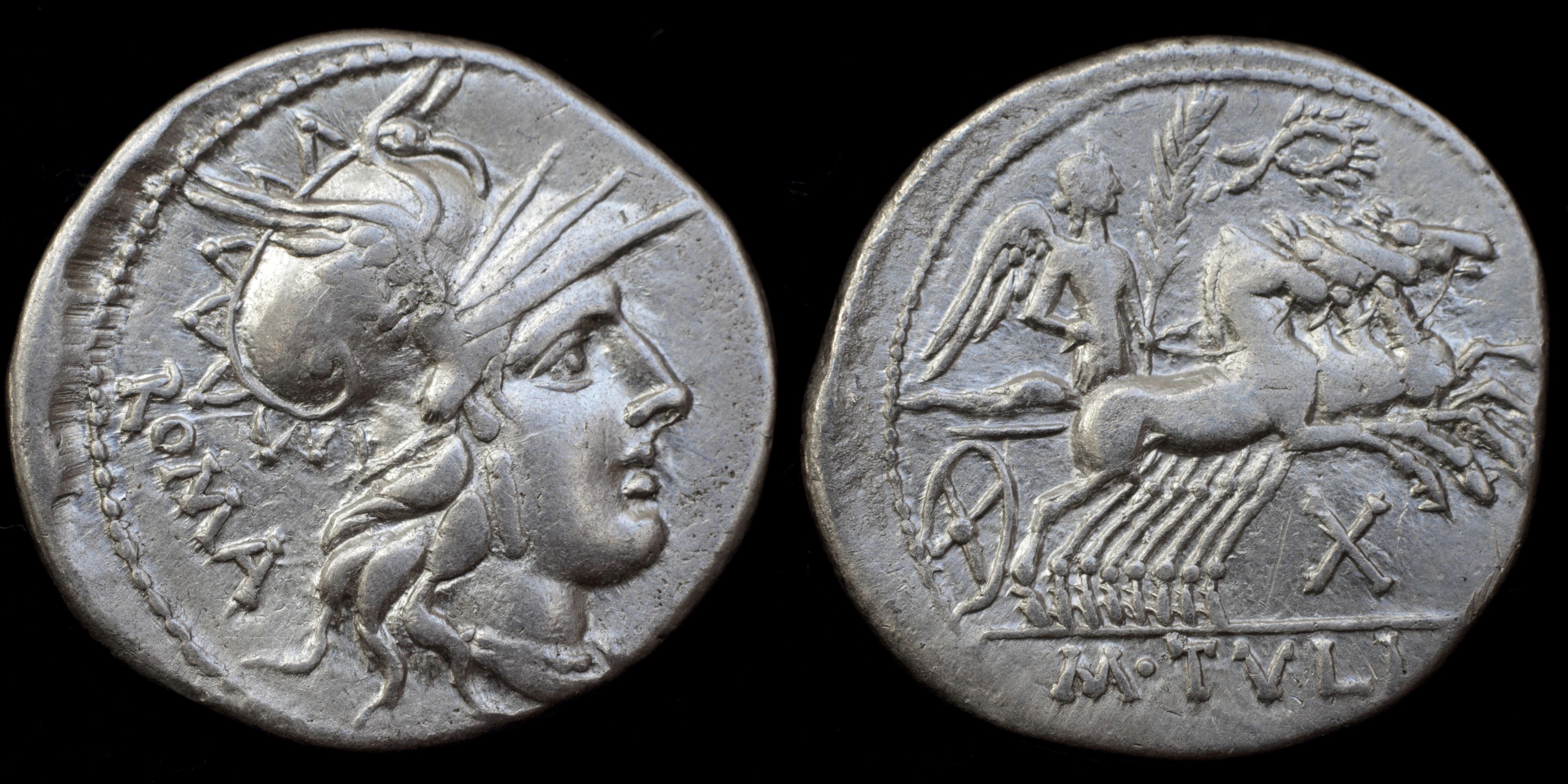
Reverse: Victory in quadriga right holding reins and palm branch; wreath above X M·TVLLI
Die Orientation: -
Weight: 4 g
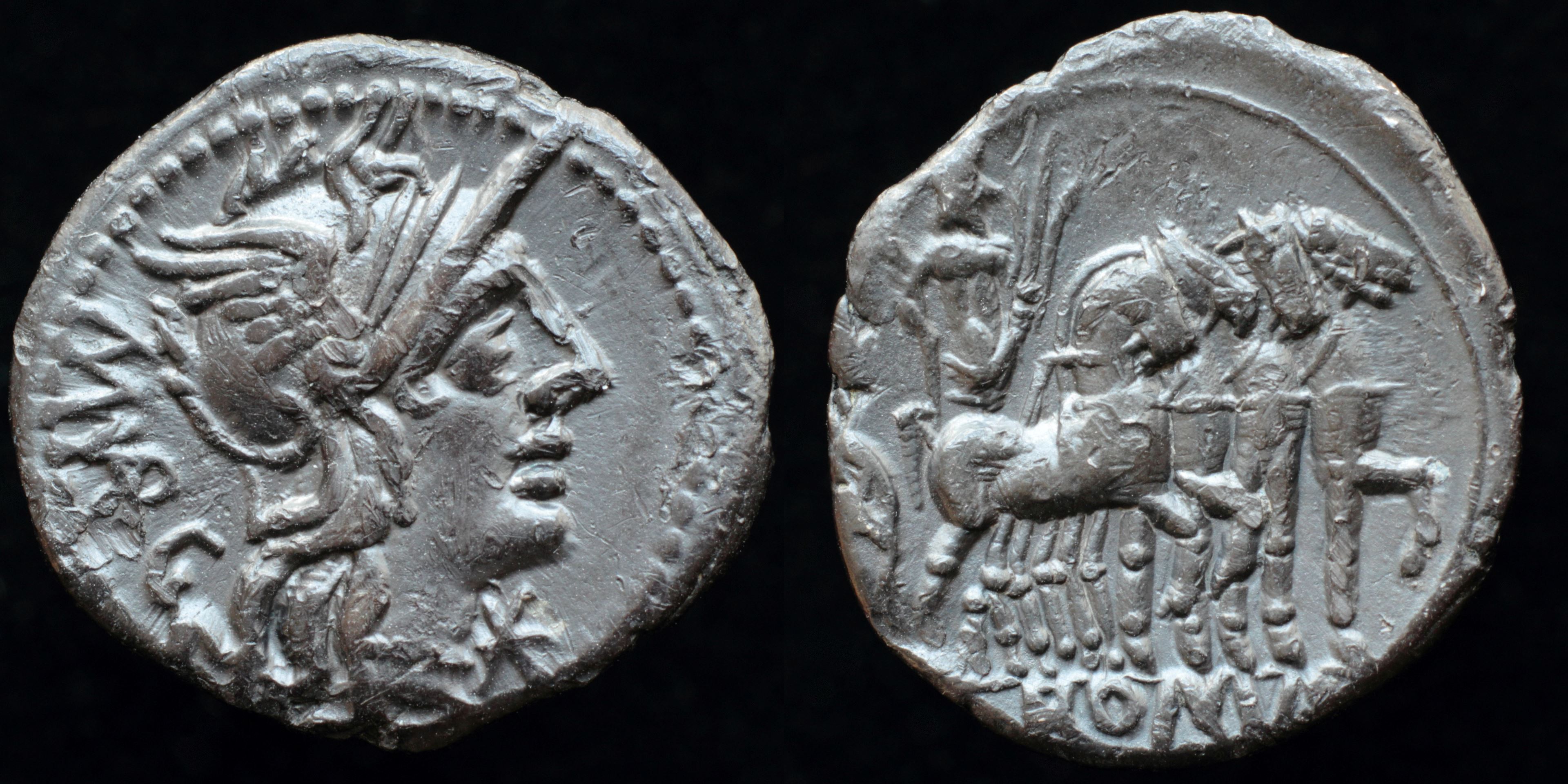
Reverse: Jupiter in quadriga right, holding branch and thunderbolt ROMA
Die Orientation: -
Weight: 3.8 g
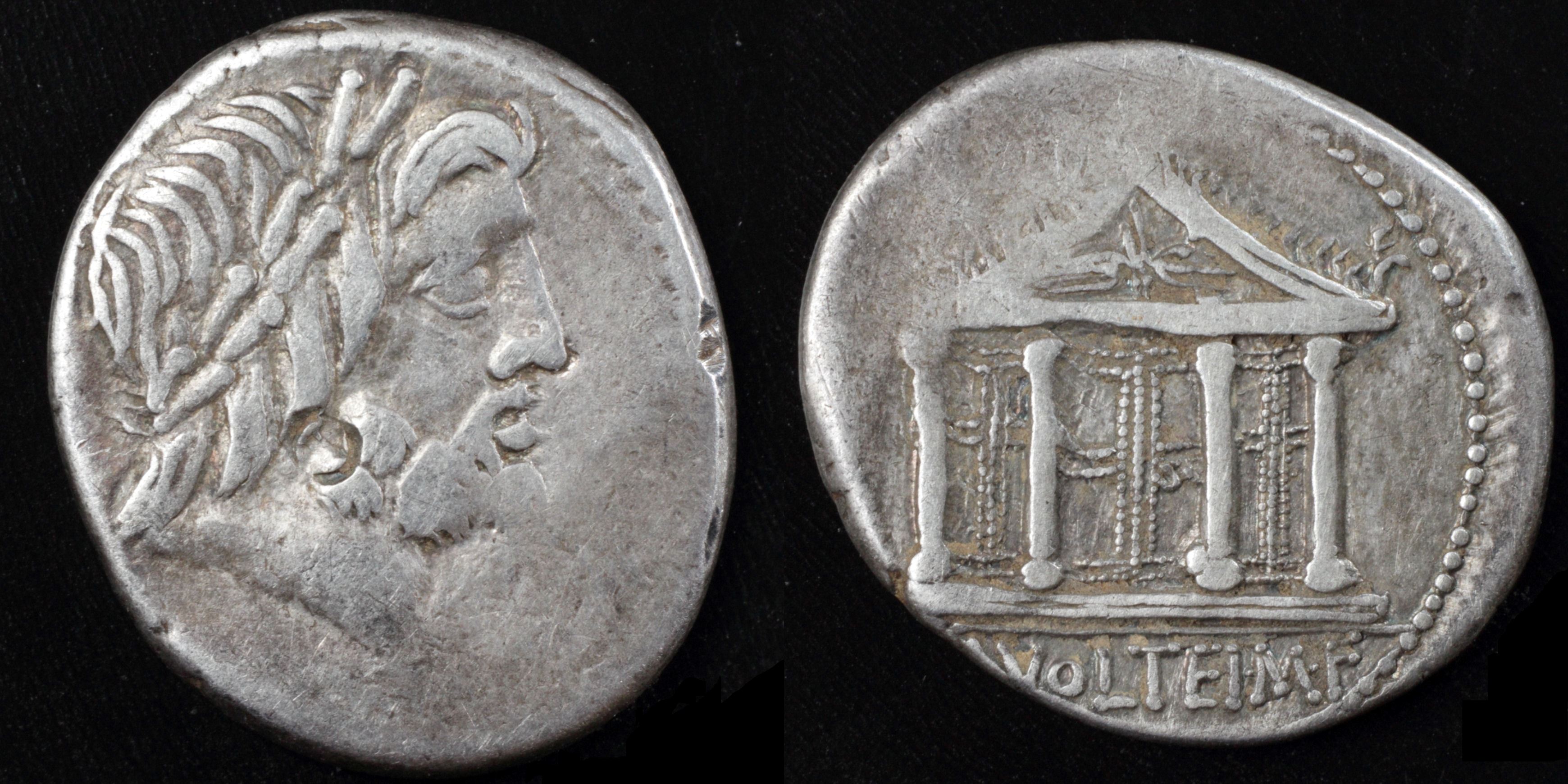
Reverse: tetrastyle temple of Jupiter Capitolinus, thunderbolt in pediment, M·VOLTEI·M·F
Die Orientation: -
Weight: 4.1 g
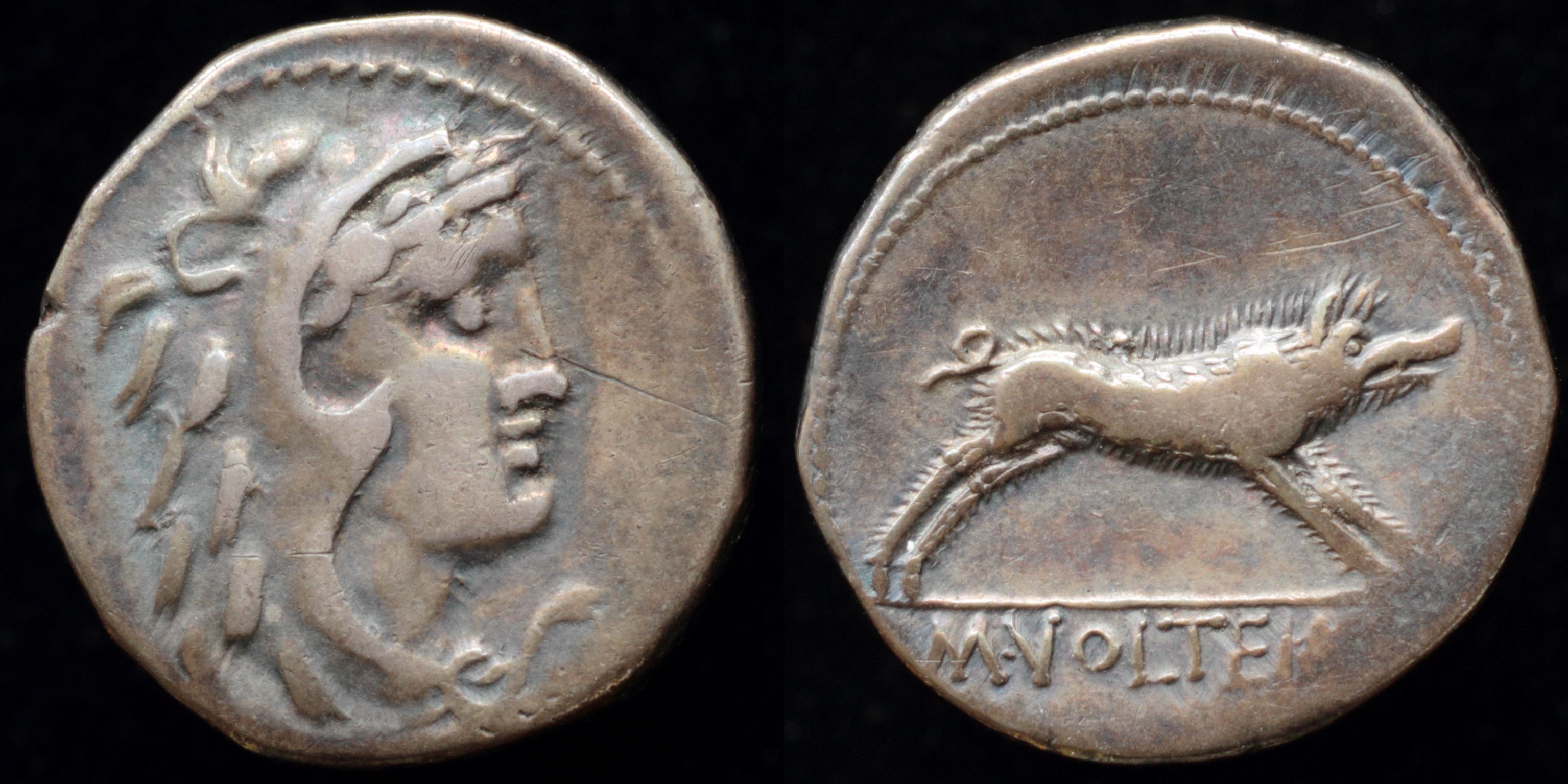
Reverse: Erymanthian Boar right, M·VOLTEI·M·F
Die Orientation: -
Weight: 4.1 g
(2).jpg)
Reverse: Cybele seated in biga of lions right; O above, M VOLTEI M F in exergue
Die Orientation: 6 H
Weight: 3.89 g
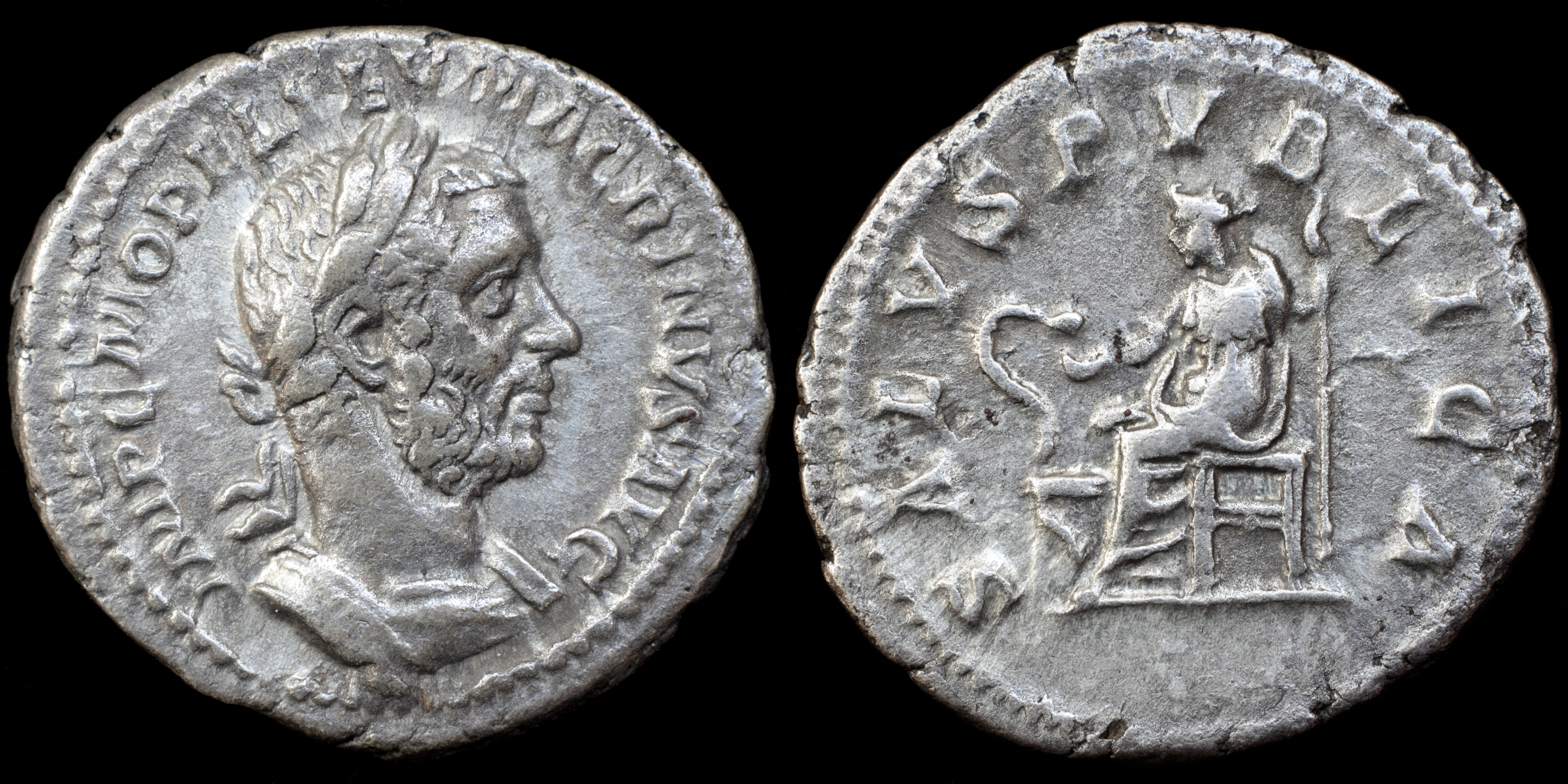
Reverse: Salus seated left, holding patera over altar from which a snakes rises to eat offering; SALVS PVBLICA
Die Orientation: -
Weight: 3.52 g
.jpg)
Reverse: FELICITAS TEMPORVM / Felicitas standing left, holding short caduceus and scepter
Die Orientation: -
Weight: 2.89 g
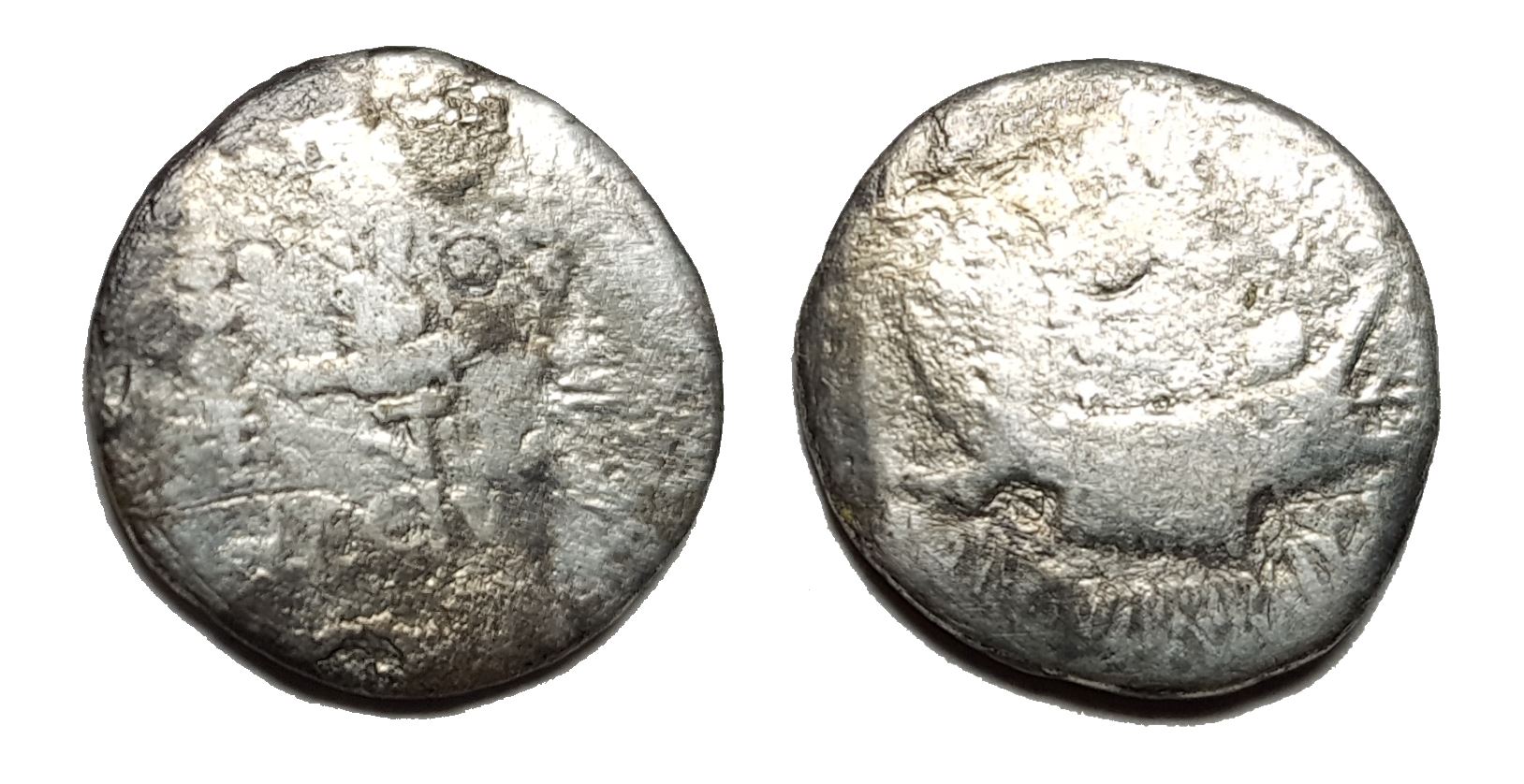
Reverse: LEG V
Die Orientation: -
Weight: 2.73 g
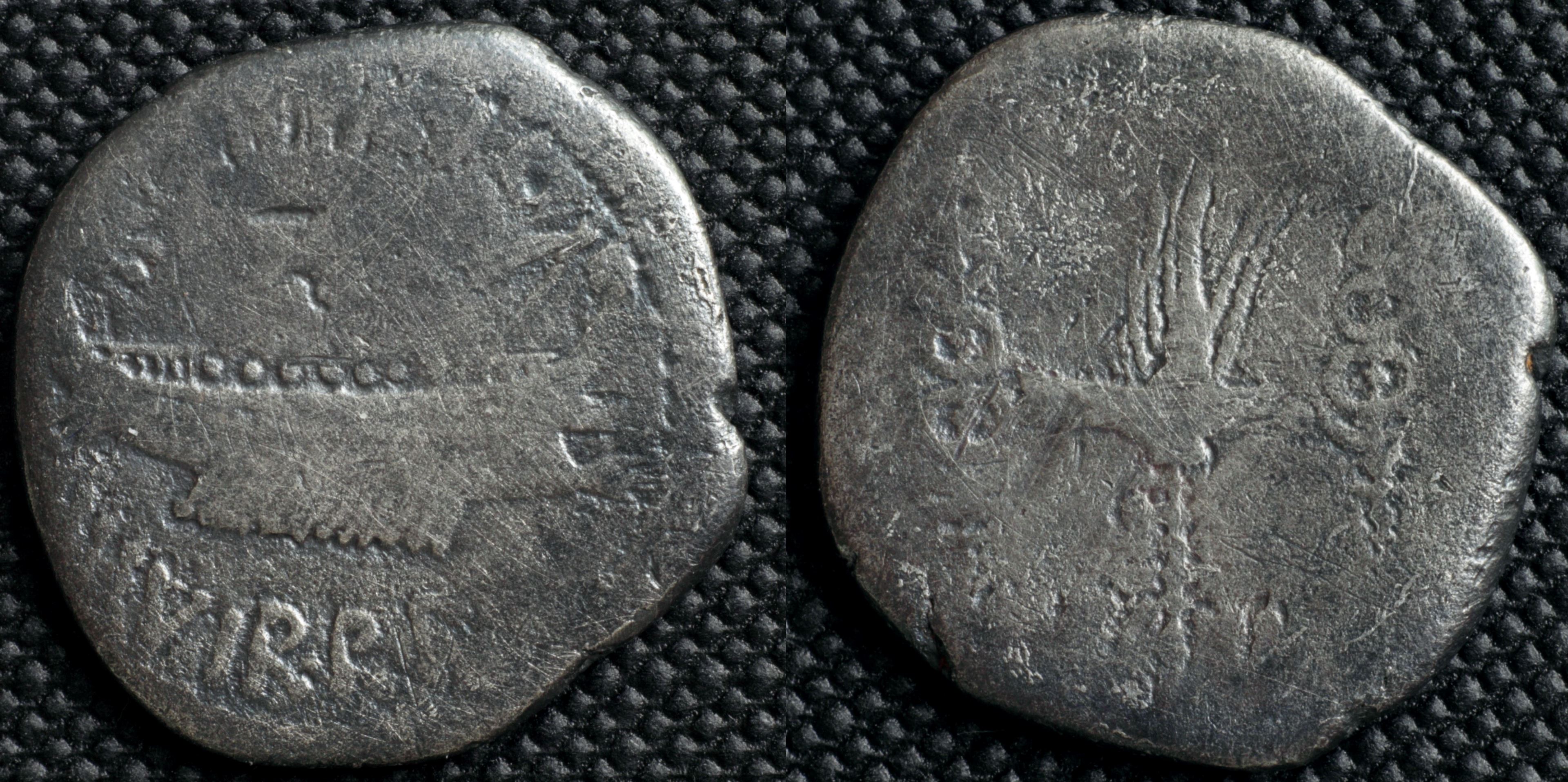
Reverse: legionary aquila between two standards, LEG X?
Die Orientation: -
Weight: 3 g
moving mint in Greece (maybe Patrae?)
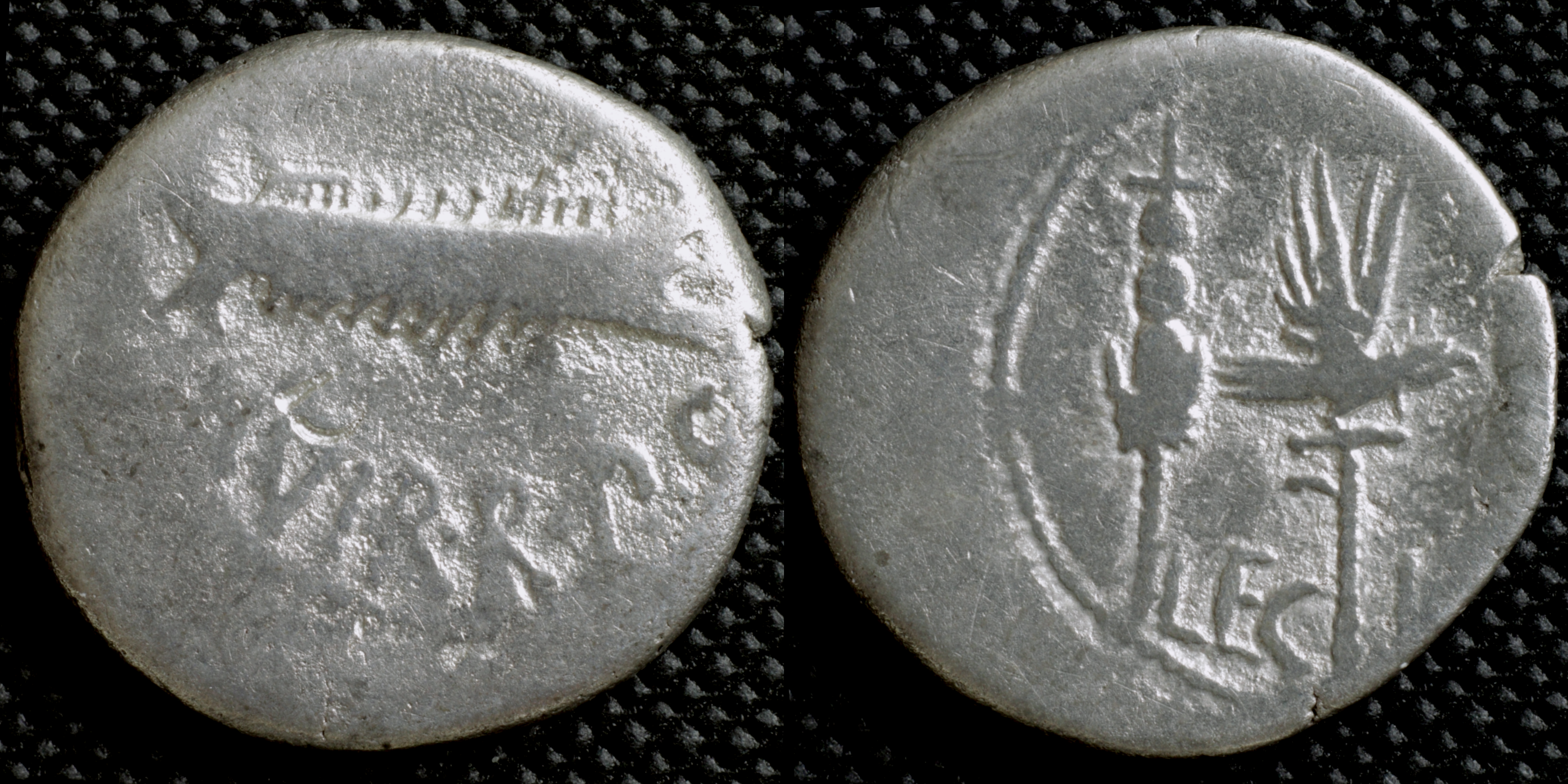
Reverse: legionary aquila between two standards, LEG_II ?
Die Orientation: -
Weight: 3.6 g
moving mint in Greece (maybe Patrae?)
.jpg)
Reverse: Aquila (eagle) between two standards; around, LEG XVII CLASSICAE
Die Orientation: -
Weight: 3.27 g
Quality VF-F
.jpg)
Reverse: LEG V; Legionary eagle between two standards
Die Orientation: 6 H
Weight: 3.7 g
.png)
Reverse: ANTONIVS/AVG • IMP • III in two lines.
Die Orientation: 5 H
Weight: 3.84 g
"The carefully concealed letter "P" behind the ear of Antony's portrait represents the only known example of an artist's signature on a Roman Republican coin. The letter went unnoticed by numismatists for centuries before it was recognized in the early decades of the twentieth century."
.png)
Reverse: Desultor (horseman who leaps from one horse to another), wearing conical cap and holding whip, right on horseback, second horse behind; palm frond and wreath to left; P SEPVLLIVS above, MACER below.
Die Orientation: 8 H
Weight: 3.87 g
"This is the first portrait issue of Mark Antony. Struck within a month or two of the assassination of Julius Caesar, Antony is shown bearded, clearly symbolic of one in mourning. For the next two and a half years, until after the battle of Philippi, the portraits on coins of both Mark Antony and Octavian were bearded for the same reason. The reverse depicts a rider who switches from one horse to the other while the horses are in motion, an equestrian event which was part of the Parilian games, celebrated each year on 21 April. In 44 BC, the year of Julius Caesar’s assassination, the Parilia celebrated Caesar’s victory at Munda. Including a desultor on the reverse, Mark Antony probably attempted to kindle public support of the Caesarian cause." Provenance: From the John L. Cowan Collection. Ex Cederlind BBS 154 (31 March 2010), lot 213, ex Gorny & Mosch auction 180 (12 October 2009), lot 322, ex Numismatica Ars Classica auction 41 (20 November 2007), lot 17.
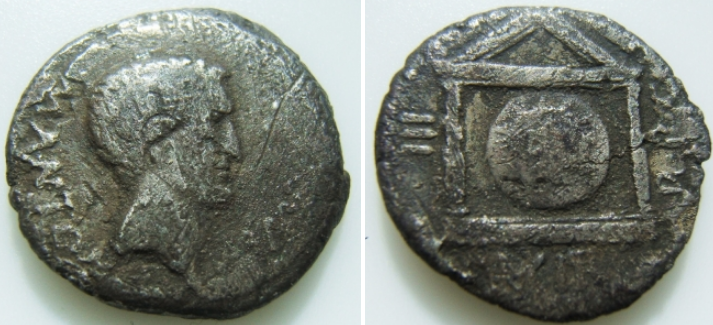
Reverse: III VIR R • P • C - Facing head of Sol on disk within distyle temple.
Die Orientation: 6 H
Weight: 3.25 g
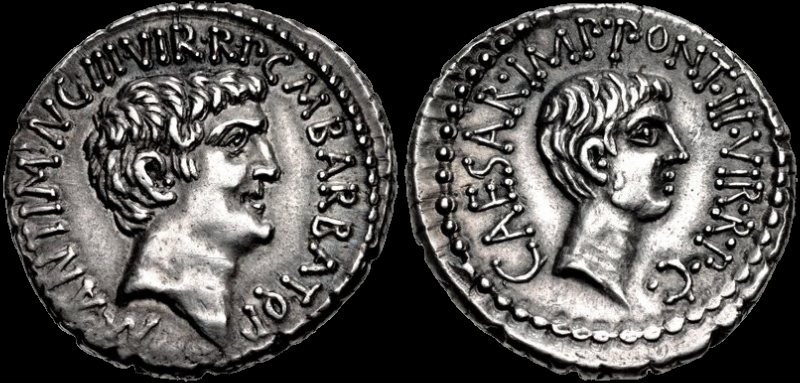
Reverse: Bare head of Octavian right, wearing slight beard; CAESAR • IMP • PONT • III • VIR • R • P • C • around.
Die Orientation: 12 H
Weight: 3.99 g
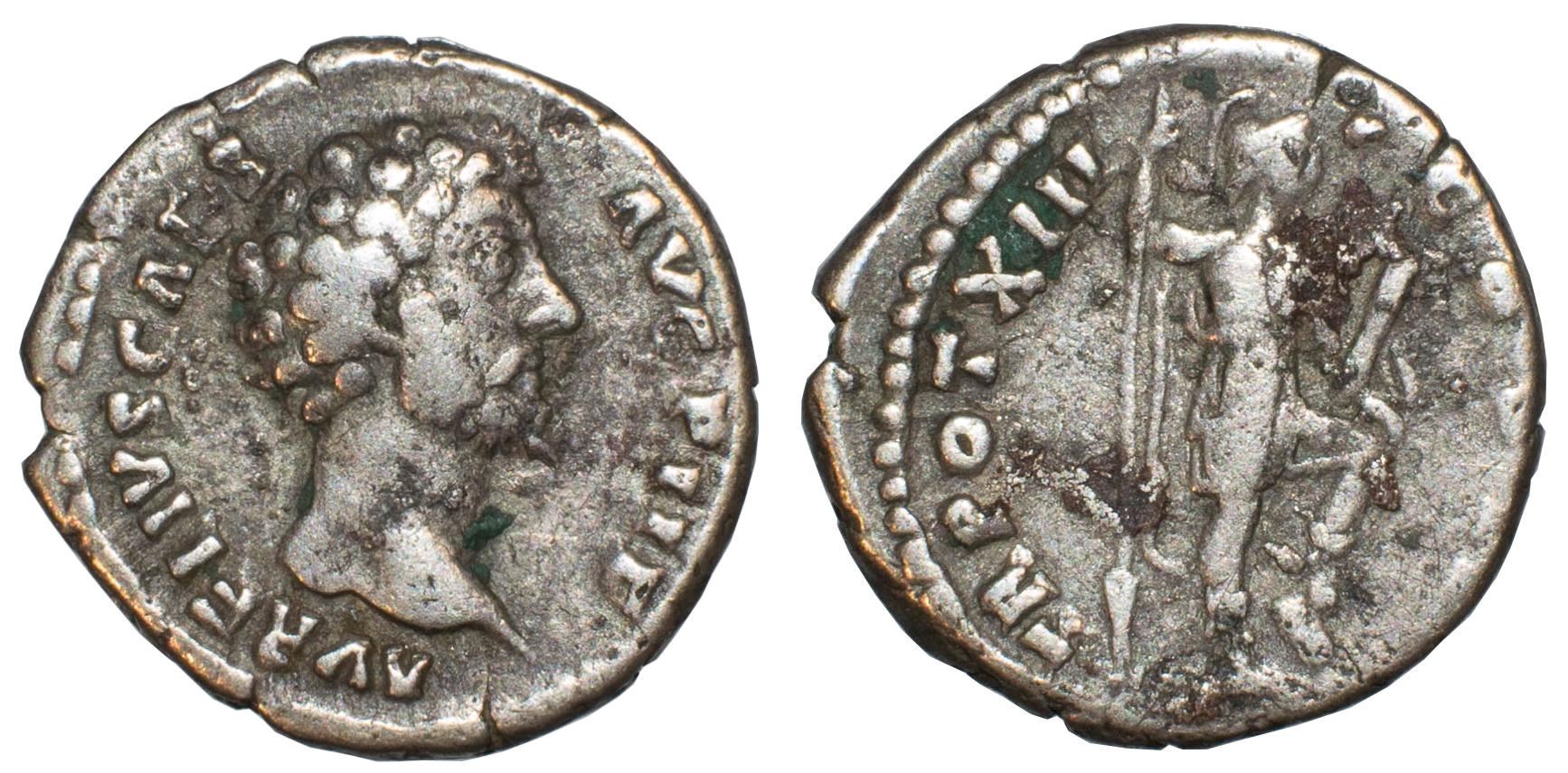
Reverse: TRPOT XIII, Virtus standing right, foot on helmet
Die Orientation: 0 H
Weight: 33 g
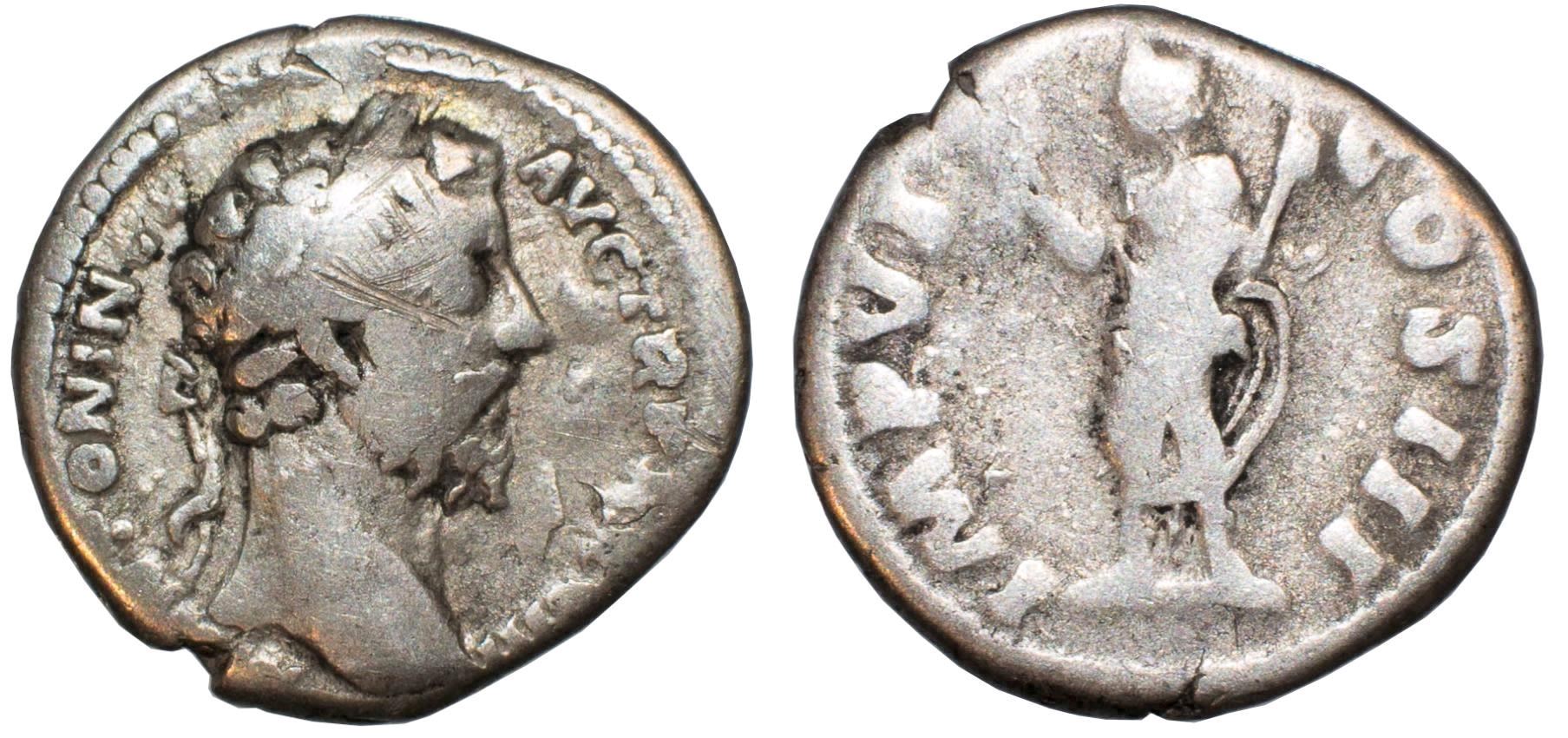
Reverse: IMP VI COS III, Marcus Aurelius standing left, holding scepter & branch
Die Orientation: 0 H
Weight: 0 g
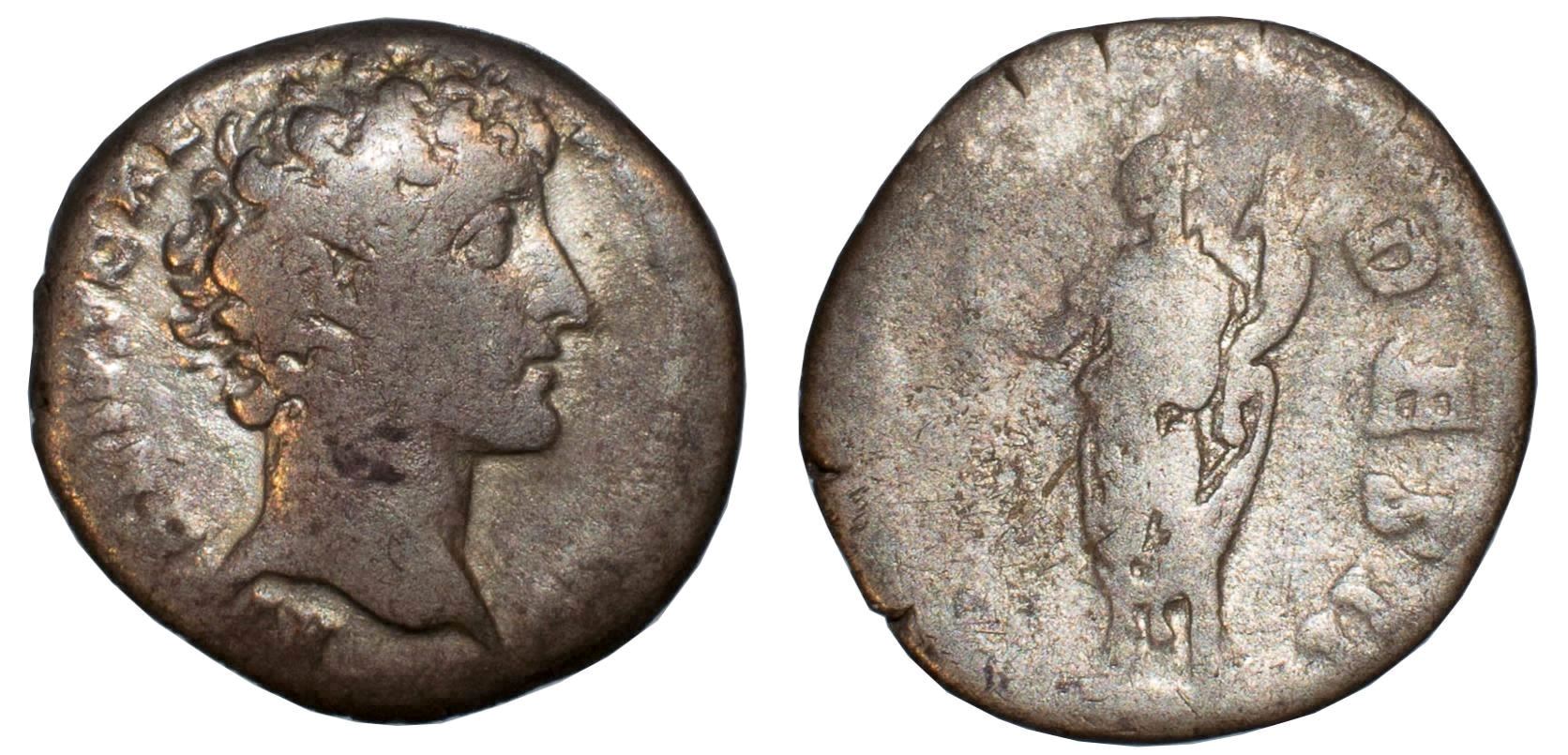
Reverse: COS DES II, Honos standing left holding branch and cornucopiae
Die Orientation: 0 H
Weight: 0 g
.jpg)
Reverse: TR POT VI COS II, Genius Exercitus, holding standard and sacrificing from patera over altar
Die Orientation: 5 H
Weight: 3.23 g
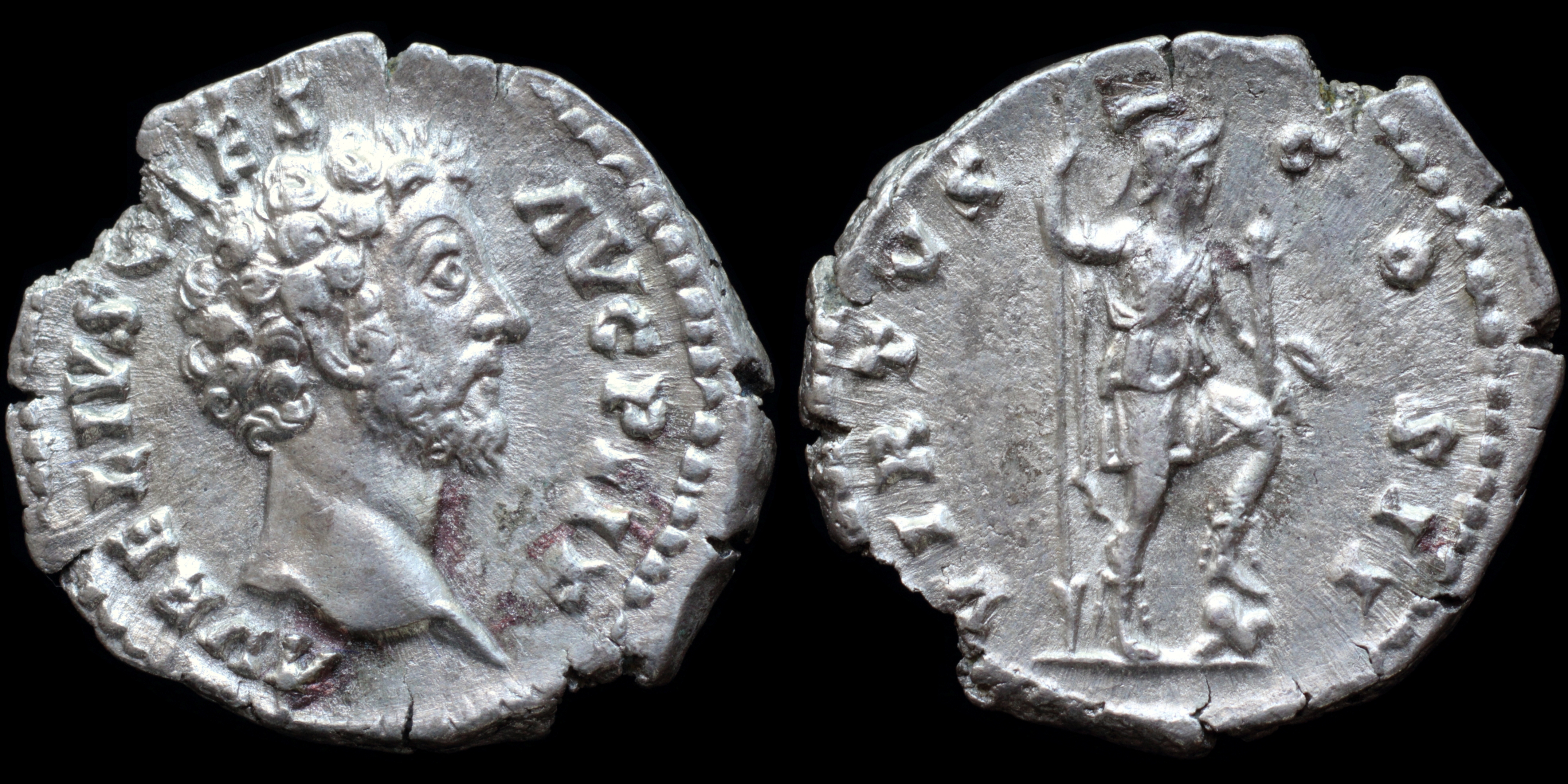
Reverse: Virtus standing right, holding spear and parzonium, stepping on helmet; VIRTVS__COS II
Die Orientation: -
Weight: 3.09 g
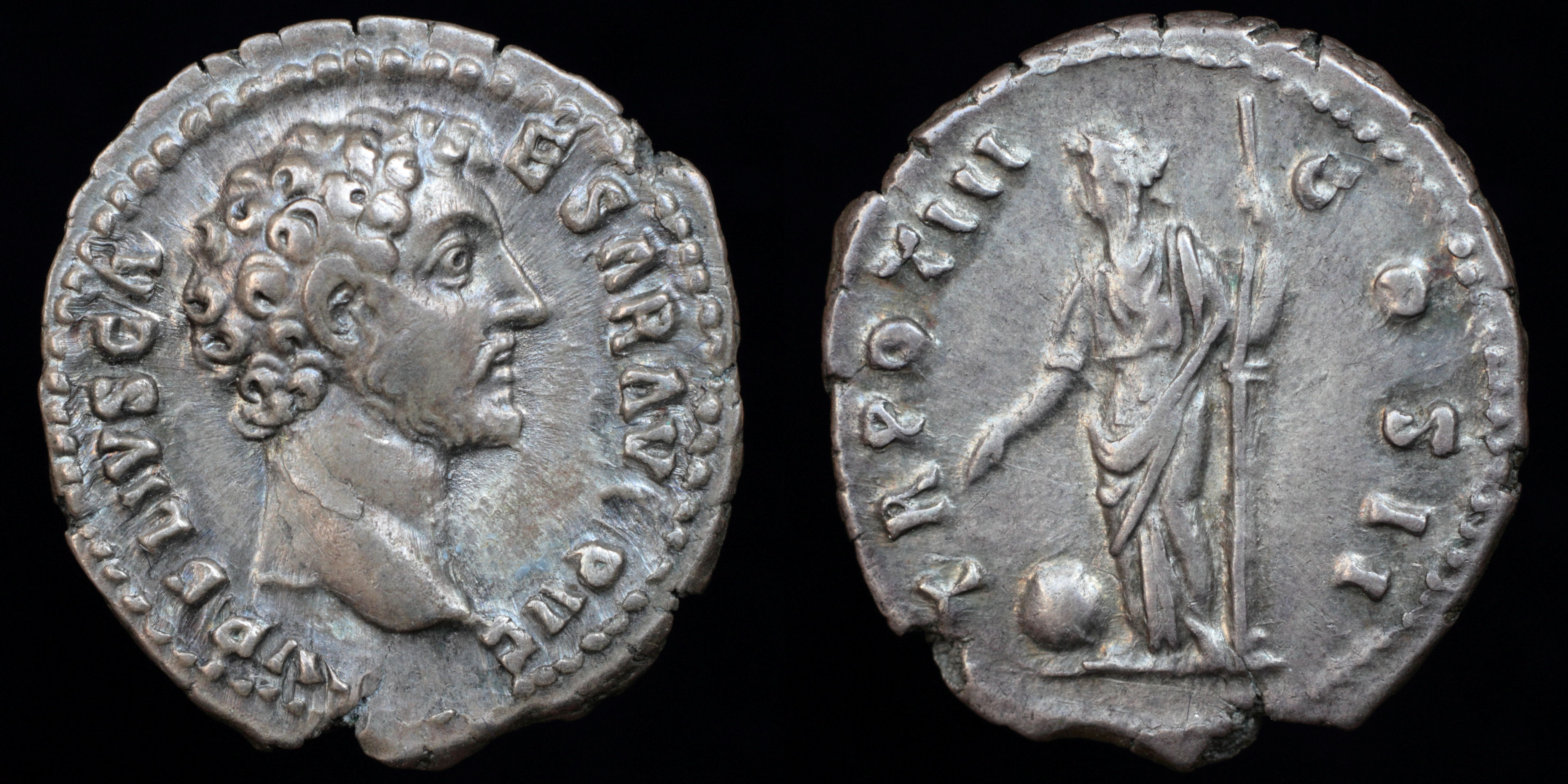
Reverse: Providentia standing left holding scepter; globe at feet; TR POT III__COS II
Die Orientation: -
Weight: 3.47 g
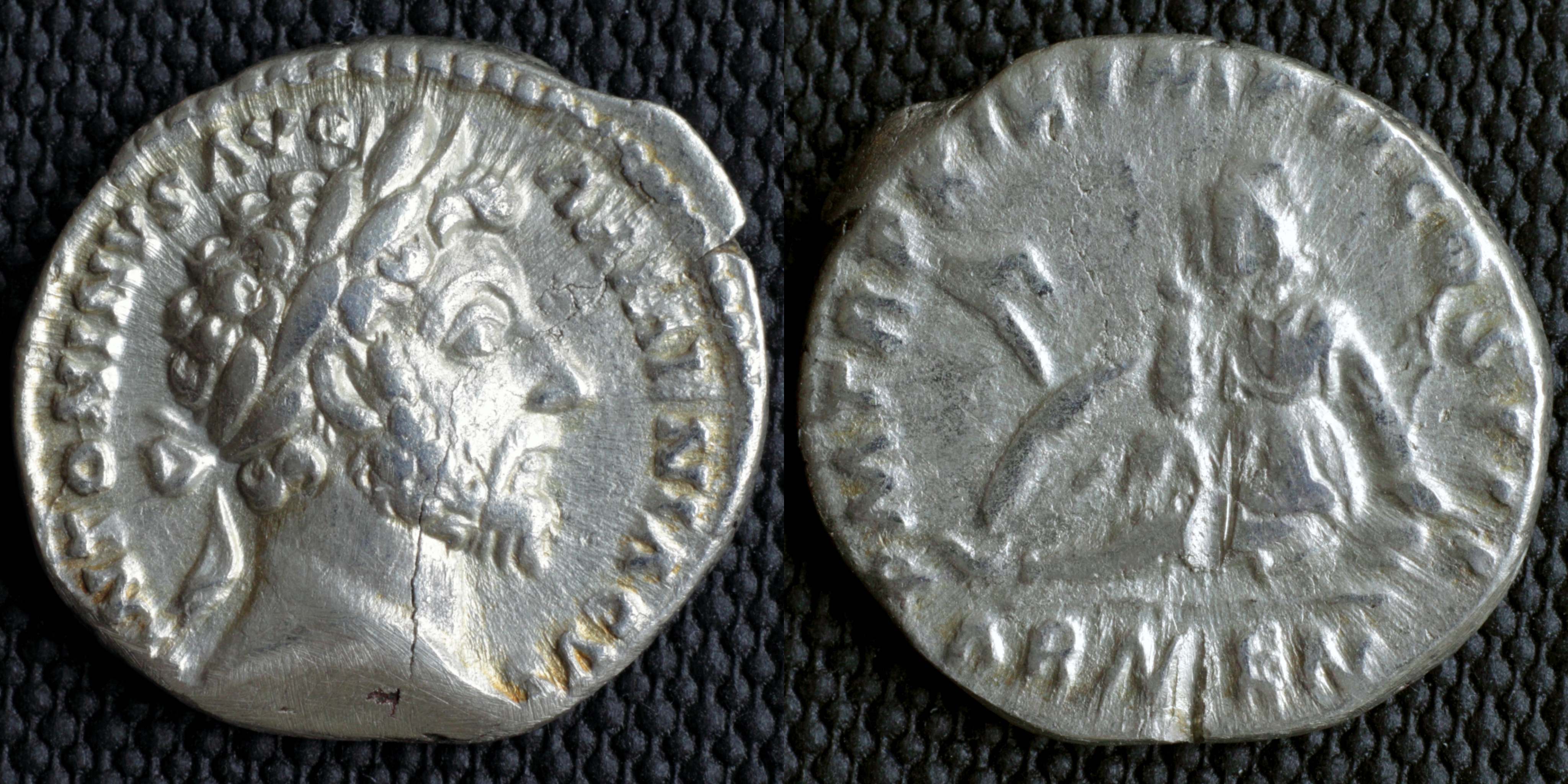
Reverse: Armenia seated left, mourning, vexillum and shield before, hand on bow; P M TR P XIX IMP II COS III / ARMEN
Die Orientation: -
Weight: 2.8 g
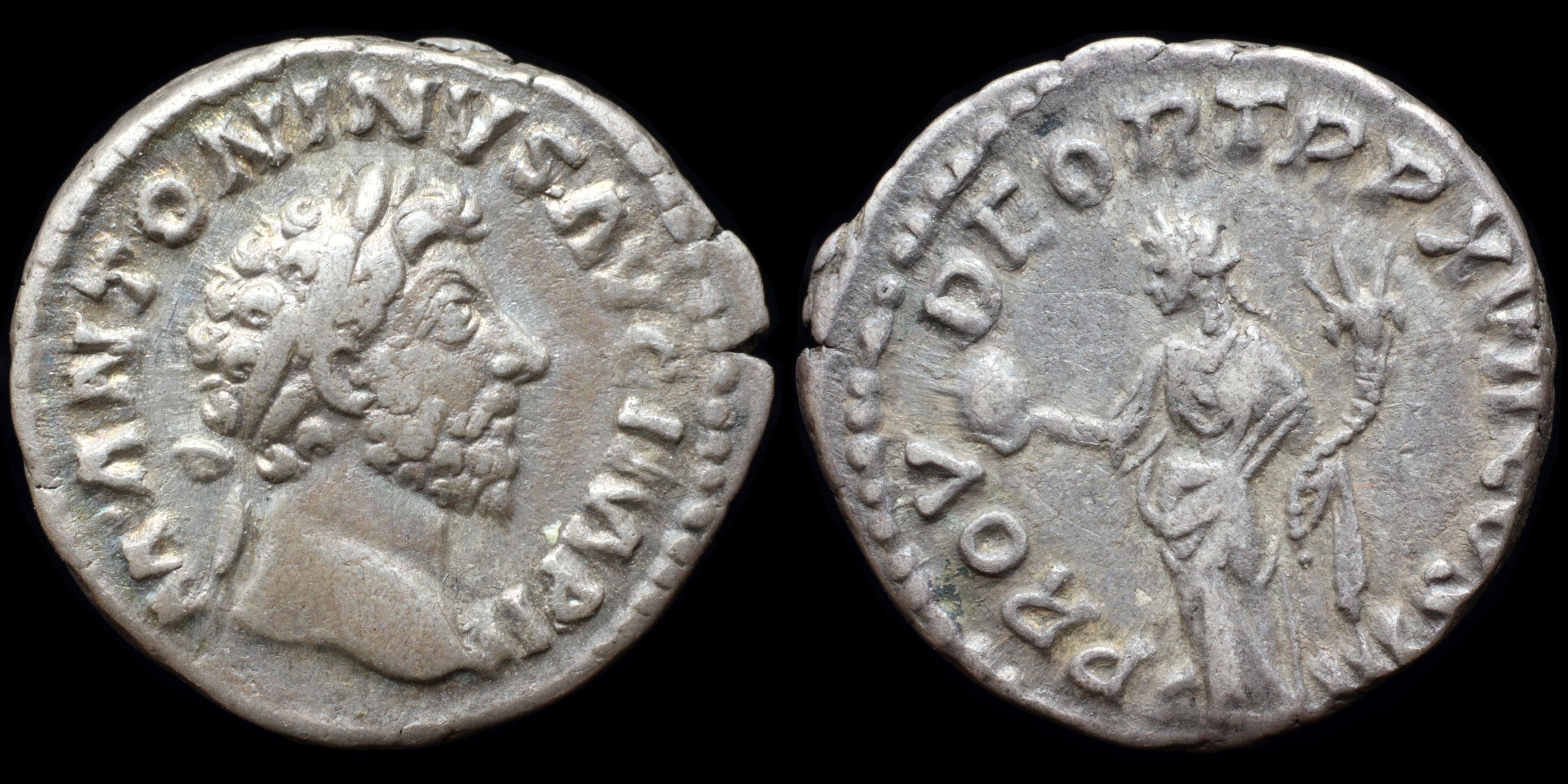
Reverse: Providentia standing left holding globe and cornucopia; PROV__DEOR TR P XVII COS III
Die Orientation: -
Weight: 3.38 g
(0).jpg)
Reverse: TR P XXIX IMP VIII COS III, Felicitas standing left, holding caduceus and cornuopiae
Die Orientation: 5 H
Weight: 2.91 g
.jpg)
Reverse: LIBERAL AVG V COS III / Liberalitas standing left, holding abacus and cornucopiae
Die Orientation: 1 H
Weight: 3.25 g
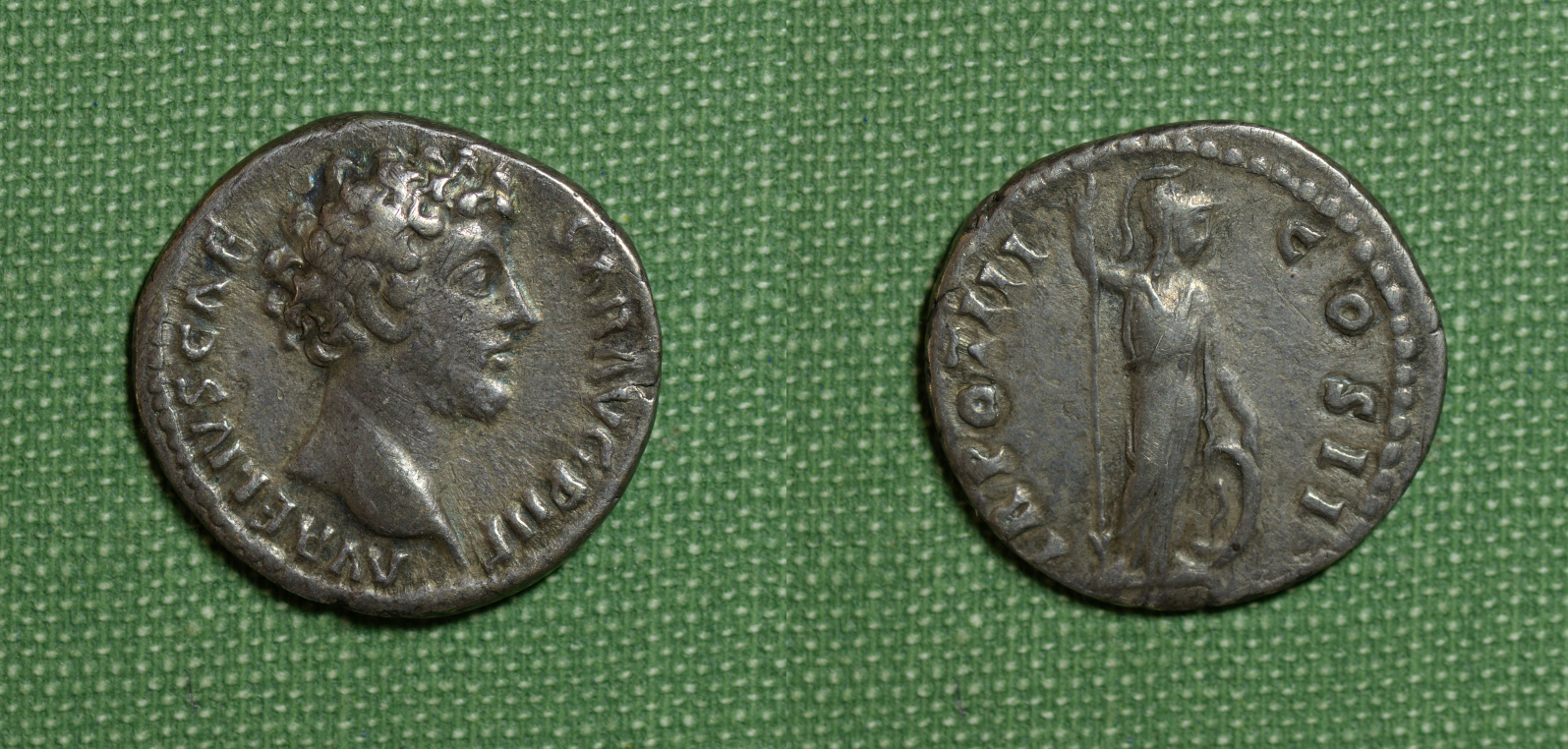
Reverse: Legend: TR POT III COS II Type: Minerva, helmeted, draped, standing right, holding vertical spear in right hand and resting left hand on round shield set on ground
Die Orientation: 12 H
Weight: 3.32 g
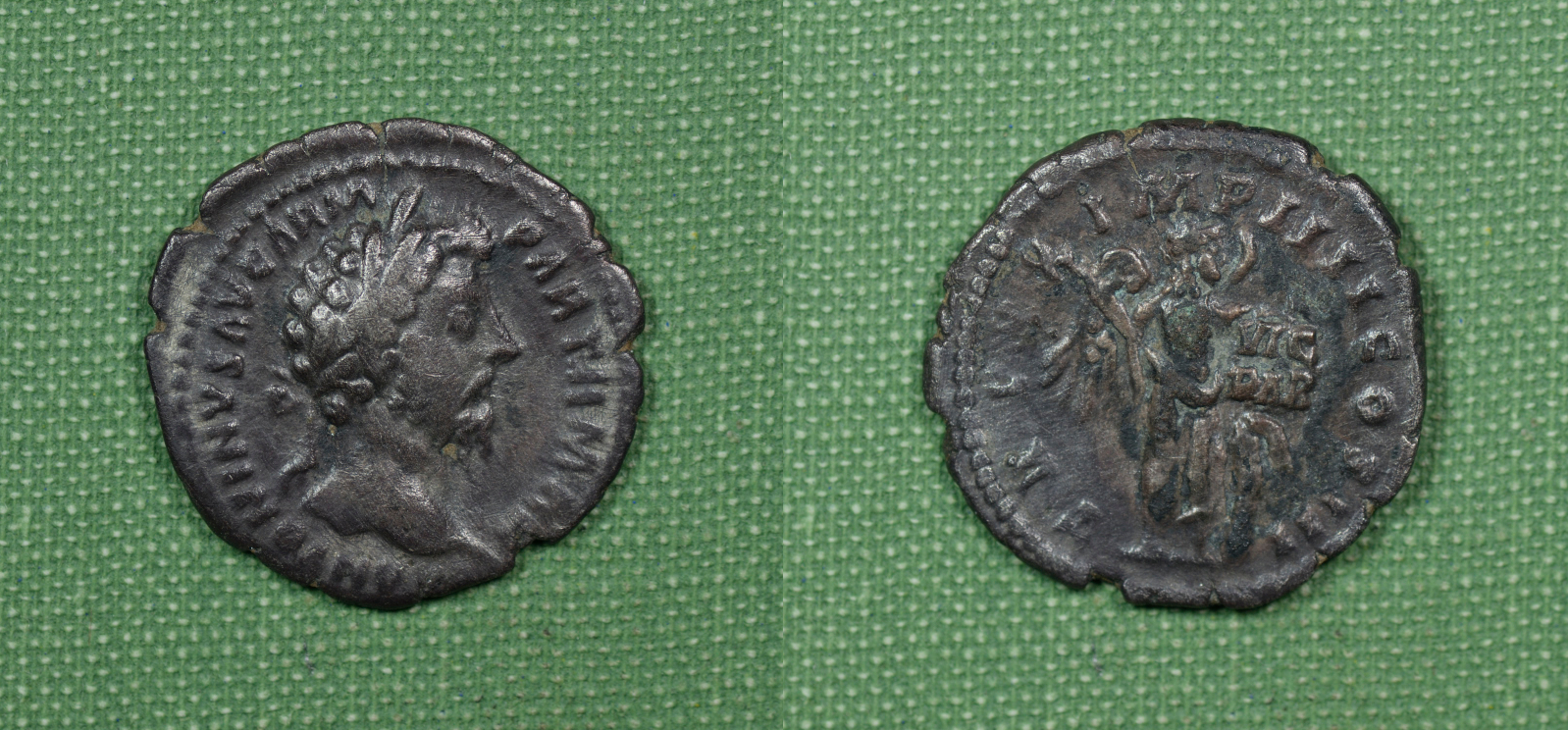
Reverse: Legend: TR P XX IMP IIII COS III Type: Victory, naked to waist, standing front, head right, holding palm, upright, in right hand and with left hand fixing shield, inscribed VIC PAR, on palm-tree right
Die Orientation: 12 H
Weight: 2.68 g
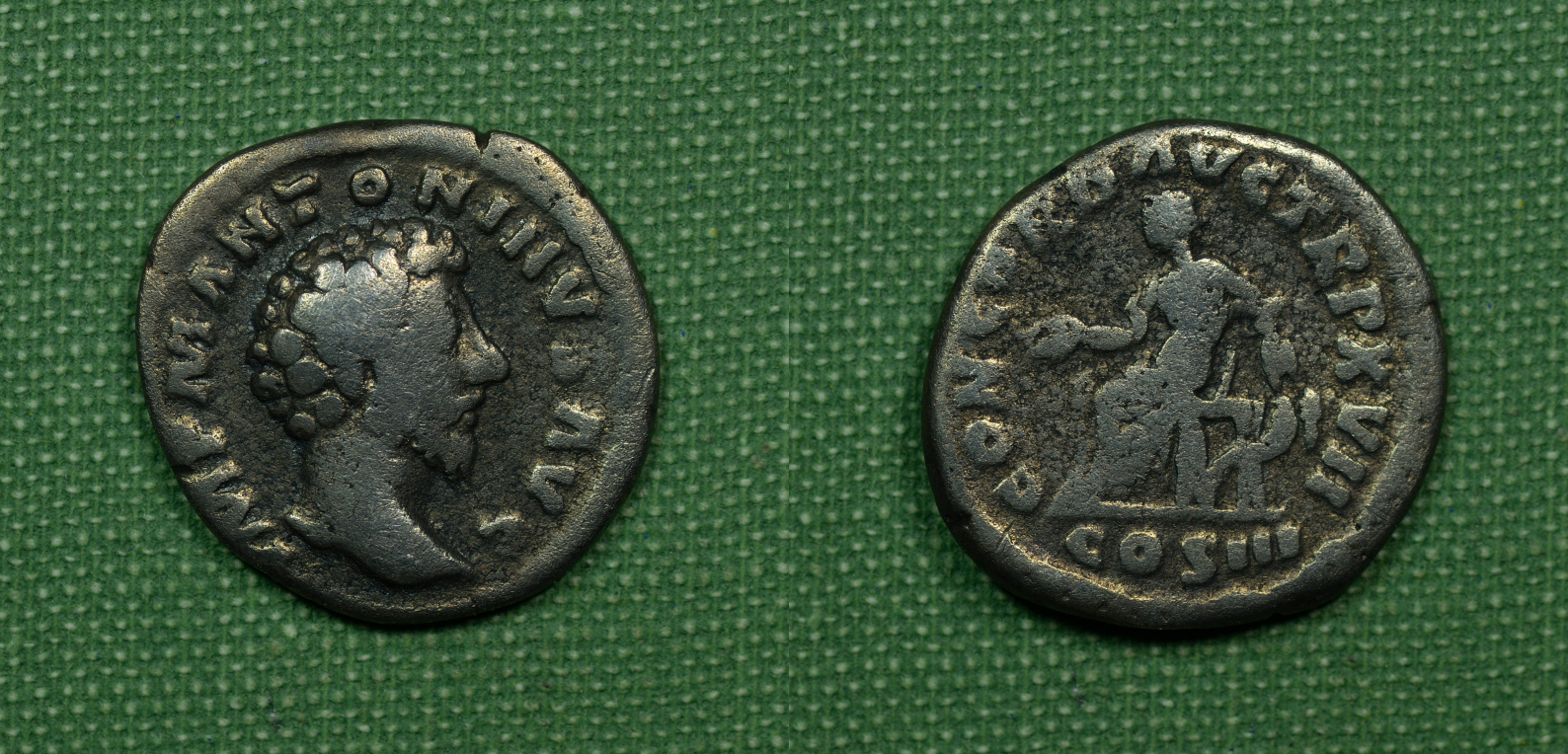
Reverse: CONCORD AVG TR P XVII COS III, Concordia, draped, seated left on low seat, holding patera in extended right hand and resting left arm on statuette of Spes: which seems to rest on the cornucopia
Die Orientation: 6 H
Weight: 2.97 g
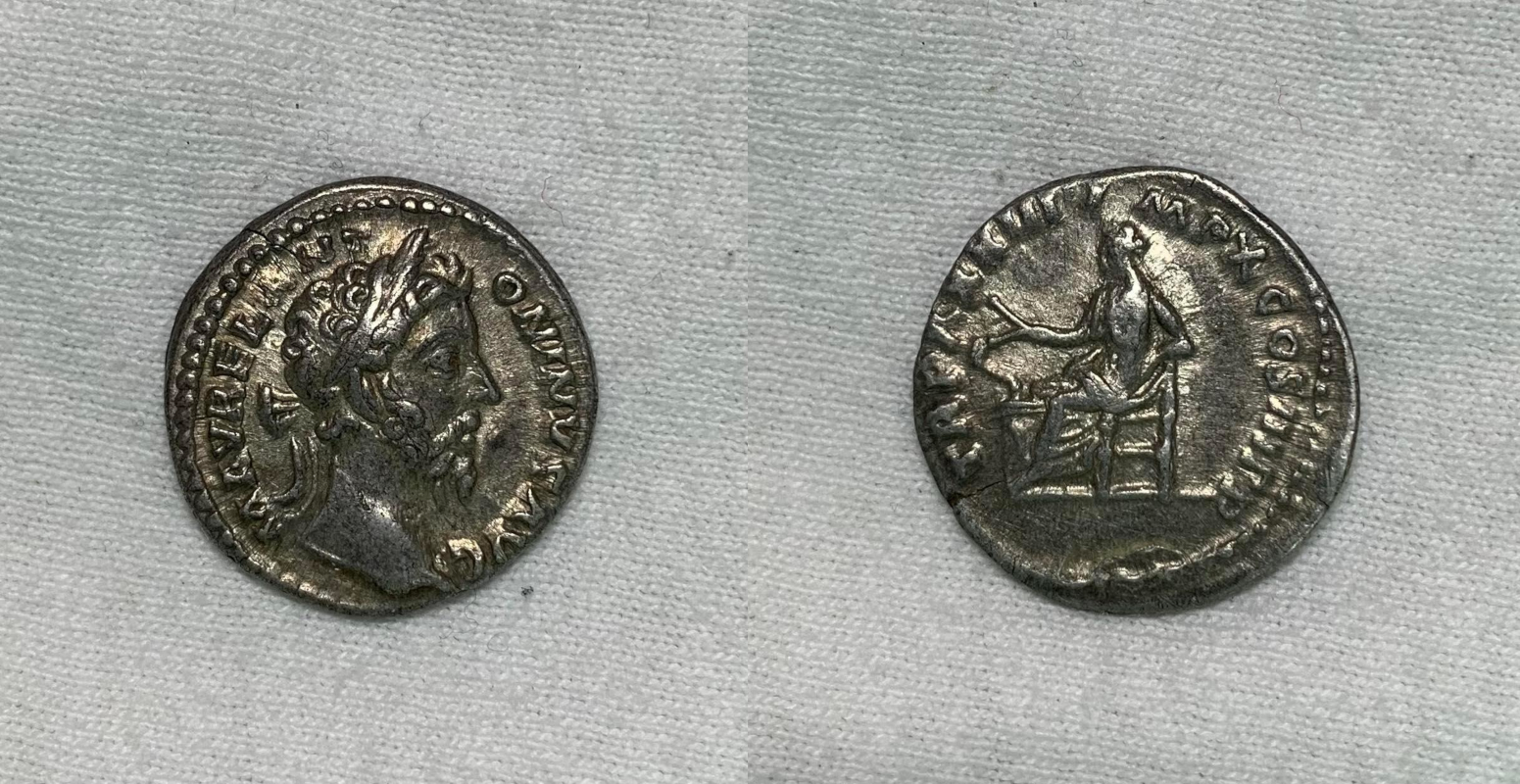
Reverse: TR P XXXIII IMP X COS III P P: Salus, draped, seated left on low seat, holding two corn-ears (or poppy, or branch); at her feet, snake coiled round altar
Die Orientation: 6 H
Weight: 2.74 g

Reverse: Soldier (or Mars?) standing facing, head right, left foot on lorica, holding inverted spear in right hand and sword in left; to right, recumbent bull facing, head left; I in exergue.
Die Orientation: -
Weight: 3.75 g
Provenance: Roma Numismatics Auction XVI (26 September 2018), lot 537. Ex Bolaffi Spa, Auction 29 (30 November 2016), lot 80.
.png)
Reverse: Oath-taking scene: Youth kneeling by standard, holding pig at which eight soldiers (four on each side) point their swords, C in exergue.
Die Orientation: -
Weight: 3.64 g
.png)
Reverse: Soldier(or Mars?), nude to waist, standing facing, helmeted head turned right, holding lance with his right hand, sword in his lowered left hand; on left, four shields attached to a tree, on right, forepart of bull reclining right, in exergue, IIIV.
Die Orientation: -
Weight: 3.72 g
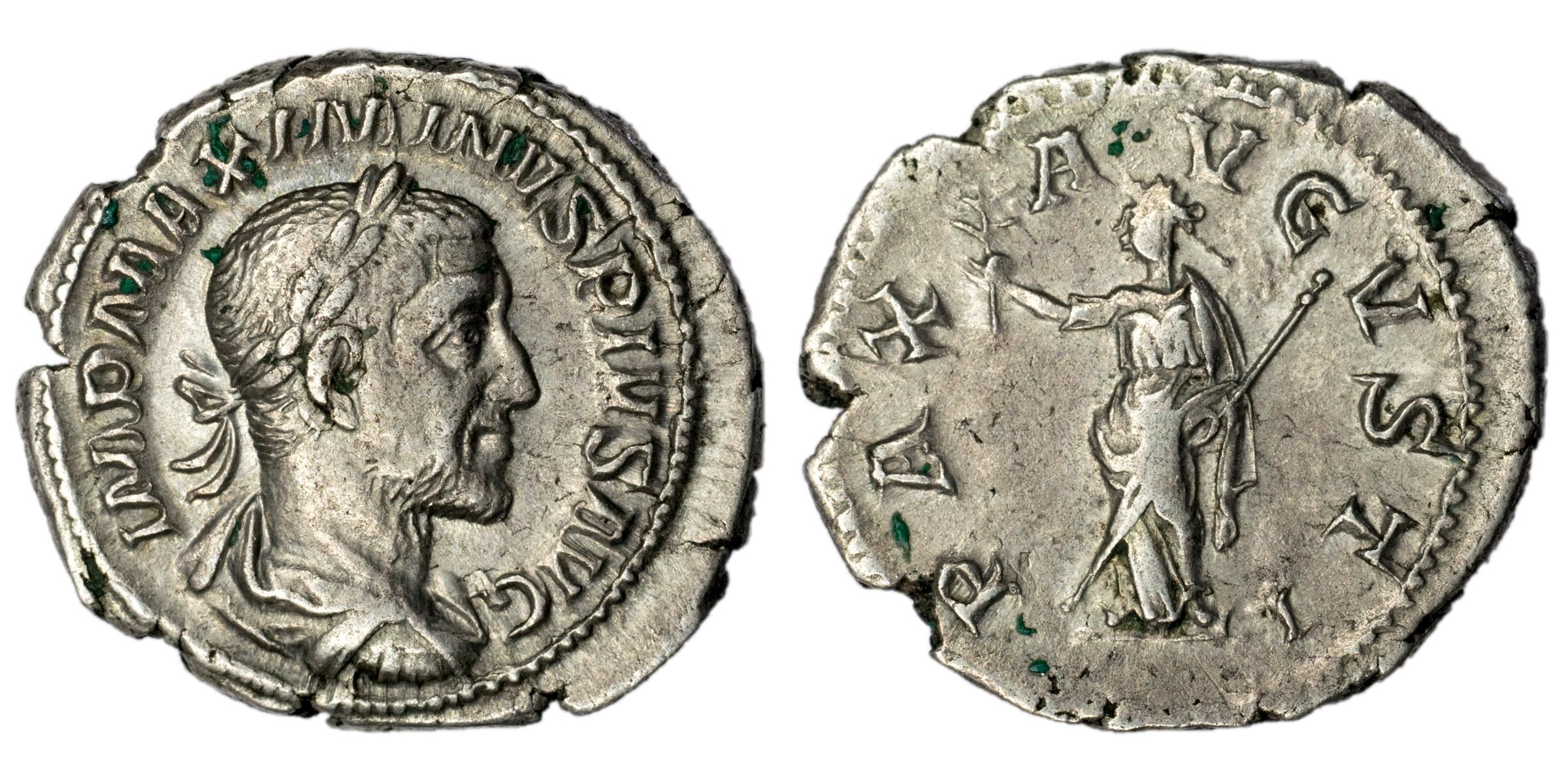
Reverse: PAX AVGVSTI, Pax standing left holding olive branch and sceptre
Die Orientation: 0 H
Weight: 0 g
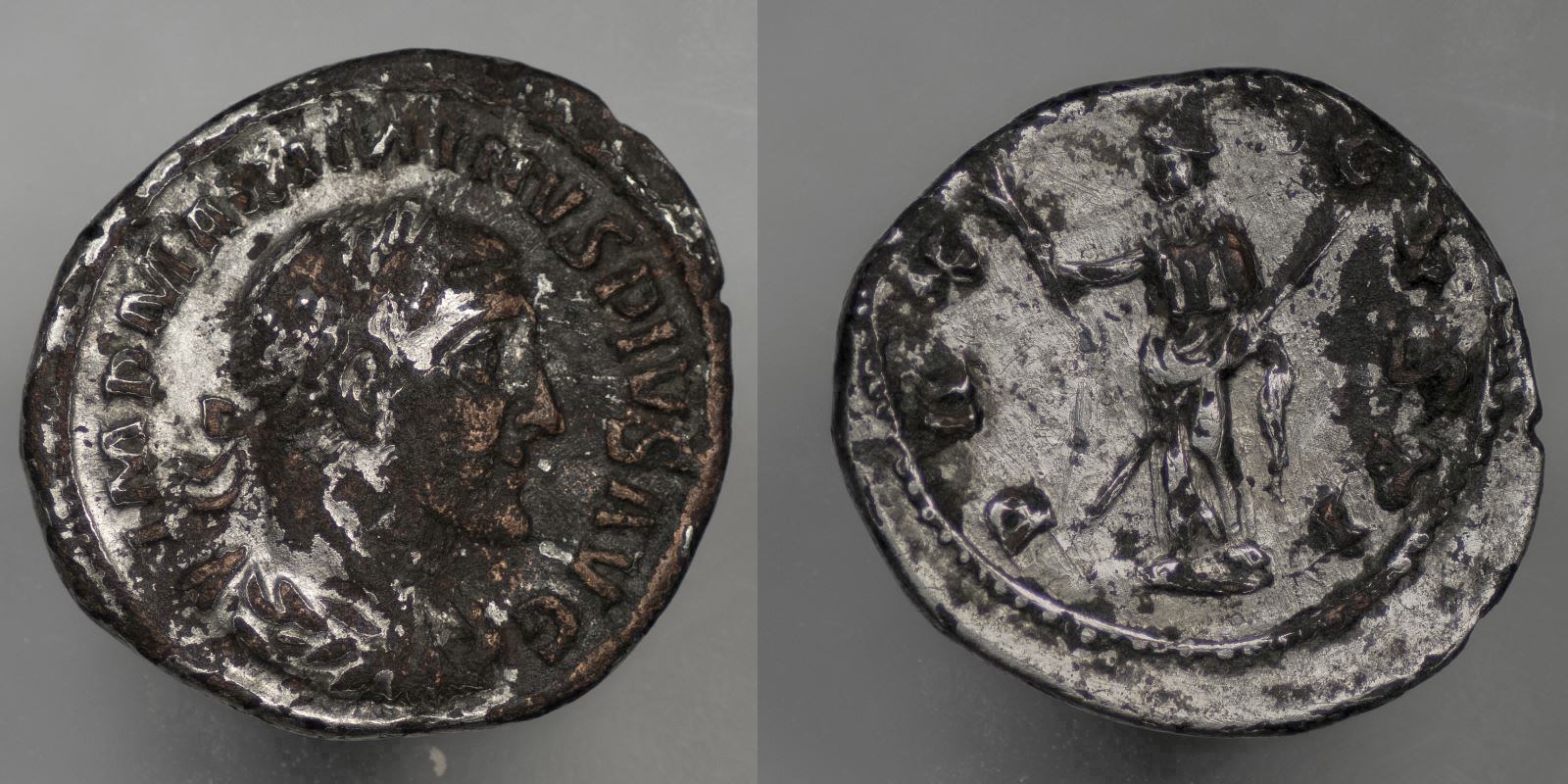
Reverse: PAX AVGVSTI, Pax standing facing left, holding branch and scepter
Die Orientation: 6 H
Weight: 3.24 g
.jpg)
Reverse: PM TRP II COS PP, Maximinus in military attire, standing facing, head left, raising hand and holding spear, legionary standards on both sides
Die Orientation: 6 H
Weight: 3.33 g
(53).jpg)
Reverse: FIDES MILITVM, Fides standing left, holding military standard in each hand
Die Orientation: 12 H
Weight: 2.98 g
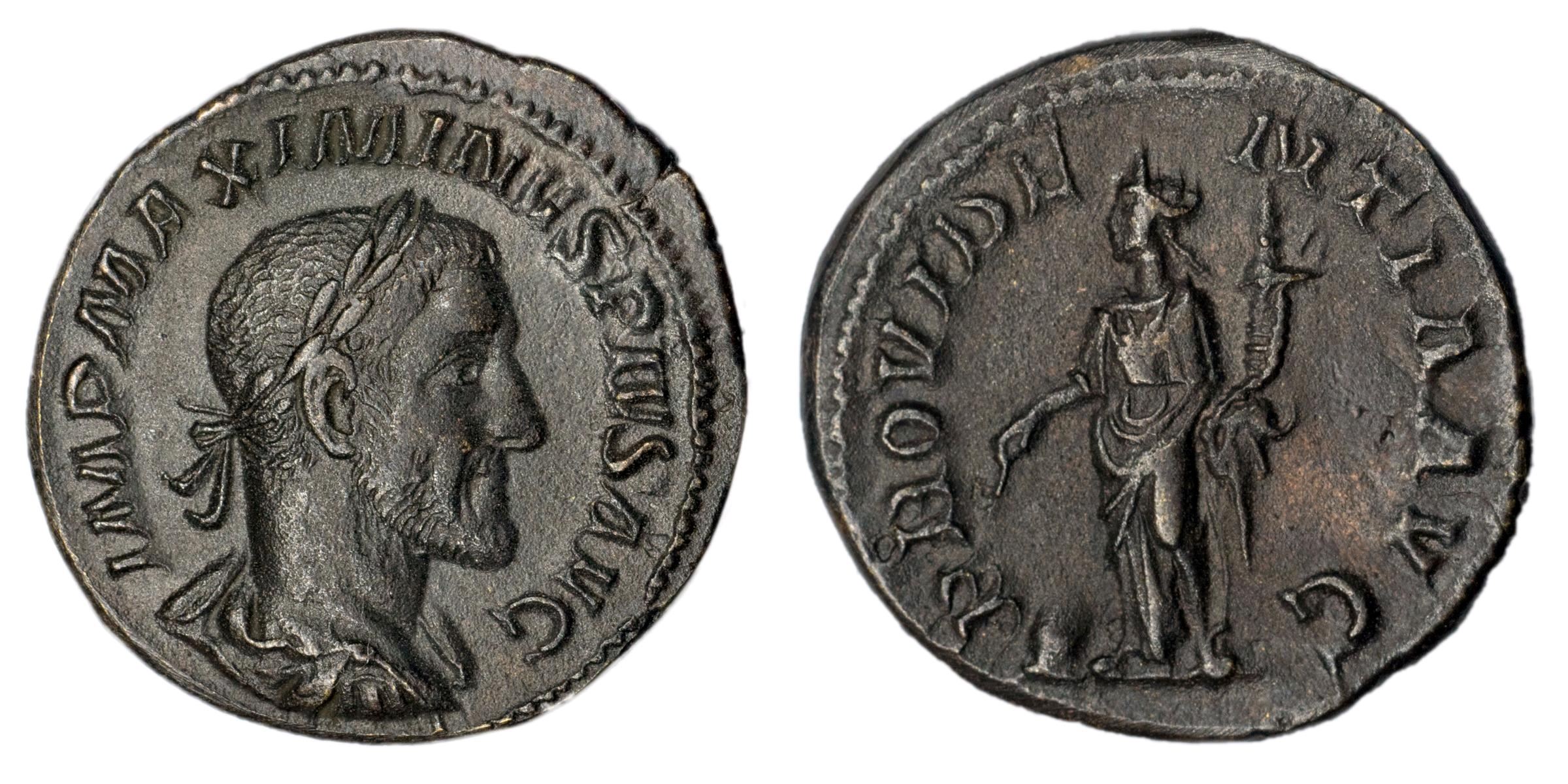
Reverse: PROVIDENTIA AVG, Providentia standing holding baton and cornucopia, globe at feet
Die Orientation: 0 H
Weight: 2.22 g
EX agora auctions lot 29-236.
A so-called 'Limes' (border) denarius struck in bronze.
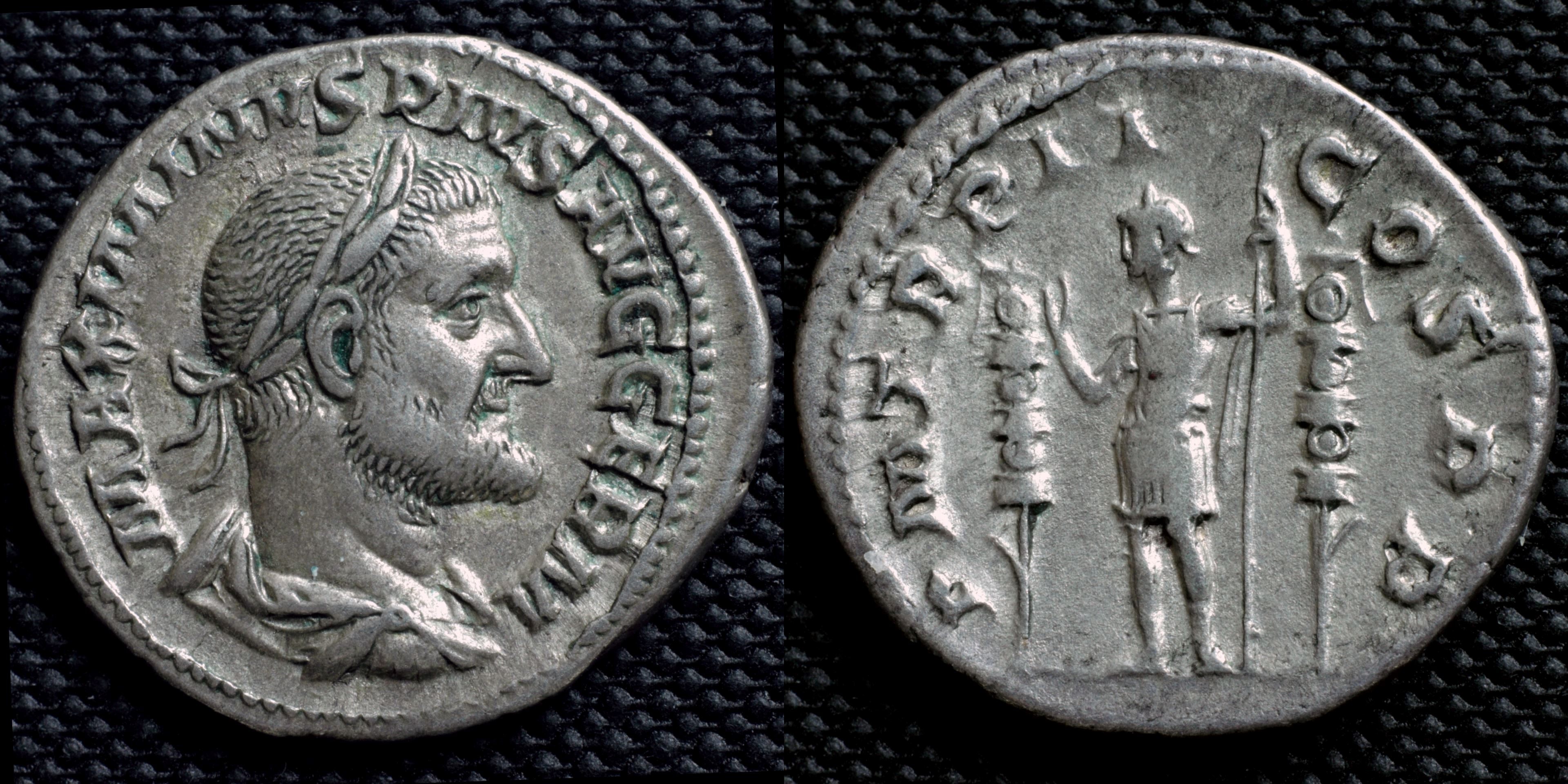
Reverse: Maximinus standing left, raising hand and holding scepter; standard on either side; P M TR P II__COS P P
Die Orientation: -
Weight: 3.01 g
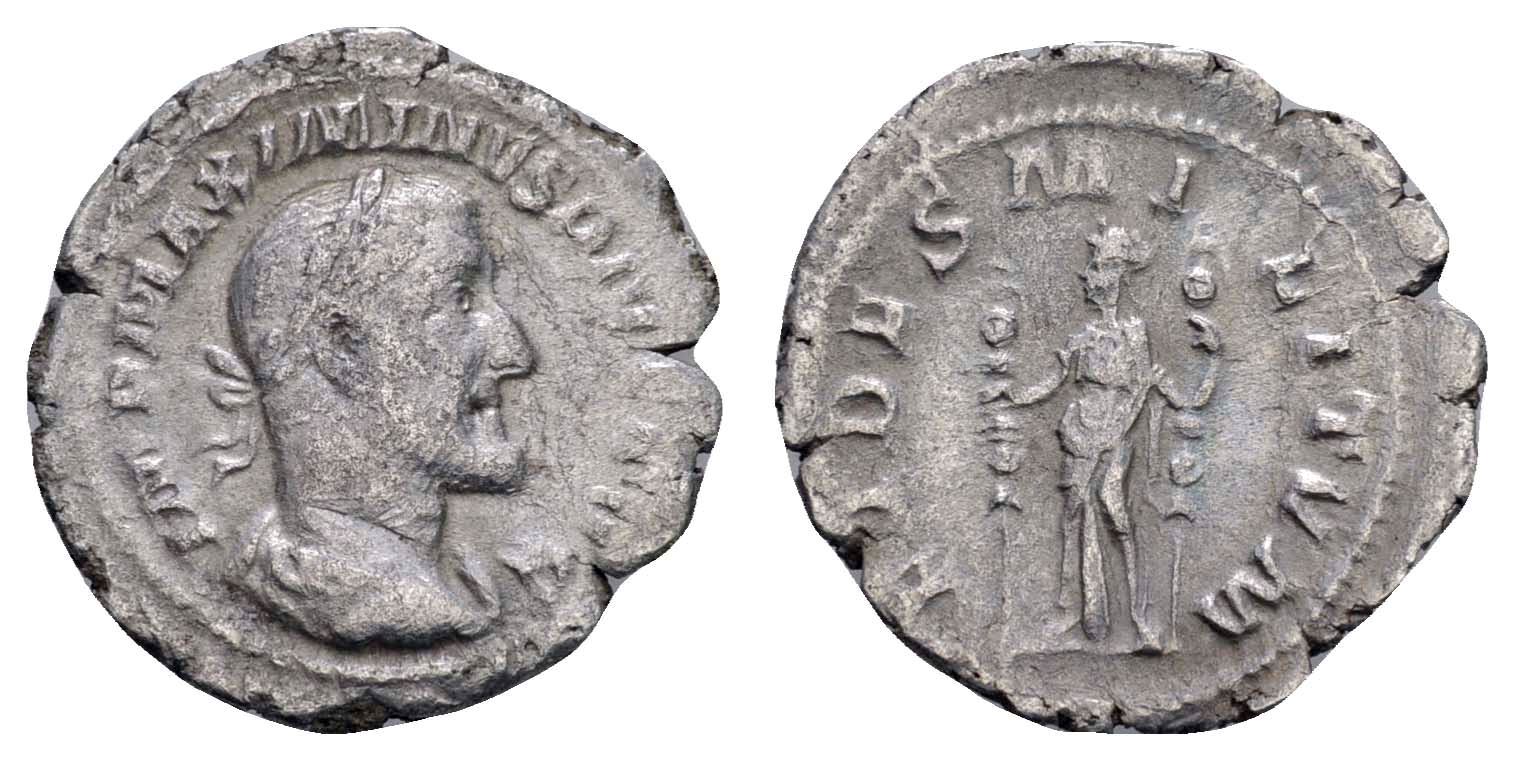
Reverse: FIDES MILITVM / Fides standing left, a standard in each hand
Die Orientation: -
Weight: 1.92 g
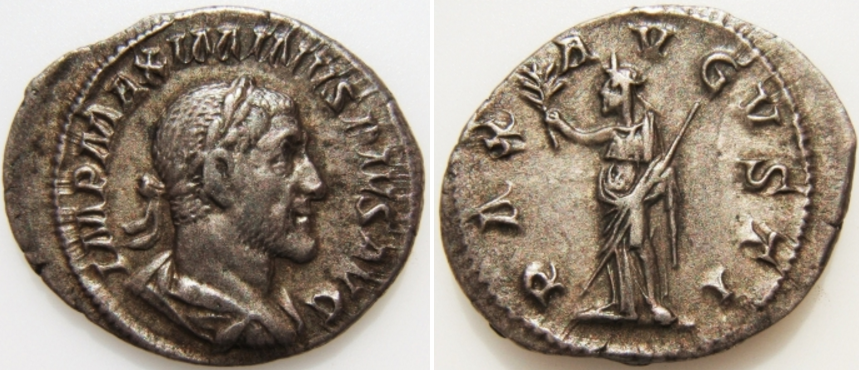
Reverse: PAX AVGVSTI - Pax standing left holding branch and sceptre.
Die Orientation: 6 H
Weight: 2.96 g
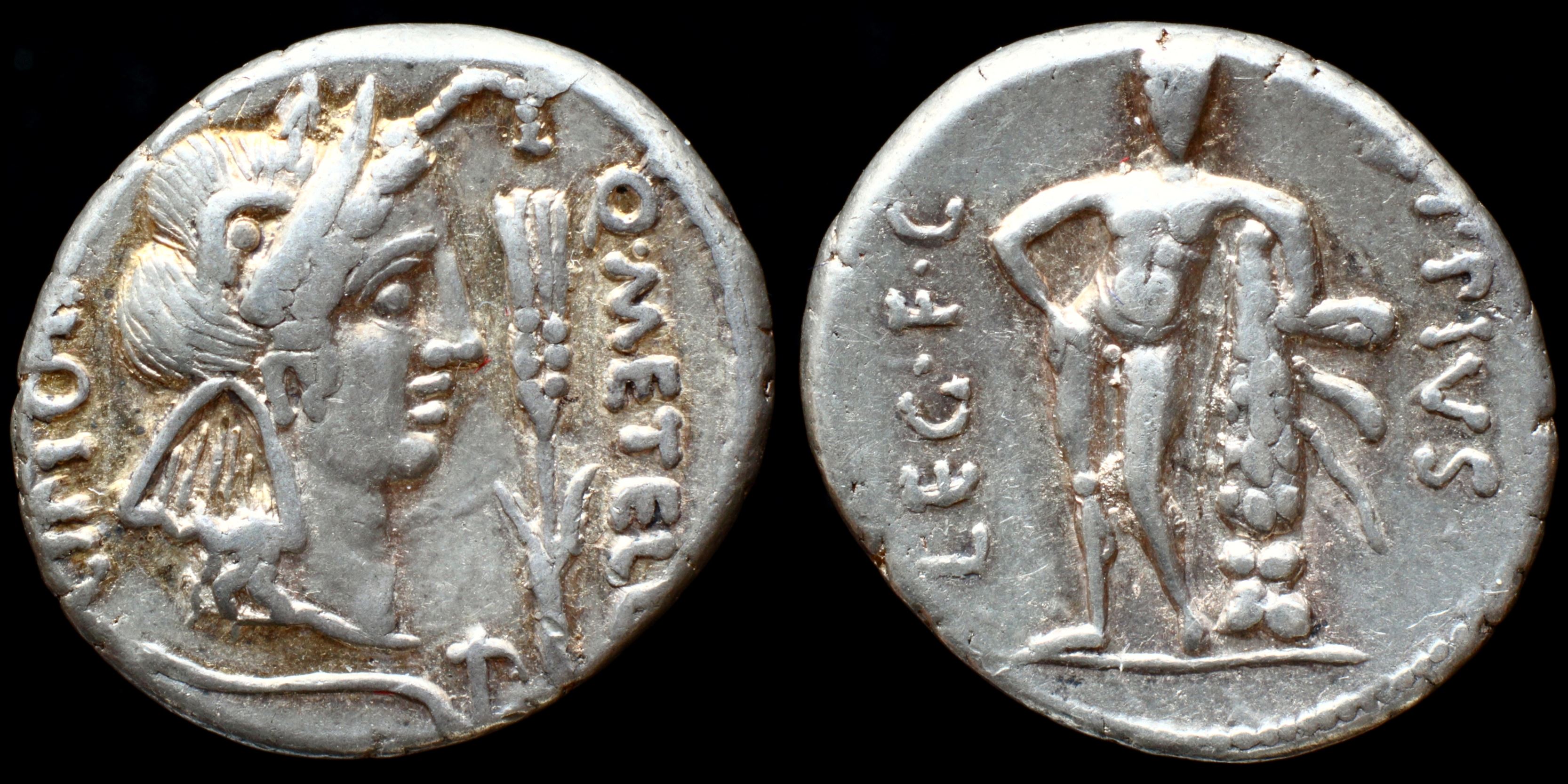
Reverse: naked Herakles facing, leaning on club set on rock draped with lion's skin; EPPIVS__LEG·F·C
Die Orientation: -
Weight: 3.8 g
.jpg)
Reverse: P CRASSVS IVN right, LEG PRO P R left - Victory standing left, holding winged caduceus in right hand, small round shield in left
Die Orientation: 12 H
Weight: 3.15 g
During the civil war between Julius Caesar and the senatorial faction led by Pompeius Magnus ("Pompey the Great"), Scipio remained a staunch optimate. He led troops against Caesar's forces, mainly in the battles of Pharsalus and Thapsus, where he was defeated. He later committed suicide. Ronald Syme called him "the last Scipio of any consequence in Roman history."
Roma Numismatics Limited has put forward the thought that it is Tanit in leontocephalic form instead of "Genius of Africa" and the "ankh" is rather the linear female abstract symbol for Tanit. I agree with the rationality behind this, because it looks everything like that symbol and nothing like an anhk, but include the standard attributions as we know them.
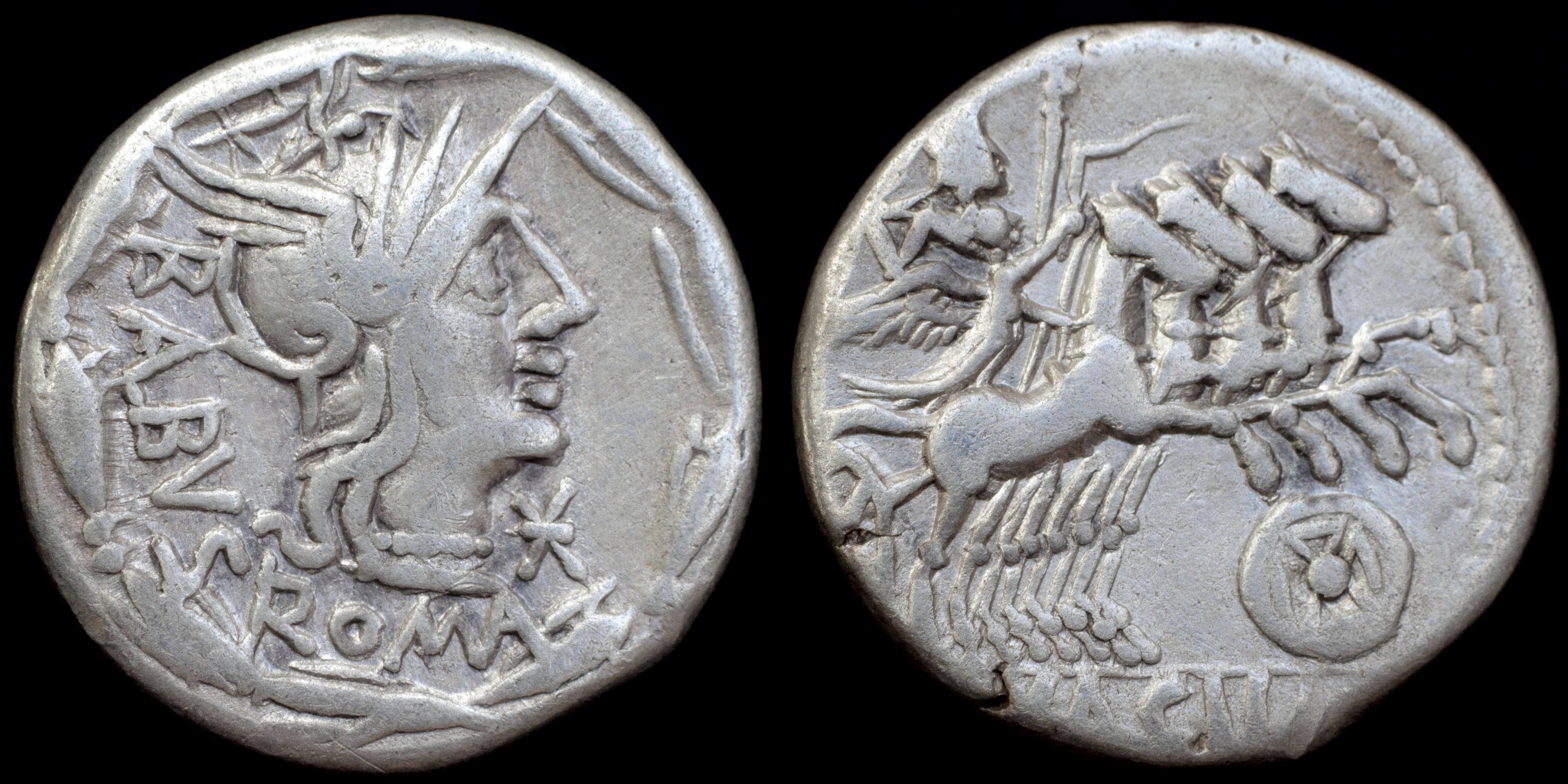
Reverse: Jupiter and Victory in quadriga right. Jupiter holding thunderbolt and scepter. Victory holding whip and reins. Macedonian shield below. (MN).ACILI
Die Orientation: -
Weight: 3.8 g
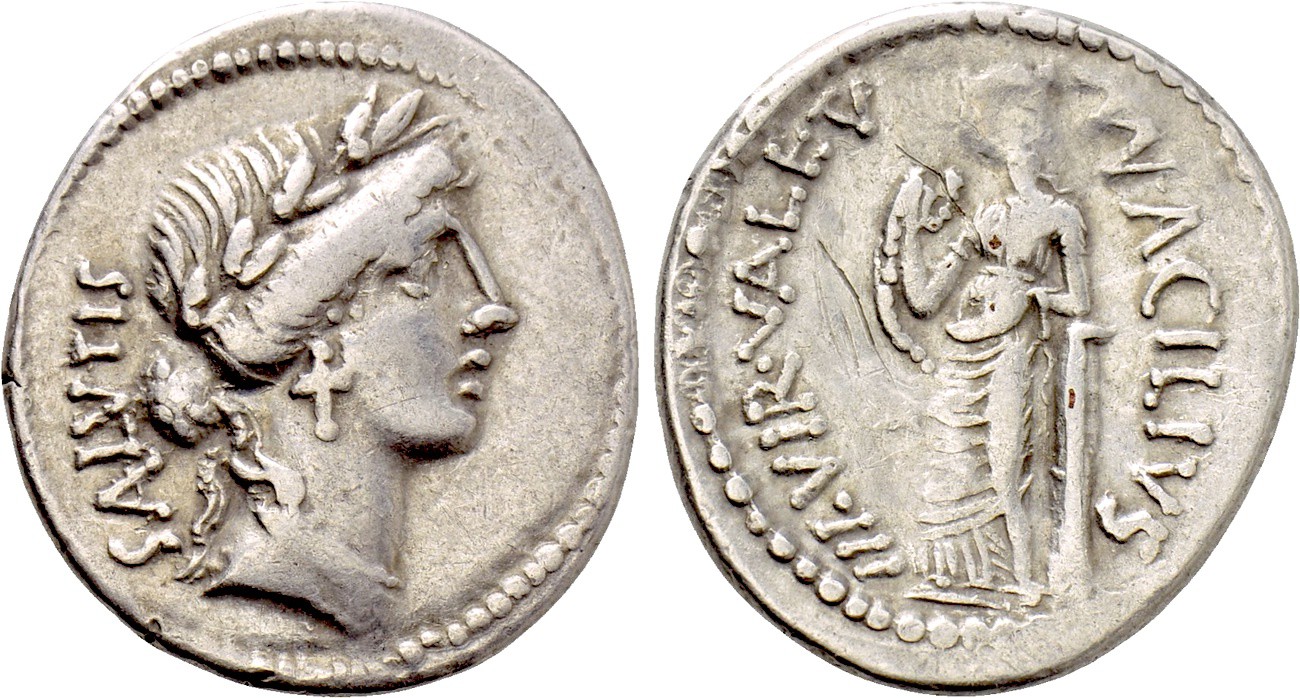
Reverse: MN ACILIVS / III VIR VALETV. Valetudo standing left, holding serpent and leaning upon column to right.
Die Orientation: 0 H
Weight: 3.34 g
(15).JPG)
Reverse: Valetudo standing left, holding snake and resting on column; MN ACILIVS III VIR VALETV around
Die Orientation: 6 H
Weight: 3.45 g
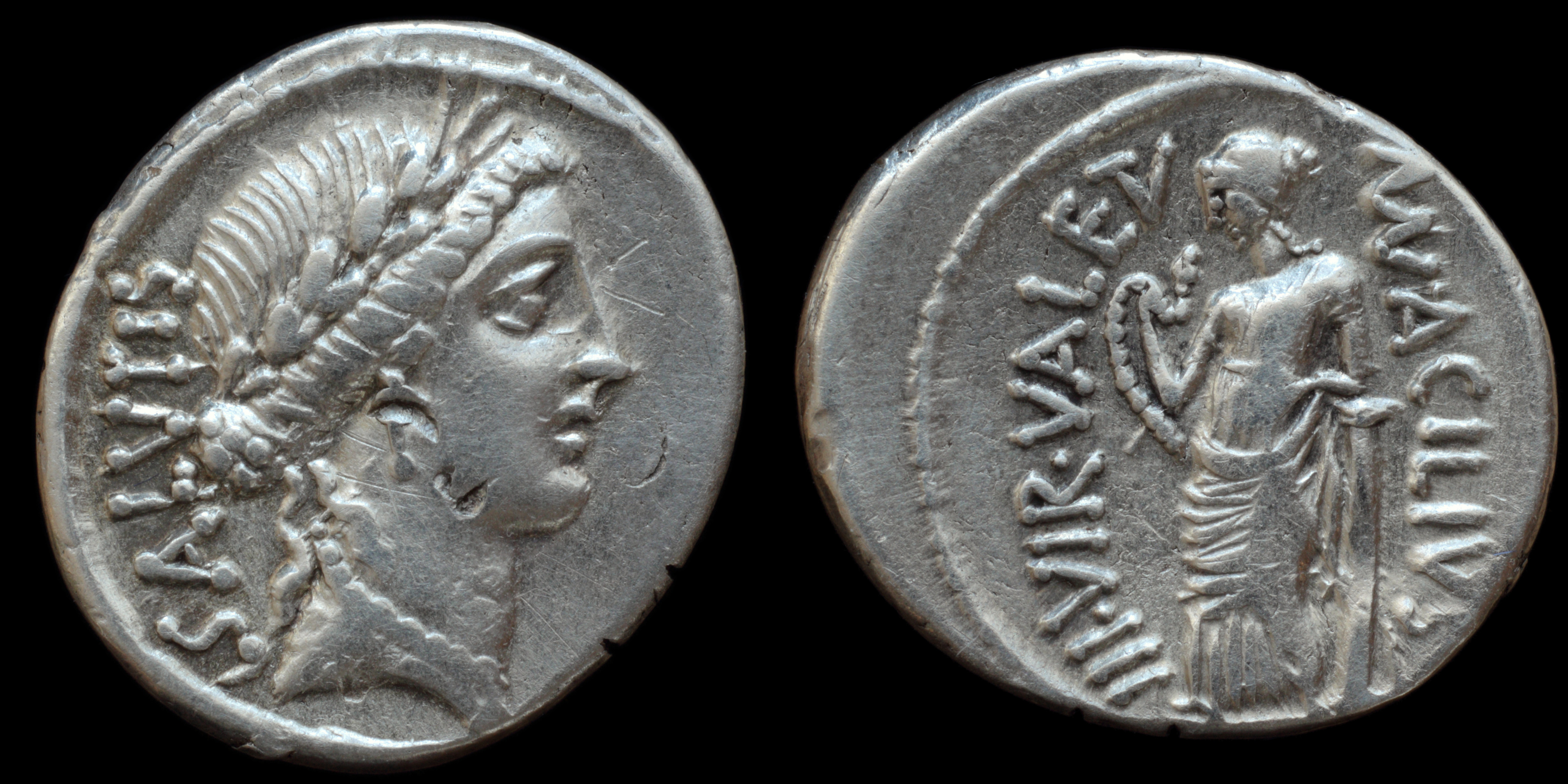
Reverse: Valetudo standing left, resting left elbow on column, holding snake; (MN)·ACILIVS__III·VIR·VALE(TV)
Die Orientation: -
Weight: 3.9 g
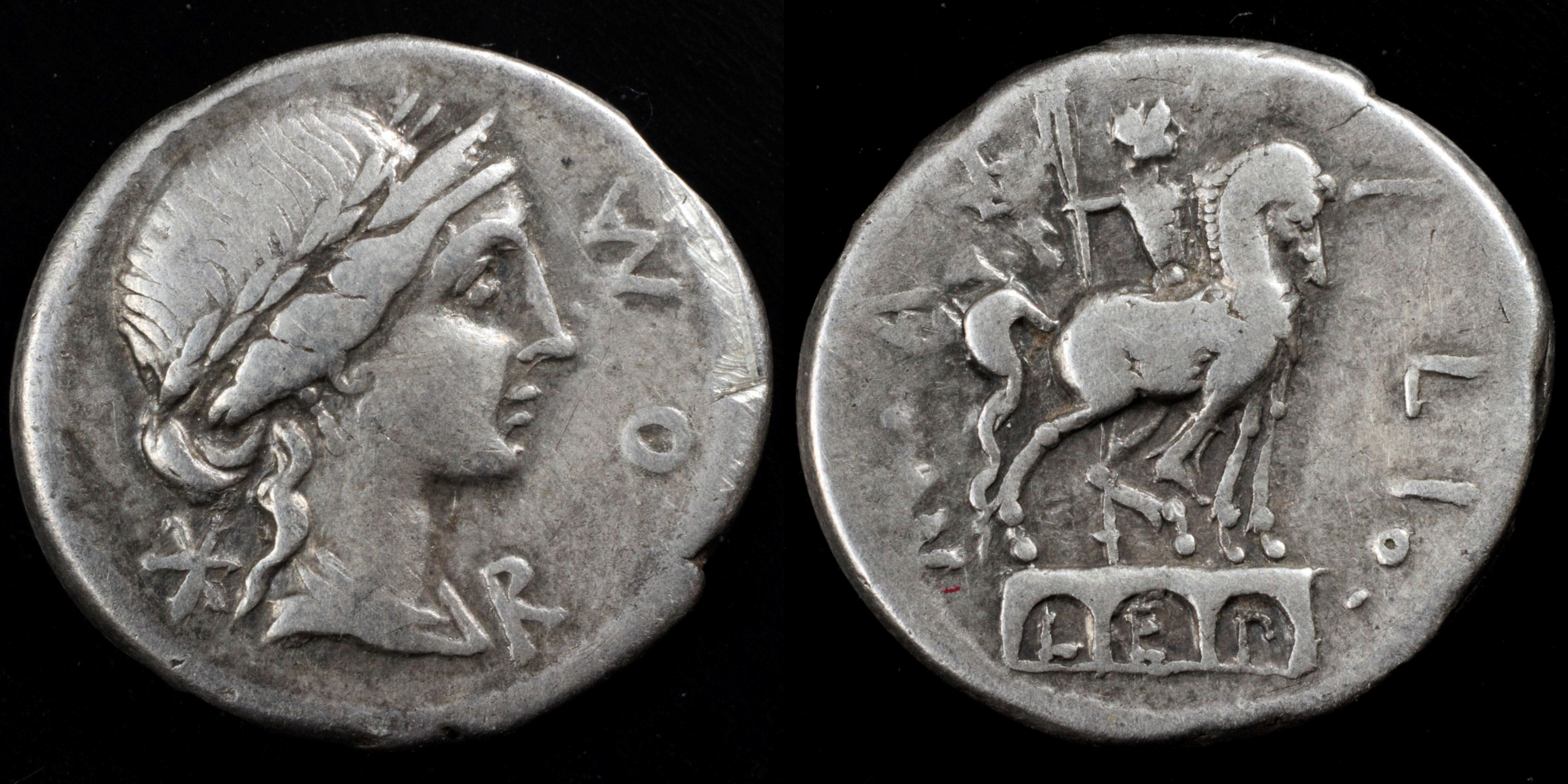
Reverse: equestrian statue on aquaduct right, holding vertical spear, standing on 3 archs of aquaduct (Aqua Marcia) (MN)·AEMILIO· L-E-P
Die Orientation: -
Weight: 3.8 g
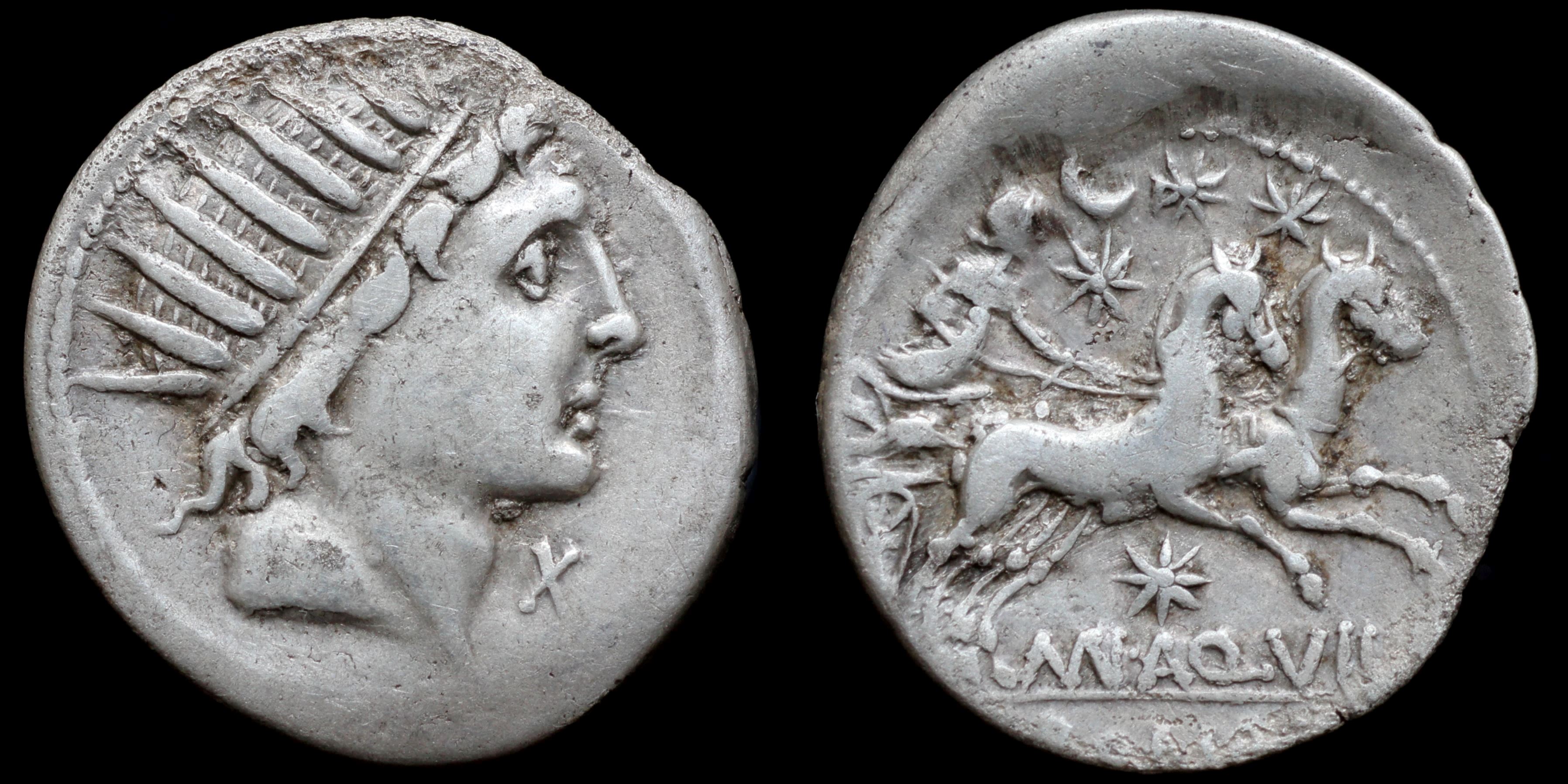
Reverse: Luna in biga right, crescent and three stars above, star below; (MN)·AQVIL / ROMA
Die Orientation: -
Weight: 3.9 g
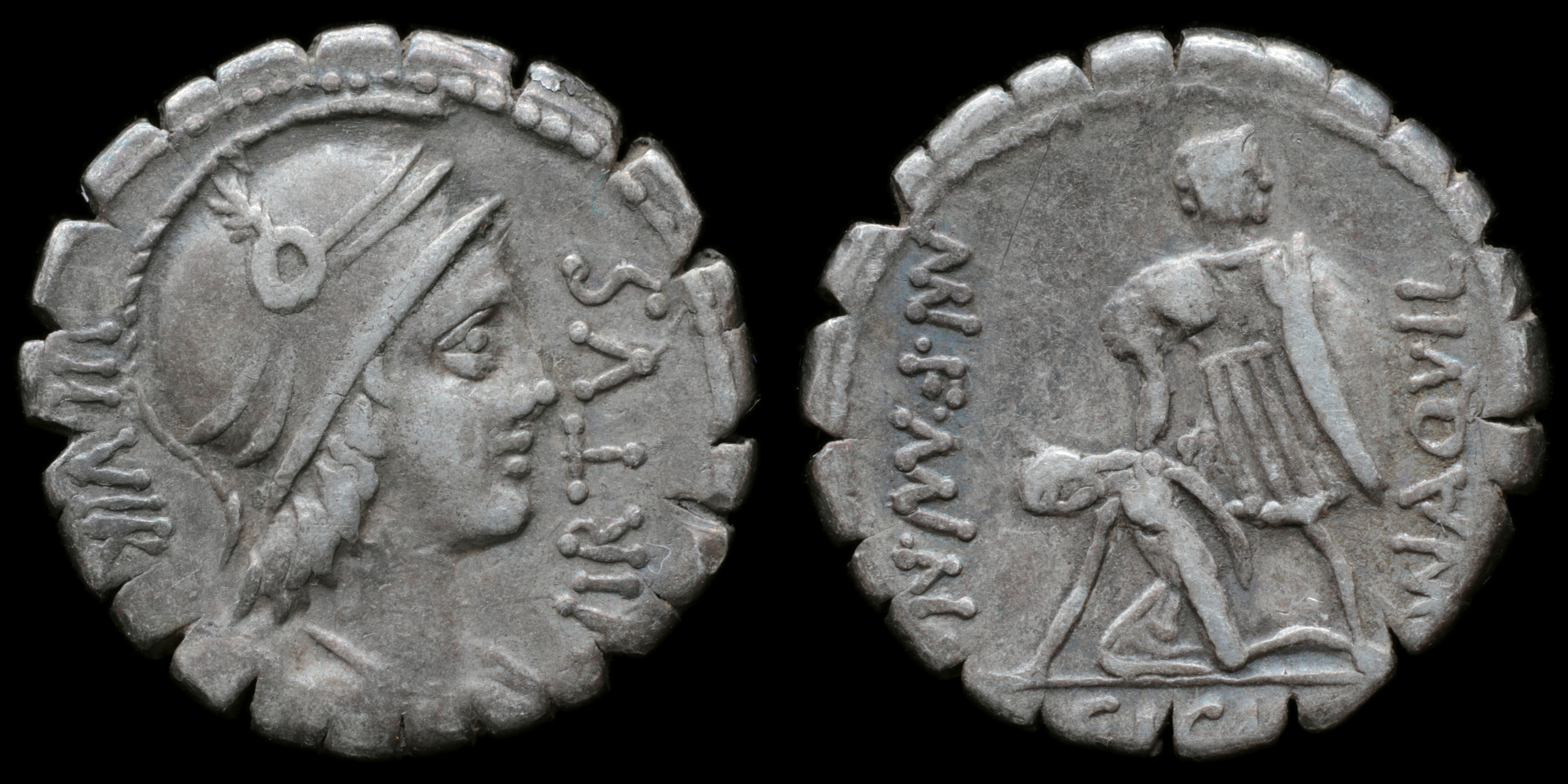
Reverse: Mn. Aquillius (consul 101 BC) facing, head right, holding shield, raising kneeling and slumped Sicilia left; (MN) AQVIL__(MN)·F·(MN)·N· / SICIL
Die Orientation: -
Weight: 3.9 g
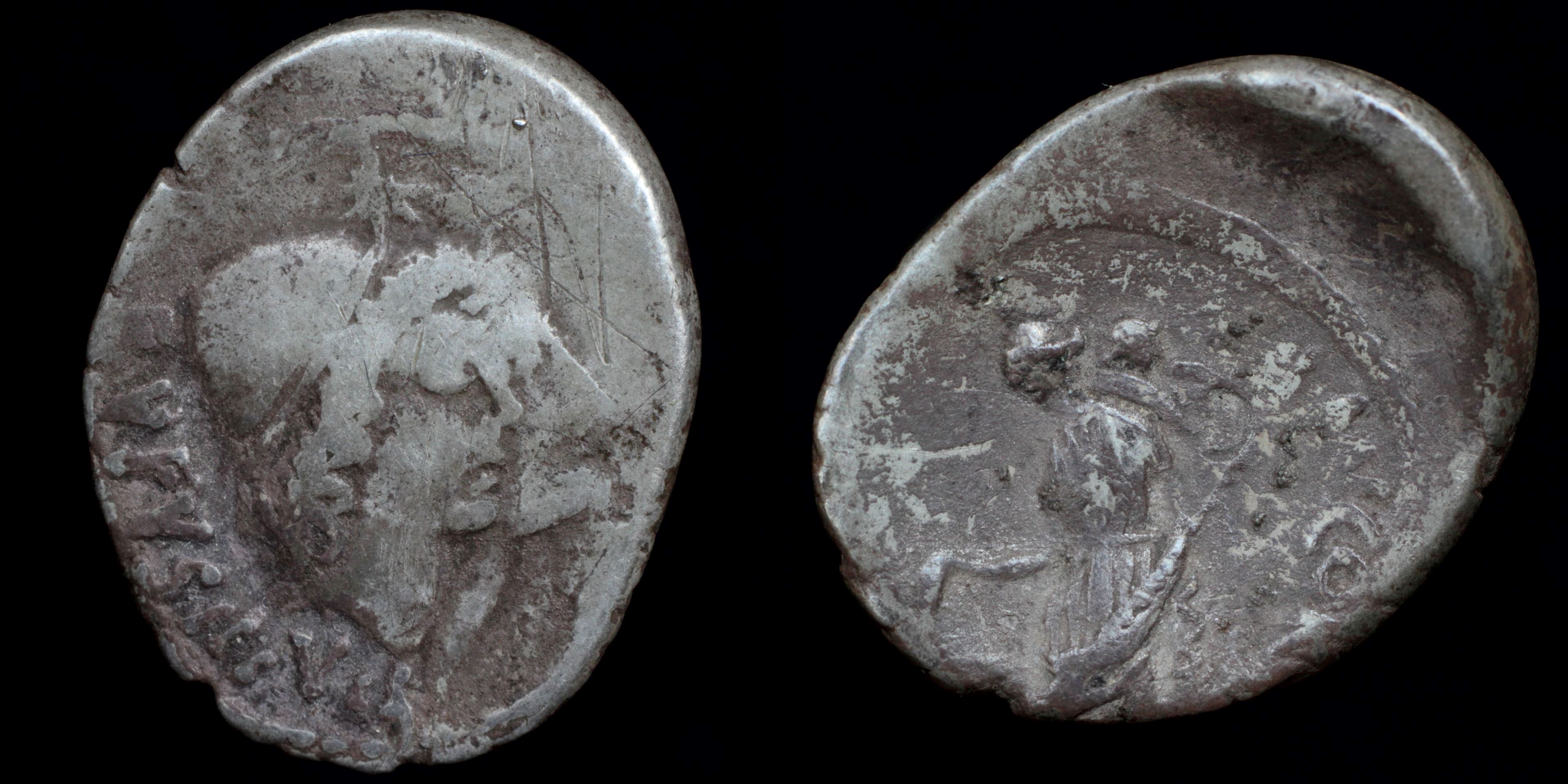
Reverse: Venus Verticordia standing left, holding scales and scepter, Cupid on her shoulder, (MN)·CORDI
Die Orientation: -
Weight: 3.65 g
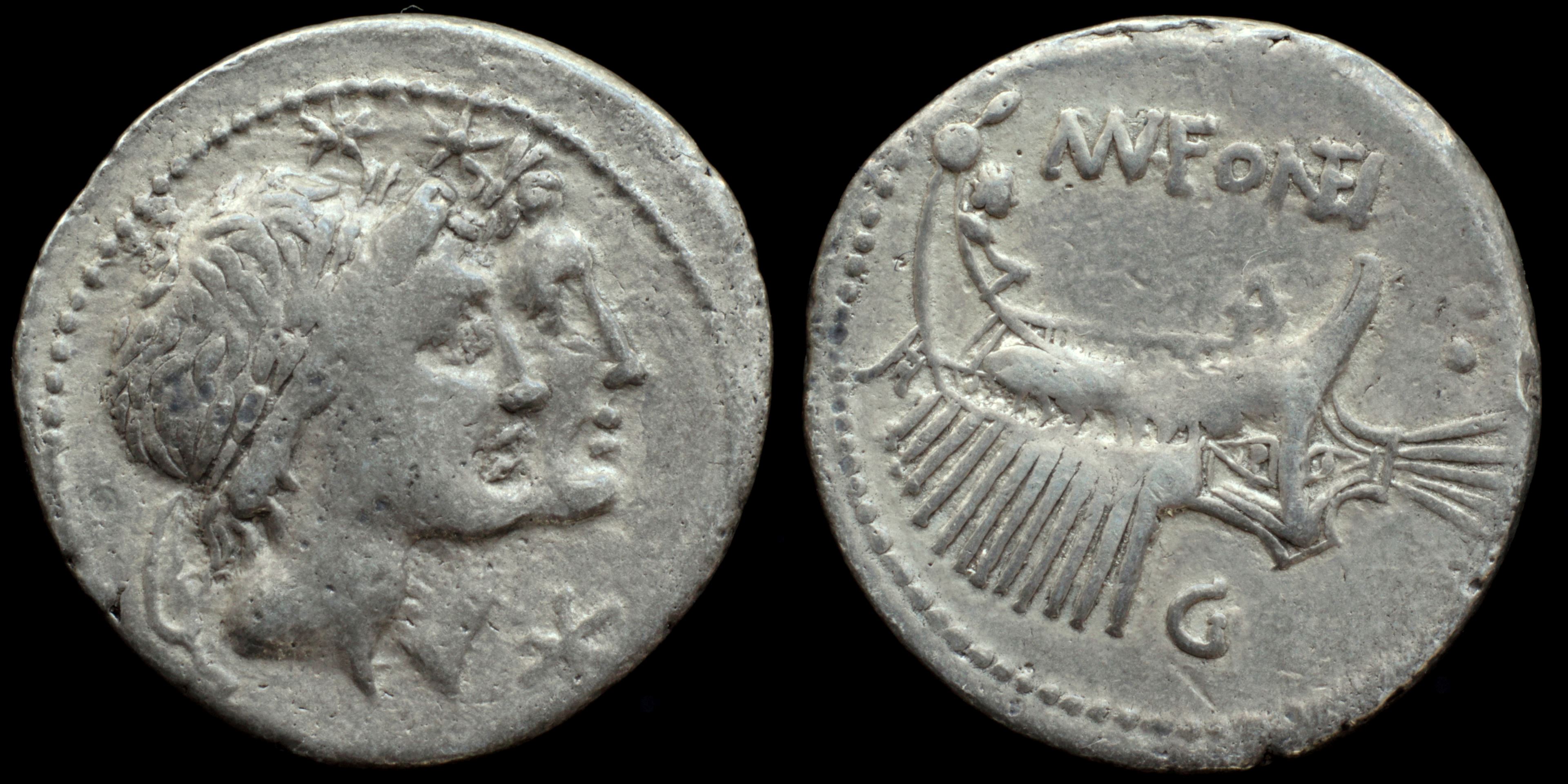
Reverse: war galley half right; MN·FO(NTE)I / : / G
Die Orientation: -
Weight: 3.9 g
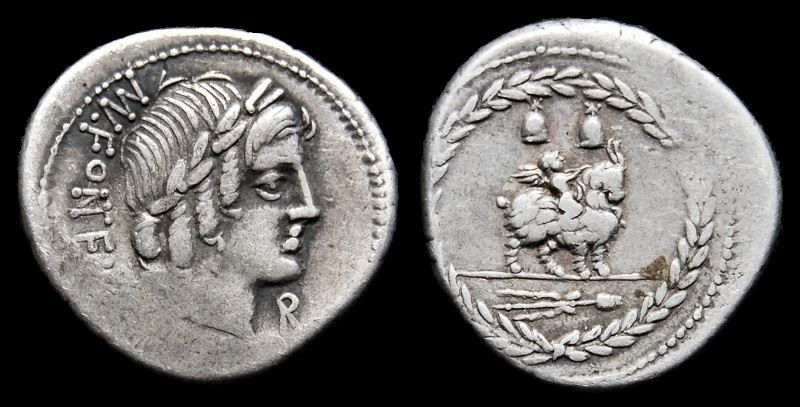
Reverse: Infant winged Genius (or Cupid) seated on goat standing right; pilei of the Dioscuri above; thyrsus with fillet in exergue; all within laurel wreath.
Die Orientation: 10 H
Weight: 3.93 g
"The moneyer is perhaps the brother of the moneyer M. Fonteius (see Crawford 347) and not inconceivably the tribune featured on the reverse of Crawford 429/1. The reverse recalls that the god Jupiter was suckled by the she-goat Amaltheia on Mt. Ida during his infancy, and depicts a statue that was within the Temple of Vejovis in Rome.
Romans believed that Vejovis was one of the first gods to be born. He was a god of healing, and was later associated with the Greek Asclepius. He was mostly worshipped in Rome and Bovillae in Latium. On the Capitoline Hill and on the Tiber Island, temples were erected in his honour. In spring, goats were sacrificed to avert plagues.
Vejovis is portrayed as a young man, holding a bunch of arrows, pilum, (or lightning bolts) in his hand, and is accompanied by a goat. He may be based on the Etruscan god of vendetta, known to them by the name Vetis written on the Piacenza Liver, a bronze model used in haruspical divination.
The studies about Vejovis are very poor and unclear. They show a constant updating of his condition and his use by people: escaping from netherworld, Volcanic God responsible for marshland and earthquakes, and later guardian angel in charge of slaves and fighters refusing to lose. God of deceivers, he was called to protect right causes and to give pain and deception to enemies. His temple has been described as a haven safe from police for wrongly persecuted people, and dedicated to the protection of the new comers in Rome, but this view is probably wrong.
The legend shows him more like an entity escaping from hell and trying to join the light and heaven, awesome fighter and protector of any people victims of unfairness. Aulus Gellius, in the Noctes Atticae, speculated that Vejovis was the inverse or ill-omened counterpart of Jupiter; compare Summanus. Aulus Gellius observes that the particle ve- that prefixes the name of the god also appears in Latin words such as vesanus, "insane," and thus interprets the name Vejovis as the anti-Jove. Aulus Gellius also informs us that Vejovis received the sacrifice of a female goat, sacrificed ritu humano; this obscure phrase could either mean "after the manner of a human sacrifice" or "in the manner of a burial." "
.jpg)
Reverse: Infant Genius (or Cupid) seated on goat right; pilei of the Dioscuri above; below, thrysus right; all within wreath
Die Orientation: 3 H
Weight: 4.07 g
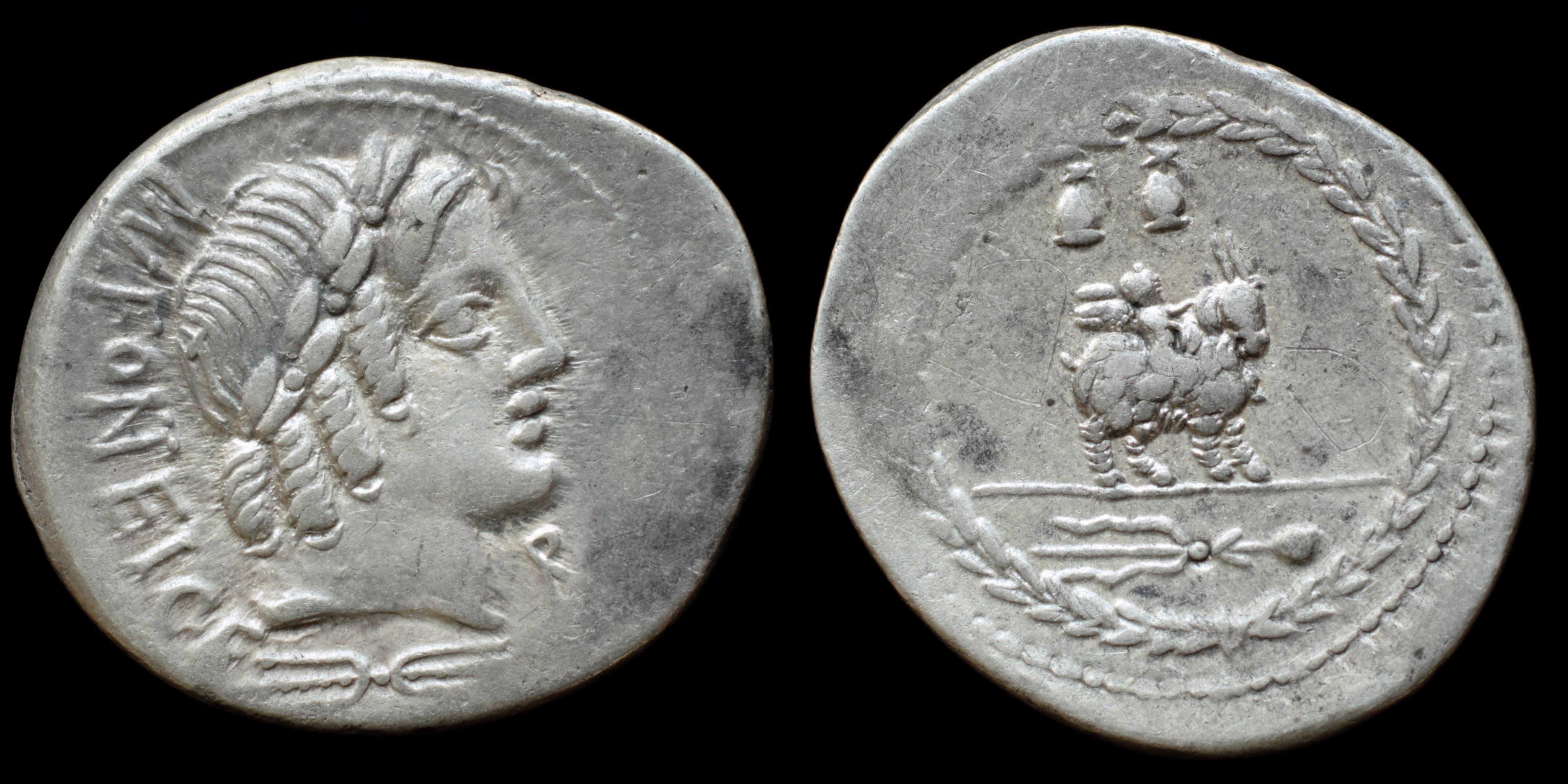
Reverse: Cupid seated on goat right, caps of the Dioscuri above, thyrsus of Bacchus in exergue, all within laurel wreath
Die Orientation: -
Weight: 4 g
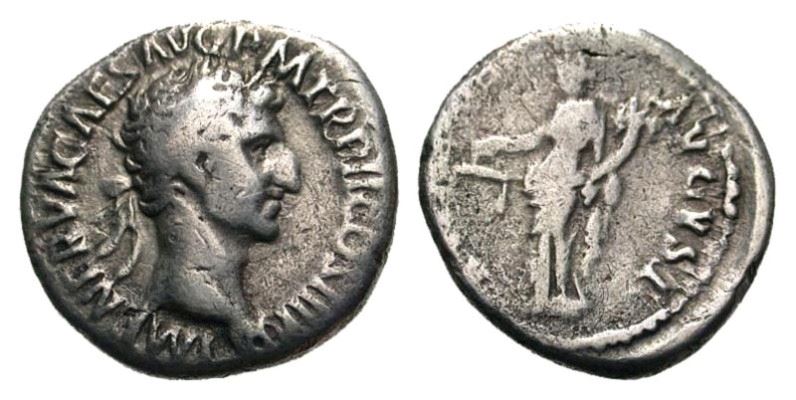
Reverse: AEQVITAS AVGVST, Aequitas standing left, holding scales and cornucopia
Die Orientation: 5 H
Weight: 3.1 g
EX-Agora Auctions lot 32-133
.jpg)
Reverse: LIBERTAS PVBLICA, Libertas standing, holding pileus and vindicta
Die Orientation: 6 H
Weight: 3.36 g
.jpg)
Reverse: CONCORDIA EXERCITVVM, Clasped Hands
Die Orientation: 6 H
Weight: 2.96 g
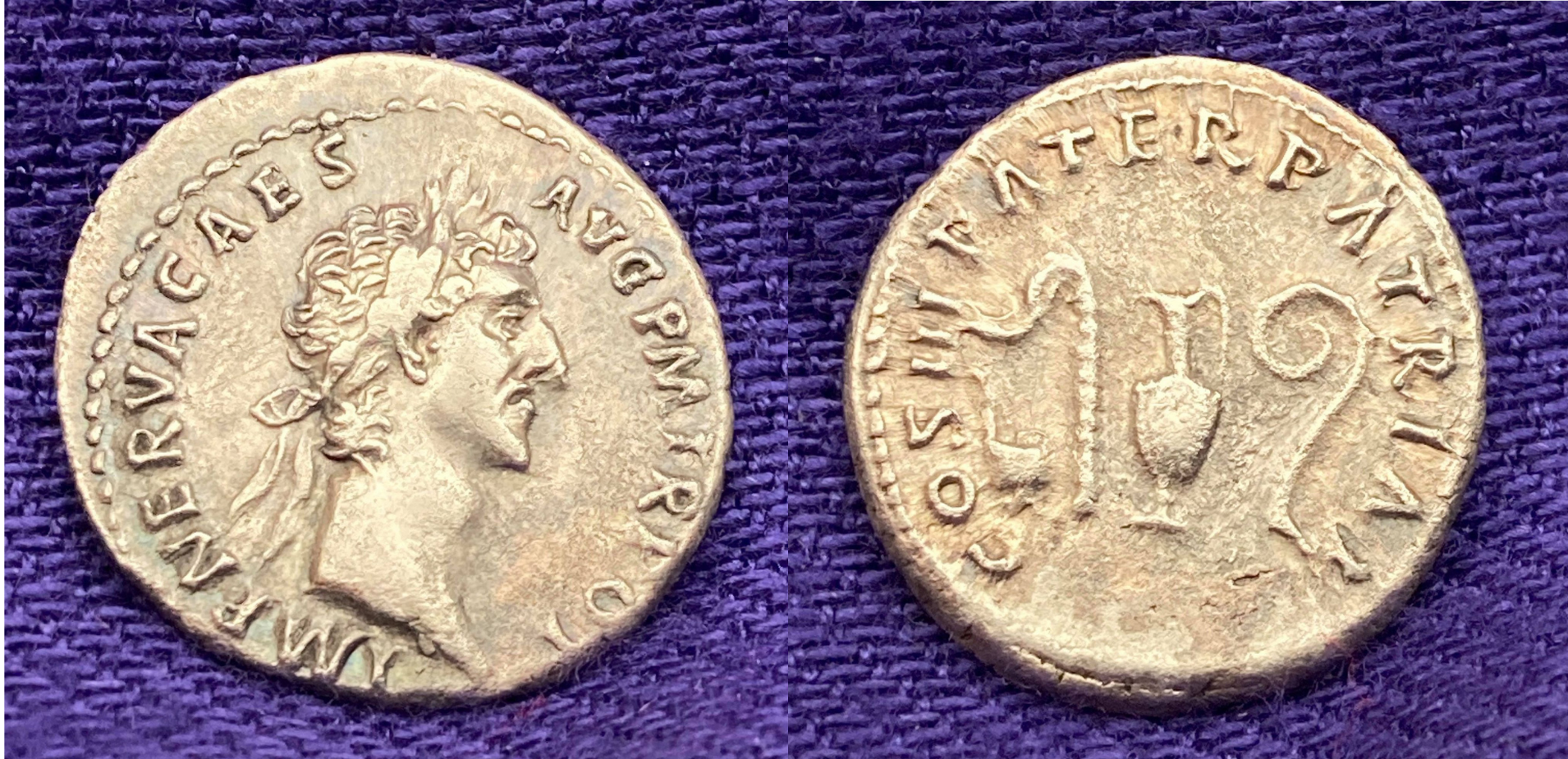
Reverse: COS III PATER PATRIAE, priestly implements: ladle, sprinkler, jug & lituus
Die Orientation: 0 H
Weight: 3.34 g
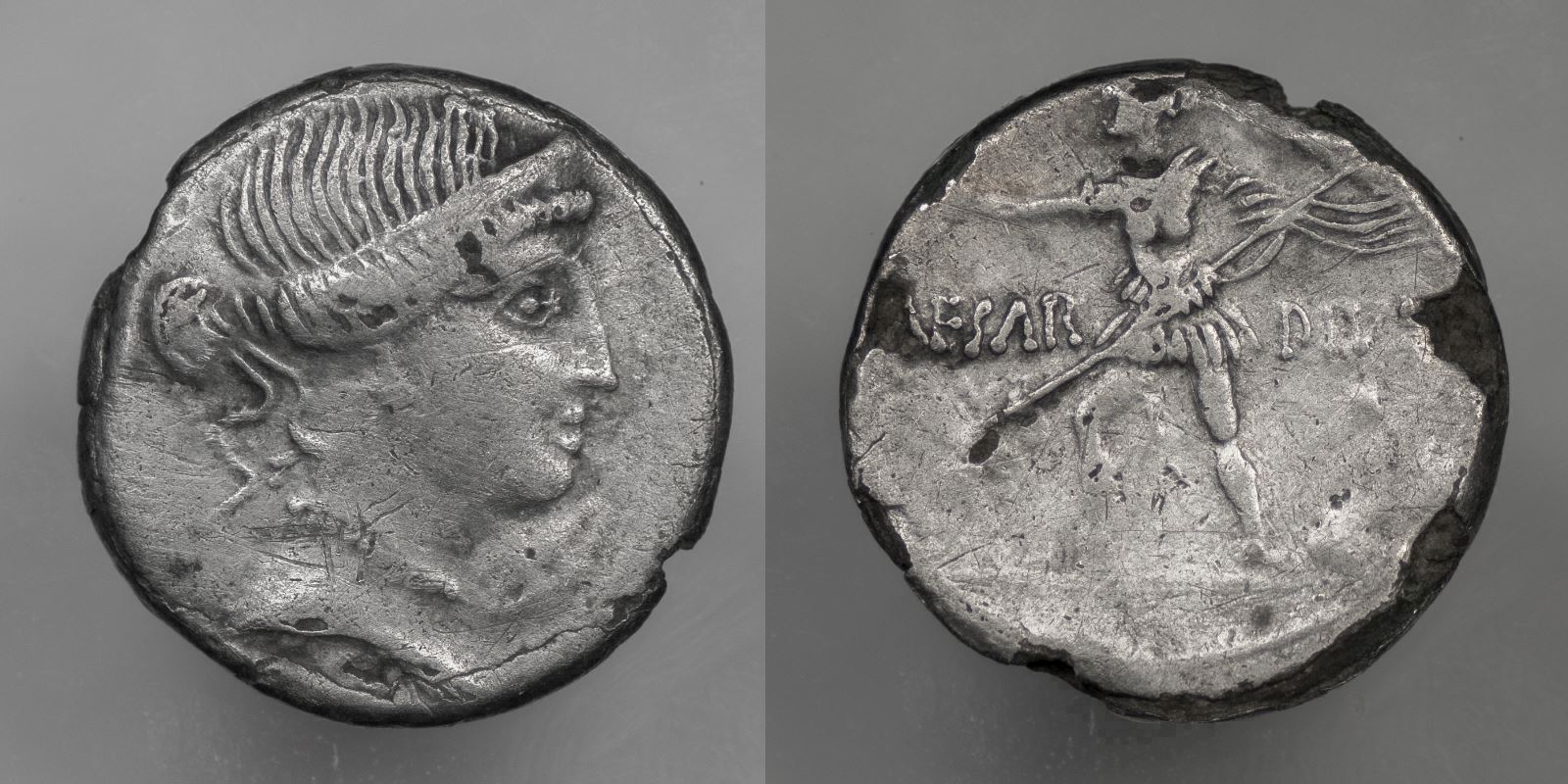
Reverse: CAESAR DIVI F, Octavian in military dress, cloak flying behind, advancing left, right arm extended, left hand holding transverse spear
Die Orientation: 6 H
Weight: 2.54 g
The below quote from forumancientcoins.com puts the coin in context:
"In July 32 B.C., Octavian illegally obtained Antony's will and exposed it to the Roman public: it promised substantial legacies to Antony's children by Cleopatra and left instructions for shipping his body to Alexandria for burial. Rome was outraged, and the Senate declared war against Cleopatra (an important distinction, because Octavian did not want the Roman people to consider it a civil war). Octavian's forces decisively defeated the forces of Antony and Cleopatra at the Battle of Actium in Greece in September 31 B.C. In 30 B.C., Octavian chased Antony and Cleopatra to Egypt where they committed suicide. Octavian became master of the Roman world."
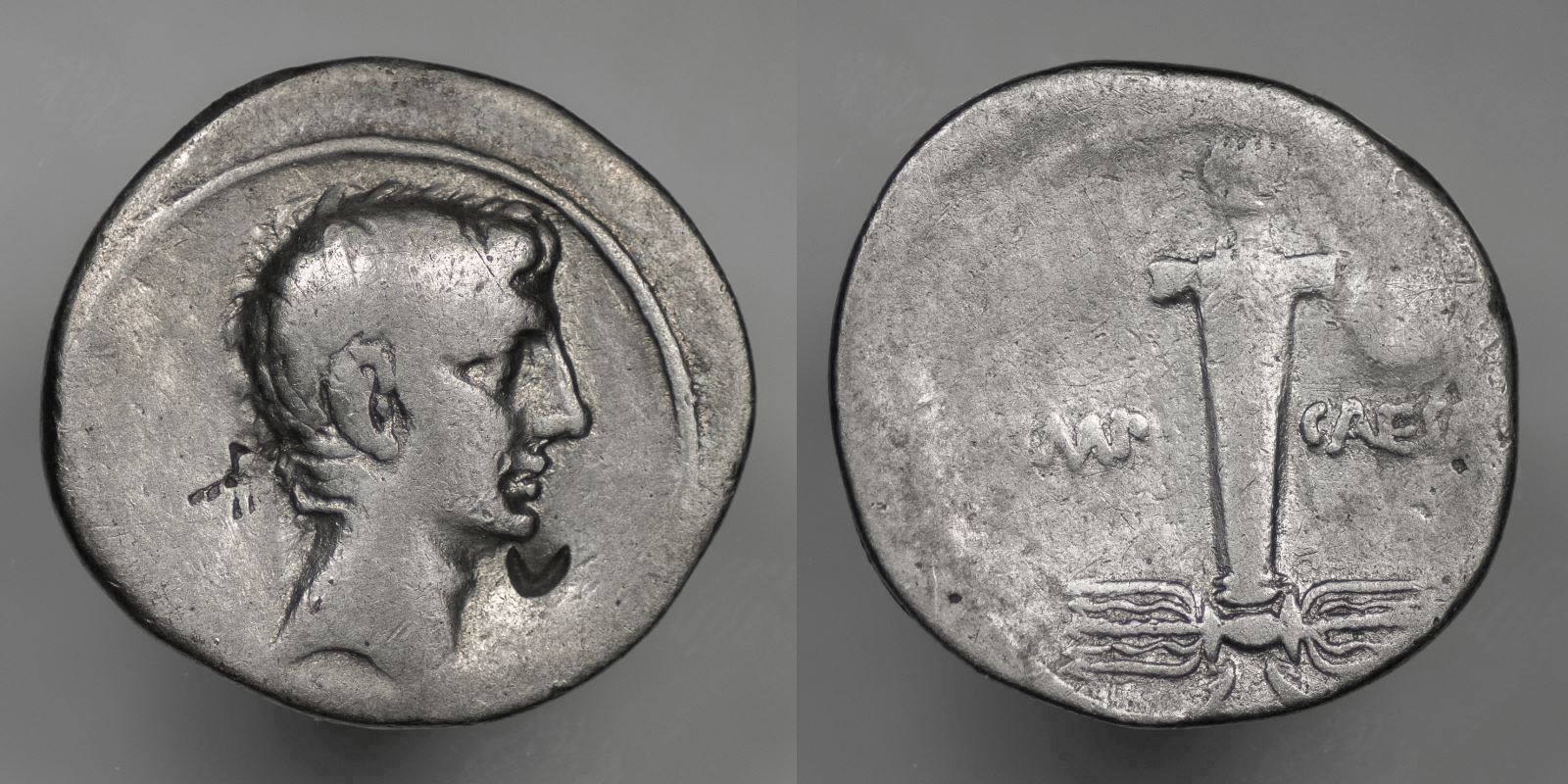
Reverse: IMP CAESAR, Facing head of Octavian on ithyphallic boundary stone of Jupiter Terminus, winged thunderbolt below
Die Orientation: 5 H
Weight: 3.53 g
Uncertain mint in Italy, maybe Rome or Brundisium per RIC.
The following quote from forumancientcoins.com puts this coin in context:
"this propaganda referred to Octavian's re-establishment of boundaries in the east after the battle of Actium and review of the client kingdoms established by Marc Antony (in particular return of Roman territory from Cleopatra and her children)"
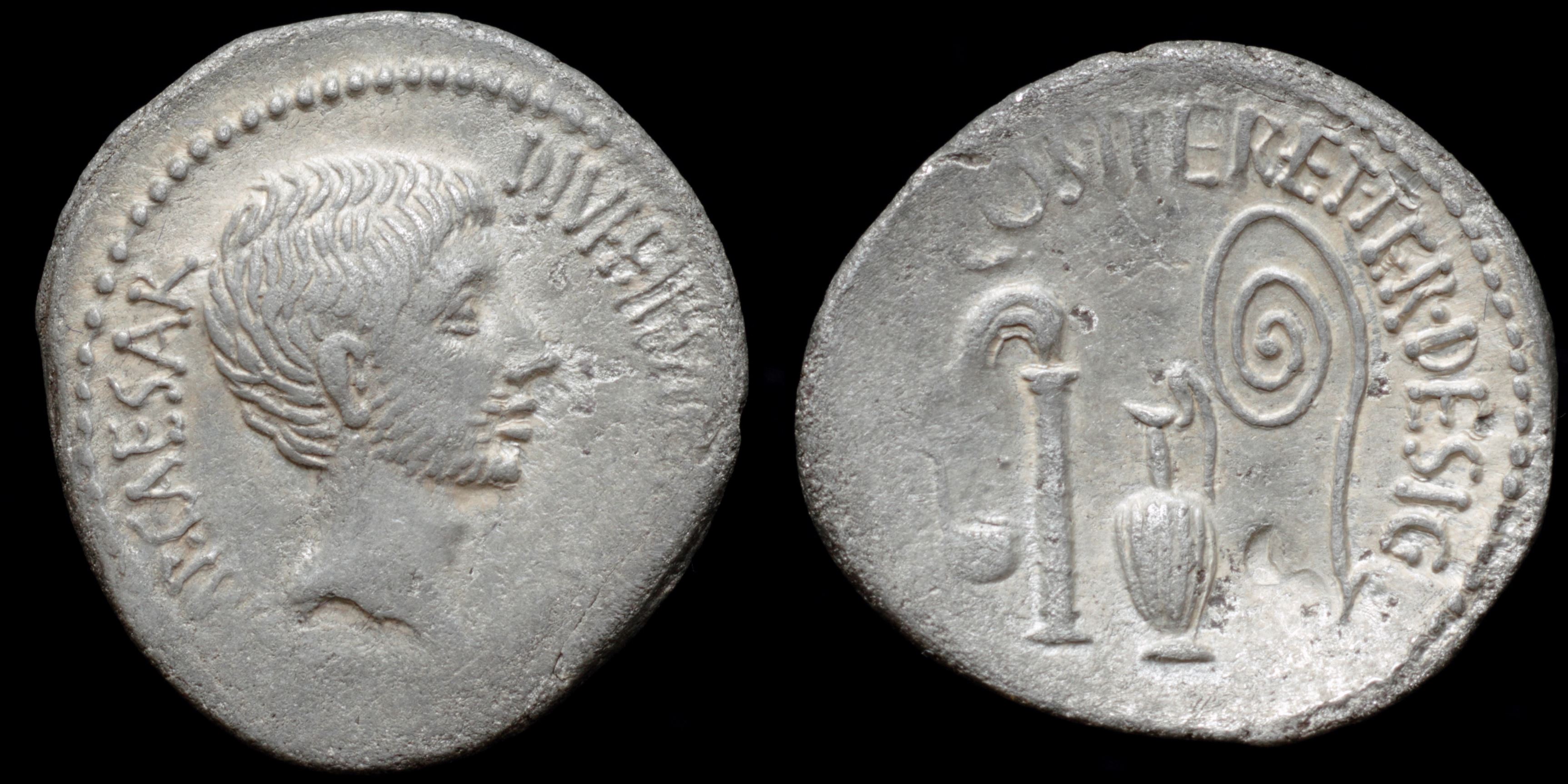
Reverse: sacrificial implements: simpulum (ladle), aspergillum (sprinker), ewer (jug), lituus (augural wand), COS·ITER·ET·TER·DESIG
Die Orientation: -
Weight: 3.5 g
.jpg)
Reverse: COS ITER ET TER DESIG, Pontifical emblems: simpulum, aspergillum, jug, and lituus
Die Orientation: 6 H
Weight: 3.57 g
.jpg)
Reverse: IMP CAESAR, A naval and military trophy consisting of the weapons and armor of a defeated enemy on a tree trunk on top of a prow of a captured galley with crossed anchor and rudder
Die Orientation: 1 H
Weight: 3.71 g
Arranged around its base were additional arms and sometimes bound captives. Here, in place of the additional arms and/or captives the trophy sits on the beak (rostrum) of an enemy warship with a rudder and anchor at its base.
This denarius was part of a series of aurei and denarii that were struck between the autumn of 30 BC and 29 BC and which conveyed a general message of victory and re-foundation.
Sear associated this denarius with a contemporary aureus showing on its reverse a similar trophy housed in a tetrastyle temple decorated with a triskeles in its pediment. The obverse of that coin, a bust of Diana Siciliensis, led him to argue that the aureus commemorated Octavian's important victory over Sextus Pompey at the Battle of Naulochus in 36 BC.
The reverse of this denarius, however, does not specify a particular victor. The most likely possibility is that it commemorates Agrippa's victory over Antony and Cleopatra at Actium the previous September, the final triumph for Octavian, the undisputed master of the Roman Empire."
.jpg)
Reverse: Equestrian statue with Octavian, facing left; S·C in exergue
Die Orientation: 6 H
Weight: 3.25 g
"This is a favourite type coin for me as it is the first appearance of Octavian on a coin. Very often found in low grade, it is nonetheless a very historically important coin. It’s a great piece of history at a low price! Here you see a young Octavian for the first time on the obverse. The reverse shows the equestrian statue that he demanded the senate build for him after putting down the siege at Mutina. It is a brazen display of Octavian’s contempt for the senate."
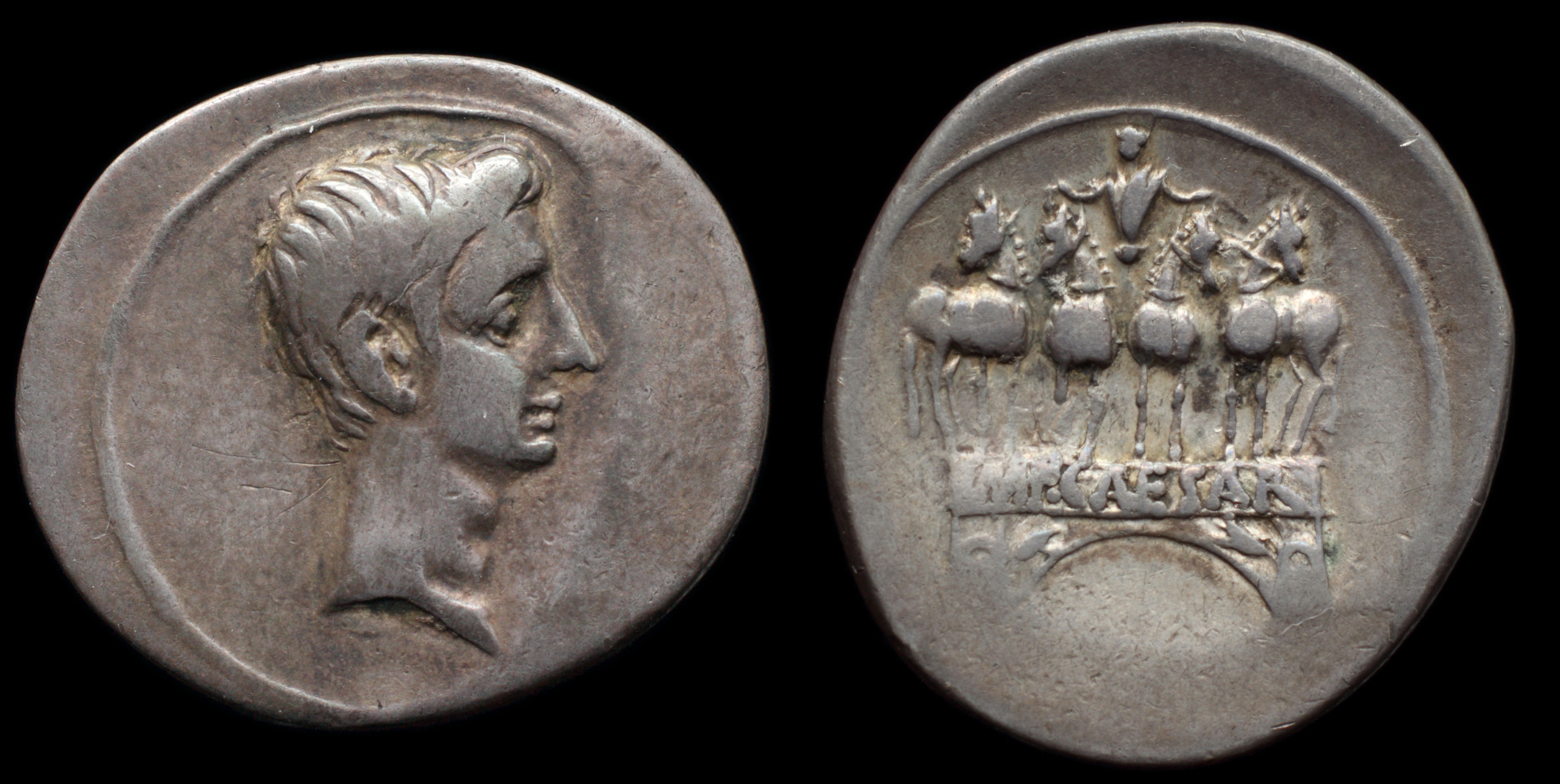
Reverse: Octavian’s Actian arch surmounted by large statue of Octavian in facing triumphal quadriga; IMP·CAESAR
Die Orientation: -
Weight: 3.8 g
.jpg)
Reverse: CONCORDIA AVGG, Concordia enthroned left, holding patera and cornucopiae
Die Orientation: 6 H
Weight: 2.23 g
(41).jpg)
Reverse: SECVRITAS P R, Securitas standing left holding wreath and sceptre
Die Orientation: 6 H
Weight: 3.15 g
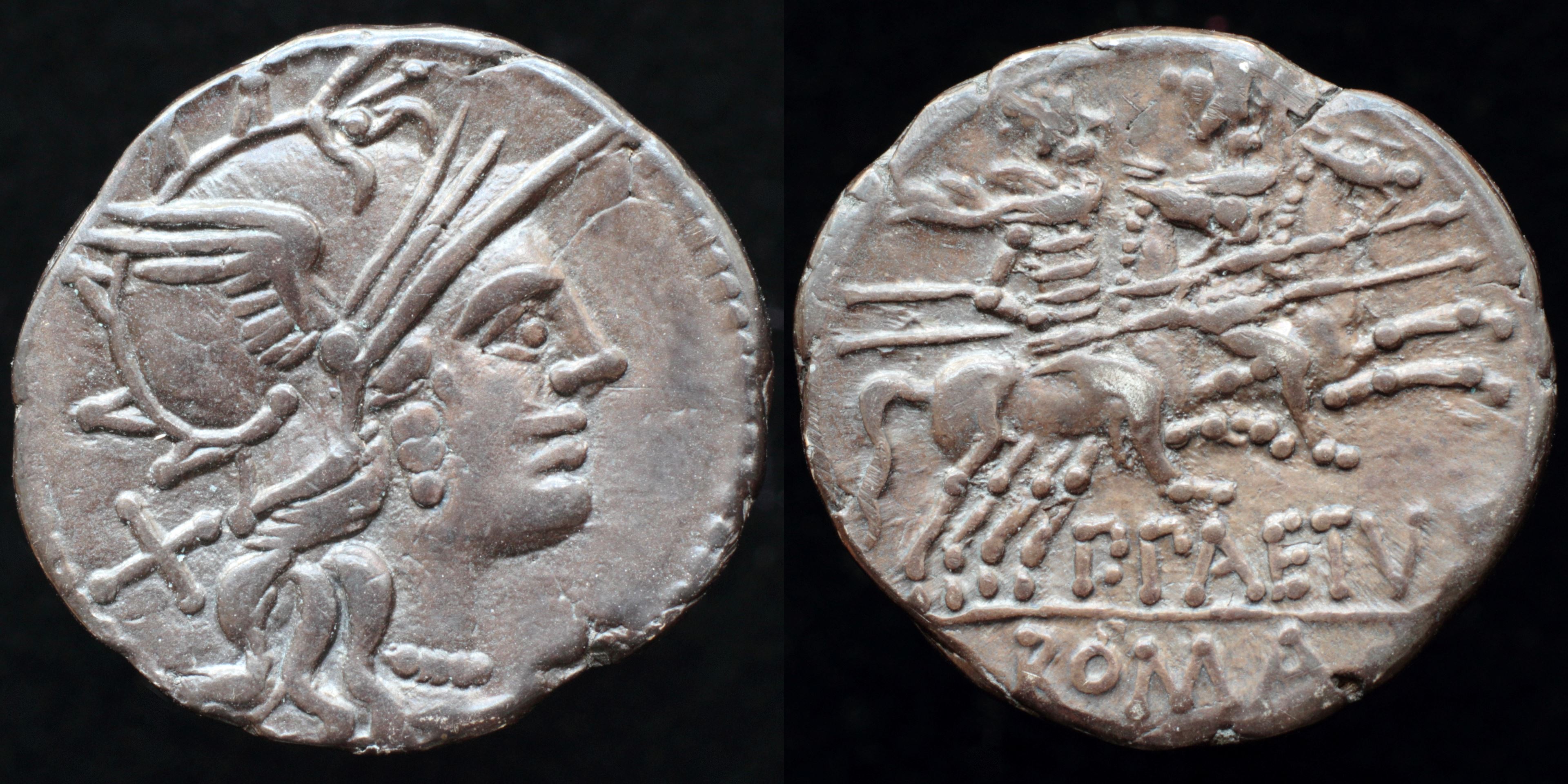
Reverse: Dioscuri riding on horses right holding spears and reins; stars over their heads P·PAETVS ROMA
Die Orientation: -
Weight: 4 g
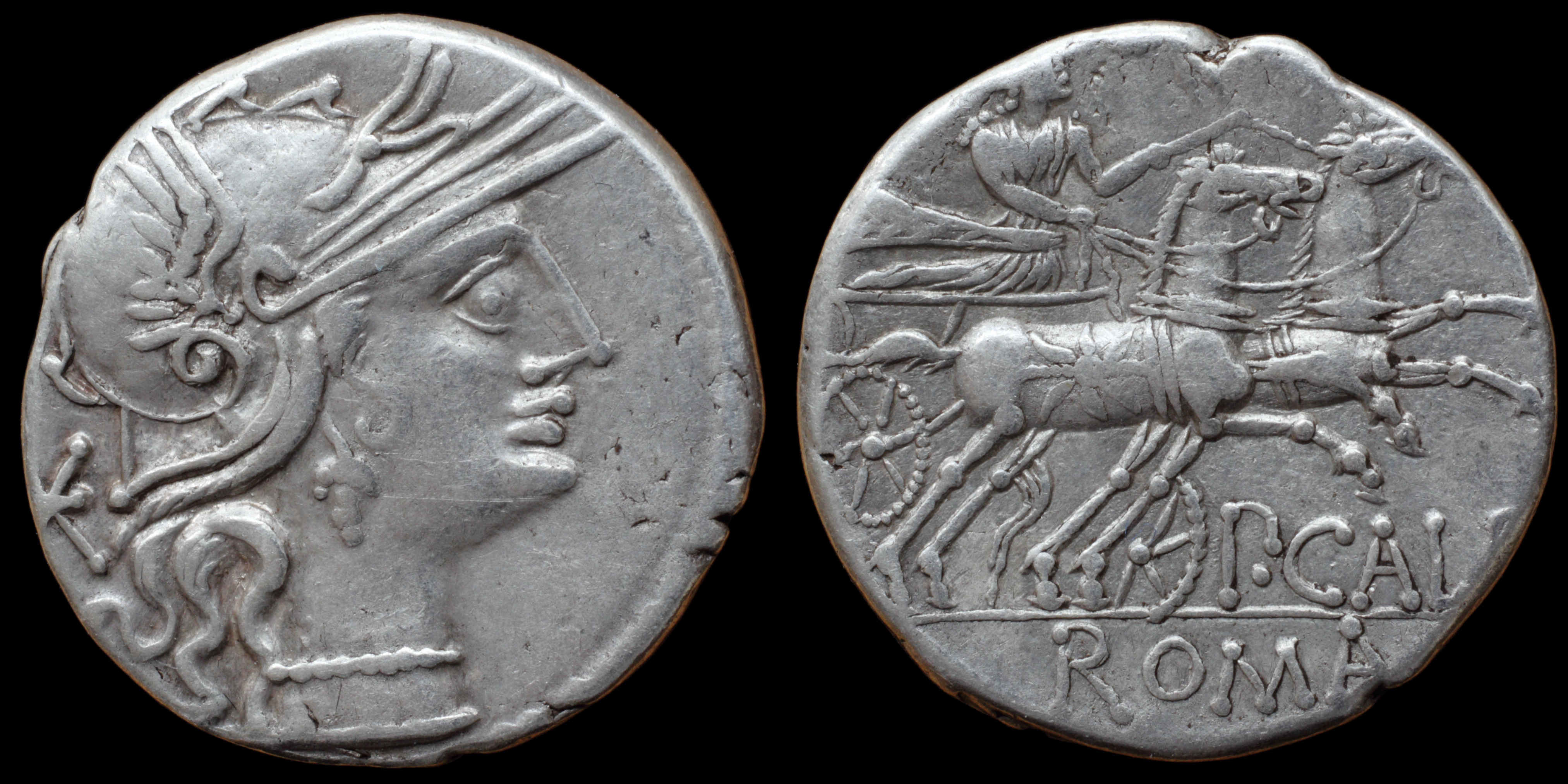
Reverse: Venus right in biga holding whip and reins, crowned by Victory flying left; P·CALP / ROMA
Die Orientation: -
Weight: 3.9 g
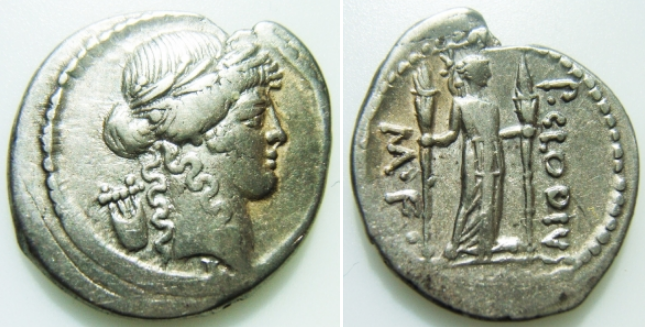
Reverse: P•CLODVIS / M•F• - Diana standing facing, with bow and quiver over shoulder, holding lighted torch in each hand.
Die Orientation: 12 H
Weight: 4.08 g
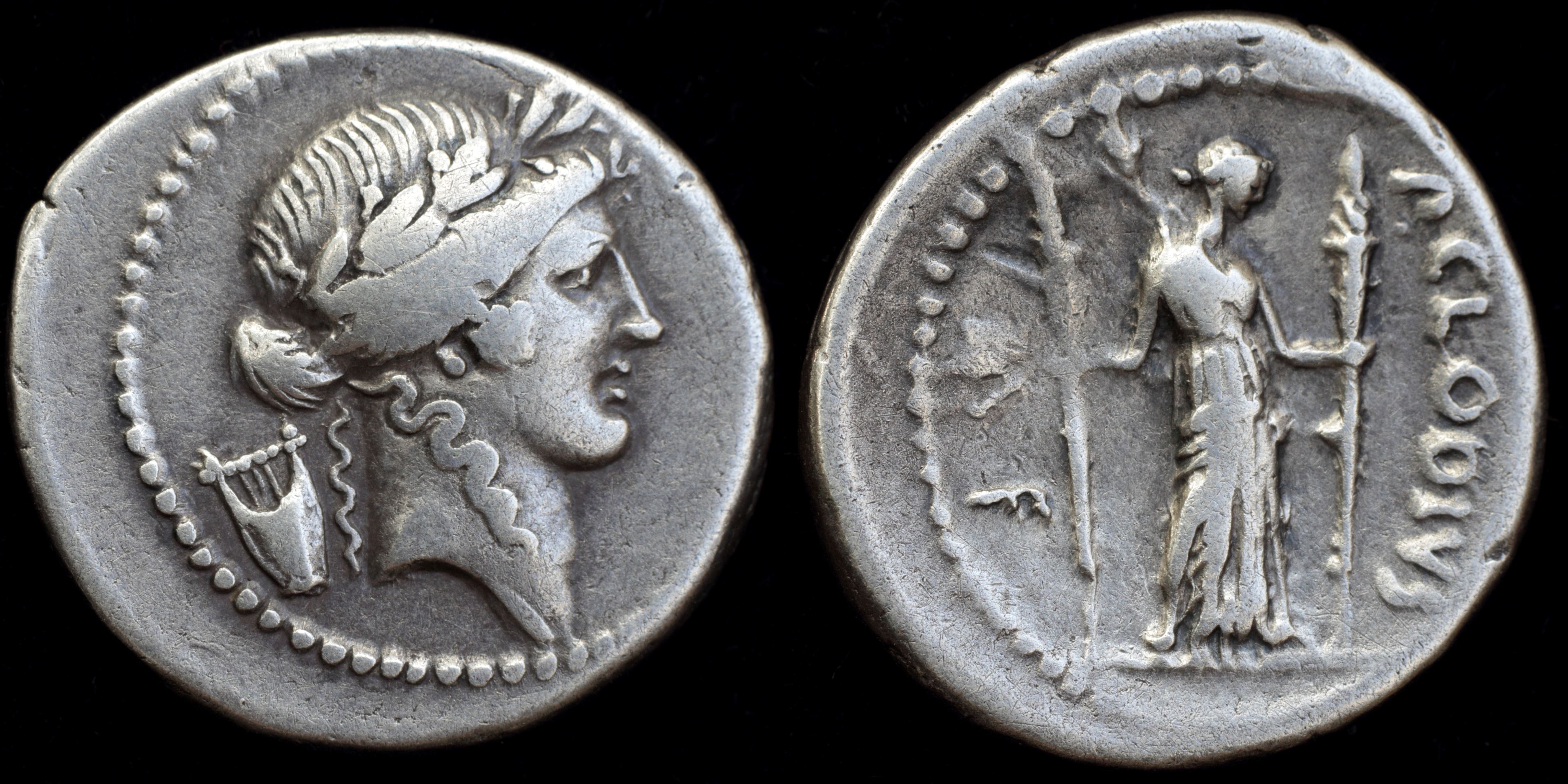
Reverse: Diana Lucifera standing half right holding torch in each hand, P·CLODIVS / M·F
Die Orientation: -
Weight: 3.8 g

Reverse: Diana standing facing, with bow and quiver over shoulder, holding lighted torch in each hand
Die Orientation: -
Weight: 3.2 g
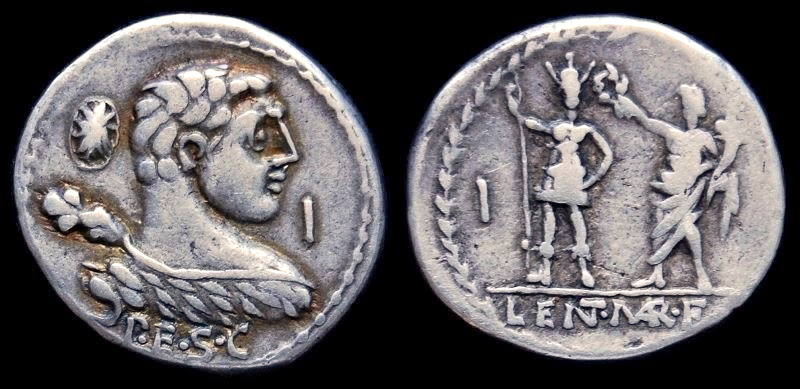
Reverse: Roma facing, holding spear, being crowned by Genius of the Roman People right; I (control mark) in left field, LENT•MAR•F in exergue; all within laurel-wreath.
Die Orientation: 11 H
Weight: 3.89 g
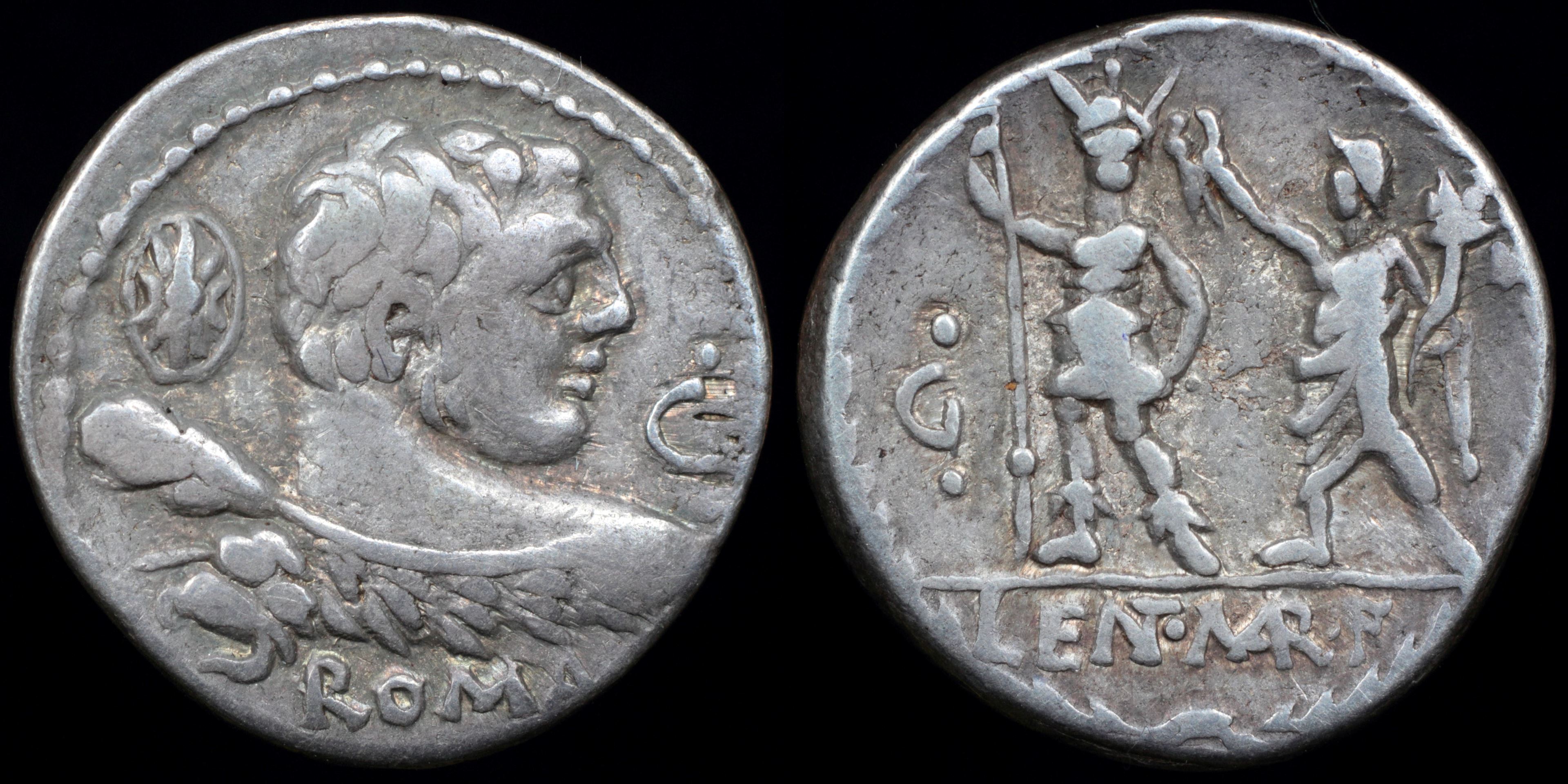
Reverse: Roma facing wearing helmet, holding spear is crowned by Genius standing left, holding wreath and cornucopia, all within laurel wreath, dot above and below G, LE(NT)·(MAR)·F
Die Orientation: -
Weight: 4 g
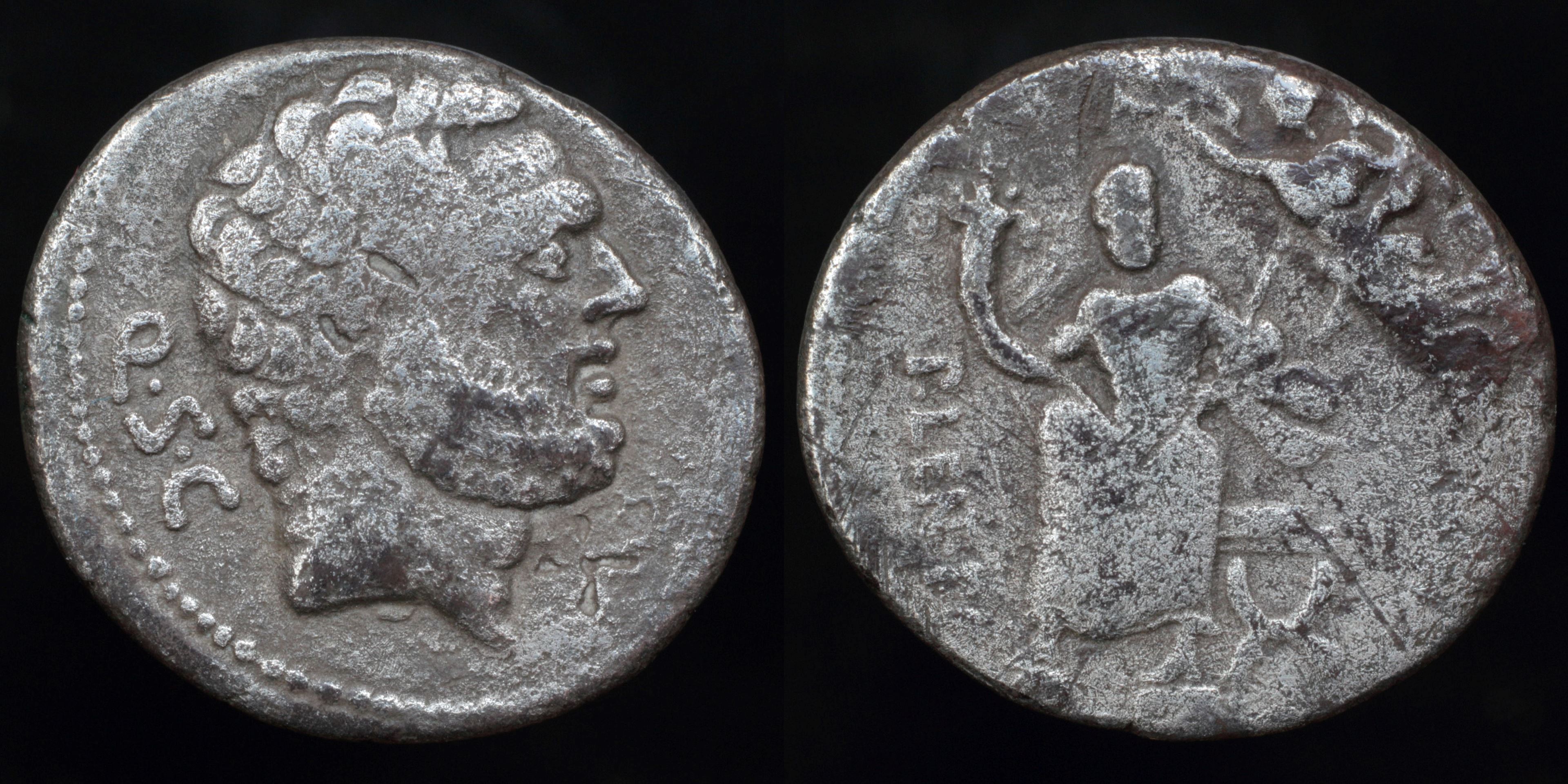
Reverse: Genius Populi Romani facing, seated on curule chair, with right foot on globe, holding cornucopia and scepter; Victory flying and crowning Genius, holding wreath and palm, P·LENT·P·F L·N
Die Orientation: -
Weight: 3.4 g
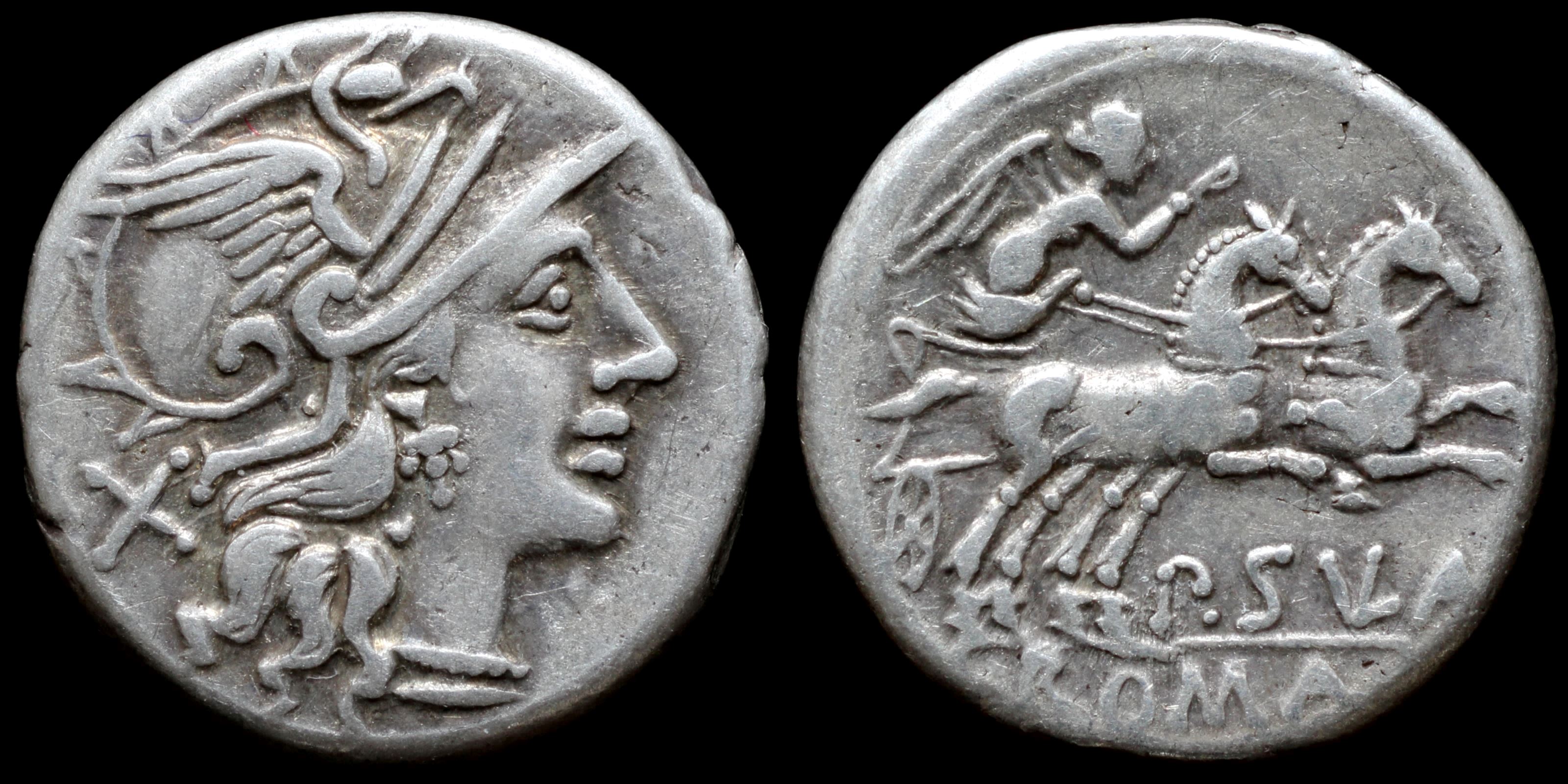
Reverse: Victory in biga right holding whip and reins, P.S(VL)A / ROMA
Die Orientation: -
Weight: 4.2 g
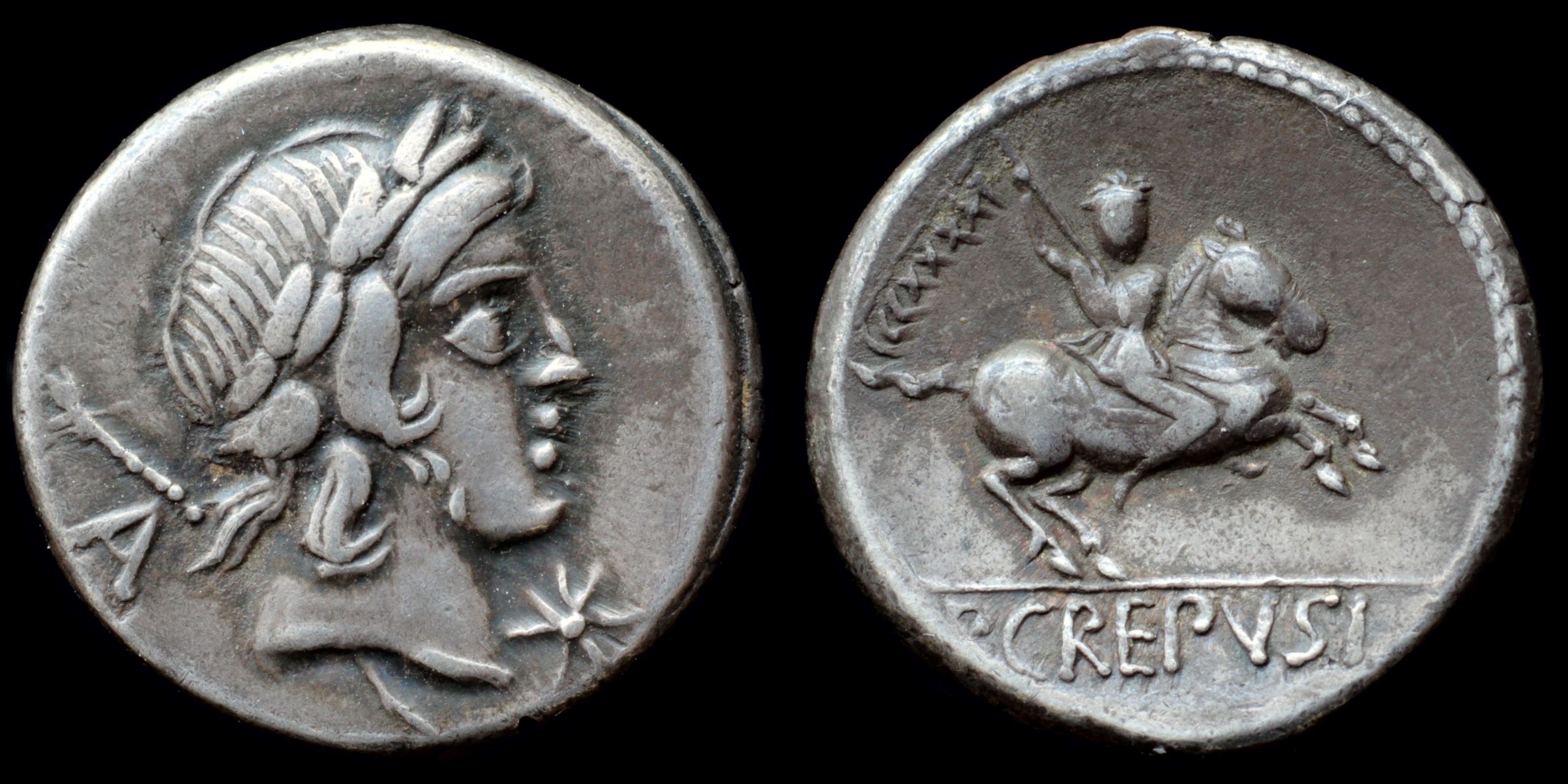
Reverse: horseman galloping right, hurling spear; CCCXXXXI / P·CREPVSI
Die Orientation: -
Weight: 4.2 g
.png)
Reverse: The Villa Publica: building consisting of two stories, each with a row of columns; the lower columns are surmounted by arches, the upper ones by a sloping roof - T·DIDI· IMP VIL·PVB in fields.
Die Orientation: 1 H
Weight: 3.86 g
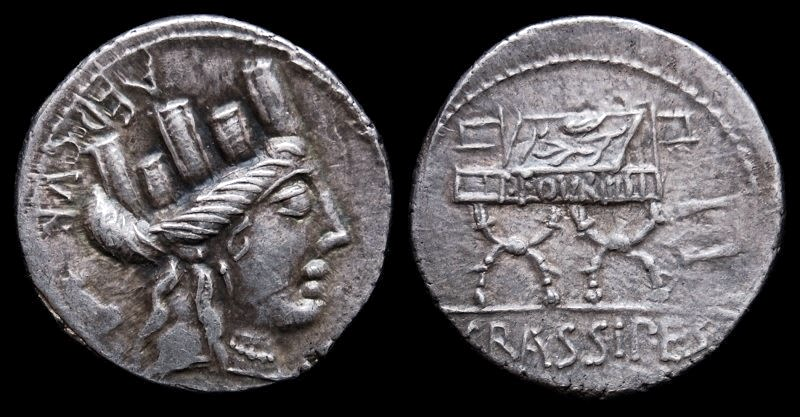
Reverse: Curule chair inscribed P•FOVRIVS; CRASSIPES in exergue.
Die Orientation: -
Weight: 3.93 g
The types of this coin and Crawford 409/2 probably refer to the Ludi Megalenses, games which honored the goddess Cybele, and were presented by the curule aediles.
Provenance: Naville Numismatics, Auction 37 (28 January 2018), lot 482.
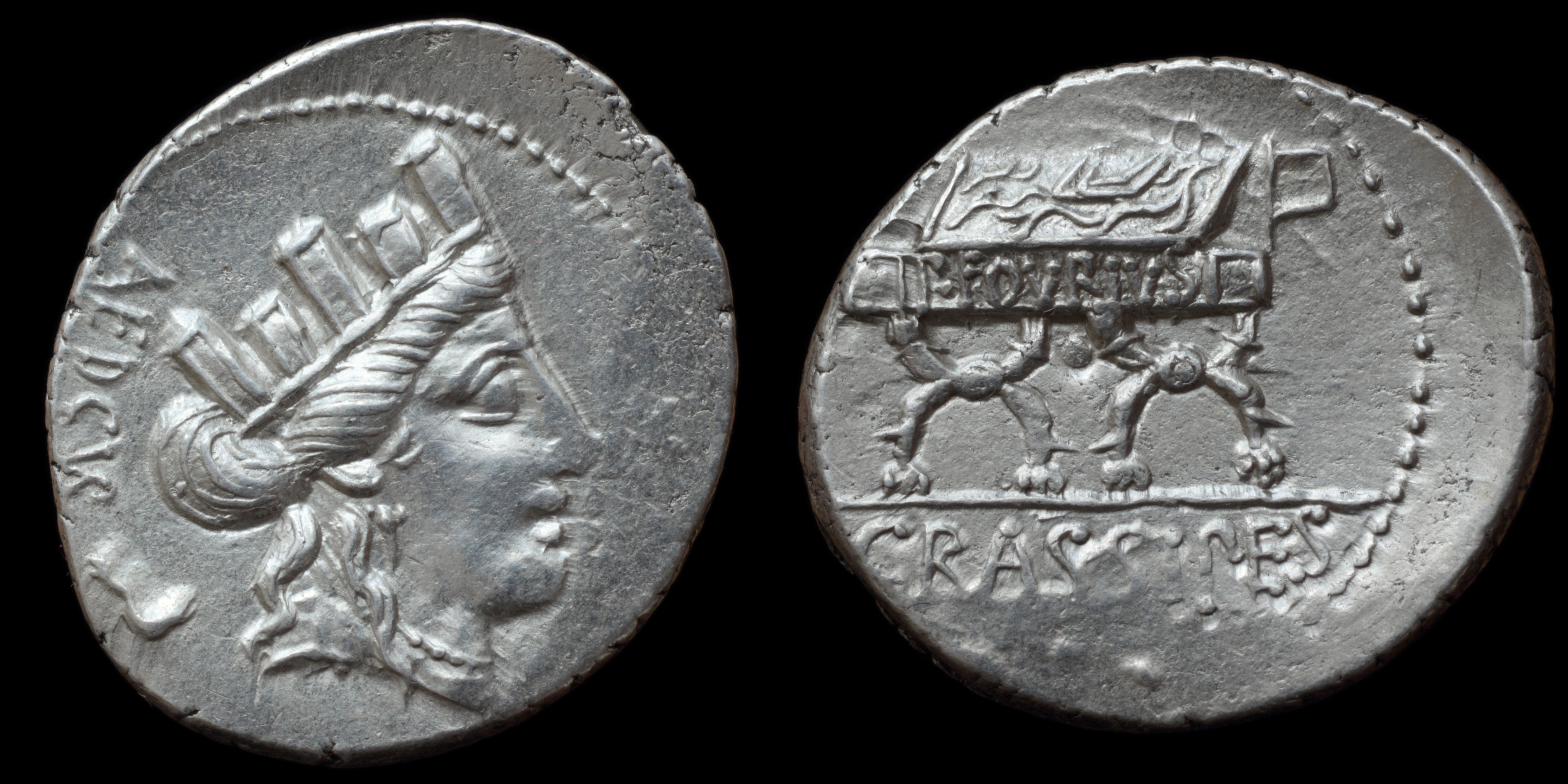
Reverse: inscribed curule chair; P·FOVRIVS CRASSIPES
Die Orientation: -
Weight: 3.8 g
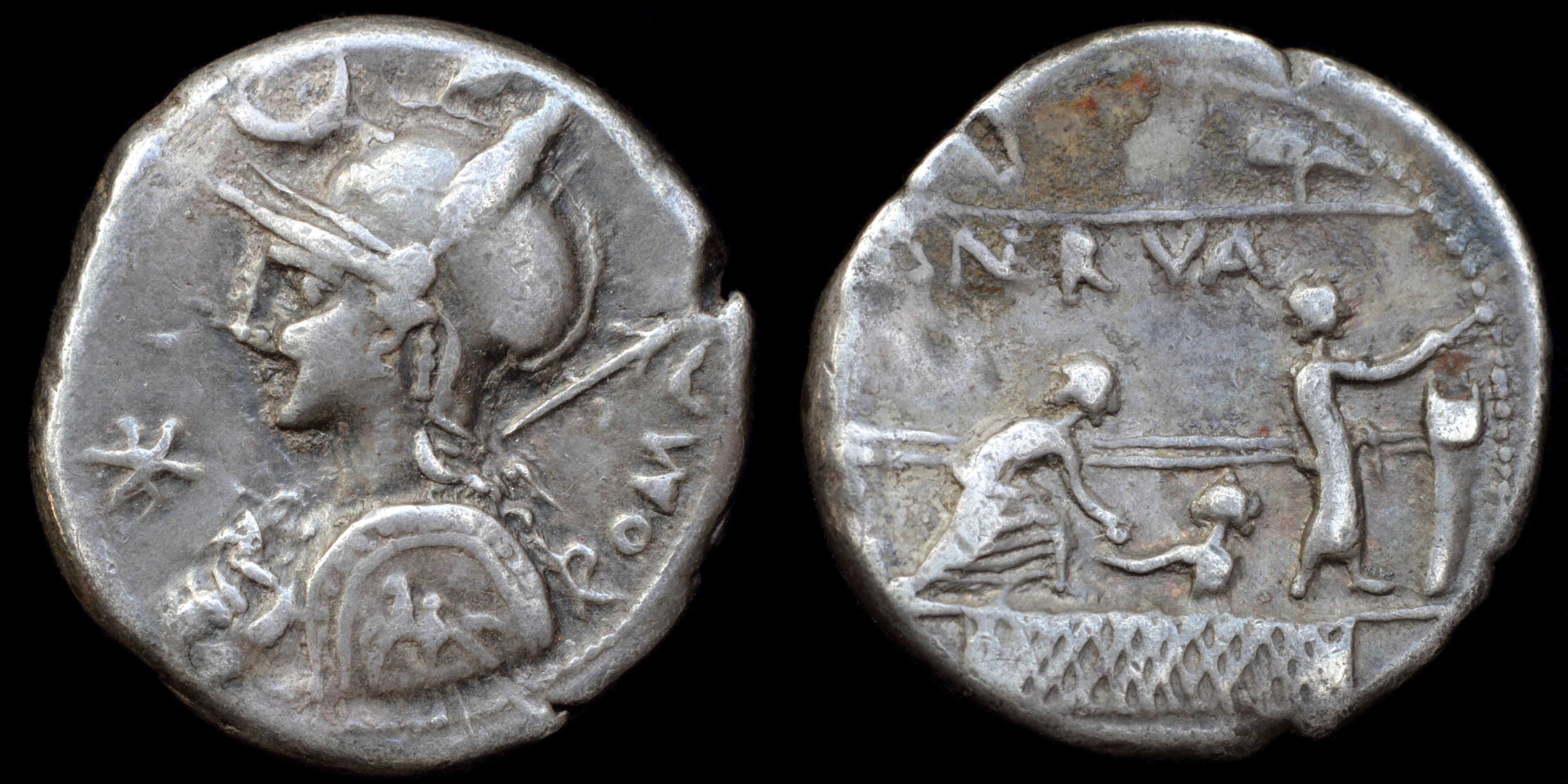
Reverse: two citizens casting ballots in the Comitium, attendant handing voting tablet to one citizen, screen behind surmounted by marker with initial "P" representing the voting tribe P·(NE)RVA
Die Orientation: -
Weight: 3.9 g
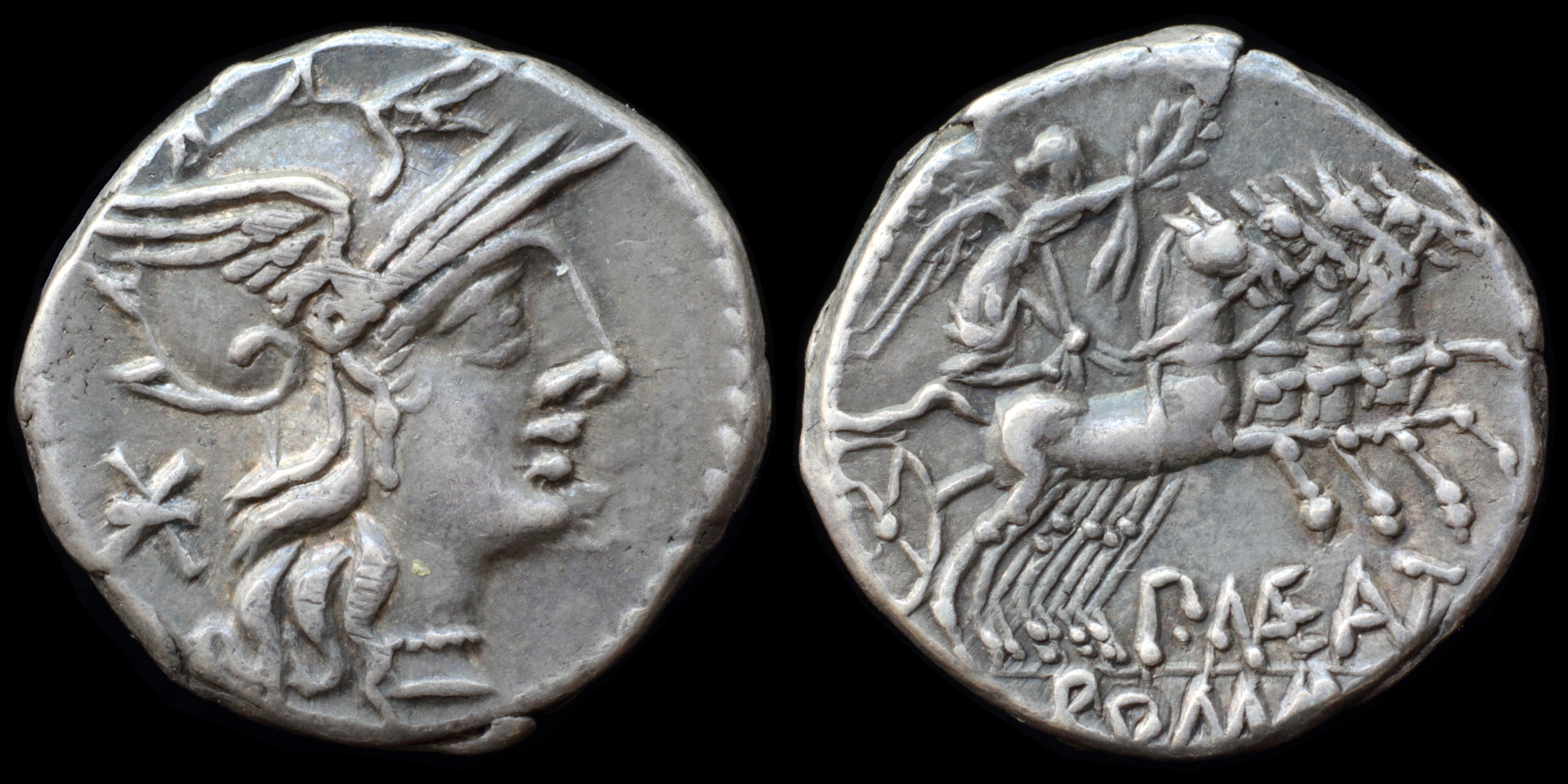
Reverse: Victory in quadriga right holding wreath and reins P·(MAE) (ANT) ROMA
Die Orientation: -
Weight: 3.9 g
_WHITE.jpg)
Reverse: Victory driving quadriga right, P•MAE ANT (ligate) below; ROMA in exergue
Die Orientation: 8 H
Weight: 3.91 g
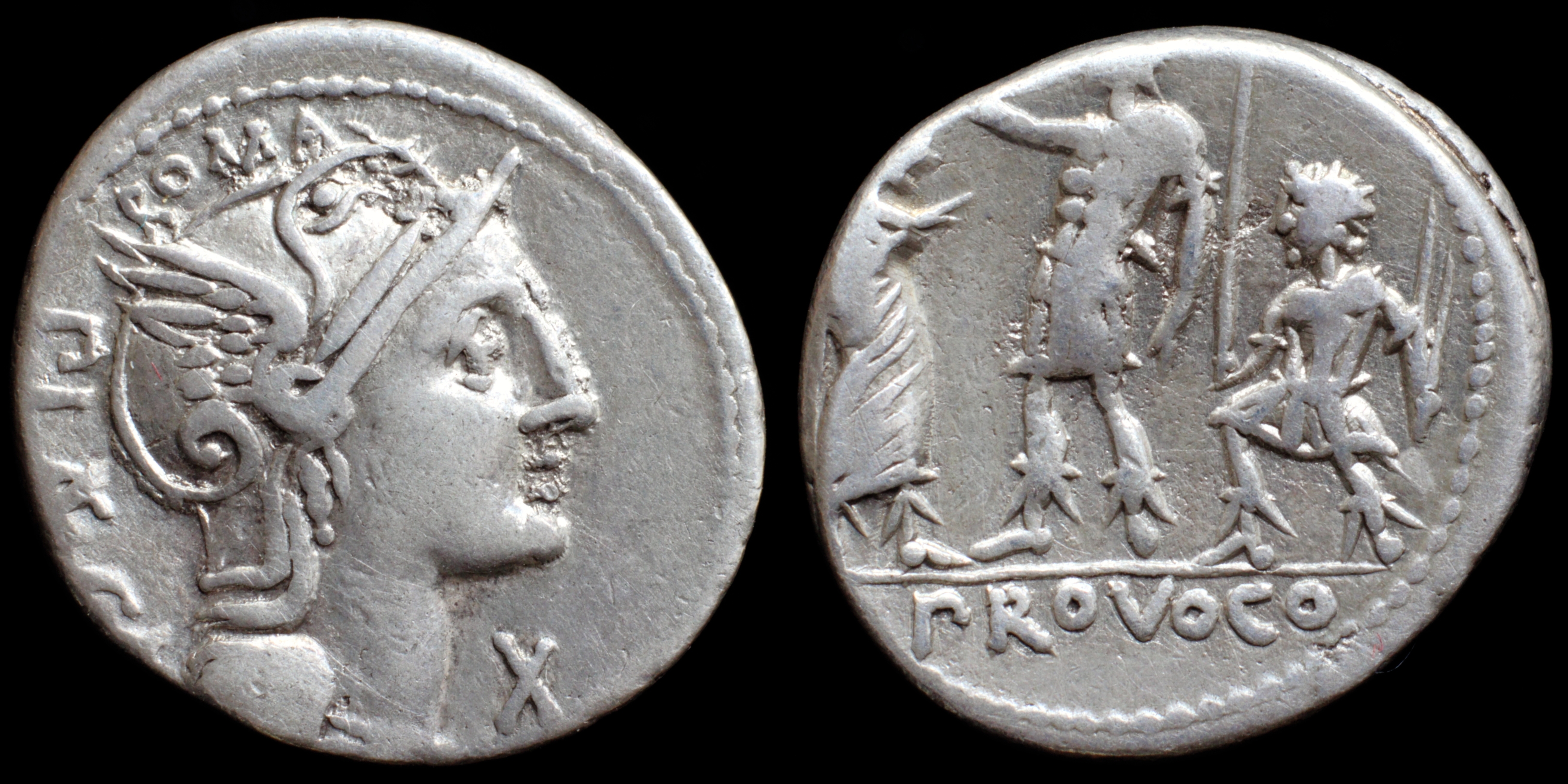
Reverse: magistrate standing left in military dress with hand raised, citizen in toga before him, attendant behind magistrate with rod in right and two rods in left PROVOCO
Die Orientation: -
Weight: 3.9 g
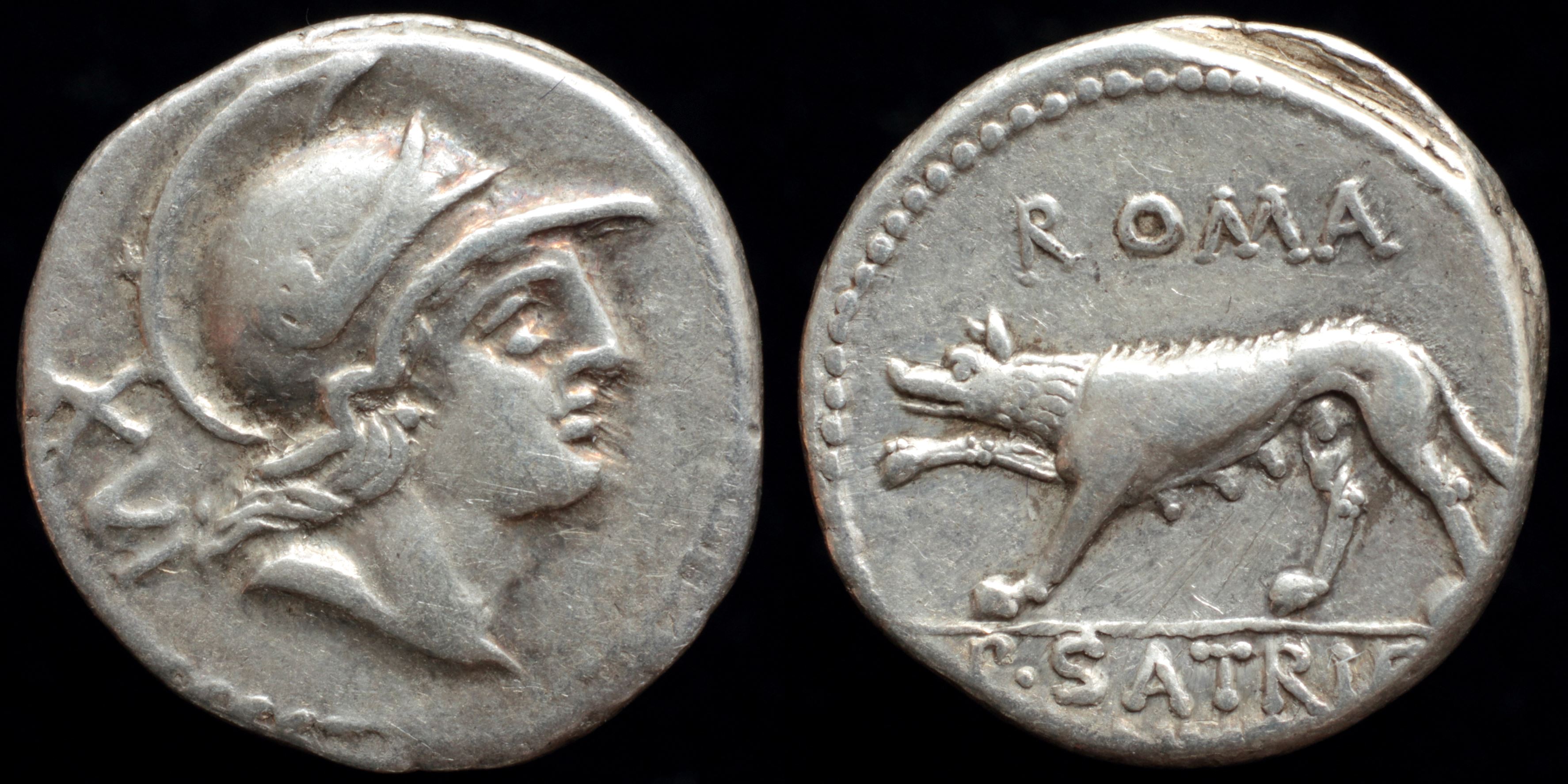
Reverse: she-wolf prowling left, ROMA / P. SATRIE / NVS
Die Orientation: -
Weight: 3.9 g
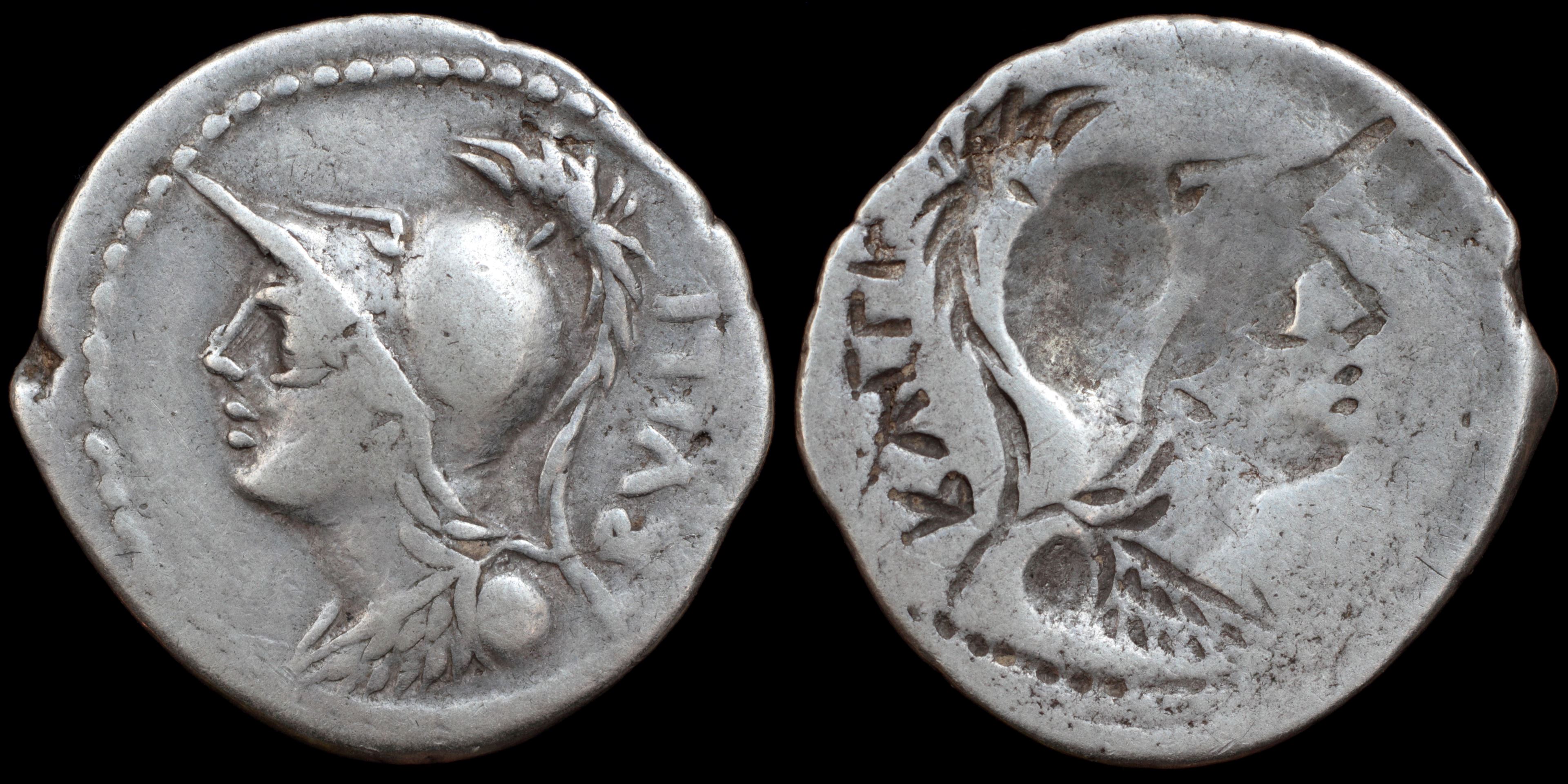
Reverse: Brockage - incuse obverse
Die Orientation: -
Weight: 3.76 g
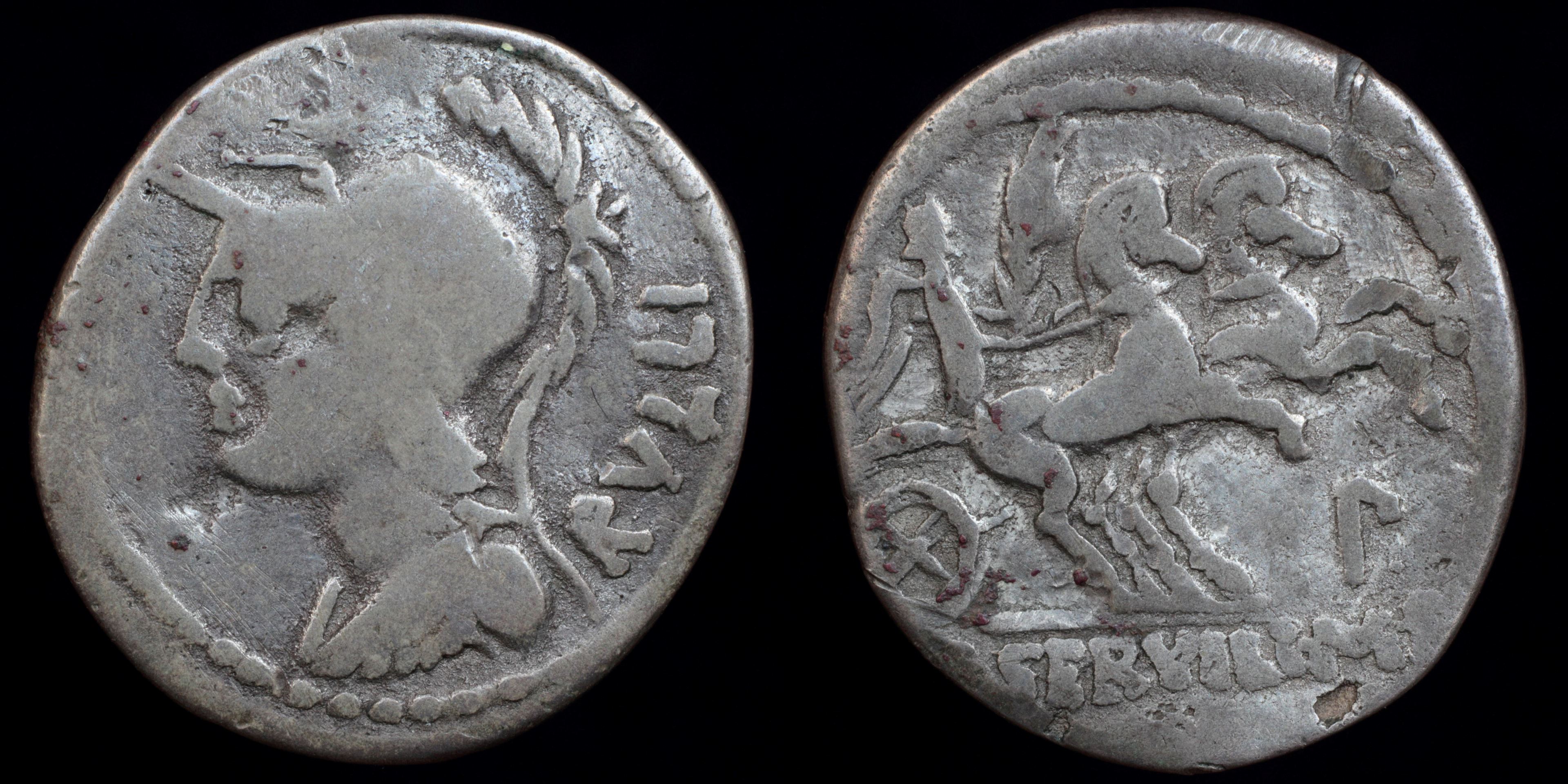
Reverse: Victory in biga right, holding palm branch P. SERVILI.M.F
Die Orientation: -
Weight: 3.3 g
.jpg)
Reverse: AEQVIT AVG TR P COS II, Aequitas standing facing left, holding scales and cornucopia
Die Orientation: 12 H
Weight: 2.69 g
Thus began the "Year of Five Emperors."
(48).jpg)
Reverse: AEQVIT AVG TR P COS II, Aequitas standing left holding scales and cornucopiae
Die Orientation: 7 H
Weight: 3.18 g
(47).jpg)
Reverse: IVSTITIA AVGVSTI, Justitia (or Aequitas) standing left, holding scales and cornucopiae
Die Orientation: 12 H
Weight: 2.79 g
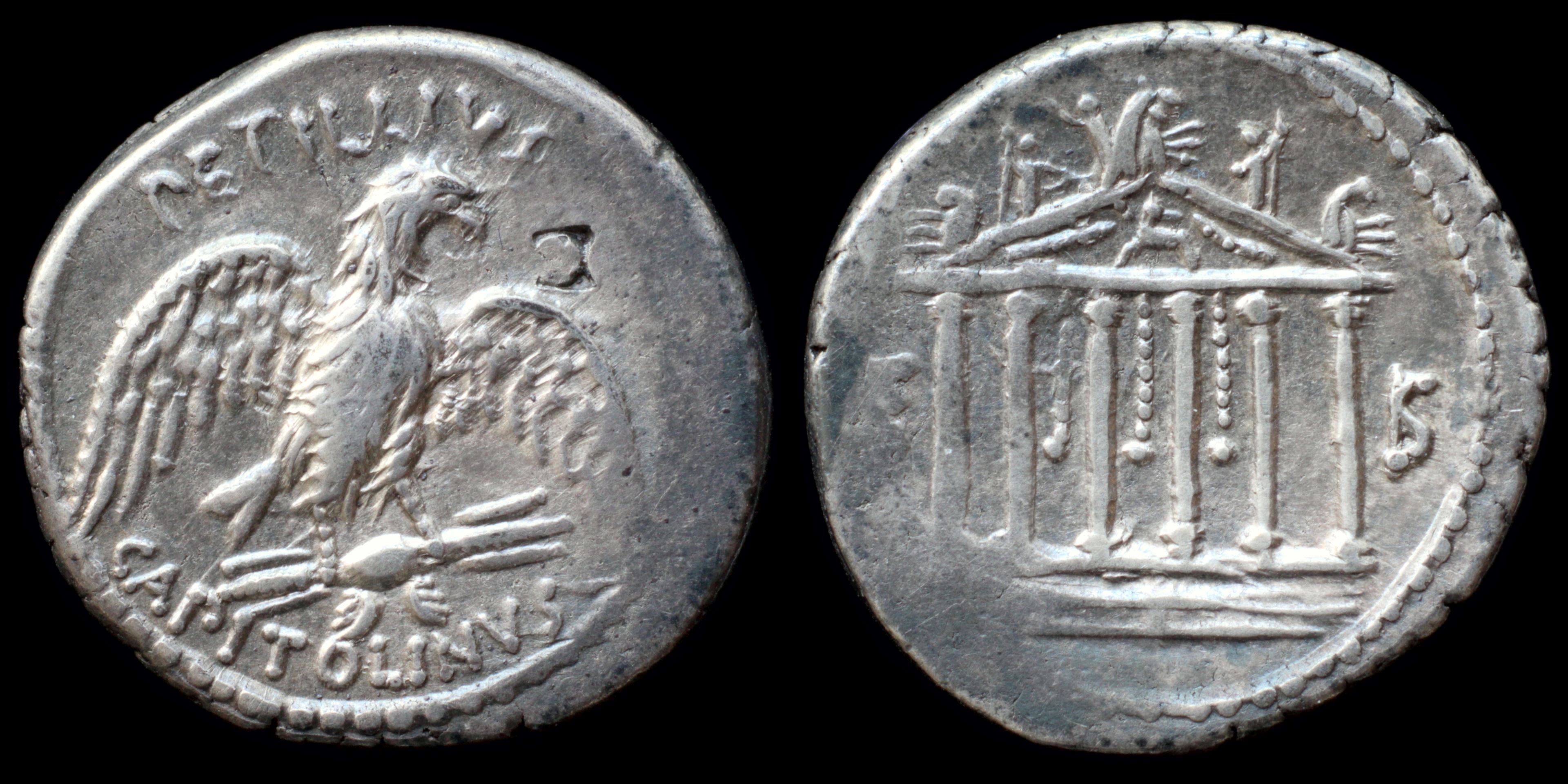
Reverse: hexastyle temple of Jupiter Optimus Maximus (Roman Capitol), richly decorated roof; F__S
Die Orientation: -
Weight: 3.9 g
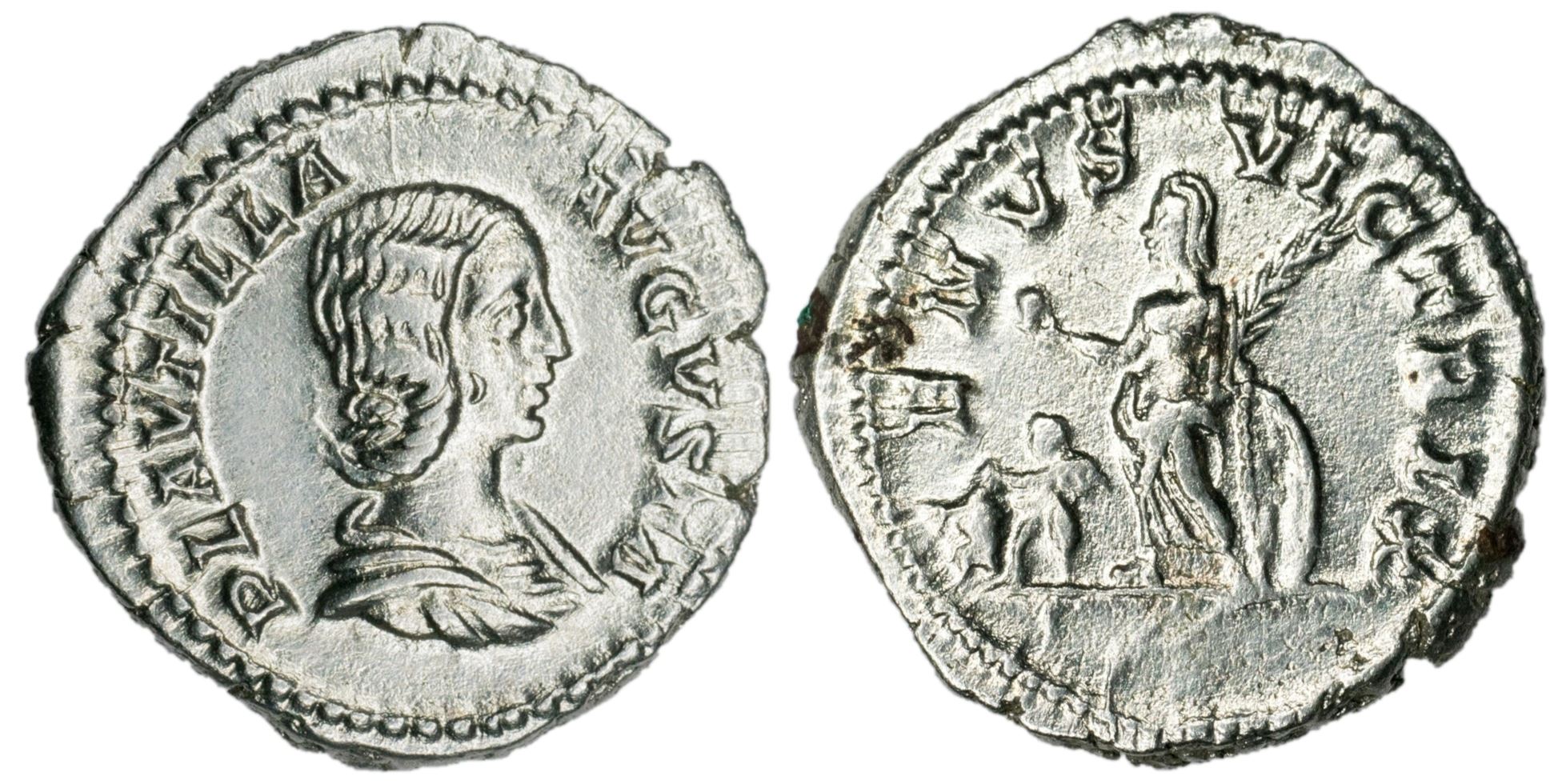
Reverse: VENVS VICTRIX, Venus standing left holding apple & palm, leaning on shield, Cupid at her feet
Die Orientation: 0 H
Weight: 0 g
(15).jpg)
Reverse: CONCORDIA AVGG, Concordia standing left, holding patera and sceptre
Die Orientation: 6 H
Weight: 3.03 g
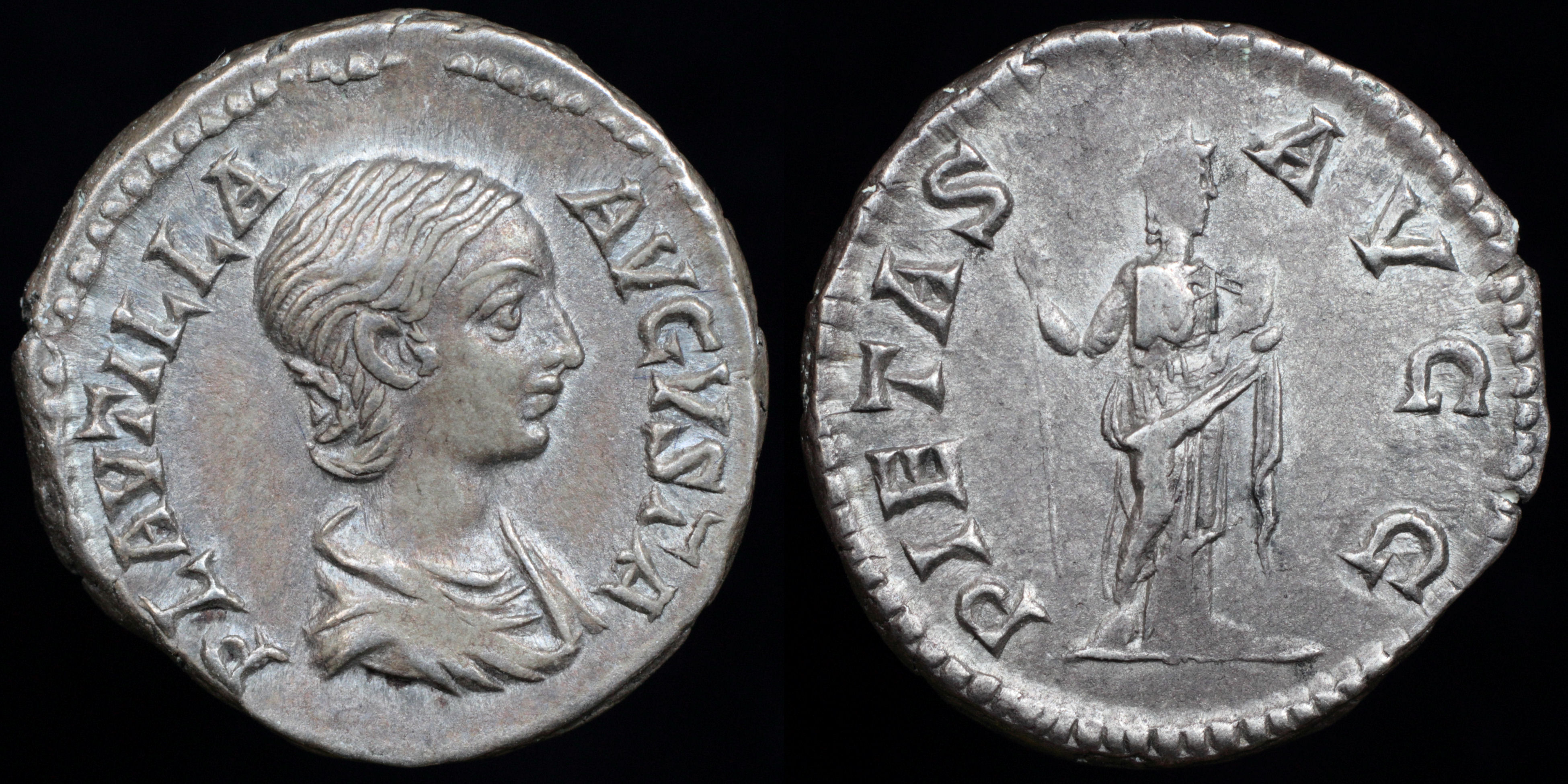
Reverse: Pietas standing right holding scepter and child; PIETAS__AVG G
Die Orientation: -
Weight: 3.69 g
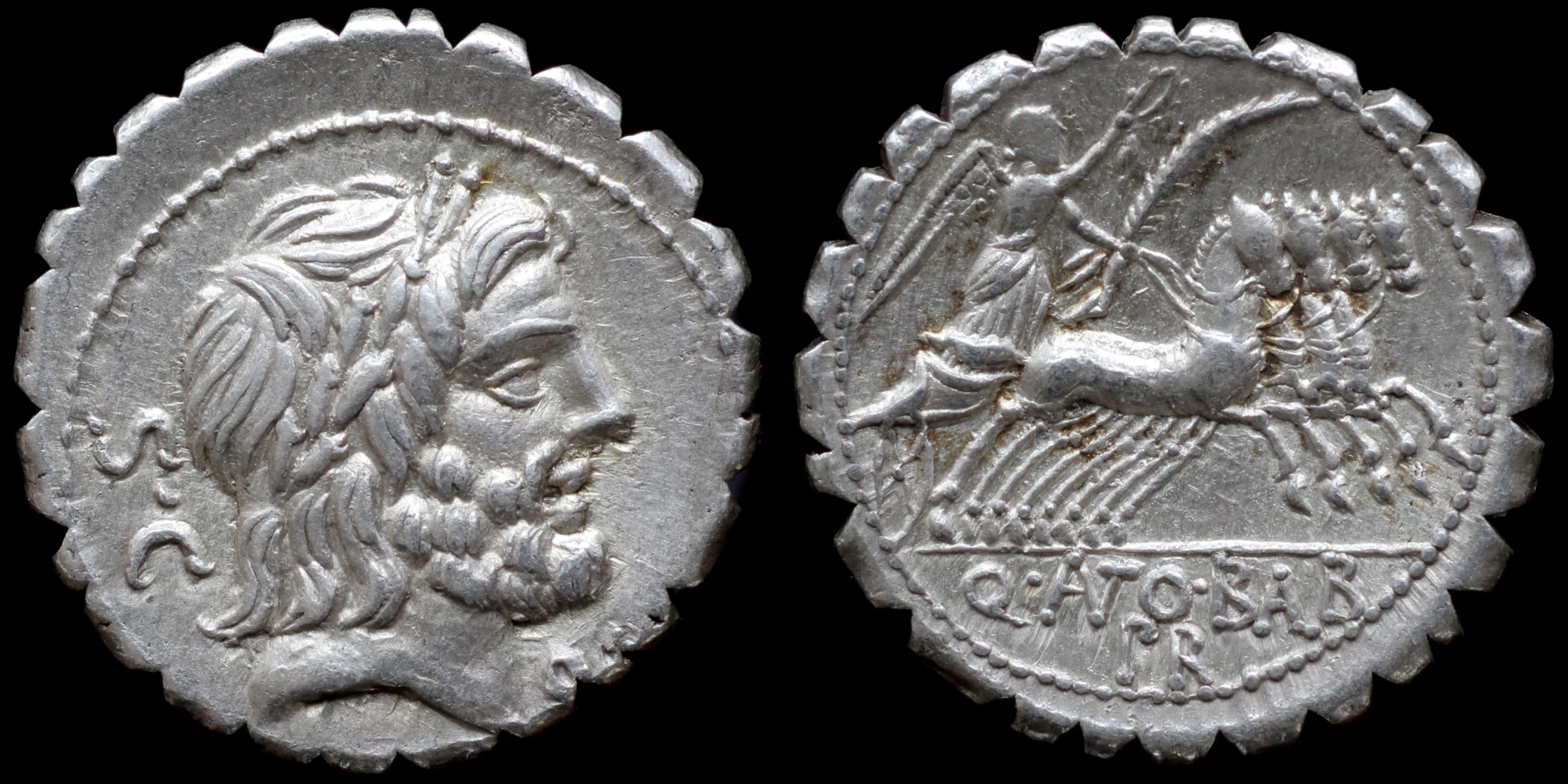
Reverse: Victory riding in quadriga right, holding wreath, reins and palm branch, Q·(ANT)O·B(AL)B / PR
Die Orientation: -
Weight: 3.9 g
Moneyer who belonged to the opposition of Sulla struck these coins as praetor in Sardinia according special decree of senate (Senatus Consulto). He was driven from Sardinia by L. Philippus, the legate of Sulla, and slain. Victory on reverse didn't avert defeat of oppositon in battle of Colline Gate.
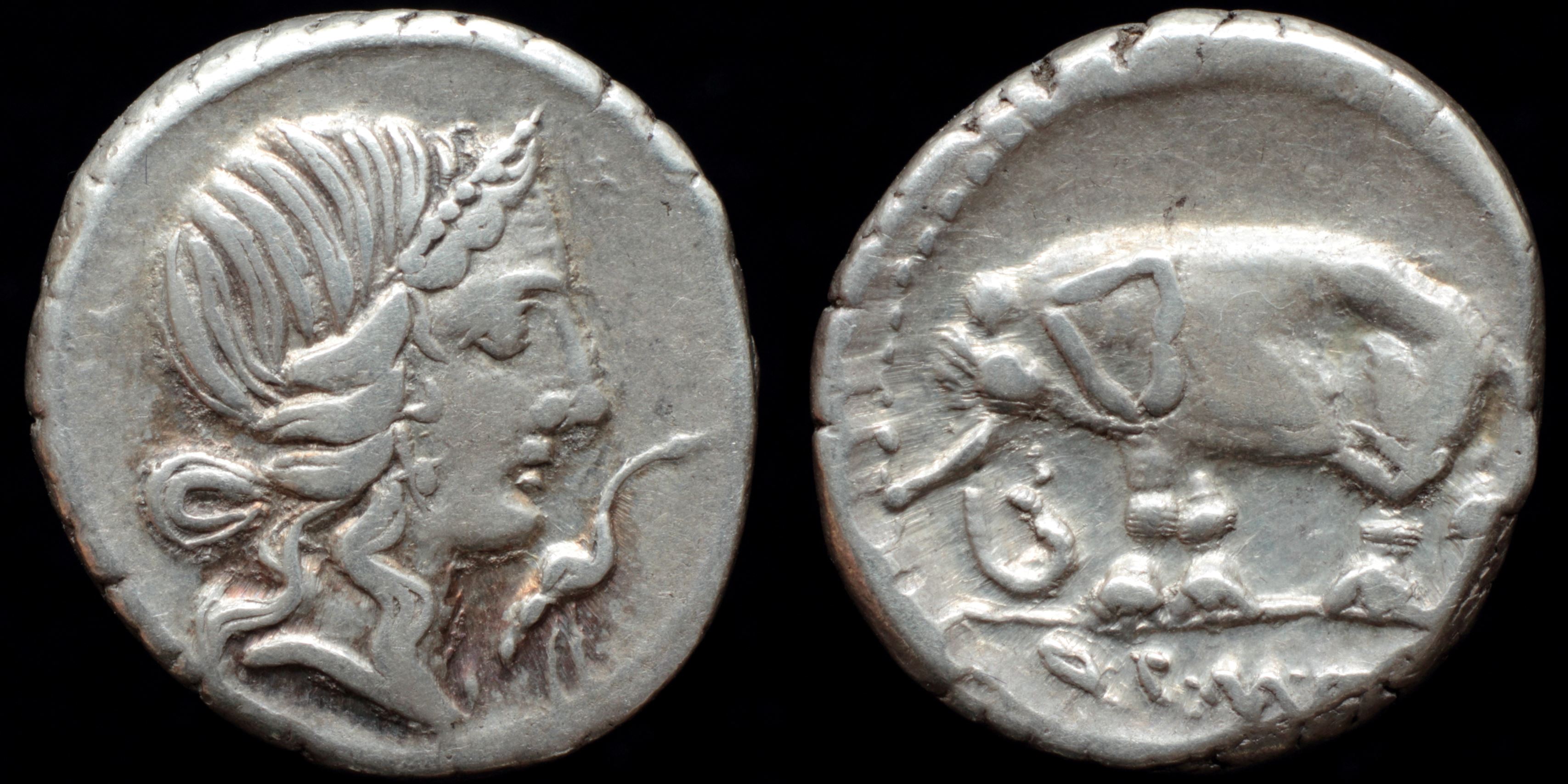
Reverse: elephant left, bell hanging from its neck Q·C·M·P·I
Die Orientation: -
Weight: 3.9 g
mint in north Italy. Elephant commemorates victory of moneyer's ancestor L. Caecilius Metellus over Hastrubal in the first Punic war 251 BC near Palermo. Seized elephants appeared in his triumph and became the emblem of the family. Moneyer received agnomen Pius in 99 BC for his effort to return his father from exile. Stork is the symbol of Pietas. Moneyer struck these coins as Imperator in the northern Italy where he fought along with Sulla. They held consularship together in 80 BC.

Reverse: Elephant walking left; Q•C•M•P•I in exergue.
Die Orientation: 6 H
Weight: 3.66 g
Metellus Pius came from one of the most important and wealthiest families of Rome. Beginning in the 3rd century BC, his family held numerous consulships, tribunates, censorships and military commands. His father, Q. Caecilius Metellus Numidicus, was the chief commander in the Jugurthine War in Numidia until Marius displaced him, and was later censor until driven into exile by Marius.
Though Metellus Pius fame is largely derived from his later campaigns in Hispania against Sertorius, the coinage in his name was struck at a North italian mint in 81 B.C, while he fought for Sulla against leaders of the Marian Party, such as Carrinas, Norbanus and Carbo. The obverse of this coin portrays the goddess Pietas and alludes to the moneyer's cognomen, Pius. The moneyer acquired the honorable title from the people of Rome, whom he had beseeched in order to secure the restoration from exile of his father. The reverse with the elephant recalls the accomplishment of his ancestor Lucius Caecilius Metellus, who in 251 B.C captured an army of Carthaginian elephants at Panormus."
Provenance: e-Bay sale, December 2017.
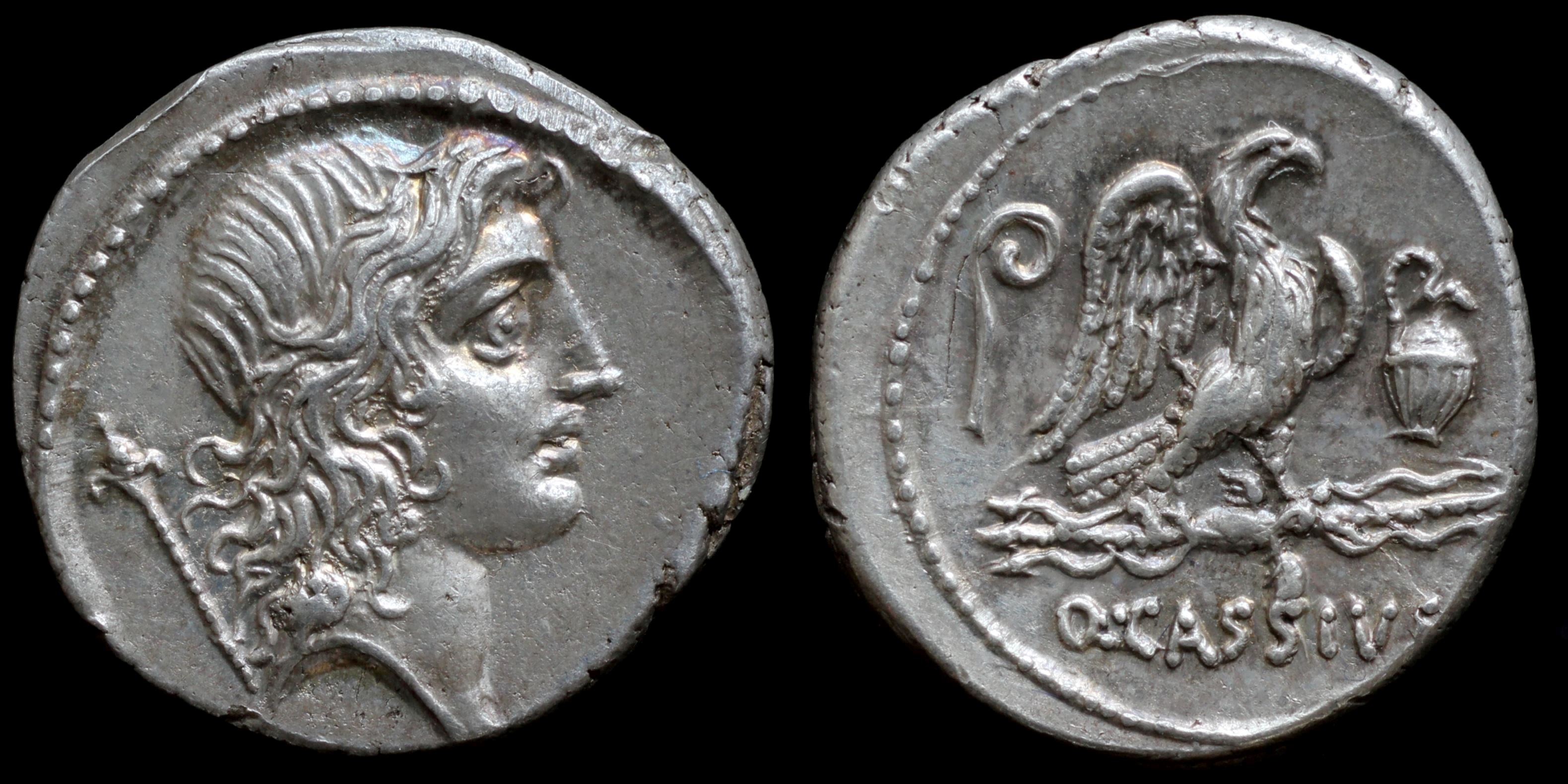
Reverse: eagle on thunderbolt right, lituus on left and jug on right, Q·CASSIVS
Die Orientation: -
Weight: 4.03 g
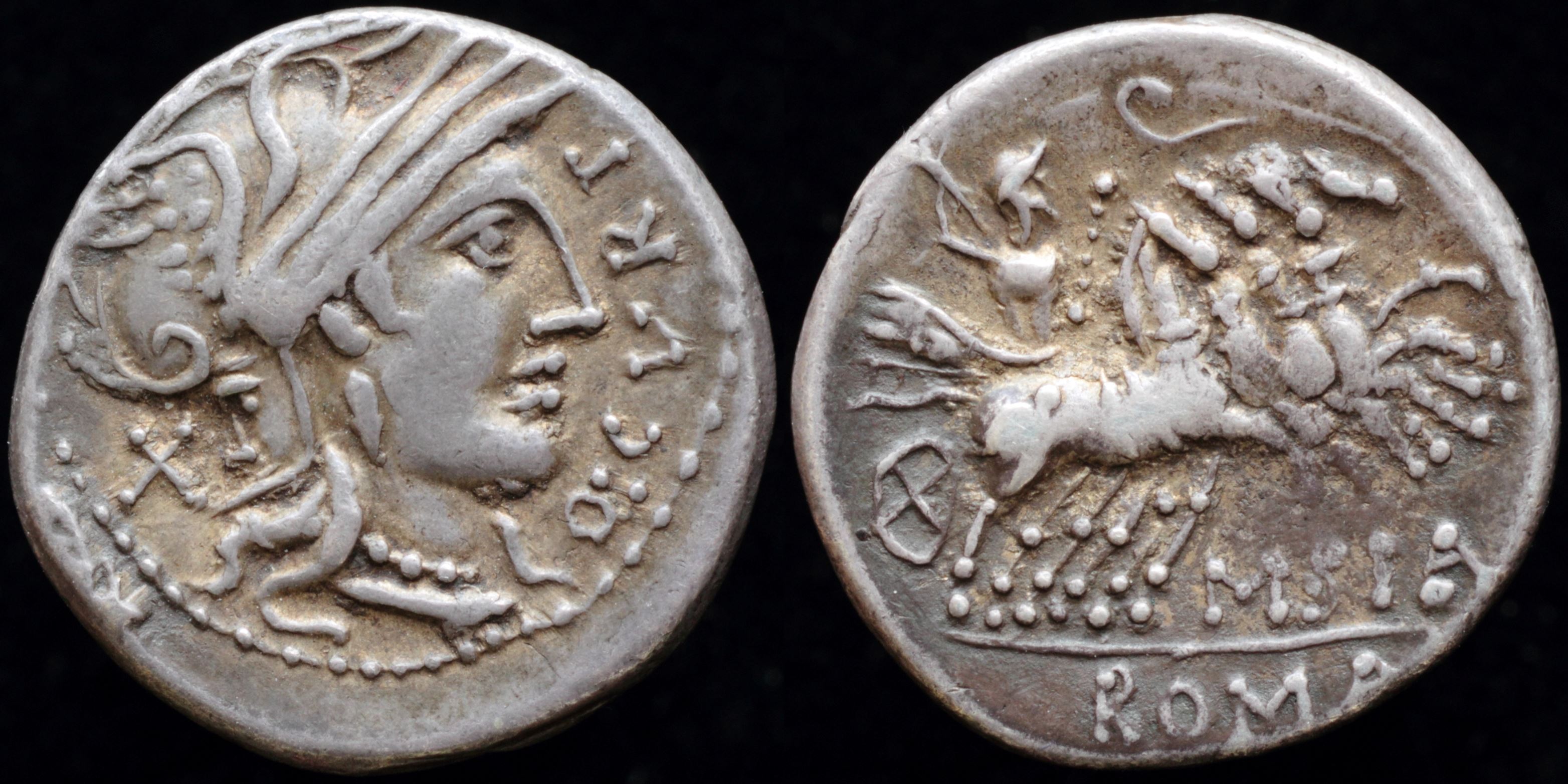
Reverse: Jupiter in quadriga right hurling thunderbolt and holding scepter, lituus above M SI(LA) ROMA
Die Orientation: -
Weight: 4 g
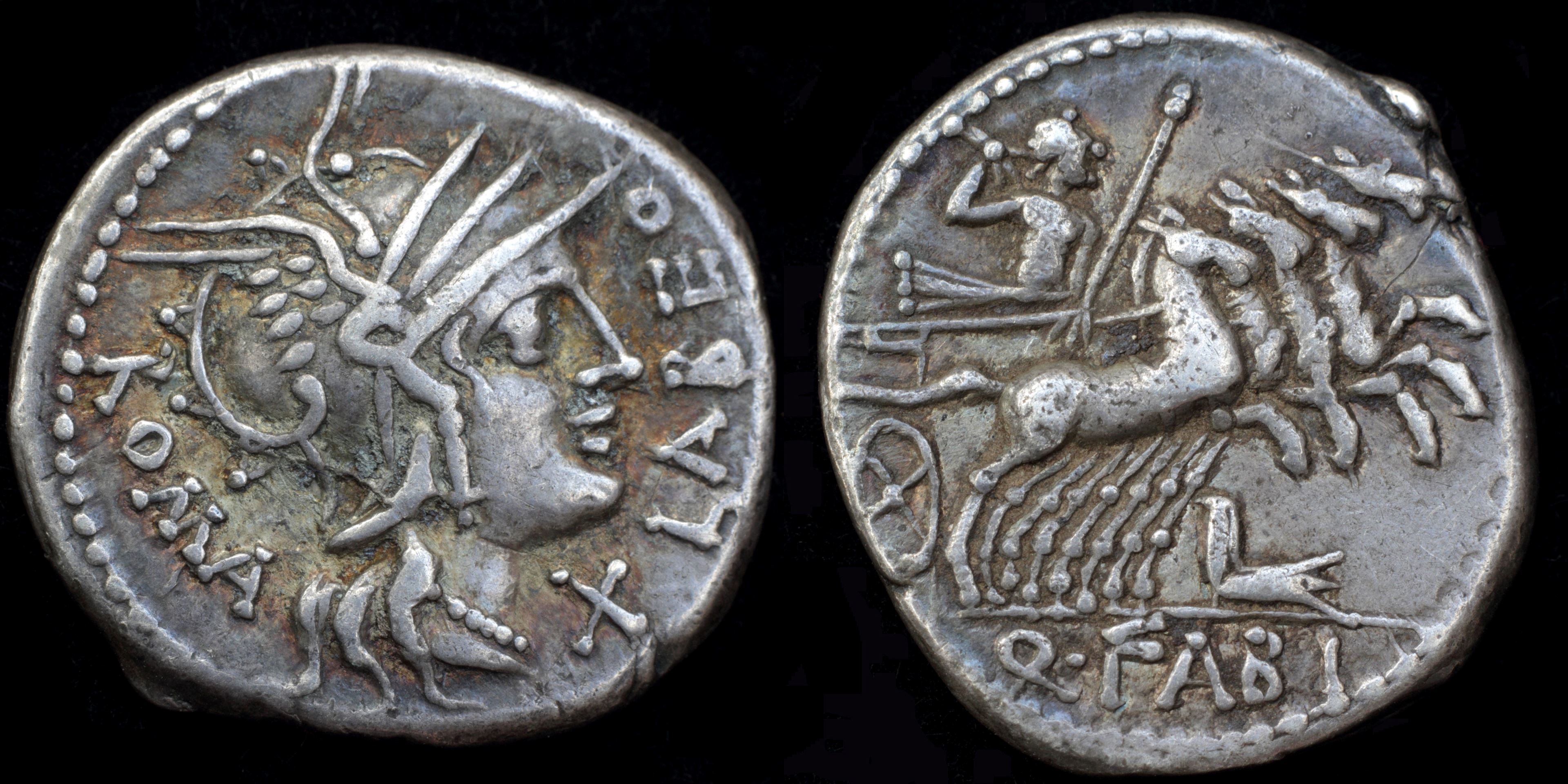
Reverse: Jupiter in quadriga right, holding reins and scepter, hurling thunderbolt, rostrum tridens below Q·FABI
Die Orientation: -
Weight: 3.9 g
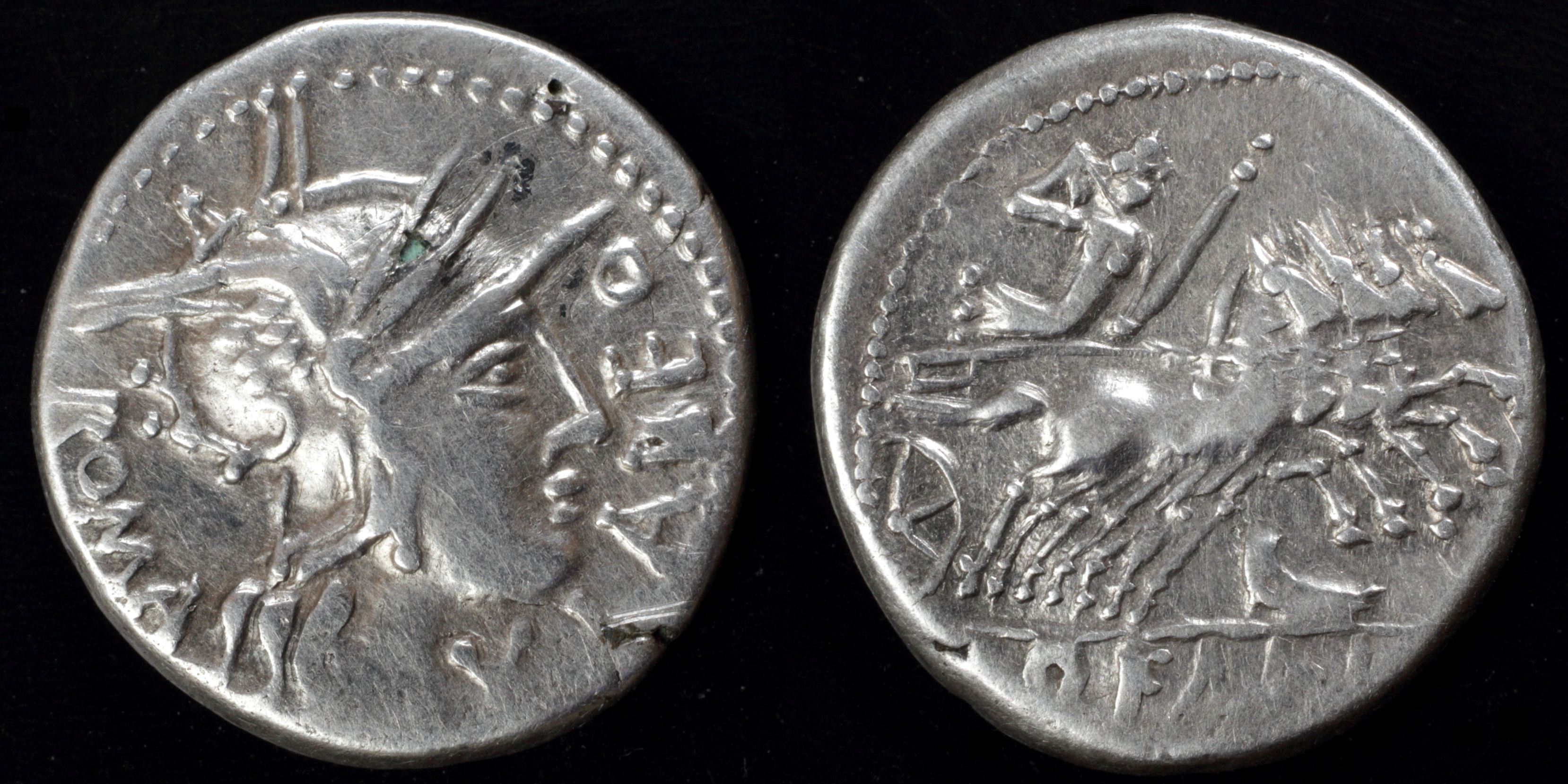
Reverse: Jupiter in quadriga right, holding reins and scepter, hurling thunderbolt, rostrum tridens below Q·FABI
Die Orientation: -
Weight: 3.1 g
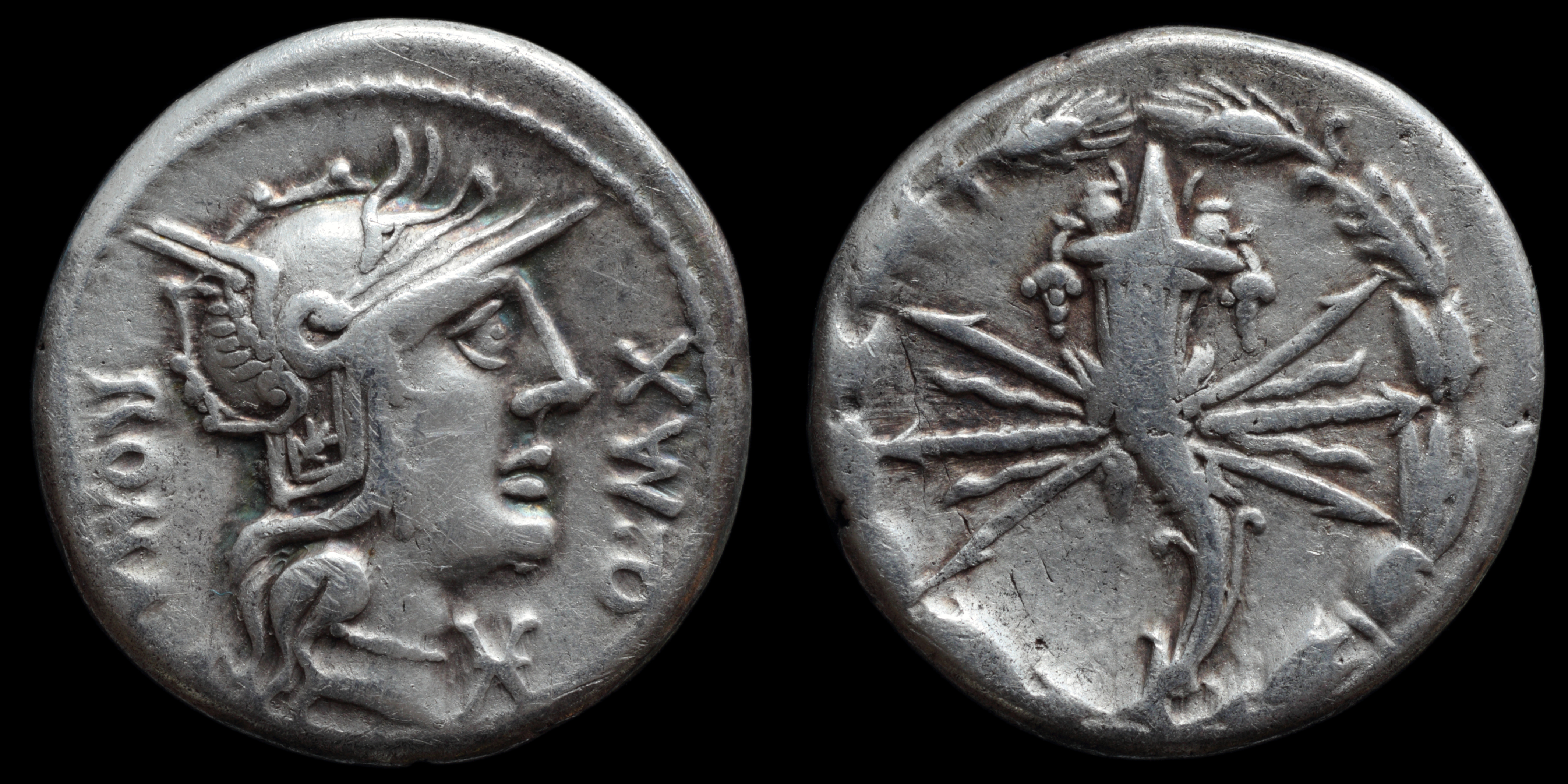
Reverse: Cornucopiae on thunderbolt within wreath of ear of barley and wheat with assorted fruits
Die Orientation: -
Weight: 3.9 g
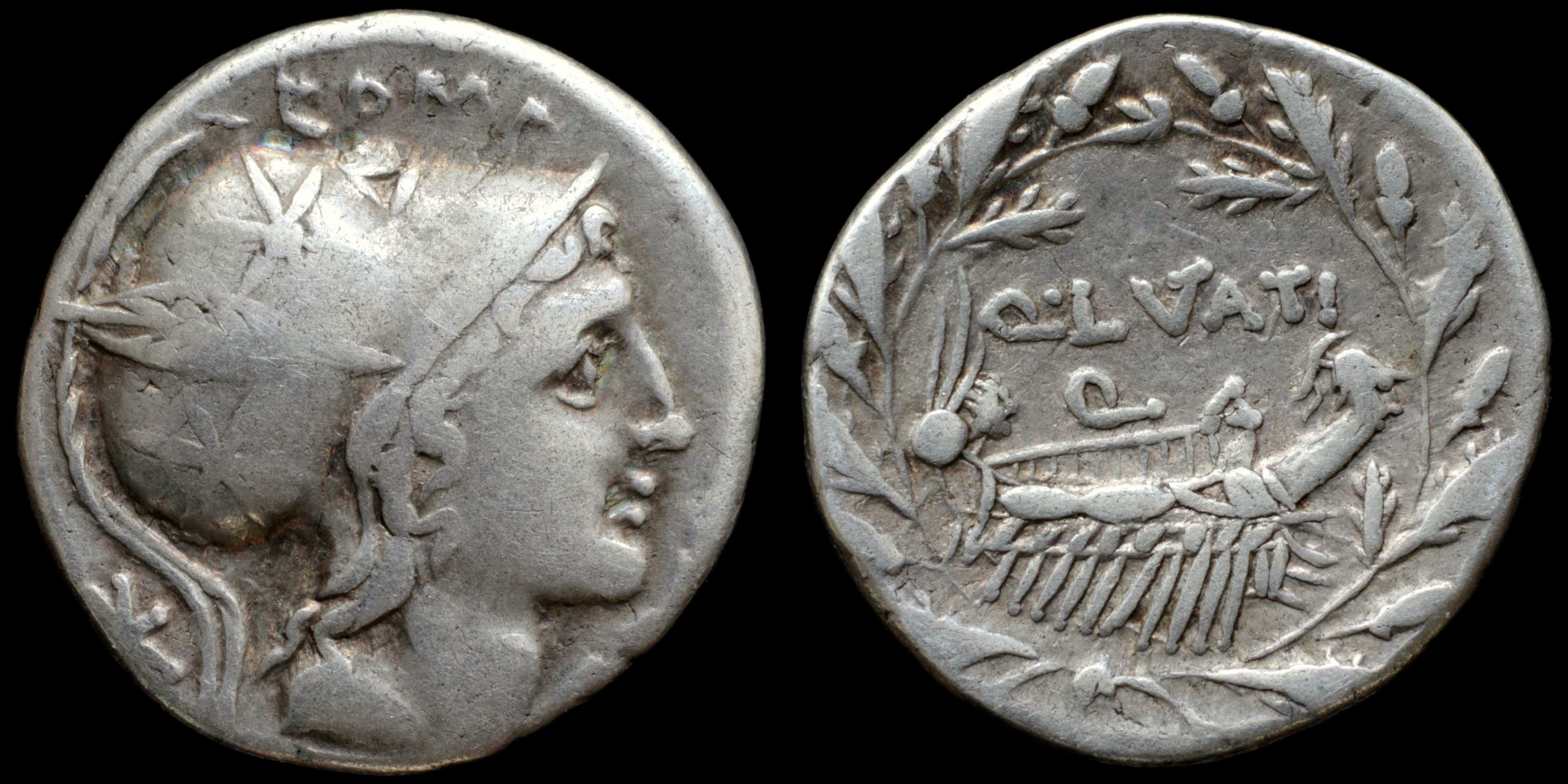
Reverse: war galley right, all within oak wreath; Q·L(VT)ATI / Q
Die Orientation: -
Weight: 3.8 g
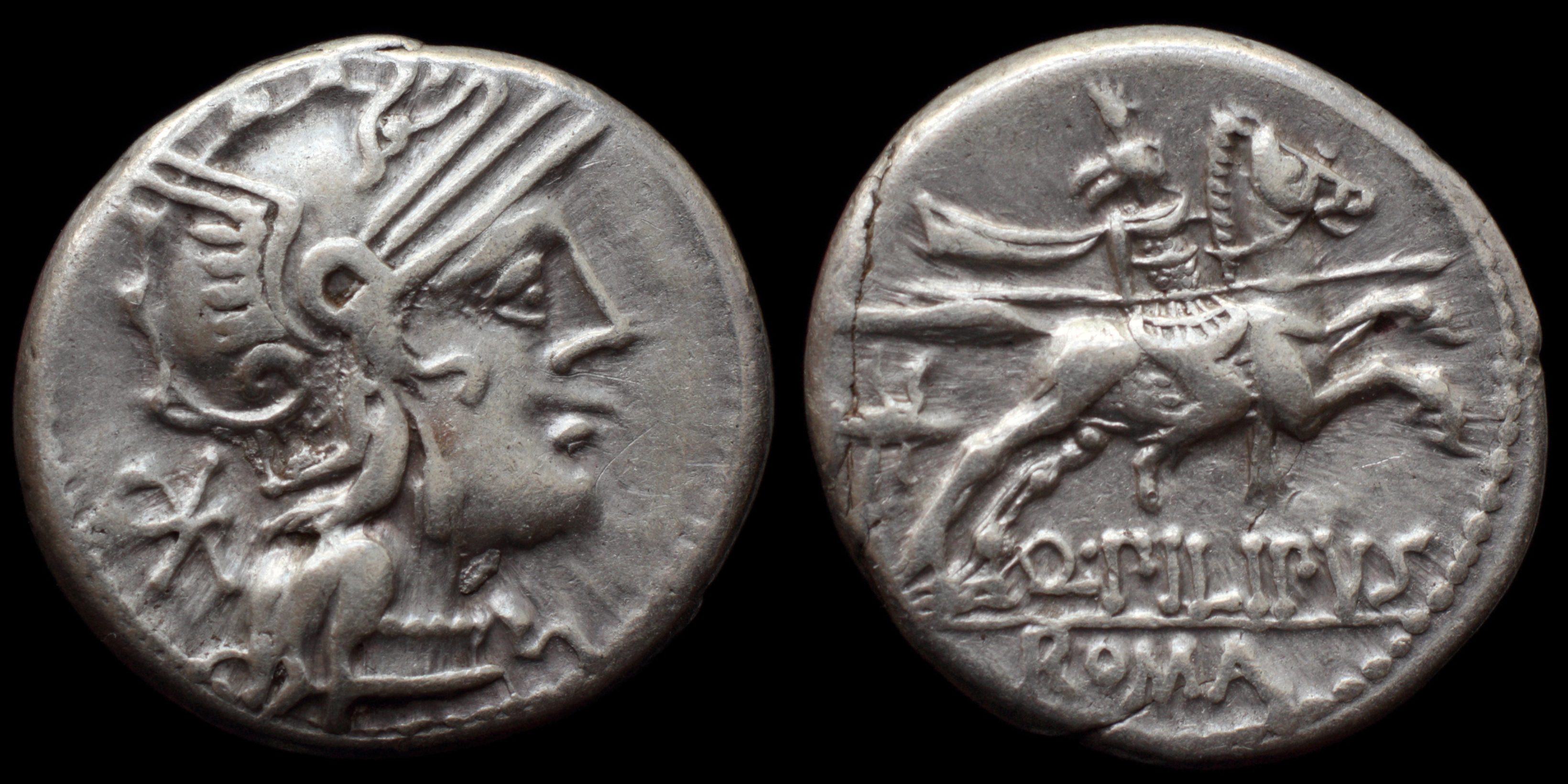
Reverse: Philip V galloping on horse right wearing Macedonian helmet with goat's horns; Q·PILIPVS / ROMA
Die Orientation: -
Weight: 3.8 g
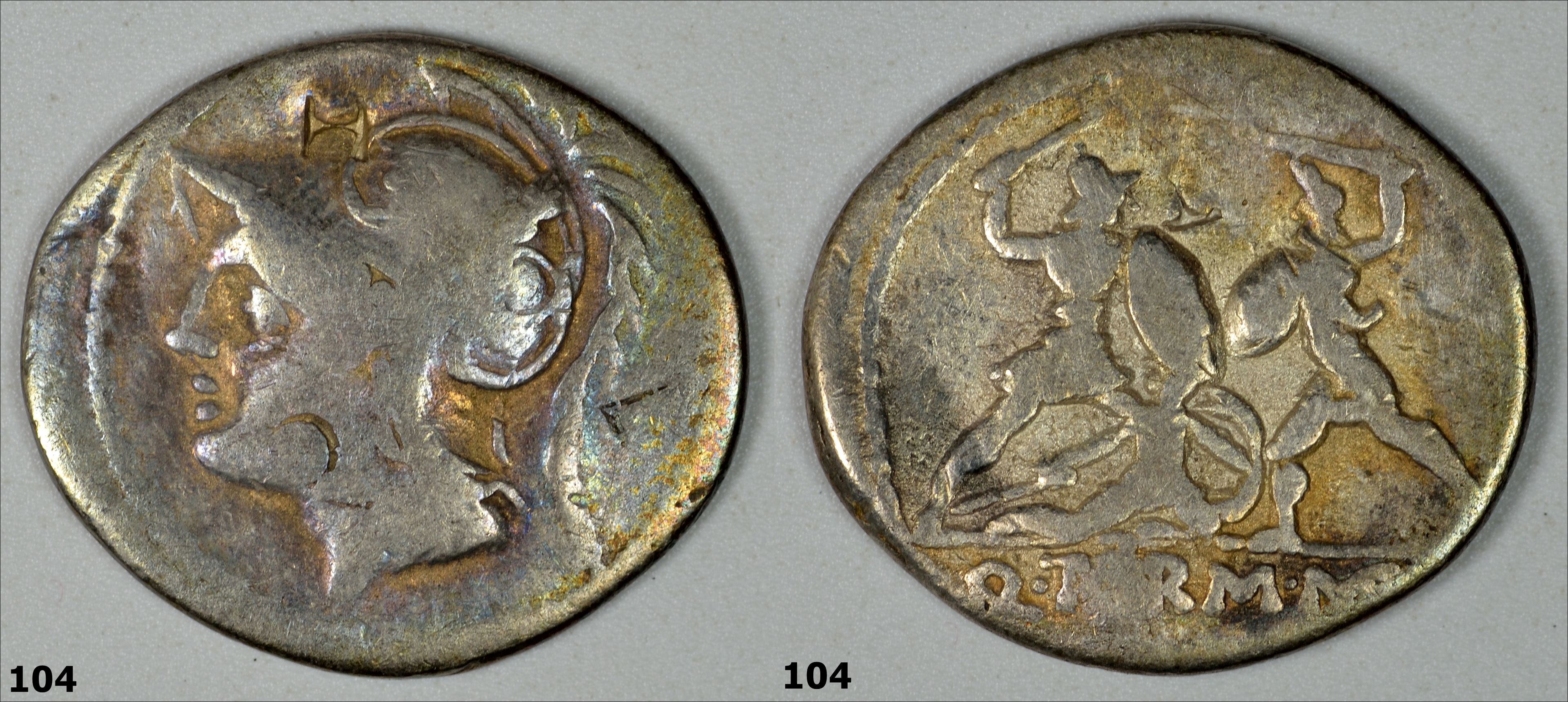
Reverse: Q*TERM*MF below two warriors in combat, one on left protecting a fallen man
Die Orientation: -
Weight: 3.5 g

Reverse: Two warriors fighting, each armed with sword in right hand and shield in left; the one on the left protects a fallen comrade; the other wears horned helmet; Q•THERM•MF in exergue.
Die Orientation: -
Weight: 4.02 g
He may also have been the same Thermus who served as military tribune under Scipio in North Africa in 202 BC. Appian relates that about this time there was a cavalry engagement between the forces of Hannibal and those of Scipio near Zama, in which the latter had the advantage. On the succeeding days they had sundry skirmishes until Scipio, learning that Hannibal was very short of supplies and was expecting a convoy, sent the military tribune, [Quintus Minucius] Thermus, by night to attack the supply train. Thermus took a position on the crest of a hill at a narrow pass, where he killed 4,000 Africans, took as many more prisoners, and brought the supplies to Scipio."
Provenance: e-Bay sale (May 2018).
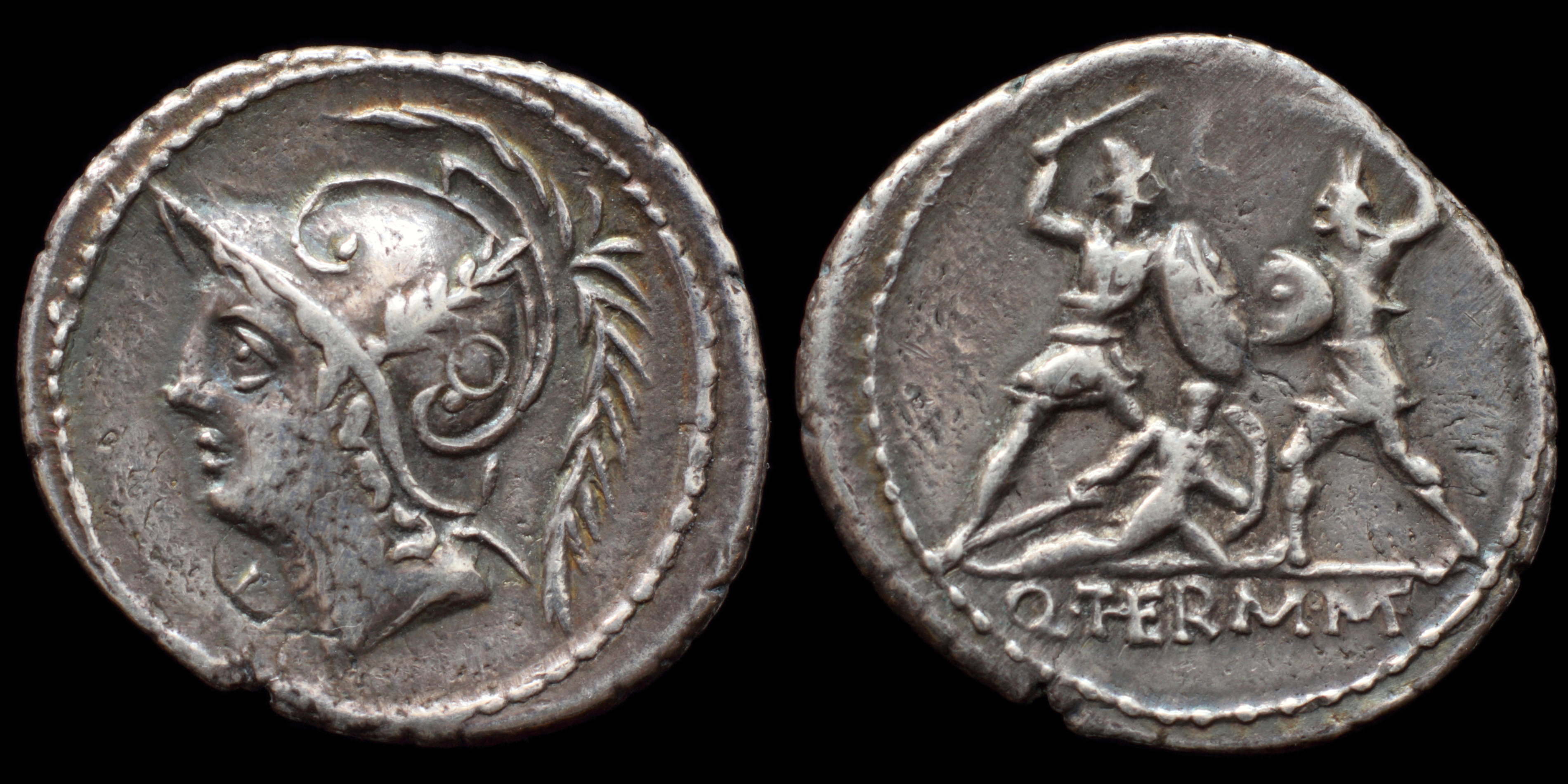
Reverse: Q. Minucius Q.f. L.n. Thermus right fighting barbarian (Ligurian) left wearing horned helmet over Roman soldier kneeling right; everyone holding sword and shield; Q·(THE)RM·(MF)
Die Orientation: -
Weight: 3.9 g
(11).JPG)
Reverse: Two warriors in combat, one on left protecting a fallen man; Q•TERM•MF in exergue
Die Orientation: 6 H
Weight: 3.94 g
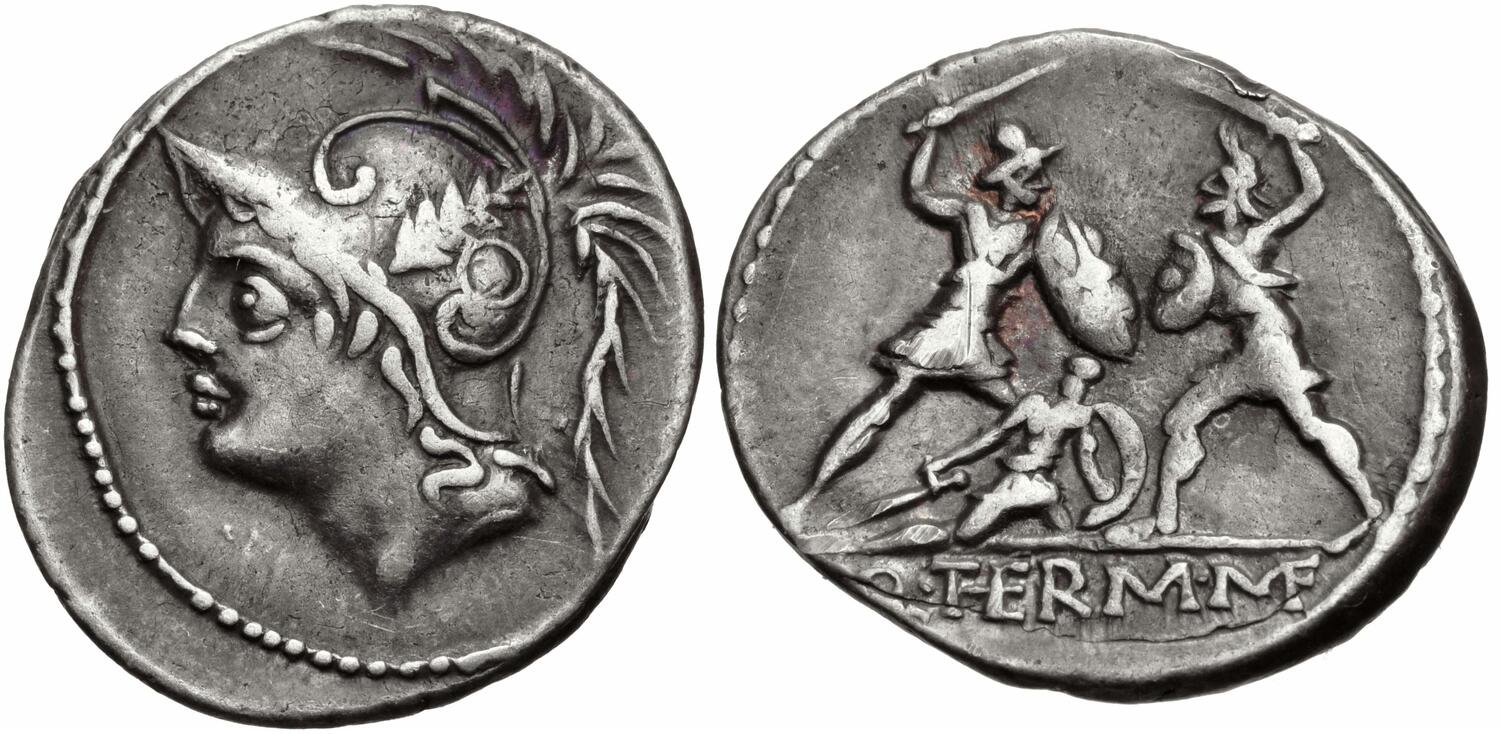
Reverse: Two warriors fighting, each armed with sword and shield; the one on the left protects a fallen comrade, the other wears horned helmet
Die Orientation: 7 H
Weight: 3.88 g
Toned, a few scratches, scrape on reverse. VF. From the Raintree Collection.
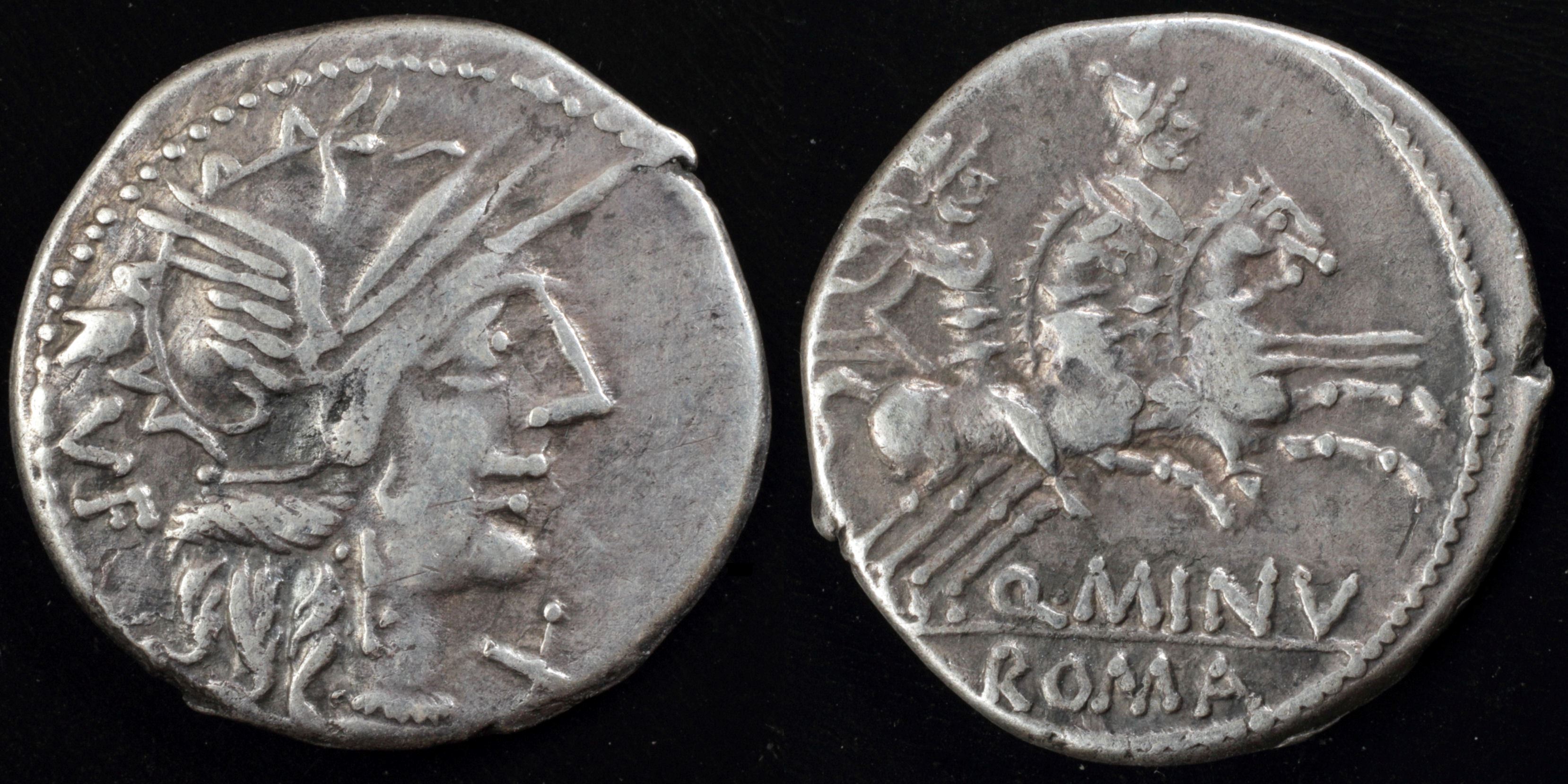
Reverse: Dioscuri riding on horses right, holding spear Q·MINV ROMA
Die Orientation: -
Weight: 2.9 g
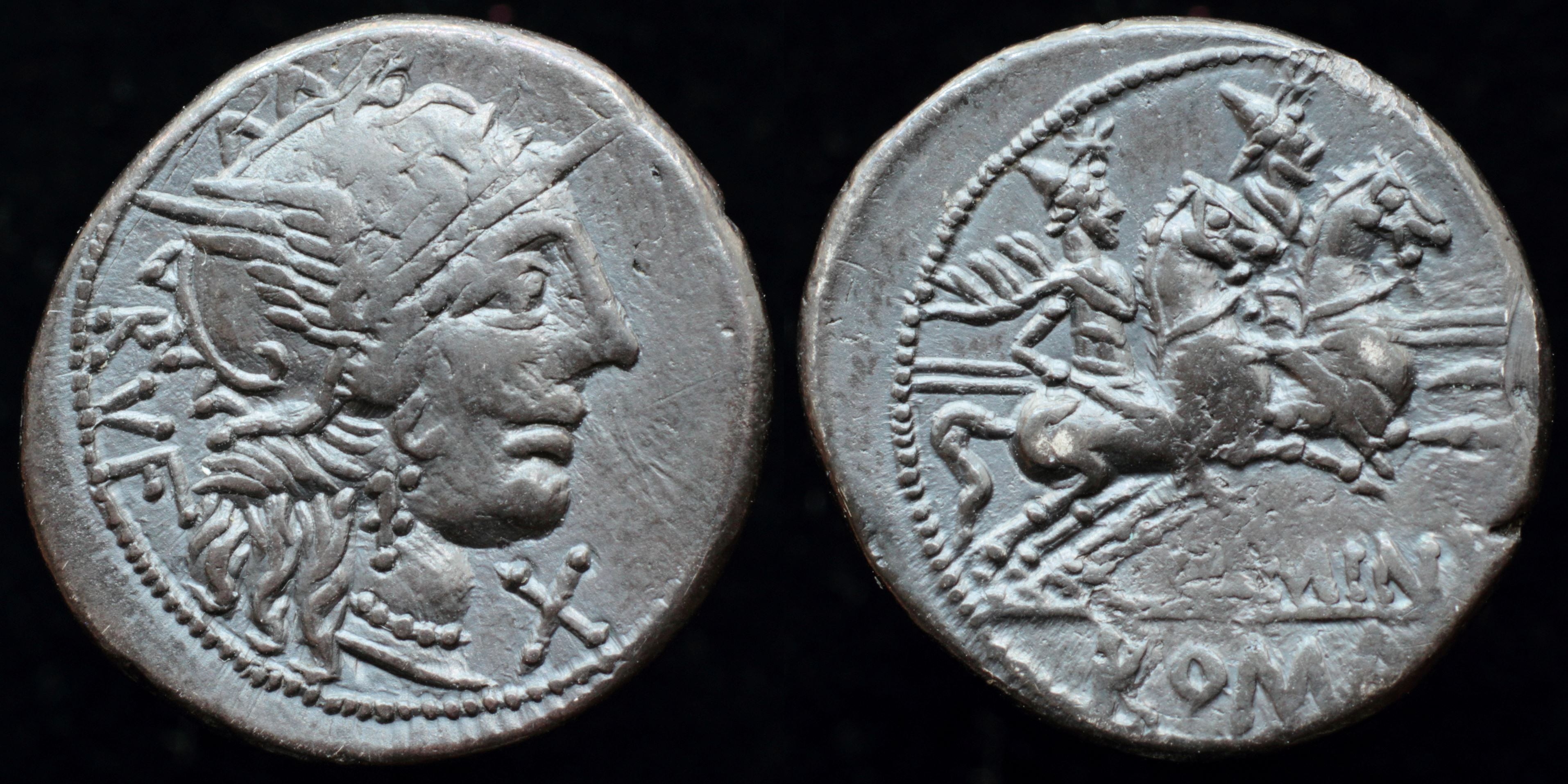
Reverse: Dioscuri riding on horses right, holding spear Q·MINV ROMA
Die Orientation: -
Weight: 3.9 g
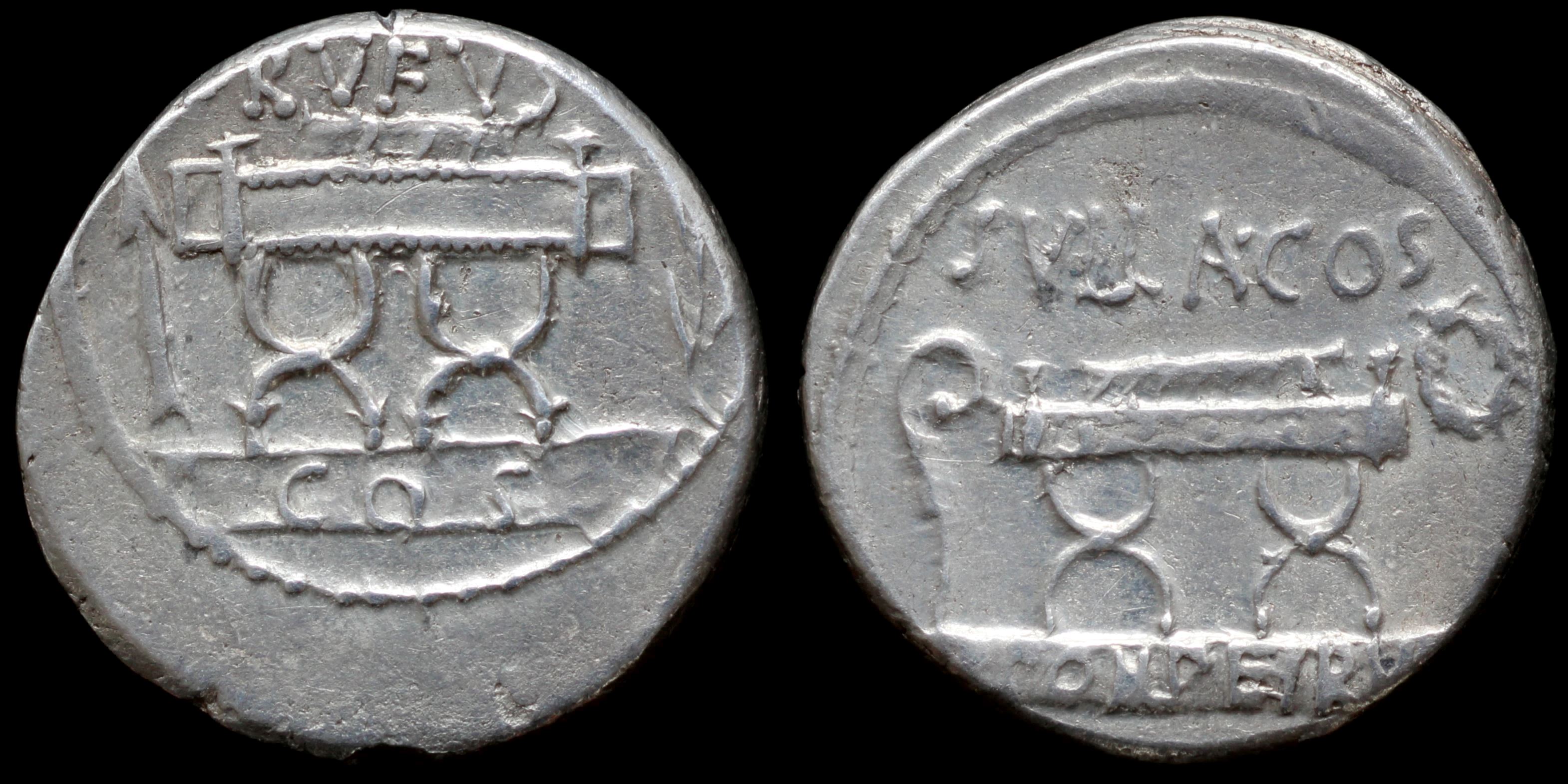
Reverse: curule chair, lituus left, wreath right; SVLLA·COS / Q·POMPEI·RVF
Die Orientation: -
Weight: 4.1 g

Reverse: Erato, the Muse of Erotic Poetry, standing slightly right, habited in the stola — over which is the palla, — holding a kithara, and playing upon it with a simple plectrum held at her side; Q•POMPONI to left; MVSA to right.
Die Orientation: -
Weight: 3.98 g
The Muses are the inspirational goddesses of literature, science, and the arts in Greek mythology. They were considered the source of the knowledge embodied in the poetry, lyric songs, and myths that were related orally for centuries in these ancient cultures. They were later adopted by the Romans as a part of their pantheon. According to Hesiod's Theogony from the seventh century BC, they were daughters of Zeus, king of the gods, and Mnemosyne, Titan goddess of memory. For Alcman and Mimnermus, they were even more primordial, springing from the early deities Ouranos and Gaia. Gaia is Mother Earth, an early mother goddess who was worshipped at Delphi from prehistoric times, long before the site was rededicated to Apollo, possibly indicating a transfer to association with him after that time.
Sometimes the Muses are referred to as water nymphs, associated with the springs of Helicon and with Pieris. It was said that the winged horse Pegasus touched his hooves to the ground on Helicon, causing four sacred springs to burst forth, from which the Muses were born. Athena later tamed the horse and presented him to the Muses.
Classical writers set Apollo as their leader. In one myth, the Muses judged a contest between Apollo and Marsyas. They also gathered the pieces of the dead body of Orpheus, son of Calliope, and buried them in Leivithra. In a later myth, Thamyris challenged them to a singing contest. They won and punished Thamyris by blinding him and robbing him of his singing ability. The earliest known records of the Nine Muses are from Boeotia, the homeland of Hesiod.
It was not until Hellenistic times that the following systematic set of functions was assigned to them, and even then there was some variation in both their names and their attributes: Calliope (epic poetry), Clio (history), Euterpe (flutes and lyric poetry), Thalia (comedy and pastoral poetry), Melpomene (tragedy), Terpsichore (dance), Erato (erotic/love poetry), Polyhymnia (sacred poetry), Urania (astronomy).
Erato was one of the nine Muses. In the Classical era, when the Muses were assigned specific literary and artistic spheres, Erato was named Muse of erotic poetry and mime, and represented with a kithara. Her name means "lovely" or "desired" from the Greek word eratos."
Provenance: Purchased from Moruzzi Numismatica (25 April 2018).

Reverse: Urania, the Muse of Astronomy, wearing long flowing tunic and peplum, standing left, touching with wand held in right hand a globe set on base; Q • POMPONI downward to right, MVSA downward to left.
Die Orientation: -
Weight: 18.5 g
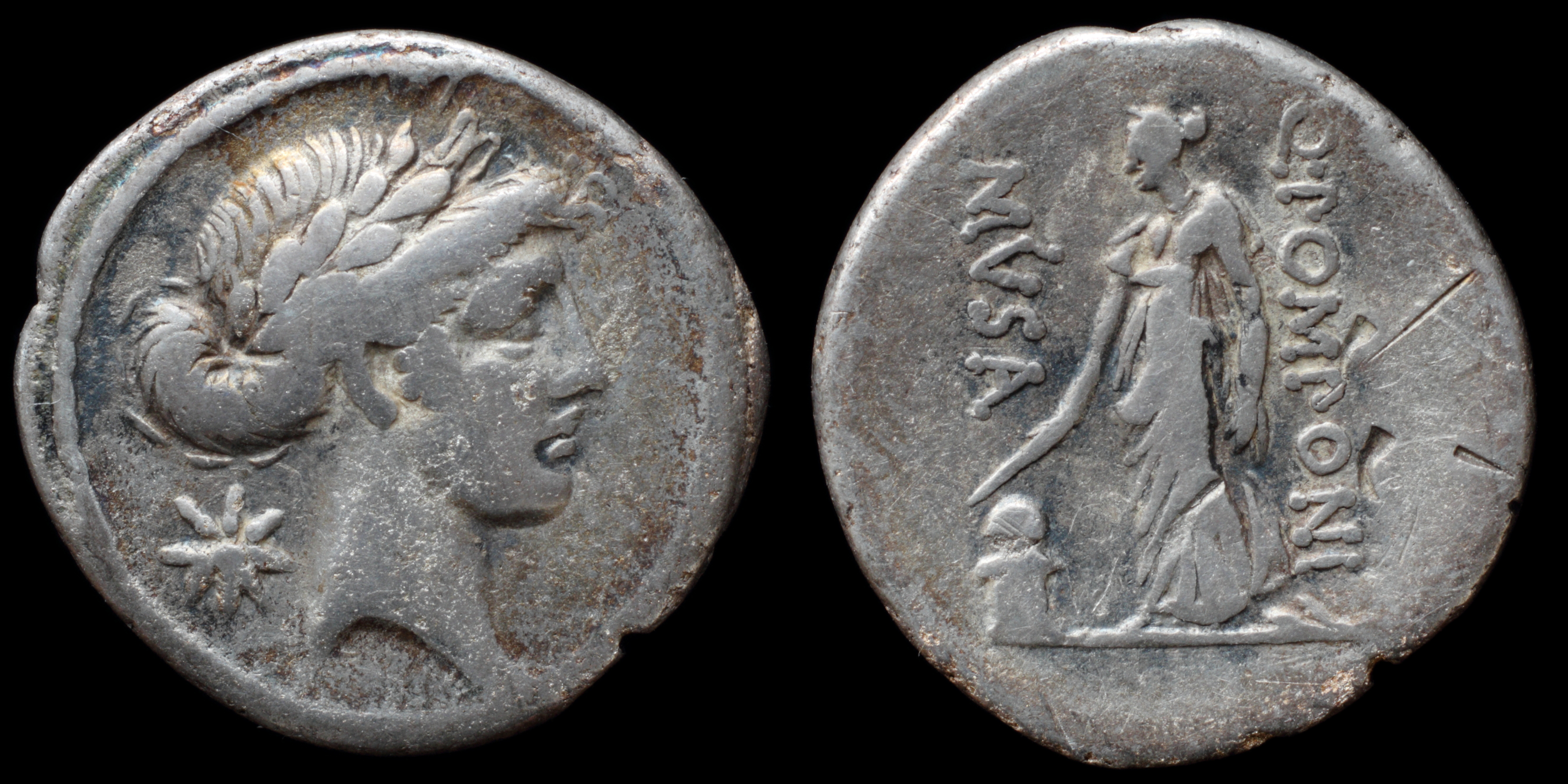
Reverse: Urania, Muse of Astronomy standing left, pointing with rod in right hand at globe on tripod-stand; Q·POMPONI // MVSA
Die Orientation: -
Weight: 3.8 g
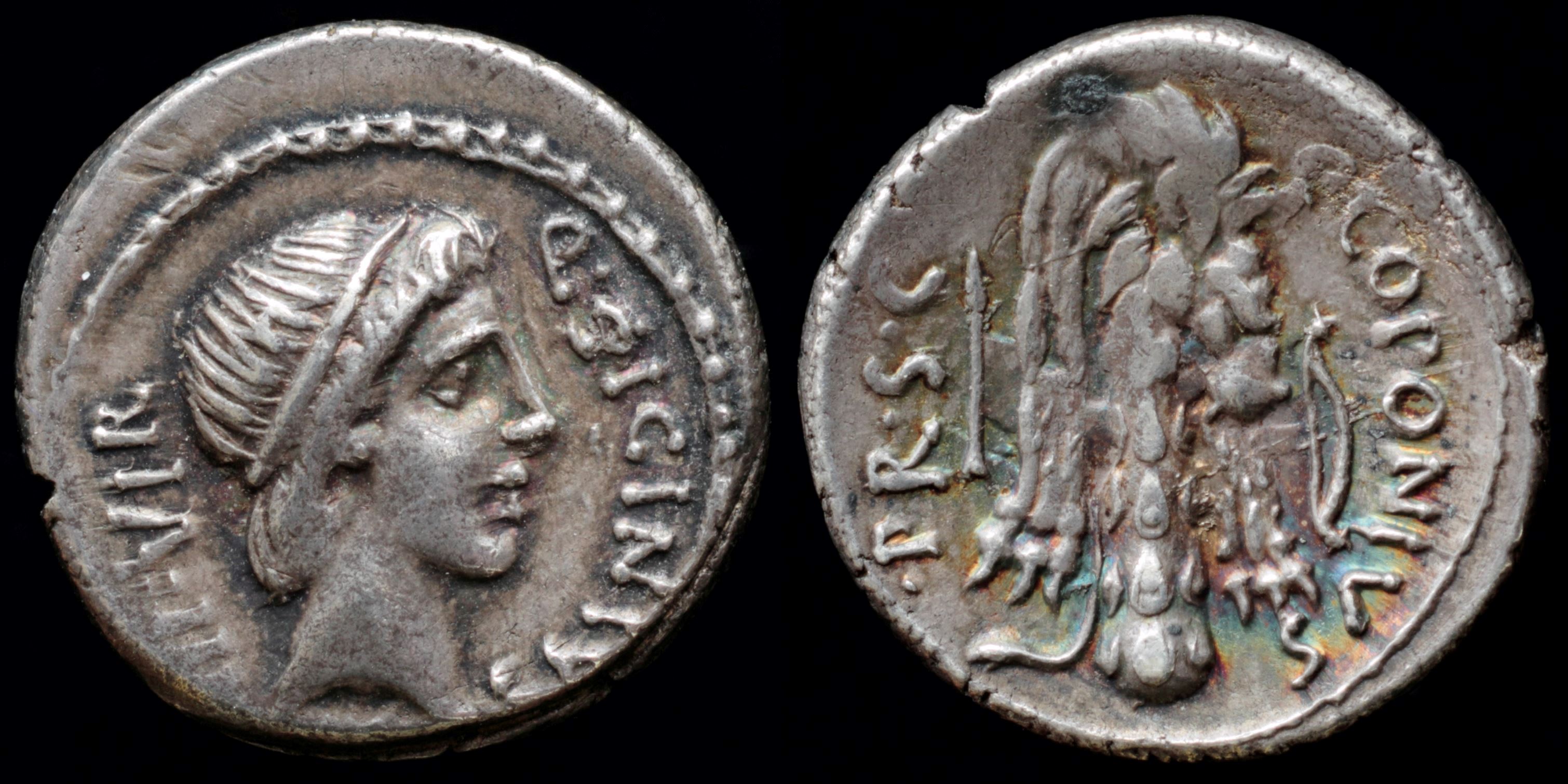
Reverse: Nemean lion's skin draped over club; arrow left; bow right, C·COPONIVS ·PR·S·C
Die Orientation: -
Weight: 3.9 g
Pompey's moving mint (Greece). Issue was probably used to pay Pompey soldiers. It mentions S·C in legend in order to pretend to be the official issue authorized by senate. Q. Sicinus struck these coins in exile in the east when he retreated with Pompey from Italy before Ceasar's invasion. Praetor C. Coponius was commander of Pompey's fleet in the easter Mediterranien. Star below Apollo may represent a comet which occured in 49 BC.
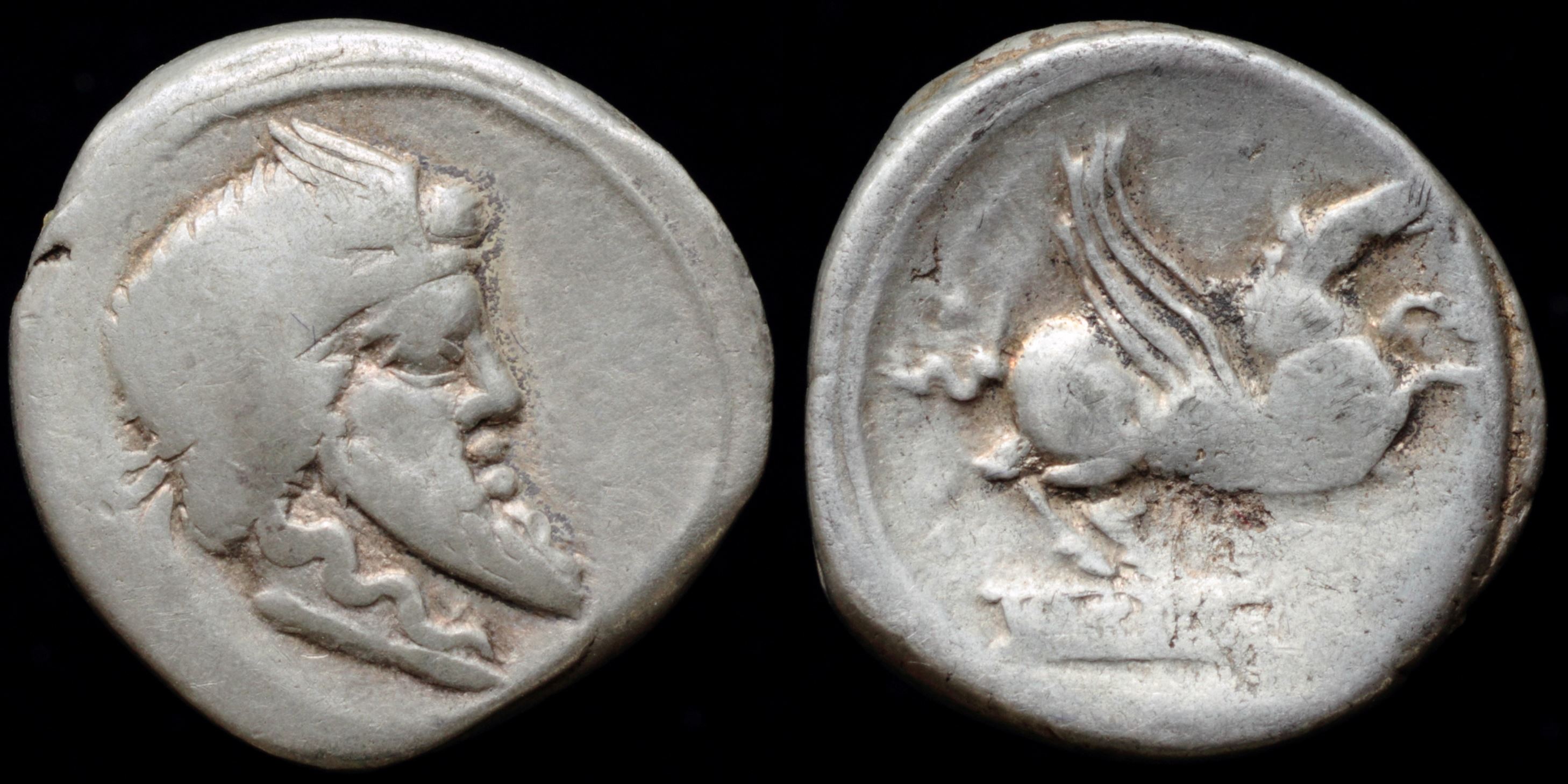
Reverse: Pegasus jumping right Q·TITI
Die Orientation: -
Weight: 3.82 g

Reverse: The Dioscuri, each holding spear, on horseback right; two stars above; club below horses; ROMA in exergue.
Die Orientation: 0 H
Weight: 4.46 g
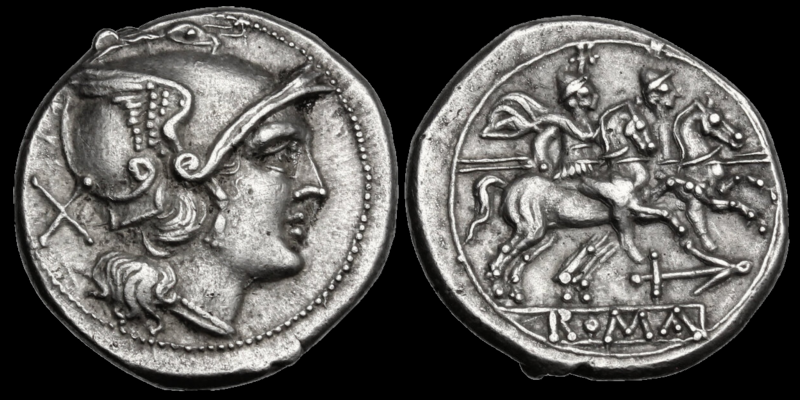
Reverse: The Dioscuri, each holding spear, on horseback right; two stars above; anchor below horses; ROMA in exergue.
Die Orientation: 0 H
Weight: 4.44 g
.png)
Reverse: The Dioscuri, each holding spear, on horseback right; two stars above; decempeda below horses; ROMA in exergue.
Die Orientation: -
Weight: 3.78 g
.png)
Reverse: The Dioscuri, each holding spear, on horseback right; two stars above; female head below horses; ROMA in exergue.
Die Orientation: -
Weight: 3.65 g
.jpg)
Reverse: The Dioscuri, each holding spear, on horseback right; two stars above; corn ear below horses; ROMA in exergue.
Die Orientation: -
Weight: 4.1 g
.png)
Reverse: The Dioscuri, each holding spear, on horseback right; two stars above; ROMA in exergue.
Die Orientation: -
Weight: 4.65 g
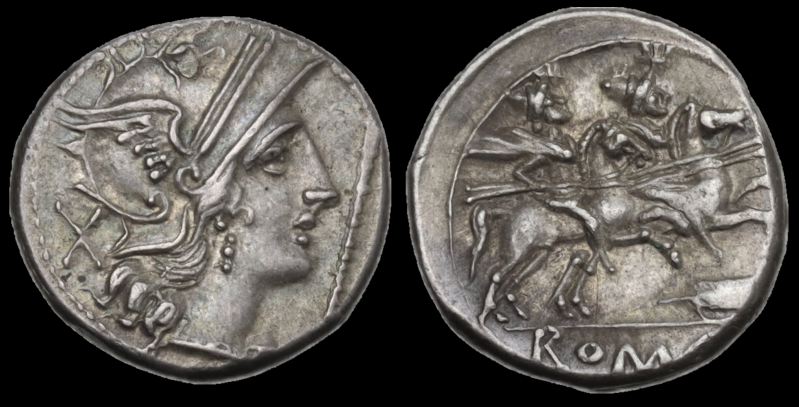
Reverse: The Dioscuri, each holding spear, on horseback right; two stars above; feather below horses; ROMA in exergue.
Die Orientation: 0 H
Weight: 3.29 g
Provenance: Artemide Aste - E-auction 22 (3 April 2022), lot 454.
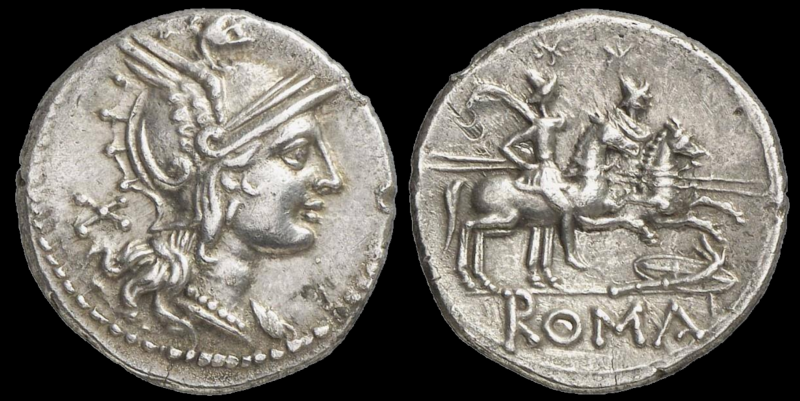
Reverse: The Dioscuri, each holding spear, on horseback right; two stars above; shield and carnyx below horses; ROMA in exergue.
Die Orientation: 0 H
Weight: 4.17 g
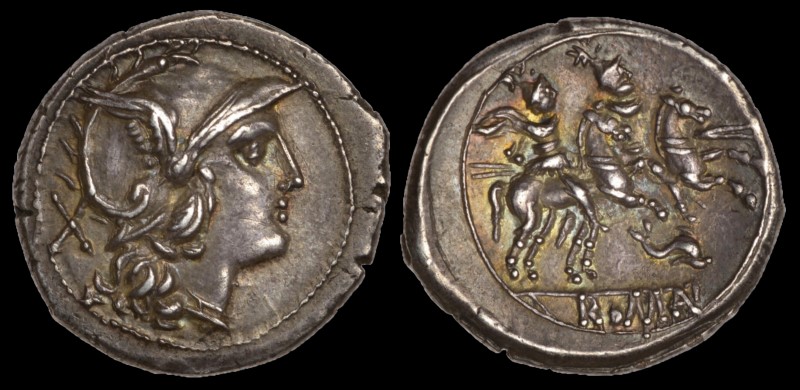
Reverse: The Dioscuri, each holding spear, on horseback right; two stars above; dolphin below horses; ROMA in exergue.
Die Orientation: 0 H
Weight: 4.09 g
Provenance: Spink Numismatic Circular - September 1983 (5441).
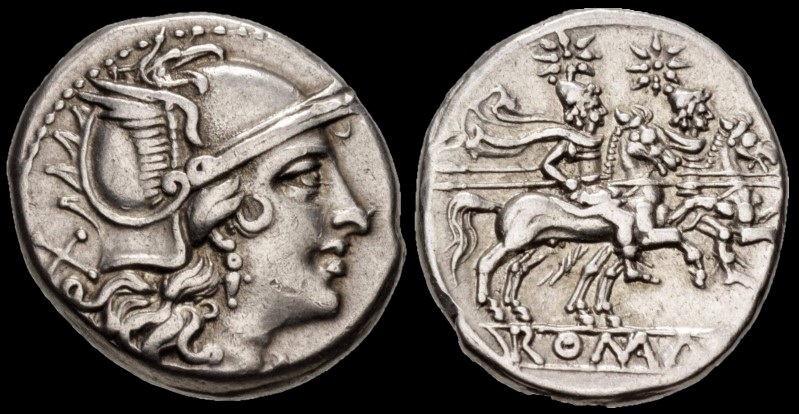
Reverse: The Dioscuri, each holding spear, on horseback right; two stars above; ROMA in exergue.
Die Orientation: 1 H
Weight: 4.47 g
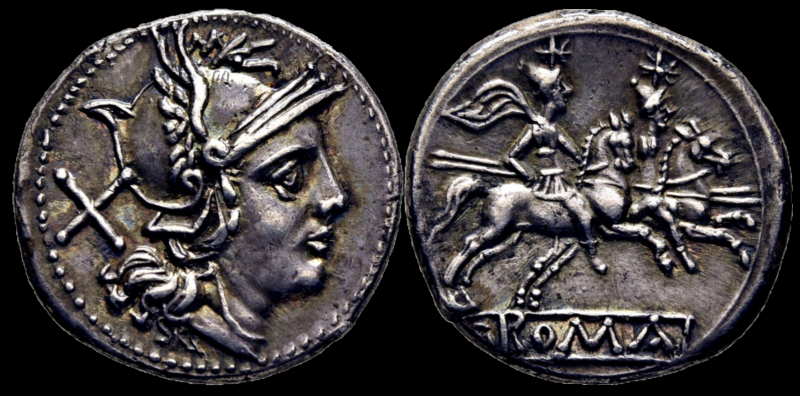
Reverse: The Dioscuri, each holding spear, on horseback right; two stars above; ROMA in exergue.
Die Orientation: -
Weight: 4.37 g
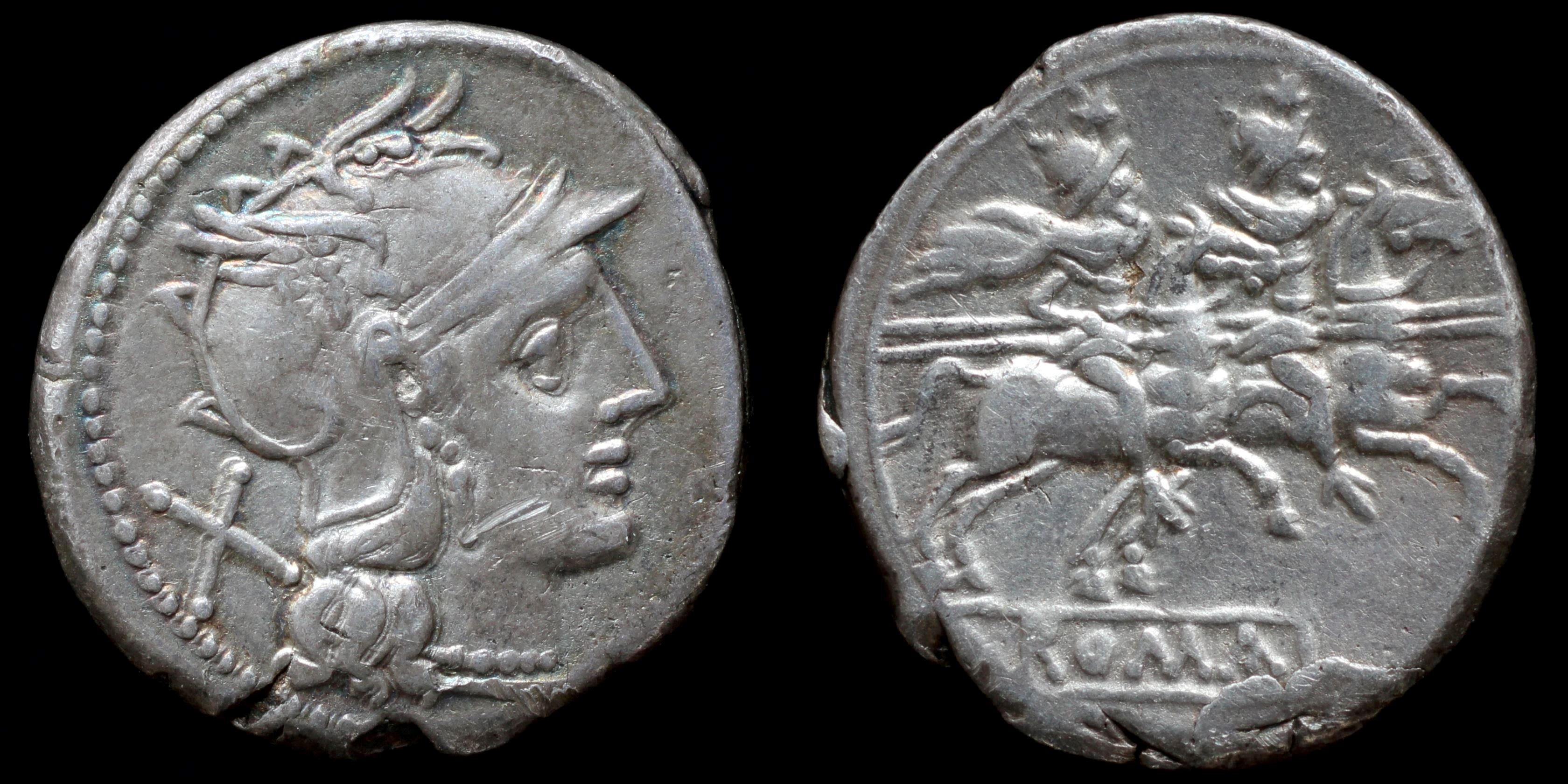
Reverse: Dioscuri riding on horses right holding spears and reins; stars over their pilei, ROMA
Die Orientation: -
Weight: 3.5 g
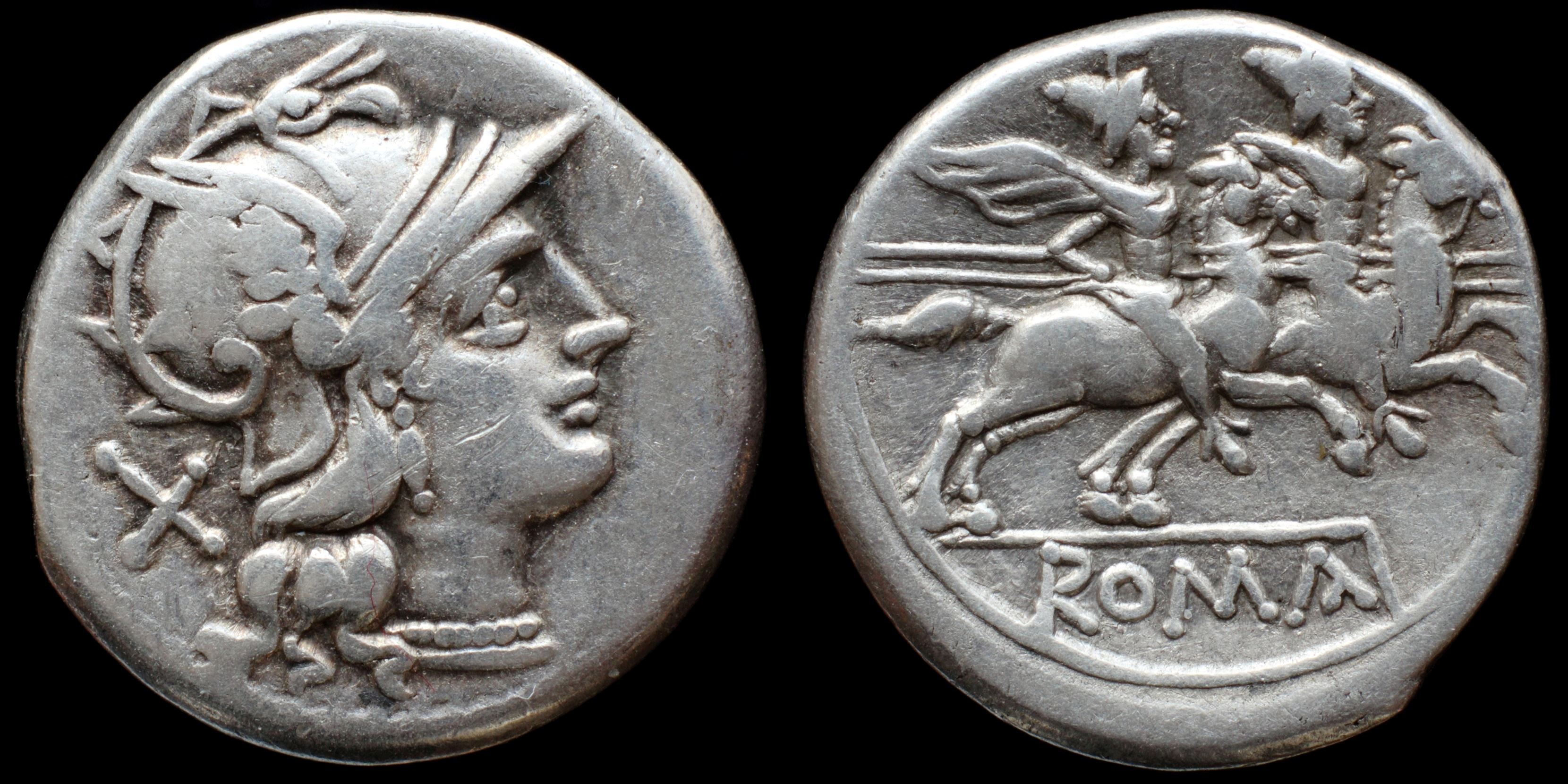
Reverse: Dioscuri on horses right, stars over pilei, holding spear and reins; ROMA
Die Orientation: -
Weight: 3.7 g
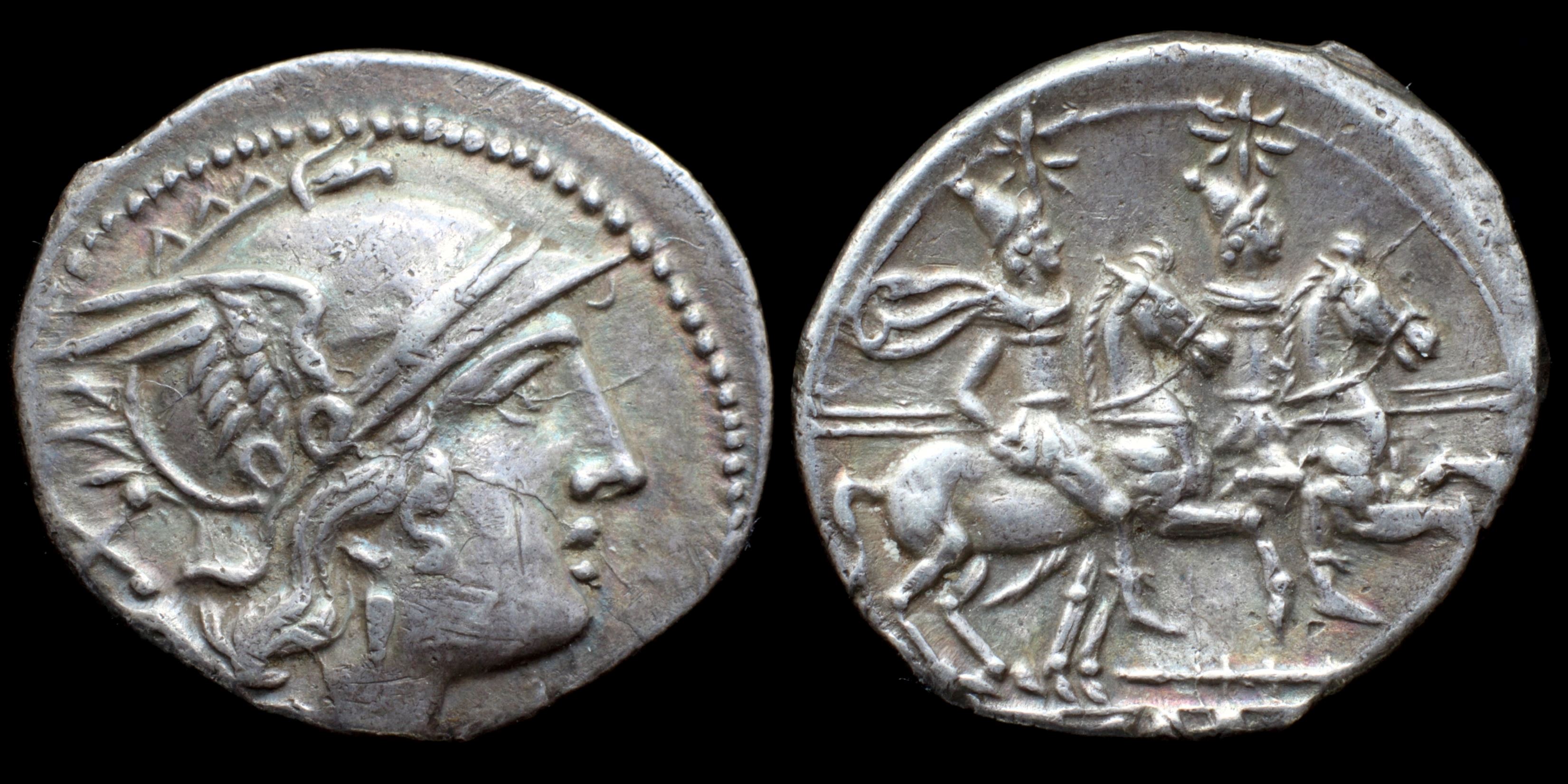
Reverse: Dioscuri riding right on horses, holding spear and reins, stars over pilei, staff below; ROMA
Die Orientation: -
Weight: 4.6 g
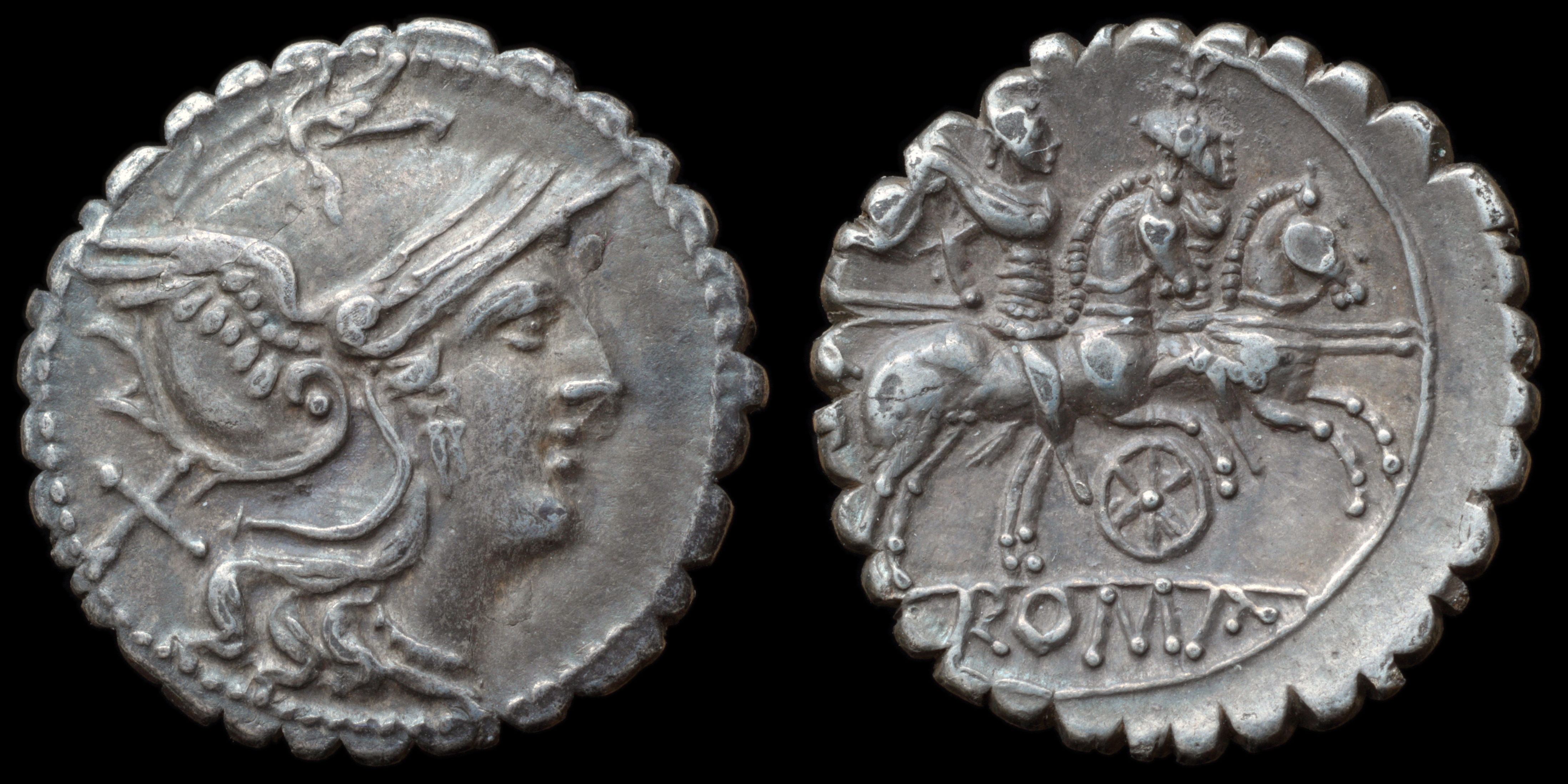
Reverse: Dioscuri riding right on horses holding stears and reins; stars over their pilei; wheel below; ROMA
Die Orientation: -
Weight: 3.6 g
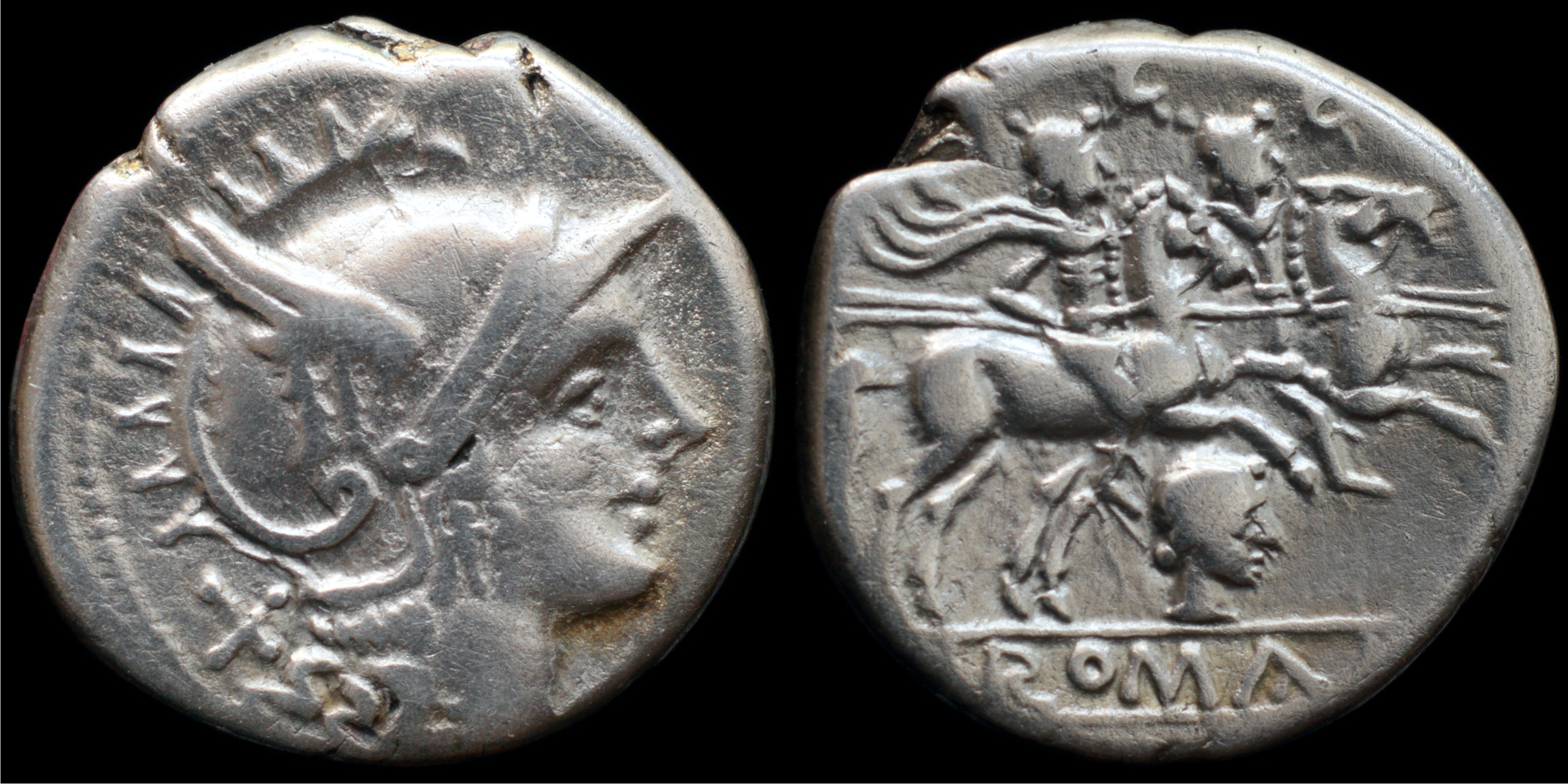
Reverse: Dioscuri riding right on horses holding stears and reins; stars over their pilei; ROMA
Die Orientation: -
Weight: 3.8 g
(29).jpg)
Reverse: CONCORDIA AVG, Concordia seated left, holding patera and sceptre
Die Orientation: 6 H
Weight: 3.19 g
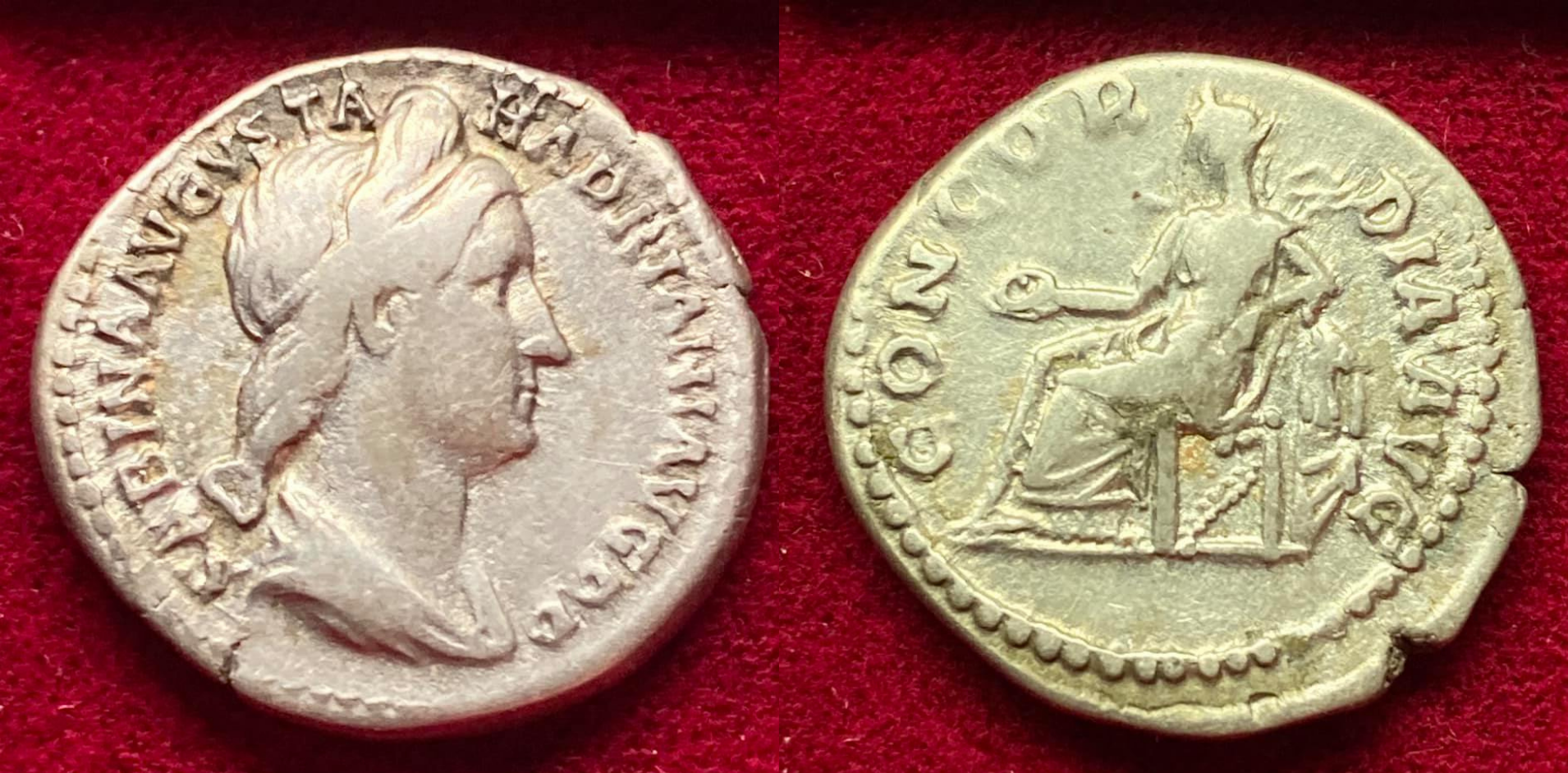
Reverse: Concordia seated left on throne, holding patera and resting arm on statuette of Spes set on low base; cornucopia below throne
Die Orientation: 0 H
Weight: 3.36 g
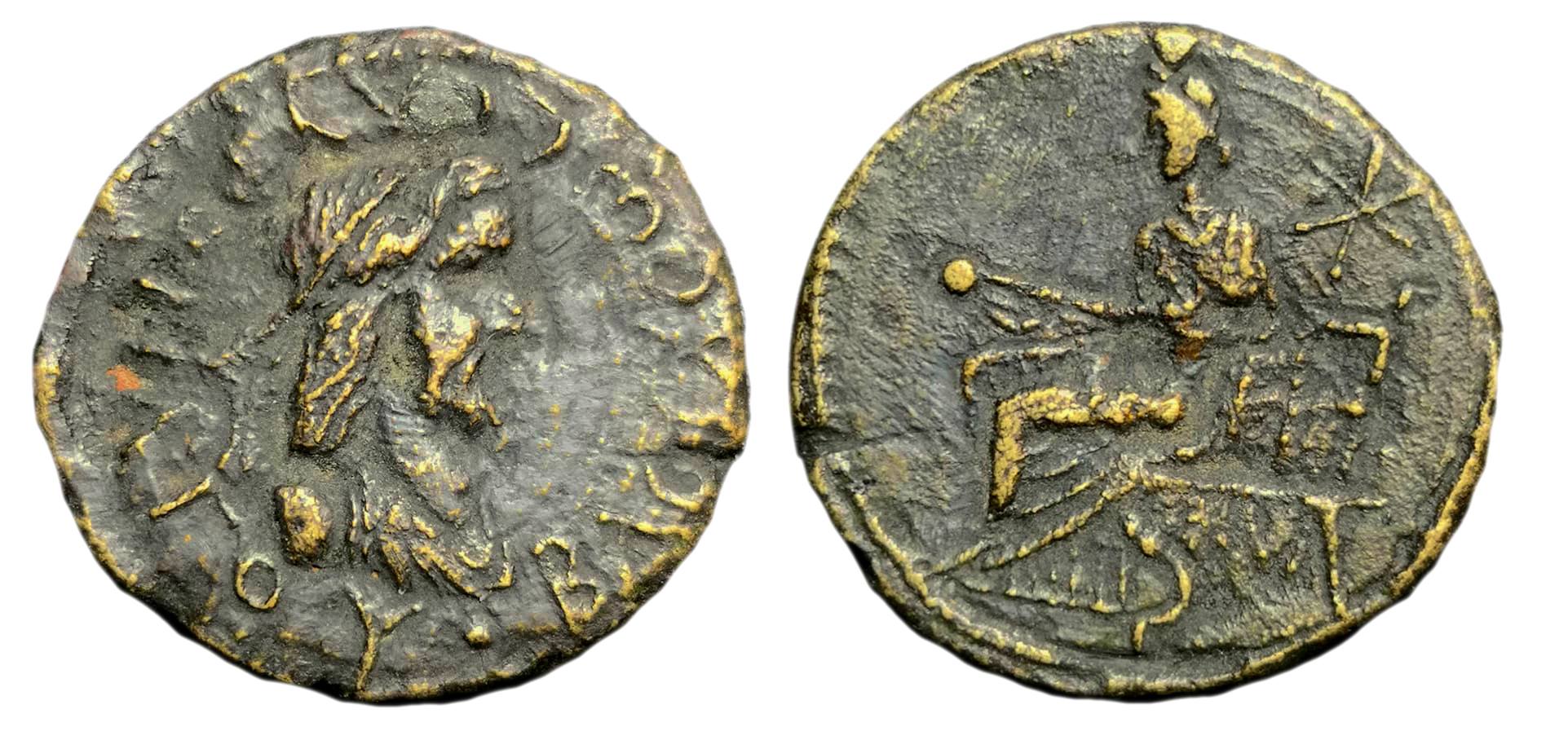
Reverse: Aphrodite seated left on throne, holding apple. Star to the upper right
Die Orientation: -
Weight: 10.46 g
.jpg)
Reverse: horseman with spear riding right; SEKoBiRIKeS
Die Orientation: -
Weight: 2.4 g
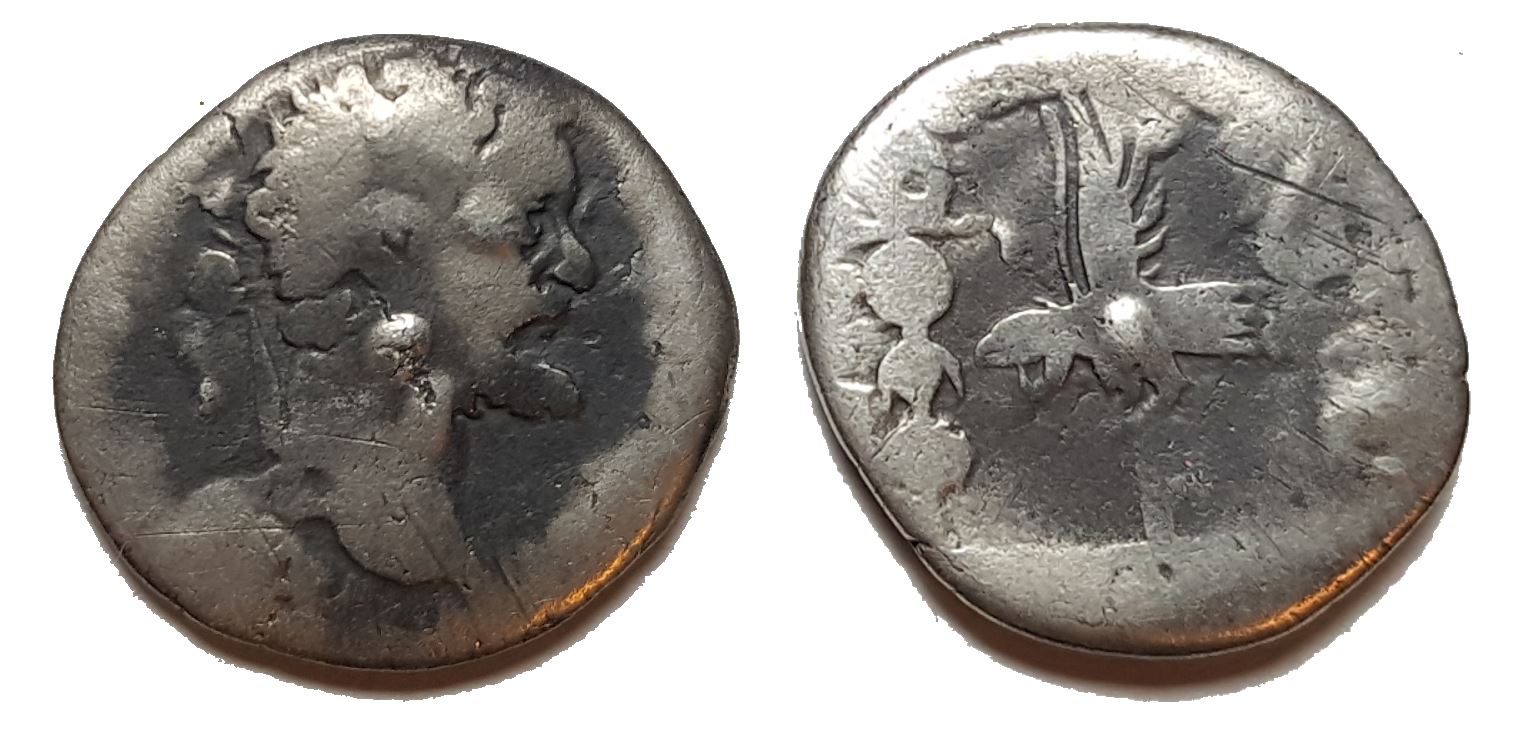
Reverse:
Die Orientation: -
Weight: 1.92 g
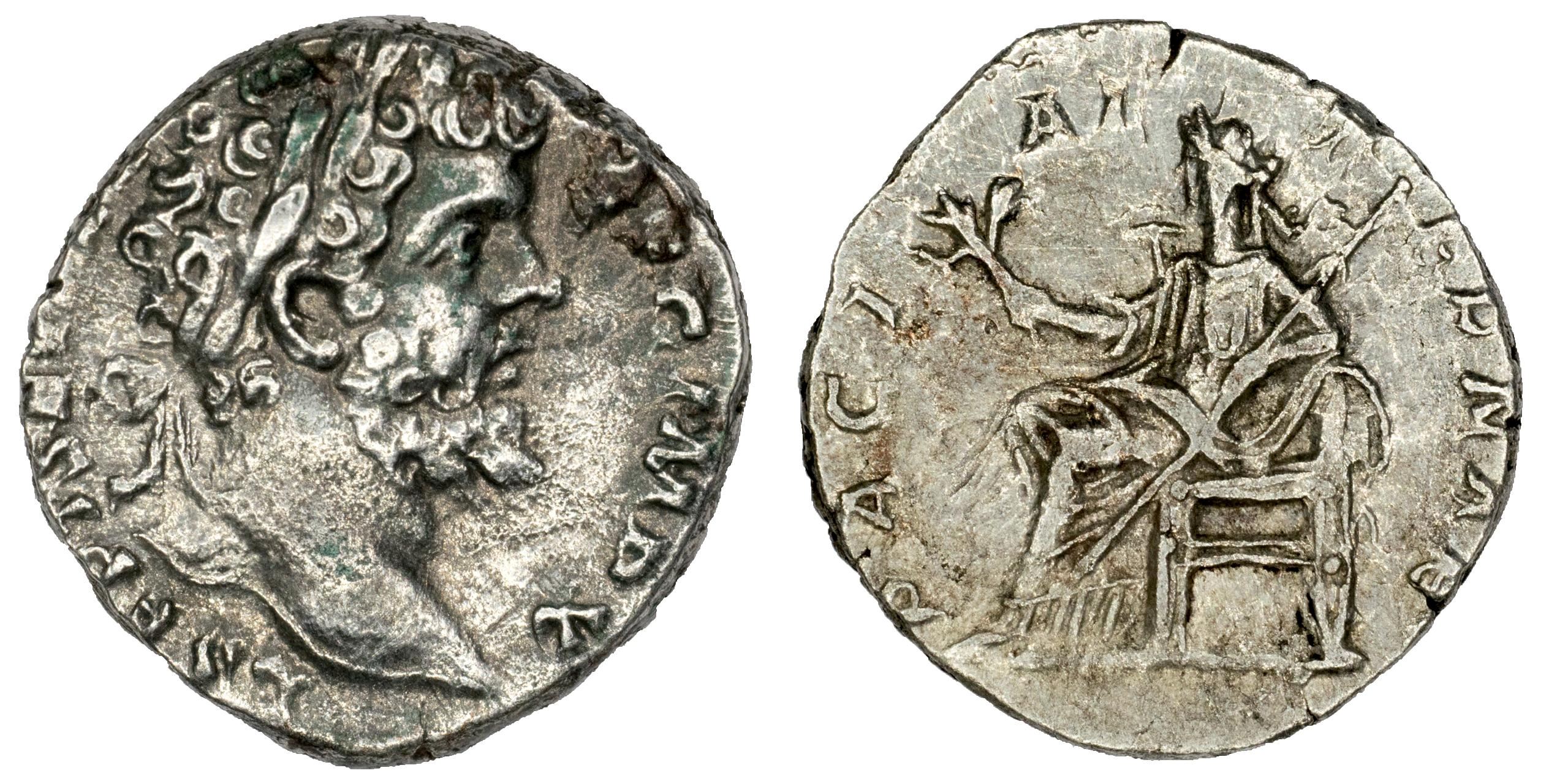
Reverse: PACI AETERNAE, Pax seated left holding olive branch in right and long scepter in left
Die Orientation: 0 H
Weight: 0 g
This issue was usually struck on small flans.
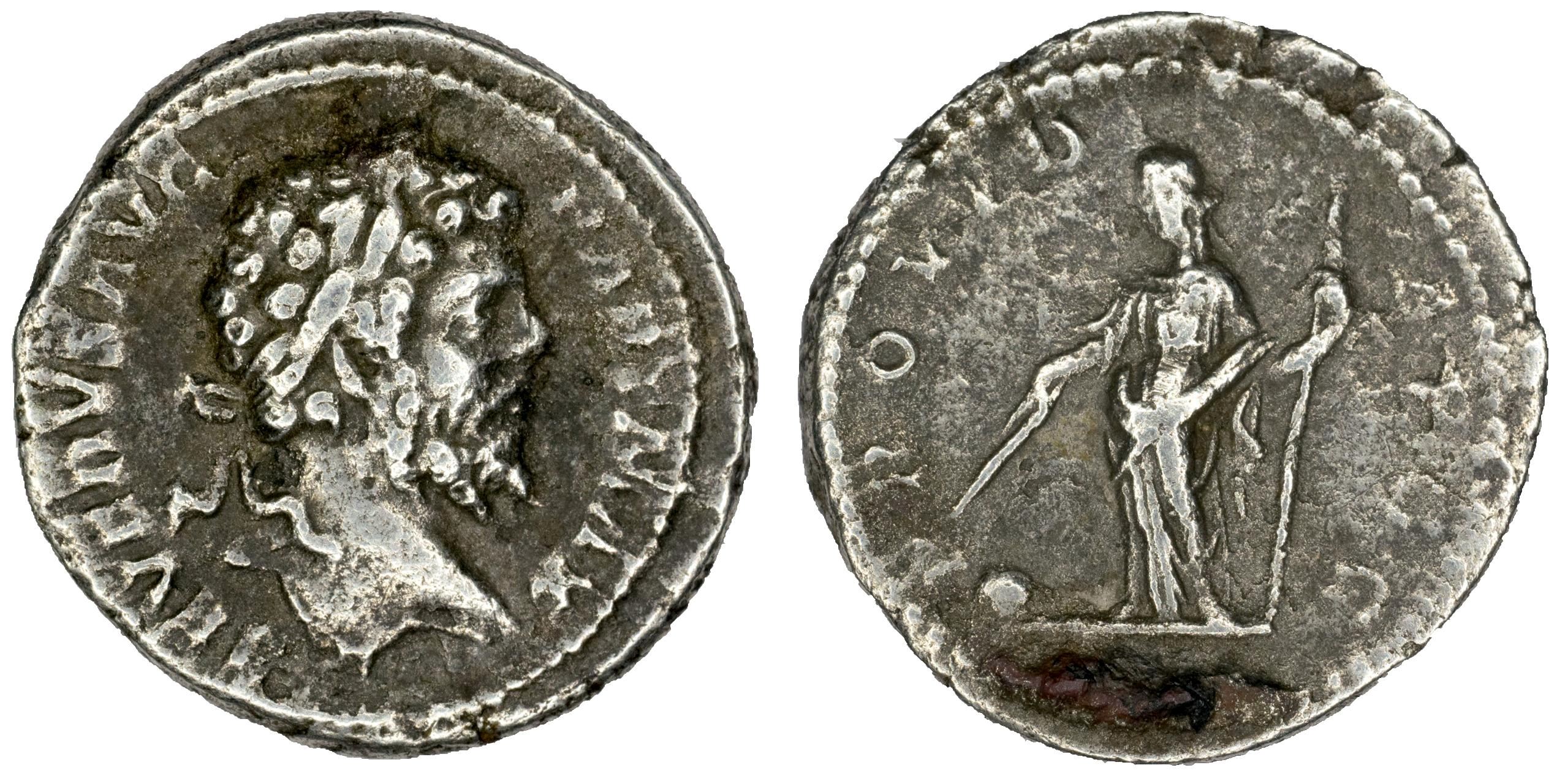
Reverse: PROVID AVGG, Providentia standing facing, head left, holding wand over globe and scepter
Die Orientation: 0 H
Weight: 3 g
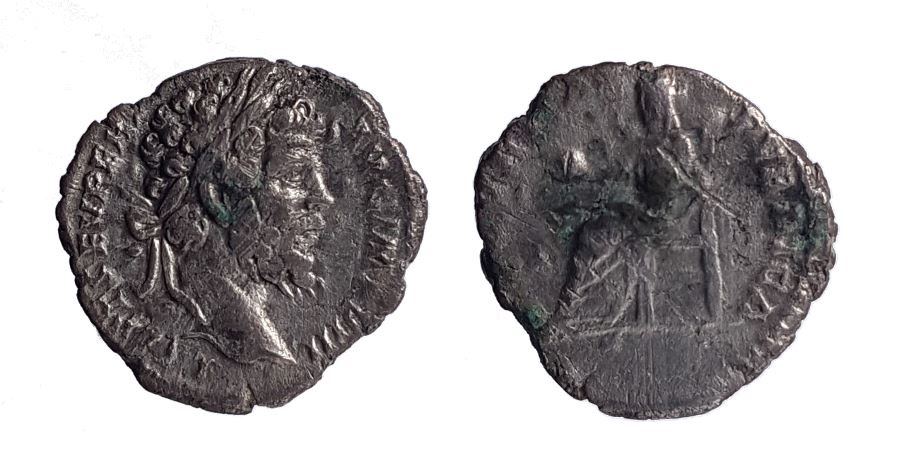
Reverse: SECVRITAS PVBLICA, Securitas seated left, holding globe in right hand
Die Orientation: 12 H
Weight: -
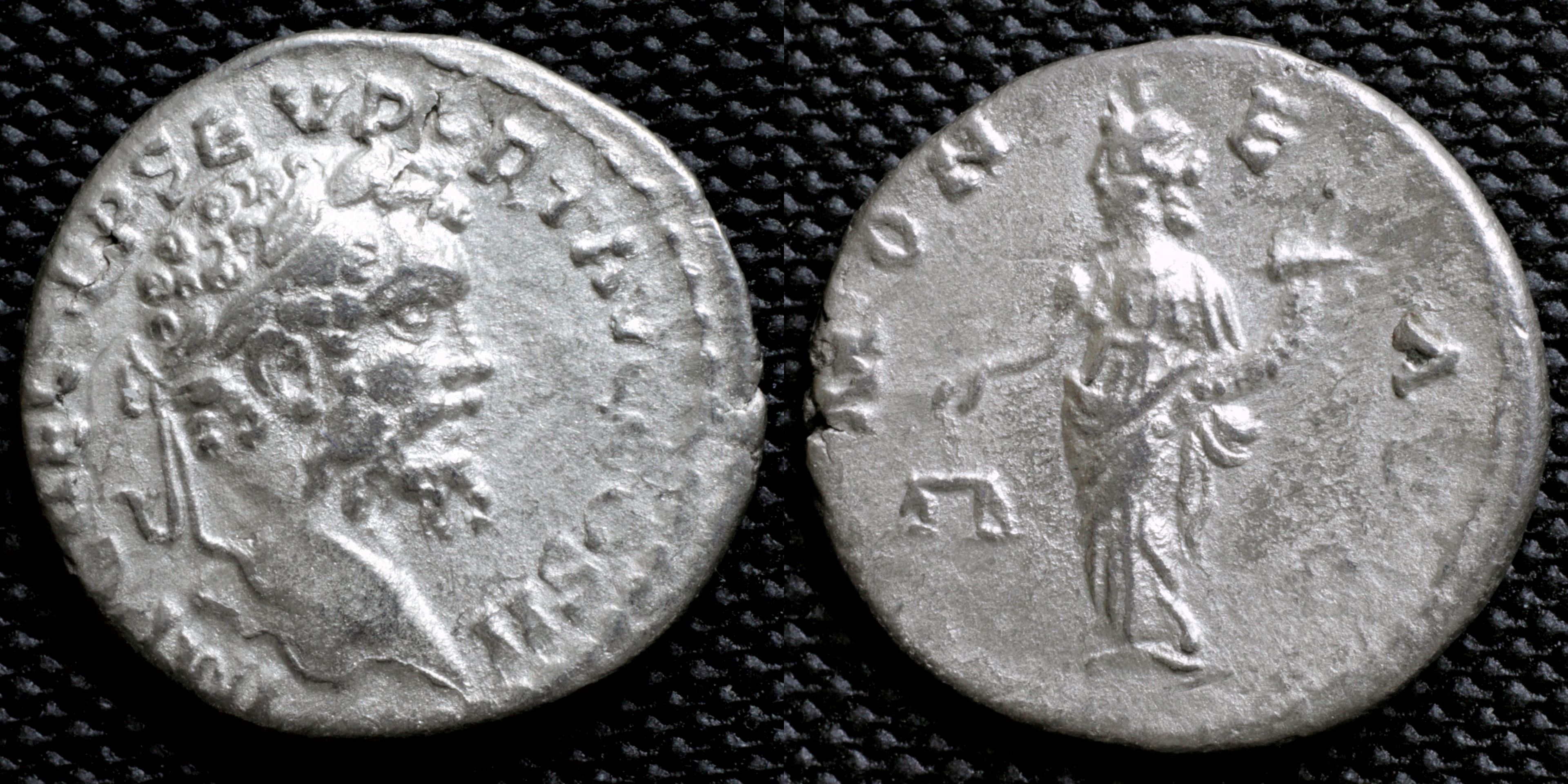
Reverse: Moneta holding scales and cornucopiae; MON_ET AVG
Die Orientation: -
Weight: 2.39 g
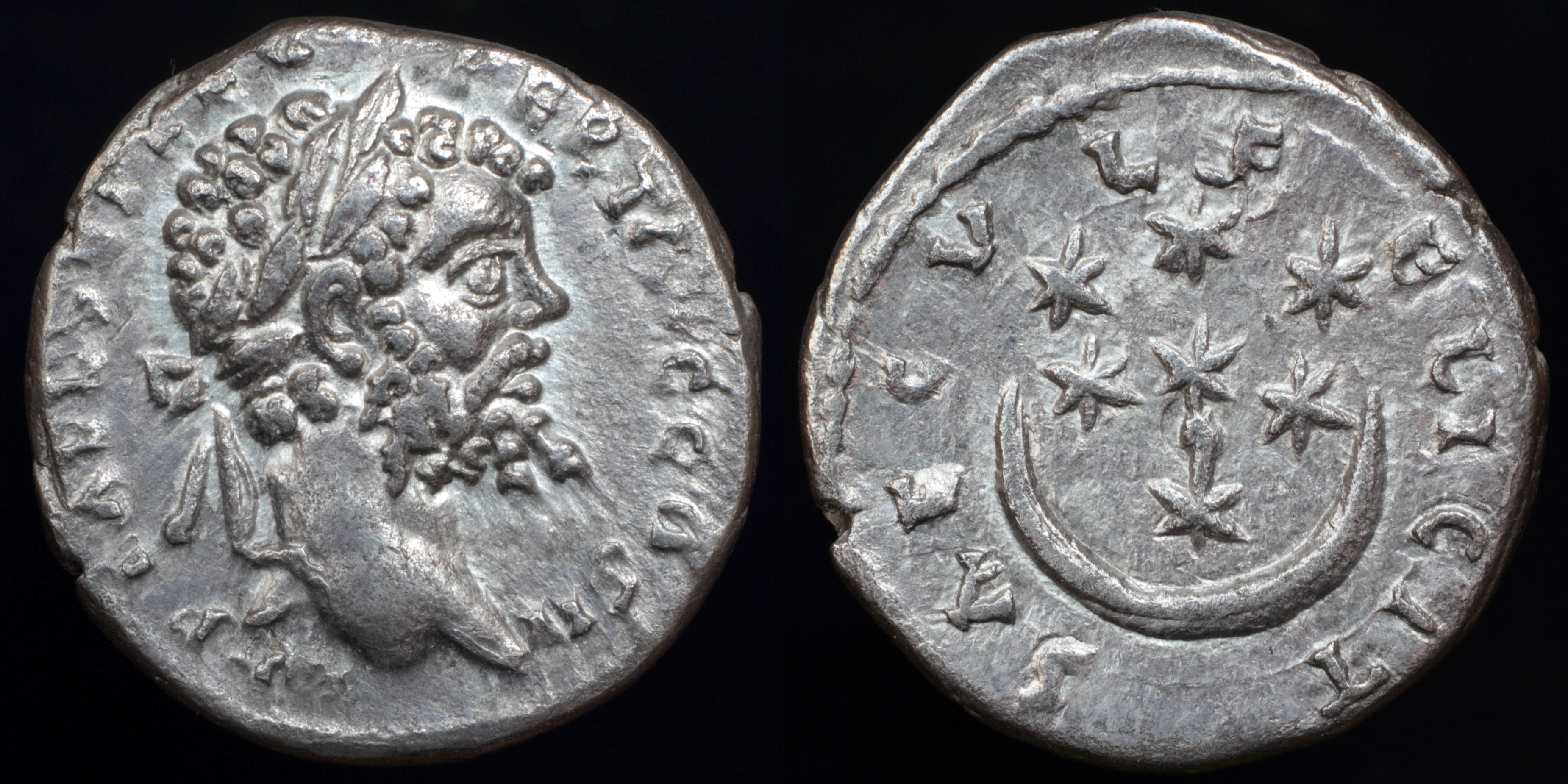
Reverse: seven stars above and within a crescent; SAECVL FELICIT
Die Orientation: -
Weight: 3.1 g
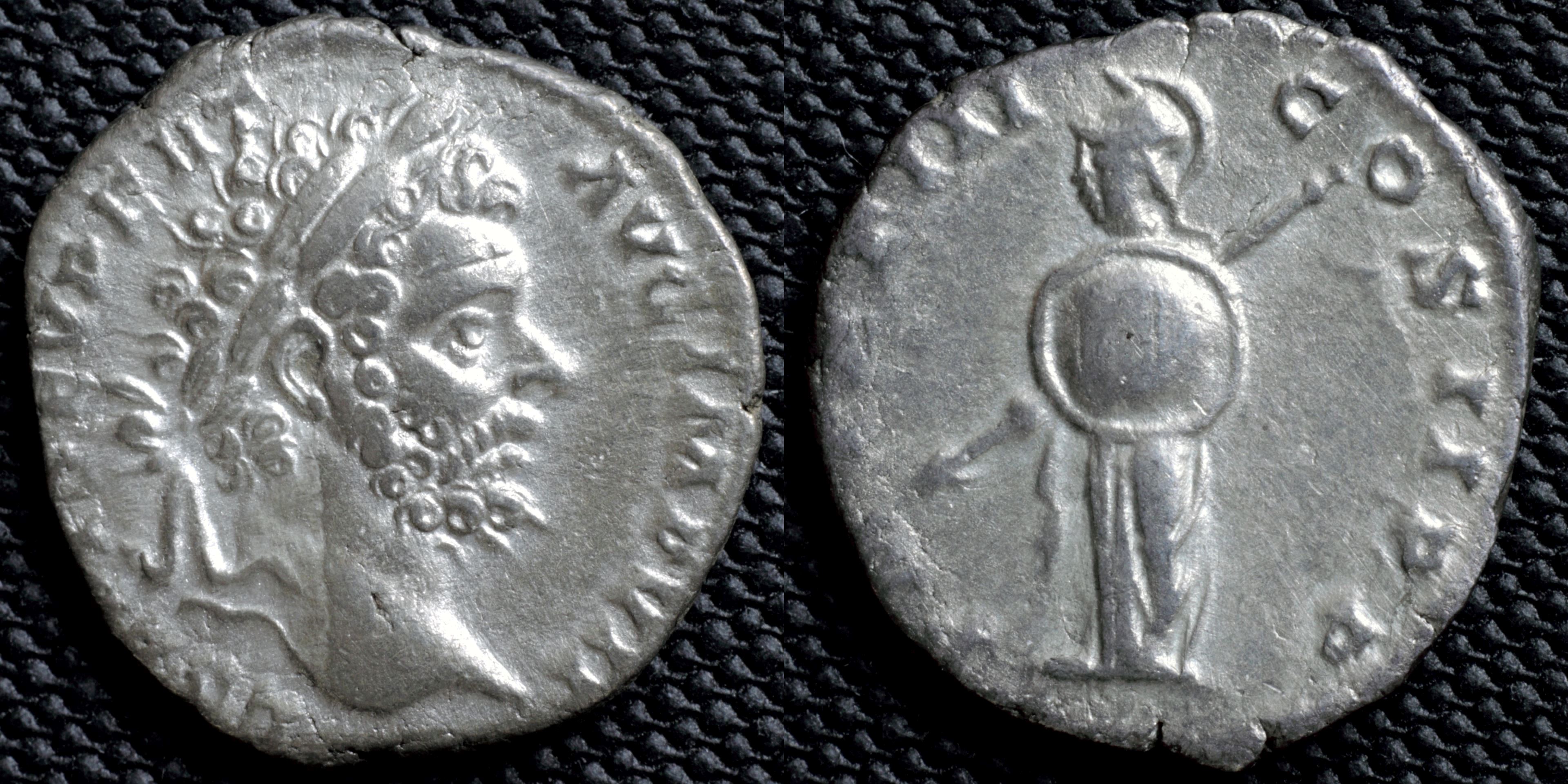
Reverse: Minerva standing left holding spear and shield; P M TR P III__COS II P P
Die Orientation: -
Weight: 2.58 g
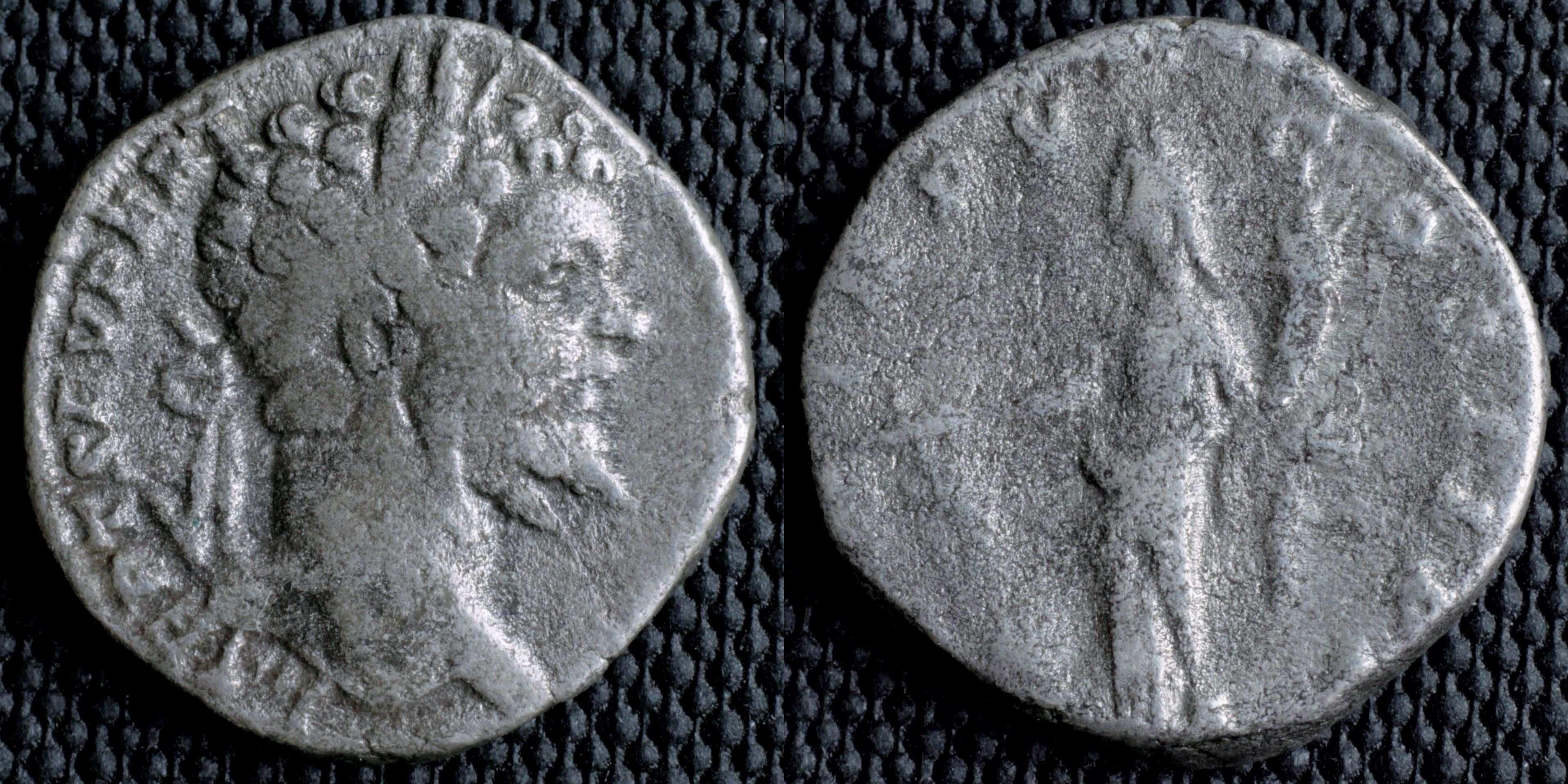
Reverse: Fortuna standing left, holding rudder on globe and cornucopiae; P M TR P V__COS II P P
Die Orientation: -
Weight: 2.74 g
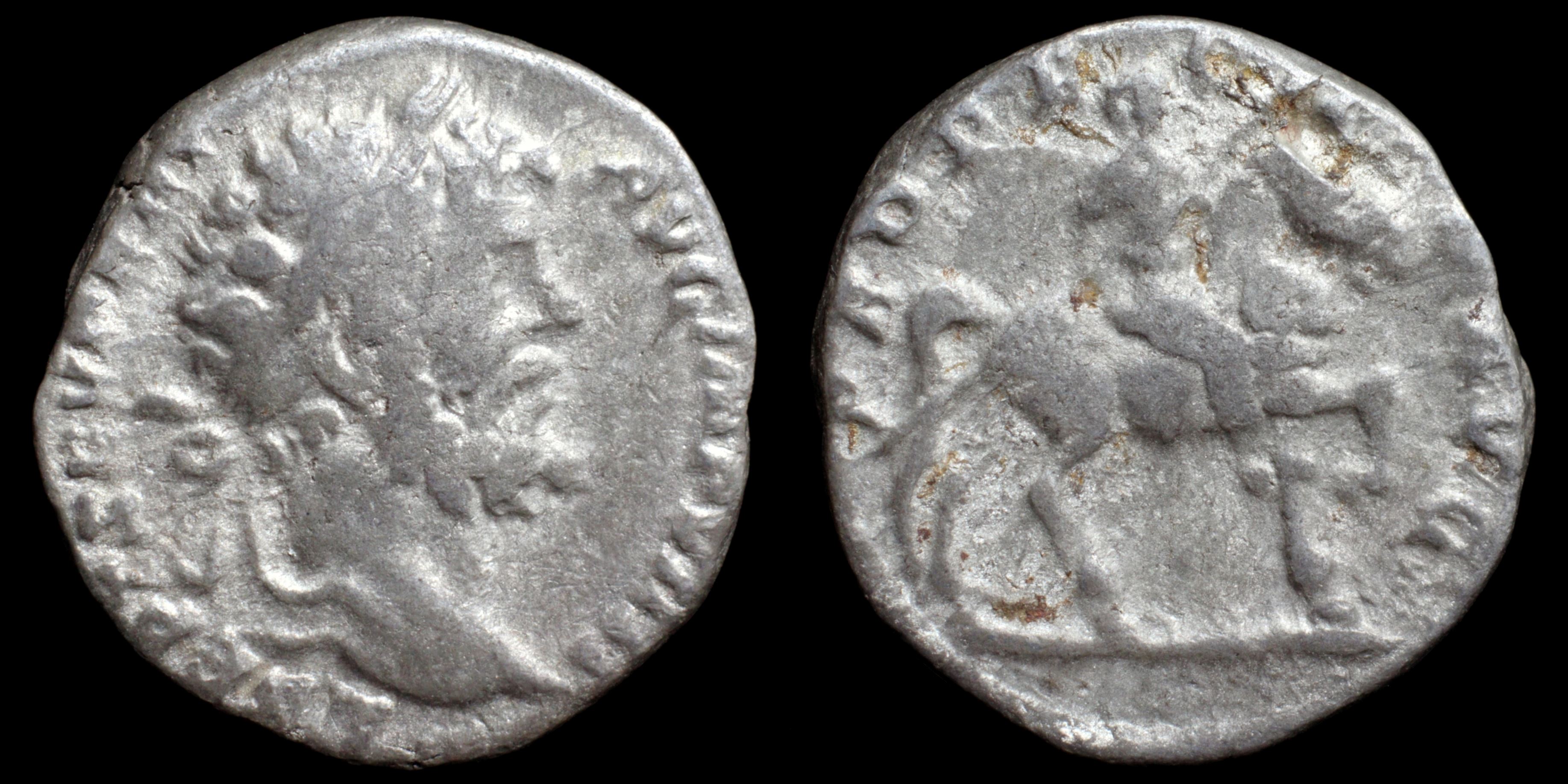
Reverse: Septimius Severus holding spear, riding a horse right; PROFE_CTIO AVG
Die Orientation: -
Weight: 2.85 g
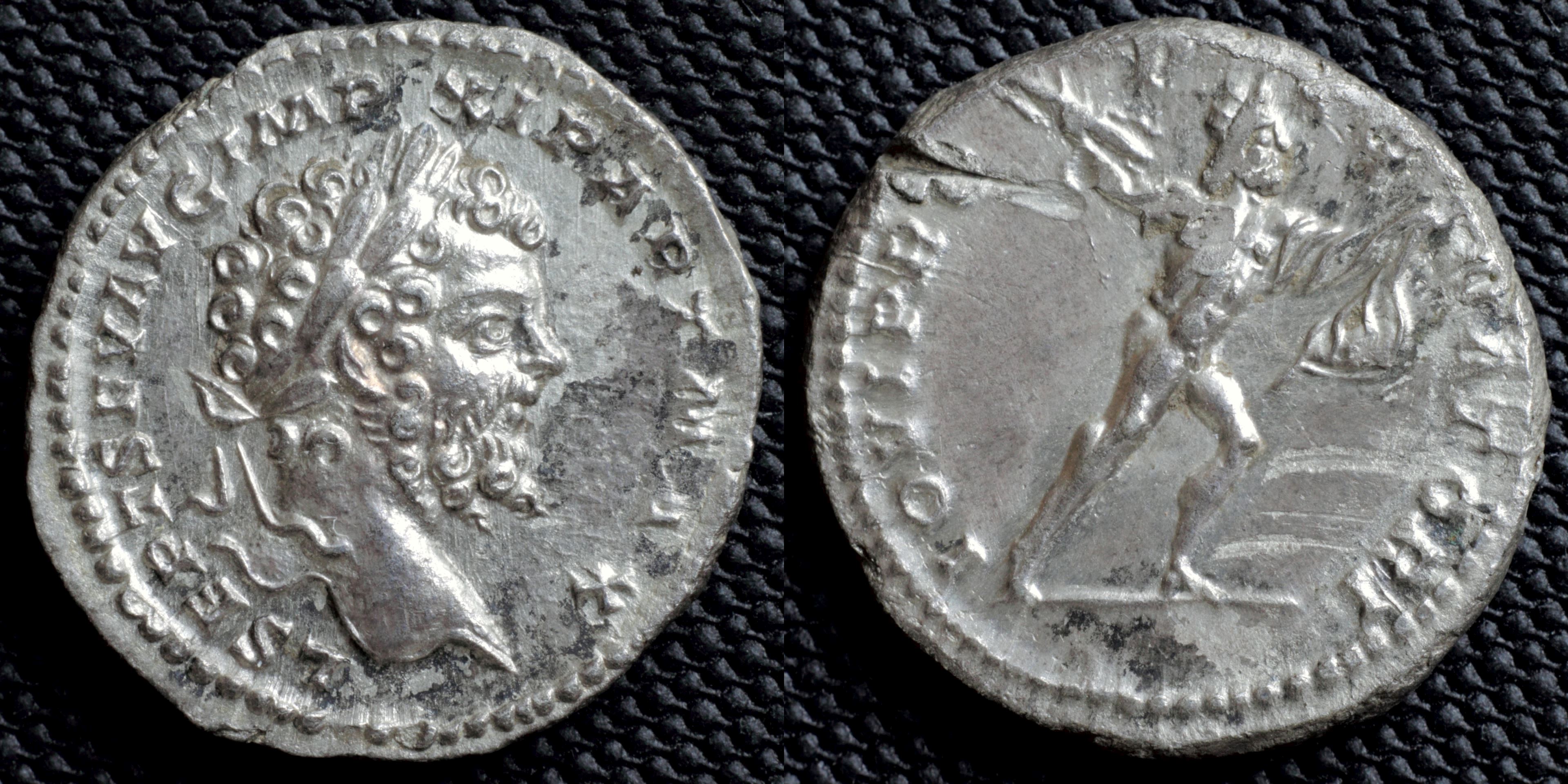
Reverse: Jupiter advancing right, aiming thunderbolt and raising hand; IOVI PRO_P_VG_NATORI
Die Orientation: -
Weight: 3.24 g
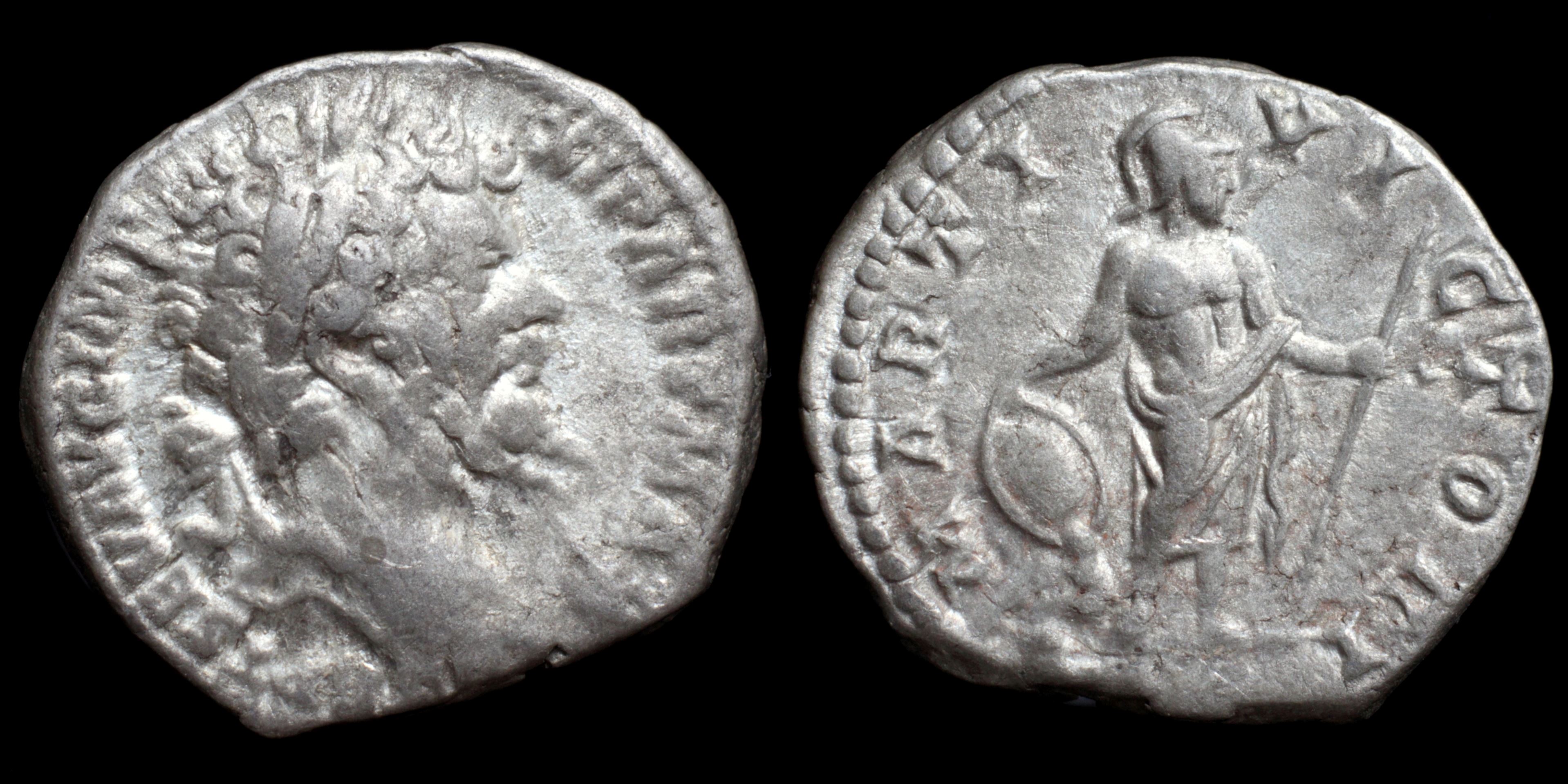
Reverse: Mars standing right resting on shield set on top of a captive and holding spear in left hand; MARTI__VI_CTORI
Die Orientation: -
Weight: 3.58 g
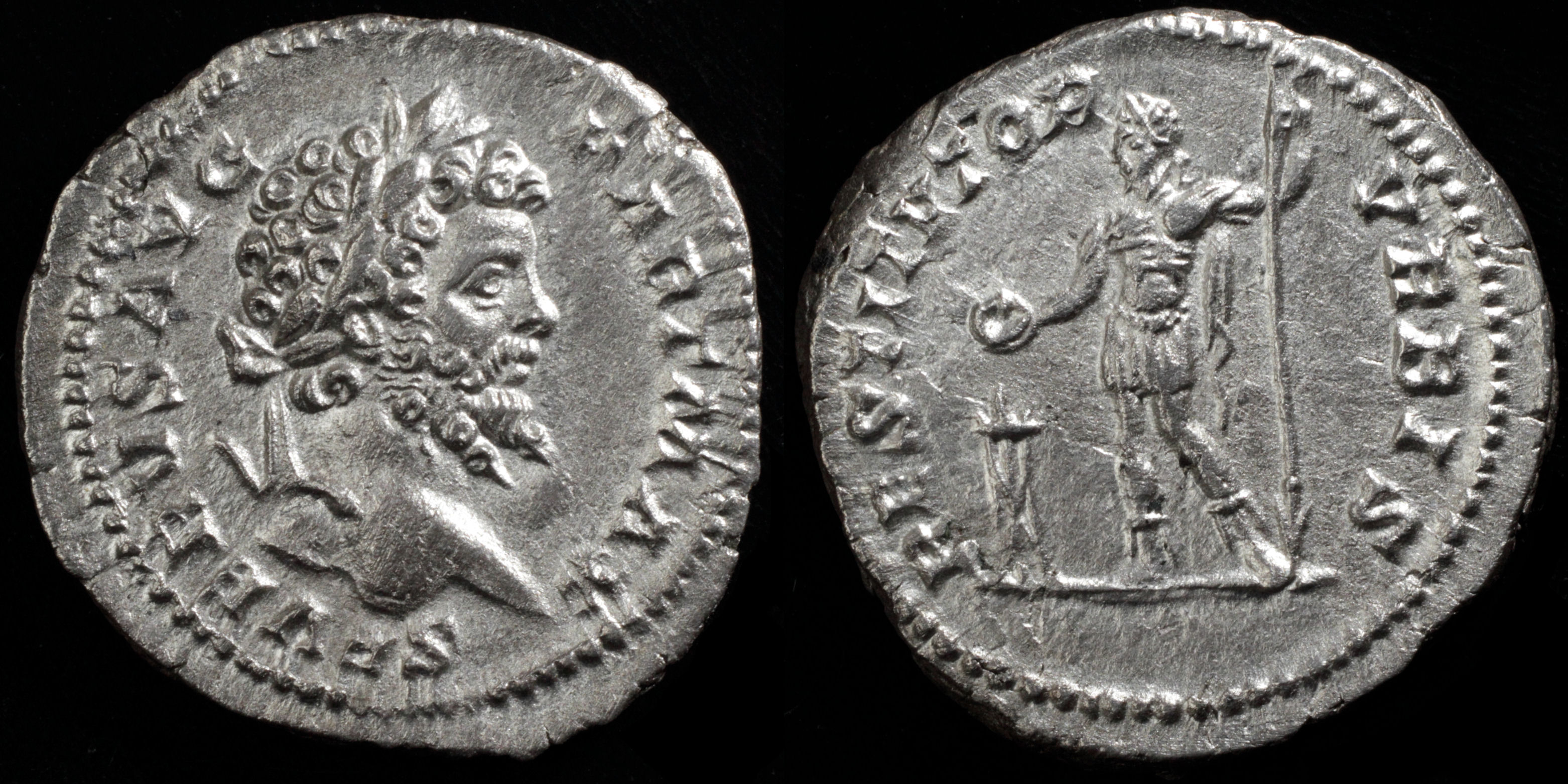
Reverse: Septimius Severus military attire standing left, holding spear, sacrificing from patera over lit altar; RESTITVTOR__VRBIS
Die Orientation: -
Weight: 3 g
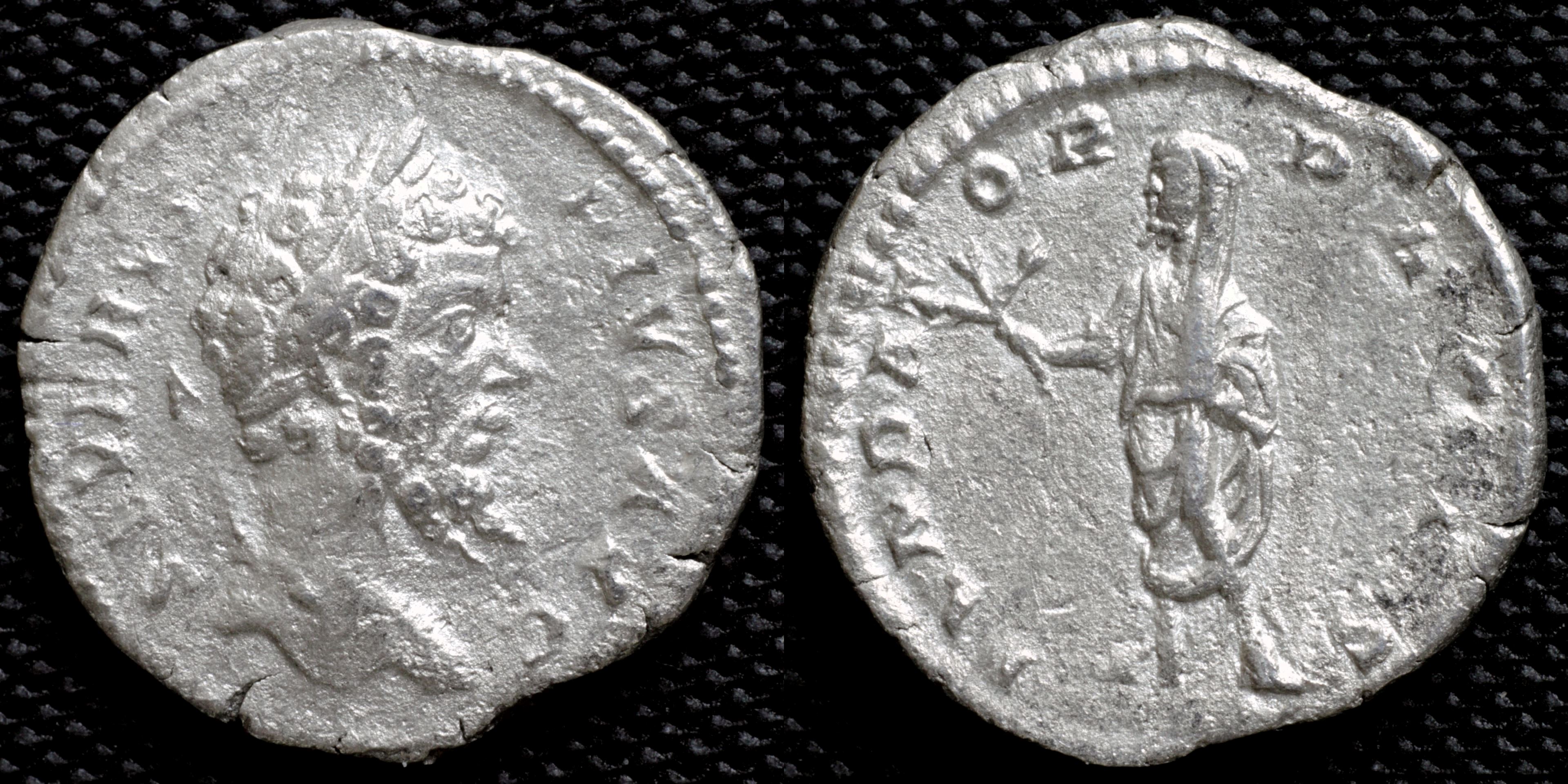
Reverse: Septimius, togate and veiled, standing left holding olive branch; FVNDAT_OR__PACIS
Die Orientation: -
Weight: 2.48 g
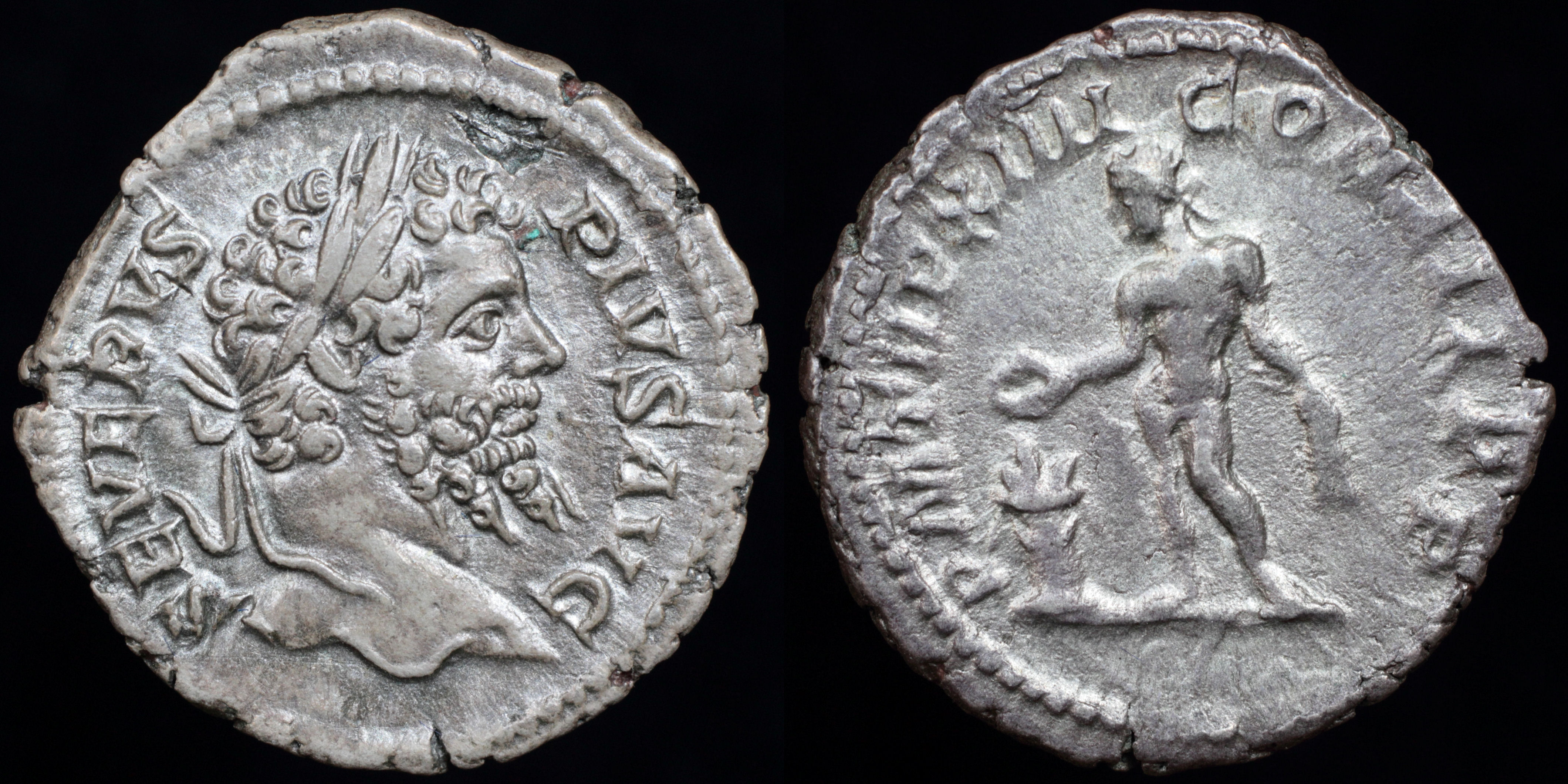
Reverse: Genius standing left, sacrificing out of patera over altar, holding grain ears; P M TR P XIIII__COS III P P
Die Orientation: -
Weight: 3.2 g
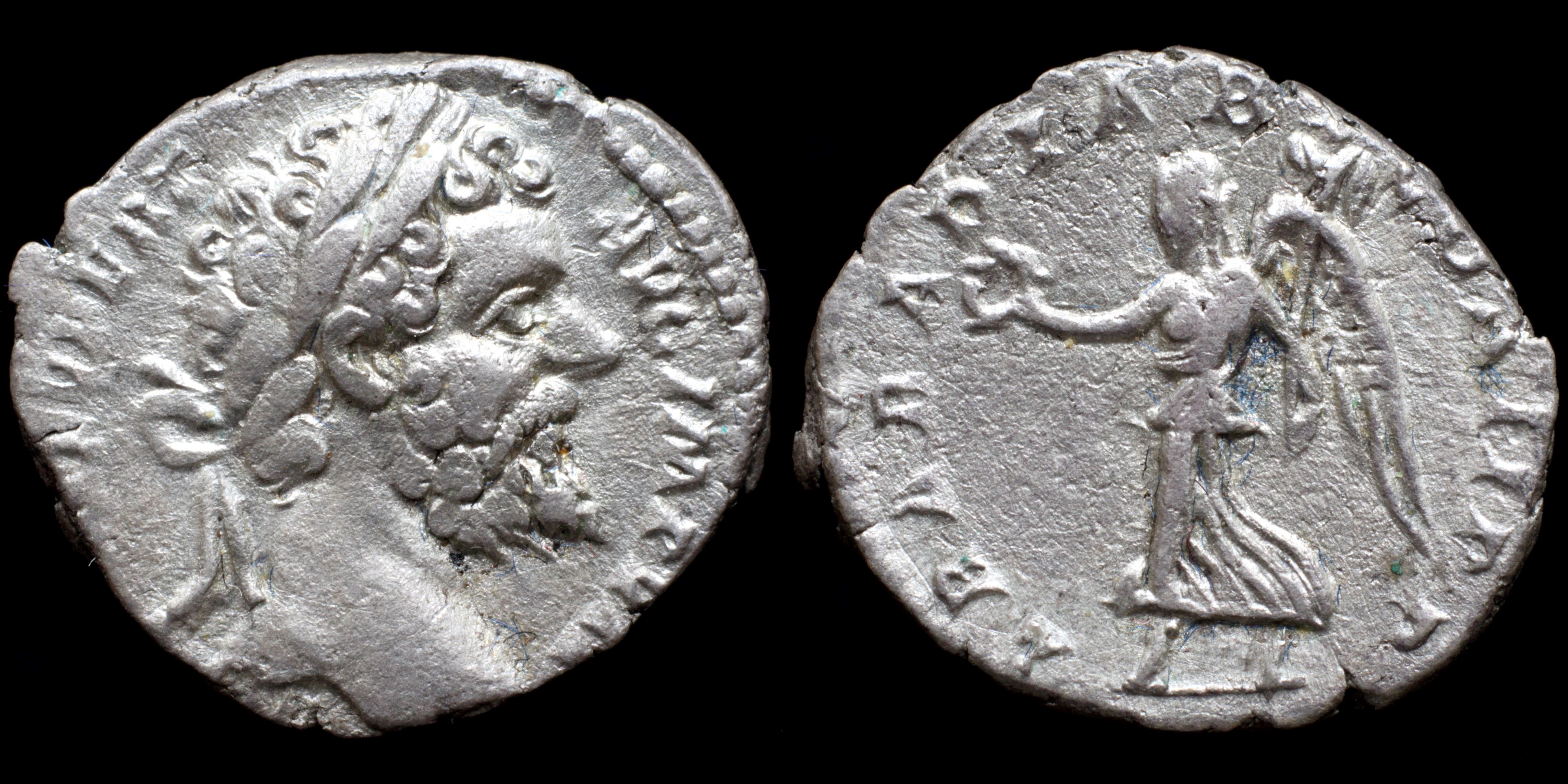
Reverse: Victory holding wreath and trophy; ARAB ADIAB__COS II P P
Die Orientation: -
Weight: 2.78 g
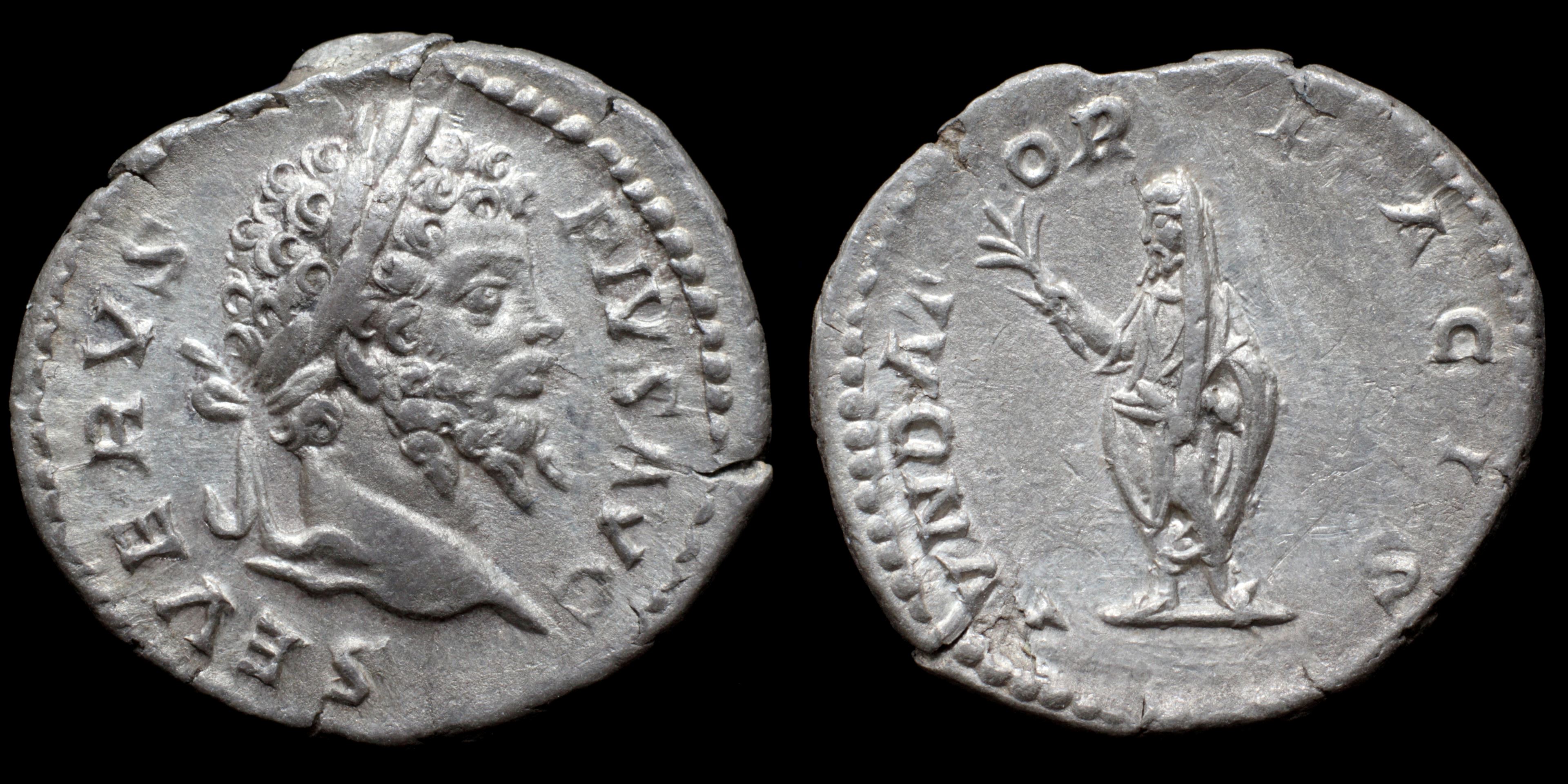
Reverse: Septimius, togate and veiled, standing left holding olive branch; FVNDAT_OR__PACIS
Die Orientation: -
Weight: 2.5 g
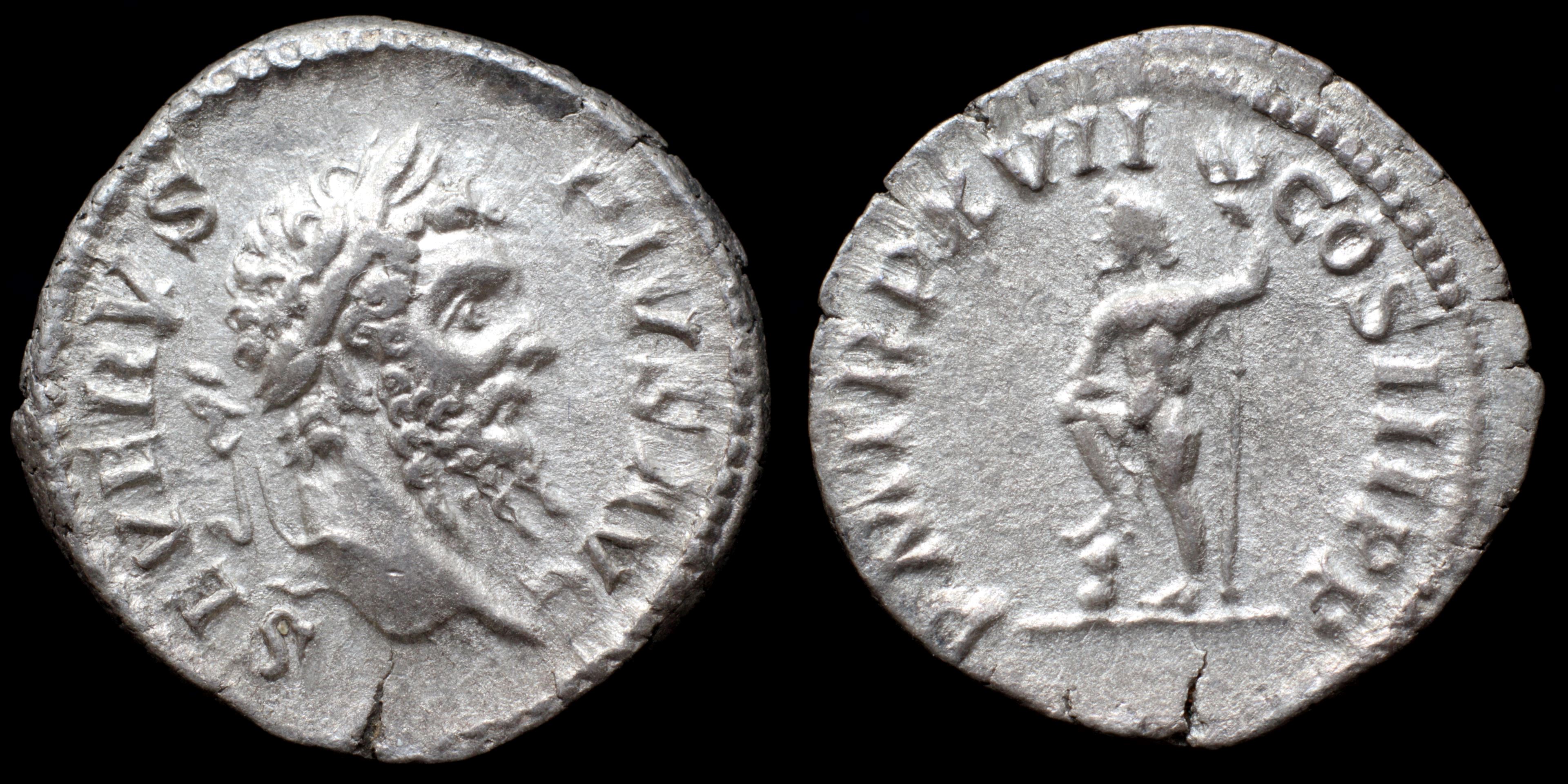
Reverse: Neptune standing left, holding trident, right foot on rock; P M TR P XVII__COS III P P
Die Orientation: -
Weight: 2.84 g
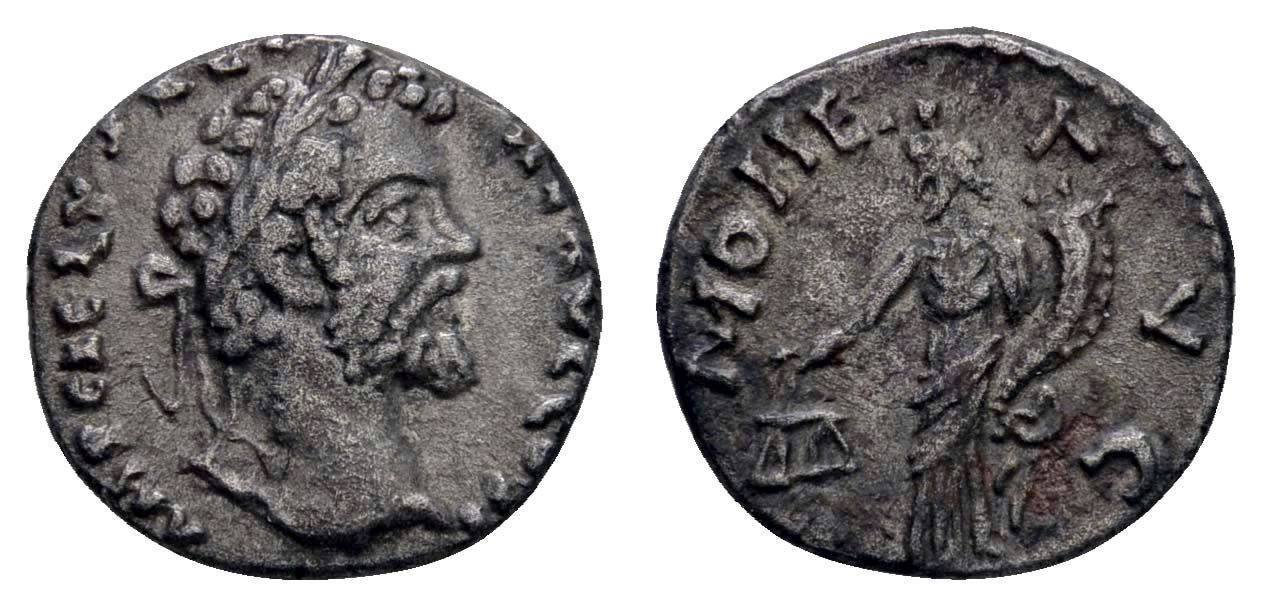
Reverse: MONET AVG / moneta standing left holding scales & cornucopiae
Die Orientation: -
Weight: 2.93 g
.jpg)
Reverse: P M TR P XVI COS III P P / Concordia seated left on throne, holding patera and sceptre
Die Orientation: -
Weight: -
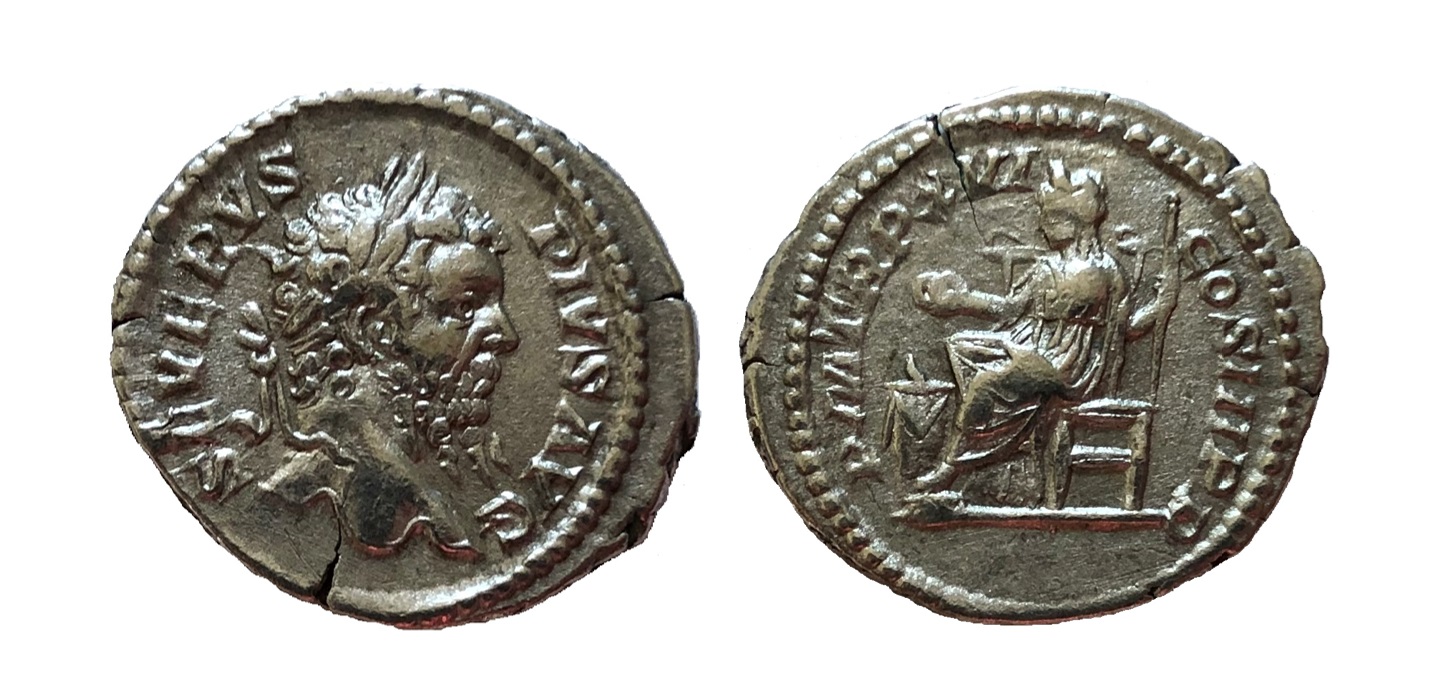
Reverse: Salus seated left on throne, holding patera in right hand, sacrificing over altar, scepter in left hand, text (PM•TRP•XVI•COS•III•PP)
Die Orientation: -
Weight: -
(1).jpg)
Reverse: P M TR P XVII COS III P P, river god (Tyne?) reclining right, holding shell and rudder; seahorse at feet
Die Orientation: 1 H
Weight: 3.17 g
(65).jpg)
Reverse: PART MAX P M TR P VIIII, two captives seated at foot of trophy
Die Orientation: 12 H
Weight: 2.43 g
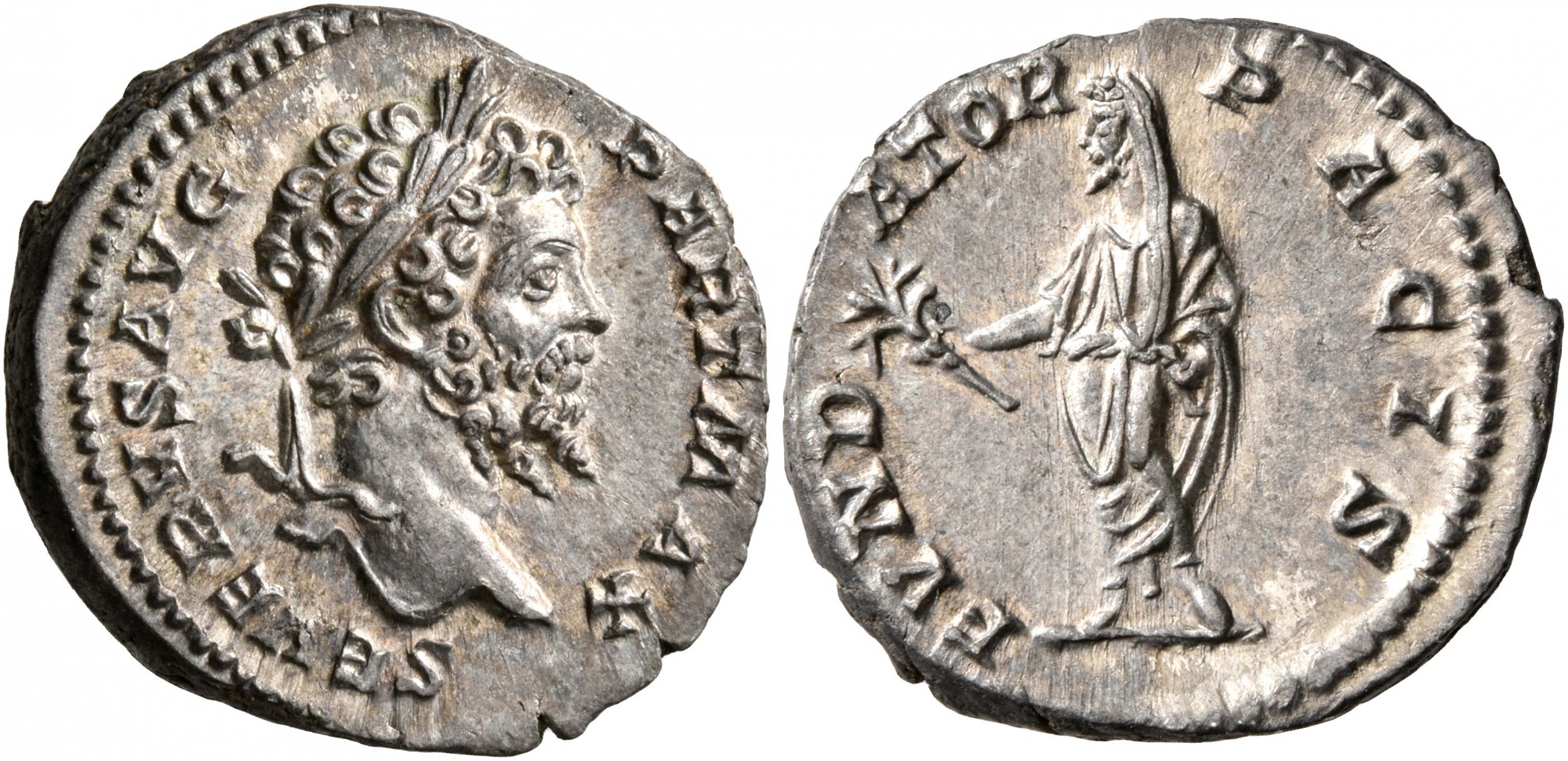
Reverse: FVNDATOR PACIS Septimius Severus, veiled, standing front, head to left, holding branch in his right hand and roll in his left
Die Orientation: 11 H
Weight: 3.2 g
_5.jpg)
Reverse: RESTITVTOR VRBIS, Severus in military dress, standing left, sacrificing with patera over tripod, holding spear
Die Orientation: 1 H
Weight: 3.1 g
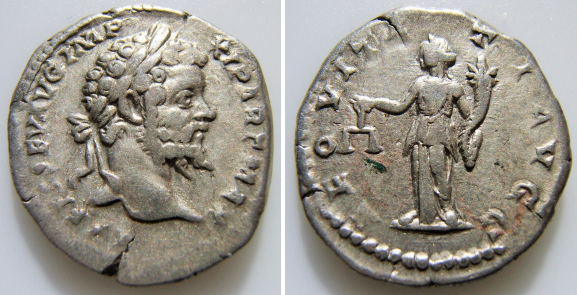
Reverse: AEQVITA-TI AVGG - Aequitas standing left, holding scales in right hand, cornucopiae in left.
Die Orientation: 6 H
Weight: 3.48 g
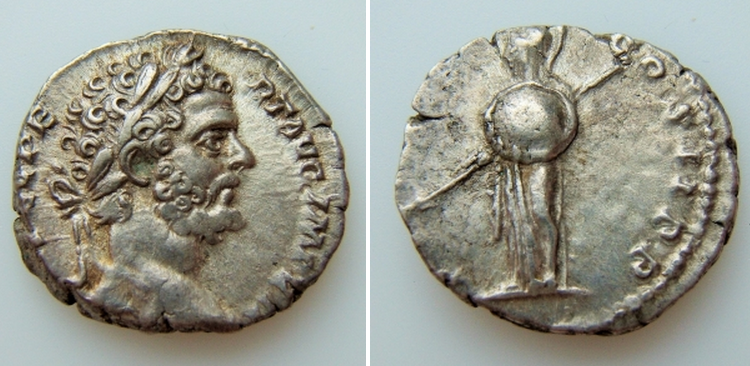
Reverse: P M TR P IIII COS II P P - Minerva standing left, holding spear and round shield.
Die Orientation: 6 H
Weight: 3.16 g
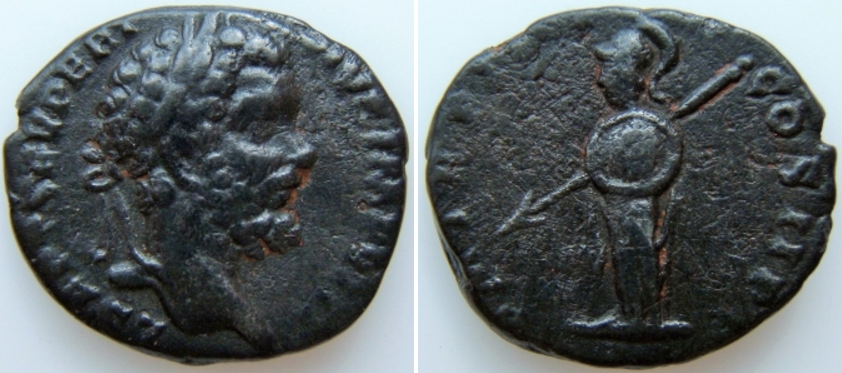
Reverse: P M TR P IIII COS II P P - Minerva standing left, holding reversed spear and shield.
Die Orientation: 12 H
Weight: 3.01 g
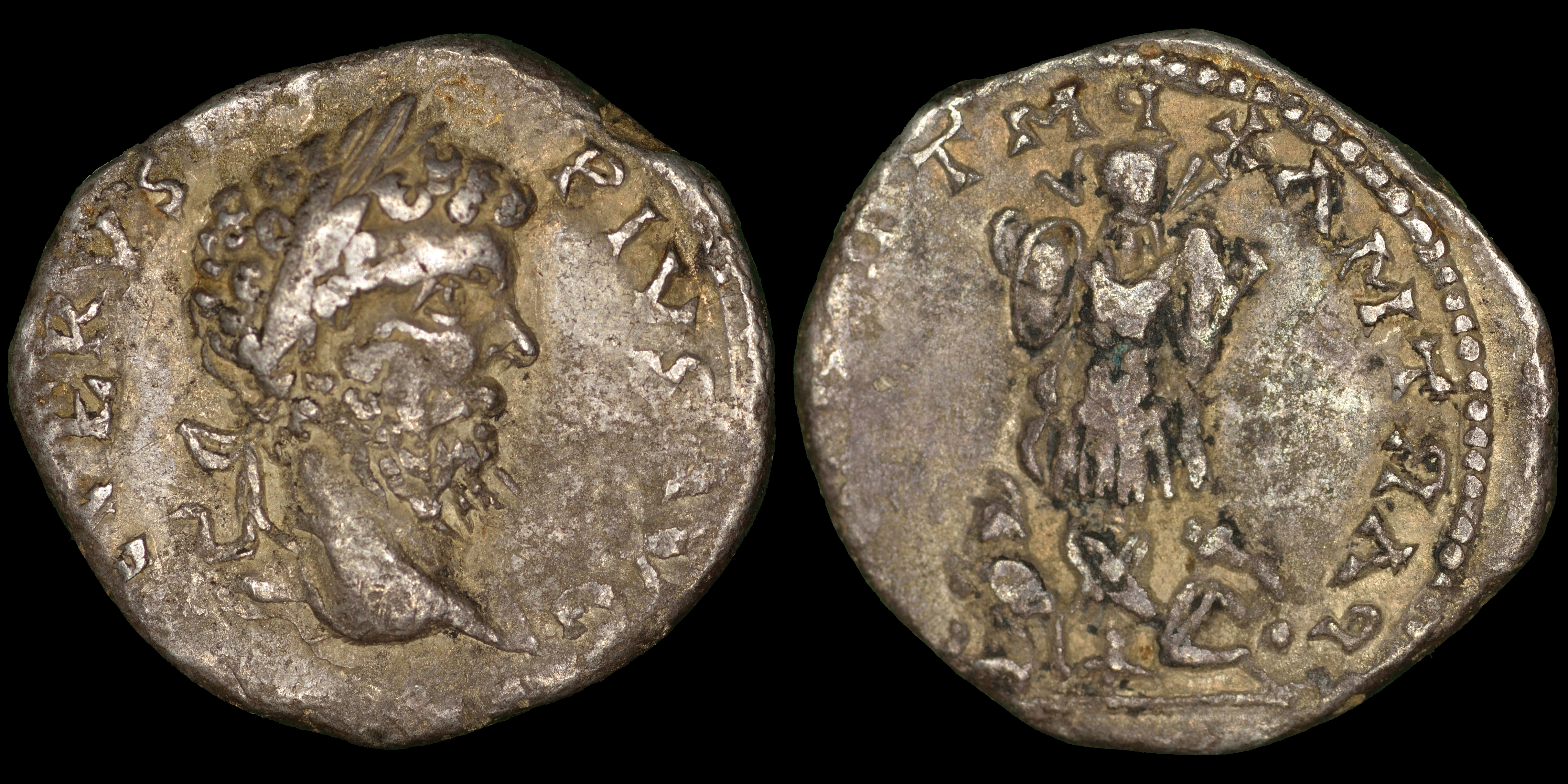
Reverse: should read "ART MAX P M T[R P VIIII]", two captives seated at foot of trophy
Die Orientation: -
Weight: 3.16 g
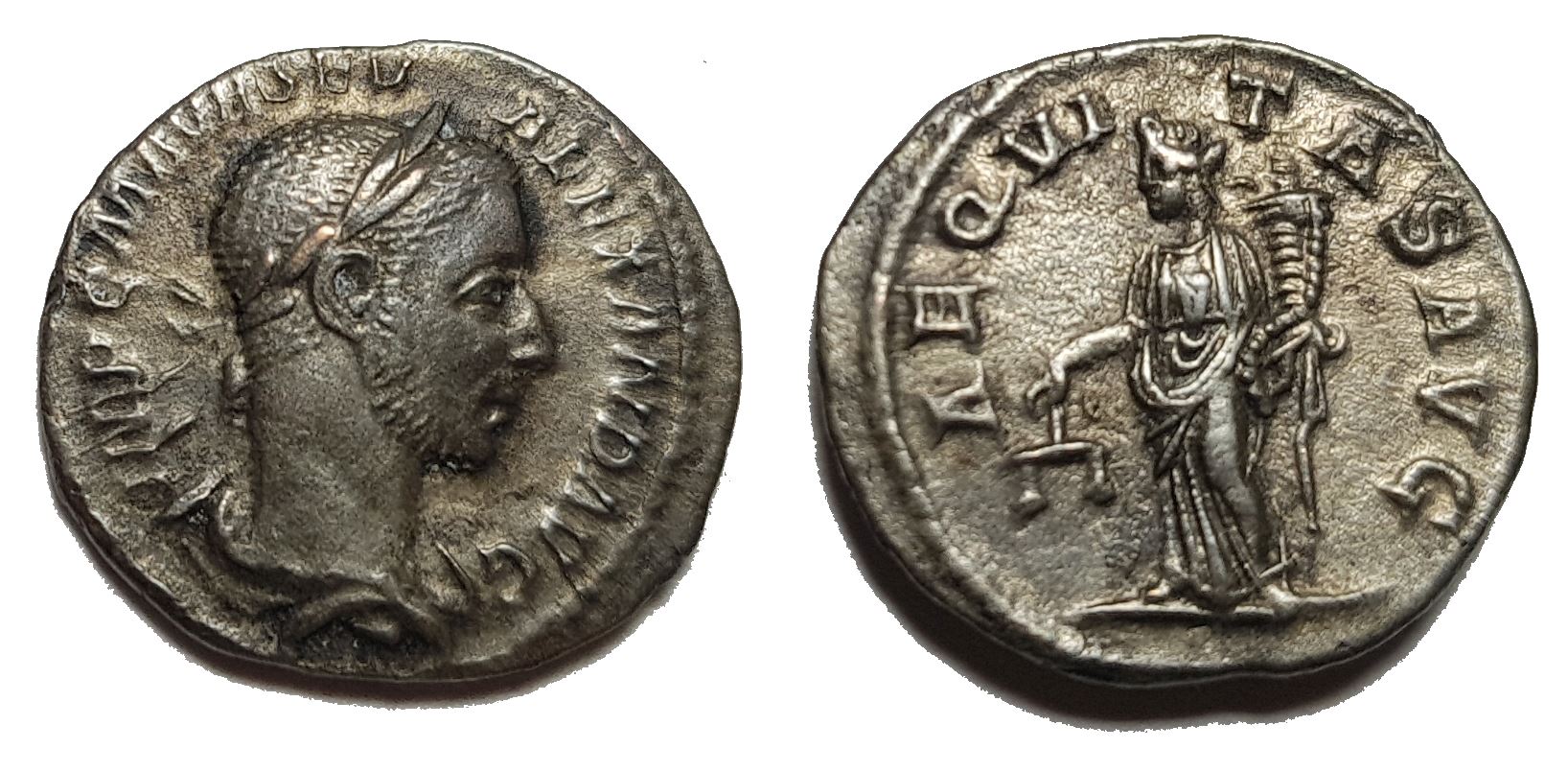
Reverse: AEQVITAS AVG
Aequitas standing left, holding scales and cornucopia
Die Orientation: -
Weight: 2.02 g
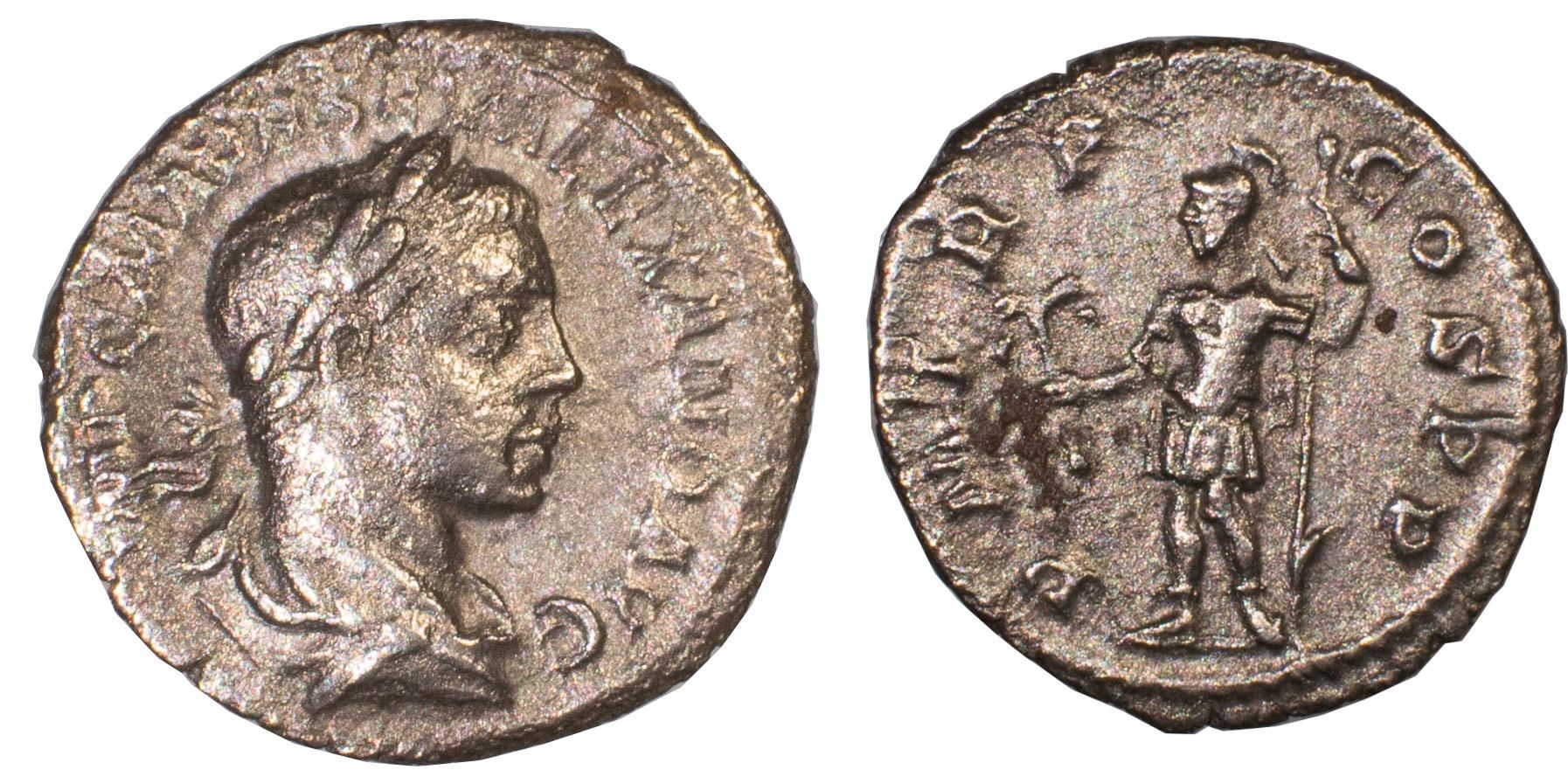
Reverse: P M TR P COS P P - Mars standing left, holding olive branch and spear.
Die Orientation: 0 H
Weight: 2.62 g
Minted between May and December 222 AD.
(10).jpg)
Reverse: P M TR P VI COS II P P, Mars walking right carrying spear and trophy
Die Orientation: 1 H
Weight: 2.79 g
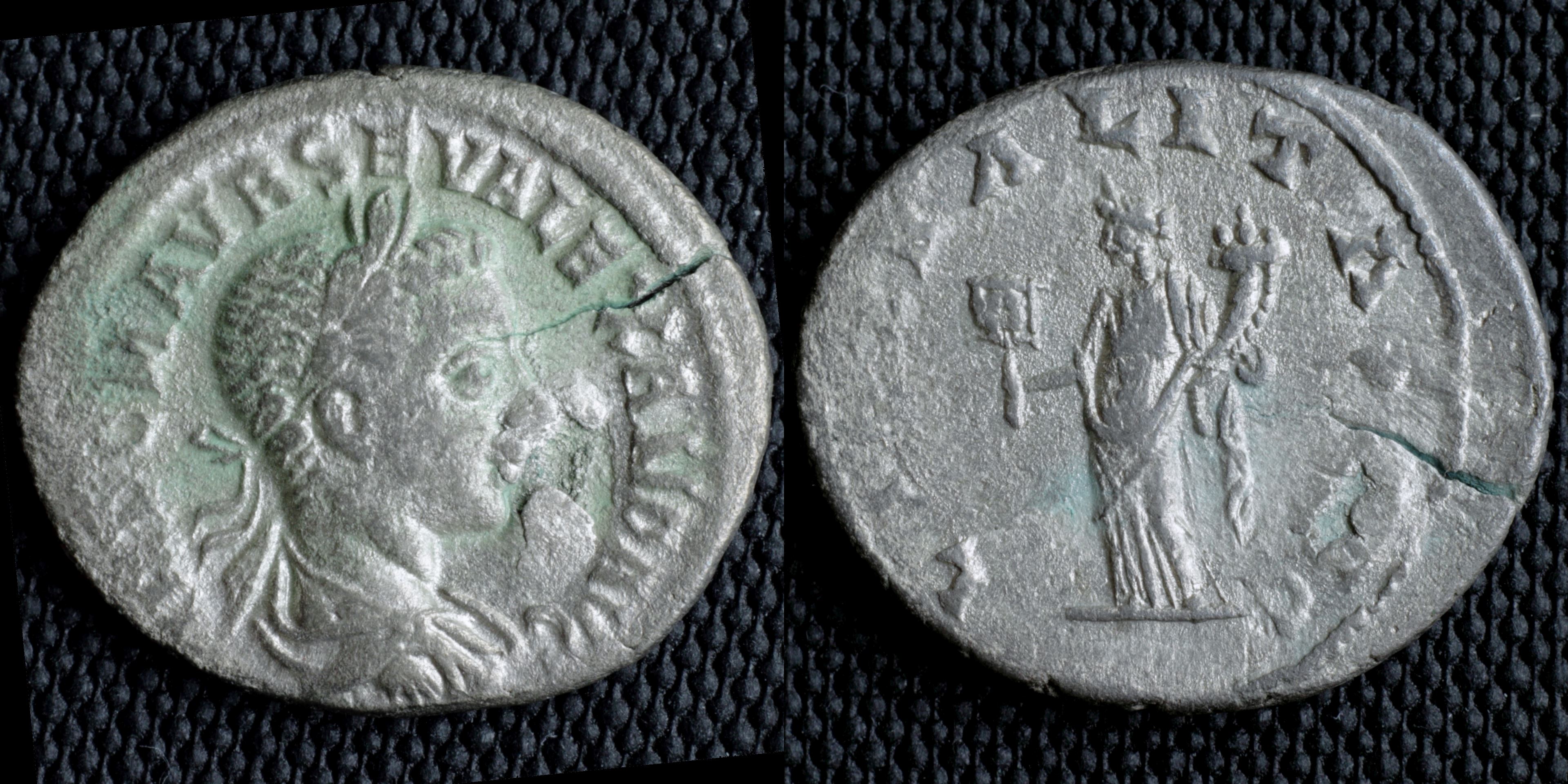
Reverse: Liberalitas standing left, holding abacus and cornucopia; LIBERALITAS AVG
Die Orientation: -
Weight: 2.22 g
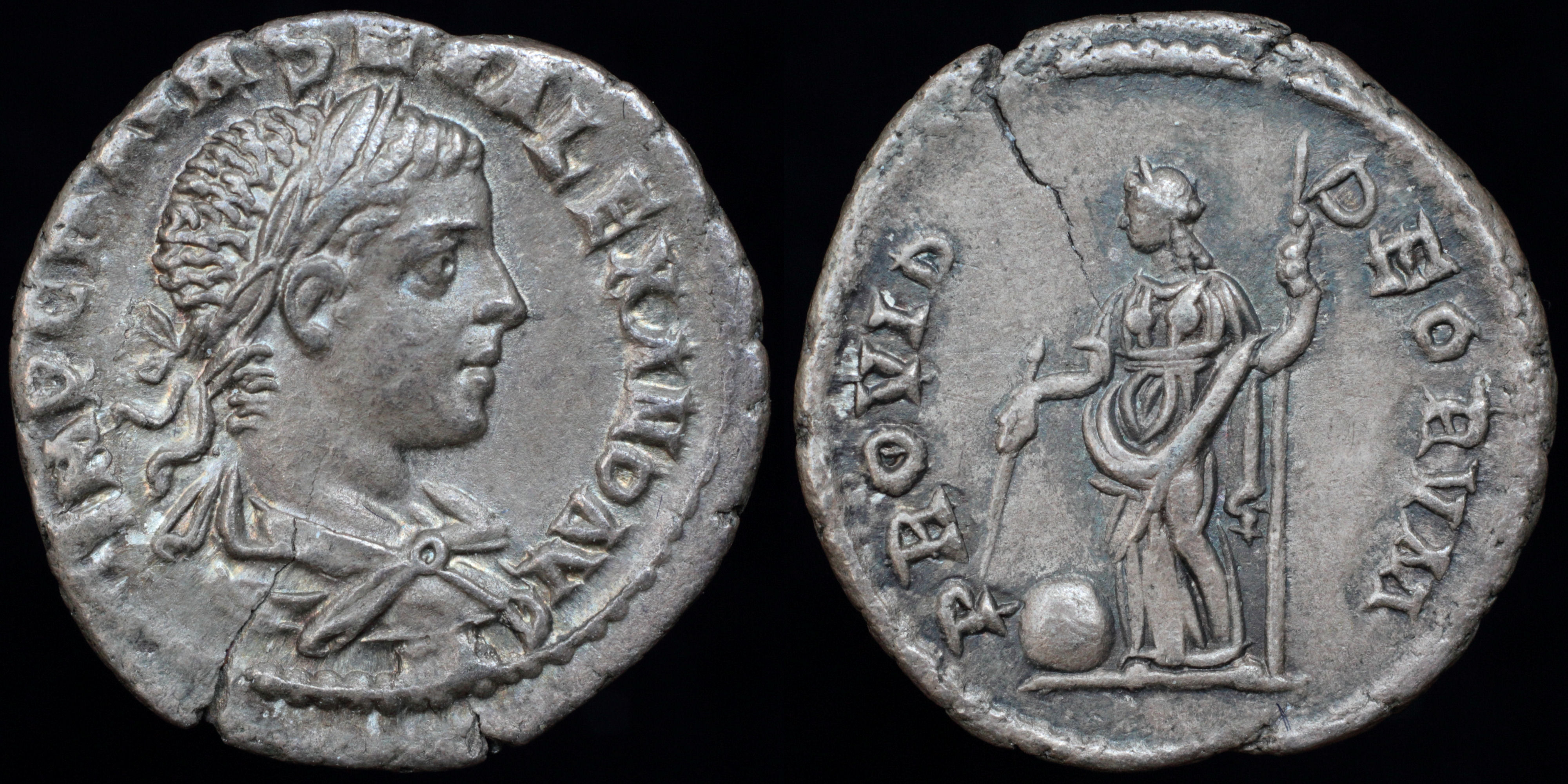
Reverse: Providentia standing left, holding wand over globe and scepter; PROVID__DEORVM
Die Orientation: -
Weight: 2.77 g
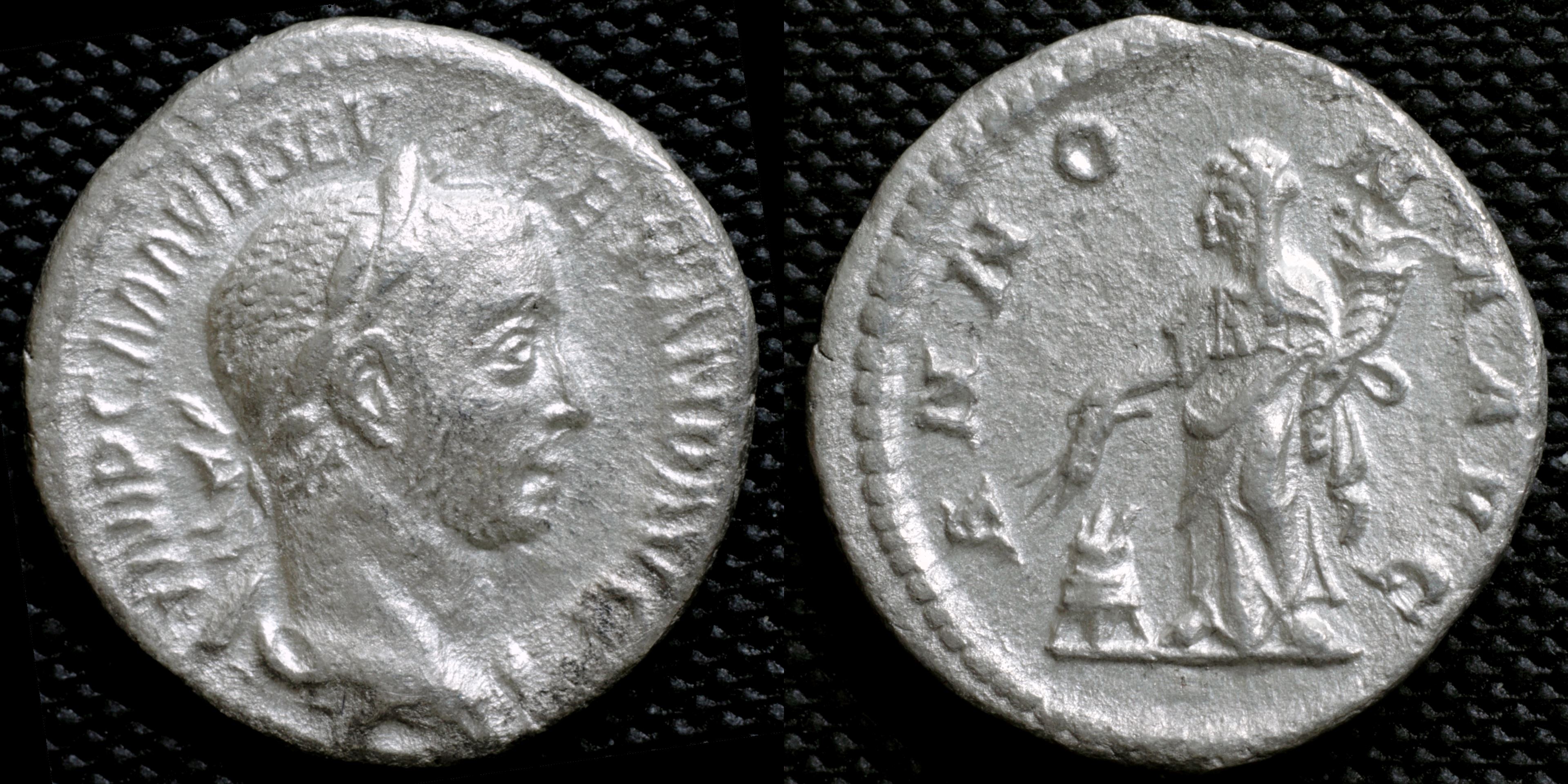
Reverse: Annona standing left, holding grain ears over modius and cornucopia; ANNO_NA AVG
Die Orientation: -
Weight: 2.8 g
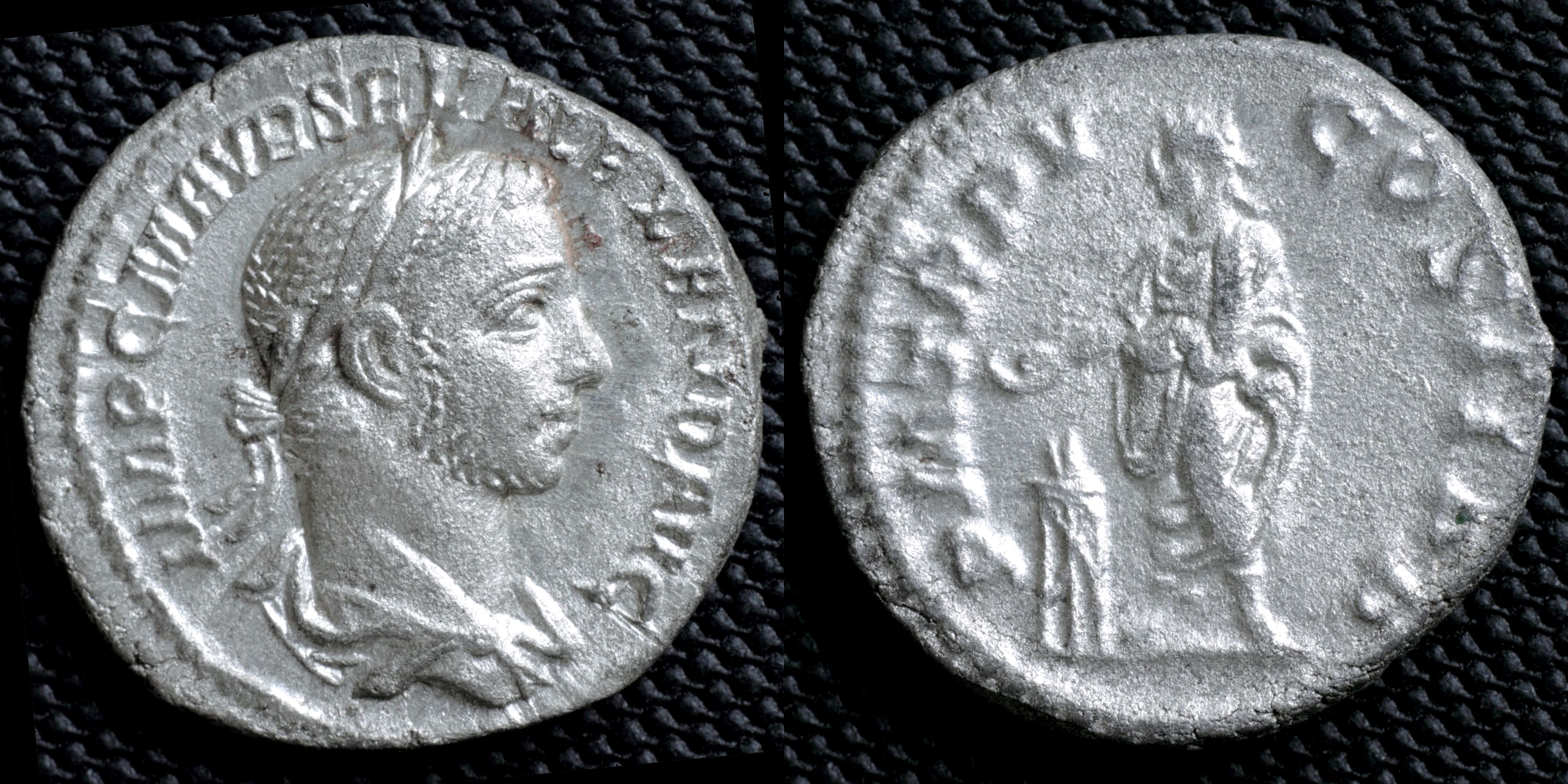
Reverse: Alexander Severus standing left, sacrificing over lit tripod altar; P M TR P V__COS II P P
Die Orientation: -
Weight: 3.51 g
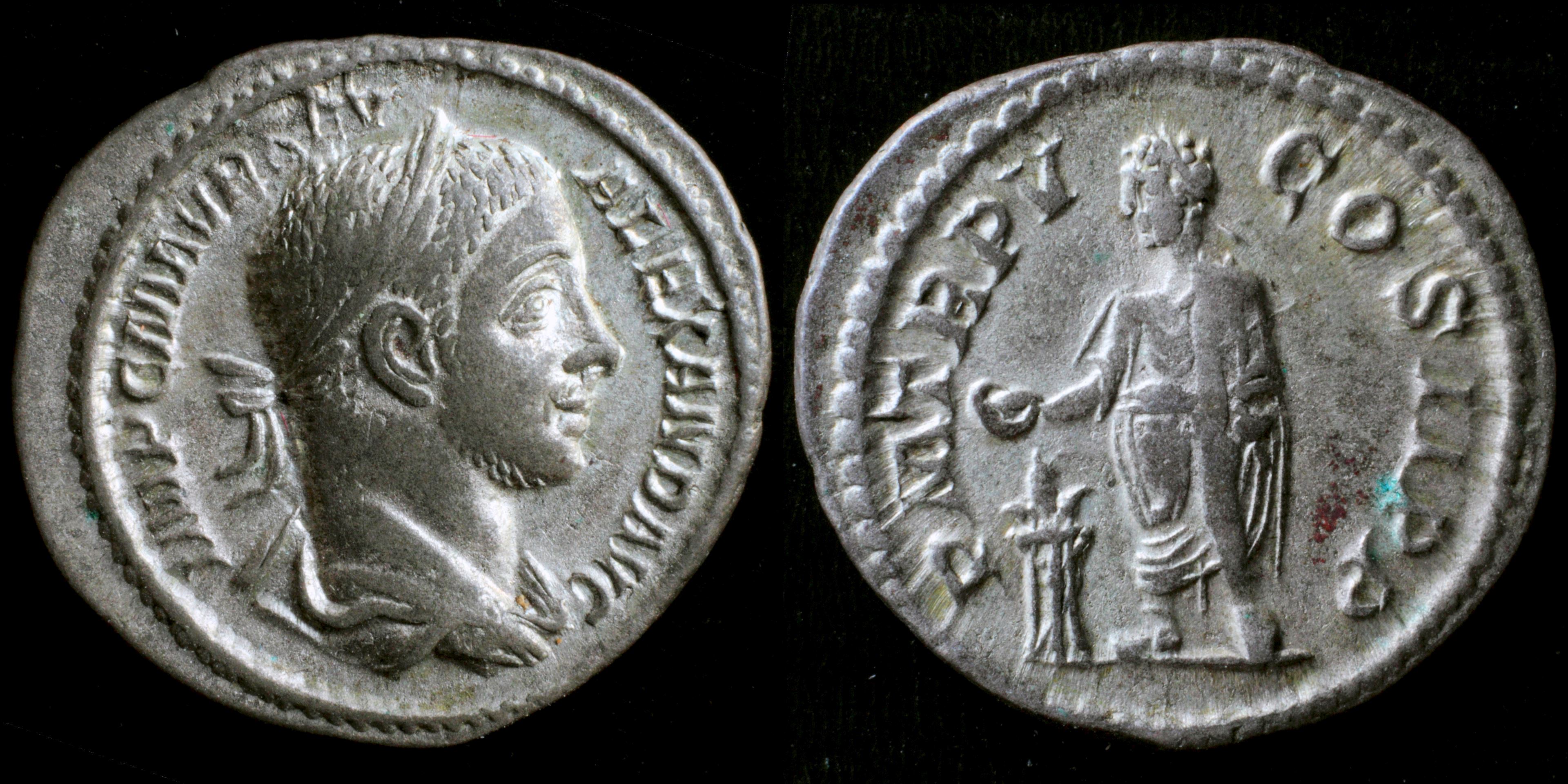
Reverse: Alexander Severus standing left, sacrificing over lit tripod altar; P M TR P V__COS II P P
Die Orientation: -
Weight: 3.31 g
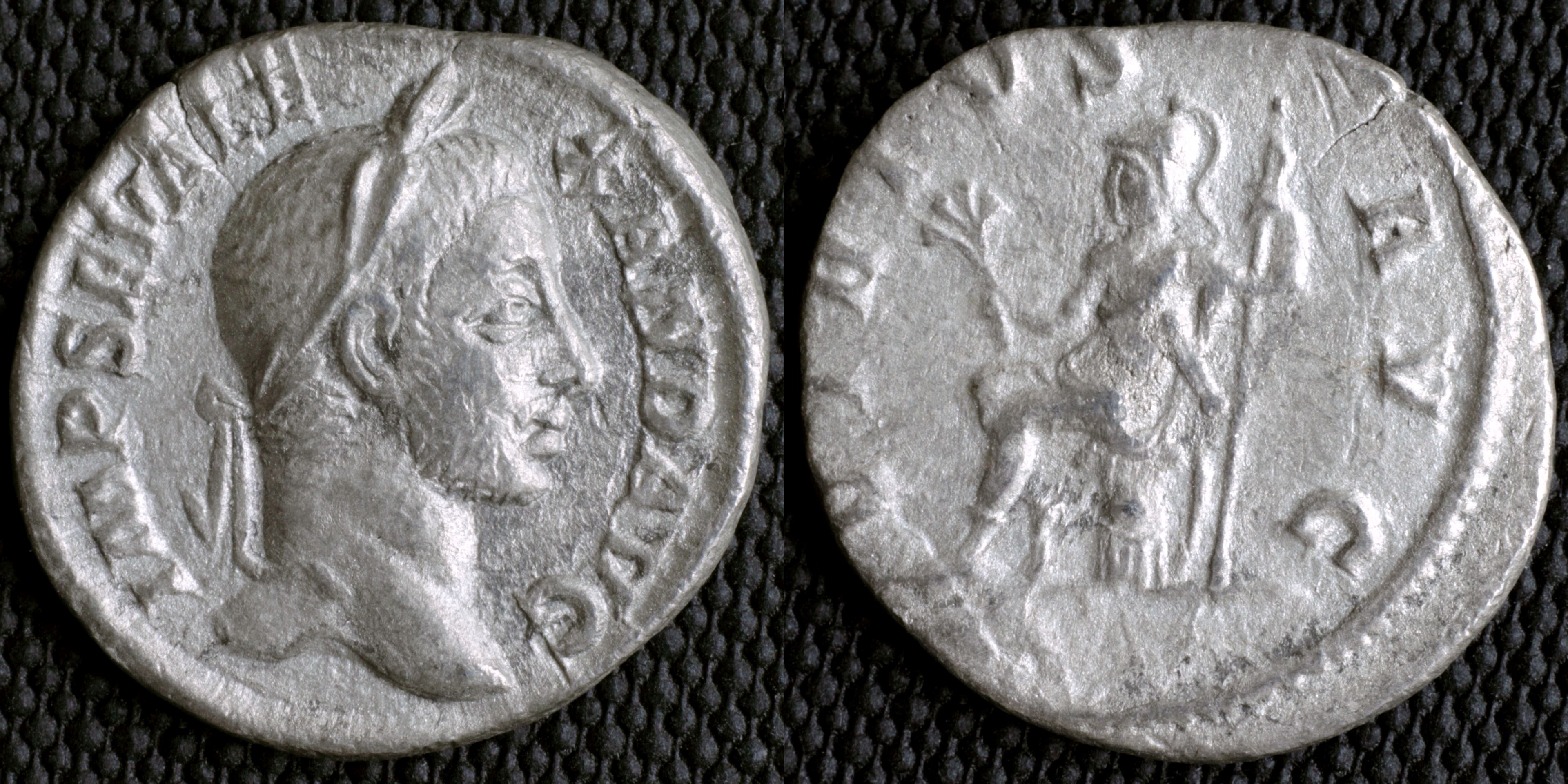
Reverse: Virtus seated left holding branch and inverted spear; VIRTVS__AVG
Die Orientation: -
Weight: 2.43 g
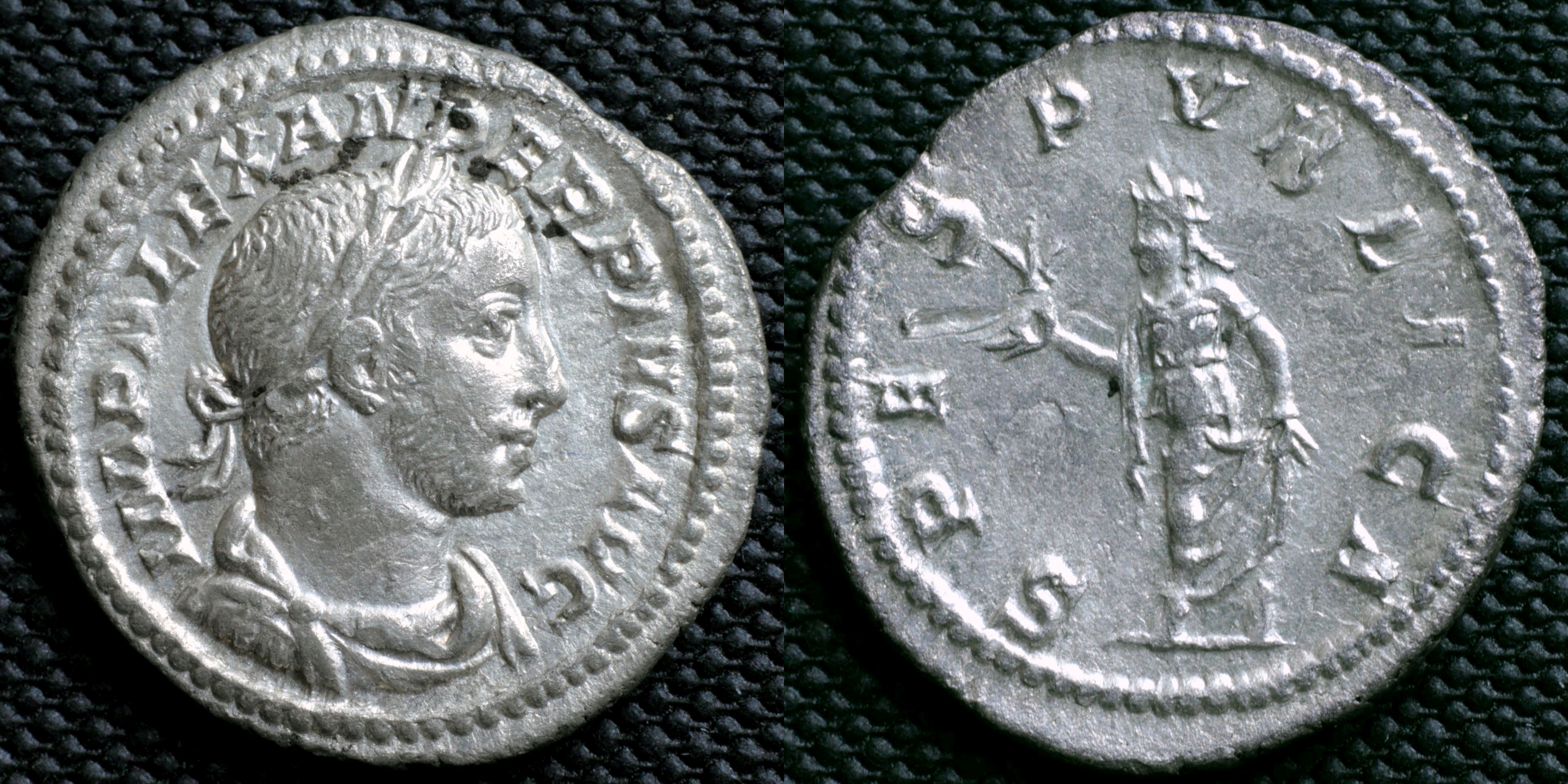
Reverse: Spes advancing left, holding flower and raising skirt; SPES PVBLICA
Die Orientation: -
Weight: 3.09 g
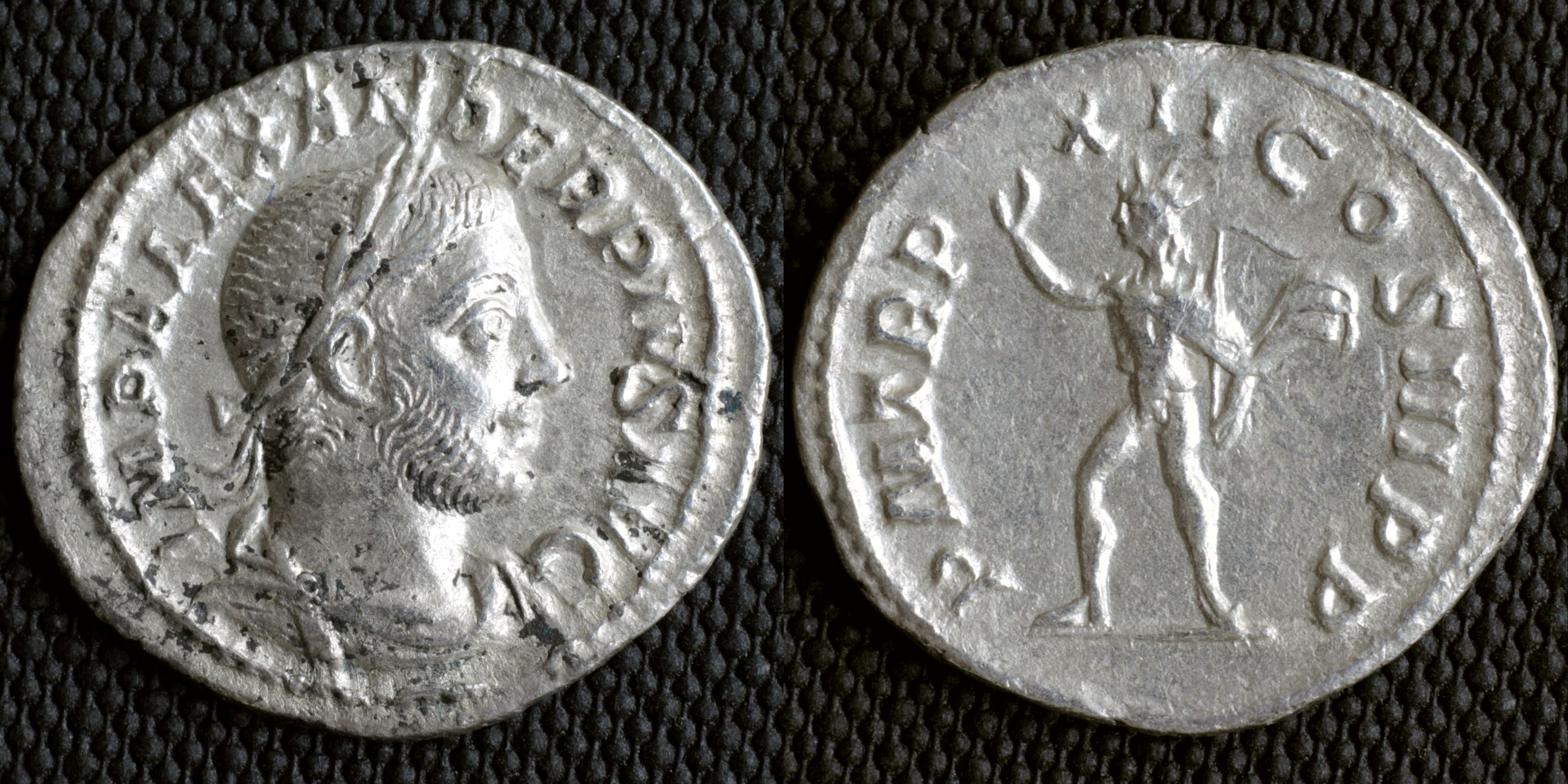
Reverse: Sol advancing left, raising hand and holding whip; P M TR P__XII COS III P P
Die Orientation: -
Weight: 2.01 g
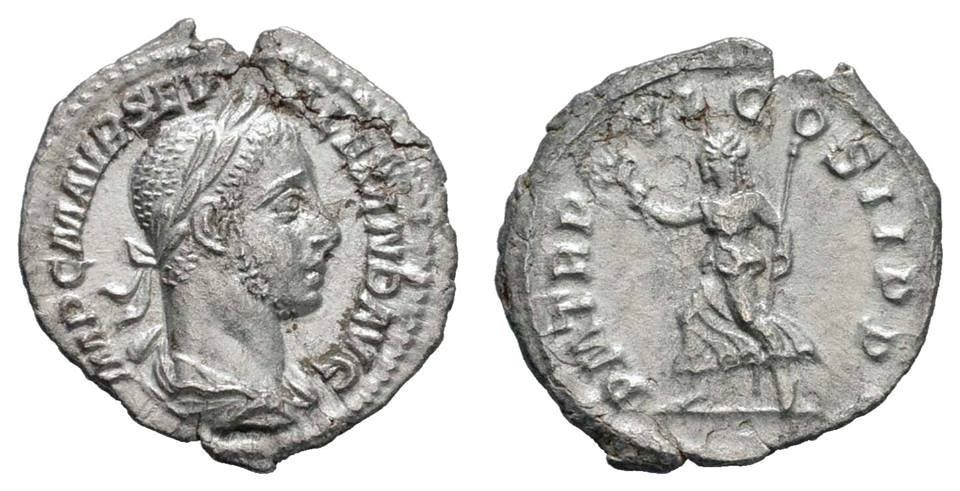
Reverse: P M TR P VI COS II P P / PAX running left, holding olive branch and sceptre
Die Orientation: -
Weight: 2 g
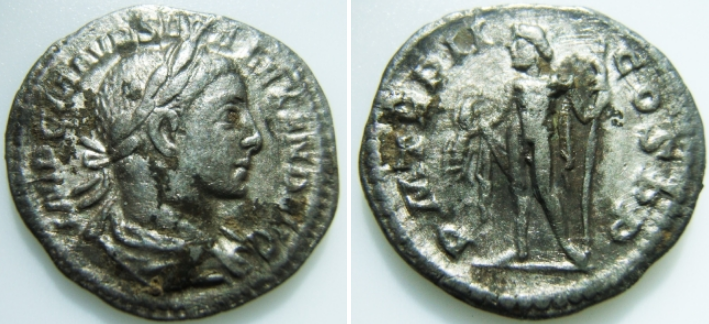
Reverse: P M TR P II COS P P - Jupiter standing left, holding thunderbolt and sceptre.
Die Orientation: 12 H
Weight: 2.9 g
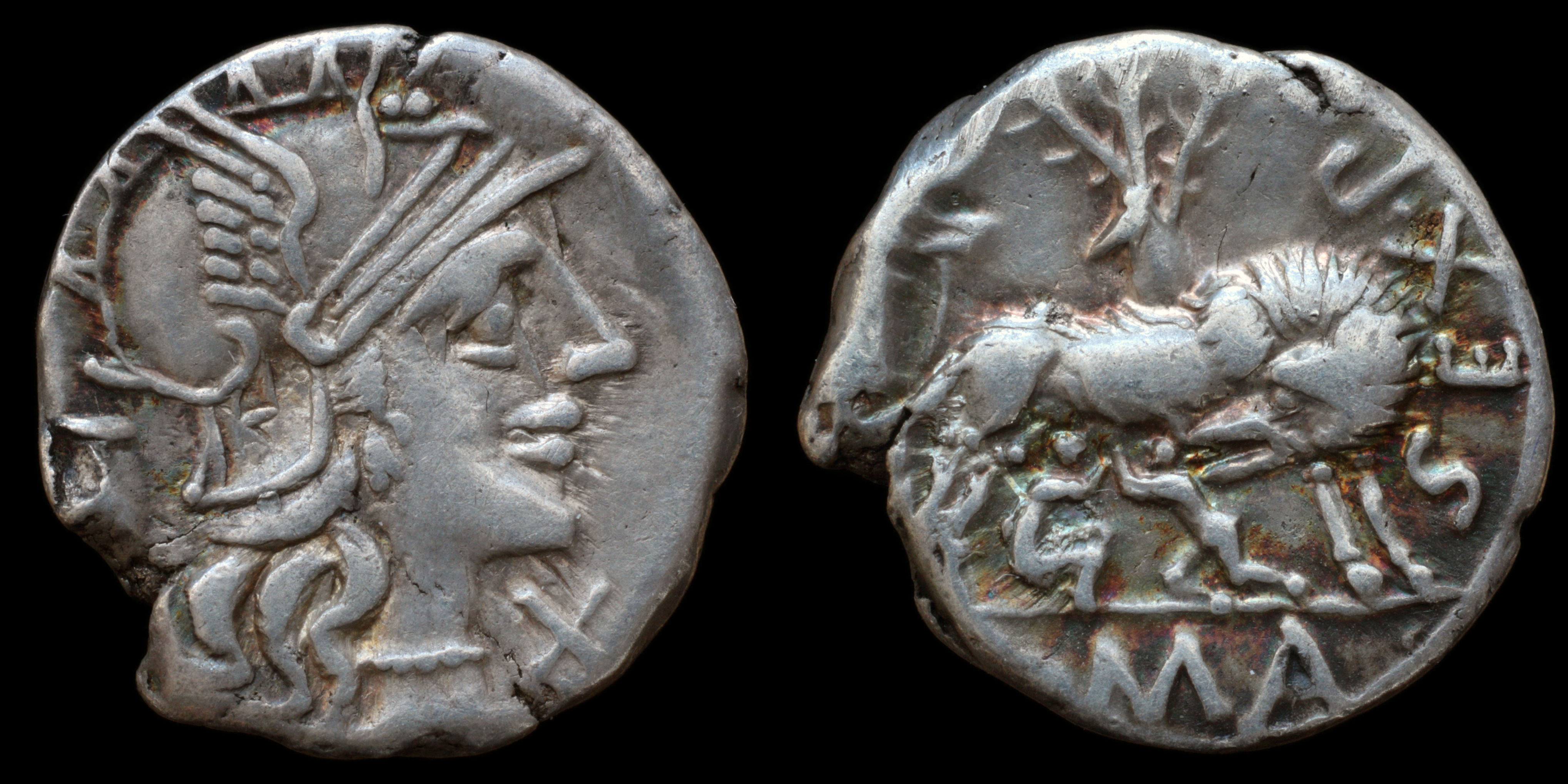
Reverse: she-wolf right, head turned back, breastfeeding Romulus and Remus; behind fig tree with bird on trunk and two on branches; shepherd Faustulus standing right; SEX PO__FOSTLVS / ROMA
Die Orientation: -
Weight: 3.9 g
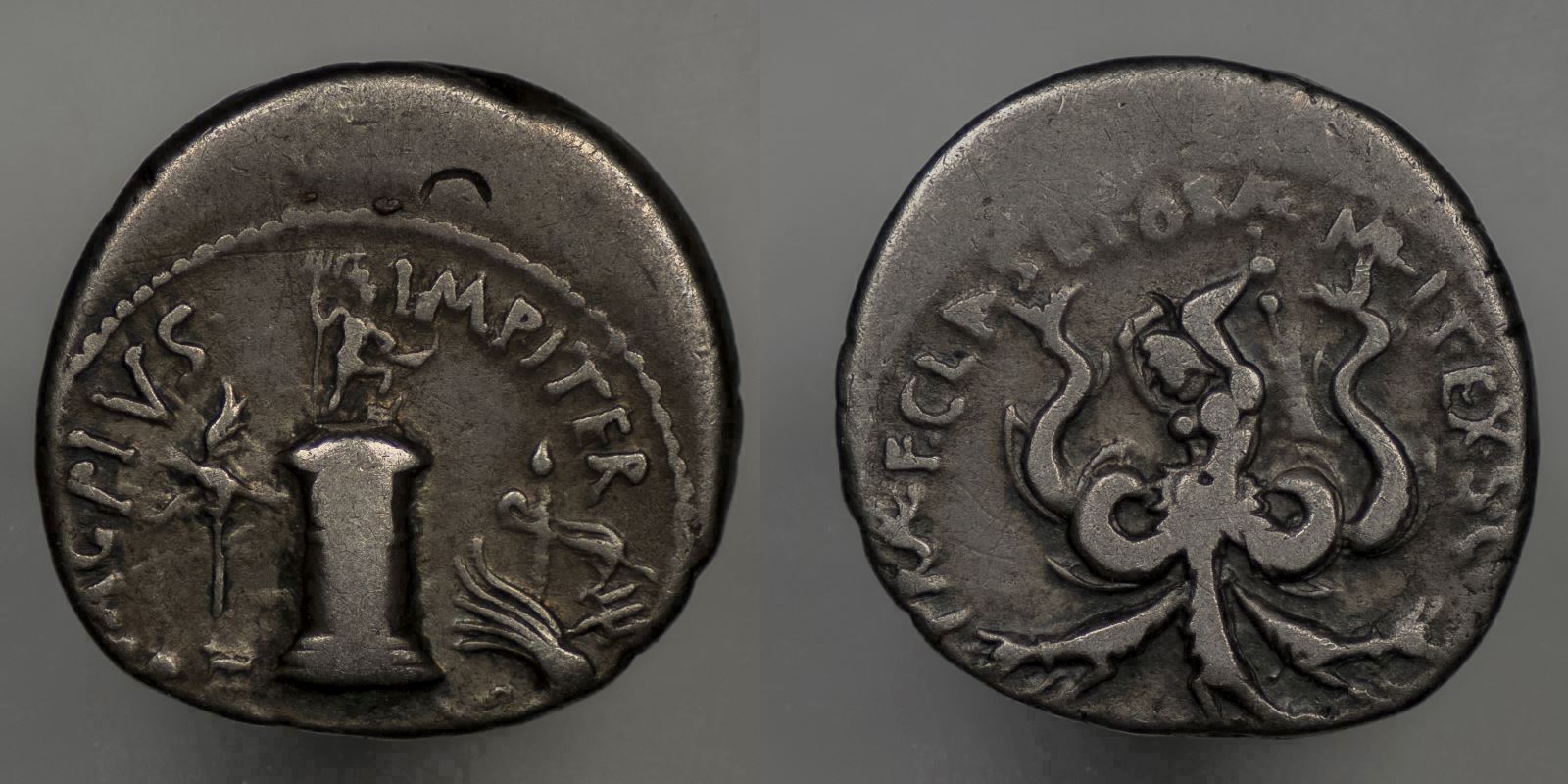
Reverse: PRAEF. CLAS ET. ORAE. MARIT. EX. S.C, The monster Scylla facing left, her torso of dogs and fishes, wielding a rudder as a club with both hands
Die Orientation: 12 H
Weight: 3.74 g
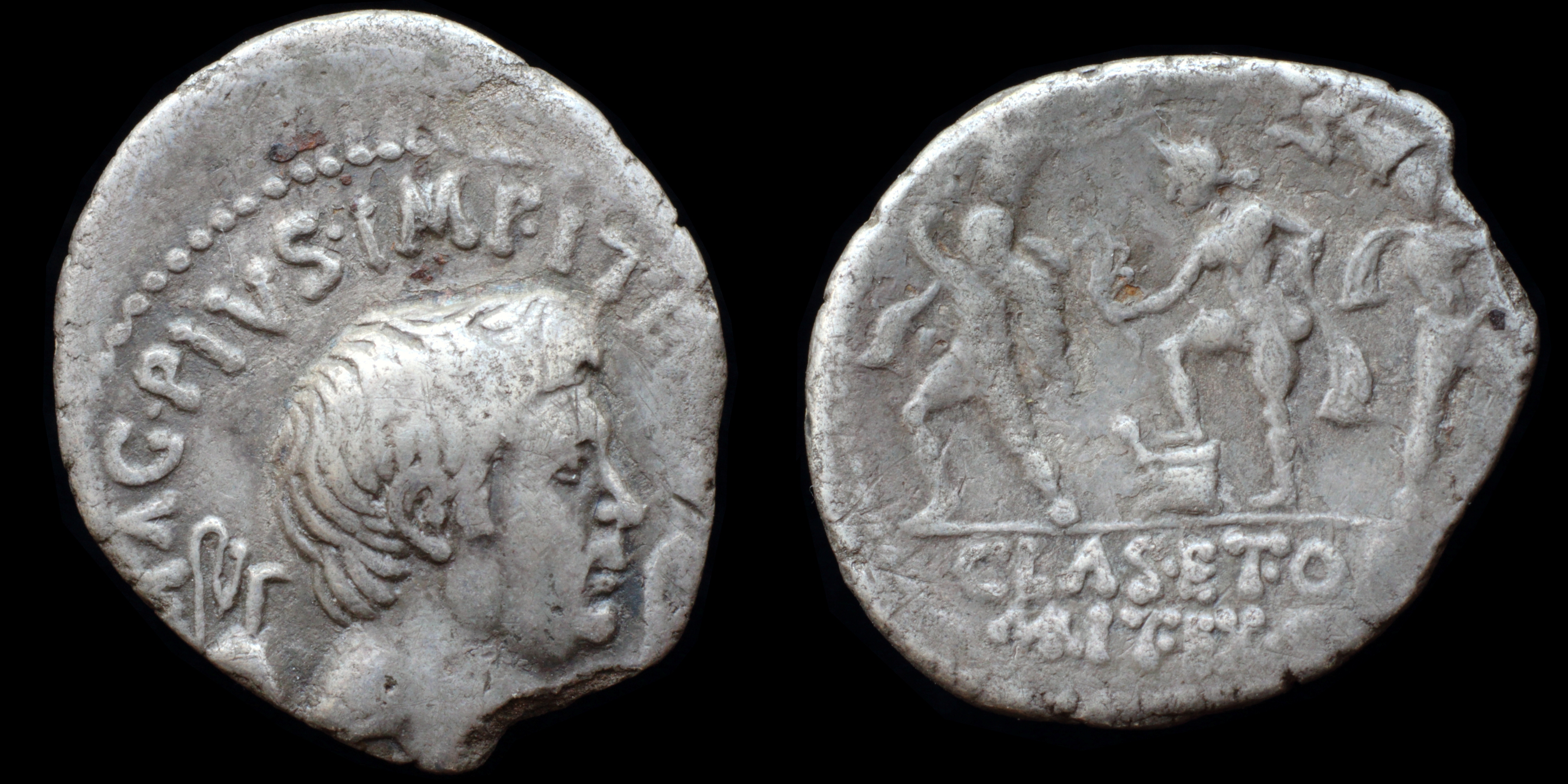
Reverse: Neptune standing left, foot on prow, holding aplustre and chlamys; the brothers Anapias and Amphinomus running in opposite directions on either side, holding their parents on their shoulders, PRAEF / CLAS·ET·OR(AE) / (MAR)IT·EX·S·C
Die Orientation: -
Weight: 3.4 g
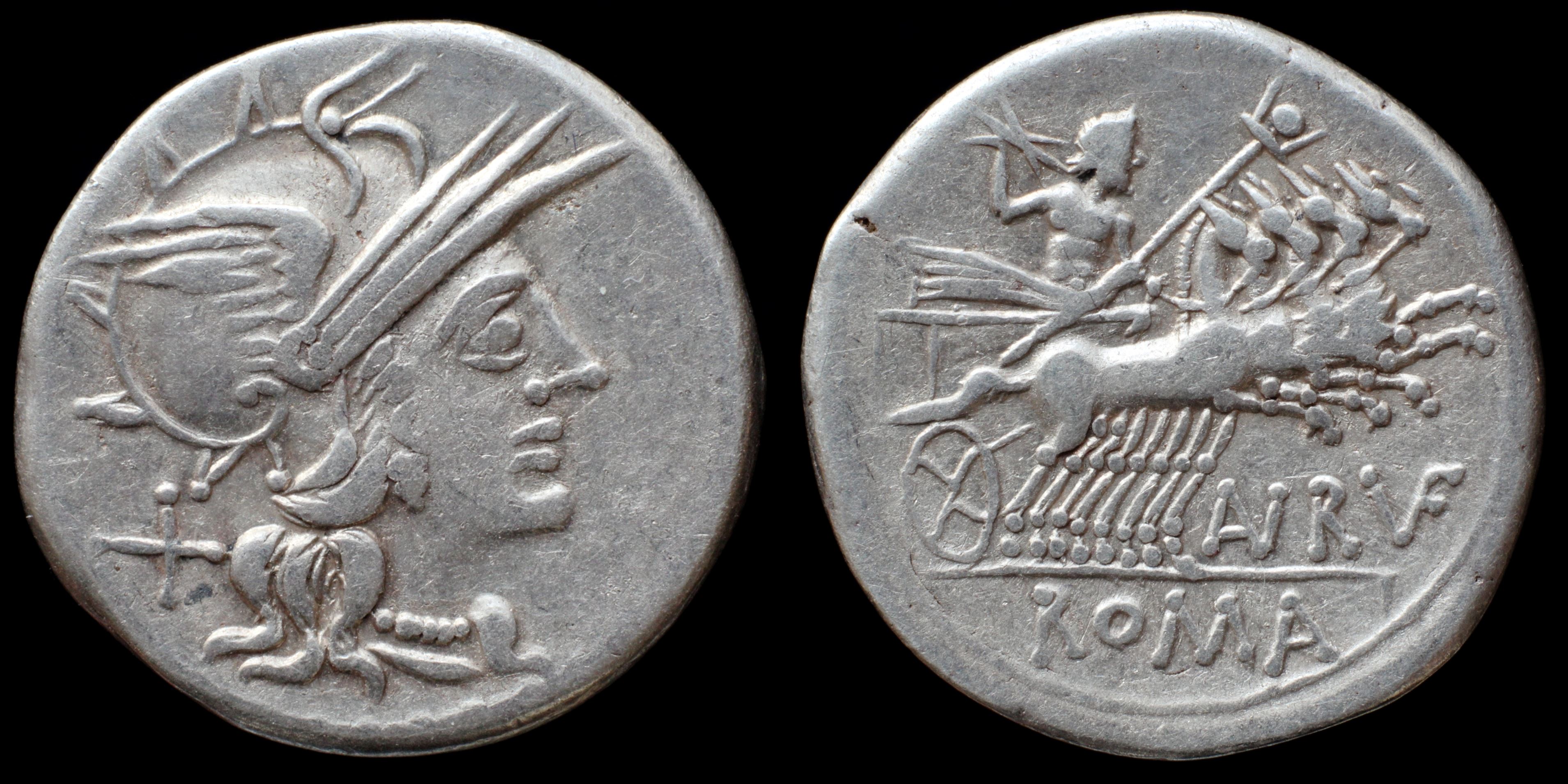
Reverse: Jupiter in quadriga right, hurling thunderbolt and holding reins and scepter; (AN) R(VF) / ROMA
Die Orientation: -
Weight: 3.9 g
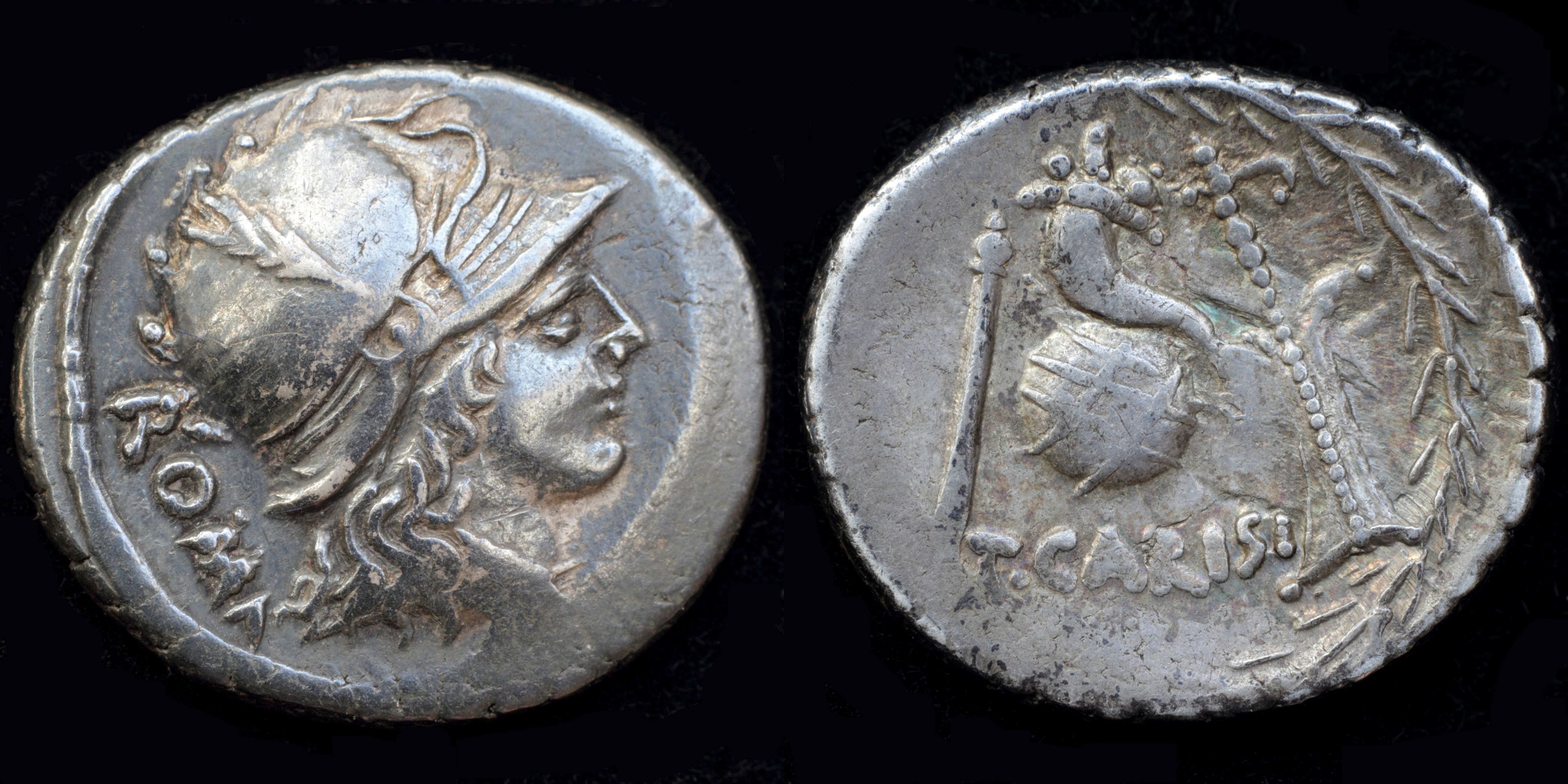
Reverse: cornucopia on celestial globe, scepter left, rudder right all within wreath, T·CARISI
Die Orientation: -
Weight: 4.3 g
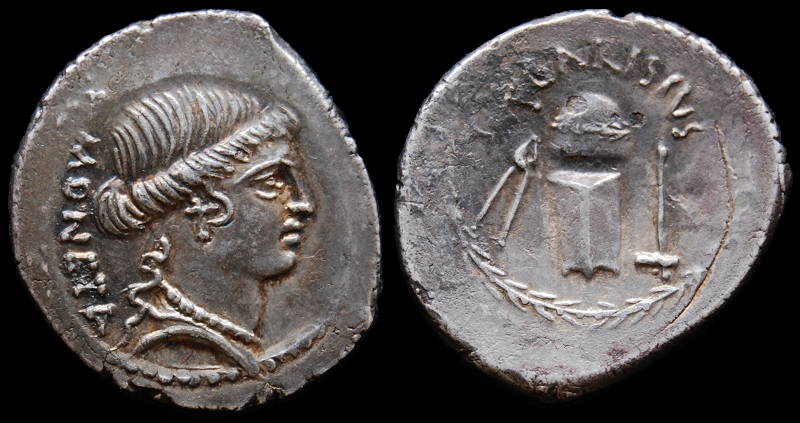
Reverse: Implements for coining money: anvil die with garlanded punch die above, tongs and hammer on either side; T•CARISIVS above; all within laurel wreath.
Die Orientation: -
Weight: 3.74 g
Provenance: Jesus Vico S.A, Auction 150 (1 March 2018), lot 414. Ex Herrero (25 March 1993), lot 78.
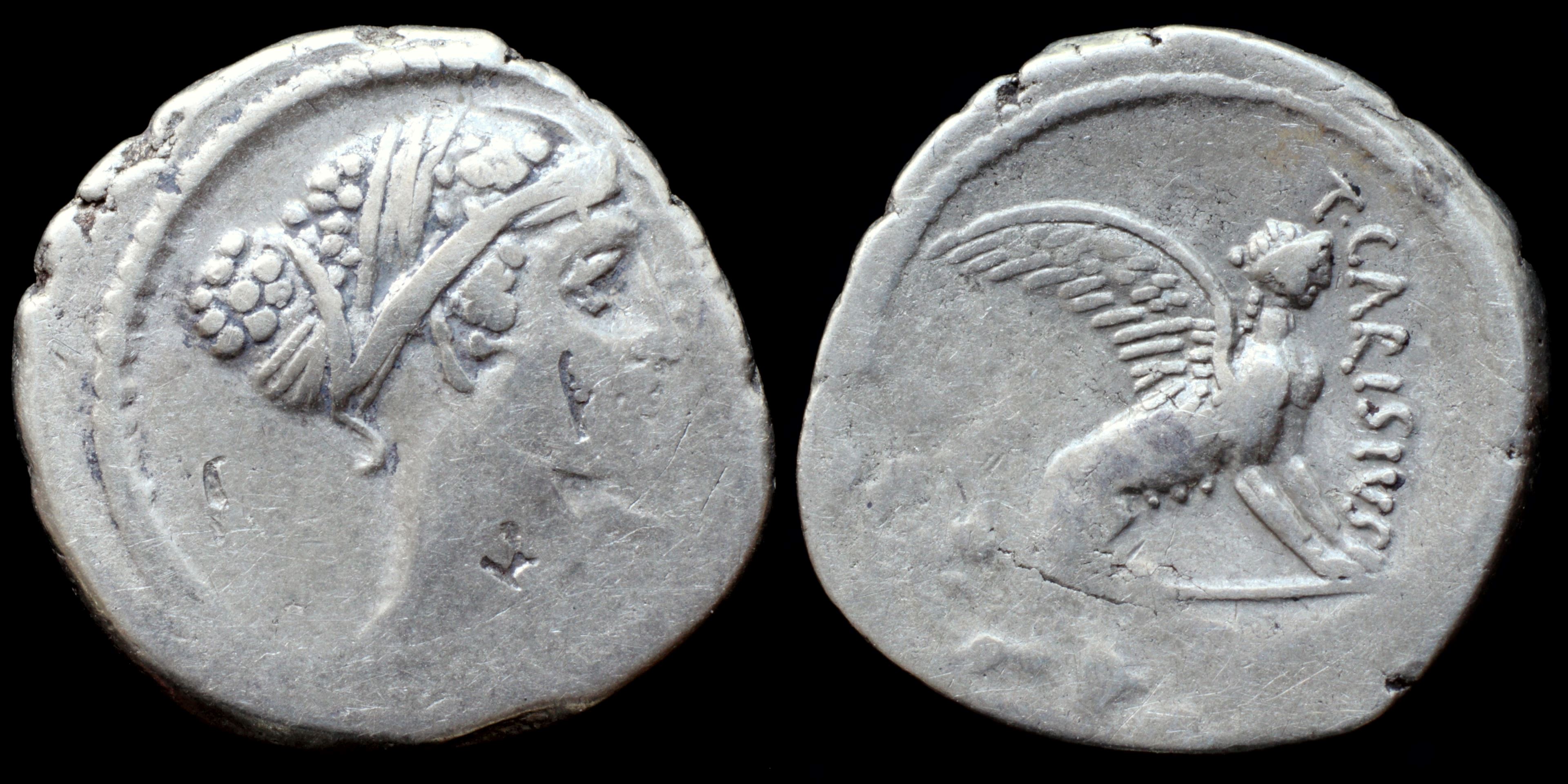
Reverse: sphinx seated right; T·CARISIVS / III·VIR
Die Orientation: -
Weight: 3.8 g

Reverse: Scepter, cornucopia on globe, and rudder; T • CARISI below; all within laurel wreath.
Die Orientation: -
Weight: 3.61 g
There are coins in which Titus Carisius is identified as triumvir monetalis, and another which mentions Publius Carisius, as legatus and propraetor, together with the word Emerita, apparently referring to the town of Augusta Emerita in Lusitania, which the emperor Augustus established for the emeriti, veterans of the war in Hispania. From this it has been conjectured that the praenomen Titus, assigned to the conqueror of the Astures by Cassius Dio, should instead be Publius.
Provenance: Triton XXII (9 January 2019), lot 912. From the Alan J. Harlan Collection, purchased from Freeman & Sear. Ex Numismatica Ars Classica 33 (5 April 2006), lot 339.

Reverse: Sphinx seated right; T • CARISIVS above, III • VIR in exergue.
Die Orientation: -
Weight: 3.8 g
Provenance: Ex Aureo & Calicó Auction 319 – Alba Longa, vol. I (7 November 2018), lot 223, Ex Sotheby's "Greek and Roman coins" (28 October 1993), lot 1385.
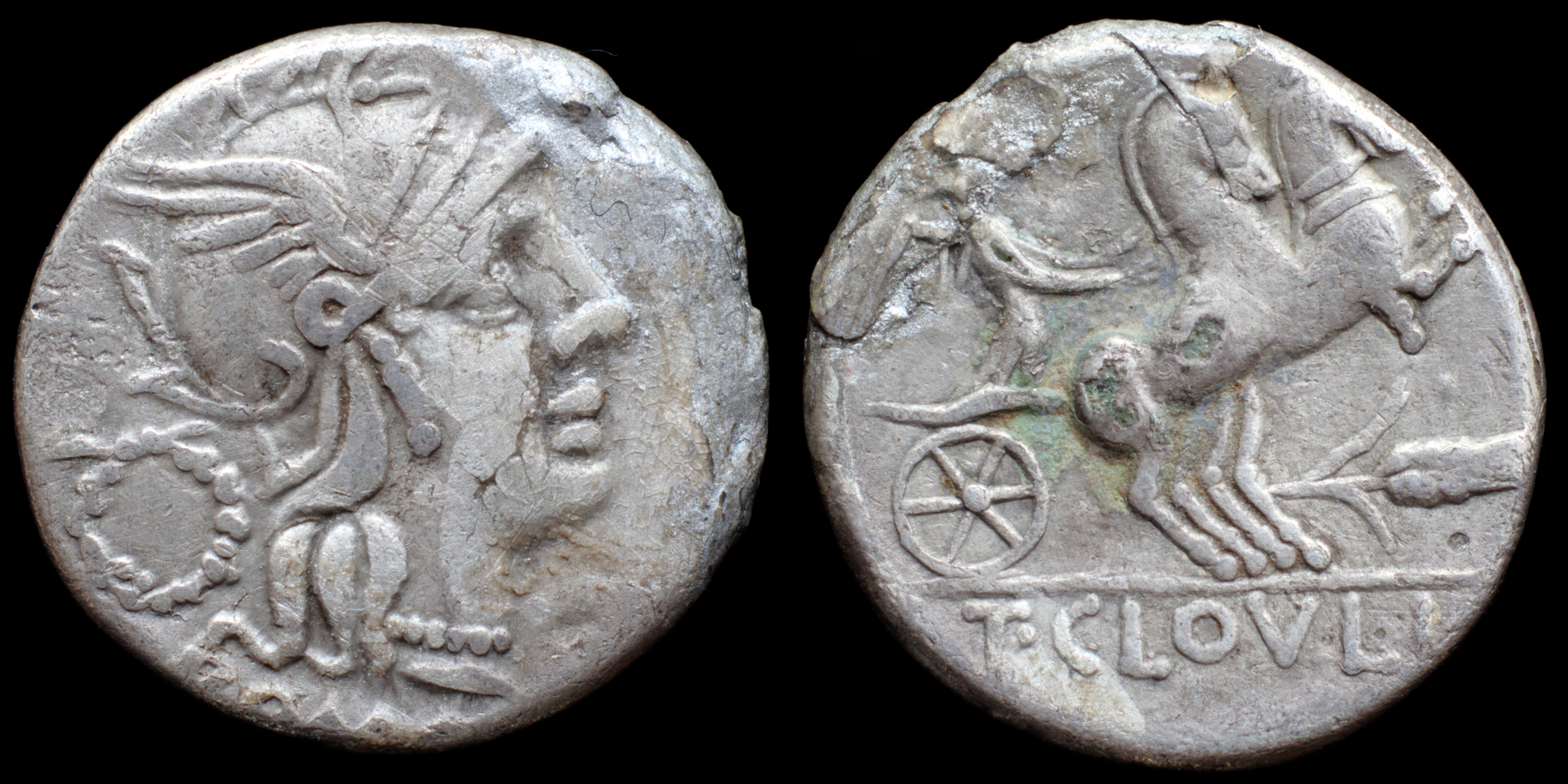
Reverse: Victory in biga right, horses rearing, grain ear below T·CLOVLI
Die Orientation: -
Weight: 2.7 g
unofficial issue - fouré denarius Absence of value mark is very unusual in this period (if it isn't hidden in wheel).
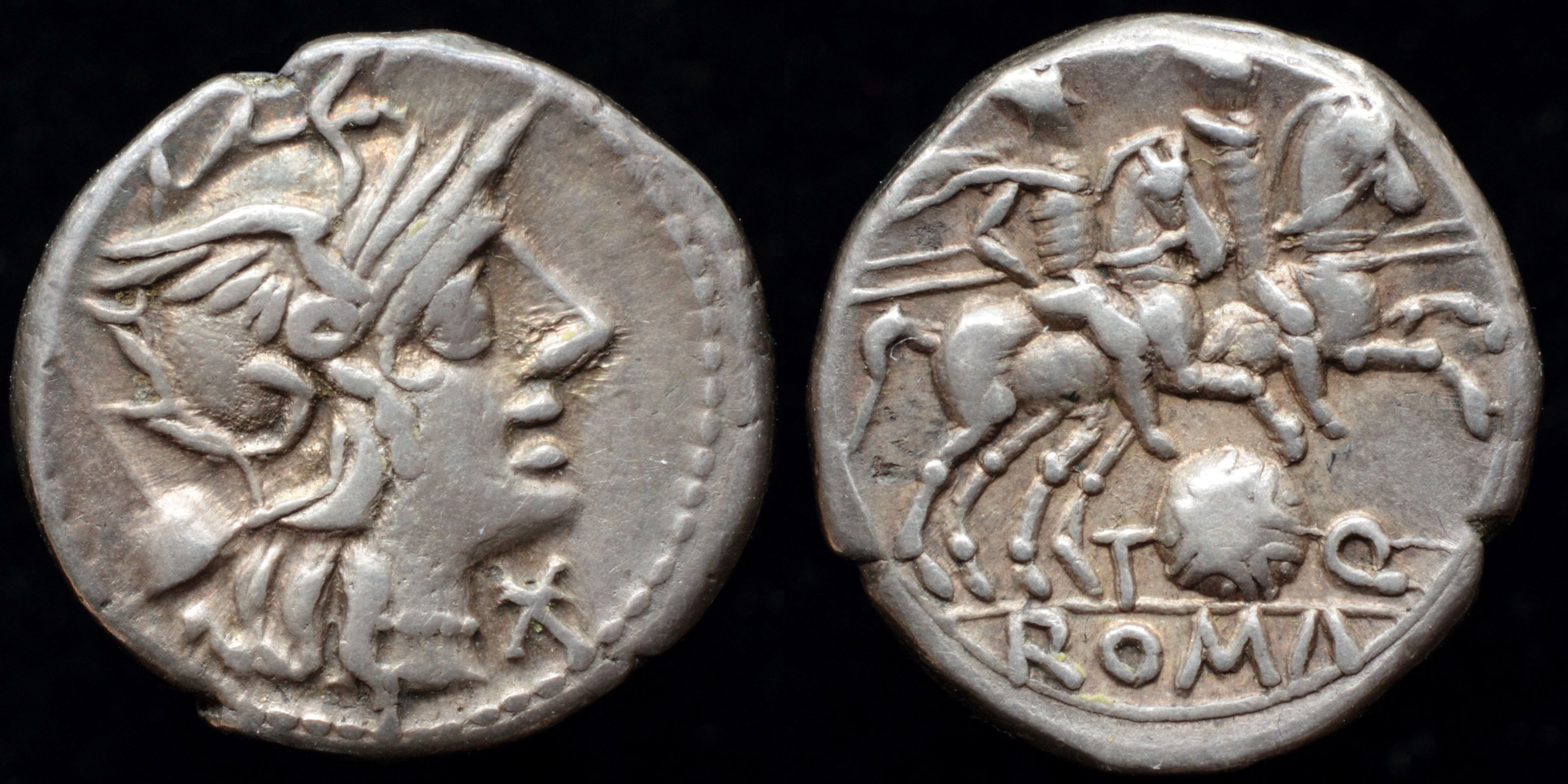
Reverse: Dioscuri right riding on horses, stars over pilei, each holding spear and reins; Macedonian shield below T_Q ROMA
Die Orientation: -
Weight: 3.9 g
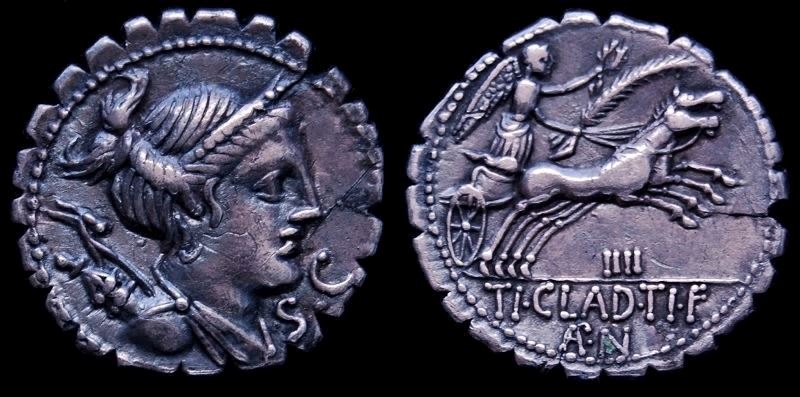
Reverse: Victory in biga riding right, holding palm-branch, reins and wreath, IIII (control mark) below. TI•CLAVD•TI•F AP•N in exergue.
Die Orientation: 10 H
Weight: 3.9 g
Provenance: e-Bay sale (June 2017).
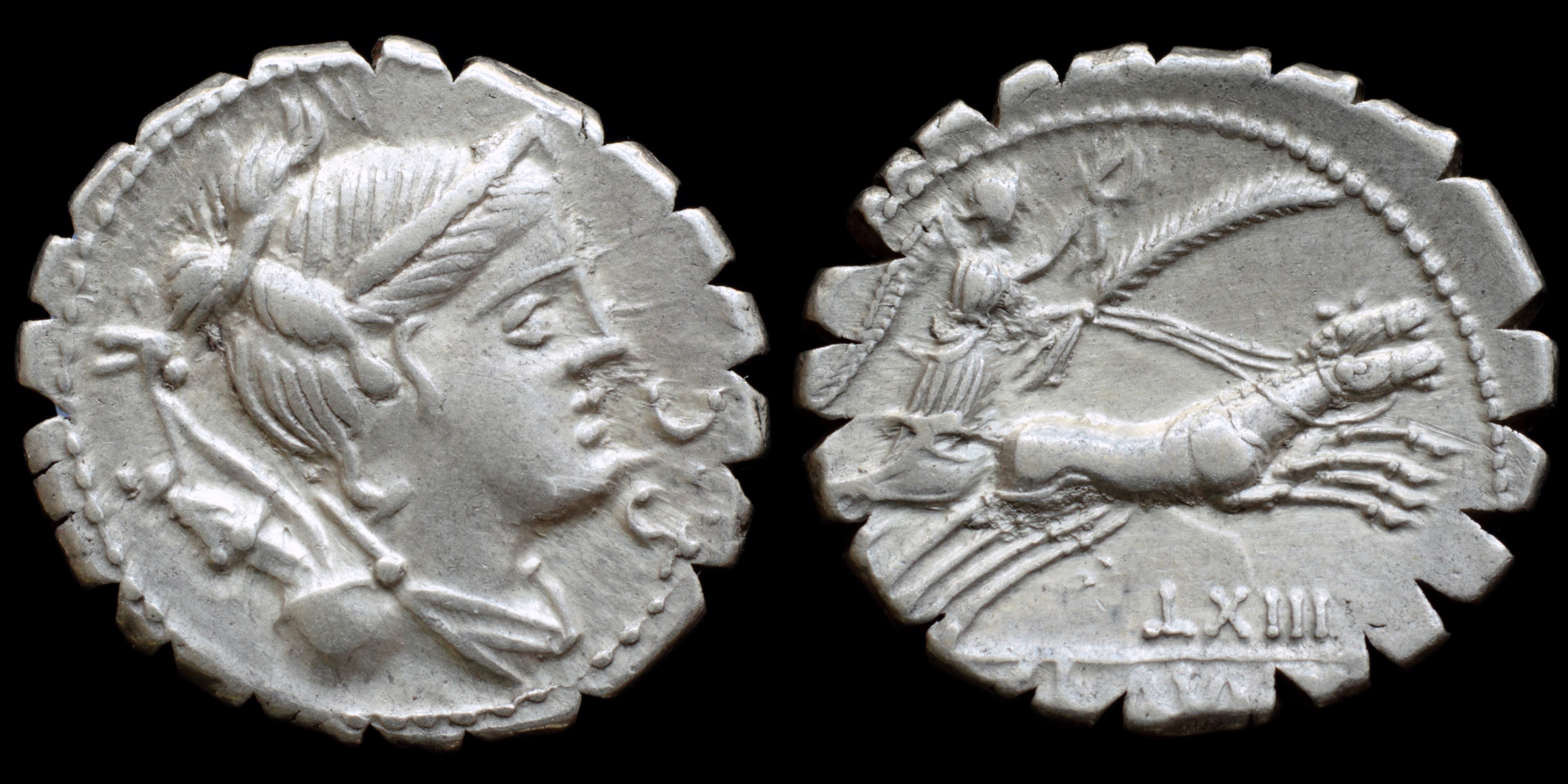
Reverse: Victory in biga right, holding wreath, reins and palm branch, LXIII TI·CLA(VD)·TI·F / (AP)·N
Die Orientation: -
Weight: 3.8 g
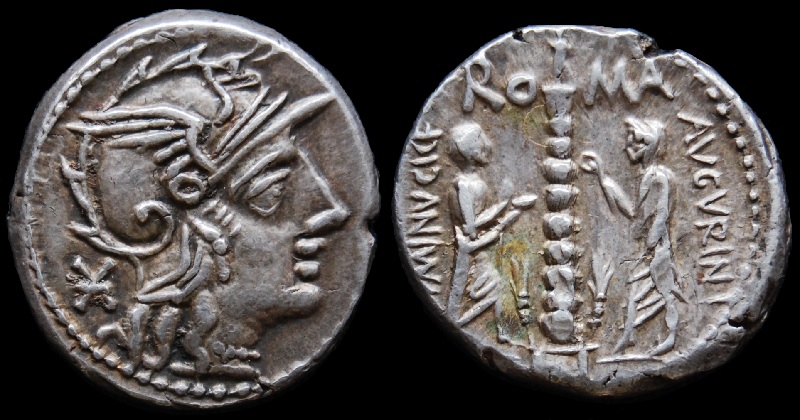
Reverse: Ionic column surmounted by statue; at base, two grain stalks; on left, L. Minucius Augurinus, holding patera, foot on modius; on right, M. Minucius Faesus , holding lituus; TI MINVCI CF upwards to left; AVGVRINI downwards to right. ROMA across fields.
Die Orientation: -
Weight: 3.97 g
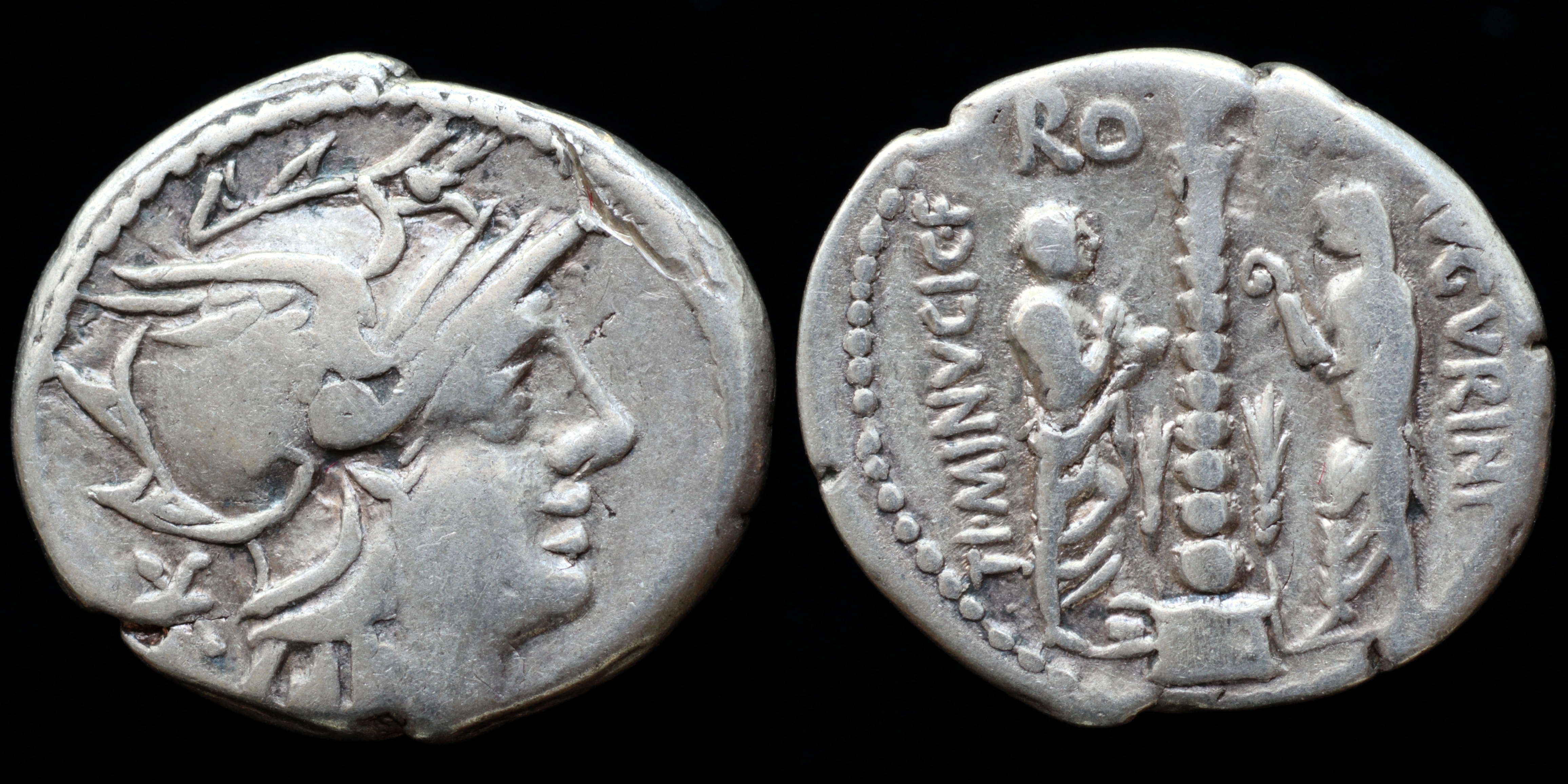
Reverse: Column surmounted by statue holding scepter, heads of grain around column; L. Minucius Augurinus standing right, wearing toga, foot on modius, holding patera; M. Minucius Faesus wearing toga, holding lituus; RO_MA / TI·MINVCI C·F__AVGVRINI
Die Orientation: -
Weight: 3.9 g
Column (Columna Minucia) surmounted by statue holding scepter, heads of grain around column; L. Minucius Augurinus (Praefectus Annonae 439 BC) standing right, wearing toga, foot on modius, holding patera; M. Minucius Faesus (Augur 300 BC) wearing toga, holding lituus
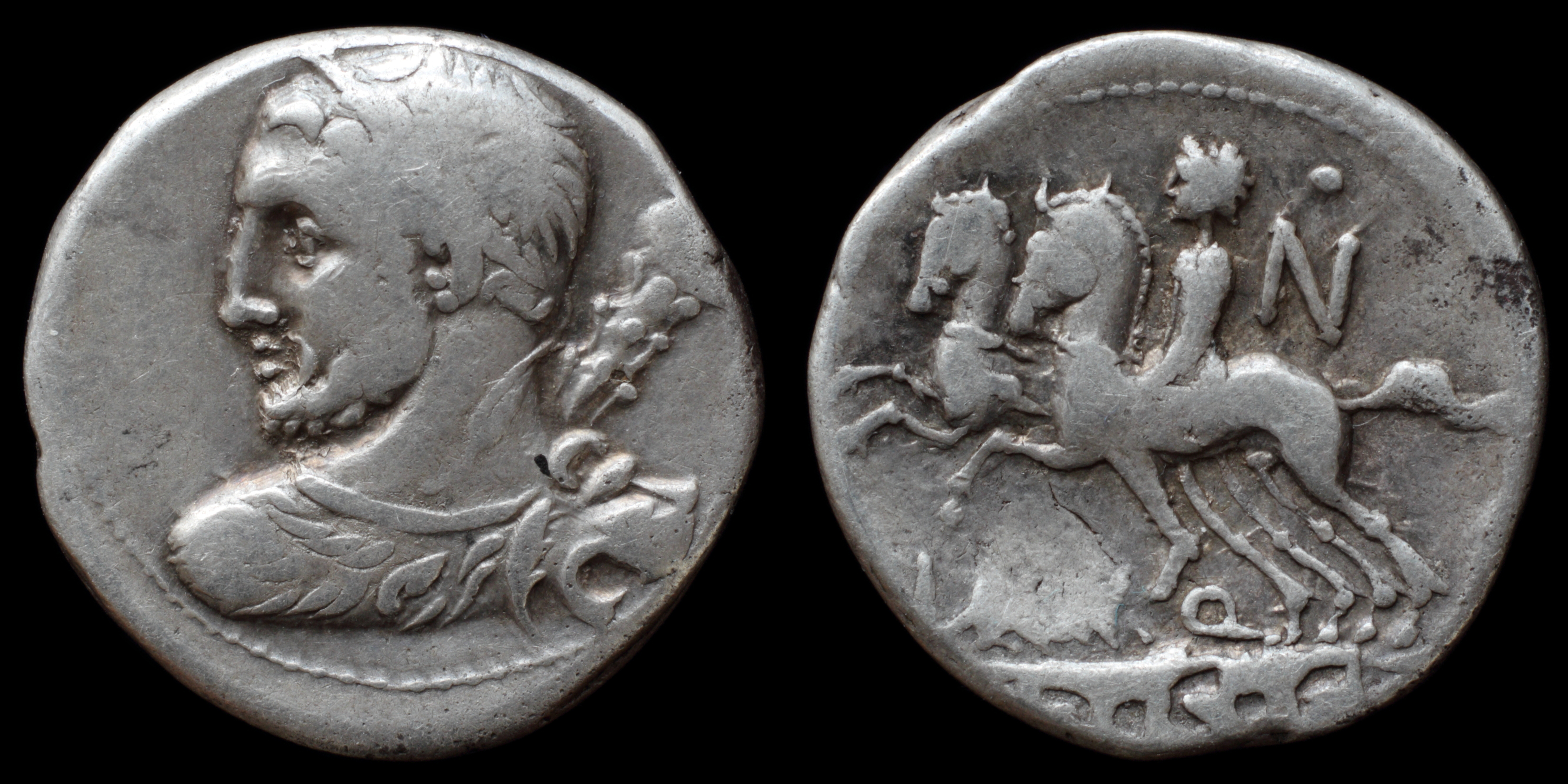
Reverse: Desultor galloping left, his second horse at his side; TI rat (control symbol) Q / • over N / D•S•S incuse on tablet
Die Orientation: -
Weight: 3.8 g
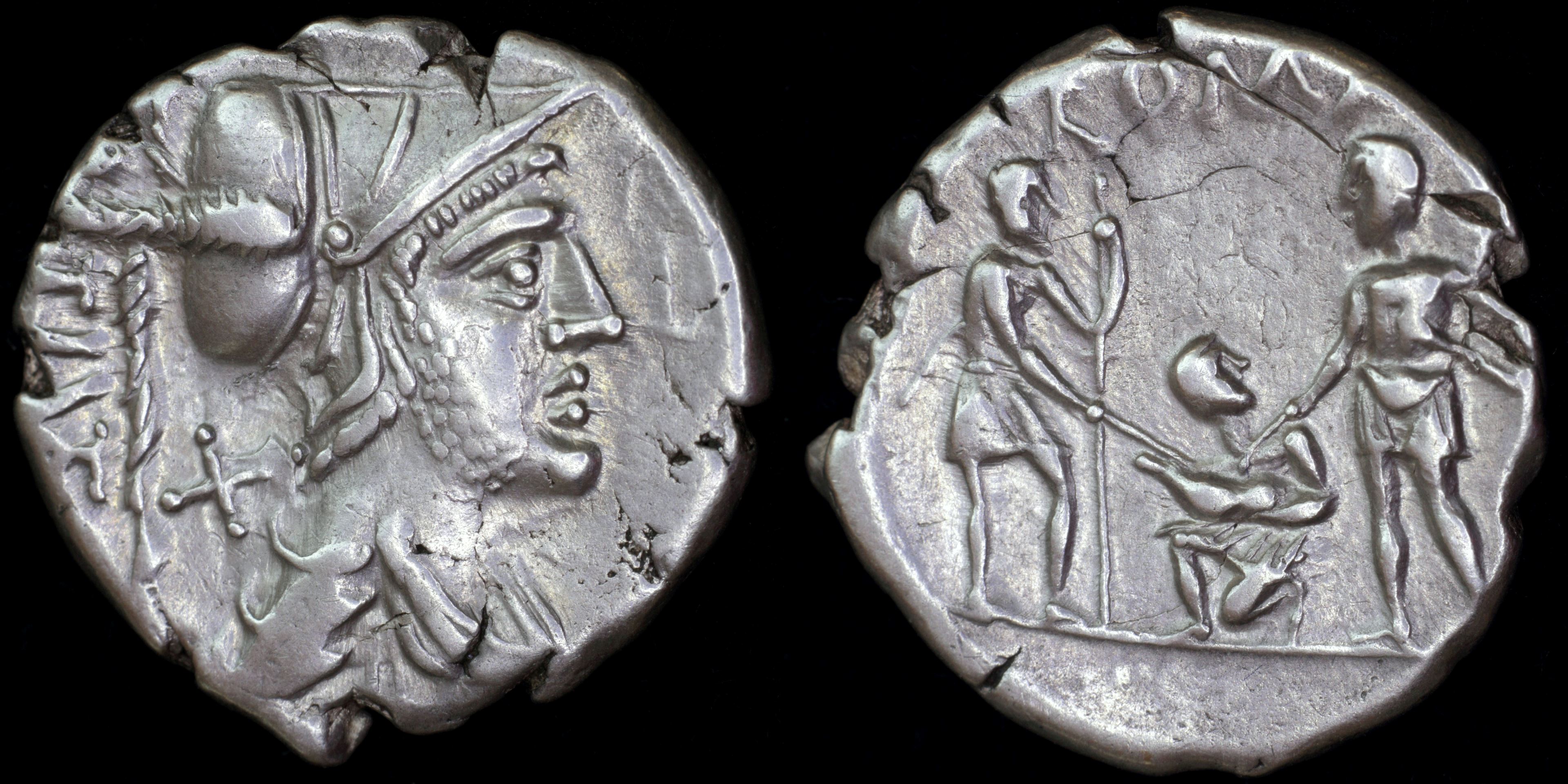
Reverse: Oath-taking scene*, two standing warriors holding spears and facing attendant kneeling in center, holding sacrificial pig. ROMA
Die Orientation: -
Weight: 3.9 g
.jpg)
Reverse: PONTIF MAXIM: Female figure, draped, right, seated, right holding branch and long vertical sceptre, on chair with ornamented legs; below chair, a single line
Die Orientation: -
Weight: 3.44 g
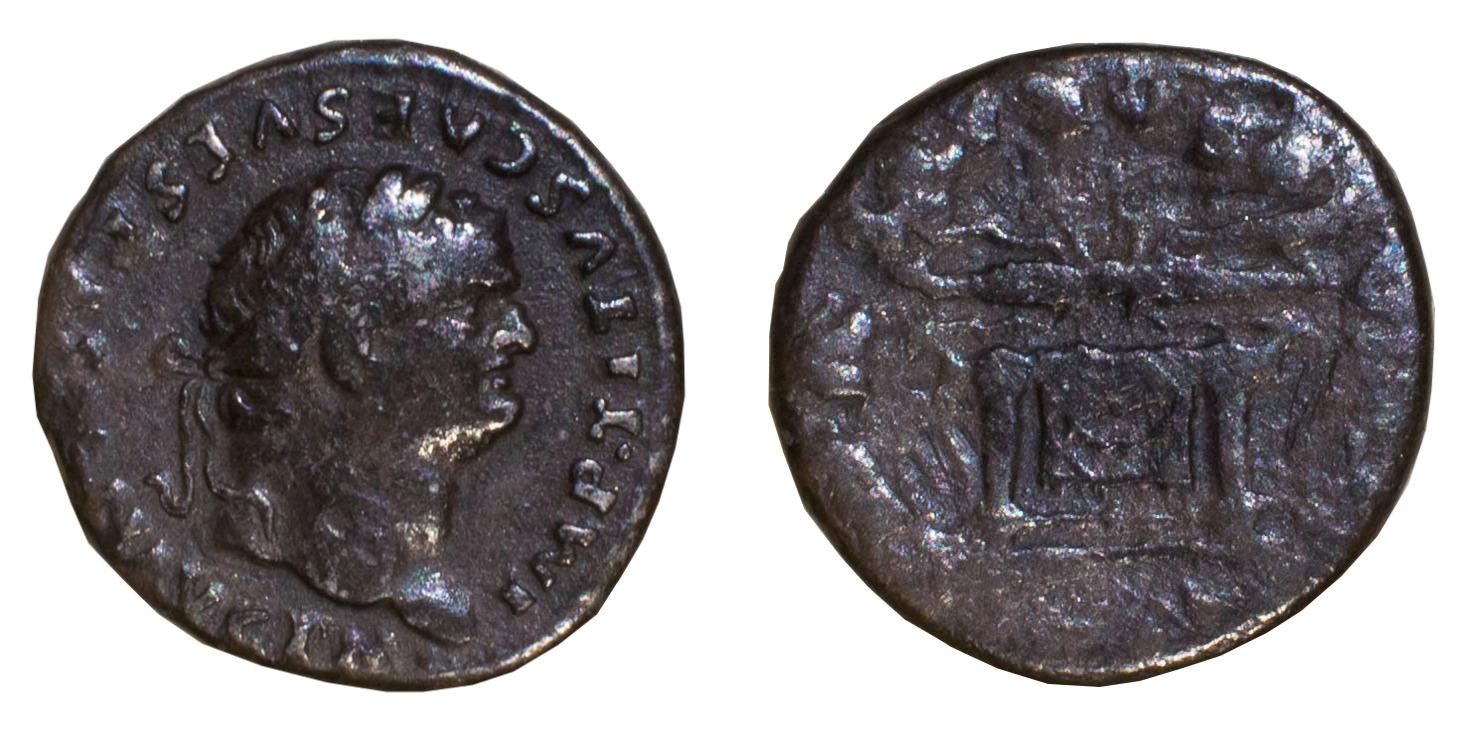
Reverse: TR P IX IMP XV COS VIII P P, Pulvinar (throne) of Jupiter and Juno: square seat, draped and surmounted by horizontal winged thunderbolt
Die Orientation: 12 H
Weight: 2.63 g
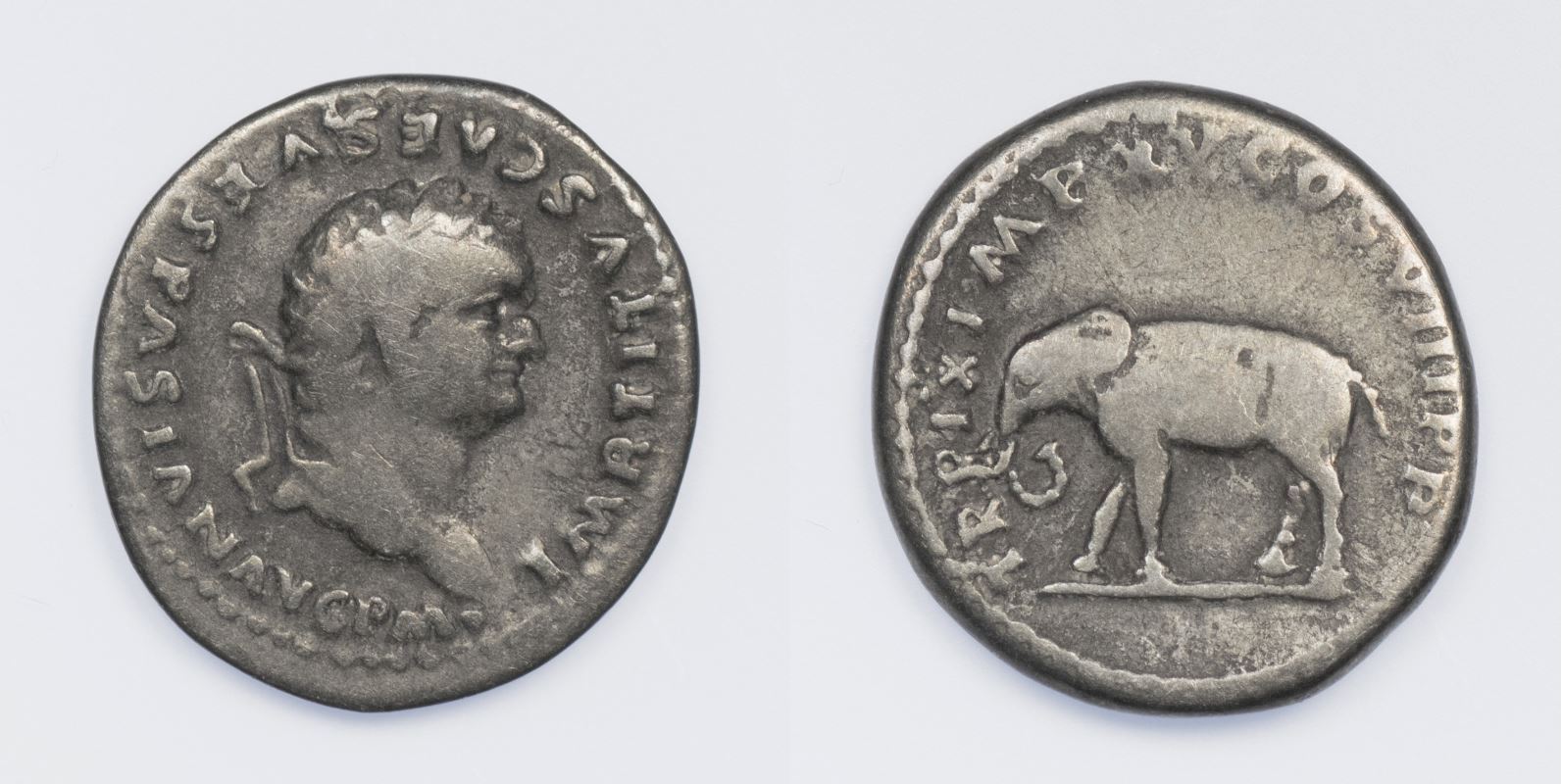
Reverse: TR P IX IMP XV COS VIII P P, Elephant standing facing left
Die Orientation: 6 H
Weight: 3.29 g
The dots around "IMP" seem to be some sort of minor sub variety, it's not on all of this particular type.
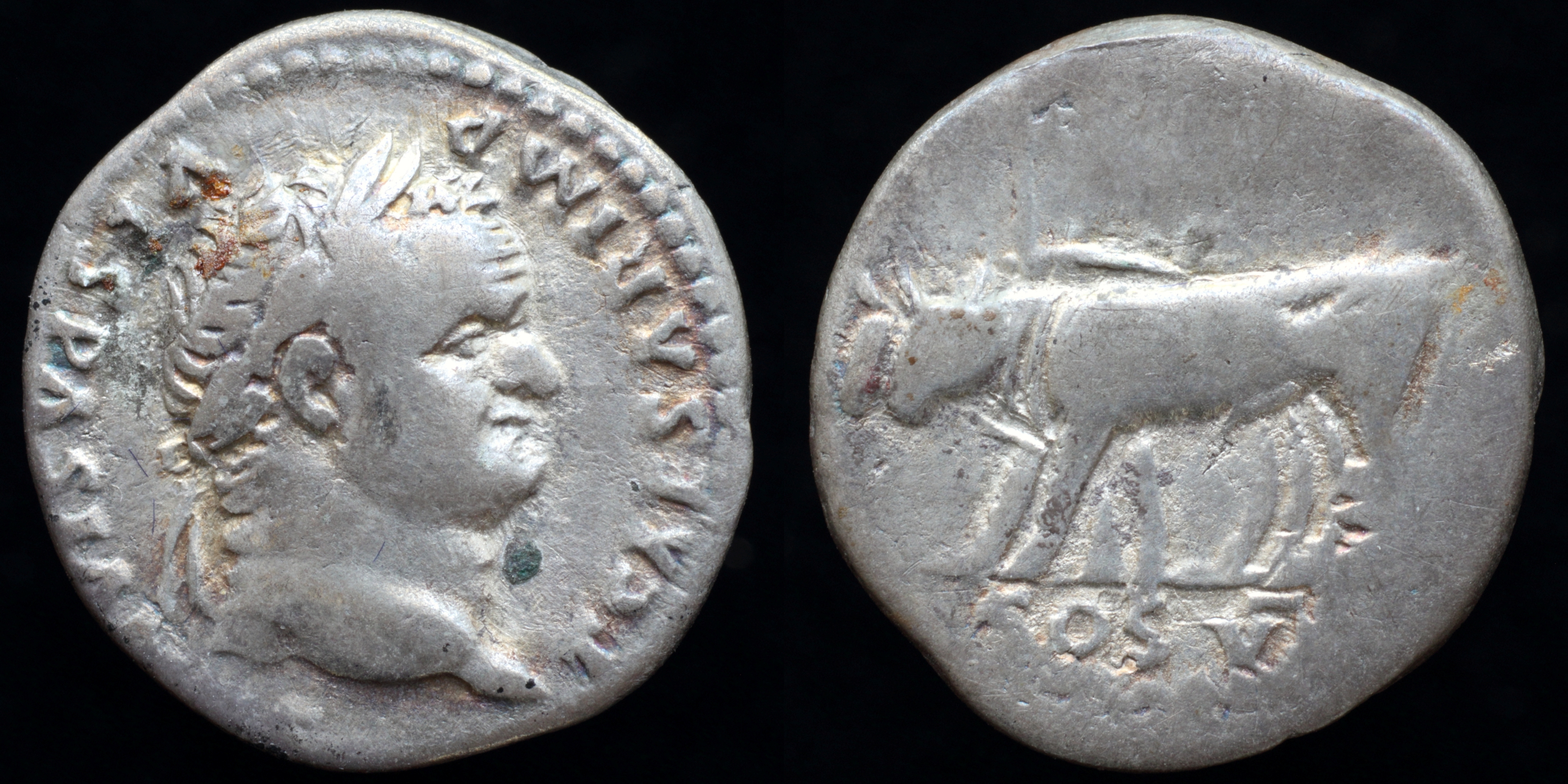
Reverse: yoke of oxen left; COS VI
Die Orientation: -
Weight: 3.32 g
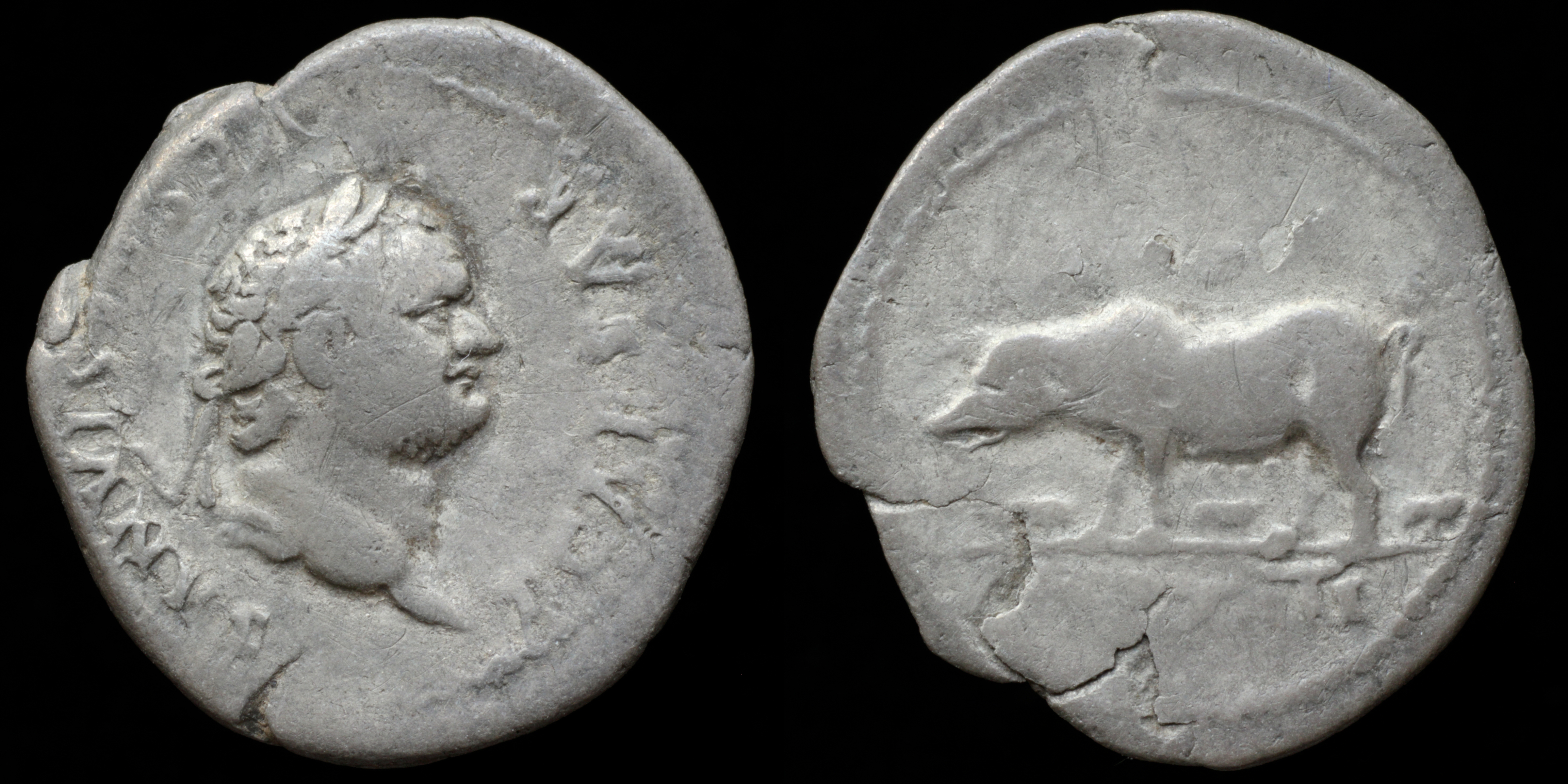
Reverse: sow left with three piglets; IMP XIII
Die Orientation: -
Weight: 2.69 g
_2021.jpg)
Reverse: TR P IX IMP XV COS VIII P P, elephant, wearing armour, walking left
Die Orientation: 6 H
Weight: 3.23 g
(30).jpg)
Reverse: TR P IX IMP XV COS VIII P P, dolphin coiled around anchor
Die Orientation: 6 H
Weight: 3.28 g
.png)
Reverse: PONTIF TR P COS III, Winged caduceus.
Die Orientation: -
Weight: -

Reverse: TR P IX IMP XV COS VIII P P. Elephant advancing left
Die Orientation: 0 H
Weight: 3.28 g
Ex HJB
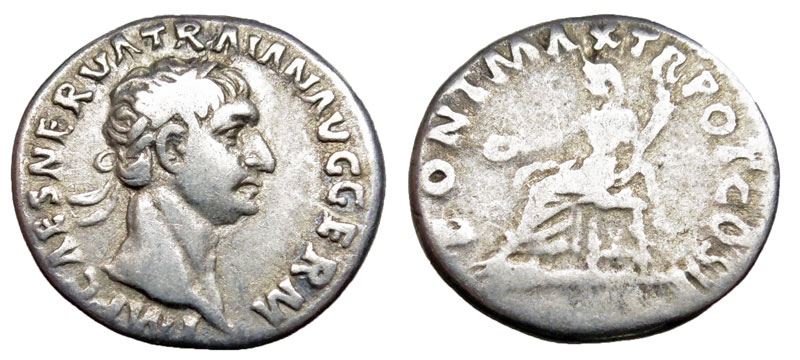
Reverse: PONT MAX TR POT COS II, Vesta, veiled, seated left, holding patera and torch
Die Orientation: 6 H
Weight: 3.43 g
.jpg)
Reverse: SPQR OPTIMO PRINCIPI / Virtus standing right, holding reversed spear and parazonium; right foot standing on helmet
Die Orientation: -
Weight: 3.18 g
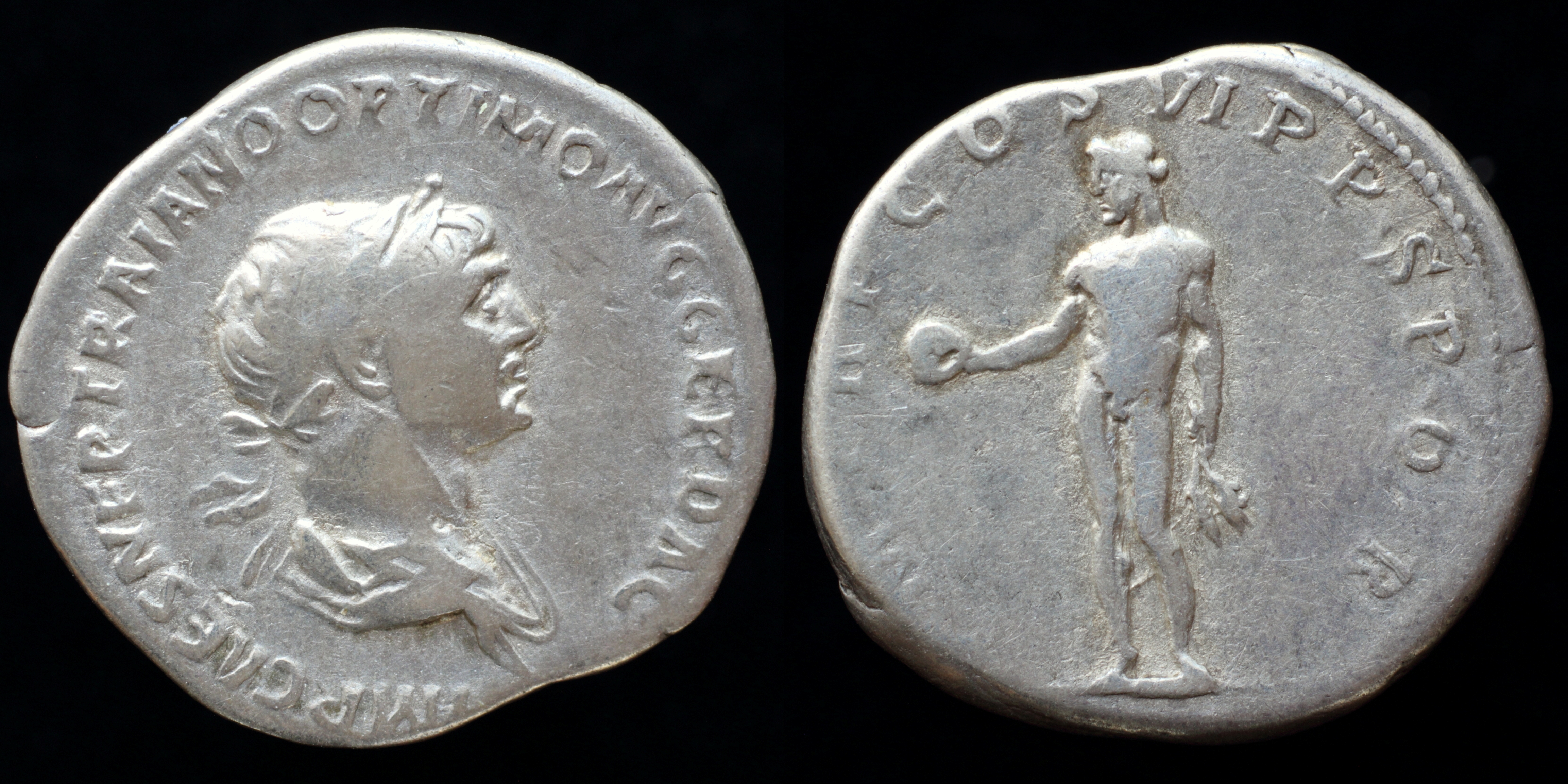
Reverse: Genius standing left holding patera and grain ears; P M TR P COS VI P P•S•P•Q•R
Die Orientation: -
Weight: 3.32 g
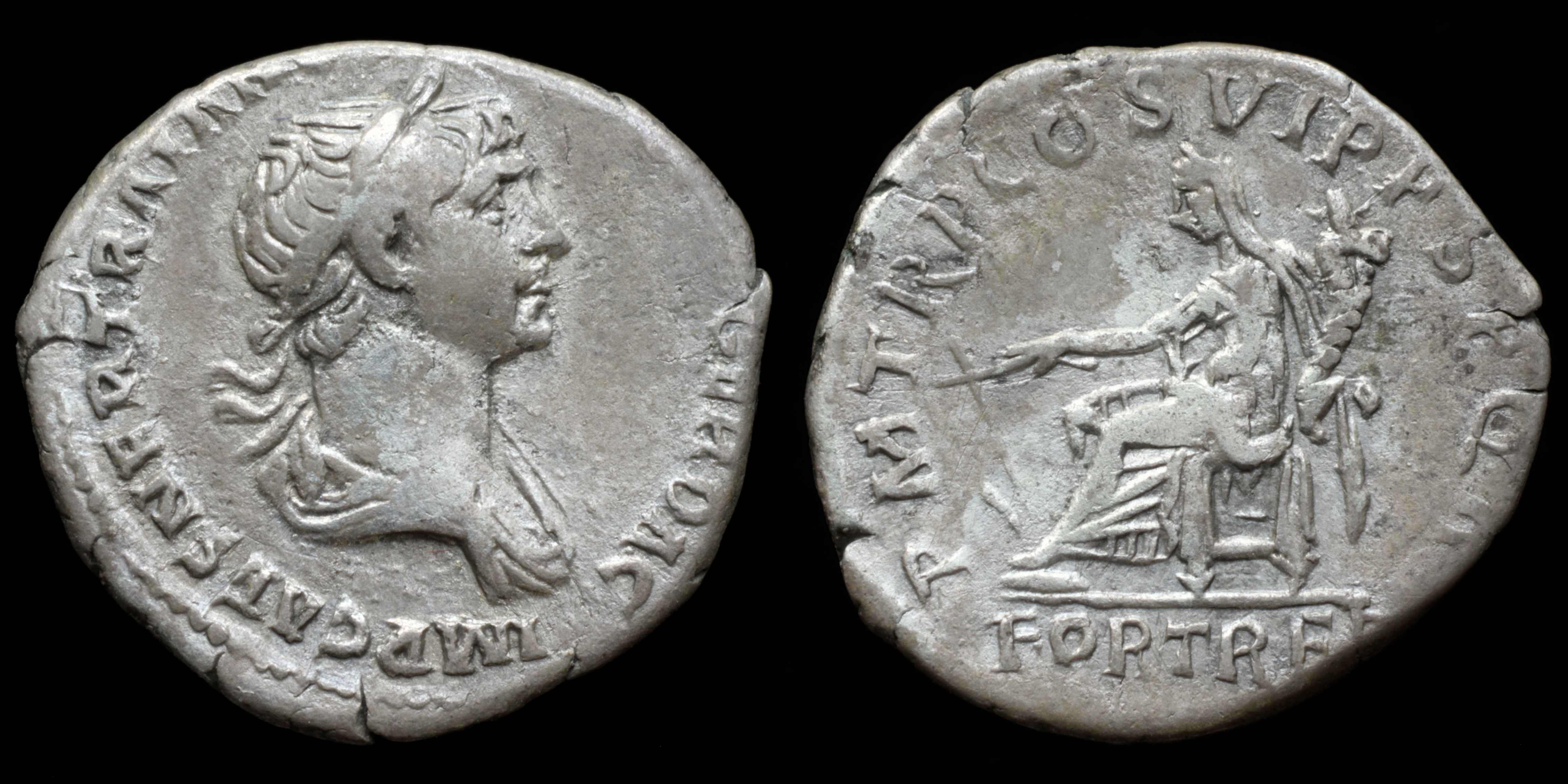
Reverse: Fortuna Redux seated left holding rudder and cornucopiae; P M TR P COS VI P P SPQR / FORT RED
Die Orientation: -
Weight: 3.18 g
(19).JPG)
Reverse: SPQR OPTIMO PRINCIPI, Trajan’s column, surmounted with statue of the Emperor, with two eagles at base
Die Orientation: 7 H
Weight: 3.22 g
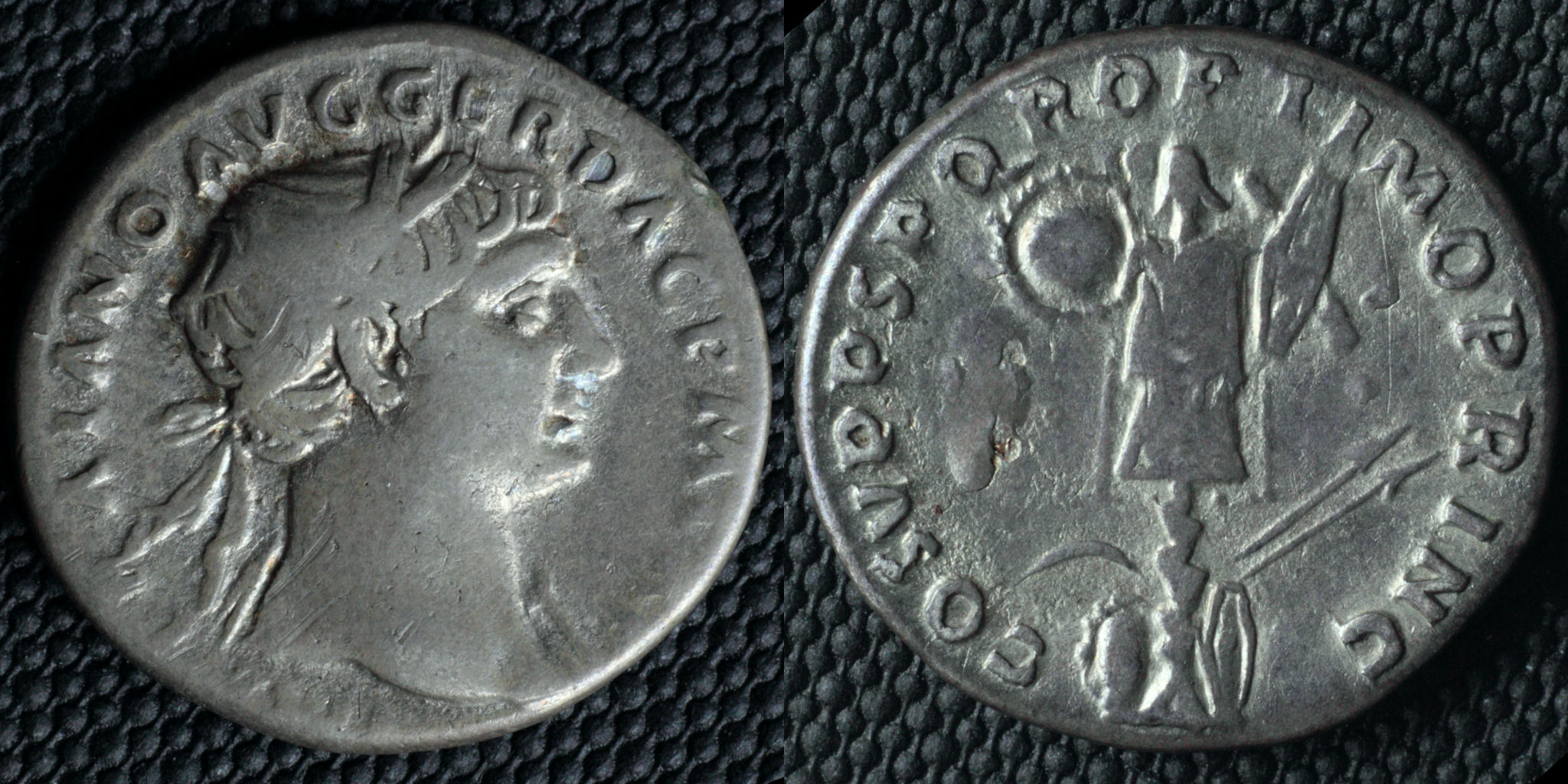
Reverse: trophy, weapons below; COS V P P SPQR OPTIMO PRINC
Die Orientation: -
Weight: 2.99 g
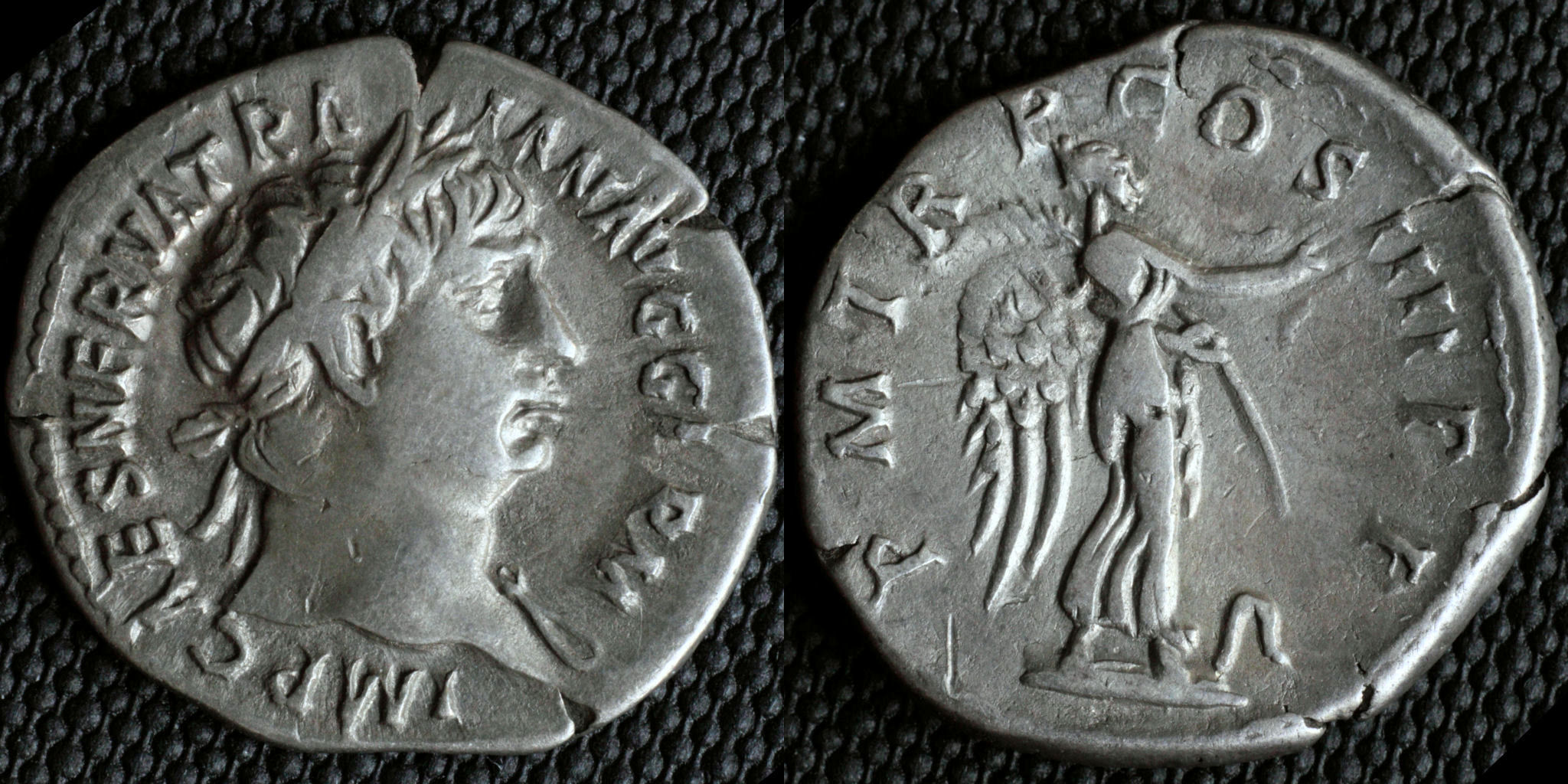
Reverse: Victory on prow right holding wreath and palm branch; P M TR P COS IIII P P
Die Orientation: -
Weight: 3.18 g
(1).jpg)
Reverse: P M TR P COS VI P P S P Q R, Mars advancing right, carrying spear and trophy
Die Orientation: 6 H
Weight: 3.22 g
.jpg)
Reverse: P M TR P COS VI P P S P Q R FORT RED: Fortuna, draped, veiled, seated left on chair without back, holding rudder set on ground in right hand and cornucopiae in left
Die Orientation: -
Weight: 3.29 g
.jpg)
Reverse: SPQR OPTIMO PRINCIPI / Aquila between vexillum & legion standard
Die Orientation: -
Weight: 3.15 g
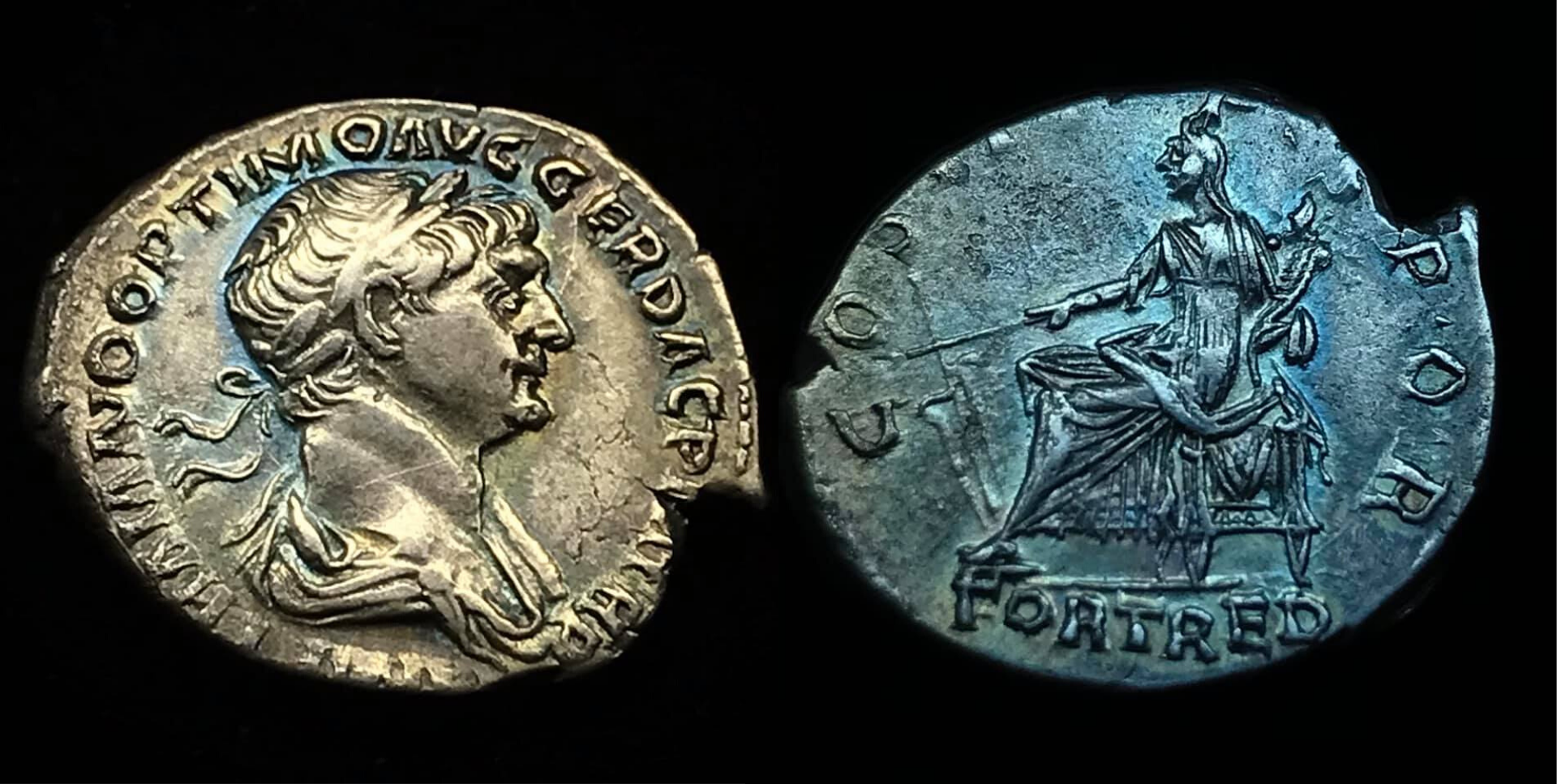
Reverse: COS VI S P Q R, Fortuna seated left, holding rudder and cornucopiae; FORT RED in exergue
Die Orientation: -
Weight: 3.19 g
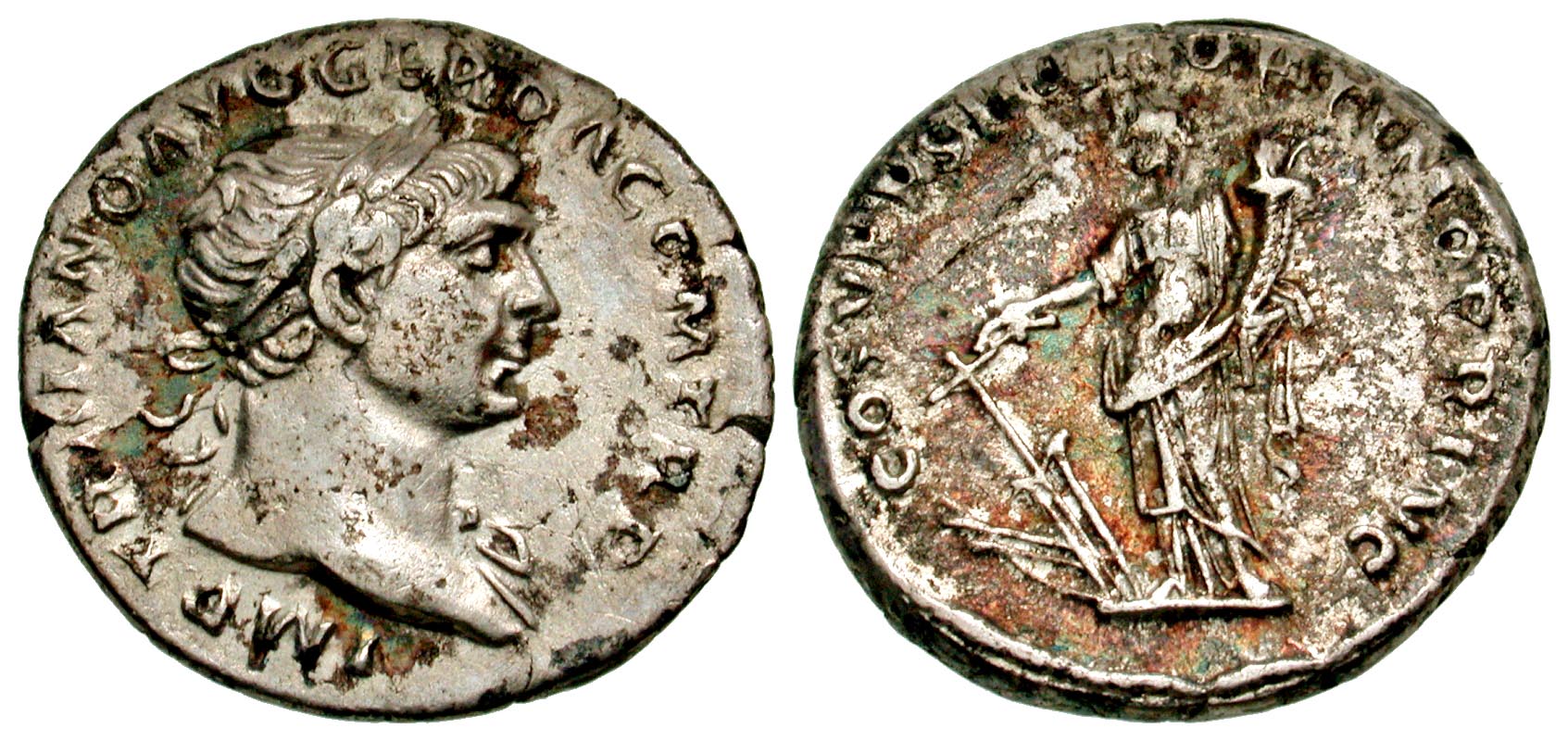
Reverse: COS V P P S P Q R OPTIMO PRINC, Fortuna standing facing, head left, holding rudder and cornucopia, forepart of ship at left
Die Orientation: 7 H
Weight: 3.01 g
Good VF, minor deposits in fields Spotty iridescent toning Ex Tom Buggey Collection
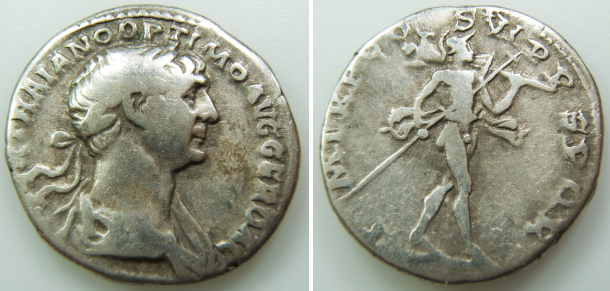
Reverse: PM TRP COS VI PP SPQR - Mars walking right, holding spear and trophy.
Die Orientation: 6 H
Weight: 3.3 g
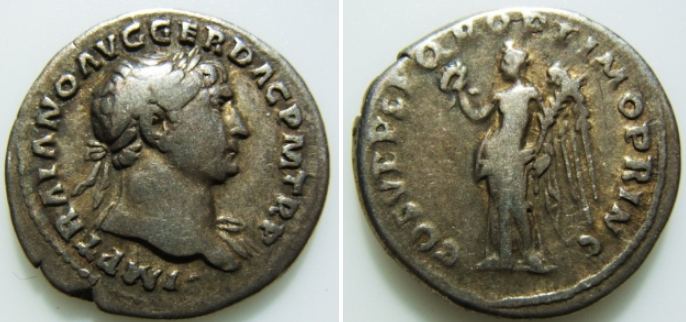
Reverse: COS V PP SPQR OPTIMO PRINC - Victory standing left, holding wreath and palm.
Die Orientation: 6 H
Weight: 3.35 g
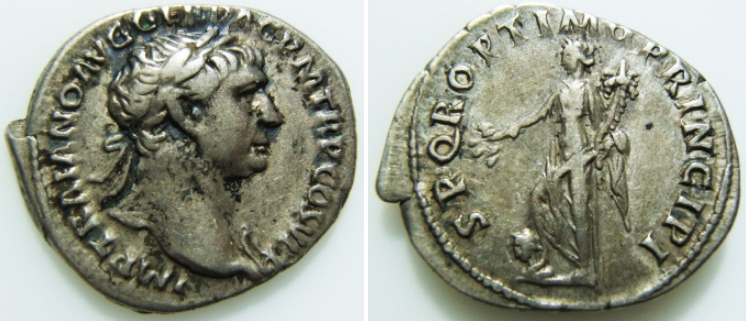
Reverse: SPQR OPTIMO PRINCIPI - Pax standing left, holding branch and cornucopiae, foot on Dacian captive.
Die Orientation: 6 H
Weight: 2.96 g
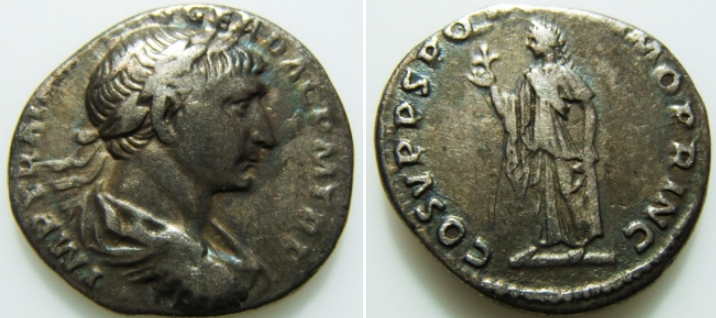
Reverse: COS V PP SPQR OPTIMO PRINC - Spes walking left, holding flower and lifting skirt.
Die Orientation: 6 H
Weight: 3.3 g
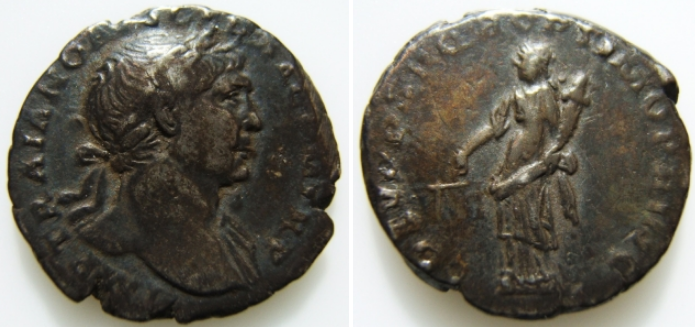
Reverse: COS V PP SPQR OPTIMO PRINC - Aequitas standing left, holding scales and cornucopiae.
Die Orientation: 12 H
Weight: 3.12 g
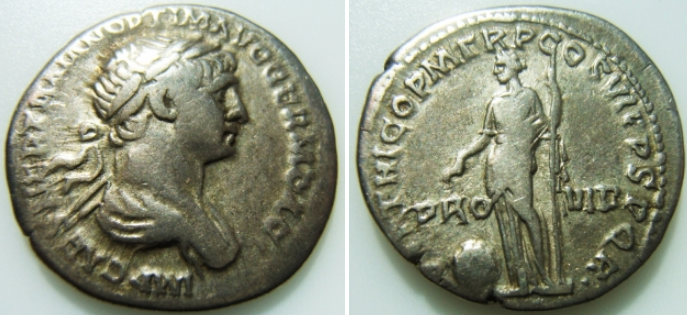
Reverse: PARTHICO P M TR P COS VI P P S P Q R / PRO-VID - Providentia standing left, holding sceptre, resting left arm on column, pointing with a baton at a globe at feet, PRO-VID across fields.
Die Orientation: 6 H
Weight: 2.91 g
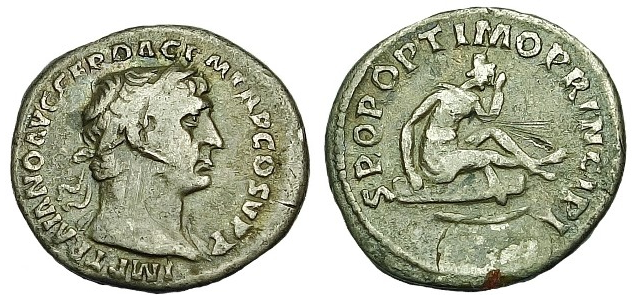
Reverse: SPQR OPTIMO PRINCIPI - Dacia seated right on shield in mournful attitude, curved sword below.
Die Orientation: 6 H
Weight: 2.74 g
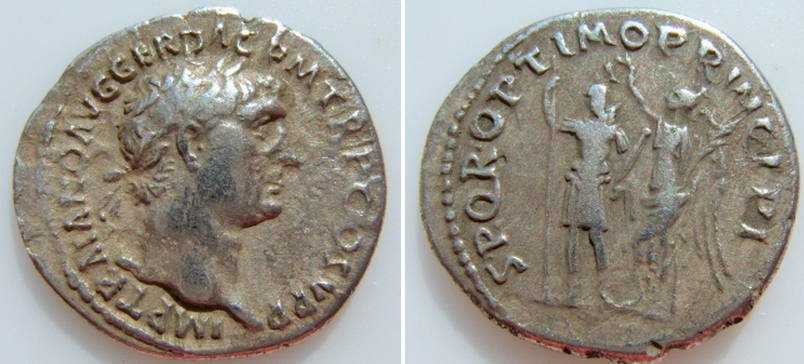
Reverse: SPQR OPTIMO PRINCIPI - Trajan standing facing, crowned by Victory standing left beside him.
Die Orientation: 12 H
Weight: 3.18 g
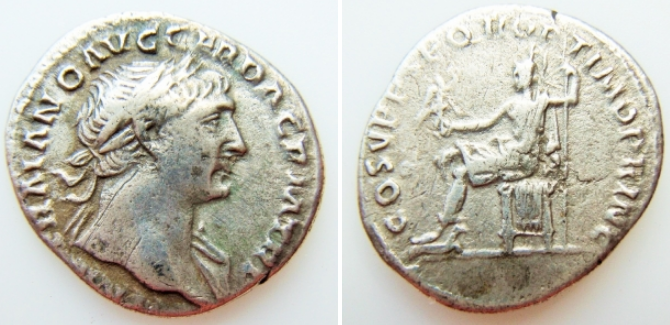
Reverse: COS V P P SPQR OPTIMO PRINC - Roma seated left, holding a Victory in right hand and a spear in left hand.
Die Orientation: 7 H
Weight: 3 g
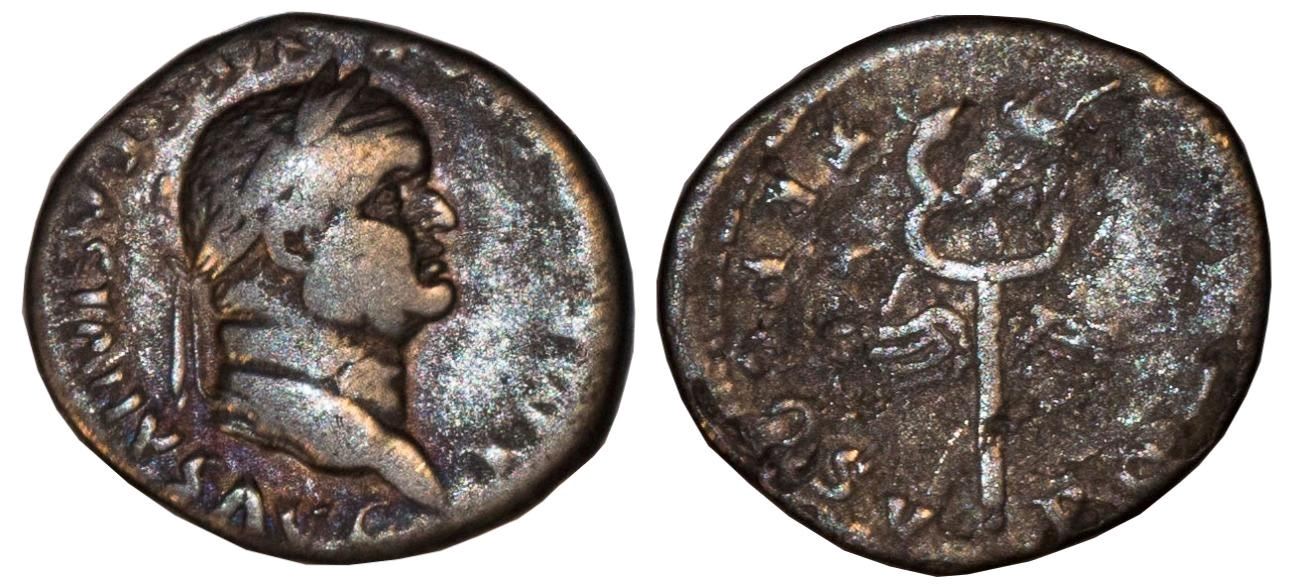
Reverse: PO[..] TRP COS V, Winged Caduceus
Die Orientation: 12 H
Weight: 2.5 g
.jpg)
Reverse: COS VIII, Mars standing left, holding spear & trophy.
Die Orientation: 0 H
Weight: 0 g
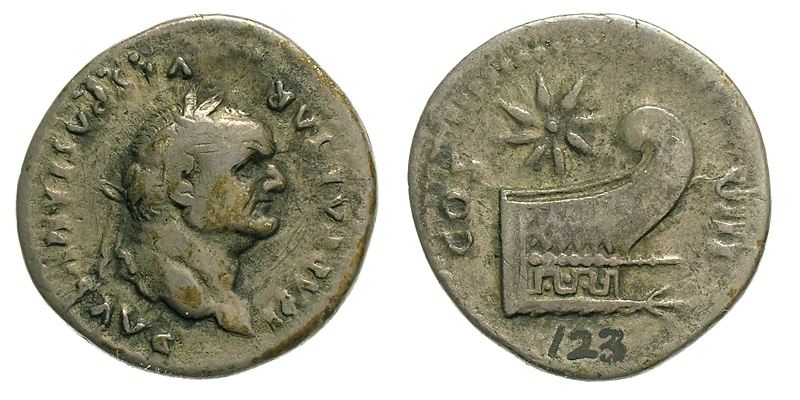
Reverse: Rev:COS VIII Prow right, large start above. Old ink collectors mark in exergue (123)
Die Orientation: 6 H
Weight: 3.19 g
.jpg)
Reverse: TITVS ET DOMITIAN CAES PRIN IV, Titus and Domitian, seated facing left side by side on curule chairs, each holding branch extended in right hand, left hands at side
Die Orientation: 6 H
Weight: 2.27 g

Reverse: COS V
Die Orientation: 0 H
Weight: 2.6 g
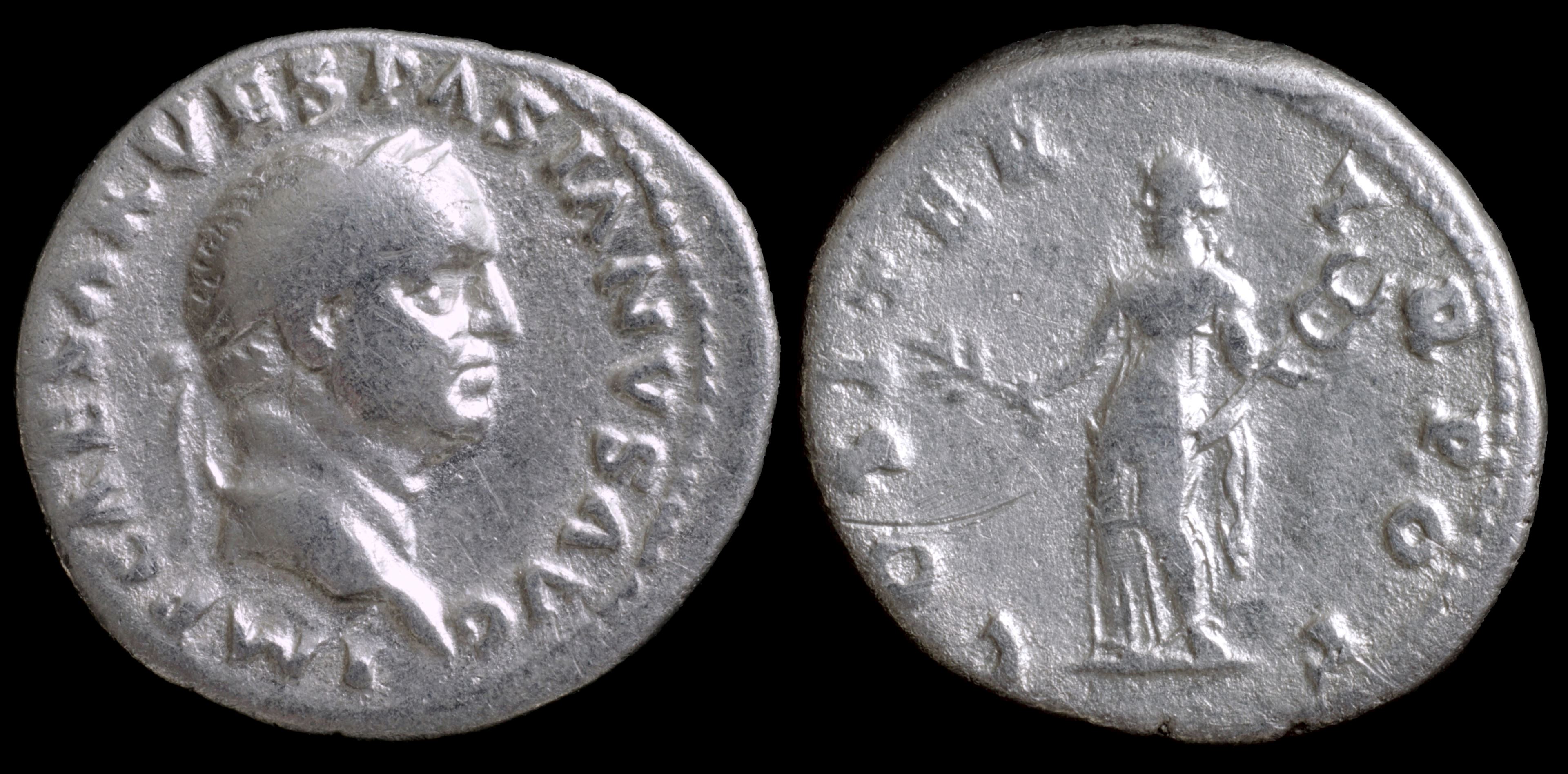
Reverse: Pax holding branch and caduceus; COS ITER__TR POT
Die Orientation: -
Weight: 3.05 g
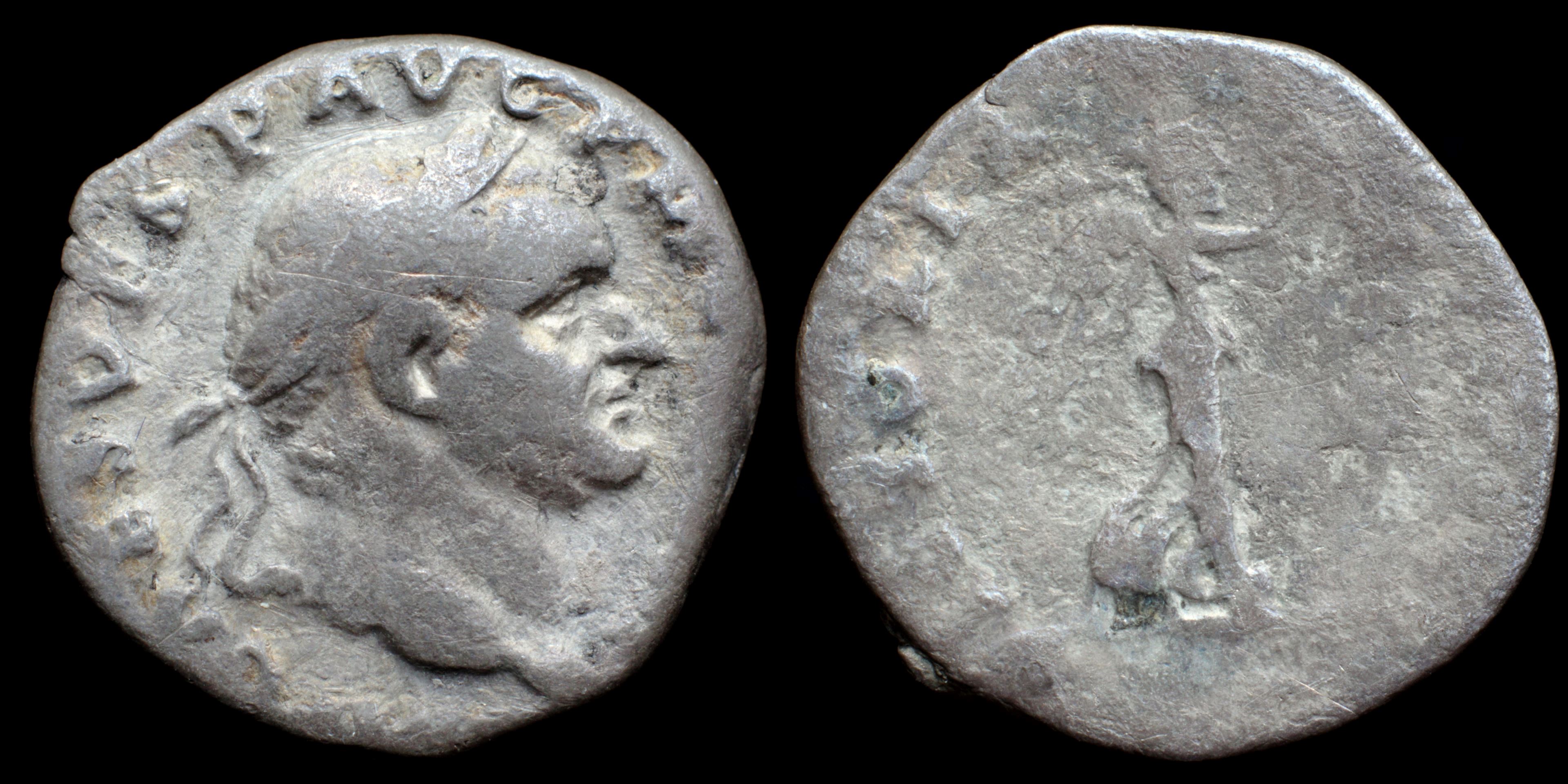
Reverse: Victory advancing right with palm, placing wreath on a standard; VICTORIA__AVGVSTI
Die Orientation: -
Weight: 3.02 g
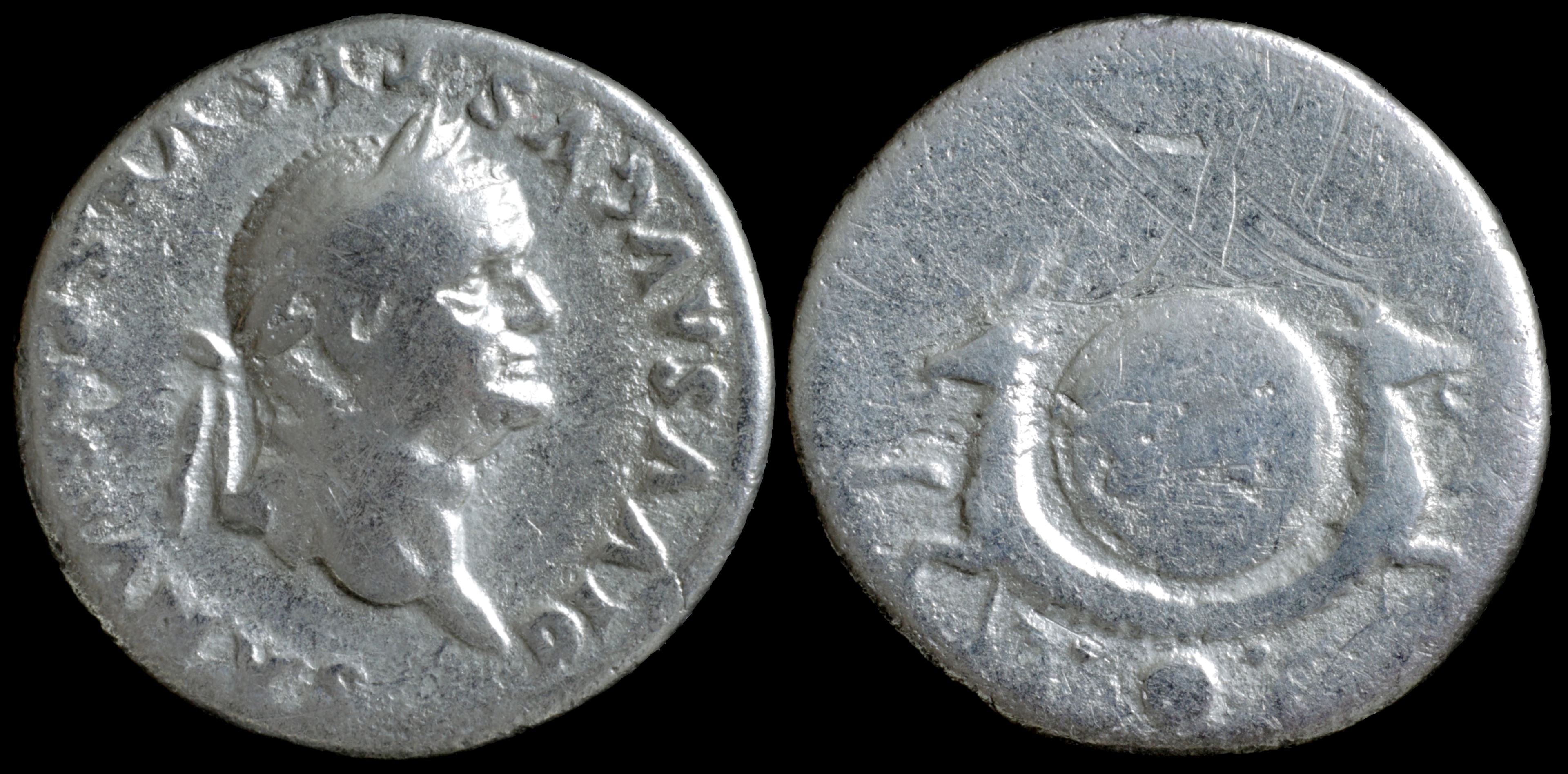
Reverse: Shield inscribed S C held by two capricornii, globe below
Die Orientation: -
Weight: 3.18 g
.jpg)
Reverse: CE-RES AVGVST / Ceres standing left, holding grain ears
Die Orientation: -
Weight: 3.09 g
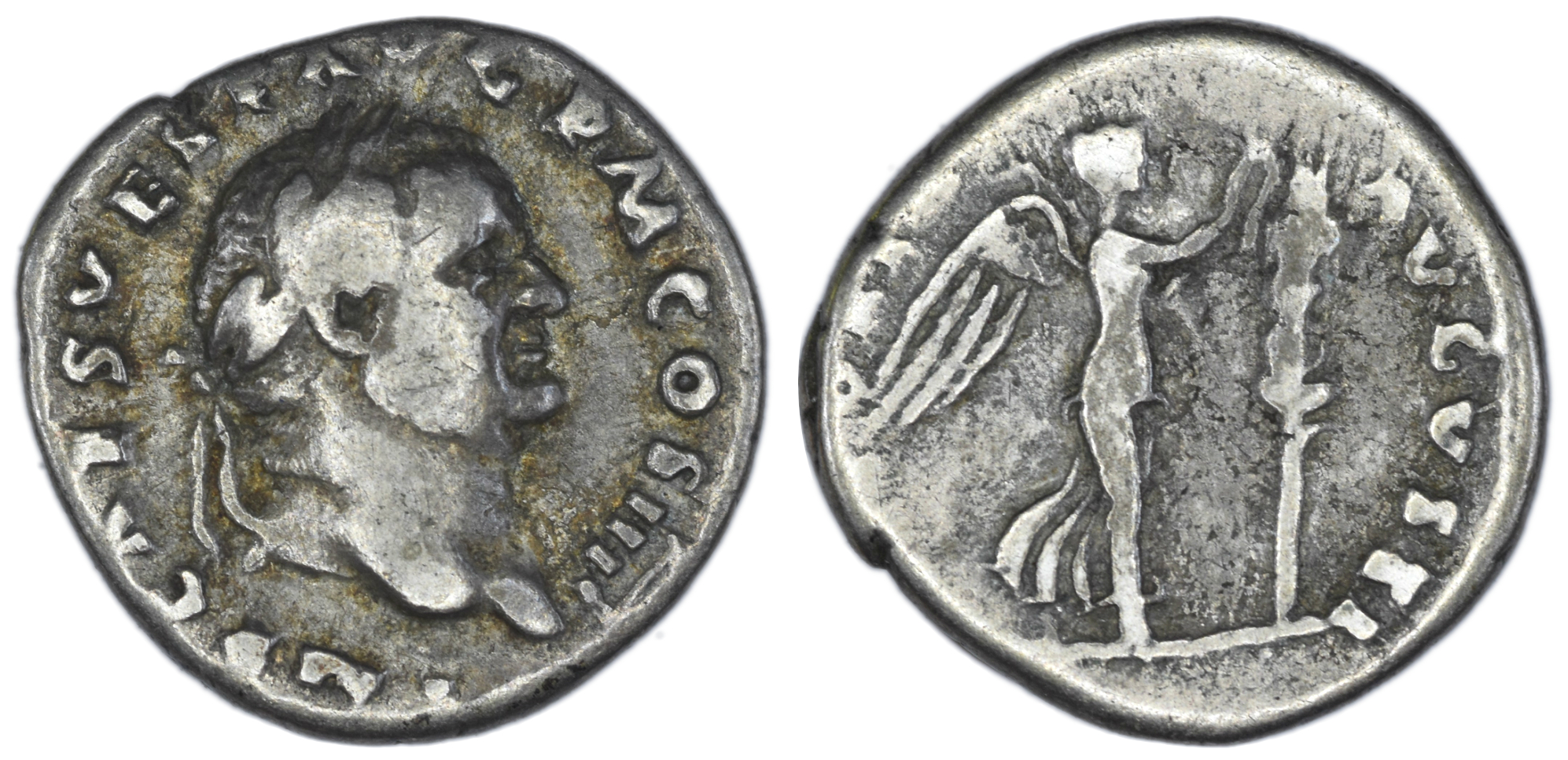
Reverse: Victory advancing right, holding palm frond and placing wreath on signum to right
Die Orientation: -
Weight: -
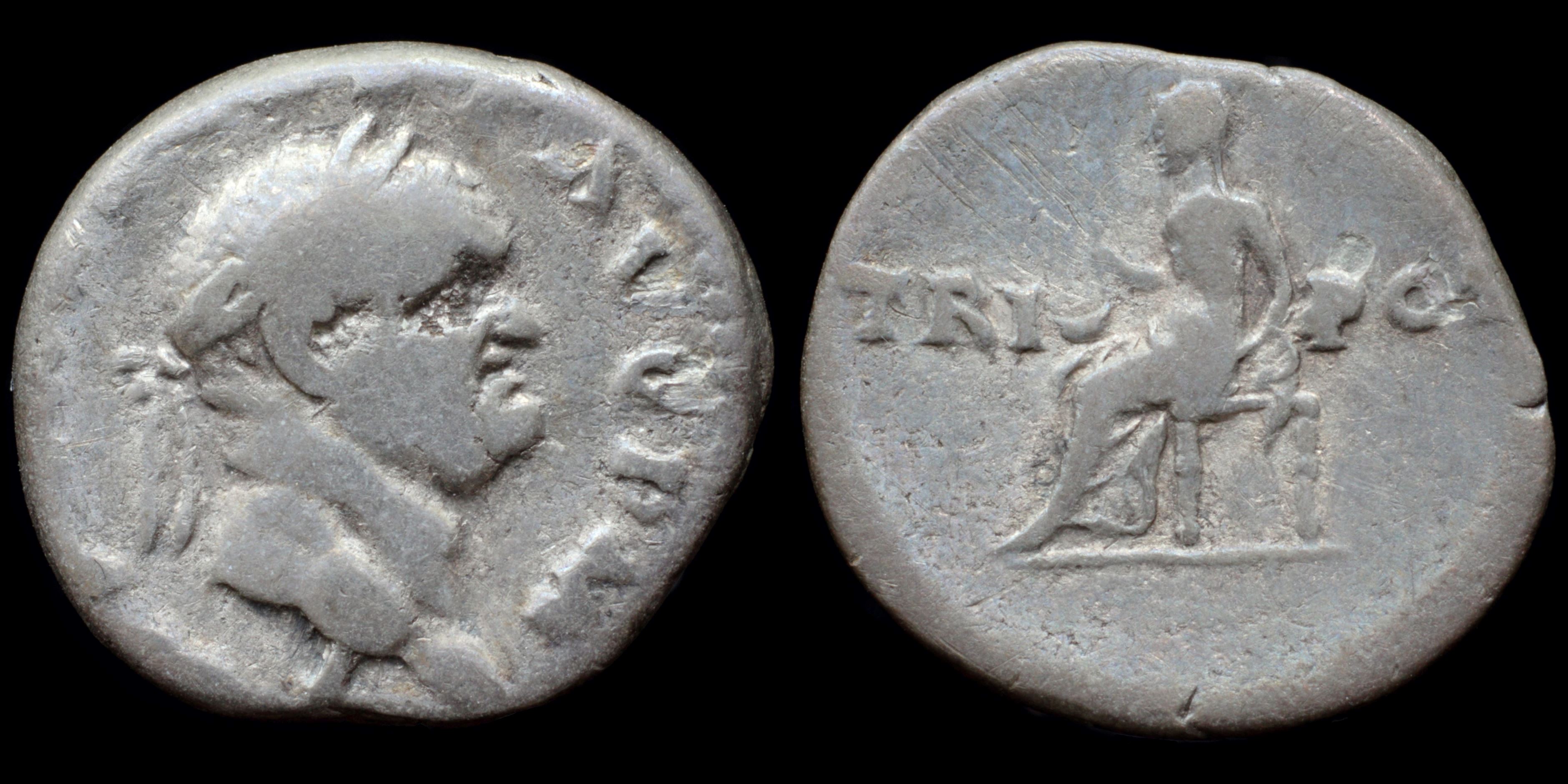
Reverse: Vesta seated left, holding simpulum; TRI__POT
Die Orientation: -
Weight: 2.69 g
(3).jpg)
Reverse: PON MAX TR P COS V, winged caduceus
Die Orientation: 6 H
Weight: 3.04 g
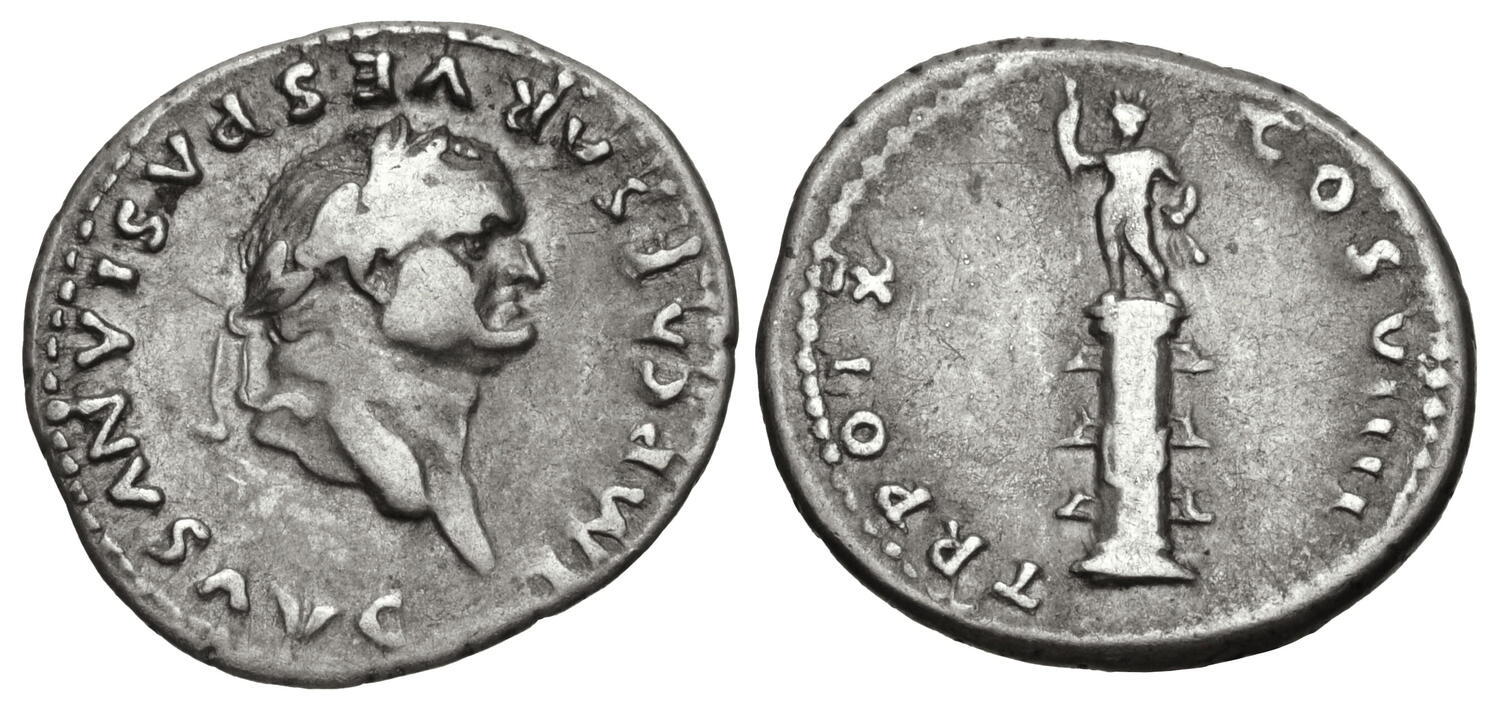
Reverse: Statue of radiate male figure, holding spear and parazonium, standing facing on rostral column
Die Orientation: 6 H
Weight: 3.21 g
Toned, a few shallow marks under tone, deposit on obverse. Near VF. From the BLS Collection.
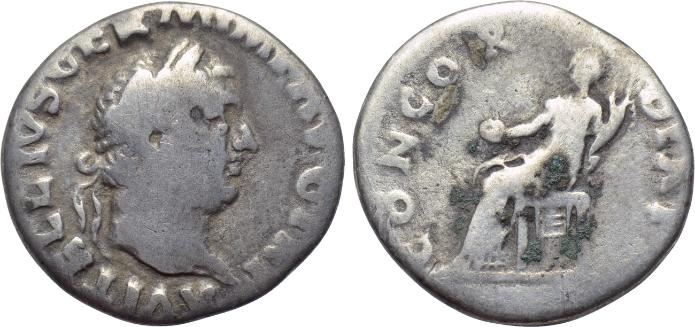
Reverse: CONCORDIA P R, Concordia seated left, holding patera and cornucopia
Die Orientation: 12 H
Weight: 2.91 g
Ex Pecunem.com auction lot 37-640 (Gitbud & Naumann)
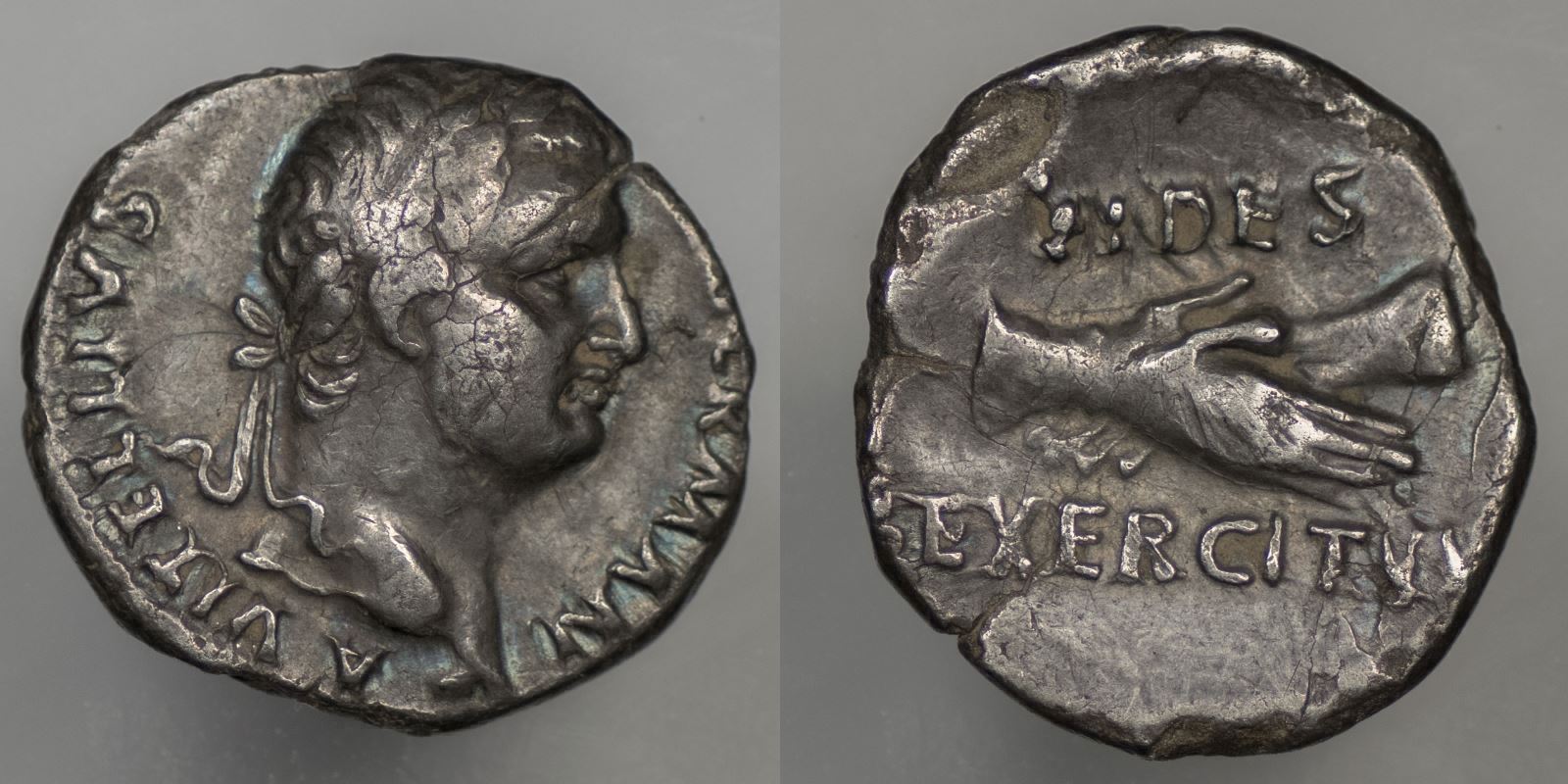
Reverse: FIDES EXERCITVVM, Inscription in two lines with clasped hands between
Die Orientation: 3 H
Weight: 3.22 g
.jpg)
Reverse: CONCORDIA PR, Concordia seated left, holding patera and cornucopiae
Die Orientation: 5 H
Weight: 2.72 g
(3).jpg)
Reverse: VICTORIA AVGVSTI, Victory flying left, holding round shield inscribed S P/Q R
Die Orientation: 7 H
Weight: 3.45 g
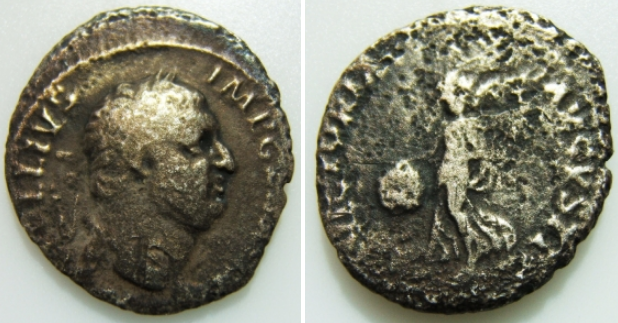
Reverse: VICTORIA AVGVSTI / SPQR - Victory flying left, holding shield inscribed SPQR.
Die Orientation: 5 H
Weight: 2.82 g
